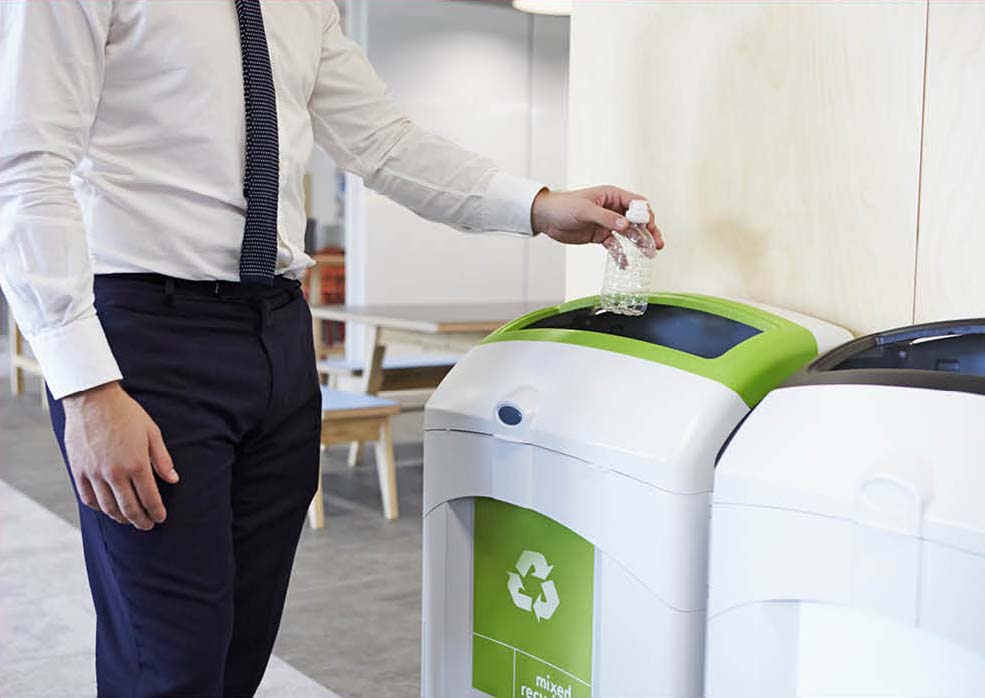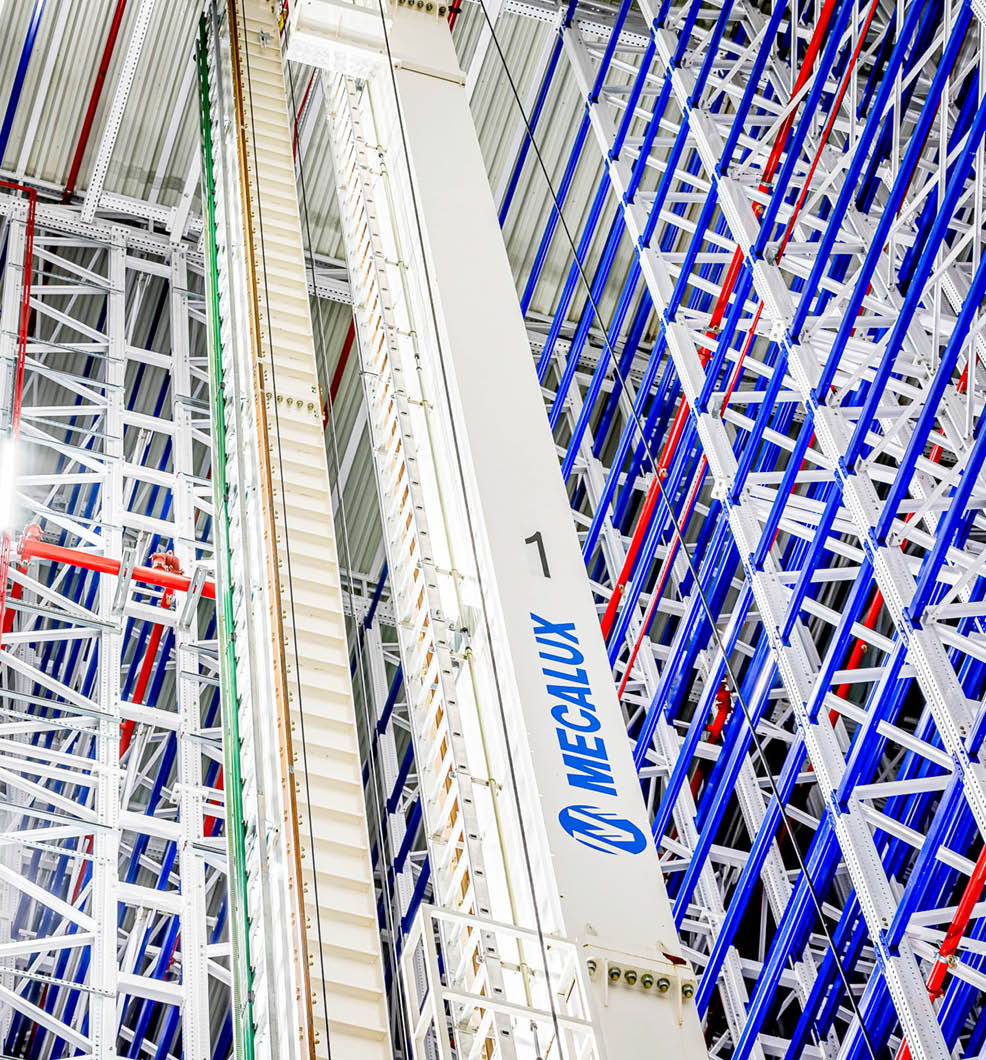United States
Securities and Exchange Commission
Washington, D.C. 20549
Form 20-F
ANNUAL REPORT PURSUANT TO SECTION 13 OR 15(d)
OF THE SECURITIES EXCHANGE ACT OF 1934
for the fiscal year ended December 31 , 2023
Commission file number 001-33463
(Exact Name of Registrant as Specified in Its Charter)
The Netherlands
(Jurisdiction of incorporation or organization)
(Address of principal executive offices)
Telephone: +1 480 235 0934 E-mail: skip.miller@asml.com
(Name, Telephone, E-mail, and / or Facsimile number and Address of Company Contact Person)
Securities registered or to be registered pursuant to Section 12(b) of the Act:
Title of each class Trading Symbol Name of each exchange on which registered
(nominal value €0.09 per share)
Securities registered or to be registered pursuant to Section 12(g) of the Act:
None
Securities for which there is a reporting obligation pursuant to Section 15(d) of the Act:
None
Indicate the number of outstanding shares of each of the issuer’s classes of
capital or common stock as of the close of the period covered by the annual report.
(nominal value €0.09 per share)
Indicate by check mark if the registrant is a well-known seasoned issuer, as defined in Rule 405 of the Securities Act.
If this report is an annual or transition report, indicate by check mark if the registrant
is not required to file reports pursuant to Section 13 or 15(d) of the Securities Exchange Act of 1934.
Yes ☐ No ☒
Indicate by check mark whether the registrant: (1) has filed all reports required to be filed by Section 13 or 15(d) of the
Securities Exchange Act of 1934 during the preceding 12 months (or for such shorter period that the registrant
was required to file such reports), and (2) has been subject to such filing requirements for the past 90 days.
Indicate by check mark whether the registrant has submitted electronically
every Interactive Data File required to be submitted pursuant to Rule 405 of Regulation S-T (§232.405 of this chapter) during the
preceding 12 months (or for such shorter period that the registrant was required to submit such files).
Indicate by check mark whether the registrant is a large accelerated filer, an accelerated filer, a non-accelerated filer, or an emerging growth company.
See definition of "large accelerated filer,” “accelerated filer" and “emerging growth company" in Rule 12b-2 of the Exchange Act.:
If an emerging growth company that prepares its financial statements in accordance with U.S. GAAP, indicate by check mark if the registrant has elected
not to use the extended transition period for complying with any new or revised financial accounting standards provided pursuant to Section 13(a) of the
Exchange Act. ☐
† The term “new or revised financial accounting standard” refers to any update issued by the Financial Accounting Standards Board to its Accounting
Standards Codification after April 5, 2012.
Indicate by check mark whether the registrant has filed a report on and attestation to its management’s assessment of the effectiveness of its internal
control over financial reporting under Section 404(b) of the Sarbanes-Oxley Act (15 U.S.C. 7262(b)) by the registered public accounting firm that prepared
or issued its audit report.
Yes ☒ No ☐
If securities are registered pursuant to Section 12 (b) of the Act, indicate by check mark whether the financial statements of the registrant included in the
filing reflect the correction of an error to previously issued financial statements. ☐
Indicate by check mark whether any of those error corrections are restatements that required a recovery analysis of incentive- based compensation
received by any of the registrant’s executive officers during the relevant recovery period pursuant to §240.10D-1(b). ☐
Indicate by check mark which basis of accounting the registrant has used to prepare
the financial statements included in this filing:
International Accounting Standards Board ☐ Other ☐
If "Other" has been checked in response to the previous question, indicate by check mark
which financial statement item the registrant has elected to follow.
Item 17 ☐ Item 18 ☐
If this is an annual report, indicate by check mark whether the registrant is a
shell company (as defined in Rule 12b-2 of the Exchange Act)
Yes ☐ No ☒
Name and address of person authorized to receive notices and communications from the Securities and Exchange Commission:
James A. McDonald
Skadden, Arps, Slate, Meagher & Flom (UK) LLP
22 Bishopsgate, London, England EC2N 4BQ

We are over 42,400 individuals – thinkers, innovators, problem solvers, planners, movers and makers. | |
As a team, working together with our partners and customers, we help feed the world’s ever-growing demand for faster and more efficient microchips. | |
We create impact by pushing technology to new limits, unlocking the potential of society and enabling people to tackle some of humanity’s biggest challenges. | |
Together we create impact. |
ASML ANNUAL REPORT 2023 | SMALL PATTERNS. BIG IMPACT. | STRATEGIC REPORT | CORPORATE GOVERNANCE | FINANCIALS | 2 |

Together we create impact | ||||
Throughout this year's report we feature ASML colleagues and look at the impact they are having on ASML and society. | ||||
Delivering for our customers | ||||
Embracing change, driving innovation | ||||
A sustainability mindset | ||||
Making a difference | ||||
Helping our teams thrive | ||||
Working together, growing together | ||||
Impact through collaboration | ||||
View our Highlights online > | ||||
Our 2023 online report highlights key information from this pdf with additional links to relevant information on our corporate website. | ||||
Risk | |
How we manage risk | |
Risk factors | |
Q&A with the CBO | |
 | |
Environmental, social and governance | |
Our material ESG sustainability topics | |
Contributing to the UN Sustainable Development Goals | |
Environmental | |
Energy efficiency and climate action | |
Circular economy | |
Water management | |
Social | |
Attractive workplace for all | |
Responsible supply chain | |
Innovation ecosystem | |
Valued partner in our communities | |
Governance | |
ESG integrated governance | |
Transparent reporting |
Corporate Governance | |
Board of Management | |
Supervisory Board | |
Other Board-related matters | |
AGM and share capital | |
Financial reporting and audit | |
Compliance with Corporate Governance requirements | |
Supervisory Board Report | |
Message from the Chair of the Supervisory Board | |
Supervisory Board focus in 2023 | |
Meetings and attendance | |
Supervisory Board committees | |
Financial statements and Profit Allocation | |
Remuneration Report | |
Message from the Chair of the Remuneration Committee | |
Remuneration at a glance | |
Remuneration Committee | |
Board of Management remuneration | |
Supervisory Board remuneration |
Consolidated Financial Statements | |
Report of Independent Registered Public Accounting Firm | |
Consolidated Statements of Operations | |
Consolidated Statements of Comprehensive Income | |
Consolidated Balance Sheets | |
Consolidated Statements of Shareholders’ Equity | |
Consolidated Statements of Cash Flows | |
Notes to the Consolidated Financial Statements | |
Non-financial Statements | |
Assurance Report of the Independent Auditor | |
About the non-financial information | |
Non-financial indicators | |
Other appendices | |
Definitions | |
Exhibit index |
ASML ANNUAL REPORT 2023 | CONTENTS | STRATEGIC REPORT | CORPORATE GOVERNANCE | FINANCIALS | 3 | |
Contents | ||||||
STRATEGIC REPORT | CORPORATE GOVERNANCE | FINANCIALS & NON-FINANCIALS |
A definition or explanation of abbreviations, technical terms and other terms used throughout this Annual Report can be found in the Definitions section. In some cases, numbers have been rounded for readers’ convenience. This report comprises regulated information within the meaning of articles 1:1 and 5:25c of the Dutch Financial Markets Supervision Act (Wet op het Financieel Toezicht). | In this report the name ‘ASML’ is sometimes used for convenience in contexts where reference is made to ASML Holding NV and/or any of its subsidiaries, as the context may require. References to our website and/or video presentations in this Annual Report are for reference only and none nor any portion thereof are incorporated by reference in this report. © 2024, ASML Holding NV All Rights Reserved. | |||
This Annual Report contains statements
relating to our business, expected results,
business and industry trends and other
matters that are “forward-looking” within the
meaning of the Private Securities Litigation
Reform Act of 1995.You can generally
identify these statements by the use of words
like “may”, “will”, “opportunity”, “potential”,
“could”, “should”, “project”, “believe”,
“anticipate”, “expect”, “plan”, “estimate”,
“forecast”, “model”, “aim”, “seek”, “intend”,
“continue”, “target”, “future”, “progress”,
“goal” and variations of these words or
comparable words. They appear in a number
of places throughout this Annual Report and
include statements with respect to expected
trends, plans, expectations, strategies,
priorities, goals, outlook, expected financial
results for Q1 2024, including expected
sales, gross margin, R&D costs and SG&A
costs, expected results for full year 2024,
including expectations with respect to
revenue, gross margin and estimated
annualized effective tax rate, expectations
with respect to sales by market segment and
EUV, non-EUV and IBM sales and expected
drivers thereof, and other full year 2024
expectations and outlook, expectations with
respect to revenue growth in 2025 and other
statements with respect to outlook for 2024
and beyond and expected drivers thereof
and other statements under “Long-term
growth opportunities”, bookings, backlog,
expected capital expenditures, R&D
spending targets, statements made at our
2022 Investor Day, including revenue and
gross margin opportunity, model and
potential for 2025 and 2030, expected
business and industry trends and outlook,
including expected semiconductor industry
trends and trends in markets served by our
customers, business environment trends,
including expected demand, utilization,
inventory levels, expected recovery in the
semiconductor industry and expected timing
thereof, expected growth in semiconductor
end markets and market opportunity for
2025 and 2030 and key drivers and global
trends expected to fuel semiconductor
growth in the longer term, plans to increase
global semiconductor capacity and expected
growth in semiconductor ecosystem,
statements with respect to Moore’s Law and
continuation of shrink, expected trends in
customer demand, export control policy and
regulations and expected impact on us, our
plans to increase capacity, and expected or
planned production capacity, expected
timing of shipments, assumptions and
expectations with respect to fast shipments,
expectations with respect to systems being
operational in customer factories and high-
volume production of High NA systems,
product roadmaps including EUV goals and
roadmaps, customer roadmaps, expected
productivity and other attributes and benefits
of our tools, expected growth opportunities
in holistic lithography, our ESG and
sustainability strategy, plans, commitments
and targets, including emissions and waste
reduction commitments and targets,
recycling and refurbishment initiatives,
energy-saving strategies and targets,
including plans and targets to achieve net
zero carbon emissions and target dates to
achieve net zero emissions, potential for
semiconductors to reduce CO2 emissions,
plan for our systems to use less energy and
our energy savings plans, diversity and other
ESG targets and commitments, cash return
and dividend policy and statements about
our share buyback program and our
proposed dividend for 2023, and other non-
historical statements. These forward-looking
statements are not historical facts, but rather
are based on current expectations,
estimates, assumptions and projections
about business and future financial results
and readers should not place undue reliance
on them. Forward-looking statements do not
guarantee future performance, and actual
results may differ materially from projected
results as a result of certain risks and
uncertainties. These risks and uncertainties
include, without limitation, those described
under the section entitled “How we manage
risk – Risk factors”. These forward-looking
statements are made only as of the date of
this Annual Report. We do not undertake to
update or revise the forward-looking
statements, whether as a result of new
information, future events or otherwise.

ASML ANNUAL REPORT 2023 | FORWARD-LOOKING STATEMENTS | STRATEGIC REPORT | CORPORATE GOVERNANCE | FINANCIALS | 4 | |
Special note regarding forward-looking statements | ||||||

Dear Stakeholder,
In last year’s message, I wrote that I
expected 2023 to yet again see us break
records – and ASML's performance has fully
justified that confidence. We have grown
sales by 30% to €27.6 billion and lifted our
gross margin to 51.3%. We returned
€3.3 billion to shareholders through a
combination of dividends and share
buybacks. At the end of 2023, we finished
with a backlog of €39.0 billion and we
anticipate that with our sustained focus on
technology innovation, we will continue to
break new ground – not only in terms of
technological development, but also in how
we manage the environmental impact of our
products and services.
This stellar performance has been achieved
against a backdrop of what turned out to be
a real downturn in the semiconductor
industry instead of the mild and short-term
correction that many had forecast. In
addition, we had to manage uncertainties
created by geopolitical challenges including
the US and Dutch governments' export
control regulations, and global macro
concerns around inflation, rising interest rates
and lower GDP growth in certain economies.
There have also been other uncertainties at
play, driven by the ongoing war in Ukraine as
well as the more recent conflict in the Middle
East. These have inevitably dented
confidence and reduced investment by our
customers.
In 2023, demand for our DUV systems
continued to be strong, particularly in China.
During the previous two years, our Chinese
customers had received significantly fewer
systems than they had ordered, due to
global demand for our systems exceeding
supply. However, the shifts in demand timing
from other customers that we experienced in
2023 meant that we had the opportunity to
backfill these orders for mature and mid-
critical nodes to China, while of course
complying with export regulations.
Executing our business strategy
Our strategic innovation roadmap has
continued to guide us, and, as you can read
in the Q&A with our Chief Technology Officer
further enhancements to our EUV, DUV and
metrology and inspection systems. Our
holistic approach to lithography provides
customers with support and solutions at
every stage of the chipmaking process, from
early design and development to high-
volume production. To mention a highlight: In
2023, we shipped the first modules of the
first High NA EUV EXE:5000 system.
Two further elements of our strategic
progress have been particularly pleasing.
Firstly, we strengthened the resilience of our
supply chain, which had been under
immense pressure, with a significant number
of suppliers experiencing challenges to meet
our increasing expectations. During 2023, we
reshaped our sourcing and procurement
organization under the leadership of Wayne
Allan, a new member of the Board of
Management (BoM). This team is now
working with suppliers to help optimize our
partnerships, so they have the flexibility and
capability to deliver the products and
services we need.
ASML ANNUAL REPORT 2023 | MESSAGE FROM THE CEO | STRATEGIC REPORT | CORPORATE GOVERNANCE | FINANCIALS | 5 | |
Managing the cycle, preparing for greater growth in years to come | ||||||
Despite macroeconomic and geopolitical challenges, ASML has again delivered strong performance. Now, as we see signs of the industry coming out of its cyclical downturn, we are laying plans for further significant growth. | ||||||
Our holistic approach to lithography provides customers with support and solutions at every stage of the chipmaking process.” |
Peter Wennink |
President, Chief Executive Officer and Chair of the Board of Management |

The second area is around customer trust.
Trust is the foundation for our customer
relationships – it means always being reliable,
working at the highest possible level of
efficiency, being transparent about what we are
doing and fairly sharing the risks and rewards.
And while customer trust in general was at a
high level in 2023, we – as always – recognize
that we can do even better. So over the last 12
months we have developed plans for
fundamental reorganization of our customer-
facing roles and responsibilities to prepare for
future growth, and this was implemented from
January 2024.
We expect that the reorganization will help us
cement greater customer trust, which will be
essential in ensuring that we and our customers
reap the rewards of the upturn that we expect
in 2025 and 2026.
ESG sustainability at the heart of our
company
Developed in 2022, our ESG sustainability
strategy took shape in 2023. It is now being
executed across the business, and we have
taken important steps in each of the E
(Environmental), S (Social) and G (Governance)
elements.
The overarching aim of our ESG sustainability
strategy is simple: As we grow our company,
we want to increase our positive impact at the
same time as minimizing our negative impacts
on the environment and people, while doing
business in a responsible way.
The very nature of what we do means we are
already making a contribution to overcoming
the challenges that our world is facing. Without
semiconductors, the changes that society
needs to implement – whether to do with the
energy transition, healthcare, electrification, AI or
many other areas – will not happen.
Our role is to make sure that our customers can
continue to deliver the innovation that is already
transforming the world, and with a reduced CO2
footprint per chip. In our own facilities, we are
reducing energy consumption and increasingly
using renewable energy. Together with our
suppliers and other upstream value chain
partners, we are working to jointly reduce our
carbon footprint in our supply chain. In
addition, we are taking steps to increase the
energy efficiency of our systems at our
customers’ sites – reducing waste intensity,
increasing reuse and repair, supporting our
people and their communities, and promoting
transparency and accountability through good
governance. There is work to do in all those
areas – but we have made excellent progress
and we are committed to playing our full part in
creating a more responsible and sustainable
society. You can read more details in the ESG
sustainability sections of this report.
Our stakeholder model
ASML operates on a stakeholder model.
With every decision we take, the Board of
Management and I, as CEO, aim to balance
the concerns and needs of our five different
stakeholders: Customers, suppliers and
partners, our people, our shareholders and
wider society – for example, the communities
where we operate.
Over the last year, we have used a significant
part of our operational cash flow to support our
customers, extending payment terms to help
them make investments despite their negative
cash flows. This was crucial sustaining their
businesses through difficult times while ensuring
that they have the resources in place to meet
future demand.
Similarly, we encouraged our suppliers to
maintain their investment ambitions through
the downturn, using opportunities such as
our Suppliers’ Day to explain how we
expected our business to accelerate from
2025 onward. It is vital that we retain the
trust of our suppliers.
To retain the trust of our shareholders, our
key focus is to be as transparent as possible
with them about everything to do with ASML
– on export controls, on industry cyclicality,
on how we are going to use our operational
cash flow, on how we are going to pay
dividends and buy back shares, and on how
we are going to help our customers and
suppliers.
As the stories highlighted in this report
demonstrate, our employees – representing
many different nationalities and bringing a
broad range of backgrounds, perspectives
and skills – are key to our success. One of
the reasons why so many talented people
choose ASML as an employer is because we
give them the opportunity to work at the
sharp end of technology and make a real
difference, while also supporting their health
and well-being. We put a lot of effort into
this, providing our employees with
opportunities and the best environments to
develop their talent, to feel respected and to
ASML ANNUAL REPORT 2023 | MESSAGE FROM THE CEO CONTINUED | STRATEGIC REPORT | CORPORATE GOVERNANCE | FINANCIALS | 6 | |
Managing the cycle, preparing for greater growth in years to come (continued) | ||||||
Our task in 2024 is to reflect on our organization and capabilities and prepare for the rapid growth that is sure to come.” |
Peter Wennink |
President, Chief Executive Officer and Chair of the Board of Management |
thrive. We need our people to trust us, and
the fact that our engagement score has
improved again shows we are on the right
track.
Regarding society, we strive to respect a
range of different and sometimes conflicting
interests around our growth trajectory and
the increasing impact of our products and
services on society. We engage extensively
with communities, institutions, special
interest groups and governments at all levels
across the world on topics that are relevant
to our business and its role in society and
that therefore require long-term vision and
support, such as education, infrastructure,
culture and environment.
A year of transition
Our expectation is that our net sales in 2024
will be broadly in line with our net sales in
2023. But above all, this will be a year of
transition – a time to digest the fast growth
we have experienced in recent years and to
prepare for 2025 and 2026, which I believe
will be strong years because of three major
factors.
Firstly, demand for semiconductors is
increasingly generated by secular growth
drivers in end markets, such as the energy
transition, electrification and AI. As the
application space expands, with lithography
playing an ever-greater role in future
technology nodes, demand grows for both
advanced and mature semiconductors.
Secondly, the semiconductor industry is
currently working through the bottom of the
cycle. Historically, the downturns of the last
30-40 years have been for two to three
years, with the present downturn really
beginning in the second half of 2022. Our
customers are still not certain of the shape or
slope of the recovery, but there are some
positive signs in the indicators we have been
monitoring. Industry end-market inventory
levels continue to improve and litho tool
utilization levels are beginning to show
improvement. Our strong order intake in the
fourth quarter clearly supports future
demand.
Lastly, we need to prepare for the significant
number of new semiconductor fabs that are
being built. These fabs are spread
geographically across the globe – they’re
strategically important for our customers and
they’re scheduled to take our tools. It is
essential that we keep our focus on the
future and build capacity to be ready for this
ramp.
The semiconductor industry is expected to
double somewhere in the next decade, as
compared with today. Our task in 2024 is to
reflect on our organization and capabilities
and prepare for the rapid growth that is
expected to come, while managing
increased cost pressures. That means
working on our processes – for example,
ensuring that they are fit for purpose and
have the flexibility to expand rapidly when
and where needed.
And it means taking care of our people,
making sure that they feel fully engaged in
our company. Many thousands of new
employees have joined us in the last few
years, and around 40% of all our colleagues
have been with us for three years or less.
Our values of challenge, collaborate and care
have been instrumental in our success to
date, and they will continue to guide us in the
future. It is vital that all our people embrace
these values.
In 2024, we need to take the opportunity to
create clarity about the many roles and
responsibilities in our diverse, cross-
functional teams, to maintain a safe
environment where people feel connected,
included and respected.
Stakeholder support
We are tremendously proud of what we’ve
achieved to date and extremely excited for
the years ahead. But none of this would be
possible without the support of our
stakeholders. ASML has succeeded and will
continue to thrive because of the patience
and success of our customers, the
collaboration of our suppliers and partners,
and the understanding of shareholders and
governments. Most of all, we rely on our
people – and I thank them for all their
expertise and hard work over the last year.
This is my final Annual Report message as
ASML's CEO, following the Supervisory
Board’s announcement that Christophe
Fouquet will succeed me as President and
Chief Executive Officer at the 2024 AGM.
Christophe has been with ASML for 15
years, with a major focus on technology,
products and customers, and I am delighted
that we have been able to secure such a
talented, experienced individual to guide the
business through the coming years.
Christophe and I share the ‘ASML DNA’ of
collaboration and partnership, and we will
work closely together to ensure that he has
the best possible start in his new position.
I wish Christophe and all our stakeholders –
and particularly our fantastic people – every
success as, together, you embark on the
next phase of this great company’s journey.
Peter Wennink
President, Chief Executive Officer and
Chair of the Board of Management
ASML ANNUAL REPORT 2023 | MESSAGE FROM THE CEO CONTINUED | STRATEGIC REPORT | CORPORATE GOVERNANCE | FINANCIALS | 7 | |
Managing the cycle, preparing for greater growth in years to come (continued) | ||||||
 |
Our values of challenge, collaborate and care have been instrumental in our success.” |
Peter Wennink |
President, Chief Executive Officer and Chair of the Board of Management |
Key facts in 2023 | ||||
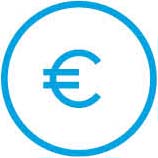 |  | |||
€27.6bn | 42,416 | |||
Total net sales | Employees (FTE) | |||
€23.2bn Asia €3.2bn US €1.2bn EMEA | 19,805 in Operations 15,604 in R&D 7,007 in Sales and Support | |||
 | 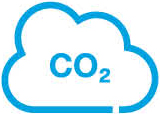 | |||
€4.0bn | 35.1 kt | |||
R&D investments | Scope 1 and 2 CO2e emissions | |||
We innovate across our entire product portfolio through strong investment in R&D | ||||
(2025 target net zero) | ||||
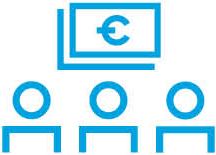 | 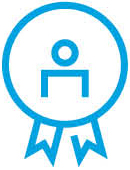 | |||
€15.5bn | 80.3% | |||
Total sourcing spend1 | Employee engagement score against benchmark | |||
(Netherlands: 40% | EMEA (excl. NL): 40% North America: 13% | Asia: 7%) | ||||
1.Reported for non-financial (GRI) reporting purposes | ||||
(2025 target -2% vs. top 25% performing companies) | ||||
What we do | ||||
At ASML, we design and integrate lithography systems with computational tools, metrology and inspection systems, and process control software solutions. This holistic approach to lithography provides chipmakers with support and solutions at every stage of the chipmaking process, from early design and development to high-volume production. It enables chipmakers to optimize the lithography system setup and process window for high-volume manufacturing, helping them achieve their highest yields and best chip performance. | ||||
Our key products and services | ||||
•Lithography systems •Metrology and inspection systems •Computational lithography •Supporting our customers | •System and process control software •Managing our installed base systems •Refurbished systems | |||
Read more in Our products and services on | ||||
Where we operate – more than 60 locations across 3 continents | ||||||
 | Asia | |||||
China | ||||||
Japan | ||||||
Malaysia | ||||||
Singapore | ||||||
South Korea | ||||||
Taiwan | ||||||
 | North America | |||||
Arizona | New Mexico | |||||
California | New York | |||||
Colorado | Oregon | |||||
Connecticut | Texas | |||||
Idaho | Utah | |||||
Massachusetts | Virginia | |||||
 | EMEA | |||||
Belgium | ||||||
France | ||||||
Germany | ||||||
Ireland | ||||||
Israel | ||||||
Italy | ||||||
Netherlands | ||||||
United Kingdom | ||||||
ASML ANNUAL REPORT 2023 | AT A GLANCE | STRATEGIC REPORT | CORPORATE GOVERNANCE | FINANCIALS | 8 | |
We are a global innovator | ||||||
As one of the leading innovators in the semiconductor industry, we’ve been helping chipmakers push technology to new limits and unlock the potential of society since 1984. Together, our hardware, software and services provide a holistic approach to mass producing the patterns of microchips. | ||||||
Berliner Glas (ASML Berlin GmbH) is reflected as part of our business throughout this report, with the exception of non-financial reporting. We are preparing to integrate this in 2024 in line with Corporate Sustainability Reporting Directive (CSRD) requirements. | ||||||

Why we exist – our purpose | ||
Unlocking the potential of people and society by pushing technology to new limits. | ||
What we try to achieve – our vision | ||
We enable ground-breaking technology to solve some of humanity’s toughest challenges. | ||
What we uniquely do – our mission | ||
Together with our partners, we provide leading patterning solutions that drive the advancement of microchips. | ||
You can see the impact of our collaboration in the commercial results of ASML and our customers.” | |
George Tao | |
Director Customer Service Applications | |
Managing expansion in high-stress situations means focusing on your people and their well-being.” | ||
Mark Bergkotte | ||
Director Logistics Operations | ||
The interaction among supply chain partners helps us all improve to support faster growth.” | |
Manon Hendriks | |
Senior Director Sourcing & Procurement | |
ASML ANNUAL REPORT 2023 | AT A GLANCE CONTINUED | STRATEGIC REPORT | CORPORATE GOVERNANCE | FINANCIALS | 9 | |
We work together to help society progress | ||||||

We challenge | ||
We challenge boundaries and question the status quo to keep pushing technology forward. | ||
We collaborate | ||
By tapping into the collective potential of our ecosystem of customers, partners and stakeholders, we can create better solutions. | ||
We care | ||
We act with integrity and respect, and provide a safe, inclusive and trusting environment where our people can learn and grow. | ||
Sustainability is a design challenge that must be solved in parallel with system cost and performance.” | |
Ton van der Net | |
Principal Architect D&E | |
ASML’s focus on technology and its supportive culture mean you can go wherever your talent and ambition take you.” | ||
Anya Kish | ||
Program Director EUV Source | ||
My new role will help us safeguard our innovation power as we evolve to support future growth.” | |
Ron Kool | |
Head of Business Performance Improvement | |
Every few months, I have been given a new challenge to extend myself.” | |
Manisha Devi | |
Solution Test Architect | |
ASML ANNUAL REPORT 2023 | AT A GLANCE CONTINUED | STRATEGIC REPORT | CORPORATE GOVERNANCE | FINANCIALS | 10 | |
We live by our values to drive success | ||||||
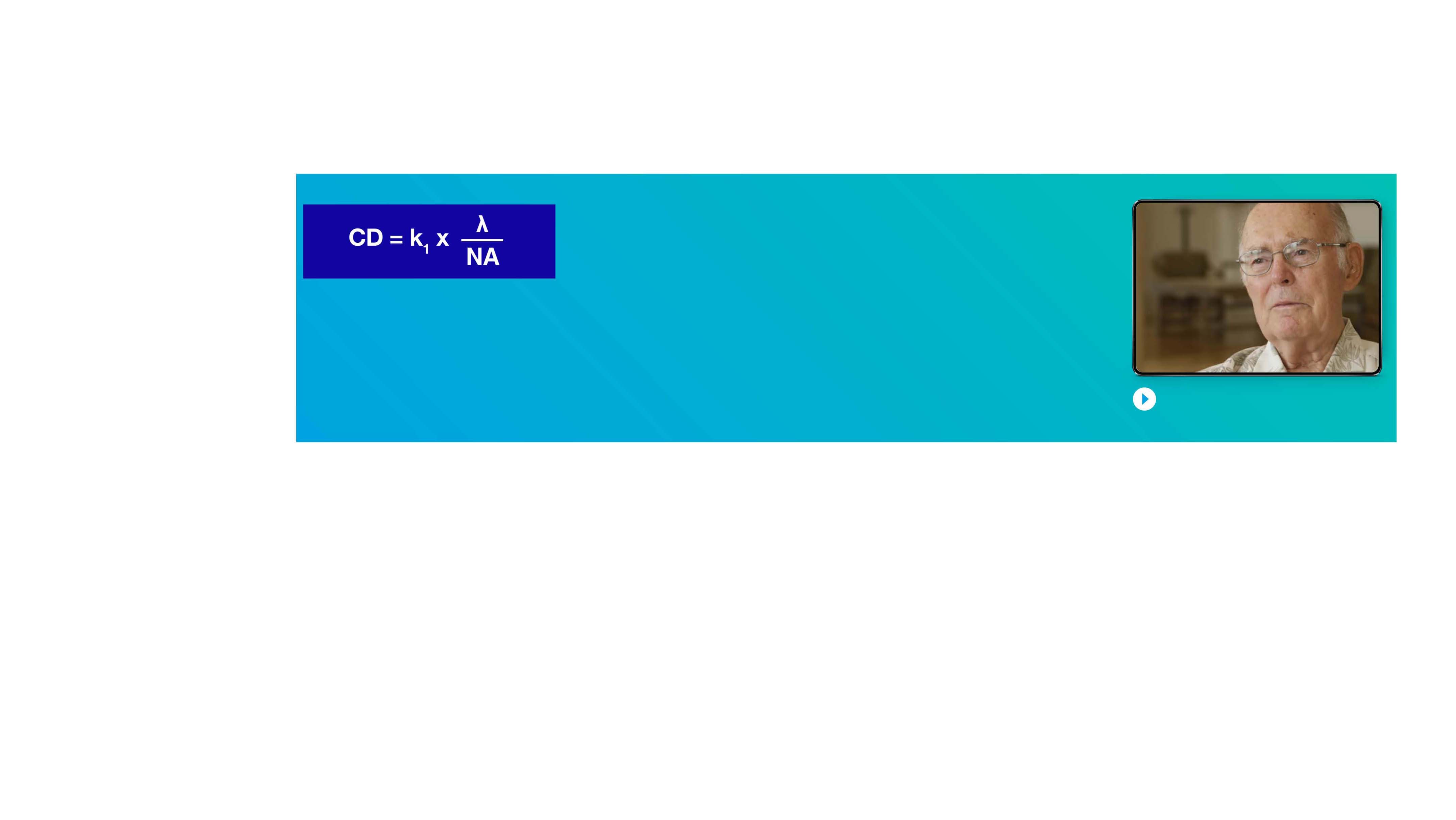
Lithography technology is fundamental to the
mass production of microchips. Our holistic
approach is based on integrating our
lithography systems with a set of products
that optimize production and enable
affordable shrink.
The semiconductor industry is driven by
affordable shrink – the ability to make
smaller, more energy-efficient transistors at
the right price. Reducing the size of
transistors means that more can be packed
into a given area, resulting in increased
functionality and improved performance.
Lithography is a key driver for shrink,
enabling what is known as geometric scaling.
This determines the smallest feature sizes
that can be printed on a chip, and therefore
the number of transistors and the
performance. To achieve dimensional
scaling, lithography has to use shorter
wavelengths of light and larger numerical
apertures, as well as other advanced
techniques such as immersion lithography
and multiple patterning.
Our innovations in lithography have enabled
the continuation of Moore’s Law1 – the
observation that the number of transistors in
an integrated circuit (IC) doubles about every
two years – for more than 30 years.
1.Dr. Gordon Moore, co-founder of chipmaker Intel, and
the man who created Moore’s Law, passed away
peacefully at his home in Hawaii on Friday, March 24,
2023. He was 94 years old.
The Rayleigh criterion that drives Moore’s Law | ||||||
Over the years, ASML has made several wavelength steps, and our DUV lithography systems range from 365 nm (i-line), through 248 nm (KrF) to 193 nm (ArF). With our extreme ultraviolet (EUV) systems, we provide highest-resolution lithography in high-volume manufacturing as these systems make a major step in wavelength – with EUV tin plasma, we generate EUV light which has a wavelength of just 13.5 nm. •NA is the numerical aperture, indicating the entrance angle of the light – with larger NA lenses/mirrors, smaller structures can be printed. Besides larger lenses, ASML has increased the NA of our ArF systems by maintaining a thin film of water between the last lens element and the wafer in our so-called immersion systems, using the breaking index of the water to increase the NA. | After the wavelength step to EUV, we are developing the next-generation EUV systems, called EUV 0.55 NA (High NA), where we push the numerical aperture from 0.33 to 0.55. •k1 is a factor relating to optical and process optimizations. Together with our computational lithography and patterning control software solutions, we provide the control loops for our customers to optimize their mask designs and illumination conditions. | |||||
•CD is the critical dimension, a measure of how small the smallest structures are that the lithography system can print. •Lambda ⁁ is the wavelength of the light source used, and the smaller the wavelength, the smaller the structures that can be printed. Our deep ultraviolet (DUV) lithography systems, known as the industry workhorse, dive deep into the UV light spectrum to print the tiny features that form the basis of a microchip. | Watch Gordon Moore video | |||||
Lithography explained
Microchips are made by building up complex
patterns of transistors, layer by layer, on a
silicon wafer. Our lithography systems print
those patterns by projecting ultraviolet light
on a blueprint of the pattern (known as a
‘reticle’ or ‘mask’) and shrinking and focusing
that light onto a photosensitive silicon wafer.
This results in a so-called die, a rectangular
pattern on a wafer containing circuitry to
perform a specific function.
ASML's technology is pivotal to
semiconductor production because
lithography is the only stage where the wafer
is processed die by die.
Lithography therefore has a greater impact
on performance – including the number of
good wafers per day, or yield – than any
other stage in the chip manufacturing
process.
The lithography process is repeated to build
up the layers of a chip. Modern chips can
have more than 100 layers, all of which need
to be aligned on top of each other with
nanometer precision. In general, our EUV
systems are used to print the most intricate
layers on a chip first, with the rest of the
layers then printed using various DUV
systems.
Our holistic approach
to lithography
As patterning gets smaller, our lithography
systems become increasingly complex. And as
chipmakers print ever-smaller patterns, they
face unprecedented engineering, material,
structural and manufacturing challenges. Many
sources of variation and error can hinder the
lithography process, and they must be
controlled to ensure that chips are produced
with the required precision, in high volumes, as
fast as possible and at the lowest cost.
To help address these challenges, we provide
customers with a holistic, integrated approach
to lithography that enables them to optimize the
system setup and process window for high-
volume manufacturing, helping them achieve
their highest yields and best chip performance.
 | ||
What is a process window? | ||
Lithography and all other stages in the microchip manufacturing process must be closely aligned for an optimal result. The process window is the collection of acceptable variations of process parameters that allow a microchip to be manufactured and to operate under desired specifications. By incorporating computational lithography, metrology and inspection, ASML’s holistic lithography portfolio enables customers to maximize the process window, keeping lithography systems stable in a high-volume manufacturing setting, which leads to a higher yield with more good wafers per day. |
ASML ANNUAL REPORT 2023 | OUR UNIQUE OFFER | STRATEGIC REPORT | CORPORATE GOVERNANCE | FINANCIALS | 11 | |
Holistic lithography | ||||||
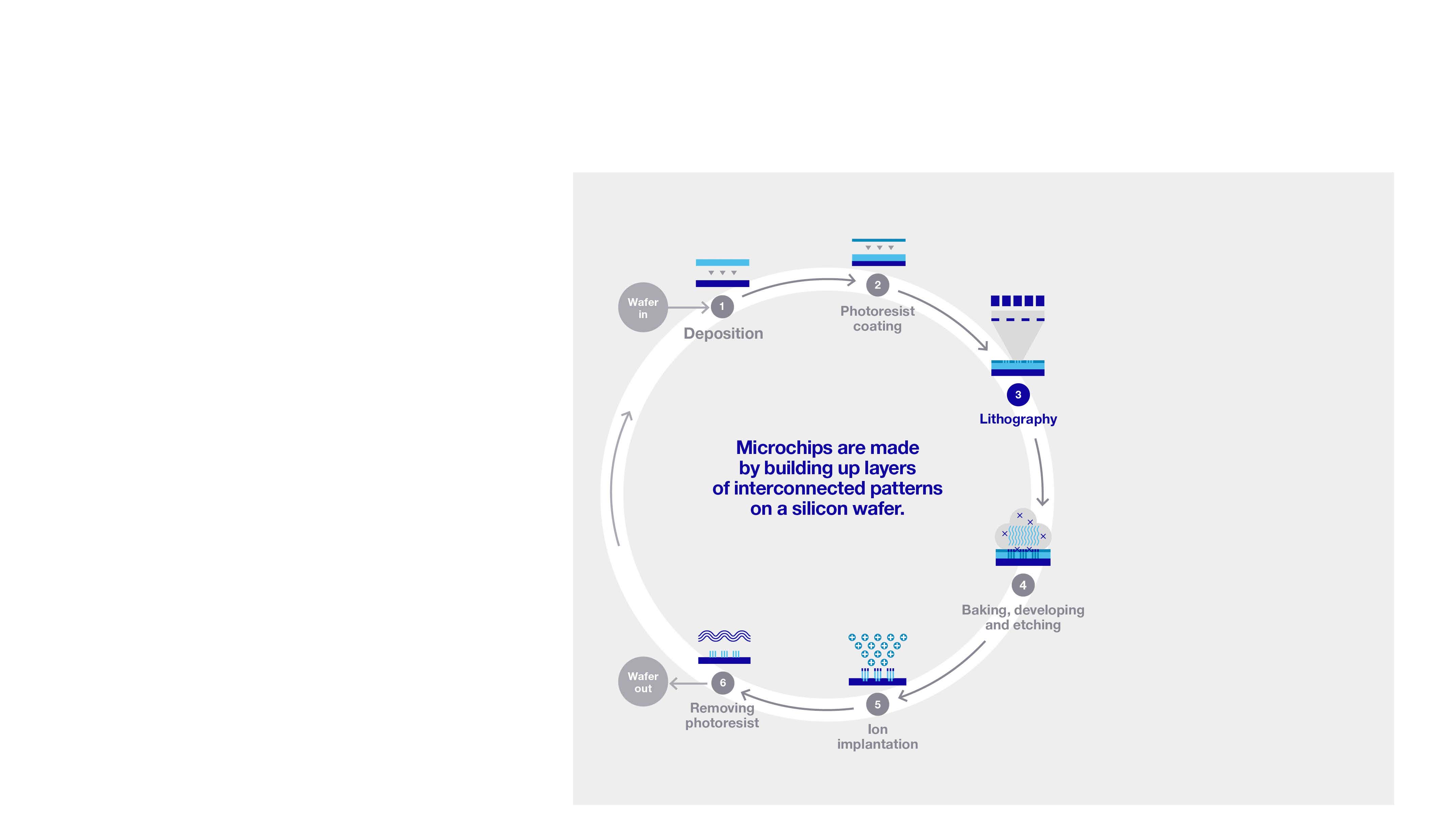
Our holistic approach integrates lithography
systems with computational tools, metrology
and inspection systems, and process control
software solutions. This enables us to
provide chipmakers with support and
solutions at every stage of the chipmaking
process, from early design and development
to high-volume production.
By bringing together the different elements of
our holistic lithography portfolio, we help our
customers understand and correct for
potential issues that could cause variations
or errors.
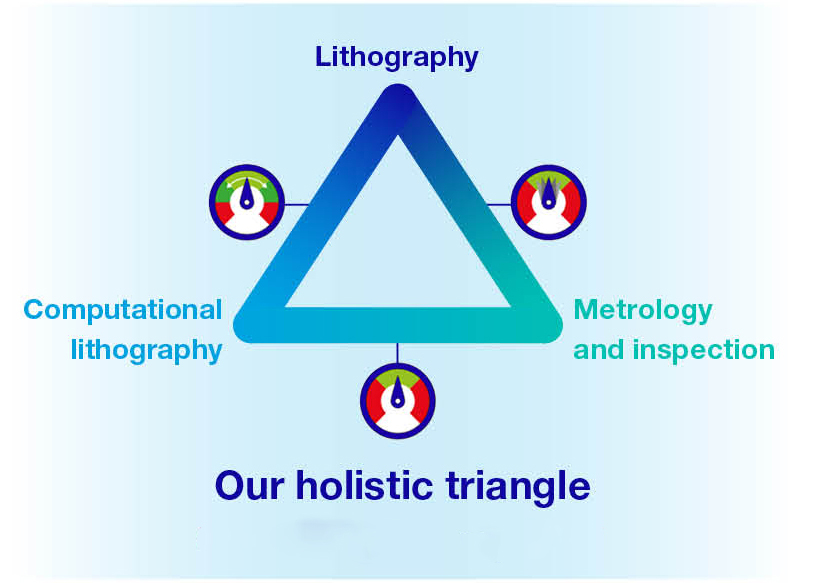 | ||||
This helps minimize any deviation between
the intended and printed features of a
microchip layout, thereby optimizing the
lithography system’s performance, stability
and yield – including maximizing the number
of good wafers per day – and enabling ever-
smaller chip features.
 | ||
What is edge placement error (EPE)? | ||
Creating a microchip involves the patterning of tiny features in precise locations. Edge placement error (EPE) is the difference between the intended and the printed features of the layout of a microchip. For example, a feature could be a line, which has right and left edges. On a microchip, this line and its edges must be precise and placed in exact locations. Any deviation, no matter how slight, can result in misalignment, or an EPE. If one or more EPE issues crop up in the microchip production flow, the device is subject to shorts or poor yields, which could cause the entire chip to fail. | ||
ASML plays an integral role in the microchip manufacturing process | |
1Deposition – The first step is typically
to deposit different materials – such as
metals/conductors, insulation films and
semiconductors – onto a silicon wafer.
2Photoresist coating – The wafer is
then coated with a light-sensitive layer
called a photoresist.
3Lithography – Light is projected onto
the wafer through a reticle. Optics shrink
and focus the reticle pattern. This
pattern is then printed onto the wafer
when the resist layer is exposed to light.
4Baking, developing and etching –
The wafer is then baked and developed
to make the pattern permanent, with a
pattern of open spaces. Reactive gases are
used to etch away material from the open
spaces, leaving a 3D version of the pattern.
5Ion implantation – The wafer may be
bombarded with positive or negative ions
to tune the semiconductor properties.
6Removing photoresist – After the layer
is etched or ionized, the remainder of the
photoresist coating that was protecting
areas not to be etched is removed.
The entire microchip manufacturing
process – from start to tested and
packaged device, ready for shipment –
can take between 18 and 26 weeks,
depending on the complexity of the
microchip.
ASML ANNUAL REPORT 2023 | OUR UNIQUE OFFER CONTINUED | STRATEGIC REPORT | CORPORATE GOVERNANCE | FINANCIALS | 12 | |
Holistic lithography (continued) | ||||||
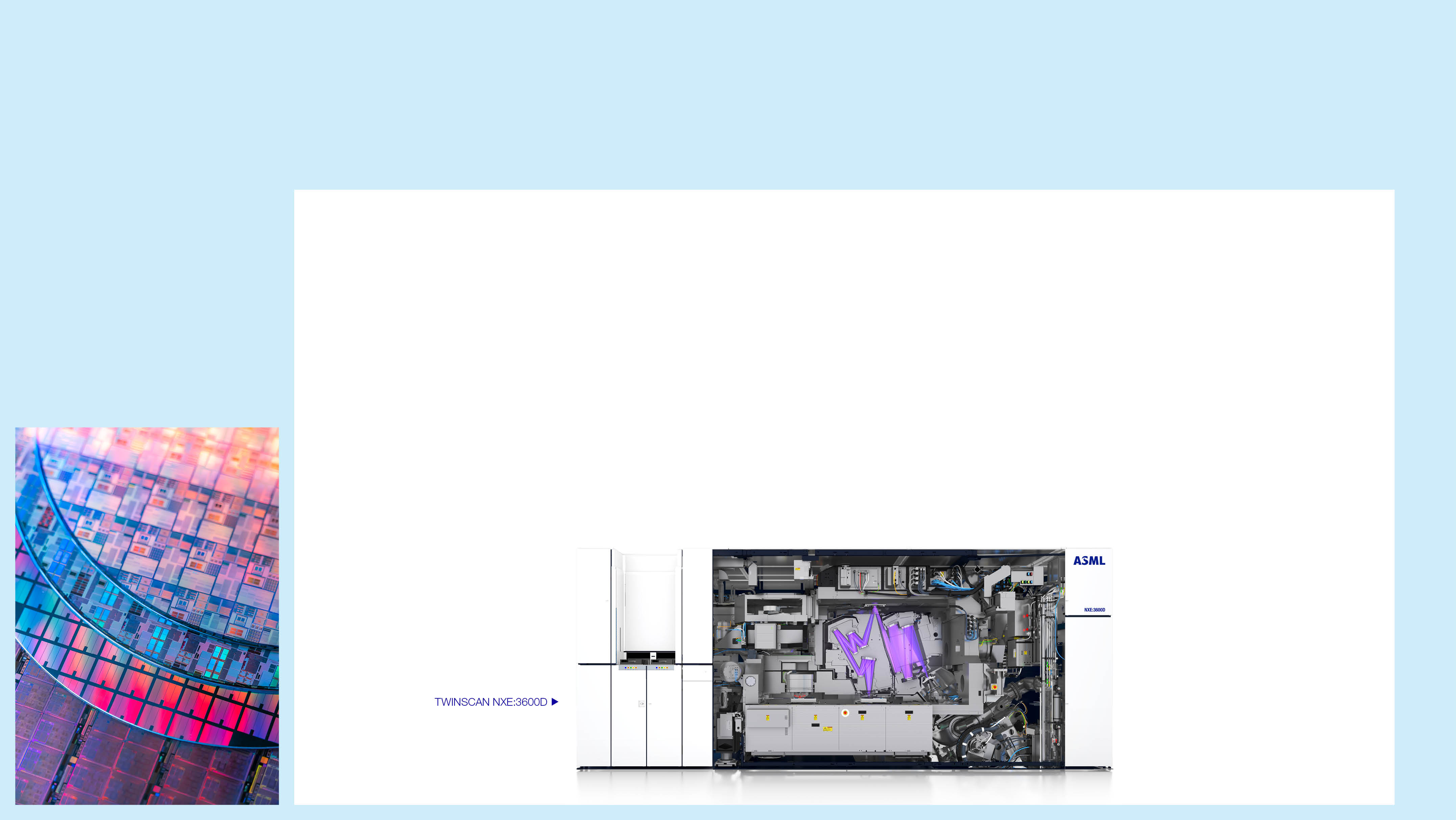
Our holistic approach to
lithography integrates a set of
products – enabling chipmakers
to develop, optimize and control
the semiconductor production
process.
Extreme ultraviolet (EUV) lithography systems |
Using extreme ultraviolet (EUV) light at a
wavelength of 13.5 nm, our EUV
lithography systems make it possible to
print the smallest features on microchips at
the highest density. EUV systems are used
for the most intricate, critical layers on the
most advanced microchips. ASML is
currently the world’s only manufacturer of
EUV lithography systems.
EUV 0.33 NA (NXE platform)
EUV lithography uses light with a
wavelength of just 13.5 nm. This enables
EUV systems to print the finest lines and
allows our customers to use them in a
more simplified process compared to
complex multiple-patterning strategies
using DUV immersion systems. Our NXE
EUV platform, with an NA of 0.33, was first
introduced to customers in 2013 and is
now widely adopted in high-volume
manufacturing by our major customers.
The platform is now in its seventh
generation and we continue to industrialize
the technology, innovating further
developments to create value
for customers.
In June 2023, we celebrated the 100th
shipment of the TWINSCAN NXE:3600D,
our latest-generation EUV 0.33 NA
lithography system. It combines the
highest resolution with 15-20% increased
productivity and around 30% better overlay
compared with its predecessor, the
TWINSCAN NXE:3400C, while also
improving system availability.
Our EUV product roadmap is intended to
drive affordable scaling to 2030 and
beyond. Our EUV NXE platform extends
our customers’ Logic and Memory
roadmaps by delivering improvements in
resolution, productivity and overlay (layer-
to-layer alignment) performance, enabling
year-on-year cost reductions.
EUV 0.55 NA (EXE platform)
We are building the next platform of EUV
lithography systems and we shipped the
first modules intended for R&D purposes in
2023. With a higher NA of 0.55 compared
with the 0.33 NA of our first EUV systems,
these High NA systems are designed to enable
higher-resolution patterning for even
smaller transistor features.
This is an evolutionary step in EUV
technology, introducing a novel optics
design and significantly faster reticle and
wafer stages. In addition, the EUV 0.55 NA
(EXE) platform has been designed to
maximize commonality with the EUV NXE
platform to drive cost reductions, speed up
the development of new solutions and
optimize future reuse.
The enhancements offer considerable
benefits to our customers, enabling
lithography simplification for future nodes,
higher yields and decreased defect density
for both Logic and dynamic random-
access memory (DRAM). EUV 0.55 NA will
help our customers to extend their shrink
roadmap and minimize double or triple
patterning compared with 0.33 NA, leading
to reduced patterning complexity, lower
risk of defects and a shorter cycle time.
EUV 0.55 NA has also been designed to
enable multiple future nodes, with the
industry’s first deployment expected in
2025, followed by Memory technologies
at similar density.
We expect our EXE platform to start
supporting high-volume manufacturing in
2025/2026. We have received purchase
orders from all of our current EUV
customers for the delivery of the
industry’s first TWINSCAN EXE:5200
system – an EUV high-volume production
system with 0.55 NA and higher
productivity.
ASML ANNUAL REPORT 2023 | OUR PRODUCTS AND SERVICES | STRATEGIC REPORT | CORPORATE GOVERNANCE | FINANCIALS | 13 | |
World-leading holistic lithography solutions | ||||||
Our comprehensive product portfolio is aligned to our customers’ roadmaps, delivering cost-effective solutions in support of all applications, from leading-edge to mature nodes. | ||||||
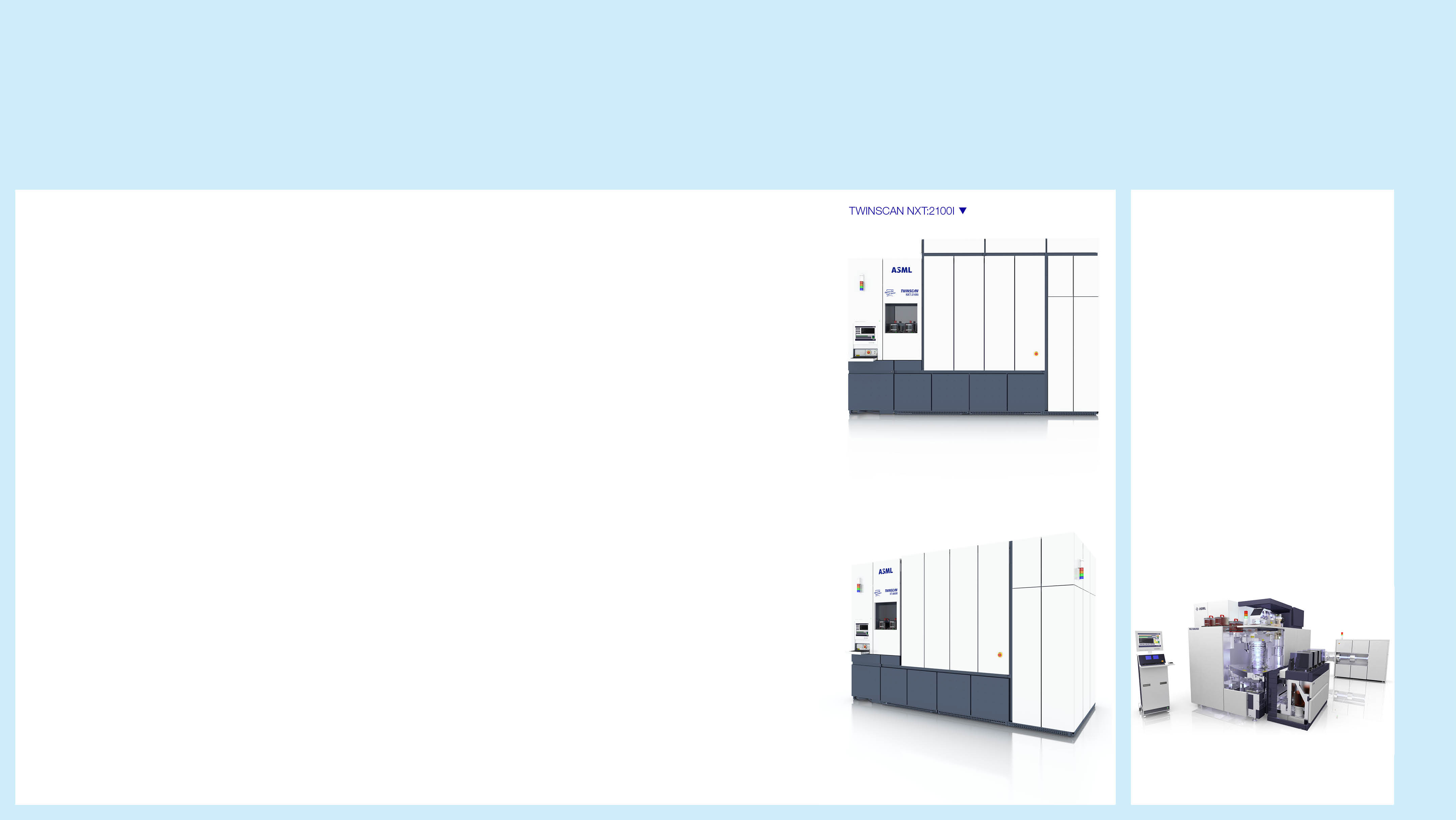
Deep ultraviolet (DUV) lithography systems |
Deep ultraviolet (DUV) lithography systems
are the workhorses of the industry,
producing the majority of layers in
microchips. Supporting numerous market
segments, we offer immersion as well as
dry lithography systems, and a range of
light sources to offer all wavelengths
currently used in the semiconductor
industry – argon fluoride (ArF) for 193 nm
wavelength, krypton fluoride (KrF) for 248
nm and mercury gas discharge lamp (i-line)
for 365 nm. Our systems lead the industry
in productivity, imaging and overlay
performance to help manufacture a broad
range of semiconductor nodes and
technologies, and support the industry’s
cost- and energy-efficient scaling.
Immersion systems (NXTi platform)
ArF immersion lithography maintains a thin
film of water between the lens and the
wafer. Using the refractive index of water to
increase NA improves resolution to support
further shrink. Our immersion systems are
suitable for both single-exposure and
multiple-patterning lithography, and can be
used in seamless combination with EUV
systems to print different layers of the
same chip.
Our latest state-of-the-art immersion
system is the TWINSCAN NXT:2100i,
launched in the third quarter of 2022.
Alongside intrinsic improvements to lens
metrology, reticle conditioning and wafer
table, as well as overall cross-matching
improvements, the NXT:2100i features
innovations such as the Alignment
Optimizer 12 Color package. The system
delivers 295-wafers-per-hour (wph)
productivity combined with unprecedented
overlay performance, providing the most
cost-efficient solution to customers for
critical immersion layers on the sub 3 nm
nodes.
Dry systems (NXT and XT platform)
Not every layer on a chip has to be
produced by the most innovative
immersion lithography systems. While
some more complicated layers do require
more advanced lithography systems,
others can often be printed using ‘older’
technology such as dry lithography
systems. Our dry systems product portfolio
offers our customers more cost-effective
solutions for all types of wavelengths.
Our TWINSCAN NXT:1470 dual-stage ArF
system continues to be adopted by the
majority of Logic and Memory customers
and has been inserted in high-volume
manufacturing processes. It is the first dry
NXT system, building on the common
immersion platform, with improvements in
matched machine overlay (<4.0 nm),
productivity (>300 wph) and footprint.
The TWINSCAN NXT:870 248 nm step-
and-scan system is a high-productivity,
dual-stage KrF lithography tool designed
for high-volume 300 mm wafer production
at and above-110-nm resolution. The
system increases productivity from the 260
wph capability of the XT:860N to 330 wph
through the use of the NXT platform, a
higher scan speed and reduced system
overhead time.
The TWINSCAN XT:400L is our latest i-line
lithography system, which can print
features down to a resolution of 220 nm for
200 mm and 300 mm wafer production.
We are on track with a platform
commonality roadmap in order to reduce
the cost of ownership: The transition in ArF
and KrF from the XT platform to the NXT
platform is resulting in significant
productivity gains (KrF 27% to 330 wph on
NXT:870, ArF 46% to 300 wph on
NXT:1470).
We continue to innovate in productivity,
cost of ownership and performance across
our TWINSCAN XT product lines (ArF, KrF
and i-line) for 200 mm and 300 mm wafer
sizes.
Refurbished systems |
Our refurbished products business
refurbishes and upgrades our older
lithography systems to extend their lives,
and offers associated services and
support. We currently offer refurbished
PAS 5500 and first-generation AT, XT and
NXT systems.
ASML systems have a very long
operational lifetime that often exceeds
their role at the initial customer. Many
customers are therefore able to generate
value by selling off systems they no longer
require. To support this sustainable
product use and ensure used systems
deliver the quality that ASML stands
for, we are actively involved in the used-
system market. Remarkably, 95% of the
systems that we have sold in the last
30 years are still in use.
Read more in Environmental – Circular economy
ASML ANNUAL REPORT 2023 | OUR PRODUCTS AND SERVICES CONTINUED | STRATEGIC REPORT | CORPORATE GOVERNANCE | FINANCIALS | 14 | |
World-leading holistic lithography solutions (continued) | ||||||

Metrology and inspections systems |
Our metrology and inspection systems
allow chipmakers to measure the patterns
that they print on the wafer to see how well
they match the intended pattern. Our
portfolio enables chipmakers to monitor
most steps of bringing a chip to market,
from R&D to mass production.
The systems are a key element of our
holistic approach to lithography. They
produce data at the speed and accuracy
needed during high-volume manufacturing
to enable our process control software
solutions to create automated feedback
control loops. This optimizes the
lithography system settings for each
exposure to reduce EPE, enlarging the
process window to achieve the highest
yield and best performance in a fab
environment.
Optical metrology
Our YieldStar optical metrology systems
allow chipmakers to assess the quality of
patterns on the wafer in volume production,
through fast and accurate overlay
measurements. We offer two categories of
YieldStar systems for use before and after
‘etching’ (the stage when the material in any
open spaces is removed to reveal the 3D
version of the patterns on the wafer). Pre-
etch metrology measures the overlay and
focus of the lithography system and the
pattern printed on the photoresist. Post-
etch metrology measures the overlay and
critical dimensions of the final patterns
formed on the wafer.
In 2023, we shipped the YieldStar 500, our
latest optical overlay and focus metrology
tool, designed to be the new benchmark for
measurement accuracy, matching
performance and measurement speed. It is
a standalone optical wafer metrology
system for measuring pre-etch overlay.
Using diffraction-based measurements, the
YieldStar 500 offers fast monitoring of
overlay and focus performance directly on
produced wafers with nanometer-level
accuracy.
E-beam metrology and inspection
Our HMI electron beam (e-beam) solutions
allow customers to locate and analyze
individual chip defects amid millions of
printed patterns, extending the scope for
process control. While e-beam solutions
were historically too slow to monitor volume
production processes, we have increased
the throughput to now uniquely offer e-
beam solutions for use during high-volume
production as well as the R&D phase.
The R&D phase of chip manufacturing
involves extensive testing, validation and
fine-tuning to optimize the complete
manufacturing process for reliable, high-
yield mass production.
We offer two types of solutions to support
this stage: E-beam metrology and defect
detection to monitor critical dimension and
EPE data at resolutions necessary for the
implementation of EUV lithography; and
single-beam inspection to monitor voltage
contrast and physical defects.
Our ground-breaking multiple e-beam
(multibeam) inspection systems operate at
throughput speeds that enable them to be
used inline during mass production to
detect voltage contrast defects and
physical defects.
We continue to extend technology
leadership in voltage contrast inspection
and physical defect inspection with the
widely adopted single-beam platform. The
HMI eScan 600 is our latest highly flexible
e-beam wafer inspection system that can
operate in multiple modes, allowing
chipmakers to capture the widest variety of
defect types in a single system.
Our high-resolution e-beam metrology
system HMI eP5 offers world-class 1 nm
resolution with large field-of-view
capabilities. It produces critical dimension
(CD) and EPE data in high volume with a
quality level that customers need for
monitoring and control. EPE is becoming
more critical for device patterning and yield
with shrinking design rules and the adoption
of EUV lithography.
We also released an EPE metrology application
software product on eP5. It is capable of local
and global EPE measurements on device, both
intralayer and interlayer.
In 2022, we released and shipped the eP5
XLE, which extends the high-resolution
eP5 system with high landing energy up to
30 keV and fast back-scattered electron
detection for inspection and metrology of
3D devices in Logic and Memory. It is
capable of overlay measurement on device
patterns, complementing our YieldStar
product offering. We also released and
shipped the first next-generation high-
resolution e-beam metrology system, eP6,
to succeed eP5. The projected eP6
performance is expected to be more than
10 times the speed of existing technologies.
Building on the 2020 launch of our
breakthrough multibeam inspection tool
HMI eScan 1000, with a 3x3 image, in 2022
we also introduced the next-generation HMI
eScan 1100. With a 5x5 image, it
demonstrates successful multibeam
operation, simultaneously scanning with 25
beams. The 5x5 system has higher
sensitivity for detecting voltage contrast
defects and physical defects, while
substantially increasing inspection
throughput. In 2022, the first eScan 1100
multibeam system was installed at a
customer site to start customer evaluation.
ASML ANNUAL REPORT 2023 | OUR PRODUCTS AND SERVICES CONTINUED | STRATEGIC REPORT | CORPORATE GOVERNANCE | FINANCIALS | 15 | |
World-leading holistic lithography solutions (continued) | ||||||

System and process control software |
Taking advantage of the huge flexibility of
our lithography systems, our system and
process control software products enable
automated control loops to maintain
optimal operation of lithography
processes and therefore maximize yield.
Using powerful algorithms, they analyze
metrology and inspection data and
calculate necessary corrections for each
individual exposure. This provides a
feedback loop to the lithography system
to minimize EPE in subsequent wafer lots.
Our roadmap aims to apply more
powerful algorithms with higher-order
corrections to enable our customers to
continue improving EPE performance.
Our roadmap aims to apply more powerful algorithms with higher- order corrections to enable our customers to continue improving EPE performance. |
Computational lithography |
We use computational lithography to
predict and enhance the process window
of our lithography systems by calculating
the optimal settings, depending on the
specific application. This takes place in
the R&D phase, during the development
of new chips to optimize both the reticle
patterns and the setup of the lithography
system to ensure robust, manufacturable
designs that deliver high yields.
Our computational lithography solutions
are based on models of the various
physical and chemical processes that
influence pattern quality. Advanced
algorithms, driven by these models,
predict how a designed pattern will
appear when printed on a wafer. Based
on those predictions, the reticle design
and factors within the lithography system
can be subtly adjusted to ensure that a
chip pattern is printed exactly as
intended. Increasingly, we are using
machine-learning techniques to further
speed up development of models and to
reduce the computational time and cost.
Managing our installed base system |
Our installed base continues to grow,
comprising not only new systems but also
refurbished systems with new owners in
new markets and applications. To provide
all our customers with the best possible
value proposition, we offer an extensive
installed base management (IBM)
portfolio, including a wide range of service
and upgrade options.
We develop and sell product options and
enhancements designed to improve
throughput, patterning performance and
overlay. Our field upgrade packages
enable customers to optimize their cost of
ownership over a system’s lifetime by
upgrading older systems to improved
models.
ASML ANNUAL REPORT 2023 | OUR PRODUCTS AND SERVICES CONTINUED | STRATEGIC REPORT | CORPORATE GOVERNANCE | FINANCIALS | 16 | |
World-leading holistic lithography solutions (continued) | ||||||

We are one of the world’s leading
manufacturers of chipmaking equipment,
while our customers are the world’s leading
microchip manufacturers. We enable them to
create the patterns that define the electronic
circuits on a chip, and consequently our
success is inextricably linked with theirs.
That’s why we collaborate with our
customers to understand how our technology
best fits their needs and challenges. That
means engaging with our customers at all
levels: Building partnerships, sharing
knowledge and risks, aligning our investments
in innovation and increasingly focusing on the
long-term challenges for the next five to ten
years and beyond.
We develop our solutions based on their
input, help them achieve their technology
and cost roadmaps, and work together,
often literally in the same team, to make
sure our solutions fit together perfectly.
Engaging fully with customers is also an
important part of working toward securing
the full product portfolio that will sustain
our company into the future.
As our installed base continues to grow, we
work very closely with our customers to
develop and sell options and enhancements
designed to improve throughput, patterning
performance and overlay to optimize the cost
of ownership over a system’s lifetime.
Building on our customer relationships
We market and sell our products directly to
customers, without agencies or other
intermediaries. Our account managers,
field and application engineers, and service
and technical support specialists are located
close to our customers' operations
throughout Asia, the US and Europe, the
Middle East and Africa (EMEA).
Customer trust is the foundation for our
customer relationships. Our customers expect
us to have the right means to meet their needs
and expectations, consistently deliver upon the
promises we make, be transparent about what
we are doing and fairly share the risks and
rewards with them. In 2023, we took the first
steps toward a reorganization of our customer-
facing roles and responsibilities, and we
announced the intended appointment of a Chief
Customer Officer in ASML's Board of
Management, effective per the date of the 2024
AGM. This will help us to continue to scale
customer relationships, excellent support and
customer trust as the business grows.
How we provide customer support
We support our customers with a broad range
of applications, services and technical support
products to maintain and enhance our systems’
performance. Our customer support teams
across the world ensure the systems in our
customers’ fabs run at the highest levels of
predictability and availability. We offer 24/7
support, next-day parts delivery and an easy-
to-use, centralized customer portal.
It is essential for us and our customers to
have well-trained engineers in the regions
where we operate. We offer specialized
training to boost the capabilities of our local
customer service teams and enhance local
technical expertise. This helps us to increase
the self-sufficiency of local field engineers.
Read more in Engaging with our stakeholders –
Customers
ASML ANNUAL REPORT 2023 | OUR PRODUCTS AND SERVICES CONTINUED | STRATEGIC REPORT | CORPORATE GOVERNANCE | FINANCIALS | 17 | |
Supporting our customers | ||||||
We believe a true partnership with our customers based on mutual trust is vitally important, ensuring that we share the risks and rewards of what we do. | ||||||
We collaborate with our customers to understand how our technology best fits their needs and challenges. |

Every few months, I have been given a new challenge to extend myself.” | ||
Manisha Devi | ||
Solution Test Architect | ||
4 years at ASML | ||
Delivering for our customers | |
After joining ASML four years ago, Manisha Devi led a team of engineers in the roll-out of ASML’s digital platform to customers in 2023. Aware that any mishaps could lead to unplanned downtime that may cost customers millions in lost revenue, Manisha knew the stakes couldn’t be higher. |
ASML ANNUAL REPORT 2023 | SMALL PATTERNS. BIG IMPACT. | STRATEGIC REPORT | CORPORATE GOVERNANCE | FINANCIALS | 18 |

Finding your passion
I have always been inspired by the quote
from Marie Curie: “I am among those who
think that science has great beauty.” As a
child in a small town in North India, I
dreamed of a career in science and
technology. And I took every opportunity to
make that happen. I left the comfort of home
to study at a premier science & technology
institute before starting work in the telecoms
technology domain, growing with each new
role and responsibility. ASML then gave me
the chance to test my skills in the
semiconductor industry. I joined as a
software tester and am now a solution test
architect – determining test and integration
strategies for new solutions.
Unlocking the code
There is a huge amount of software inside
ASML’s systems, and we are continually
developing more. That software is critical
to the operation of the system and the
economic success of our customers. Any
unintended downtime can cost our customers
millions in lost revenue. So, ASML isn’t just
investing in development, it is also investing
in quality – to ensure all that software works
together seamlessly and doesn’t cause
unplanned stoppages in production.
Like most software-enabled systems,
ASML’s products have a huge amount of
legacy code. You can’t just reengineer that
every time you want to make an update or
add a feature – you need to develop new
software in such a way as to ensure that it
doesn’t break the legacy code. To streamline
the process, ASML has recently switched to
a platform development approach: Instead of
delivering a single software package for the
scanner, we deliver a series of options that
all work together. Part of this transition is to
update all installed systems in the field with
an entire new software stack. I was asked to
lead the team responsible for qualifying and
integrating that new stack. As someone who
loves a challenge, I jumped at the chance.
Replacing all the system software is a
daunting prospect, so quality was essential –
we had to get it right first time. To make that
possible, ASML has recently introduced a
new methodology for software development.
Of course, we make use of the standard
approaches like Lean and Agile, but we take
the parts that work best for us and our
customers, then combine them with new
ideas. For example, for the new stack, we
used a ‘shift-left strategy’ where testing and
quality evaluation starts much earlier. Having
the development team involved in testing
end-to-end helped us bring the software to
the required quality level faster.
A customer-first approach
Throughout the development of the new
software stack, we were guided by our
customers’ needs. ASML is in constant
contact with its customers, and regularly
asks them for feedback. In this case, our
customer representatives provided
continuous feedback on the features
customers will want in the next 9-12 months
and customers’ specific use cases. This
helped us better understand which software
configurations do and don’t work.
We started rolling out the new software stack
to customers in 2023. The goal is to do this
without downtime – this was the most nerve-
wracking part of the process, certainly for our
customers. There are always things that can
go wrong when you go live with such
complicated software, but we had done so
much preparation, studying each customer’s
use case, so we could be one step ahead.
That’s not to say that issues didn’t crop up,
but we were always ready with the solution
when they did. Our customers may not have
been smiling when we arrived, but they
definitely were eight hours later when their
system was running the new stack without
problems. And now they can be confident
about adding new options equally painlessly
in the future.
ASML ANNUAL REPORT 2023 | SMALL PATTERNS. BIG IMPACT. CONTINUED | STRATEGIC REPORT | CORPORATE GOVERNANCE | FINANCIALS | 19 | |
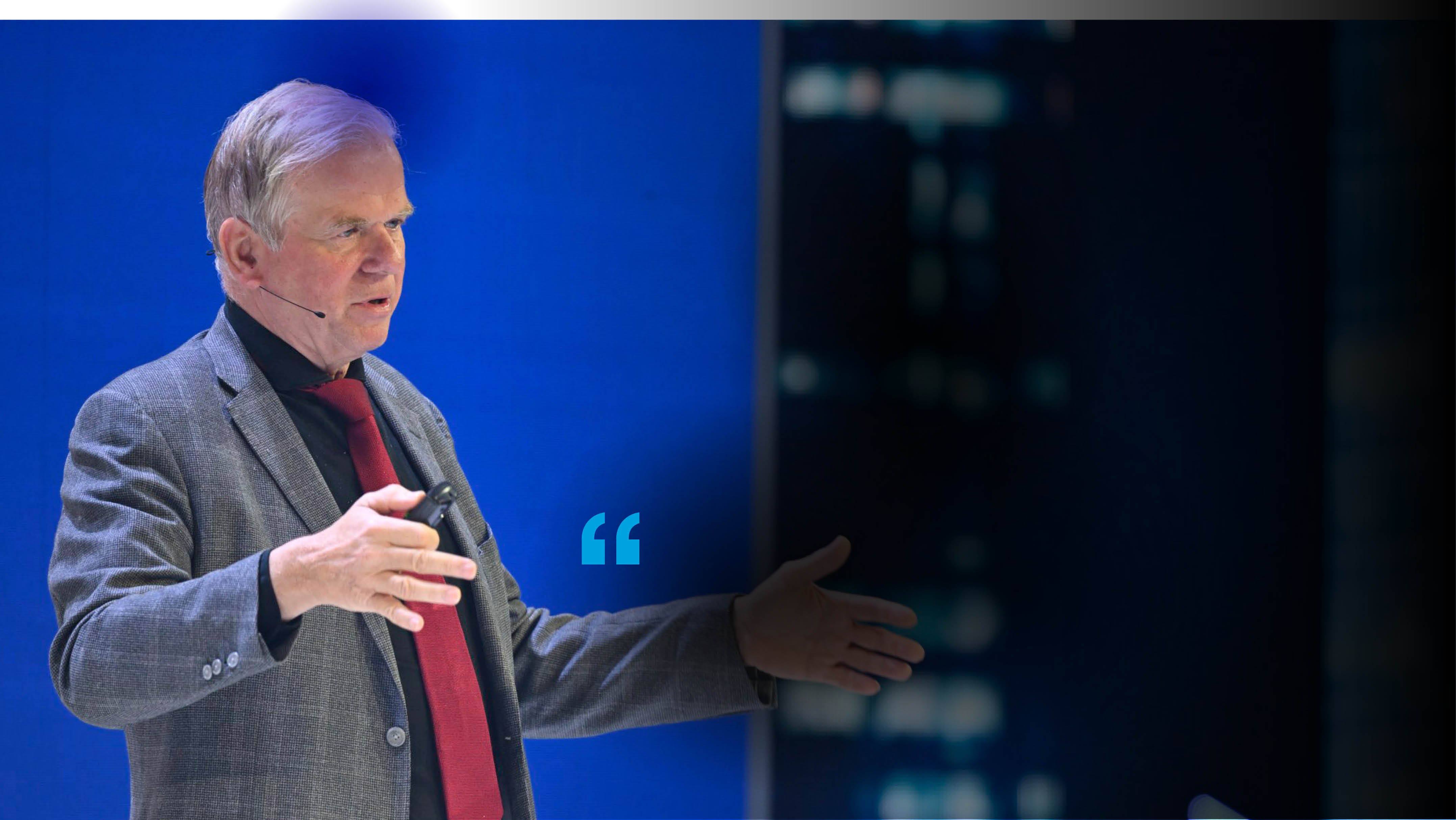
We expect High NA EUV high-volume manufacturing systems to be fully operational in customer factories by 2025.” | |
Martin van den Brink | |
President, Chief Technology Officer and Vice Chair of the Board of Management |
Q | What were the highlights in technology development and innovation in 2023? |
Martin: Let me start by saying that in 2024 it
will be 40 years since a small team of
colleagues, including me, first came together
in a leaky shed in Eindhoven, tasked with
developing lithography systems for the
growing semiconductor market. That was
the start of ASML as we know it today. So,
although 2023 was another dynamic year for
innovation, this was not achieved overnight
but as the result of all the hard work that
preceded it.
Having said that, it was undeniably a very
proud moment for our innovation teams
when we successfully shipped the first
modules of our first High NA EUV system,
EXE:5000, following extensive testing and
integration throughout the year. Our EXE
High NA EUV platform increases the
numerical aperture from 0.33 to 0.55 and will
enable geometric chip scaling well into the
next decade. We expect High NA EUV high-
volume manufacturing systems to be fully
operational in customer factories by 2025.
In DUV immersion, we rolled out a lens
distortion manipulator to adjust the optics in
operation and reduce overlay errors, which
gives us an opportunity to improve our mix
and match overlay between EUV and DUV
immersion. It provides us with more flexibility
following distortion of the wafer and is also
applicable for 3D integration bonding.
On the application side, we made progress with
key technologies such as x-ray, working closely
with our customers, with whom we are closely
aligned. Regarding our metrology and
inspection product portfolio, in 2023, we
brought to market the YieldStar 500, our latest
optical overlay and focus metrology tool,
designed to be the new benchmark for
measurement accuracy, matching performance
and measurement speed. We are now also
delivering our multibeam and single-beam high-
voltage system. While there remains some work
for our teams in maximizing reliability and
maturing these systems to a point where
customers can use them in production, this has
been an important step forward, and one where
AI has played a key role.
Two years ago, we started to develop a
strategy to arrive at a unified or common EUV
platform in order to drive productivity. It was
very exciting to see that strategy begin to bear
fruit during 2023. We now have a clear, articulated
roadmap to achieve a full EUV suite – a common
platform with common manufacturing processes
and a common supplier base. This will drive
cost reductions and speed up the development
of new solutions, which is important not only for
ASML, but also for our customers.
ASML ANNUAL REPORT 2023 | Q&A WITH THE CTO | STRATEGIC REPORT | CORPORATE GOVERNANCE | FINANCIALS | 20 | |
Driving Moore’s Law across four decades of innovation | ||||||
In conversation with our President, Chief Technology Officer and Vice Chair of the Board of Management | ||||||
Martin van den Brink | ||||||
On April 24, 2024, ASML President & CTO Martin van den Brink will retire from ASML upon completion of his current appointment term. “It has been a privilege to co-lead ASML with Peter Wennink and to have brought a strong focus on product, technology and engineering capabilities to the company and its suppliers. I am proud of the innovations that we have delivered together with our customers over the decades." | ||
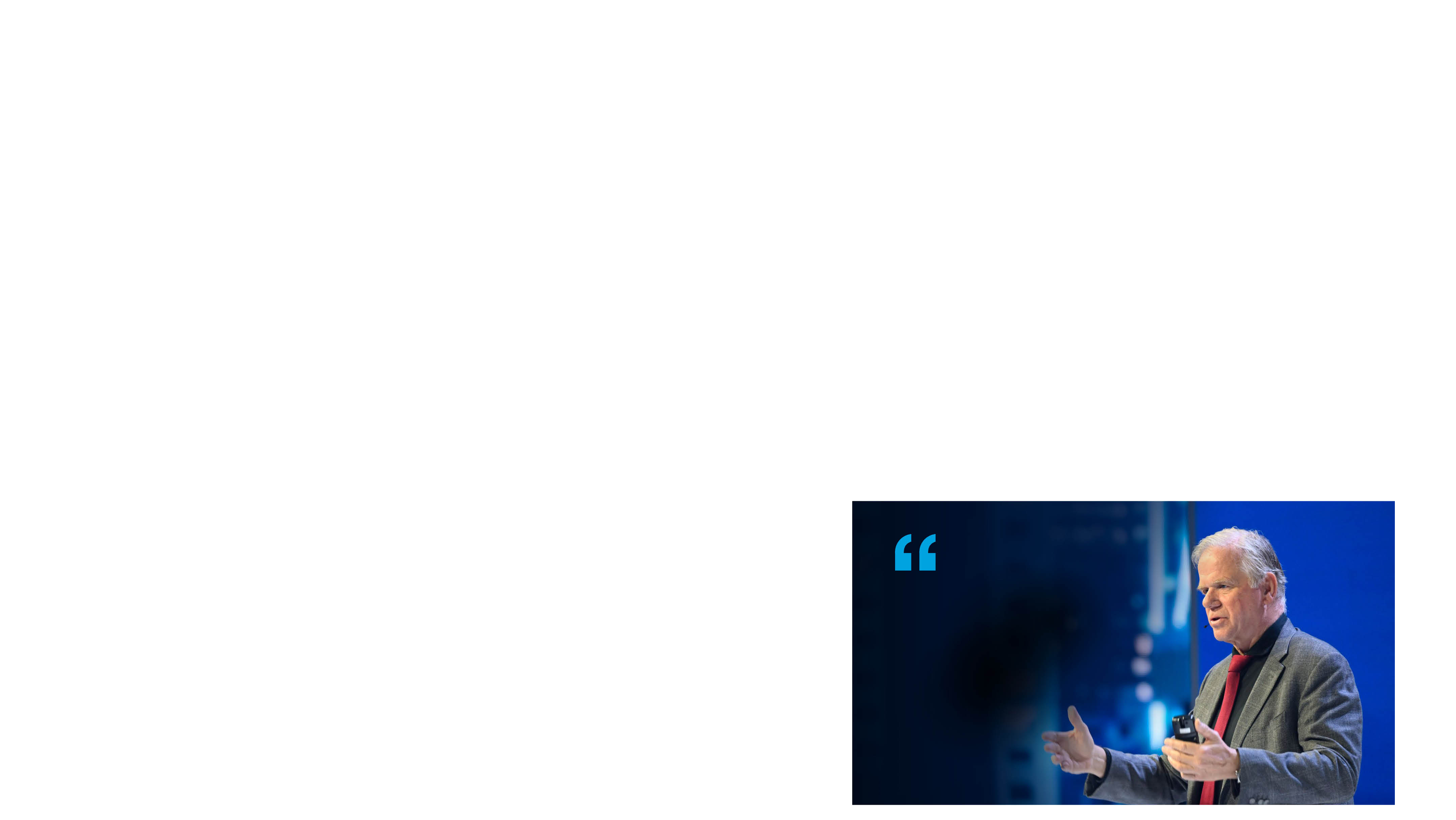
Q | Is shrink still the most important driver of innovation? |
Martin: In line with Moore’s Law, shrink has
long played a key role in innovation, and
although this is inevitably becoming more
and more challenging, it will continue
because shrink is the only way to effectively
reduce costs.
However, it’s important to put this into
context. What we are looking at today is
whole-system integration shrink, not just of
the chips themselves. For example, 3D
system integration – vertically stacking
different chips together into a single package
– requires innovative lithography solutions to
handle the increasingly dense
interconnections. We have been working
with both Logic and Memory customers on
how to shrink these connections from chip to
chip. As is always the case with innovation
on this scale and in this industry, we are
engaging with core solution providers, such
as bonding suppliers, to find the answers.
Cost is closely aligned with shrink. As shrink
becomes more challenging over time, and as
technology continues to demand more
energy-efficient transistors per chip, the
industry will need to produce more silicon
but at lower cost. The cost-productivity ratio
is now a key aspect of our roadmap because
we understand the cost pressures that our
customers and suppliers are facing.
Moving forward, we have clear parameters
for R&D to work within so that future
innovations take account of the technology
limits of our supplier base and, where
possible, reduce any risks of suppliers
making unnecessary investments in new
capabilities.
Q | How have your ecosystem partners driven innovation in 2023? |
Martin: It is impossible to overstate the
importance of our partners. A significant
number of them are integral to our innovation
activities and several have worked with us for
many years.
Our requirements are frequently unique and
very demanding – so we work hard to help
suppliers engage with our objectives in a
spirit of mutual trust and respect. The
importance of these relationships has been
further recognized at ASML Board level
through the recent appointment of Wayne
Allan as Executive Vice President (EVP) and
Chief Strategic Sourcing & Procurement
Officer (CSPO), heading up the supply
improvement program which aims to
radically step up our ability to work with
suppliers and deliver what our customers
demand. We saw a number of developments
in our supplier relationships in 2023. Having
partnered with imec (Interuniversitair Micro-
Elektronica Centrum) – a leading research
and innovation hub in nanoelectronics and
digital
technologies – since the late 1980s, in 2023
we signed a new Memorandum of
Understanding (MoU) to intensify our
collaboration around High NA. The MoU
includes the installation and service of our full
suite of advanced equipment in the imec
pilot line in Leuven, Belgium. This facility will
enable us to work alongside imec to develop
a new process that will take us to the next
semiconductor process node.
Q | How do you safeguard ASML’s ability to continually improve? |
Martin: We aim for R&D spend to be in the
10-15% range of revenue. As our revenue
increases rapidly, so too does our financial
commitment to supporting innovation – in
2023, we invested €4.0 billion in R&D. Of
that amount, we spend around 10% on pure
explorative research that aims to fill the
innovation pipeline. We continue to work with
our partners, for example by investing in a
high-transmissive illuminator with ZEISS.
Q | Can you update us on future developments such as Hyper NA? |
Martin: Hyper NA with an NA higher than 0.7 is
certainly an opportunity that will become more
visible from around 2030. It is likely to be most
relevant for Logic – and it will need to be more
affordable than double patterning – but it may
also be an opportunity for DRAM.
For us, the key thing is that Hyper NA is
driving our overall EUV capability platform to
improve both cost and lead time.
Regarding the industry in general, digitalization
will continue to enable many of the solutions
that are transforming our planet. Although
systems such as our EUV platform require a
great deal of energy, I think that we make a
positive contribution to reducing GHG
emissions by enabling the development of
technologies such as smart grids and electric
vehicles. More such technologies will follow – so
at ASML we can feel good that our customers
and their customers are engaging with society
in a positive way when it comes to the
environment.
Digitalization will continue to enable many of the solutions that are transforming our planet.” | |
Martin van den Brink | |
President, Chief Technology Officer and Vice Chair of the Board of Management |
Q | How do you envisage ASML on its 50th anniversary? |
Martin: It is fair to say that our innovations
are likely to be restricted by more
boundaries, whether in terms of cost, cycle
time or technology limits. Our challenge is to
make efficiency gains in all these areas over
the next 10 years – to make sure not only
that we invent new solutions and ways of
working but that these can be put into cost-
effective and timely practice for our
customers. It’s all about doing everything we
can to turn theory into practical reality, giving
our customers the most efficient possible
operation in every regard: cost, sustainability
and productivity.
ASML ANNUAL REPORT 2023 | Q&A WITH THE CTO CONTINUED | STRATEGIC REPORT | CORPORATE GOVERNANCE | FINANCIALS | 21 | |
Driving Moore’s Law across four decades of innovation (continued) | ||||||
In conversation with our President, Chief Technology Officer and Vice Chair of the Board of Management | ||||||
Martin van den Brink | ||||||
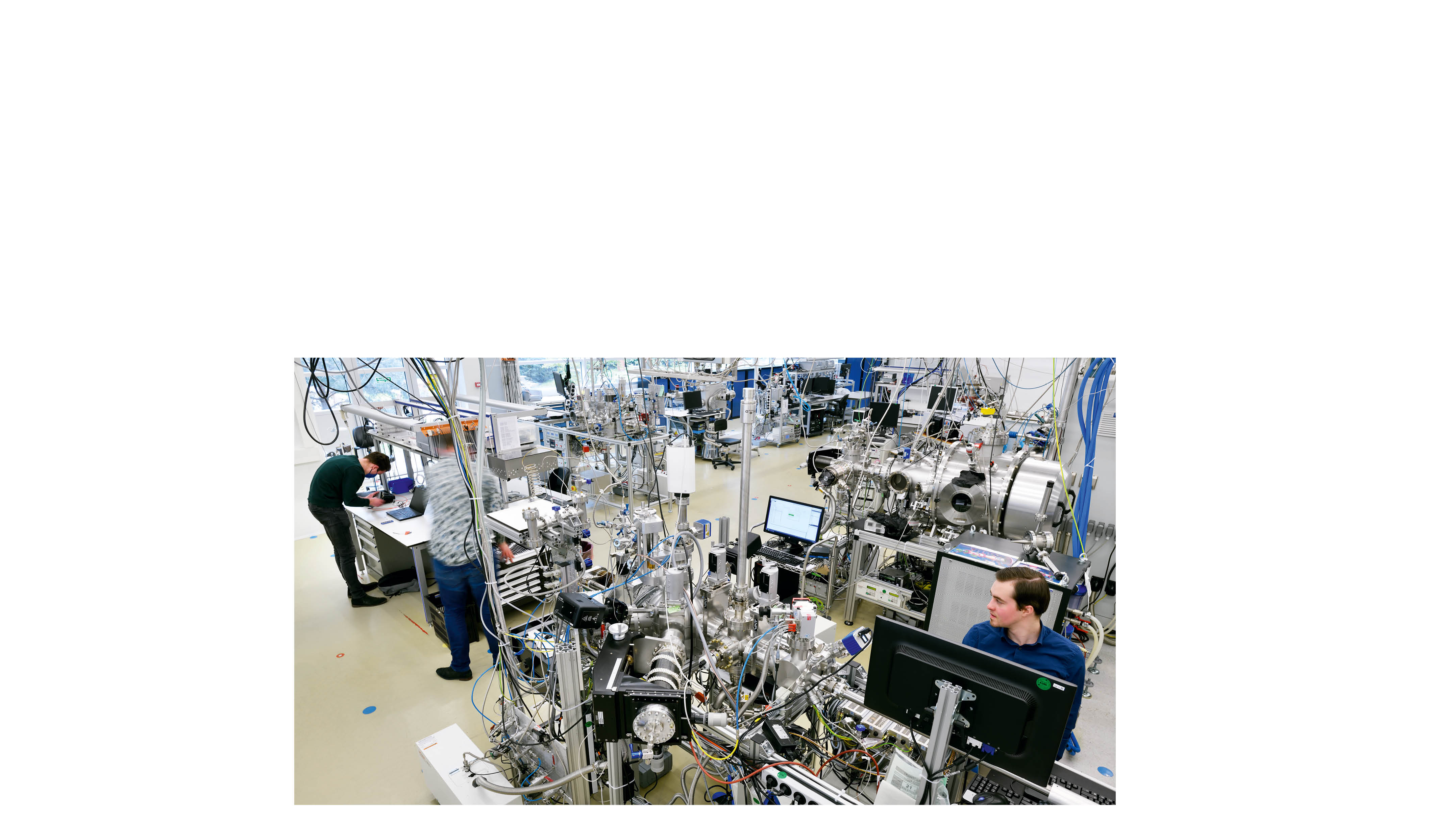
Innovation is crucial to the continuing
success of our business. Every day, more
than 15,500 of our engineers take on the
exciting challenge of innovating across our
holistic lithography portfolio, including the
most advanced lithography systems in the
world. To stay ahead, we invest heavily in
R&D – in 2023, we spent €4.0 billion in this
vital area, compared with €3.3 billion in 2022,
further building our capability to meet
customer needs.
A collaborative network at the cutting
edge of our digital future
To drive the fast pace of innovation in our
value chain, we rely on our strong innovation
ecosystem to make progress together. We
work hard at developing long-term
relationships with our customers, suppliers,
research partners and peers, listening to and
pushing each other to continuously innovate.
We trust our supply chain to manufacture
most system parts and modules and many
are deeply involved in developing our new
technology.
We innovate across our entire product portfolio
and we aim to do this at the same pace as our
customers through large and sustained
investment in R&D, involving a diverse
international academic network. This so-called
‘double helix’ approach is designed to
accelerate innovation and provides access to a
large leading-edge knowledge base across a
wide range of technologies.
Generating ideas and finding
technological innovations and solutions
Our R&D teams focus on generating and
exploring exciting new ideas and
demonstrating their feasibility in the long
term, as well as finding technological
solutions to the challenges colleagues may
face with any products and applications that
have already moved into development.
Our researchers continuously scout for
technological innovations and solutions –
within the semiconductor industry and
beyond – searching for those that can help
us support our customers while delivering on
our ESG sustainability commitments.
We innovate through partnerships. By developing our technology in close collaboration with our customers, we seek to build today what they need tomorrow. |
ASML ANNUAL REPORT 2023 | INNOVATION | STRATEGIC REPORT | CORPORATE GOVERNANCE | FINANCIALS | 22 | |
How we innovate | ||||||
As a crucial manufacturer of lithography equipment, ASML is a vital part of the semiconductor ecosystem value chain. We don't innovate in isolation, but work as architects and integrators – collaborating closely with customers, our supply chain, and industry and research partners in a strong innovation ecosystem. | ||||||
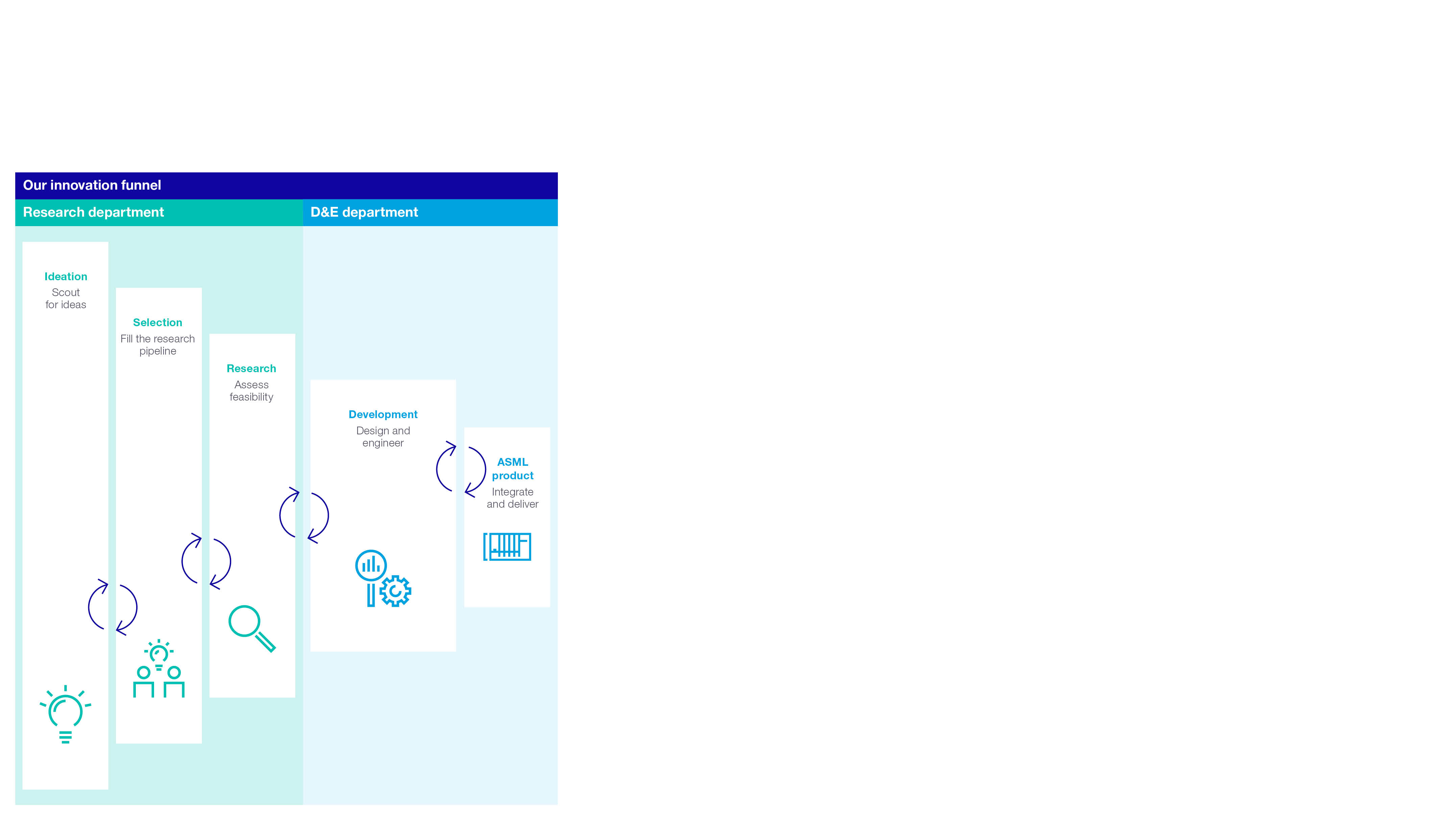
Filling the innovation funnel
We encourage our experts to build wide
networks in the broader technology
space. This supports the constant stream
of new ideas into the technology pipeline
that flows through what we call our
‘innovation funnel’ (see diagram). Based
on our fundamental understanding of our
markets and the needs of chipmakers,
we select new ideas that have the
potential to advance our products and
their customer application.
Ideas that pass the ideation and selection
stages are assessed in the research
stage for their feasibility to go into our
product generation process (PGP), a
decision-based process for product
development that includes an ESG
assessment as well as the building and
testing of system prototypes in the
relevant environments. Prototypes that
pass these tests may eventually lead to
new product releases.
ASML Fellowship Program
At ASML, we recognize and honor our
technical experts because we know that
our company’s success is built on
technology leadership. One of the ways
we do this is through the ASML
Fellowship Program.
Innovation achievements in 2023 | ||||
Our goal is to give customers the products and capabilities they need to deliver on technology’s potential to make a positive contribution to society. As well as creating some of the most advanced machines in the world, this includes an increased focus on sustainability through parts commonality and reuse, and improvements in the performance and energy efficiency of our products to reduce costs and waste. Innovation achievements of the last 12 months include: •Soft x-ray (SXR) scatterometry. Using 10-20 nm wavelength light, this is a revolutionary next-generation metrology for 3D metrology suitable for measuring 3D profiles of advanced devices such as Gate All Around (GAA) transistors. | •Generation of smooth mirror surfaces. This innovation is used on the EXE:5200 mirror block. The mirror block carries the wafer table, with its mirrors used to position the wafer in three dimensions. The smooth mirror surface has greater stiffness compared to other glass materials, enabling it to better cope with the extreme stage accelerations in our next-generation NXE and EXE systems. | |||
In 2023, three new ASML Fellows were
appointed, and two of our current Fellows
were promoted to the titles of Senior and
Corporate Fellow, respectively, for their
personal outstanding technical
contributions.
ASML ANNUAL REPORT 2023 | INNOVATION CONTINUED | STRATEGIC REPORT | CORPORATE GOVERNANCE | FINANCIALS | 23 | |
How we innovate (continued) | ||||||

ASML ANNUAL REPORT 2023 | MARKETPLACE | STRATEGIC REPORT | CORPORATE GOVERNANCE | FINANCIALS | 24 | |
The world around us | ||||||
The macroeconomic situation remains volatile and we continue to see macro trends such as high interest rates, inflation, fear of recession and geopolitical tensions increasing in some parts of the world. The semiconductor industry is trying to manage its inventory levels in some end-market segments to balance supply and demand. | ||||
The semiconductor market was still in the aftermath of the COVID-19 crisis in 2023, during which large stimulus packages accelerated economic growth. This created shortages in supply in the electronics industry as companies built safety stocks to increase future resilience. End demand for electronics slowed as we reached the end of the pandemic, while the supply chain was still building safety buffers. This resulted in a supply chain correction in 2023 which impacted our industry. In the context of demand for lithography, some customers delayed the timing of their demand for specific systems, as some of their facilities were not ready to receive the systems as well as a result of their end demand. This provided an opportunity to allocate these systems to customers whose demand profile we could not initially meet. Despite these delays, for certain system types the supply is still the main constraint, with demand being higher than supply, albeit at a reduced level than was experienced at the start of the year. | All in all, global trends – such as generative AI, the energy transition, the electrification of mobility and the industrial Internet of Things (IoT) – continue to fuel semiconductor growth in the longer term. Our highest-priority objective is to optimize supply so that we can deliver and live up to our customers’ expectations. We have strong confidence that the semiconductor ecosystem will continue to innovate and grow at a high single-digit compound annual growth rate. Factors that may impact our business are explained in more detail over the next few pages, including: | |||
1.Macroeconomic and geopolitical trends | ||||
2.Semiconductor market trends | ||||
3.Semiconductor application areas | ||||
4.Semiconductor industry market | ||||
1. Macroeconomic and geopolitical trends | ||||||||
Economic outlook | Middle East conflict | Russia-Ukraine war | ||||||
Description The macroeconomic situation did not improve in 2023; inflation rates and interest rates stayed relatively high and the fear of recession, amid the geopolitical conflicts, remained. The continued macroeconomic uncertainty means our customers in different market segments have remained cautious. A later recovery of markets is expected, and the timing and shape of the recovery slope remains unclear. What it means for ASML Our EUV business saw a slight shift in demand timing, predominantly driven by a lack of readiness of fabs. This was due to the market environment and a shortage of people who have the capability to build advanced fabs. With DUV demand higher than we can deliver, particularly in China, we are working closely with our customers and suppliers to ride out the uncertainty and manage the risks. | Description The military action in the Middle East is an additional factor in the current uncertainty in the macroeconomic environment. What it means for ASML Both ASML and our customers have operations in the Middle East. Additional military action in the region has and could further adversely affect the global economy, financial markets and the supply chain. This may impact our people and operations and our customers' operations, customer demand, delivery of products and services to customers, and the ability to obtain parts and components due to supply chain disruption. The safety and well-being of our employees and their families are a priority for us. | Description The military action in Ukraine is an element of the current uncertainty in the macroeconomic environment. What it means for ASML While we do not have operations in Russia or Ukraine, sanctions and other measures taken in response to the military action have adversely affected – and could further affect – the global economy, financial markets and the supply chain. This may impact our customer demand, delivery of products and services to customers, and the ability of us and our suppliers to obtain parts, components and gas supply due to supply chain disruption. | ||||||
Read more in Our business strategy Read more in Risk - How we manage risk | ||||||||
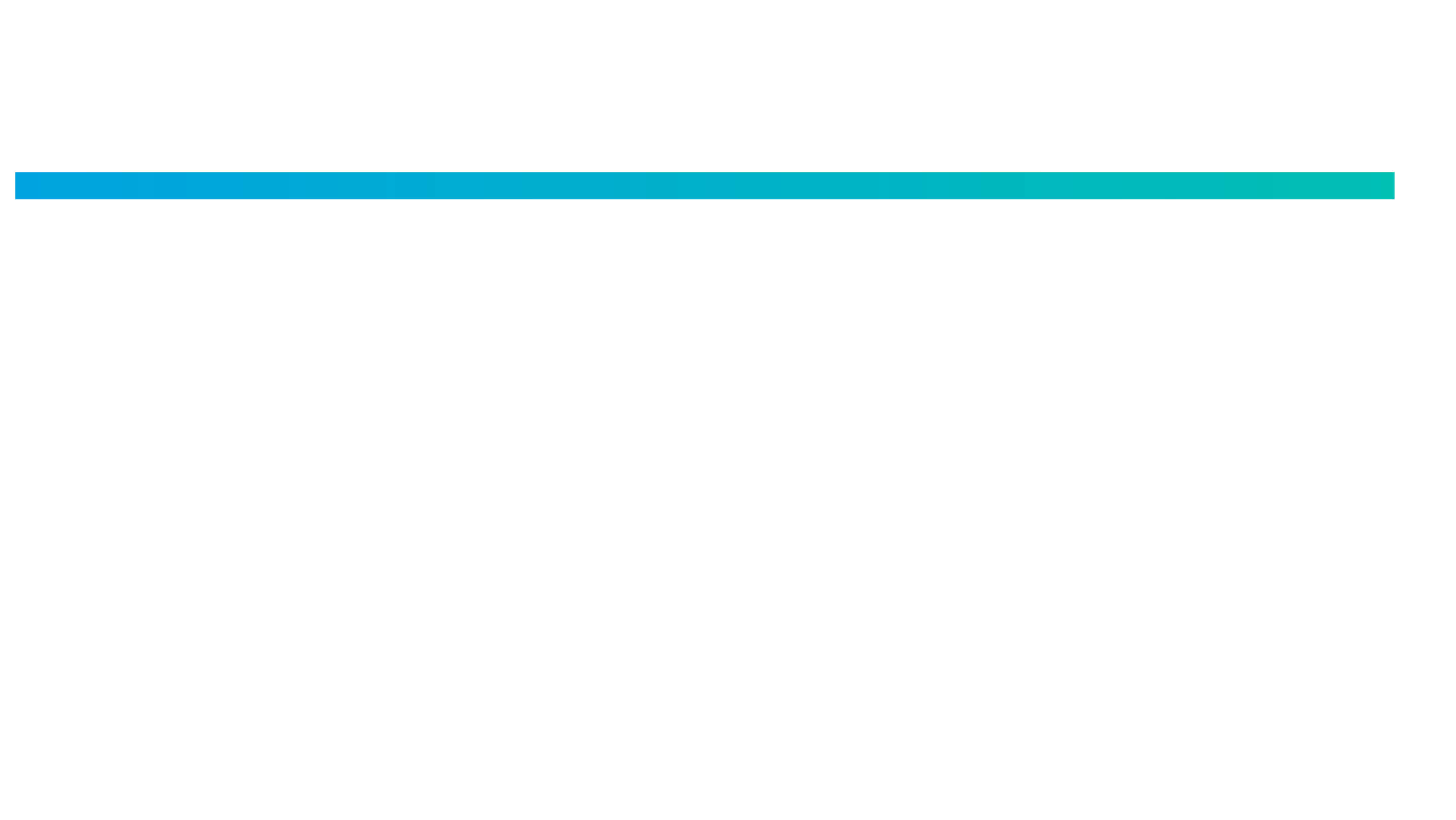
1. Macroeconomic and geopolitical trends (continued) | ||||||||||||
Global geopolitics – technological sovereignty | Global geopolitics – export controls | Mitigating climate change | ||||||||||
Description Semiconductors are crucial to the economic and strategic development of countries and regions, with the strategic importance of the semiconductor industry only likely to grow. Many countries and regions are pushing for ‘technological sovereignty’ to ensure security of supply, resilience and technological leadership in semiconductor technologies and applications. This is fueling capital expenditures in new regions. What it means for ASML As governments increasingly see semiconductor manufacturing as strategically significant, chips acts are incentivizing our customers to build manufacturing facilities in the US, Europe and Asia. Besides sharing our views with governments on semiconductor manufacturing, we work closely with our customers to build the semiconductor manufacturing ecosystem in new regions, while retaining our focus on supporting incumbent regions. | Description On June 30, 2023, the Dutch Government published new regulations regarding the export control of semiconductor equipment that came into effect on September 1, 2023. These controls focus on advanced chip manufacturing technology, including the most advanced deposition and immersion lithography systems (NXT:2000i, NXT:2050i, NXT:2100i and subsequent systems). In addition, in October 2023, the US government published updated US export control regulations which include restrictions on shipping mature immersion lithography systems (NXT:1970 and NXT:1980) to a limited group of customers in certain countries (including China). Governments have turned their attention to securing sufficient semiconductor supplies to ensure greater technological sovereignty and support local industries. Significant investments in the semiconductor industry are being planned, with industry forecasts suggesting that the top three semiconductor manufacturers plan to invest over $300 billion in global capacity in the coming years. While the industry is managing its overall costs, price rises could ultimately be passed on to the end market, driving up the price of devices. Trade tensions and protectionism introduce significant complexity across the supply chain and the processes required. | Like so many others in this trading environment, the semiconductor industry needs to review its global supply chain. At the end of 2023, the Dutch Government partially revoked a license for the shipment of NXT:2050i and NXT:2100i lithography systems, impacting a small number of customers in China. What it means for ASML The new regulations require ASML to apply for Dutch export licenses for all shipments of its most advanced DUV immersion lithography systems (TWINSCAN NXT:2000i and subsequent immersion systems) as well as US licenses for mature systems for a limited number of customers in China. The governments will determine whether to grant or deny the required export licenses and provide further details to the company on any conditions that apply. From January 1, 2024, we will work with our customers to deliver the non-advanced lithography systems which are not impacted by the new restrictions. We continue to educate governments on the semiconductor manufacturing process and ecosystem to foster understanding of the potential impacts of current and future regulatory measures. | Description With an urgent collective response needed to limit global warming to 1.5°C, climate change is a crucial matter for governments, companies and individuals worldwide. Energy and water resources Technologies to counter climate change – from the energy transition to electrification, smart mobility and agricultural innovation – require semiconductors. Semiconductors are crucial to the generation, storage, distribution and consumption of electrical energy. They are at the core of smart (home) devices and play an important role in reducing overall energy consumption. The semiconductor industry also has an important role to play by reducing its own climate impacts; the semiconductor manufacturing process consumes large volumes of energy and water resources. Driving Moore’s Law to enable shrink and improve computing power and storage capacity fuels demand for these vital resources. Innovative architectures and a new way of looking at the entire ecosystem will be required to enhance energy and water resource efficiency of the industry. | What it means for ASML Our goal is to achieve net zero emissions across our value chain by 2040. We plan to do it by decreasing our GHG emissions and reducing our carbon footprint across our value chain, enhancing the energy efficiency of our products and properties. We aim to achieve this by reducing energy consumption, using renewable energy and compensating CO2 emissions. We are also committed to using water responsibly. This includes acting to preserve water quality and conservation across our operations and in the communities where we operate. We work closely with our customers and suppliers to minimize waste and maximize the value gained through use of resources. By 2030, we aim to send zero waste from operations to landfill or incineration. | ||||||||
Read more in Environmental – Energy efficiency and Read more in Risk – Risk factors | ||||||||||||
Read more in Risk - Risk factors | ||||||||||||
ASML ANNUAL REPORT 2023 | MARKETPLACE CONTINUED | STRATEGIC REPORT | CORPORATE GOVERNANCE | FINANCIALS | 25 | |
The world around us (continued) | ||||||


ASML ANNUAL REPORT 2023 | MARKETPLACE CONTINUED | STRATEGIC REPORT | CORPORATE GOVERNANCE | FINANCIALS | 26 | |
The world around us (continued) | ||||||
Technology is evolving at pace – we are moving fast toward intelligent edge computing, the next level of computing which focuses on processing data closer to its source rather than in centralized data centers. The current era of mobile computing – where you bring the computer with you – is moving us into an immersive world of ubiquitous computing, with computing power available everywhere, driven by artificial intelligence (AI). |
2. Semiconductor market trends | ||||||
Trends | ||||||
Increasing market demand The continuing convergence of wireless communication, telecoms, media and cloud technology via connected devices is driving demand for advanced semiconductors across the globe. Growing populations, urbanization, the energy transition and electrification to support smart mobility are increasing demand for advanced electronic devices. Microchips are at the heart of these devices, ranging from sensors and actuators to smart, scalable and flexible computing solutions. This is driving demand for chips in both leading edge and mature process nodes, which are specifically designed for innovative applications in areas ranging from smart homes, cities and industries to predictive healthcare, smart wearables and autonomous robotics. The virtuous cycle of a data- driven society Moore’s Law is the guiding principle for the semiconductor industry. It is the motor behind the industry transition from mobile computing to ubiquitous computing. This transition continues to expand, driving the three main elements in computing – applications, data and algorithms – that | feed each other in a virtuous cycle: applications generate data, data fuels new algorithms, which again leads to new applications that generate new data, etc. This is the virtuous cycle of our data-driven society. Unleashing the power of data better and faster with AI AI is becoming more ubiquitous and embedded into the environment and smaller devices, which moves us into the era of intelligent edge computing – smart, connected networks of more energy-efficient devices that seamlessly communicate over powerful 5G networks to unleash the power of data better and faster than ever. This provides people with more innovative functionalities and applications, improves human-to-machine interactions, and enhances data management and analytics. With intelligent edge computing, data processing is brought as close to the source of data as possible, rather than happening in the cloud. The vast amounts of data and insights that people can access are expected to fuel semiconductor business growth and the digital transformation. | Edge intelligence and AI-empowered mobile and ubiquitous computing technologies are key to solving some of society's toughest challenges, such as mitigating climate change, enabling the energy transition, creating sustainable social communities and improving quality of life. | ||||
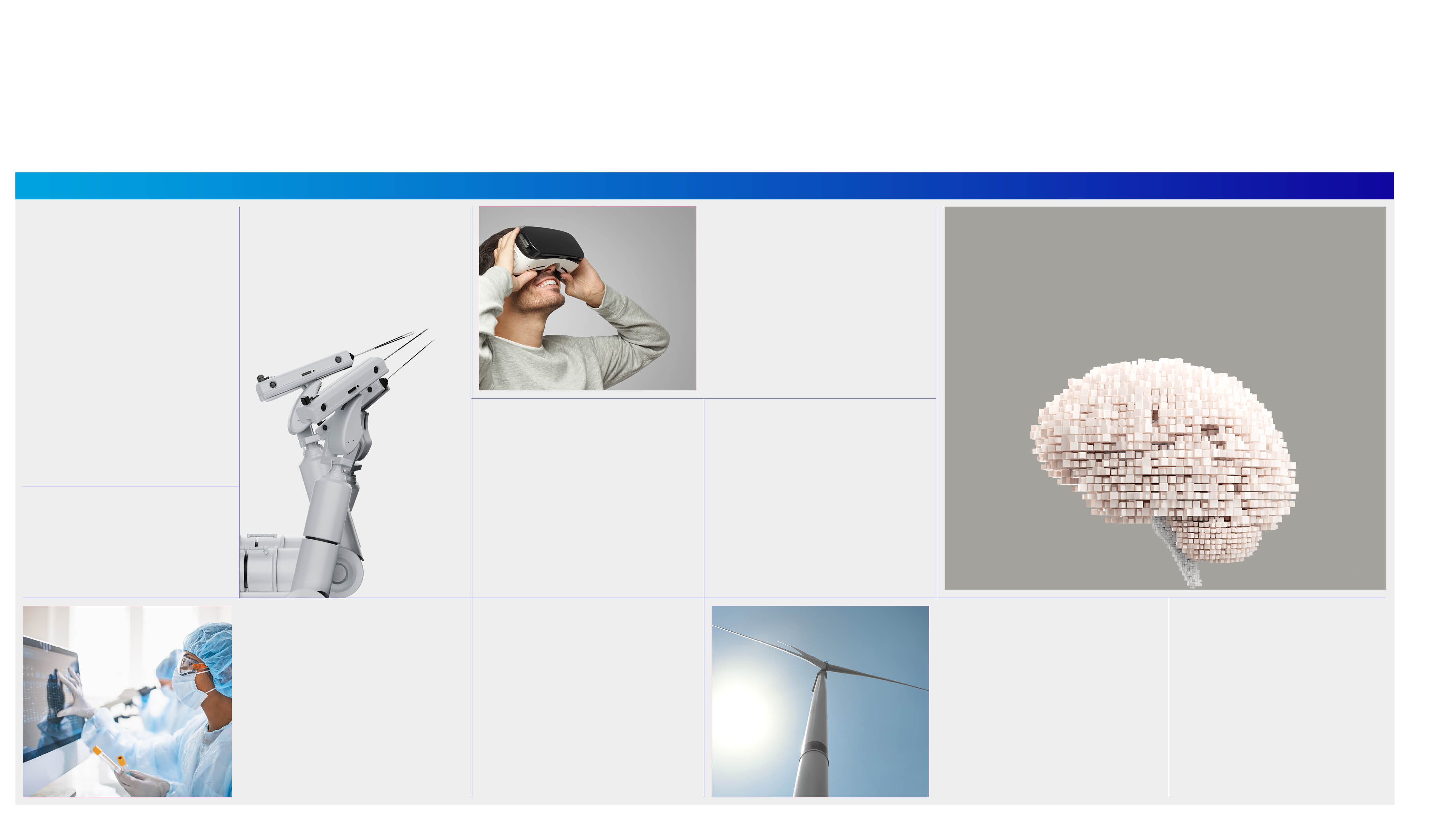
ASML ANNUAL REPORT 2023 | MARKETPLACE CONTINUED | STRATEGIC REPORT | CORPORATE GOVERNANCE | FINANCIALS | 27 | |
The world around us (continued) | ||||||
3. Semiconductor application areas |
Automotive | ||
Automotive is one of the fastest- growing market segments driven, by electrification, autonomy and other mega trends. Integrated automotive systems consist of a full range of scalable, flexible computing solutions that require advanced and mature semiconductor devices. Advanced driver-assistance systems (ADAS) enabled by electronics and semiconductors, considered supercomputers on wheels, are also expected to contribute to the growth of the automotive segment in the semiconductor industry. | ||
Smart industry Smart industry devices use real- time data analytics and machine- to-machine sensors to optimize processes, foresee bottlenecks, and prevent errors and injuries. |
Autonomous robotics | ||
A new generation of lightweight robots connected to a wide network and fitted with smart sensors enable humans and machines to safely and efficiently work side by side. | ||
Predictive healthcare Predictive analysis of health data from multiple sources combined with machine learning and AI is being harnessed to improve healthcare services and patient outcomes. | ||
Global connectivity 5G enables a new kind of network that is designed to connect almost everyone and everything around the world, including machines, objects and devices. | ||
Smart cities Smart cities use technology and digital networks to integrate transportation and infrastructure, connectivity, energy and lighting, and other public services. | ||
Mixed reality | ||
Augmented reality and virtual reality technology can combine to bring the real world and digital elements together (so that physical and digital objects coexist and interact in real time) to create the next-level user experience. | ||
Wearables | ||
Wearable devices (such as fitness trackers smart watches, smart rings, jewelry or glasses) are able to connect to the internet and continuously monitor, track and transmit personal data. | ||
Artificial intelligence | ||
Artificial intelligence (AI) is about developing systems that have the intellectual processes characteristic of humans, such as the ability to reason, discover meaning, generalize or learn from past experience. Due to the exponential growth in computation, along with the availability of massive data sets and improved algorithms, AI has made huge advancements over a short period of time. Today, AI not only matches, but also beats human performance in many areas. |
Smart home Smart home devices, such as thermostats, lights and smart TVs, learn a user’s habits to provide automated support for everyday tasks. |
Energy transition The energy transition is expected to be a key market driver, with semiconductors enabling the global shift from fossil- based energy production to renewable sources like wind and solar. Semi- conductors are crucial in the generation, storage, distribution and consumption of electrical energy. The energy transition also drives the need for more intelligent infrastructure and end devices. | ||

4. Semiconductor industry market | ||||||||||||||||||||||||
Semiconductor technology plays a crucial role in shaping the interconnected and intelligent network future. As a result, end markets continue to grow. This overview provides an outlook on current market size and opportunity for the entire industry, based on external research. The historical market compound annual growth rate (CAGR) from 2012 to 2022 was 7%. In 2022, almost 1.1 trillion chips were manufactured around the world, feeding a $0.6 trillion industry. 2023 was a correction year, as consumer markets like PC slowed following the peak in working-from-home triggered by COVID-19. At the same time, the supply chain continued to build safety buffers in 2022 to increase resilience against future supply chain disruptions, and these needed to be corrected given lower demand. Industry sources project that the chip market (worldwide semiconductor revenues) will resume growth after 2023 in line with historical growth rates. The longer- term market outlook is not expected to be materially impacted by the 2023 downturn. With an expected global annual wafer capacity growth of over 780,000 wafer starts per month per year, we plan to increase our annual capacity to 90 EUV 0.33 NA and 600 DUV systems (2025-2026), while ramping up EUV 0.55 NA (High NA) capacity to 20 systems per year (2027-2028). | Smartphone | Personal computing | Consumer electronics | Automotive | Industrial electronics | Wired and wireless infrastructure | Servers, data centers and storage | |||||||||||||||||
 |  |  |  |  |  |  | ||||||||||||||||||
Key driver | ||||||||||||||||||||||||
Continued refresh of all semiconductor content including image sensors and edge AI processors | High-end compute and Memory, fast conversion to solid- state drive (SSD), edge AI processors | Both low-power and high-bandwidth connectivity, sensors | Strong IC content growth: graphics processing unit (GPU), sensors, vehicle-to-everything (V2X) communication sensing | Connectivity, edge processors, sensors | High-bandwidth connectivity, edge processors | High processor and Memory growth, hardware accelerations including GPU for AI applications | ||||||||||||||||||
2020 market size ($bn) | Total | |||||||||||||||||||||||
117 | 100 | 50 | 40 | 51 | 38 | 76 | 471 | |||||||||||||||||
2023 market size ($bn) | ||||||||||||||||||||||||
104 | 89 | 60 | 79 | 74 | 50 | 78 | 534 | |||||||||||||||||
2025 market opportunity ($bn) | ||||||||||||||||||||||||
146 | 107 | 74 | 104 | 94 | 60 | 136 | 721 | |||||||||||||||||
Outlook CAGR 2020-2025 (%) | ||||||||||||||||||||||||
5% | 2% | 8% | 21% | 14% | 10% | 12% | 9% | |||||||||||||||||
Source: Based on external market research firms | ||||||||||||||||||||||||
ASML ANNUAL REPORT 2023 | MARKETPLACE CONTINUED | STRATEGIC REPORT | CORPORATE GOVERNANCE | FINANCIALS | 28 | |
The world around us (continued) | ||||||
Logic and Memory chips | ||||||||
Logic chips are the ‘brains’ that process information in electronic devices. They are produced by two groups of manufacturers: integrated device manufacturers (IDMs), which design and manufacture Logic chips, and contract manufacturers, known as foundries. Foundry manufacturers produce chips for ‘fabless’ companies that focus on chip design and distribution but do not manufacture microchips themselves. Memory chips can store large amounts of data in a very small area. They are used in an increasing variety of electronic products like servers, data centers, smartphones, high-performance computing, automotive, or personal computers and other communication devices. There are two main classes of chips typically made in dedicated Memory-chip factories: NAND chips that can store data even when a device is powered off and DRAM Memory chips that are used to efficiently provide data to the processor. | Logic and Memory chips can vary greatly in complexity and capability. For example, the most advanced chips power leading-edge technology, in AI, big data and automotive technology, while simpler low-cost chips integrate sensing capabilities into everyday technology to create a vast network of connected devices, the loT. During 2023 generative AI got a lot of traction, which resulted in strong demand for GPU chips (Logic) and High-Bandwidth Memory (HBM) at our customers. Both products are still a small portion of the overall Logic and Memory market. |  |  | |||||
ASML ANNUAL REPORT 2023 | MARKETPLACE CONTINUED | STRATEGIC REPORT | CORPORATE GOVERNANCE | FINANCIALS | 29 | |
The world around us (continued) | ||||||
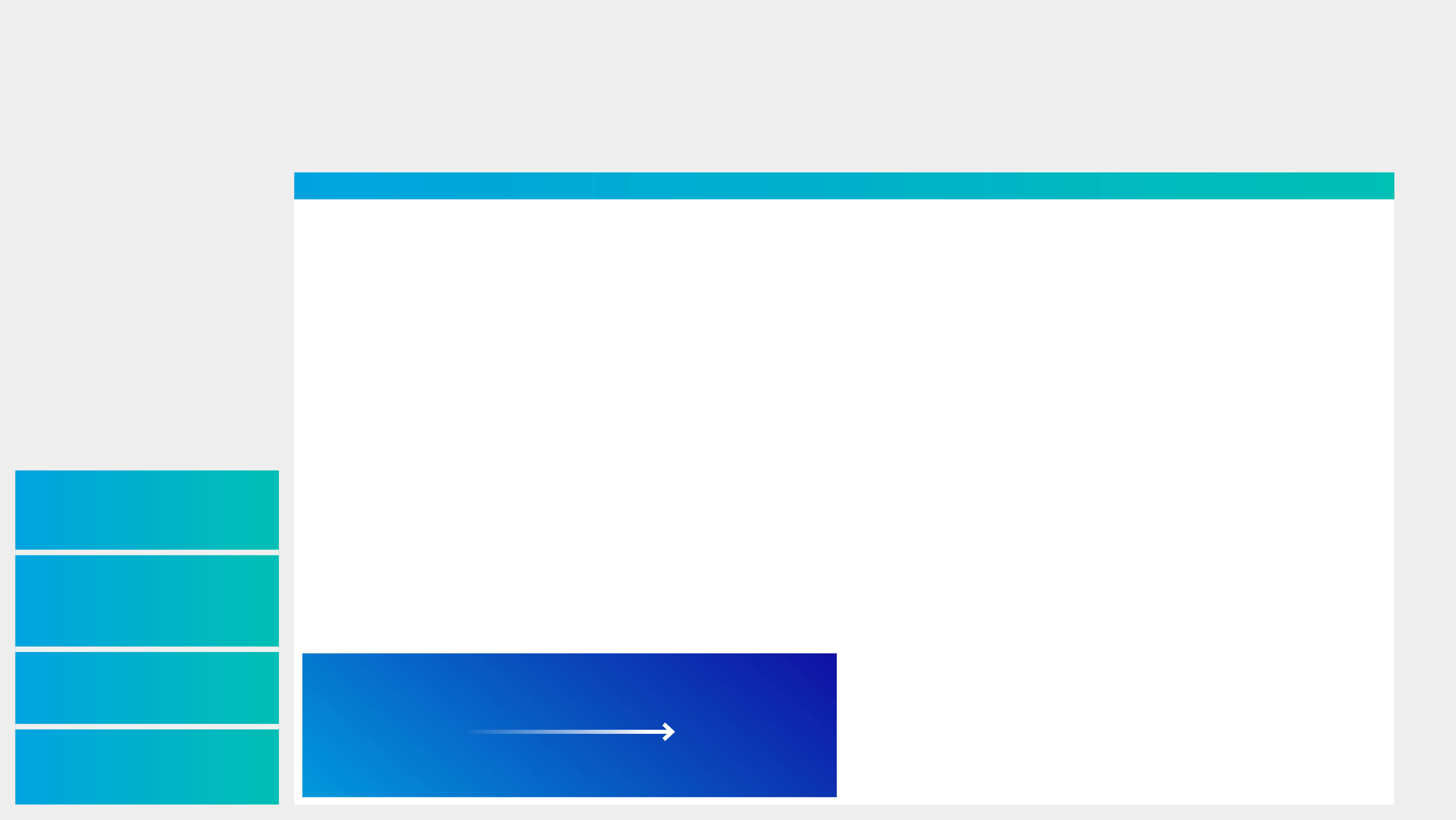
Our purpose is to unlock the
potential of people and society by
pushing technology to new limits.
Our vision is that we enable
ground-breaking technology to
solve some of humanity’s
toughest challenges. Our strategy
and priorities are designed to
deliver on these points and create
long-term sustainable value for
our stakeholders.
Our strategy is to | ||
1 | Grow our holistic lithography business | |
2 | Secure unique supply chain capabilities to ensure business continuity | |
3 | Move toward adjacent business opportunities | |
4 | Deliver on our ESG sustainability commitments | |
1. Grow our holistic lithography business |
Fueled by strong customer demand, we
expect substantial growth opportunities for
our holistic lithography business in the
remainder of this decade.
We will continue to increase the capacity of
our company to meet the demand across
all market segments, preparing for
cyclicality while sharing risks and rewards
fairly with all stakeholders.
We will remain focused on protecting and
gaining market share by delivering on our
technology roadmap, securing our
competitiveness, and addressing our
growth and execution challenges.
We aim to innovate responsibly by improving
the simplicity, sustainability, serviceability,
manufacturability and scalability of our future
lithography solutions. By considering the cost
and complexity constraints of a new
technology from day one, we can efficiently
allocate our resources and cost-effectively
deliver new capabilities to our customers.
2025 | 2030 | ||||
€30-40bn | €44-60bn | ||||
Annual revenue | Annual revenue | ||||
54-56% | 56-60% | ||||
Gross margin | Gross margin | ||||
Based on different market scenarios, shared
during our 2022 Investor Day, we presented
an opportunity to achieve the following in
2025 and 2030:
•In 2025: annual revenue between
approximately €30 billion and €40 billion
with a gross margin between
approximately 54% and 56%
•In 2030: annual revenue between
approximately €44 billion and €60 billion
with a gross margin between
approximately 56% and 60%
Our priorities
Our holistic approach to lithography
integrates a set of products that enables
chipmakers to develop, optimize and control
the semiconductor production process.
Through the continued execution of our
strategic priorities, we aim to deliver cost-
effective solutions that support all
applications, from leading-edge to mature
nodes, and enable the extension of the
industry roadmap into the next decade.
Our five priorities are: | ||||||
 | Strengthen customer trust |  | Enhance the value of EUV 0.33 NA for manufacturing | |||
Enhance our innovation and operational excellence capabilities to deliver on our roadmap for new product introductions and system deliveries, on time and with the highest quality, to address the needs of our customers. Increase our focus on sustainability through parts commonality and reuse, and drive improvements in the performance and energy efficiency of our products to reduce costs and waste. | Secure high-volume manufacturing performance and enhance the value of EUV technology by extending our product portfolio for future nodes. Improve cost effectiveness for our customers by improving system performance and energy efficiency. | |||||
 | Build a winning position in holistic lithography |  | Insert EUV 0.55 NA into high-volume manufacturing | |||
Build a winning position in edge placement metrology and process control to support customer needs. Integrate our complete product portfolio into a holistic lithography solution to optimize and control lithography performance. | Insert EUV 0.55 NA (High NA) in Logic and DRAM for high-volume manufacturing from 2025 onward to support customer roadmaps by simplifying patterning schemes and decreasing defect density. | |||||
 | Continue innovation leadership in DUV | |||||
Continue our innovation leadership, enabling execution of customer roadmaps by driving DUV to the highest level of performance while remaining cost- competitive. Expand our installed base and support customer needs. | Toward the end of 2023 and in light of our expectation that 2024 would be a year of transition, we reviewed our strategic business priorities, adding operational excellence and people empowerment as supplementary focus points. | |||||
ASML ANNUAL REPORT 2023 | OUR BUSINESS STRATEGY | STRATEGIC REPORT | CORPORATE GOVERNANCE | FINANCIALS | 30 | |
Focused on sustainable long-term value creation | ||||||
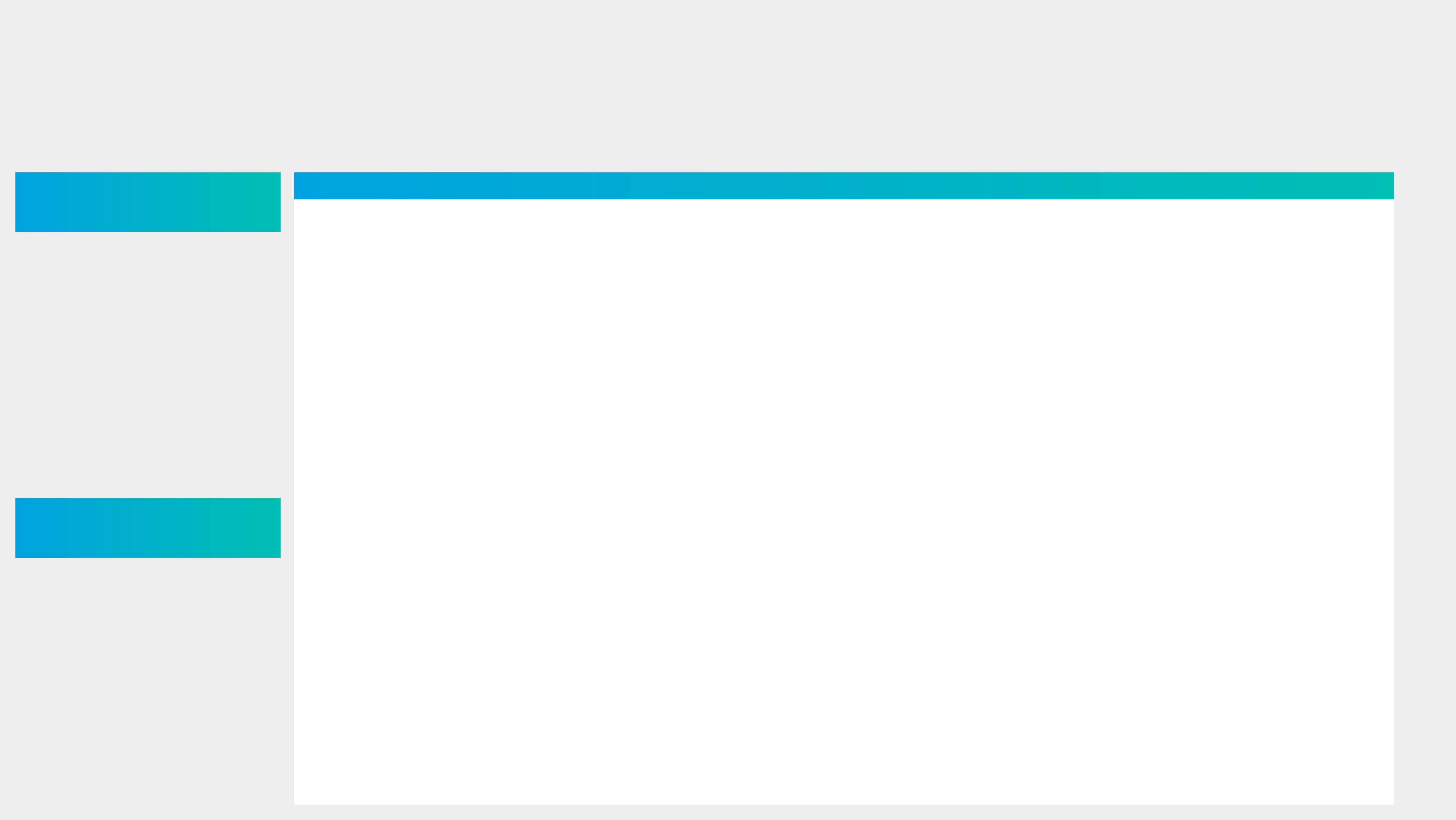
2. Secure unique supply chain capabilities | 4. Deliver on our ESG sustainability commitments | ||||||||||||||
We believe digital technologies can have a positive impact on the world – supporting society to make progress and addressing environmental and social challenges. Enabled by microchips, these technologies are fueling a digital transformation that is helping to address global challenges, such as tackling climate change by reducing energy consumption and GHG emissions. We recognize that new technology comes with new challenges – and we’re committed to using our innovations to enable the semiconductor industry to reduce its footprint. We aim to help our customers minimize the materials and energy required to produce advanced microchips. Within our own operations, including our supply chain, we aim to minimize our environmental impact while having a positive role in society for our employees, the communities around us and everyone involved in our innovation ecosystem. | 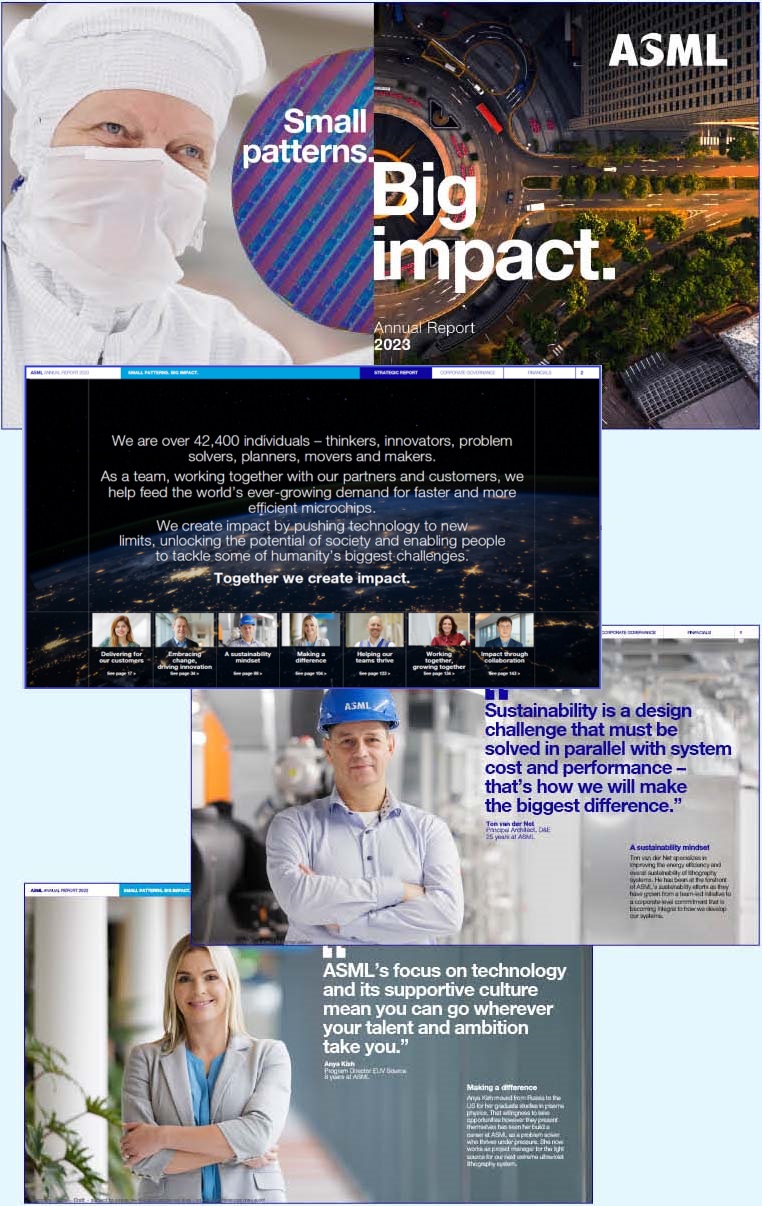 | Our ESG sustainability strategy Our aim is to create long-term sustainable value for our stakeholders, while also contributing to the United Nations’ Sustainable Development Goals (SDGs). Our ESG sustainability strategy is based on a materiality assessment that helps us identify and focus on the ESG sustainability topics where we can have the biggest impact. Environmental We want to continue to expand computing power but with minimal waste, energy use and emissions. That's why we focus on energy efficiency and climate action, and a circular economy. Social We want to ensure that responsible growth benefits all our stakeholders – we aim to offer an attractive workplace for all, to build and maintain a responsible supply chain, to fuel innovation in our ecosystem and to be a valued partner in our communities. | Governance We act on our responsibilities and aim to fully anchor them in the way we do business through our focus on integrated governance, engaged stakeholders and transparent reporting. | ||||||||||||
In order to deliver on our growth aspirations, we need to secure innovation, scale-up and continuity, while preserving sound business conditions and a constructive collaboration model with our unique technology suppliers. Our supply chain is a critical enabler of our ambition to grow our core business. Therefore, we are proactively assessing our supply base for projected demand and control of future roadmap-enabling capabilities. | |||||||||||||||
See how we're delivering on our ESG sustainability commitments | |||||||||||||||
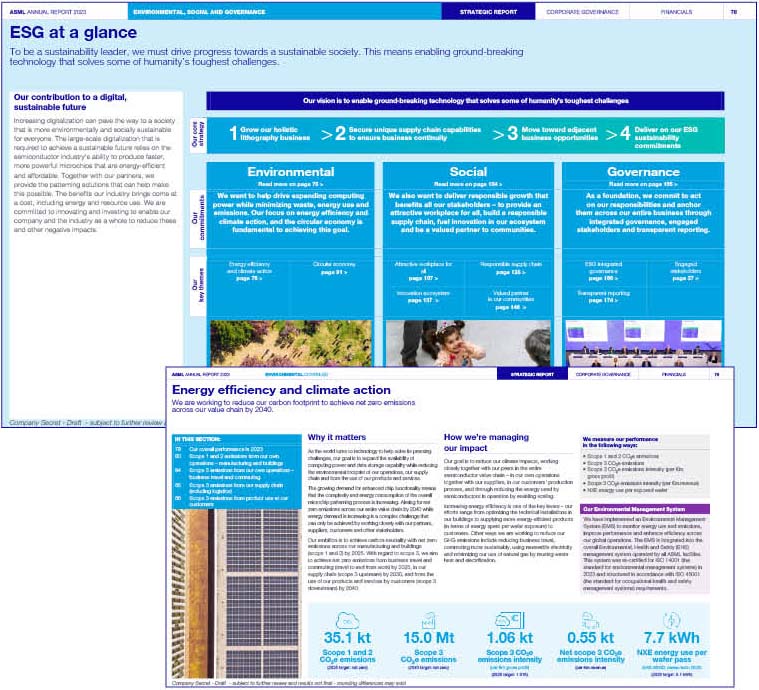 | |||||||||||||||
3. Move toward adjacent business opportunities | |||||||||||||||
Once core growth is secured, we can move into adjacent business opportunities representing additional growth opportunities. We aim to do this by focusing on synergetic opportunities at the forefront of holistic transistor scaling to best serve our customers. This includes leveraging product and technology synergies, and tapping into different future semiconductor scaling engines. | |||||||||||||||
Read more in ESG - Our material ESG sustainability | |||||||||||||||
ASML ANNUAL REPORT 2023 | OUR BUSINESS STRATEGY CONTINUED | STRATEGIC REPORT | CORPORATE GOVERNANCE | FINANCIALS | 31 | |
Focused on sustainable long-term value creation (continued) | ||||||
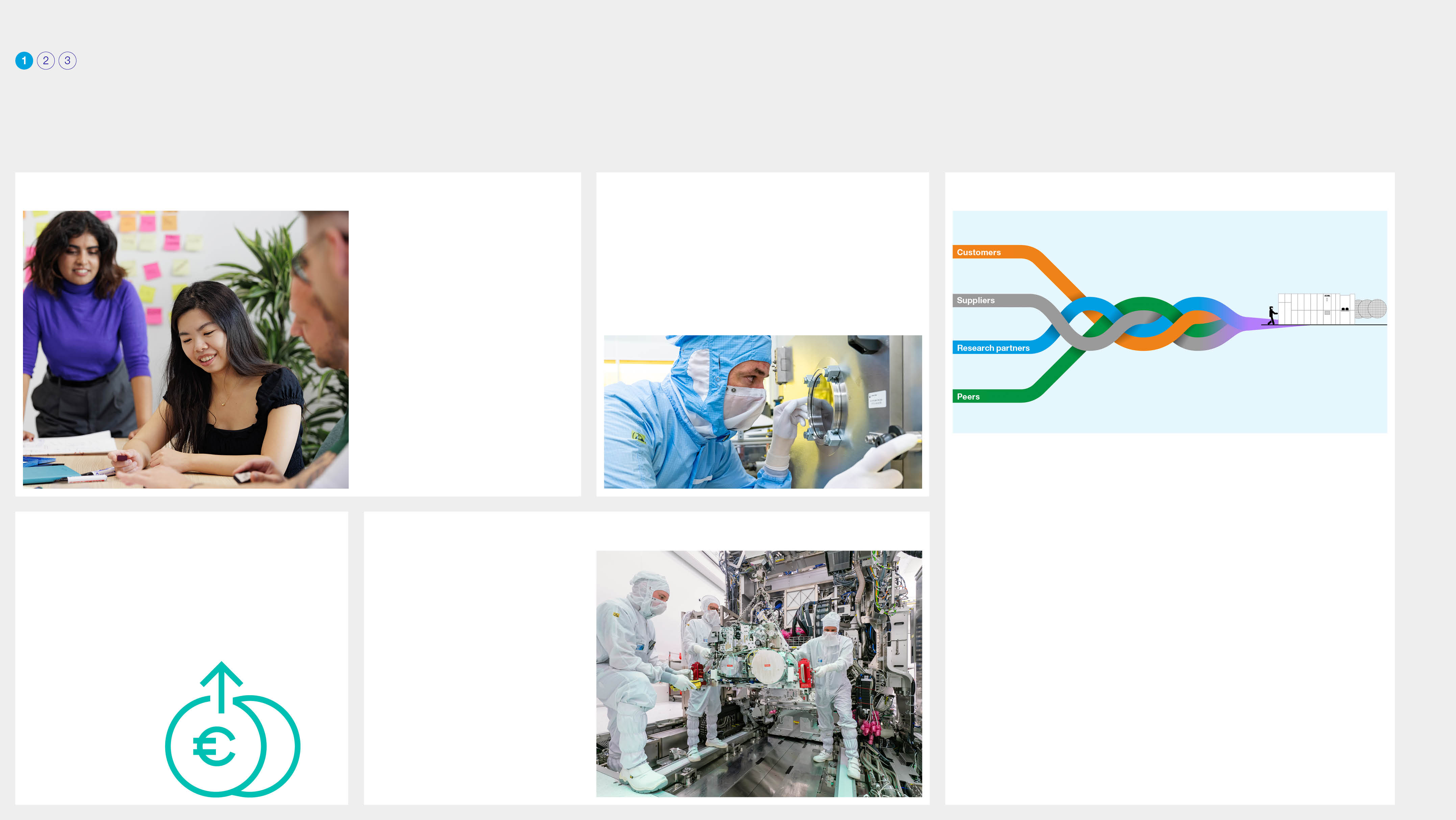
People and culture | Manufacturing facilities | Ecosystem of innovation partners | ||||||||||
We depend on more than 42,400 talented, dedicated and highly motivated employees who live our values of challenge, collaborate and care. Every day, our colleagues in R&D, manufacturing, customer support, sourcing and supply chain, and support functions take on the exciting challenge of building and maintaining the most advanced lithography, metrology and inspection systems in the world. | We have eight manufacturing sites in the EU, US and Asia that provide high-precision, highly controlled environments where we assemble, test and deliver our complex lithography and metrology and inspection portfolio, from prototype to final product. | |||||||||||
Our lithography solutions are the result of strong partnerships based on trust, respect, and shared risks and incentives to compete and drive innovation. | ||||||||||||
C a p i t a l | Capital | Innovation | Customers We believe a true partnership with our customers is vitally important, to ensure we share the risks and rewards of what we do. | Research partners We co-develop R&D expertise within a wide network of technology partners, such as universities and research institutions – accelerating innovation and giving us access to a large leading-edge knowledge base across a wide range of technologies. | ||||||||||
We have strong capital reserves, underpinned by a robust balance sheet. Total shareholders' equity at the end of 2023 amounts to €13.5 billion on a consolidated balance sheet total of €40.0 billion and net cash provided by operating activities of €5.4 billion in 2023. | In 2023, we spent a total of €4.0 billion on R&D. We do not innovate alone – our more than 15,500 R&D employees collaborate closely within an innovation ecosystem of key partners in the value chain. | |||||||||||||
Suppliers | Peers | |||||||||||||
Our lithography systems comprise thousands of parts, with most of them co-designed with and made by our suppliers. Early involvement of our suppliers has always been a key part of our business model. | Our semiconductor industry peers optimize the total manufacturing process by delivering complementary process equipment, critical materials, essential data and new processing steps. | |||||||||||||
ASML ANNUAL REPORT 2023 | OUR BUSINESS MODEL | STRATEGIC REPORT | CORPORATE GOVERNANCE | FINANCIALS | 32 | |||
What we need to create sustainable long-term value | ||||||||
The depth and breadth of our resources and the relationships we build are key to our continued success in growing a sustainable holistic lithography business. | ||||||||
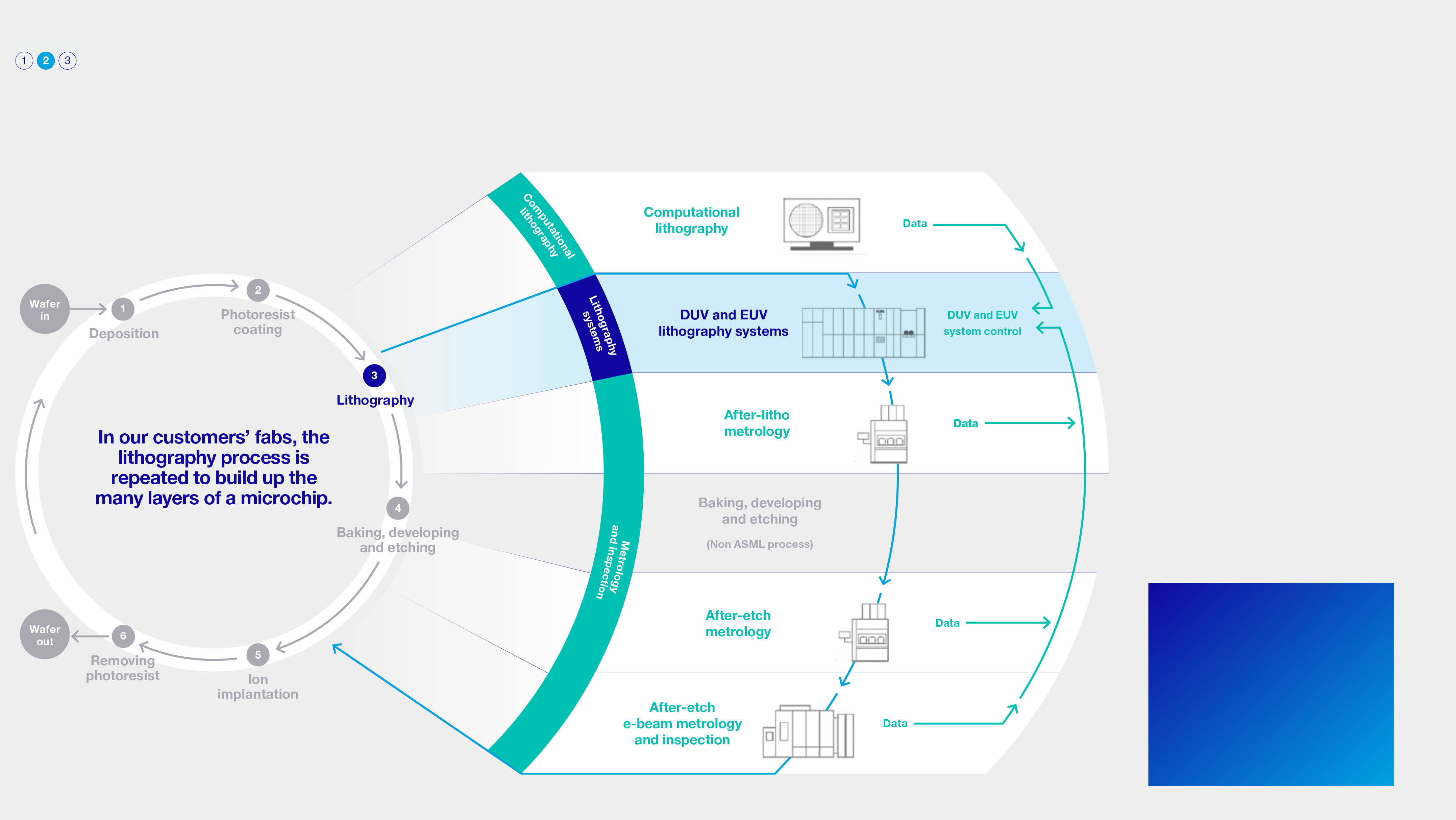
ASML ANNUAL REPORT 2023 | OUR BUSINESS MODEL CONTINUED | STRATEGIC REPORT | CORPORATE GOVERNANCE | FINANCIALS | 33 | ||
Creating sustainable long-term value through holistic lithography | |||||||
Our holistic approach is based on the intelligent integration of computational lithography, lithography systems, and metrology and inspection. | |||||||
Computational lithography
Computational lithography is used to
predict and enhance the process window
of our lithography systems by calculating
the optimal settings, depending on the
specific application. This takes place in
the research and development phase,
before a lithography system goes into
high-volume manufacturing.
Metrology and inspection
We have a suite of tools – optical and
e-beam metrology, high-resolution
inspection, and scanner and process
control software solutions – which control
the process window and help ensure that
the lithography system operates optimally
in the fab environment. Lithography is the
only way in which in-line adjustments can
optimize performance as part of the
manufacturing process.
Holistic lithography enables
shrink by optimizing setup and
control of a lithography system’s
process window for high-volume
manufacturing – improving the
system’s availability, reducing
downtime and overall costs, and
optimizing yield (or number of good
wafers per day) for our customers.

 |  |  |  |  | |||||||||||||||||||
Customers | Employees | Suppliers | Shareholders | Society | |||||||||||||||||||
Our world-leading lithographic systems enable our customers to develop ever more powerful and energy-efficient chips for new applications and devices. At the same time, we help our customers reduce costs and their environmental footprint. | ASML is a growth business providing employment opportunities around the world. We invest in people’s career development and well-being, and provide a diverse and inclusive environment where people can achieve their full potential. | We innovate together with our strategic partners, sharing knowledge and tapping into each other’s technology expertise to drive ever higher levels of complexity and capability. Long- term relationships, close collaboration, transparency and a commitment to sustainability with our suppliers are key to our success. | The effective and disciplined investment of free cash flow drives the profitable growth of our company, and delivers solid financial performance and a healthy financial position. This underpins our cash return policy through share buybacks and dividends. | We play an active role in the communities where we operate, recognizing that when the community thrives, we thrive. And our collaborative ecosystem nurtures innovation and benefits society. For example, we share our expertise with universities and | research institutes, support young tech companies and promote science, technology, engineering and mathematics (STEM) education worldwide. We are also committed to creating sustainable value by reducing our environmental footprint, both from our operations and during the use of our products and services. | ||||||||||||||||||
€27.6bn | 80.3% | €15.5bn | €3.2bn | €413 | 88% | ||||||||||||||||||
Total net sales | Employee engagement score | Total sourcing spend | Free cash flow1 | Community partnership program: amount invested per employee | % Reuse rate of parts returned from field and factory | ||||||||||||||||||
600 | 27% | 5,100 | €6.10 | €16.4m | 35.1 kt | ||||||||||||||||||
Net system sales (in units) | Gender diversity – % inflow of women | Number of suppliers | Proposed annualized dividend per share | Contribution to EU research projects | Emissions from manufacturing and building (scope 1 and 2) | ||||||||||||||||||
#2 | 3.6% | 57% | €1.0bn | 95% | 15.0 Mt | ||||||||||||||||||
TechInsights customer satisfaction ranking | Attrition rate | % supplier spend covered by commitment to sustainability via Letter of Intent (LOI) | Share buyback | % of systems sold in the past 30 years still active in the field | Indirect emissions from total value change (scope 3) | ||||||||||||||||||
Read more in Engaging with our stakeholders – Customers | Read more in Engaging with our stakeholders – Employees | Read more in Engaging with our stakeholders – Suppliers | Read more in Engaging with our stakeholders – Shareholders | Read more in Engaging with our stakeholders – Society | |||||||||||||||||||
1. Free cash flow is a non-GAAP measure and is defined as net cash provided by operating activities (2023: €5,443.4 million and 2022: €8,486.8 million) minus purchase of property, plant and equipment (2023: €2,155.6 million and 2022: €1,281.8 million) and purchase of intangible assets (2023:
€40.6 million and 2022: €37.5 million). We believe that free cash flow is an important liquidity metric for our investors, reflecting cash that is available for acquisitions, to repay debt and to return money to our shareholders by means of dividends and share buybacks. Purchase of property, plant
and equipment and purchase of intangible assets are deducted from net cash provided by operating activities in calculating free cash flow because these payments are necessary to support the maintenance and investments in our assets to maintain the current asset base.
ASML ANNUAL REPORT 2023 | OUR BUSINESS MODEL CONTINUED | STRATEGIC REPORT | CORPORATE GOVERNANCE | FINANCIALS | 34 | ||
The sustainable long-term value we created for our stakeholders in 2023 | |||||||
Our success depends on strong, sustainable relationships with all stakeholders in the value chain. We aim to create sustainable value for them, and to use their input to develop our strategy, products and services. | |||||||

My new role will help us safeguard our innovation power as we evolve to support future growth.” | ||
Ron Kool | ||
Head of Business Performance Improvement | ||
26 years at ASML | ||
Embracing change, driving innovation | |
Ron Kool spent over 25 years in various product-related roles within ASML, most recently leading our deep ultraviolet (DUV) lithography business. In 2023, he changed direction to use the experience he has gained in improving our technology to help us improve our business processes. |
ASML ANNUAL REPORT 2023 | SMALL PATTERNS. BIG IMPACT. | STRATEGIC REPORT | CORPORATE GOVERNANCE | FINANCIALS | 35 |

A strong track record
When I joined ASML in 1997, it had fewer
than 2,000 employees. Today, it has over
42,400. We are shipping more products
each year and supporting many more
installed systems in the field. And we have
plans to grow further to support future
developments in the semiconductor industry.
ASML has always been driven by
technology. We employ the best technical
minds and let them focus on innovation. But
with the massive growth, we have had to
evolve how we work around the technology.
At ASML, we have always seen ourselves as
technology firefighters – ready to tackle any
challenge that comes our way. But
firefighters need to be organized or bad
things can happen. So ASML has continually
improved its processes for developing new
products and running the business so that
our innovators can continue to focus on what
they do best: innovation.
Building on strong foundations
The challenge is to do that in a structured
way. Business processes are, by nature,
cross-sector – they govern how different
parts of the company work together to
deliver what customers and shareholders
want. You need to make sure improvements
in one area don’t cause problems in others.
That means having insight from all affected
groups while keeping the end goal clearly in
focus.
In 2023, I stepped away from a career track
in technical and business line management
to start a Business Performance
Improvement (BPI) group. The group aims to
be a catalyst, to create a way of working that
makes cross-sector business performance
improvements more efficient.
Perhaps unsurprisingly, given my history, I
am copying our PGP approach as a blueprint
for BPI. In particular, we’ve adopted the
PGP’s key decision process, whereby we
only move on to the next step if everyone
agrees. It’s very much an ASML-tailored
approach, but it works well in our product
development, and I believe it will help on the
BPI side too: If you actively say yes to
something, you are more committed to it.
Evolving for the future
We currently have around 10 ongoing BPI
initiatives, covering areas such as reuse,
supporting field operations, planning and IT.
In each case, execution is handled mostly by
the main sector involved. Our role is to help
them communicate with the other sectors to
understand the wider impact and know who
to connect with to address issues. So, our
planning department is responsible for
improving planning, but they need input from
our sourcing and customer-facing
departments to make that happen.
Another example is an initiative to improve
how we ship systems to customers. Any
changes to shipping impact the whole work
chain for many operational sectors. First, we
need alignment with our customers, so sales
and customer support must be involved. But
we also need to consider the internal way of
working for departments such as finance,
because changes to shipping practices
could affect our compliance with customs
regulations and tax rules. Having the right
people from all the necessary departments
involved from the start allows us to discuss
and solve those issues at an early stage, and
not have to spend time fighting fires later.
Improving business processes is an ongoing
challenge for any company. At ASML, we
want to safeguard our innovation-driven way
of working while we evolve. That was my
motivation for making the change to BPI. It’s
a step we need to take to prepare for further
growth and the evolving needs of our
customers.
ASML ANNUAL REPORT 2023 | SMALL PATTERNS. BIG IMPACT. CONTINUED | STRATEGIC REPORT | CORPORATE GOVERNANCE | FINANCIALS | 36 | |
We engage with our stakeholders on an ongoing basis, working hard to understand how we impact them and how we can best meet their needs. This approach plays a key role in our ability to build stakeholder relationships based on mutual trust. | ||
A new Stakeholder Engagement Policy has been published. Read more at asml.com | ||
Our stakeholders – customers, employees, suppliers, shareholders and society – can affect or be affected by our business, and we embrace continuous open dialogue and knowledge-sharing for the benefit of all parties. | 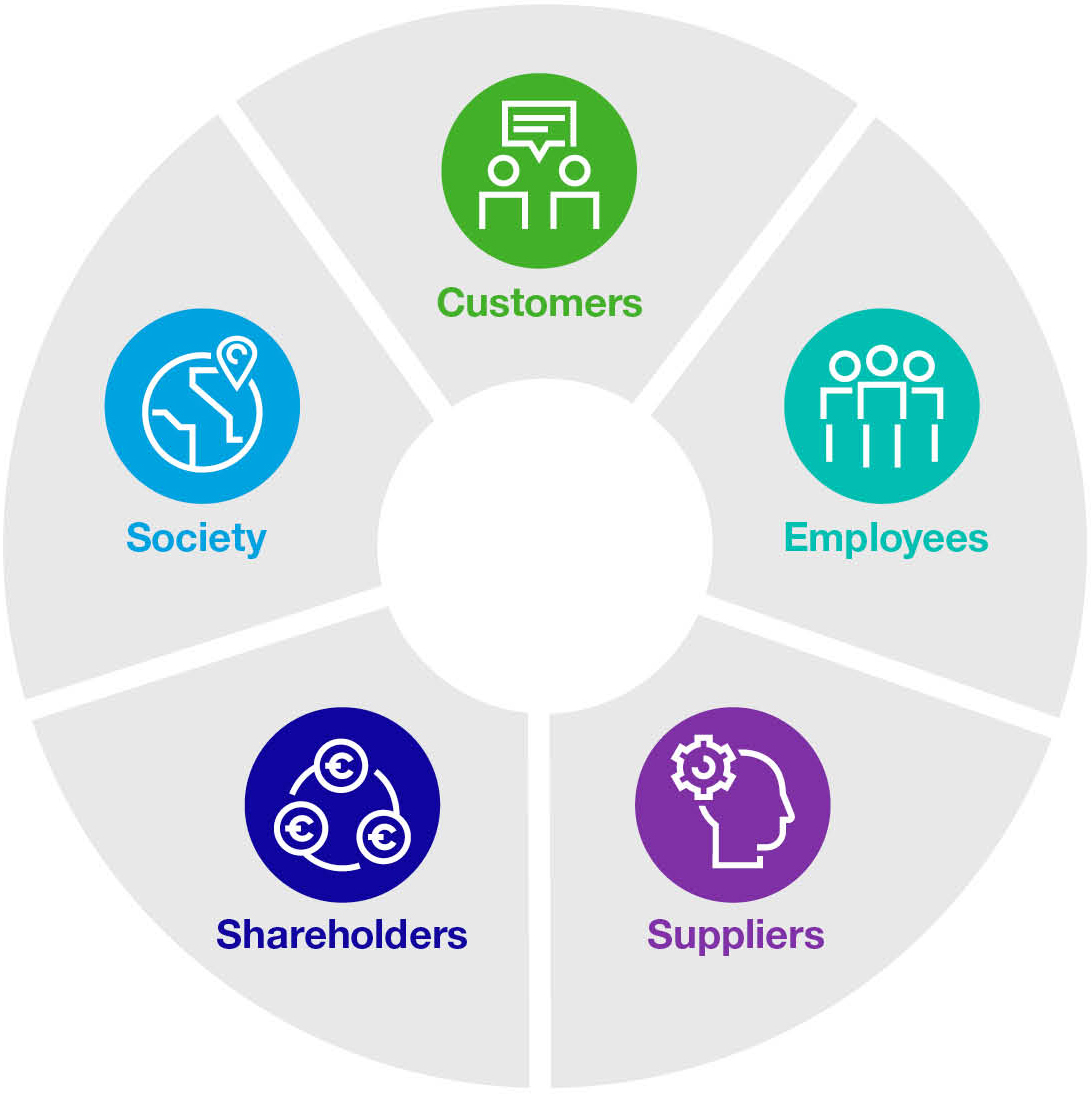 | |
 | At each stage of the customer relationship, we aim to foster trust, advocacy and continuous engagement, with the goal of achieving complete customer satisfaction and loyalty. As customer requirements become more complex, it takes longer to align with a shared vision, so we seek to start earlier in the process. Transparency is key, and our customer intimacy strategy helps us to leverage our innovations and develop even more sophisticated solutions with our customers. | ||||||
Customers | |||||||
What’s happening in their world | |||||||
Macroeconomic uncertainty across different market segments led our customers to more carefully control capital expenditure and cash flow. In 2023, the market continued to be influenced by governments focusing on incentives to encourage the construction of semiconductor manufacturing facilities in their respective countries through chips acts. This led our customers to look into expanding their manufacturing in these new geographical locations. However, the readiness of these 'off-shore' facilities has been impacted due to a shortage of experienced staff in these new locations. In addition, new regulations were announced and imposed by the Dutch, US and Japanese governments regarding the export control of advanced semiconductor equipment impacting the customers in China that are using advanced lithography tools. | We have deployed improvement actions identified in our 2022 customer survey. This has helped us focus on truly understanding what customers need from us, and validating that we are on the right track with the right improvements. We have updated our customers regularly on the progress being made, and in September 2023 we sent out our latest survey, including a new set of questions to measure customer trust. Survey results reveal that our customers have high levels of trust in us, mainly driven by our transparency and commitment to fairness in driving mutual success. They ask us to listen closely to their feedback, resolve issues in a timely manner, provide them with shorter delivery times for good-quality products and continue pushing the technology forward to meet their current and future needs. | ||||||
How we respond | How we engage | ||||||
We had delivery challenges for our DUV systems (in light of the heightened demand) and we kept our customers informed about shipment status and progress in our capacity plans. To respond to their demand faster, we implemented the fast shipment solution as a standard way of working in 2023. We continued to closely collaborate with our customers to support them in settling in to their new manufacturing locations by providing them with operational flexibility where needed. We worked with governments and our customers to minimize the potential impact of new regulations on our customers’ deliveries. In new product design, we are increasing our focus on reducing energy consumption of our systems. | •Regular meetings with our key customers •Technology Review Meetings where our senior technology experts, our Chief Technology Officer (CTO) and our Chief Business Officer (CBO) discuss technology roadmaps and requirements with customers •Executive Review Meetings where members of our senior management team and Board of Management discuss business and strategies with customers •Operational Review Meetings where we review topics related to our customers’ operational activities •Annual customer feedback survey •Voice of the Customer program, which provides firsthand feedback about our customers’ needs and challenges for employees without direct access to customers •Various technology symposia and special events | ||||||
ASML ANNUAL REPORT 2023 | OUR BUSINESS MODEL CONTINUED | STRATEGIC REPORT | CORPORATE GOVERNANCE | FINANCIALS | 37 | |
Engaging with our stakeholders | ||||||
 | We strive for engaged employees who are proud to work for ASML and deliver jointly our vision and our ambitions as a company. | ||||||
Employees | |||||||
What’s happening in their world | How we engage | ||||||
Our growth in recent years has been accompanied by a large increase in our workforce. This has brought benefits – such as a more diverse employee base – as well as challenges. As the organization becomes more complex, and the expectations of our customers and stakeholders increase, the need to engage all our employees becomes even more crucial. Our employees feel respected and have trust in each other. They continue to raise suggestions to improve processes, and they like to have more opportunities to participate in sustainability initiatives. | •Employee engagement survey •Training and development programs, including employee evaluation and feedback •ASML's Speak Up service •Works Council/Unions •Employee networks, such as Next, Women/WAVES, Seniors, Parents, Veterans, Green ASML, Atypical, SHADES and Proud •ASML Ambassadors community, aiming to attract and inspire talent, engage colleagues and show the community our appreciation •Internal communication and awareness, for example through the intranet, our Ethics program, department employee meetings and interactive lunch sessions with Board members •Onboarding program for new employees •All-employee meeting and senior management meetings | ||||||
How we respond | |||||||
Since the pandemic, employee expectations have continued to change, especially around work-life balance, hybrid working and well-being. Staying on top of these trends and understanding how the world of work and expectations is evolving is a key part of our strategy to attract and retain talent. Inclusion, well-being and job enablement are the key themes we will focus on to further increase our engagement. Cross-collaboration and sharing knowledge across teams also remain subjects for improvement. | |||||||
 | We engage with our suppliers to help deliver our innovations. They are critical to our value chain and our ambition to be a sustainable leader in the semiconductor industry. | |||||
Suppliers | ||||||
What’s happening in their world | How we engage | |||||
Over recent years, the world of our suppliers has been quite turbulent. First of all, geopolitical uncertainties led to disruptions in our supply chain due to less availability of materials as well as increased price levels. Furthermore, on a broader scale, the inflationary pressure has hit our suppliers, mainly in areas of raw materials, energy and wages. And finally, throughout all those challenges, ASML continued to grow, and despite short-term market uncertainties was still requiring suppliers to build up further capacity for future growth while putting pressure on cost and quality performance. The future growth in demand of ASML’s customers can only be met if our suppliers are capable and willing to keep up. | •ASML’s Suppliers' Day •Direct interactions via supplier account teams / sourcing account leaders •Supplier audits •Site visits •Newsletter •Responsible Business Alliance (RBA) self- assessment questionnaire (SAQ) •ASML's Speak Up service •Knowledge sessions on ESG sustainability | |||||
How we respond | 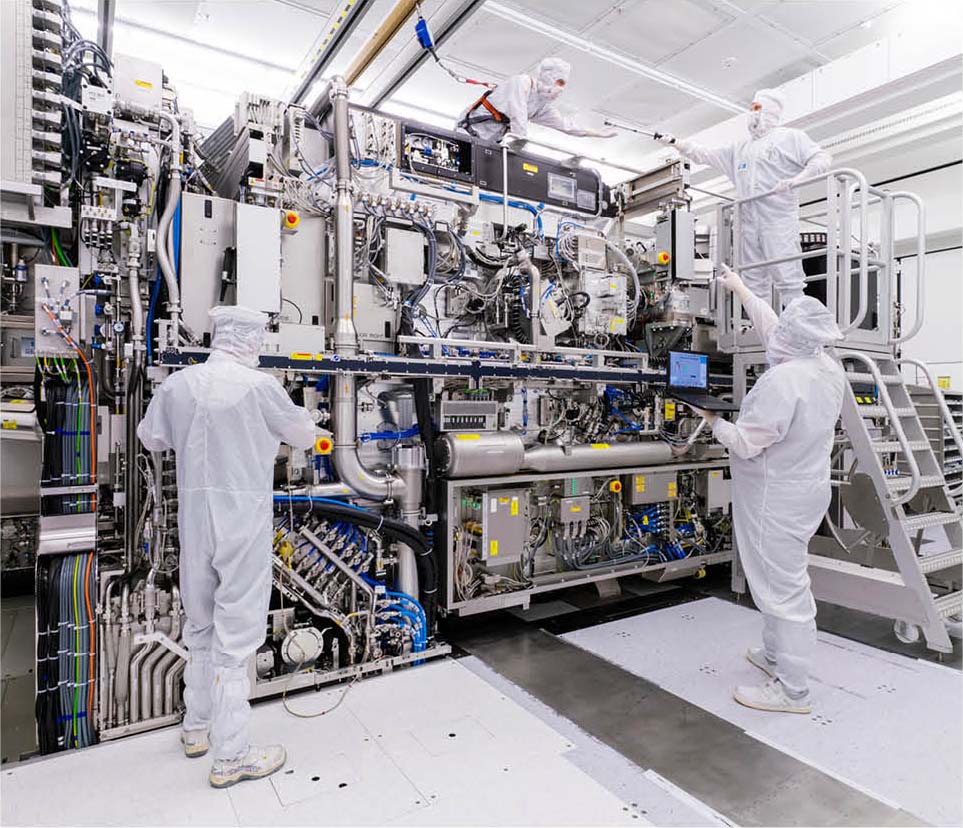 | |||||
Our commitment to our suppliers is that we want to maintain and build a strong business relationship based on mutual trust. We listen to our suppliers when they openly share their pain points and challenges. We are implementing improvements relating to quality issues, early supplier involvement during the industrialization phase of new product introductions, reducing cycle time and cost, planning with our suppliers and ESG sustainability. | ||||||
ASML ANNUAL REPORT 2023 | OUR BUSINESS MODEL CONTINUED | STRATEGIC REPORT | CORPORATE GOVERNANCE | FINANCIALS | 38 | |
Engaging with our stakeholders (continued) | ||||||
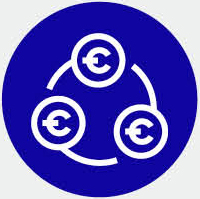 | We aim to help shareholders – as well as financial and ESG sustainability analysts – to understand our long-term investment opportunities. We communicate with them about our financial growth strategies and opportunities, financial and ESG sustainability performance, and our outlook and shareholder returns. | |||||
Shareholders | ||||||
What’s happening in their world | How we engage | |||||
For investors in the semiconductor industry, 2023 was an interesting, highly dynamic year in which ASML showed impressive sales growth while overall semiconductor sales went down. Key focus areas for investors were to get a better sense of when the industry will recover from its short-term cyclical downturn in order to understand how 2024 will shape up. There were also positive developments of (generative) AI gaining strong traction. In addition to uncertainties around a potential recession, inflationary costs, the Russia-Ukraine war and the conflict in the Middle East, the Dutch and US governments published new regulations in 2023 regarding the export controls of semiconductor equipment. | •AGM •Investor calls and Investor Days •Company quarterly results presentations and press releases •Various (ESG) investor conferences and roadshows •Various sustainability questionnaires, assessments and survey feedback •Direct personal interactions in line with our Bilateral Contacts Policy as published on our website | |||||
How we respond | 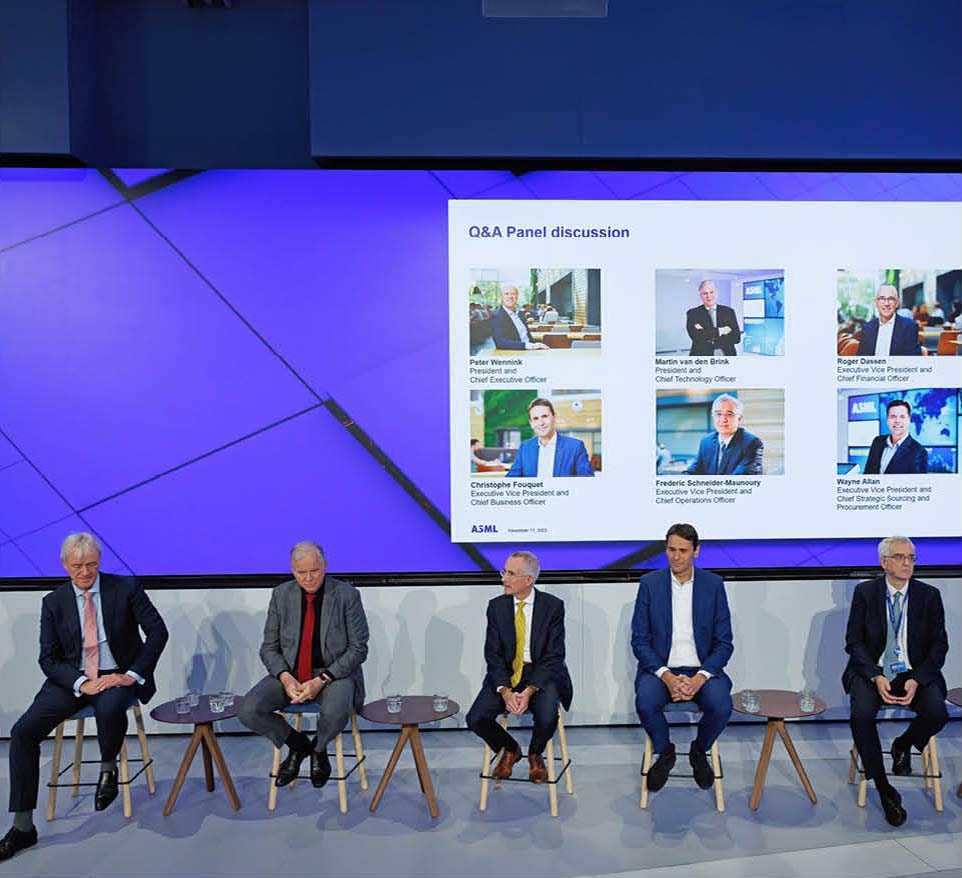 | |||||
During the year, ASML’s management and Investor Relations team actively engaged with our investor community to discuss specific topics that are relevant to ASML’s equity story. We focus on being transparent, accessible, credible, reliable and responsive. We actively engage with the investor community via a large number of (ESG-related) conferences, roadshows and conference calls. We also encourage investors to visit our Veldhoven (NL) or Wilton (US) facilities to be able to discuss our capacity expansion plans as well as our technology challenges and opportunities in our ASML Experience Centers. | ||||||
 | We know that our actions and our activities have an impact beyond ASML – on the environment, for example, and on the world around us in its broadest sense, which is how we define society. We engage with organizations, communities and other bodies in society on a wide range of issues – from reducing our environmental footprint to regulatory matters and fulfilling our commitment to playing an active role in the communities where we operate. | ||||||
Society | |||||||
What’s happening in their world | How we engage | ||||||
Increasingly the local community feels the impact of the rapid development of our headquarters in the Brainport Eindhoven region, home to around half of ASML’s employees. Our community stakeholders expect ASML to take its fair share in keeping the region attractive and inclusive for all community members, with sufficient affordable housing, sustainable transportation, a strong (technology) education system for all and opportunities for the underserved. Meanwhile, our headquarter campus expansion should take into account the interests of our close neighbors. | With industry unions and associations •Member conferences and technical forums •Member consultation on standards •Brainport Eindhoven With governments and authorities •Dialogue with tax authorities •Relevant EU roundtable discussions •Compliance reporting •Proactive dialogue with government, authorities and municipalities With communities and other bodies •In the Veldhoven region, via regular dialogue at six- weekly intervals with local government representatives and local residents. In addition, we regularly hold information events, open house events, town halls and other opportunities for discussion, and also invite local input through the 'ASML Dichtbij' (ASML close by) section of our website. • At our site in Wilton in the US, we held information sessions during 2023 where local officials and neighbors could discuss our expansion plans • Quarterly surveys of a random sample of the 800,000 residents of the Brainport Eindhoven region • Regular discussion between the managers of our 17 community programs and various stakeholders and specialists • Through (social) media, conferences and other mass communication channels, we have an intensive communication plan to inform and engage with stakeholders around our communities | ||||||
How we respond | |||||||
Launched in collaboration with our ESG Sustainability team at the start of 2023, ASML’s Society & Community Engagement team focuses on four areas: boosting the attractiveness of the communities, aiming to keep these communities inclusive, promoting science and technology education, and supporting ESG innovation. Within these focus areas, we and our stakeholders have identified and formed 17 program strategies that we began to execute during 2023. | |||||||
Read more in Social - Valued partner in our communities | |||||||
Operating in an international industry with a global value chain where strong incentives to compete and drive innovation are key, we work with and collaborate with governments on all levels (national, regional and local) to ensure our growth and objectives are clear and can be supported. Read more in our ASML Government & External Affairs Report at asml.com | |||||||
ASML ANNUAL REPORT 2023 | OUR BUSINESS MODEL CONTINUED | STRATEGIC REPORT | CORPORATE GOVERNANCE | FINANCIALS | 39 | |
Engaging with our stakeholders (continued) | ||||||

Q | Can you reflect on ASML's financial performance in 2023? |
Roger: In short, we did what we said we
expected to do at the beginning of the year.
We delivered on our expectations in spite of
the challenges.
We have reported an excellent financial
performance, with sales up by 30% and a
gross margin of 51.3%. When you take the
macro environment into account – inflation,
high interest rates, falling GDPs, geopolitical
tensions and a downturn in the
semiconductor industry – this achievement
was little short of remarkable.
Diving into some further details, we showed
a strong increase in net income compared to
2022. We were able to successfully place a
bond amounting to €1.0 billion. In addition to
this, we repurchased shares for a total
consideration of €1.0 billion and paid
dividends totaling €2.3 billion.
Free cash flow1 was low compared to
previous years by design. In a challenging
economic climate, we took the decision to
help our customers navigate their liquidity
issues by offering extended payment terms,
while continuing to support our supply chain.
Understanding and balancing the interests of
all our stakeholders is one of our most
important responsibilities, and in this instance
helping our ecosystem partners through
difficult times was the right thing to do.
However, this inevitably meant delayed
payments and therefore reduced cash flow.
ASML ANNUAL REPORT 2023 | Q&A WITH THE CFO | STRATEGIC REPORT | CORPORATE GOVERNANCE | FINANCIALS | 40 | |
Robust results in a challenging macro environment | ||||||
In conversation with our Executive Vice President and Chief Financial Officer | ||||||
Roger Dassen | ||||||
We delivered on our expectations in spite of the challenges.” |
Roger Dassen |
Executive Vice President and Chief Financial Officer |
1. Free cash flow is a non-GAAP measure and is defined as net cash provided by operating activities (2023: €5,443.4 million and 2022: €8,486.8 million) minus purchase of property, plant and equipment (2023: €2,155.6 million and 2022: €1,281.8 million) and purchase of intangible assets (2023: €40.6 million and 2022: €37.5 million). We believe that free cash flow is an important liquidity metric for our investors, reflecting cash that is available for acquisitions, to repay debt and to return money to our shareholders by means of dividends and share buybacks. Purchase of property, plant and equipment and purchase of intangible assets are deducted from net cash provided by operating activities in calculating free cash flow because these payments are necessary to support the maintenance and investments in our assets to maintain the current asset base. |

Q | What were the main drivers for that performance? |
Roger: Firstly, we had been significantly
supply-constrained in both 2021 and 2022,
and over the last 12 months we saw those
constraints ease. The supply bottlenecks
created by COVID-19 restrictions have now
worked their way through the system. This
meant that over 2021 and 2022, we built up
a very significant backlog that we could start
eating into in 2023.
Secondly, although we have received
significant orders from customers in China
for a number of years, our fill rate has been
less than 50%. This meant that, while some
of our other customers were understandably
taking their foot off the accelerator, we could
take the opportunity to step up our China
order fill rate this year.
Q | How do you manage industry cyclicality? |
Roger: Cyclicality is no stranger to this
industry, obviously. Key is to focus on the
longer term while managing short-term cost
and working capital challenges. The secular
trends remain very strong and we believe
that the years ahead will see a significant
uptick in the market – so while we address
the downcycle, we also have to prepare for
the upcycle that all the indicators say is
around the corner.
Managing costs is always important, so
during 2023 we focused on our selling,
general and administrative costs, and also
looked after our cash. In addition, we slowed
our hiring pace. In the last two years we had
boosted our staff by around 10,000 FTEs. In
2023 we were able to put more resources
and effort into making them feel welcome
and training them in our values and how we
work.
We have also spent considerable time
making sure that our organization is fit for
purpose. From finance and tax to IT, HR and
other areas, our enabling functions exist to
support ASML’s growth. This means we
must continually focus on working together
and not in silos, collaborating and being
totally aligned on end-to-end processes and
solutions that meet customer needs instead
of each department doing their own thing.
We have looked at all our functions
collectively from an overall business
perspective, identifying challenges around
issues such as the pre-building of tools next
year. In addition, we have come together to
have the right capacities and processes in
the right places at the right times to meet
those challenges.
Q | What other matters have required focus during 2023? |
Roger: Reporting requirements continue to
put more pressure on our teams, particularly
around ESG. For example, the Corporate
Sustainability Reporting Directive (CSRD)
comes into force for us over the financial year
2024 and involves reporting on many more
data points. At ASML we are already fairly
advanced in our ESG reporting. Nonetheless,
several new disclosure requirements,
including data points, have been introduced,
and each of these require robust reporting,
targets and strategies, not just for next year
but also for the longer term. We have
developed the appropriate action plans to
close the approximately 900 gaps we
identified, and we track our progress
accurately and consistently. All of this means
a lot of work, not just for the enabling
functions, but for everybody in the business.
ASML ANNUAL REPORT 2023 | Q&A WITH THE CFO CONTINUED | STRATEGIC REPORT | CORPORATE GOVERNANCE | FINANCIALS | 41 | |
Robust results in a challenging macro environment (continued) | ||||||
In conversation with our Executive Vice President and Chief Financial Officer | ||||||
Roger Dassen | ||||||
We believe that the years ahead will see a significant uptick in the market.” |
Roger Dassen |
Executive Vice President and Chief Financial Officer |
€27.6bn |
Total net sales |
51.3% |
Gross margin |
€3.3bn |
Returned to shareholder |

Cybersecurity is another area that required
serious focus. We face two different kinds of
cyber and data security threats. We have
external exposure, where outside forces try
to penetrate our systems. This is continuous
warfare – as we increase our defenses, so
will our combatants – and we have done a
lot of good work on that front. As well as
making our lines of defense and detection
capabilities as strong as possible, we have
also continued to invest in how to counter
and mitigate the impact of a successful
penetration. Secondly, there is the internal
exposure – how do we ensure that
employees and others who have access to
our systems keep data only in a safe
environment, and do not export this data to
private devices or places that are not secure.
Our response has been to change our way of
working. For decades, ASML has thrived on
the notion of open innovation, but now we
have to conclude that this comes with risks
that have to be mitigated, and we have to
ensure that people only have access to
information that they need. Although this is
counter-cultural to an extent, everybody
understands that security is vital to the
company.
Q | What’s the outlook for 2024 and beyond? |
Roger: We believe that the market has now
reached the lowest point of the dip, and
although we cannot predict the exact nature
of the slope ahead, the recovery is nascent.
The longer-term trends are unmistakable –
artificial intelligence, electrification and the
energy transition are happening, and those
factors are underlined by the large number of
fabs that are set to open in the next couple
of years. All of these new fabs will need our
tools.
Amid these very encouraging signs, we are
looking at 2024 and 2025 as a whole and
making output plans for the combined
period. For 2024, we envisage a transition
year with 2024 revenue to be similar to 2023.
We will continue to be frugal, managing our
costs and cash while not compromising on
our capability and capacity for 2025, which
we see as a potentially strong growth year.
Our target capacity for 2025-2026 is 600
DUV and 90 EUV tools, and this is going to
place pressure on our supply chain.
One of our major projects for 2024 is to work
even more closely with our suppliers to help
them build the capacity to support our
growth.
For the first time in our history, during 2024
we will pre-build and create our own
inventory in order to prepare for the surge of
demand that we expect in 2025. We are
readying ourselves for the uptick – pre-
building tools, helping our new hires buy into
our culture, working with suppliers and
reshaping our functions, all while being
fiscally prudent and managing any fallout
from export restrictions.
We face the future with confidence, sure in
our technology and strategies, proud of our
ability to be a force for good in the world and
committed to meeting the increasing
demands that all our stakeholders – from
customers, suppliers and shareholders to
governments and wider society – place upon
us.
ASML ANNUAL REPORT 2023 | Q&A WITH THE CFO CONTINUED | STRATEGIC REPORT | CORPORATE GOVERNANCE | FINANCIALS | 42 | |
Robust results in a challenging macro environment (continued) | ||||||
In conversation with our Executive Vice President and Chief Financial Officer | ||||||
Roger Dassen | ||||||
For 2024, we envisage a transition year with revenue broadly similar to 2023.” |
Roger Dassen |
Executive Vice President and Chief Financial Officer |

Sales | Profitability | Liquidity | |||||
Total net sales | Gross profit | % of total net sales | Cash and cash equivalents & short-term investments (year-end) | ||||
€27.6bn | €14.1bn | 51.3% | €7.0bn | ||||
2022: €21.2bn | 2022: €10.7bn | 50.5% | 2022: €7.4bn | ||||
Net system sales | Income from operations | Net cash provided by operating activities | |||||
€21.9bn | €9.0bn | 32.8% | €5.4bn | ||||
2022: €15.4bn | 2022: €6.5bn | 30.7% | 2022: €8.5bn | ||||
Net service and field option sales | Net income | Free cash flow2 | |||||
€5.6bn | €7.8bn | 28.4% | €3.2bn | ||||
2022: €5.7bn | 2022: €5.6bn | 26.6% | 2022: €7.2bn | ||||
Sales of lithography systems (in units)1 | Earnings per share | ||||||
449 | €19.91 | ||||||
2022: 345 | 2022: €14.14 | ||||||
EUV systems recognized (in units) | |||||||
53 | |||||||
2022: 40 | 1.Lithography systems do not include metrology and inspection systems. | ||||||
2. Free cash flow is a non-GAAP measure and is defined as net cash provided by operating activities (2023: €5,443.4 million and 2022: €8,486.8 million) minus purchase of property, plant and equipment (2023: €2,155.6 million and 2022: €1,281.8 million) and purchase of intangible assets (2023: €40.6 million and 2022: €37.5 million). We believe that free cash flow is an important liquidity metric for our investors, reflecting cash that is available for acquisitions, to repay debt and to return money to our shareholders by means of dividends and share buybacks. Purchase of property, plant and equipment and purchase of intangible assets are deducted from net cash provided by operating activities in calculating free cash flow because these payments are necessary to support the maintenance and investments in our assets to maintain the current asset base. | |||||||
ASML ANNUAL REPORT 2023 | FINANCIAL PERFORMANCE | STRATEGIC REPORT | CORPORATE GOVERNANCE | FINANCIALS | 43 | |
Performance KPIs | ||||||
Operating results of 2023 compared to 2022 |
Year ended December 31 (€, in millions) | 2022 | %1 | 2023 | %1 | % Change |
Net system sales | 15,430.3 | 72.9 | 21,938.6 | 79.6 | 42.2 |
Net service and field option sales | 5,743.1 | 27.1 | 5,619.9 | 20.4 | (2.1) |
Total net sales | 21,173.4 | 100.0 | 27,558.5 | 100.0 | 30.2 |
Cost of system sales | (7,582.3) | (35.8) | (10,151.0) | (36.8) | 33.9 |
Cost of service and field option sales | (2,891.0) | (13.7) | (3,271.4) | (11.9) | 13.2 |
Total cost of sales | (10,473.3) | (49.5) | (13,422.4) | (48.7) | 28.2 |
Gross profit | 10,700.1 | 50.5 | 14,136.1 | 51.3 | 32.1 |
Research and development costs | (3,253.5) | (15.4) | (3,980.6) | (14.4) | 22.3 |
Selling, general and administrative costs | (945.9) | (4.5) | (1,113.2) | (4.0) | 17.7 |
Income from operations | 6,500.7 | 30.7 | 9,042.3 | 32.8 | 39.1 |
Interest and other, net | (44.6) | (0.2) | 41.2 | 0.1 | (192.4) |
Income before income taxes | 6,456.1 | 30.5 | 9,083.5 | 33.0 | 40.7 |
Income tax expense | (969.9) | (4.6) | (1,435.8) | (5.2) | 48.0 |
Income after income taxes | 5,486.2 | 25.9 | 7,647.7 | 27.8 | 39.4 |
Profit from equity method investments | 138.0 | 0.7 | 191.3 | 0.7 | 38.6 |
Net income | 5,624.2 | 26.6 | 7,839.0 | 28.4 | 39.4 |
1.As a percentage of total net sales.
For a comparison of ASML’s operating results for the year ended December 31, 2022, with the year ended December 31, 2021, please see Our performance in 2022 – Financial – Financial performance – Operating results of 2022 compared with 2021 of ASML’s annual report on Form 20-F for the year ended December 31, 2022. The preparation of our Consolidated Financial Statements in conformity with US GAAP requires management to make estimates and assumptions. Reference is made to Note 1 General information / summary of general accounting policies to the Consolidated Financial Statements for detailed information on critical accounting estimates. |
Total net sales and gross profit
We achieved another record year in 2023, with total net
sales increasing by €6,385.1 million, or 30.2%, reflecting
an increase in net system sales of 42.2%, partially offset
by a decrease in net service and field option sales of
2.1% compared to 2022.
Revenue growth from Logic and Memory markets |
(in millions) |

Despite lower overall lithography tool utilization in 2023,
we saw strong demand in the Logic markets in support
of the digital transformation (5G, AI, VR, intelligent cloud
solutions, and simulation and visualization applications).
Logic is the largest consumer of our most advanced NXE
systems and also benefited from a catch-up in the
backlog of DUV orders to Chinese customers. The
revenue growth in the Memory market was less
pronounced due to historically low lithography tool
utilization levels. The latter and lower demand for
productivity enhancement packages negatively impacted
net service and field option sales.
Increase (decrease) on previous year
30.2% |
Net sales |
42.2% |
Net system sales |
(2.1)% |
Net service and field option sales |
ASML ANNUAL REPORT 2023 | FINANCIAL PERFORMANCE CONTINUED | STRATEGIC REPORT | CORPORATE GOVERNANCE | FINANCIALS | 44 | |
Performance KPIs (continued) | ||||||
Increase in net sales driven by growth in NXE and DUV immersion |
(in millions) |
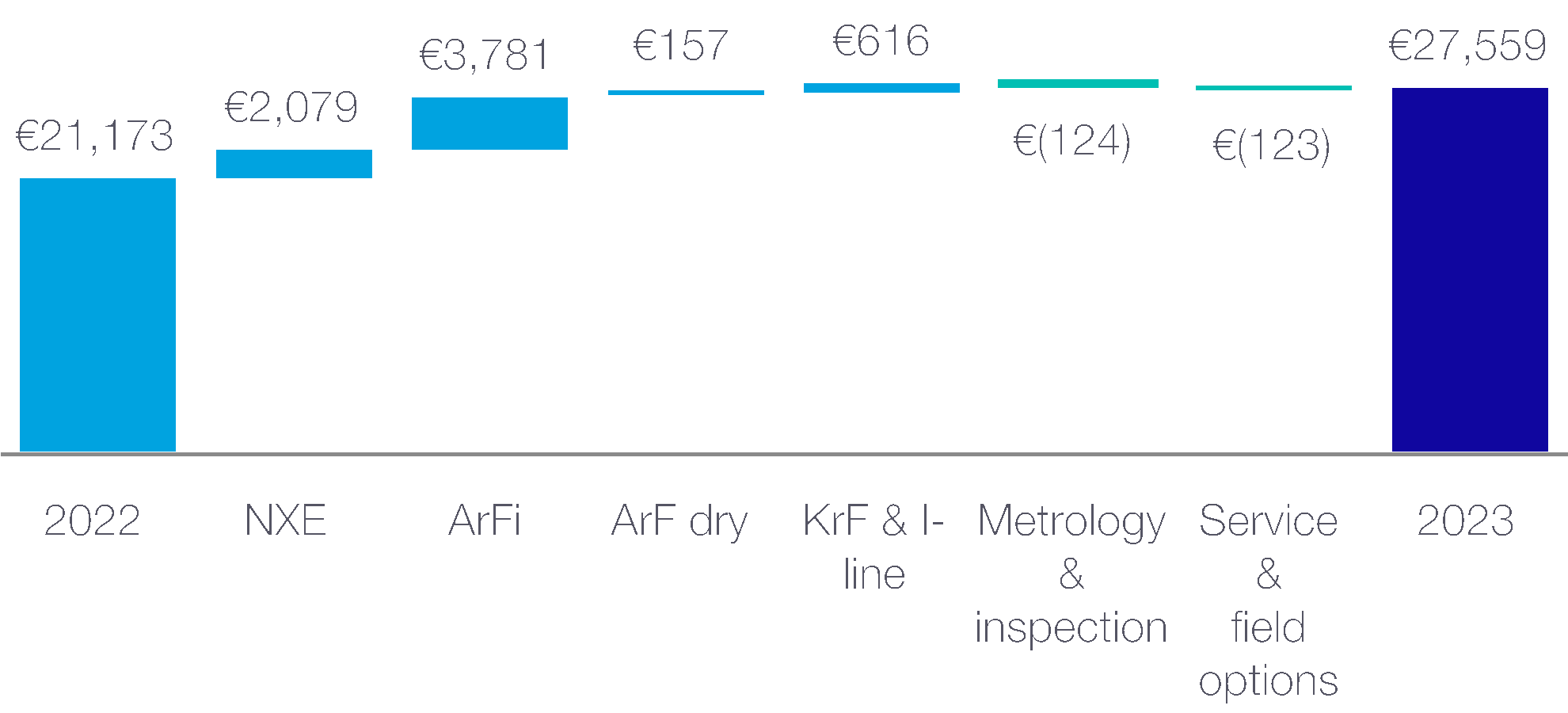
The increase in total net sales was primarily driven by
higher sales volumes for NXE and DUV immersion
systems as supply caught up with demand. In addition
there was increased DUV demand from China that was
previously unfulfilled due to supply constraints. Also the
timing of revenue recognition for DUV immersion fast
shipments is considered to be proven. We recognized
revenue for 53 EUV systems in 2023 compared with 40
EUV systems in 2022. Our system sales across our DUV
technologies increased from 305 units in 2022 to 396
units in 2023.
The decrease in net service and field option sales was
mainly driven by lower field upgrade sales due to lower
lithography tool utilization levels at our customers, and
customers delaying productivity enhancement packages
due to uncertainty around the timing of the market
recovery. This decrease is partially offset by higher
service sales, which continue to scale as a result of the
growing installed base of systems.
Gross profit |
(in millions) |
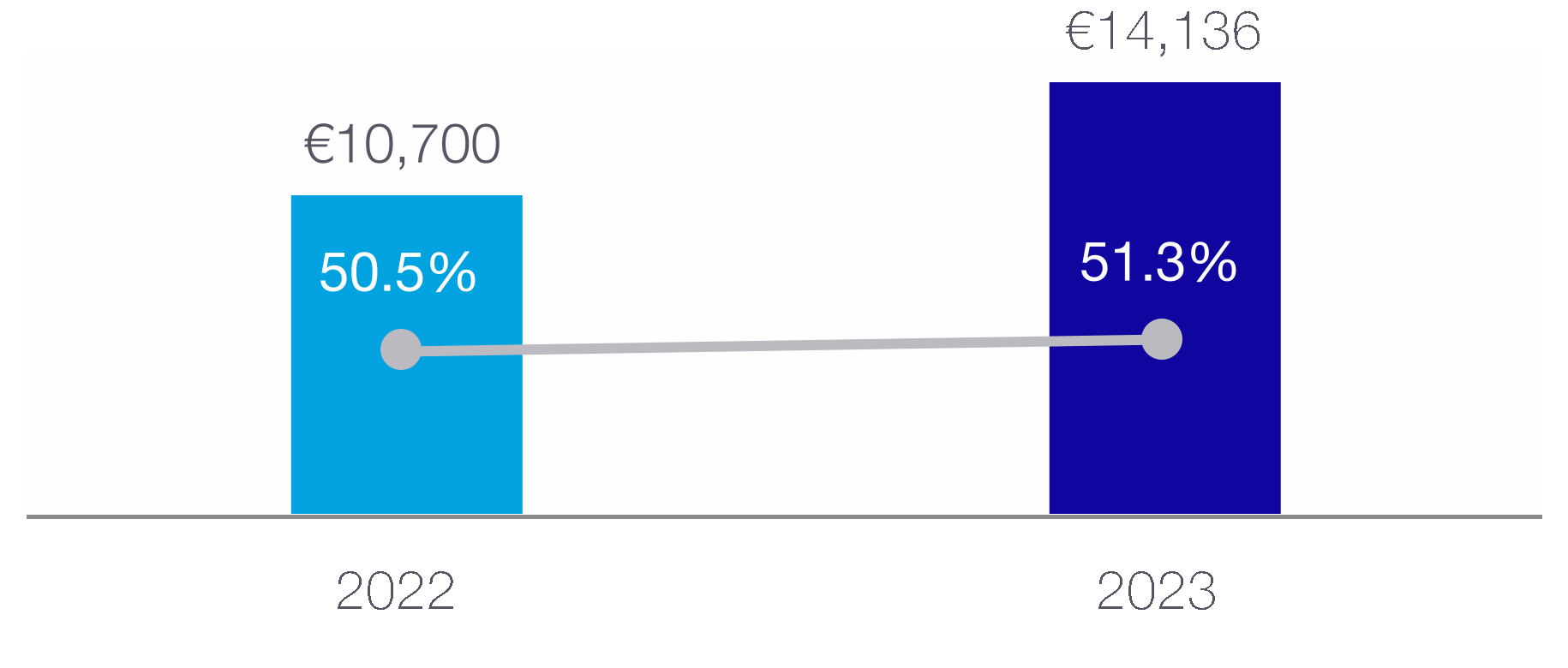
Gross profit increased as a result of higher NXE and DUV
immersion sales volumes and improved profitability. The
gross margin increased from 50.5% in 2022 to 51.3% in
2023. This increase is mainly due to:
•a larger share of DUV immersion system sales
•lower inflationary effect on our business
partially offset by lower field upgrade sales.
Research and development costs |
(in millions) |
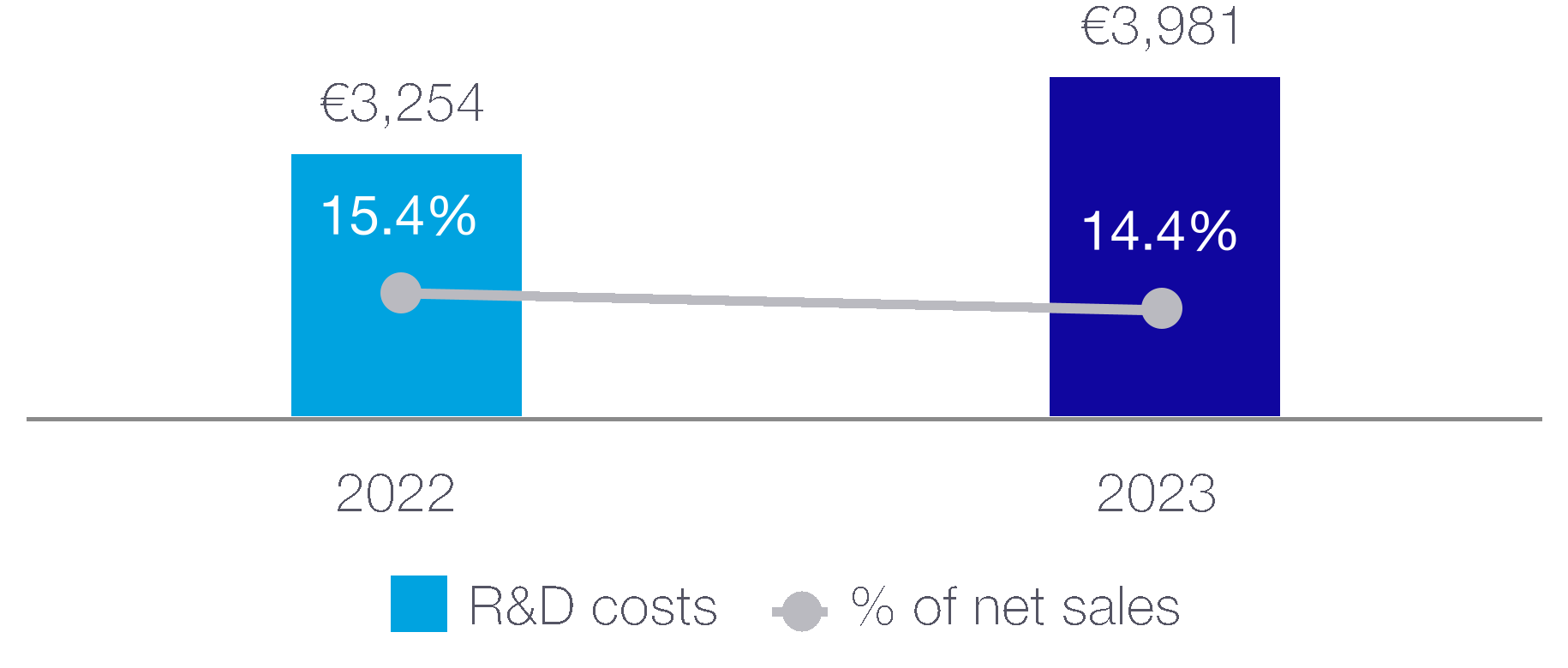
R&D costs were €3,980.6 million in 2023 compared with
€3,253.5 million in 2022. The increase in R&D
investments across each of our EUV, DUV and
Applications programs, all support our holistic lithography
solutions. In 2023, R&D investments mainly related to:
•Investments in the development of the NXE:3800E
system and further improving availability and
productivity of our EUV installed base systems.
•Investments in our next generation EUV 0.55 NA (High
NA) systems, to support future nodes for both Logic
and DRAM customers.
•The introduction of our immersion system NXT:1980Fi
and the dry system XT:400M. Continued developments
for the next generation of scanners include NXT:2150i
and NXT:870B. In parallel, there were multiple
developments for productivity packages and new
service models, focusing on increasing 'good wafers
per day' in our customers' installed base.
•Continued investment in e-beam inspection, e-beam
metrology and Yieldstar optical metrology. In addition,
securing our multibeam inspection roadmap and
continuously expanding our investment in the holistic
software applications space.

€4.0 billion
R&D costs
22.3%
Increase in R&D costs
on previous year
ASML ANNUAL REPORT 2023 | FINANCIAL PERFORMANCE CONTINUED | STRATEGIC REPORT | CORPORATE GOVERNANCE | FINANCIALS | 45 | |
Performance KPIs (continued) | ||||||
Selling, general and administrative costs |
SG&A costs increased by 17.7% from 2022 to 2023,
largely due to an increase in the number of employees
and increased wage per FTE.
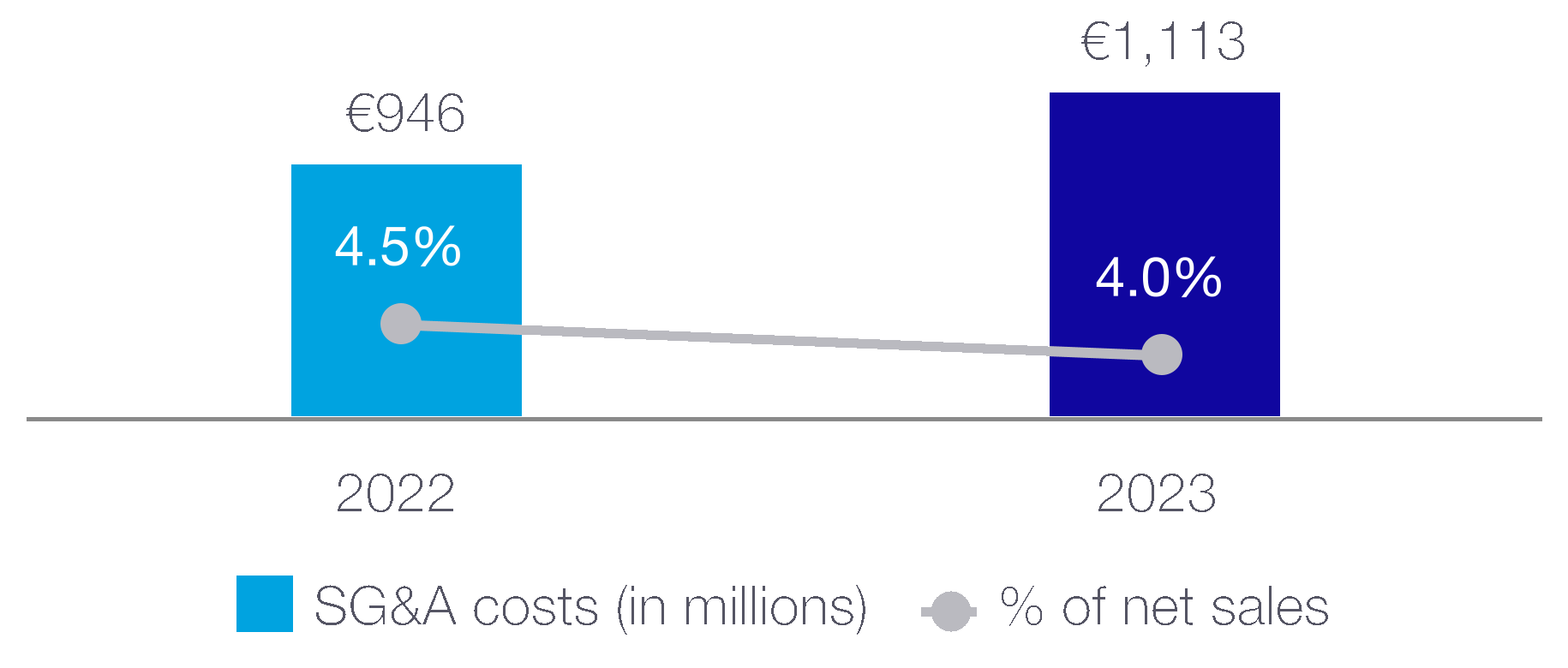
Income taxes |
The effective tax rate (ETR) increased to 15.8% in 2023,
compared with 15.0% in 2022. The higher rate is mainly
caused by an increase in our liability for unrecognized tax
benefits and a reduction in US Foreign Derived Intangible
Income (FDII) deduction.
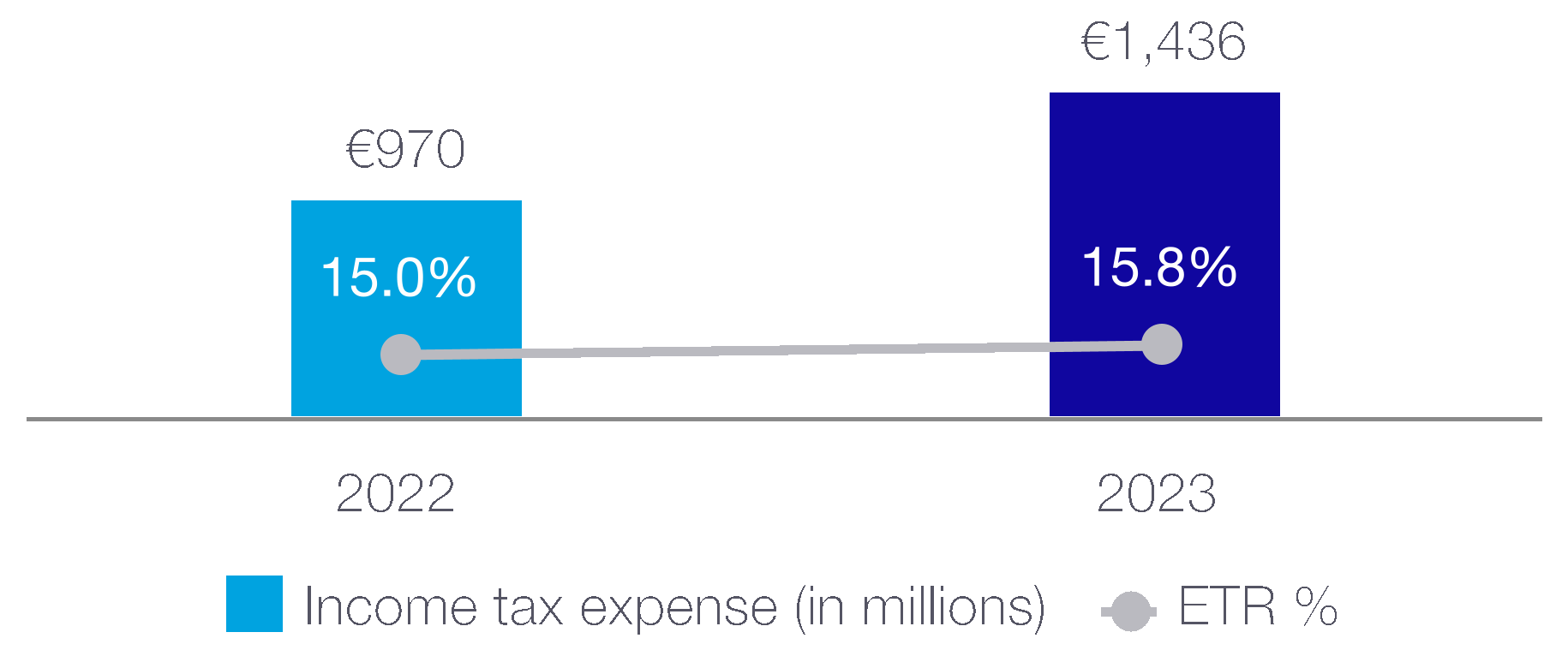
Read more in Consolidated Financial Statements - Notes to the
Net income |
Net income in 2023 amounted to €7,839.0 million, or
28.4% of total net sales, representing €19.91 basic net
income per ordinary share, compared with net income in
2022 of €5,624.2 million, or 26.6% of total net sales,
representing €14.14 basic net income per ordinary share.
The increase in basic net income per ordinary share is
mainly due to the higher net income, but also partially
driven by a decrease in the weighted average number of
outstanding shares resulting from our share buyback
program.
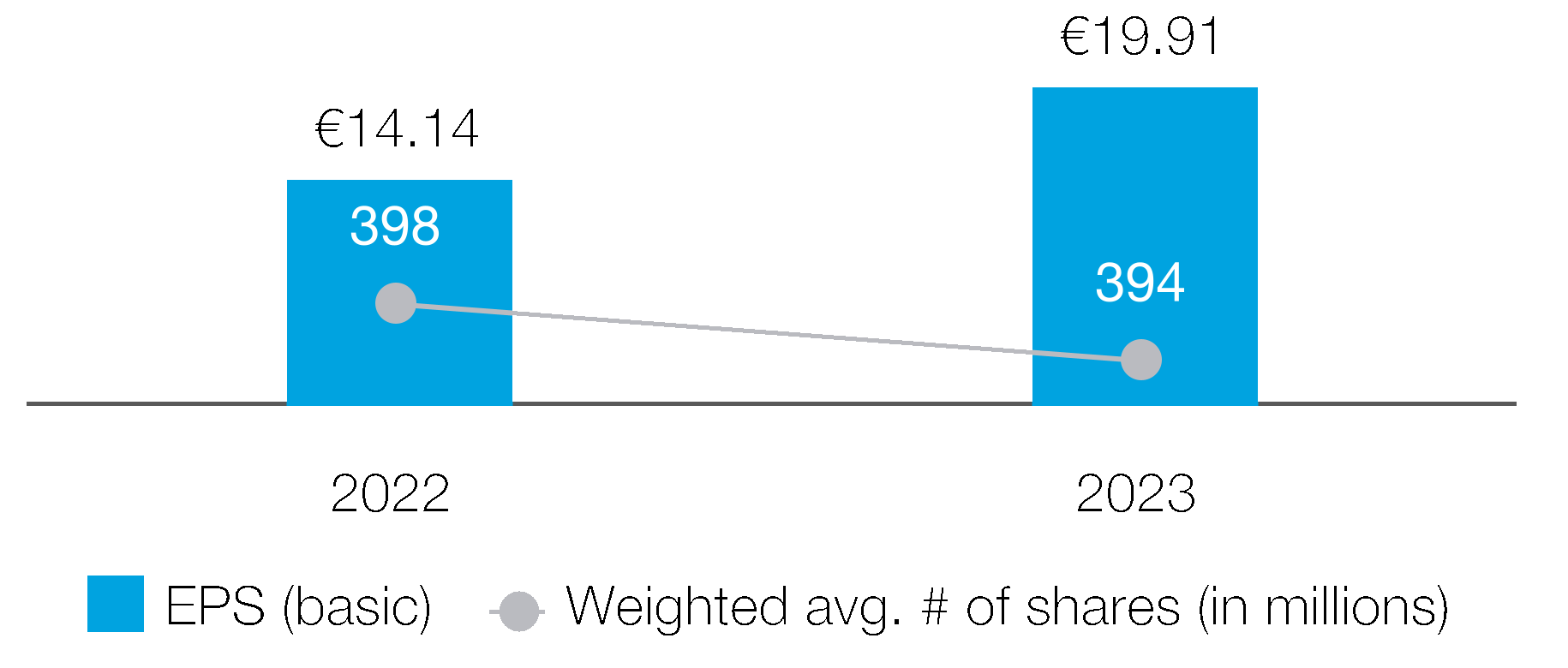
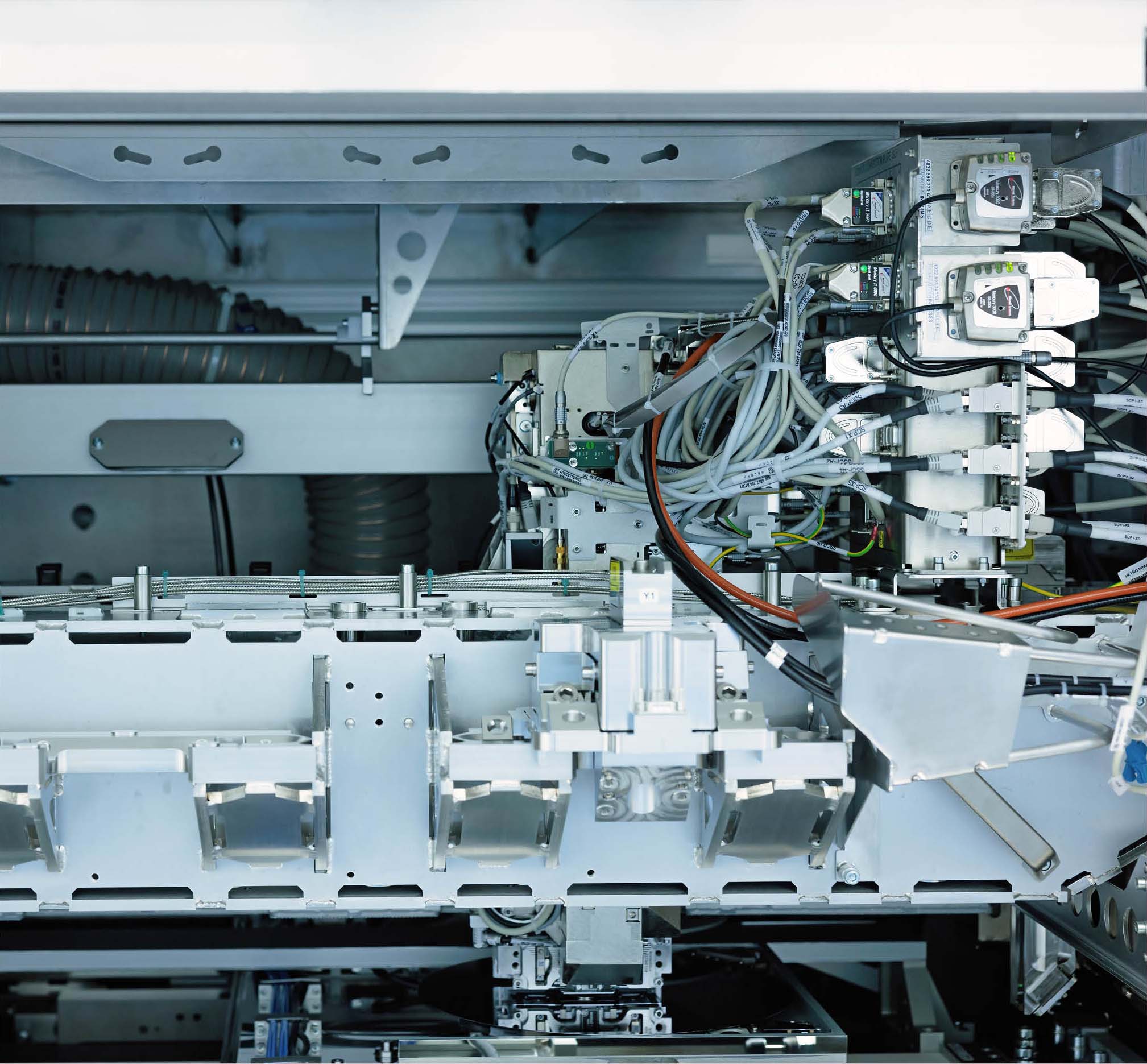
ASML ANNUAL REPORT 2023 | FINANCIAL PERFORMANCE CONTINUED | STRATEGIC REPORT | CORPORATE GOVERNANCE | FINANCIALS | 46 | |
Performance KPIs (continued) | ||||||
Cash flow analysis
We continue to invest heavily in our next-generation technologies in order to secure future growth opportunities which
require a significant cash investment in net working capital, capital expenditures and R&D.
We also continued our efforts to return cash to our shareholders through our dividends and share buyback program.
Year ended December 31 (€, in millions) | 2022 | 2023 |
Cash and cash equivalents, beginning of period | 6,951.8 | 7,268.3 |
Net cash provided by (used in) operating activities | 8,486.8 | 5,443.4 |
Net cash provided by (used in) investing activities | (1,028.9) | (2,689.3) |
Net cash provided by (used in) financing activities | (7,138.3) | (3,003.9) |
Effect of changes in exchange rates on cash | (3.1) | (13.8) |
Net increase (decrease) in cash and cash equivalents | 316.5 | (263.6) |
Cash and cash equivalents, end of period | 7,268.3 | 7,004.7 |
Short-term investments, end of period | 107.7 | 5.4 |
Cash and cash equivalents and short-term investments | 7,376.0 | 7,010.1 |
Purchases of property, plant and equipment and intangible assets | (1,319.3) | (2,196.2) |
Free cash flow1 | 7,167.5 | 3,247.2 |
1.Free cash flow is a non-GAAP measure and is defined as net cash provided by operating activities (2023: €5,443.4 million and 2022: €8,486.8
million) minus purchase of property, plant and equipment (2023: €2,155.6 million and 2022: €1,281.8 million) and purchase of intangible assets
(2023: €40.6 million and 2022: €37.5 million).
Net cash provided by (used in) operating activities
The decrease in net cash provided by operating activities of €3.0 billion compared with 2022 is mainly due to an
increase in inventory and a decrease in contract liabilities, as a result of extended payment terms granted to our
customers. This is partially offset by an increase in net income of €2.2 billion.
Net cash provided by (used in) investing activities
The increase in net cash used in investing activities of €1.7 billion compared to 2022 is mainly due to our continuous
cash investment in capital expenditures, which increased by €0.9 billion. Additionally, our loans issued increased by
€0.3 billion, and the net cash inflow from the purchase and maturity of short-term investments was €0.4 billion lower.
Net cash provided by (used in) financing activities
The decrease in net cash used in financing activities of €4.1 billion compared to 2022, is mainly due to a decrease in
shares purchased through our share buyback program, which decreased by €3.6 billion. Other drivers are the
temporary decrease of our total paid dividends of €0.2 billion due to a change from bi-annual to quarterly dividend
payments. Additionally, in 2023, we had net proceeds from issuances of notes of €1.0 billion (2022: €0.5 billion) and
we repaid an amount of €0.8 billion (2022: €0.5 billion) for a previously issued note that became due.
As of December 31, 2023, ASML has sufficient capital for the company’s present requirements.
ASML ANNUAL REPORT 2023 | FINANCIAL PERFORMANCE CONTINUED | STRATEGIC REPORT | CORPORATE GOVERNANCE | FINANCIALS | 47 | |
Performance KPIs (continued) | ||||||
Trend information
The semiconductor industry continues to work through
the bottom of the cycle. To prepare for the recovery, we
are looking at the combined demand for 2024 and 2025.
We view 2024 to be a transition year in preparation for
the expected strong demand in 2025. We continue to
make investments this year both in capacity ramp and
technology to be ready for the turn in the cycle.
Although our customers are still not certain about the
shape of the semiconductor market recovery in 2024,
there are some positive signs. Industry end-market
inventory levels continue to improve and litho tool
utilization levels are beginning to show improvement. Our
strong order intake in the fourth quarter of 2023
(€9.2 billion) clearly supports future demand. In spite of
the positive signs, we maintain our conservative view for
the total year and expect 2024 revenue to be similar to
2023. We also expect 2024 to be an important year to
prepare for significant growth that we expect for 2025.
We expect 2024 revenue to be similar to 2023, with a
slightly lower gross margin.
We expect slightly lower Logic revenue in 2024 versus
2023 as customers digest capacity and utilization levels
improve.
For Memory, we currently expect revenue growth in 2024
versus 2023, primarily driven by DRAM technology node
transitions in support of advanced memory devices.
For EUV, we are expecting revenue growth in 2024.
Relative to 2023, we are expecting to recognize revenue
for a similar number of systems, however with a higher
average selling price from the NXE:3800E systems. In
addition, we expect the first revenue from High NA EUV
systems in 2024.
We expect our non-EUV business to be down in 2024,
primarily driven by lower immersion system sales, relative
to 2023.
Our net service and field option sales is expected to be
at a similar level of revenue as last year.
Our expectations and guidance for the first quarter of
2024 can be summarized as follows:
–Total net sales between €5.0 billion and €5.5 billion
–Gross margin between 48% and 49%
–R&D costs of around €1,070 million
–SG&A costs of around €300 million
–Annualized effective tax rate between 16% and 17%
The trends discussed above are subject to risks and
uncertainties.
Read more in Forward-looking statements

ASML ANNUAL REPORT 2023 | FINANCIAL PERFORMANCE CONTINUED | STRATEGIC REPORT | CORPORATE GOVERNANCE | FINANCIALS | 48 | |
Long-term growth opportunities | ||||||
Outlook 2025 and 2030
This decade is all about distributed computing, bringing
the cloud closer to devices at the edge. Through
connectivity, computing power will be available to all of
us ‘on device’, enabling a connected world. These global
megatrends in the electronics industry, supported by a
highly profitable and fiercely innovative ecosystem, are
expected to continue to fuel growth across the
semiconductor market. This translates into increased
wafer demand at both advanced and mature nodes.
The continued push of countries around the globe for
technological sovereignty is expected to drive increased
capital intensity. This means that the industry is expected
to make significant investments in wafer capacity, with
increasing spend on lithography. The semiconductor end
markets, such as automotive, data centers, industrial and
consumer electronics, are expected to grow, and we
expect the total semiconductor market to grow around
9%1 year-on-year through 2030, fueling the strong
growth of our business based on an increased mix of
EUV, while the demand for DUV is expected to increase
across all wavelengths. To achieve this, we and our
supply chain partners are actively adding and improving
capacity to meet future customer demand.
At our November 2022 Investor Day, also known as
Capital Markets Day (CMD), we presented our long-term
growth opportunity for 2025 as well as 2030.
We plan to update our view in our next Investor Day
planned for November 14, 2024.
1. Source: Based on external market research firms
Based on the different market scenarios, we believe we
have an opportunity to reach annual sales of between
approximately €30 billion and €40 billion in 2025, with a
gross margin between approximately 54% and 56%.
Looking further ahead, for 2030 we believe we have an
opportunity to reach annual sales of between
approximately €44 billion and €60 billion, with a gross
margin between approximately 56% and 60%.
The anticipated growth in the future is largely market
driven in both advanced and mature markets, technology
(e.g., the energy transition, AI and die sizes) and
geopolitical and competition-driven growth.
Our sales potential is primarily based on assumed
organic growth. We continuously review our product
roadmap and have, from time to time, made focused
acquisitions or equity investments to enhance the
industrial synergy of our product offering. Based on such
reviews and the assessment of clear potential product
and value synergies, we may also evaluate and pursue
focused merger and acquisition activities in the future.
Within this growth ambition, we expect to continue to
return significant amounts of cash to our shareholders
through a combination of growing dividends and share
buybacks.
Read more in Our business strategy
Long-term models as presented at CMD2022 | ||||||||||
 | 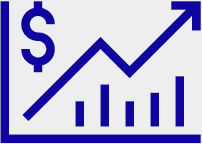 | |||||||||
Market | System units | Total sales opportunity (in €bn) | ||||||||
High | CMD 2022 Units ASML | CMD 2022 Units ASML | CMD 2022 Sales | CMD 2022 Sales | ||||||
2025 | 2030 | 2025 | 2030 | |||||||
EUV High NA 0.55 | 5 | 30 | Systems (Lithography & M&I1) | 32 | 47 | |||||
EUV Low NA 0.33 | 80 | 80 | ||||||||
ArFi (immersion) | 105 | 115 | Installed Base Management2 | 8 | 13 | |||||
Dry | 385 | 425 | ||||||||
Total | 575 | 650 | Total | 40 | 60 | |||||
Low | CMD 2022 Units ASML | CMD 2022 Units ASML | CMD 2022 Sales | CMD 2022 Sales | ||||||
2025 | 2030 | 2025 | 2030 | |||||||
EUV High NA 0.55 | 5 | 15 | Systems (Lithography & M&I1) | 23 | 33 | |||||
EUV Low NA 0.33 | 65 | 65 | ||||||||
ArFi (immersion) | 75 | 85 | Installed Base Management2 | 7 | 11 | |||||
Dry | 180 | 250 | ||||||||
Total | 325 | 415 | Total | 30 | 44 | |||||
1. M&I: Metrology and inspection. 2. Installed Base Management equals our net service and field option sales. | ||||||||||
ASML ANNUAL REPORT 2023 | FINANCIAL PERFORMANCE CONTINUED | STRATEGIC REPORT | CORPORATE GOVERNANCE | FINANCIALS | 49 | |
Long-term growth opportunities (continued) | ||||||
Enterprise risk management
ASML's ERM framework is designed to enable a well-
defined governance structure and a robust ERM
process. The Risk and Business Assurance function
drives the ERM process and associated activities across
ASML. We follow a systematic approach to identify,
manage and monitor risks in pursuit of our business
objectives by setting standards and enabling
management to maintain and continuously improve our
governance, risk management, internal control and
compliance. The framework enables us to identify
opportunities to achieve our objectives and enable long-
term sustainable growth.
 |
The purpose of risk management is to maximize the probability of achieving business objectives responsibly.” |
Geert Beullens |
Head of Risk and Business Assurance |
ERM is a continuous process. Its related activities are
periodically repeated to identify and address risks in a
timely fashion, and ensure outcomes are relevant for
effective decision-making. Our Head of Risk and
Business Assurance reports to the CFO and Audit
Committee and is responsible for leading the
development and maintenance of the ERM framework
and the implementation of the ERM process. We have
adopted the ISO 31000:2018 standard as the basis for
our ERM activities. In addition, the Head of Risk and
Business Assurance is responsible for leading the
security function and for developing and maintaining the
compliance process.
Risk management governance structure | |||||||||
Supervisory Board | Audit Committee | ||||||||
 |  | ||||||||
Request to investigate specific risk topics | •Bi-annual risk review •Risk topics feedback | •Assertion on control effectiveness •Quarterly progress reporting | |||||||
Board of Management | |||||||||
Corporate Risk Committee (CRC) Risk oversight | Disclosure Committee Internal Control Committee | ||||||||
 |  | ||||||||
•Risk appetite •Risk management policy •CRC sub committees (governance) | •Risk assessment results •Risk response progress •Incidents | •Control effectiveness | |||||||
Risk owners | |||||||||
ASML ANNUAL REPORT 2023 | RISK | STRATEGIC REPORT | CORPORATE GOVERNANCE | FINANCIALS | 50 | ||
How we manage risk | |||||||
We use a robust enterprise risk management (ERM) framework to embed risk management into our daily business activities and strategic planning. | |||||||
Supervisory Board and Audit Committee
The Supervisory Board (SB) provides independent
oversight of management’s response on critical risk
areas. The SBs Audit Committee provides independent
oversight of the ERM process and timely follow-up of
priority actions based on quarterly progress updates.
Board of Management
The Board of Management is responsible for managing
internal and external risks related to our business
activities and for ensuring we comply with applicable
laws and regulations.
Corporate Risk Committee
The Corporate Risk Committee (CRC) is the central risk
oversight body that reviews, manages and controls risks in
the ASML risk universe, including security. It also approves
the risk appetite, risk management policies and risk
mitigation strategies. The CRC is chaired by the CFO and
comprises senior management representatives across
ASML, including the CEO, COO and CSPO.
 |
ASML's risk management process provides direction for adequate risk and control measures for key risks.” |
Roel Verstegen |
Risk manager |
Disclosure Committee
The Disclosure Committee assists the Board of
Management in overseeing ASML’s disclosure activities
and compliance with applicable disclosure requirements
arising under Dutch and US law, applicable stock
exchange regulations and other regulatory requirements.
Internal Control Committee
The Internal Control Committee, which includes
members of the Disclosure Committee, advises the
Disclosure Committee and the CEO and CFO in their
assessment of our internal control over financial reporting
and related disclosures, under section 404 of the
Sarbanes Oxley Act. The Chair of the Internal Control
Committee updates the Audit Committee, the CEO and
CFO on the progress of this assessment. The Chair also
includes this update in the Internal Control Committee’s
report to the Audit Committee.
Risk owners
Risk owners monitor the development of risks across the
ASML risk universe and drive risk response across ASML
according to requirements that are defined by the CRC.
ASML risk universe
The ASML risk universe is a consolidated overview of the
risks that may have a material adverse impact on our
ability to achieve our business objectives. The risk
universe was updated in 2023 and consists of 32 risk
categories grouped into six risk types. The risk universe
allows us to have a consistent approach to risk
assessments across ASML.
ASML risk universe | |||||||||
Strategy and products | |||||||||
•Industry cycle risk •Geopolitical risk •Climate change risk | •Business model risk •Merger and acquisition risk | •Competition risk •Innovation risk •Product stewardship risk | •Product roadmap execution risk •Intellectual property rights risk | ||||||
Finance and reporting | Partners | People | Operations | ||||||
•Business planning risk •Financial risk •Shareholder activism risk •Disclosure/external reporting risk •Tax and customs risk | •Customer dependency risk •Product/service quality risk •Supplier strategy and performance risk •Supply chain disruption risk | •Knowledge management risk •Organizational effectiveness risk •Human resource risk | •Product industrialization risk •Process effectiveness and efficiency risk •Environment, health and safety risk •Continuity of own operation risk •Security risk •Information technology risk •Manufacturing and install risk | ||||||
Legal and compliance | |||||||||
•Contractual liability risk | •Violation of laws and regulations risk | •Violation of internal policies risk | |||||||
We take into account a broad range of internal and
external information sources such as macroeconomic
and industry trends, relevant guidelines and legislation,
and stakeholders’ needs and expectations in all areas.
The risk universe is reviewed, updated and approved
annually, or more frequently when there are significant
internal and/or relevant external developments.
ASML ANNUAL REPORT 2023 | RISK CONTINUED | STRATEGIC REPORT | CORPORATE GOVERNANCE | FINANCIALS | 51 | ||
How we manage risk (continued) | |||||||
Enterprise risk management process
The ERM process provides a holistic approach
combining both top-down (company-level) and bottom-
up (organization- and process-level) perspectives. This
helps us to identify, evaluate and manage risks at the
right level. We continuously seek to improve our ERM
process based on learnings, developments and best
practices.
The results of periodic risk assessments and the potential
impact of external trends and emerging risks are
captured in the ASML risk landscape. As we operate in a
dynamic environment, risk exposures are subject to
change. The ASML risk landscape is reviewed and
updated by the CRC each quarter. Risk assessments are
carried out to assess all risk events in ASML's risk
universe. We define strategies to address relevant risks
and take these into account when we define our
corporate priorities. Our risk responses aim to mitigate
risks to the level defined by the risk appetite.
Risk appetite
Our risk appetite describes the level of risk we are willing
to accept to achieve our objectives. It depends on the
nature of the specific risk and is divided into five levels:
Averse, Prudent, Moderate, High and Extensive. Our
approach is geared toward mitigating risks to the level
defined in our risk appetite.
Risk management process
Risk assessment | Risk response | |||||||||||
Top-down risk assessment | Coordination and follow-up | |||||||||||
Corporate Risk Committee/Risk owners/Emerging risks | Risk owners | |||||||||||
 | Risk identification |  | Risk landscape |  | Risk appetite |  | ||||||
 | ||||||||||||
Risk analysis | ||||||||||||
Risk evaluation |  |  | Risk treatment | |||||||||
Bottom-up risk assessment | Execution | |||||||||||
Country/Sector | Action owners | |||||||||||
Risk appetite levels | |||||||||||||||||
Risk type | Averse | Prudent | Moderate | High | Extensive | ||||||||||||
Strategy and products | |||||||||||||||||
Partners | |||||||||||||||||
People | |||||||||||||||||
Operations | |||||||||||||||||
Finance and reporting | |||||||||||||||||
Legal and compliance | |||||||||||||||||
ASML ANNUAL REPORT 2023 | RISK CONTINUED | STRATEGIC REPORT | CORPORATE GOVERNANCE | FINANCIALS | 52 | ||
How we manage risk (continued) | |||||||
The table below shows the main risks related to our strategy and includes examples of our responses:
Grow our holistic lithography business | ||||||||||||||
Risk development | Risk trend | Risk universe reference | Risk response | |||||||||||
Geopolitical tensions |  | •Geopolitical •Competition •Supply chain disruption •Continuity of own operations •Business model | •Violation of laws and regulations •Security •IP rights •HR | •Active engagement with authorities and governments •Scenario planning •Collaborate with peers in global advocacy •Optimize industrial footprint •Apply for export licenses •Comply with applicable regulations | ||||||||||
Geopolitical tensions and the strive for technological sovereignty may lead to a decoupled ecosystem and – in longer term – overcapacity. Additional export restrictions have been imposed during 2023. There is a risk that future trade restrictions (e.g. raw materials, technology, systems, investments) further limit our ability to source parts and/or sell and service systems to certain customers. | ||||||||||||||
Uncertain global economy |  | •Industry cycle •Business model •Financial | •Competition •Supply chain disruption | •Cost control •Maintain flexibility •Scenario planning | ||||||||||
Global economic conditions lead to uncertainty for semiconductor demand and therefore demand for our products. We have experienced order push-outs. The macroeconomic weakness continues into 2024 and duration is uncertain. | ||||||||||||||
Pressure on innovation in ecosystem |  | •Innovation •Product roadmap •Supplier strategy and performance | •IP rights •Competition •Security | •Open innovation – sharing risk and reward •Intellectual property portfolio management •Patents and relevant technical publications monitoring •Substantial investments in security •Awareness and training programs •Cyber defense capabilities | ||||||||||
ASML’s strengths are based on the innovation power in our ecosystem and the ability to protect our IP. There is a risk that we are not able to deliver on our technology roadmap. In addition, there is significant pressure on know-how and IP protection for ASML and its open innovation partners. We and our partners experience cyberattacks and other security threats. | ||||||||||||||
Growth challenges |  | •Manufacturing and install •Supplier strategy and performance •HR | •Product industrialization •Process effectiveness •Product/service quality | •Increase of manufacturing capabilities •Cycle time reduction •Fast shipments •Supplier move rate support •Secure unique supply chain capabilities •Onboarding, retention and well-being program •Shorten time to knowledge | ||||||||||
The increasing demand in recent years is an opportunity for us that also brings challenges. While we are now facing uncertainty in customer demand outlook, we face challenges to increase production capacity in our end-to-end supply chain to meet future demand. This is amplified by supply chain constraints. In addition, hiring, onboarding and retaining our workforce in the competitive market is challenging. Our ability to attract people also depends on the government to accommodate them, e.g. by income tax policies and investments in appropriate infrastructure. | ||||||||||||||
ASML ANNUAL REPORT 2023 | RISK CONTINUED | STRATEGIC REPORT | CORPORATE GOVERNANCE | FINANCIALS | 53 | ||
How we manage risk (continued) | |||||||
Deliver on our ESG sustainability commitments | ||||||||||||||
Risk development | Risk trend | Risk universe reference | Risk response | |||||||||||
Strengthening ESG regulations and increasing stakeholder expectations |  | •Product stewardship •EHS •Climate change | •Human resource •Violation of laws and regulations | •Stakeholder engagement and disclosures •Deployment of ESG strategy in ASML & value chain •Non-financial reporting in accordance with the Global Reporting Initiative (GRI) •Preparing for CSRD reporting requirements | ||||||||||
Stakeholders are increasingly focused on our contribution to society and expect us to minimize the environmental and social impact of our products throughout all life-cycle stages. There is a risk that we fail in achieving our ESG objectives. In addition, we are faced with increasing regulations and disclosure requirements (e.g. CSRD). | ||||||||||||||
Climate change fueling extreme weather |  | •Continuity of own operations •Supply chain disruption | •Deployment of business continuity plans •Include extreme weather aspects in building upgrades and new designs | |||||||||||
Climate change contributes to increasing severity and frequency of extreme weather events (such as cyclones, flood, fire stress, drought, excessive heat and precipitation, rising sea levels) that can impact continuity of our operations and/or our supply chain. | ||||||||||||||
ASML ANNUAL REPORT 2023 | RISK CONTINUED | STRATEGIC REPORT | CORPORATE GOVERNANCE | FINANCIALS | 54 | ||
How we manage risk (continued) | |||||||
The risk factors in this section are classified under these six risk types. Any of these risks and the related events or circumstances described therein may have a material adverse effect on our business, financial condition, results of operations and reputation. These risks are not the only ones that we face. Some risks may not yet be known to us, and certain risks that we do not currently believe to be material could become material in the future. Many risks may be intensified by global events such as interstate conflicts, geopolitical tensions, inflation, industry downturn, global measures (including new regulations) taken in response to these events and/or any worsening of the associated global business and economic conditions. | 1. Strategy and products | |||||||||
Our future success depends on our ability to respond timely to commercial and technological developments in the semiconductor industry | The success of new product introductions is uncertain and depends on our ability to successfully execute our R&D programs | |||||||||
Risk category: | Risk category: | |||||||||
Business model, Innovation | Product roadmap execution, Innovation | |||||||||
Our success in developing new and enhancing existing technologies, products and services, depends on a variety of factors. These include the success of our and our suppliers’ R&D programs and the timely, cost-effective and successful completion of product development and design relative to competitors. Our business will suffer if the technologies we pursue to assist our customers in producing smaller and more energy-efficient chips are not as effective as, or are more costly than, those developed by competitors. Our business will also suffer if our customers do not adopt technologies that we develop, or if they adopt new technological architectures that are less focused on lithography products. The success of our EUV 0.55 NA (High NA) technology, which we believe is critical for keeping pace with Moore’s Law, depends on continuing technical advances by us and our suppliers. We invest considerable financial resources to develop and introduce new and enhanced technologies, products and service offerings. If we are unsuccessful in developing (or if our customers do not adopt) these technologies, products and service offerings such as EUV 0.55 NA and multibeam inspection, or if alternative technologies or processes are successfully introduced by others, our competitive position and business may suffer. | We make significant investments in developing new products and product enhancements and we may be unable to recoup some or all of these investments. We may incur impairment charges on capitalized technology including prototypes or incur costs related to inventory obsolescence, as a result of technological changes. Such costs may increase as the complexity of technology increases. Due to the highly complex nature and costs of our systems, including newer technologies, our customers may purchase existing technology systems rather than new leading-edge systems, or they may delay their investment in new technology systems to the extent that such investment is not economical or required, given their product cycles. Global economic conditions affect our customers’ investment decisions and lead to uncertainties in the timing around the introduction of and demand for new leading-edge systems. Some of our customers have experienced and may continue to experience delays in implementing their product roadmaps. This increases the risk of slowing down the overall transition period (or cadence) for the introduction of new nodes, and therefore new systems. We also depend on our suppliers to maintain their development roadmaps to enable us to introduce new technologies in a timely manner. If they are unable to keep pace, whether due to technological factors, lack of financial resources or otherwise, we may not meet our development roadmaps. | As our lithography systems and applications have become increasingly complex, the cost and time to develop new products and technologies have increased and we expect this trend to continue. In particular, developing new technology, such as EUV 0.55 NA (High NA) and multibeam, requires significant R&D investments by us and our suppliers. Our suppliers may not be able or willing to invest the resources necessary to continue the (co-) development of new technologies to the extent that such investments are necessary. This has resulted and may continue to result in ASML contributing funds to such R&D programs or limiting the R&D investments that we can undertake. Furthermore, if our R&D programs are not successful in developing the desired new technology on time or at all, we may be unsuccessful in introducing new products and unable to recoup our R&D investments. In case of high levels of customer demand, we may prioritize our resources toward increasing production over R&D programs. | ||||||||
ASML ANNUAL REPORT 2023 | RISK CONTINUED | STRATEGIC REPORT | CORPORATE GOVERNANCE | FINANCIALS | 55 | ||
Risk factors | |||||||
Many risks have the potential to impact our business. It is important to understand the nature of these risks. We assess risks by using the ASML risk universe which comprises six risk types (Strategy and products, Finance and reporting, Partners, People, Operations, Legal and compliance). | |||||||
1. Strategy and products (continued) | ||||||||||||
We face intense competition | The semiconductor industry can be cyclical and we may be adversely affected by any downturn | We derive most of our revenues from the sale of a relatively small number of products | ||||||||||
Risk category: | Risk category: | Risk category: | ||||||||||
Competition | Industry cycle risk | Business model | ||||||||||
The semiconductor equipment industry is highly competitive. Our competitiveness depends on our ability to develop new and enhanced lithography equipment, related applications and services that bring value to our customers and are competitively priced and introduced on a timely basis – as well as our ability to protect and defend our intellectual property, trade secrets or other proprietary information. We compete primarily with Canon and Nikon in respect of DUV systems. Both Canon and Nikon have substantial financial resources and broad patent portfolios. Each continues to offer products that compete directly with our DUV systems, which may impact our sales or business. In addition, adverse market conditions, long-term overcapacity or a decrease in the value of the Japanese yen in relation to the euro could increase price-based competition, resulting in lower prices and lower sales and margins. We also face competition from new competitors with substantial financial resources, as well as from competitors driven by the ambition of self-sufficiency in the geopolitical context. Furthermore, we face competition from alternative technological solutions or semiconductor manufacturing processes. We also compete with providers of applications that support or enhance complex patterning solutions, such as Applied Materials Inc. and KLA-Tencor Corporation. These applications effectively compete with our Applications offering, which is a significant part of our business. | The semiconductor industry has historically been cyclical. As a supplier to the global semiconductor industry, we are subject to the industry’s business cycles. The timing, duration and volatility are difficult to predict and can have a significant impact on semiconductor manufacturers including ASML. Newer entrants to the industry, including Chinese semiconductor manufacturers, could increase the risk of cyclicality in the future. Certain key end-market customers – Logic and Memory – exhibit different levels of cyclicality and different business cycles. Cyclicality may be worsened by the geopolitical situation if countries increase semiconductor capacity for higher levels of self-sufficiency, thereby creating global overcapacity. Sales of our lithography systems, services and other holistic lithography products depend in large part on the level of capital expenditures by semiconductor manufacturers. These in turn are influenced by industry cycles, the drive for technological sovereignty and a range of competitive and market factors, including semiconductor industry conditions and prospects. The timing and magnitude of capital expenditures of our customers also impact the available production capacity of the industry to produce chips, which can lead to imbalances in the supply and demand of chips. Reductions or delays in capital expenditures by our customers, or incorrect assumptions by us about our customers’ capital expenditures, could adversely impact our business. | In addition, industry trends that are positively impacting our business, such as increasing capital expenditures by our customers, may not continue. We have experienced changes in timing of orders from certain customers, and while we currently have significant backlog and therefore such timing changes have not impacted sales, we are subject to uncertainty in future customer demand. The current global economic environment, including inflation and high interest rates, contribute to this uncertainty. Our ability to maintain profitability in an industry downturn will depend substantially on whether we are able to lower our costs to break-even level. If sales decrease significantly as a result of an industry downturn and we are unable to adjust our costs over the same period, and if down payments need to be returned, our net income may decline significantly or we may suffer losses. As we have significantly increased our organization in terms of employees, infrastructure, manufacturing capacity and other areas, we may not be able to adjust our costs adequately in a timely manner in the event of an industry downturn. An uncertain global economy frequently leads to reduced consumer and business spending, and could cause our customers to decrease, cancel or delay their orders. High interest rates and volatility in financial markets could make it more difficult for our customers to raise capital, whether debt or equity, to finance their purchases of equipment, including the products we sell. The foregoing could lead to reduced demand, which may adversely affect our product sales and revenues and may harm our business and operating results. If we are unable to adapt appropriately and in a timely manner to changes resulting from difficult macroeconomic conditions, our business, financial condition or results of operations may be materially and adversely affected. | We derive most of our revenues from the sale of a relatively small number of lithography systems (449 units in 2023 and 345 units in 2022). As a result, the timing of shipments, including any delays, and recognition of system sales for a particular reporting period from a small number of systems, with an increase in sales prices, may have a material adverse effect on our business, financial condition and results of operations in that period. In recent years, we have used fast shipments for some customers, which allows us to deliver systems more quickly to customers by having some final testing and formal acceptance carried out on customer sites instead of at our own facilities. In general, this leads to a delay of revenue recognition for those shipments until formal customer acceptance, which can impact comparability of our results of operations from quarter to quarter. In addition, we may not be able to increase installed base revenues to the extent we planned, as, for example, customers may perform more of these services themselves, find other third-party suppliers to provide them or we may be limited by national security restrictions. | |||||||||
ASML ANNUAL REPORT 2023 | RISK CONTINUED | STRATEGIC REPORT | CORPORATE GOVERNANCE | FINANCIALS | 56 | ||
Risk factors (continued) | |||||||
1. Strategy and products (continued) | |||||||||||||
Failure to adequately protect intellectual property could harm our business | Defending against intellectual property claims brought by others could harm our business | ||||||||||||
Risk category: | Risk category: | ||||||||||||
Intellectual property rights | Intellectual property rights | ||||||||||||
We rely on intellectual property (IP) rights such as patents and copyrights to protect our proprietary technology. However, we face the risk that such protective measures could prove inadequate and we could suffer material harm because, among other matters: •IP laws may not sufficiently support our proprietary rights or may change adversely in the future. •Our agreements (e.g. confidentiality, licensing) with our customers, employees and technology development partners and others to protect our IP may not be sufficient or may be breached or terminated. •Patent rights may not be granted or interpreted as we expect; •Patent rights will expire, which may result in key technology becoming widely available that may harm our competitive position. •The steps we take to prevent misappropriation or infringement of our proprietary rights may not be successful. •IP rights and trade secrets are difficult to enforce in countries where the application and enforcement of the laws governing such rights may not have reached the same level compared with other jurisdictions where we operate. •Third parties may be able to develop or obtain patents for our own or for similar competing technology. | Legal proceedings may be necessary to enforce our IP rights and the validity and scope may be challenged by others. Any such proceedings may result in substantial costs and diversion of management resources, and, if unfavorable decisions are made, could result in significant costs or have a significant impact on our business. We have experienced and may in the future experience misappropriation attacks by third parties or our employees, including theft of intellectual property. Such incidents may result in third parties or others, without authorization, obtaining, copying, using or disclosing our intellectual property, despite our efforts to protect them. | In the course of our business, we have been and are subject to claims by third parties alleging that our products or processes infringe upon their IP. If successful, such claims could limit or prohibit us from developing our technology, manufacturing and selling our products. Our customers or suppliers may also be subject to claims of infringement from third parties, including patent holder companies, alleging that our products used by such customers in the manufacturing of semiconductor products and/or the processes relating to the use of our products infringe on one or more patents issued to such third parties. If such claims are successful, we could be required to indemnify our customers for some or all of any losses incurred or damages assessed against them as a result of such infringement. | We may incur substantial licensing or settlement costs to settle claims or to potentially strengthen or expand our IP rights or limit our exposure to IP claims of third parties. Patent litigation is complex and may extend for a protracted period of time, giving rise to the potential for substantial costs and diverting the attention of key management and technical personnel. Potential adverse outcomes from patent litigation may include payment of significant monetary damages, injunctive relief prohibiting our manufacturing, exporting or selling of products, reputational damage and/or settlement involving significant costs to be paid by us. | ||||||||||
ASML ANNUAL REPORT 2023 | RISK CONTINUED | STRATEGIC REPORT | CORPORATE GOVERNANCE | FINANCIALS | 57 | ||
Risk factors (continued) | |||||||
1. Strategy and products (continued) | ||||||||||||||
We are exposed to economic, geopolitical and other developments in our international operations | We may be unable to make desirable acquisitions or to integrate successfully any businesses we acquire | |||||||||||||
Risk category: | Risk category: | |||||||||||||
Geopolitical | Mergers and acquisitions | |||||||||||||
Geopolitical tensions may result in export control restrictions, trade sanctions, tariffs and more generally international trade regulations which may impact our ability to deliver our systems, technology, and services. Our ability to deliver technology in certain countries such as China has been and continues to be impacted by our ability to obtain required licenses and approvals. Our business involves the sale of systems and services to customers in a number of countries, including China, and includes technologies that may be the subject of increased export regulations or policies. We are required under Dutch regulations and other applicable legislation to obtain licenses for the export of certain technologies. In some cases, such licenses have not been granted or renewed. For example, at the end of 2023, the Dutch government partially revoked a license for shipment of NXT:2050i and NXT:2100i systems, impacting a small number of customers in China. Following recent changes in the Dutch regulations, advanced DUV-immersion is also now subject to license requirement. The US government has enacted trade measures, including national security regulations and restrictions on conducting business with certain Chinese entities, restricting our ability to provide certain products and services to such entities without a license. The list of Chinese entities impacted by export control restrictions has increased since 2022, with the recently updated additional export controls on semiconductor manufacturing items imposing license requirements on the sale / transfer of US origin items as well as on the support by US persons on non-US origin items destined for certain fabs in China working on advanced node ICs. The list of restricted customers and the scope of the restrictions are subject to change. These and further developments in multilateral and bilateral treaties, national regulation, and trade, national security and investment policies and practices have affected and may further affect our business, and the businesses of our suppliers and customers. For example, the ability to obtain US licenses to authorize employees | with foreign nationalities to work in programs that include controlled US items has been reduced over the last couple of years. Such developments, including the drive for technological sovereignty, could also lead to long-term changes in global trade, competition and technology supply chains, which could adversely affect our business and growth prospects. Customers in China represented 26.3% of our 2023 total net sales. The semiconductor industry makes use of (raw) materials that are controlled by certain countries. In the current geopolitical context, we see an increasing risk exposure that these materials may become unavailable or restricted, which could impact our suppliers, our customers and ASML. Interstate conflicts and/or nationalization of ASML assets can also impact our business. For example, some of our facilities and supply chain and customers are located in Taiwan. Customers in Taiwan represented 29.3% of our 2023 total net sales and 38.2% of our 2022 total net sales. Taiwan has a unique international political status. Changes in relations between Taiwan and China, Taiwanese government policies and other factors affecting Taiwan’s political, economic or social environment could, for example, impact our ability to service our customers in Taiwan. Furthermore, certain of our facilities as well as our supply chain and customers are located in South Korea. Customers in South Korea represented 25.2% of our 2023 total net sales and 28.6% of our 2022 total net sales. In addition, there are tensions with the Democratic People’s Republic of Korea (North Korea). A worsening of relations between those countries or the outbreak of war on the Korean Peninsula could impact our ability to service customers. A small percentage of our suppliers and customers as well as our customer support organization is based in Israel. There are tensions in this region that have resulted and may continue to result in violence and/or the outbreak of war that could impact our business. | From time to time, we may acquire businesses or technologies to complement, enhance or expand our current business or products or that might offer us growth opportunities. Any such acquisitions could lead to failure to achieve our financial or strategic objectives or our ability to perform as we plan or disrupt our ongoing business and adversely impact our results of operations. Our ability to complete such transactions may be hindered by a number of factors, including potential difficulties in obtaining government approvals, for example, anti-trust and/or inbound and outbound foreign direct investment approval processes. Any acquisition could pose risks related to the integration of the new business or technology with our existing business and organization. We may not be able to achieve the benefits we expect from an acquisition investment. Such transactions may also strain our managerial and operational resources and the challenge of managing new operations may divert our management from day-to- day operations. Furthermore, we may be unable to retain key personnel from acquired businesses or we may have difficulty integrating employees, business systems and technology. The controls, processes and procedures of acquired businesses may also not adequately ensure compliance with laws and regulations, and we may fail to identify compliance issues or liabilities. | In connection with acquisitions, antitrust and national security regulators have and may in the future impose conditions, including requirements to divest assets or other conditions that could make it difficult for us to integrate the businesses that we acquire. Furthermore, we may have difficulty in obtaining, or be unable to obtain, antitrust and national security clearances, which could inhibit future desired acquisitions. As a result of acquisitions, we have recorded a significant amount of goodwill and intangible assets. Accounting standards require periodic review of these assets for indicators of impairment. If one or more indicators of impairment are found to exist, then valuation of the related asset could change and may incur impairment charges. | |||||||||||
ASML ANNUAL REPORT 2023 | RISK CONTINUED | STRATEGIC REPORT | CORPORATE GOVERNANCE | FINANCIALS | 58 | ||
Risk factors (continued) | |||||||
1. Strategy and products (continued) | ||||||||||||||
We may not be able to achieve our ESG objectives or adapt and respond timely to emerging ESG expectations and regulations | ||||||||||||||
Risk category: | ||||||||||||||
Climate change, Product stewardship | ||||||||||||||
Companies across all industries are facing increasing scrutiny of their ESG policies and practices. Investors, capital providers, shareholder advocacy groups, market participants, customers and other stakeholders are increasingly focused on ESG practices and ESG matters. In particular, within the semiconductor industry, there is a focus on contribution to society and minimizing environmental and social impacts of products throughout all life-cycle stages. Failure to achieve our ESG objectives, meet the emerging ESG expectations of our stakeholders and/or respond in a timely way to enhanced regulations, reporting and disclosure obligations could negatively affect our brand and reputation and impede our ability to recruit or retain employees, which may adversely affect our operations. | Climate change contributes to increasing severity and frequency of extreme weather events, rising sea levels and droughts that can impact continuity of our operations and/or our supply chain. Climate change concerns and the potential environmental impact of climate change have and may result in new laws and regulations that affect us, our suppliers and our customers. Such laws or regulations could cause us to incur additional direct costs for compliance, as well as increased indirect costs resulting from our value chain. Furthermore, the ability to improve our product-related environmental performance (such as energy efficiency) may be affected by the complexity of our technology and products. In order to meet our ESG goals and requirements, we are dependent on our suppliers and their ability to reduce their ecological footprints. In addition, we are dependent on our customers and/or our customers may not be satisfied with our progress, which can impact demand. | A global trend to transition to a lower-carbon economy has resulted in increased regulations that could lead to technology restrictions, modification of product designs, an increase in energy prices and energy or carbon taxes, restrictions on pollution, remediation measures, or other requirements that could impact our business and increase our costs. A variety of regulatory developments have been introduced that focus on restricting or managing carbon and GHG emissions. This could result in a need to redesign products and/or purchase at higher costs new equipment or materials with lower carbon footprints. We publish disclosures on ESG matters relating to our business and our partners as required by applicable regulations and guidance and other data which may not be required but which we nonetheless elect to disclose. | Such disclosures include statements based on our ESG goals, expectations and assumptions, including forecasts about costs and future circumstances, which may prove to be incorrect. In addition, our ESG sustainability strategy may not deliver the intended results, and our estimates concerning feasibility, timing and cost of meeting stated goals are subject to risks and uncertainties. This could result in us not meeting our goals on expected timing or at all. ESG disclosure requirements are increasing and authorities have proposed disclosure requirements on ESG matters which differ from the requirements that we are currently subject to. We face risks in complying with such regulations, including the risk of complying with requirements in different jurisdictions, costs associated with such compliance and potential liability in the event that our ESG disclosures prove incorrect. | |||||||||||
ASML ANNUAL REPORT 2023 | RISK CONTINUED | STRATEGIC REPORT | CORPORATE GOVERNANCE | FINANCIALS | 59 | ||
Risk factors (continued) | |||||||
2. Finance and reporting | ||||||||||||||
We are exposed to financial risks including liquidity risk, interest rate risk, credit risk, foreign exchange risk and inflation | ||||||||||||||
Risk category: | ||||||||||||||
Financial | ||||||||||||||
As a global company, we are exposed to a variety of financial risks, including those related to liquidity, interest rates, credit, foreign exchange and inflation. Liquidity risk Negative developments in our business or global capital markets could affect our ability to meet our financial obligations or to raise or refinance debt in the capital or loan markets. In addition, we might be unable to repatriate cash from a country when needed for use elsewhere due to legal restrictions or required formalities. | Interest rate risk | Currency risk Our Financial Statements are expressed in euros. Accordingly, our results of operations are exposed to fluctuations in exchange rates between the euro and other currencies. Changes in currency exchange rates can result in losses in our Financial Statements. We are particularly exposed to fluctuations in the exchange rates between the US dollar and the euro, and to a lesser extent to the Japanese yen, the South Korean won, the Taiwanese dollar and the Chinese yuan, in relation to the euro. We incur costs of sales predominantly in euros, with portions also denominated in US and Taiwanese dollars. A small portion of our operating results are driven by movements in currencies other than the euro, US dollar, Japanese yen, South Korean won, Taiwanese dollar or Chinese yuan. | Inflation risk We are exposed to increases in costs due to inflation for costs of goods, transportation and wages, which may impact our profitability. We are experiencing higher-than-normal inflation, which impacts our costs and margins to the extent that we are not able to pass on increased costs in our prices. | |||||||||||
Our Eurobonds bear interest at fixed rates. Our cash, investments and credit facilities bear interest at a floating rate. Failure to effectively hedge this risk could impact our financial condition and results of operation. In addition, we could experience an increase in borrowing costs due to a ratings downgrade (or the expectation of a downgrade), developments in capital and lending markets or developments in our businesses. | ||||||||||||||
Counterparty credit risk | ||||||||||||||
We are exposed to credit risk, particularly with respect to financial counterparties with whom we hold our cash and investments as well as our customers. As a result of our limited number of customers, credit risk on our receivables is concentrated. Our three largest customers (based on total net sales) accounted for €3,718.8 million, or 64.4% of accounts receivable and finance receivables at December 31, 2023 compared with €5,252.8 million, or 78.6%, at December 31, 2022. Accordingly, business failure or insolvency of one of our main customers could result in significant credit losses. | ||||||||||||||
ASML ANNUAL REPORT 2023 | RISK CONTINUED | STRATEGIC REPORT | CORPORATE GOVERNANCE | FINANCIALS | 60 | ||
Risk factors (continued) | |||||||
3. Partners | ||||||||||||||
Our success is highly dependent on the performance of a limited number of critical suppliers of single-source key components | ||||||||||||||
Risk category: | ||||||||||||||
Supply chain disruption, Supplier strategy and performance | ||||||||||||||
We rely on outside vendors for components and subassemblies used in our systems, including the design thereof. These components and subassemblies are obtained from a single supplier or a limited number of suppliers. As our business has grown, our dependence on single suppliers or a limited number of suppliers has grown. The highly specialized nature of many of our components, particularly for EUV systems, means it is not economical to source from more than one supplier. In many cases, our sourcing strategy prescribes ‘single sourcing, dual competence’. Our reliance on a limited group of suppliers involves several risks, including a potential inability to obtain an adequate supply of required components or subassemblies in time and at acceptable costs, and reduced control over pricing and quality. Delays in supply of these components and subassemblies could occur due to disruptions experienced by our suppliers for reasons including work stoppages, fire, energy shortages, pandemic outbreaks, flooding, cyberattacks, blockades, sabotage or other disasters, natural or otherwise. This could lead to delays in delivery of our products, which could impact our business. For example, certain of our suppliers experienced disruptions in their operations as a result of material shortages and cyberattacks. Consistent delays or prolonged inability to obtain adequate deliveries of components or subassemblies, or any other circumstance that requires us to seek alternative sources of supply, could significantly hinder our ability to deliver our products in a timely manner. This could damage relationships with our customers and materially impact our business. | The number of lithography systems we are able to produce is limited by the production capacity of one of our key suppliers, Carl Zeiss SMT, is our sole supplier of lenses, mirrors, illuminators, collectors and other critical optical components (which we refer to as optics). We have an exclusive arrangement with Carl Zeiss SMT. If this supplier became unable to maintain and increase production levels, we could be unable to fulfill orders. This could have a material impact on our business and damage relationships with our customers. Furthermore, if Carl Zeiss SMT were to terminate its supply relationship with us or be unable to maintain production of optics over a prolonged period, we would effectively cease to be able to conduct our business. From time to time, we experience supply constraints which can impact our production. In 2023, we were impacted by delays and shortages in our supply chain, resulting in a late start on the assembly of a number of systems. We and our suppliers are investing in additional capacity to meet the demand. However, increasing capacity takes time, and we may be unable to meet the full demand of our customers for a few years. Further, we face the risk that demand may decrease, which could result in overcapacity and loss of investment in increasing capacity. In addition, most of our key suppliers, including Carl Zeiss SMT, have a limited number of manufacturing facilities, the disruption of which may significantly and adversely affect our production capacity. | Lead times in obtaining components have increased as our products have become more complex. A failure by us to adequately predict demand for our systems, or any delays in the shipment of components, can result in insufficient supply of components. This could lead to delays in delivery of our systems and could limit our ability to react quickly to changing market conditions. Conversely, a failure to predict demand could lead to excess and obsolete inventory. | We are also dependent on suppliers to develop new models and products to meet our development roadmaps. If our suppliers do not meet our requirements or timetable in product development, our business could suffer. | |||||||||||
ASML ANNUAL REPORT 2023 | RISK CONTINUED | STRATEGIC REPORT | CORPORATE GOVERNANCE | FINANCIALS | 61 | ||
Risk factors (continued) | |||||||
3. Partners (continued) | 4. People | |||||||||||
A high percentage of net sales is derived from a few customers | Our business and future success depend on our ability to manage the growth of our organization and attract and retain a sufficient number of adequately educated and skilled employees | |||||||||||
Risk category: | Risk category: | |||||||||||
Customer dependency | Human resources, Knowledge management, Organizational effectiveness | |||||||||||
Historically, we have sold a substantial number of lithography systems to a limited number of customers. Customer concentration can increase because of continuing consolidation in the semiconductor manufacturing industry. In addition, although the applications part of our holistic lithography solutions constitutes an increasing portion of our revenue, a significant portion of those customers are the same customers as those for our systems. Consequently, while the identity of our largest customers may vary from year to year, sales may remain concentrated among relatively few customers in any particular year. The recognized total net sales to our largest customer amounted to €8,772.9 million, or 31.8% of total net sales in 2023, compared with 7,046.9 million, or 33.3% of total net sales in 2022. In 2023, 53.9% of total net sales were made to two customers. The loss of any significant customer or any significant reduction or delay in orders by such a customer may have a material adverse effect on our business, financial condition and results of operations. | Our business success depends significantly on our ability to attract and retain employees, including a large number of highly qualified professionals. Competition for talent is intense and has intensified in recent years. Continuing to attract sufficient numbers of qualified employees to meet our growing needs will remain a challenge. Our business has grown significantly and the risk of not being able to attract, onboard and retain qualified personnel increases as our business grows. Our R&D programs require a large number of qualified employees. If we are unable to attract sufficient numbers of such employees, this could affect our ability to conduct R&D on a timely basis. The loss of key employees for unexpected reasons such as resignation or long- term illness is also a risk. | As a result of the uniqueness and complexity of our technology, qualified engineers capable of working on our systems are scarce and generally not available from other industries or companies. We invest a significant amount in educating and training our employees to work on our systems and their retention is a critical success factor for us. The increasing complexity of our products results in a longer learning curve for new and existing employees and suppliers. Our suppliers face similar risks in attracting and retaining qualified employees, including those in connection with programs that will support our R&D programs and technology developments. If our suppliers are unable to attract and retain qualified employees, this could impact our R&D programs or delivery of components to us. | Our organization has grown significantly in recent years. We may be unable to effectively manage, monitor and control our employees, facilities, operations and other resources. Our rapid growth driven by strong customer demand has put pressure on our organization and employee well-being. This may negatively impact the efficiency of our operations, our ability to comply with laws and regulations and our reputation as an employer. | |||||||||
ASML ANNUAL REPORT 2023 | RISK CONTINUED | STRATEGIC REPORT | CORPORATE GOVERNANCE | FINANCIALS | 62 | ||
Risk factors (continued) | |||||||
5. Operations | ||||||||||||||
We may face challenges in managing the industrialization of our products and bringing them to high-volume production | We are dependent on the continued operation of a limited number of manufacturing facilities | |||||||||||||
Risk category: | Risk category: | |||||||||||||
Product industrialization | Continuity of own operation | |||||||||||||
Bringing our products to high-volume production at a value-based price and in a cost-effective manner depends on our ability to manage the industrialization of our products and to manage costs. Customer adoption of our products depends on the performance of our products in the field. As our products become more complex, we face an increasing risk that products may not meet development milestones or specifications and may not perform according to specifications, including quality standards. If our products do not perform according to specifications and performance criteria, or if quality or performance issues arise, this may result in additional costs and reduced demand for our products. Our customers may not be able to meet planned wafer capacity. Transitioning newly developed products to full-scale production requires the expansion of infrastructure, including enhancing manufacturing capabilities, increasing the supply of components and training qualified personnel. It may also require our suppliers to expand their infrastructure capabilities. If we or our suppliers are unable to expand infrastructure as necessary, we may be unable to introduce new technologies, products or product enhancements, or to reach high-volume production of newly developed products on a timely basis or at all. | When we are successful in industrializing new products, it can take years to reach profitable margins. New technologies might not have the same margins as existing technologies, and we might not be able to adjust value-based pricing and/or cost in an effective manner. In addition, the introduction of new technologies, products or product enhancements also impacts ASML’s liquidity. New products may have higher cycle times, resulting in increased working capital needs. As our products become more complex, the investments needed before new product introduction and the timing of revenue recognition of these products may have a significant negative effect on our cost structure and margins. The capability, capacity and costs associated with providing the required customer support to cover the increasing number of shipments and service a growing number of EUV systems that are operational in the field could affect the timing of shipments. It could also impact the efficient execution of maintenance, servicing and upgrades, which are key to our systems continuing to achieve the required productivity. | All of our manufacturing activities, including subassembly, final assembly and system testing, take place in (cleanroom) facilities in Veldhoven, Oirschot (the Netherlands), Berlin (Germany), Wilton, San Diego (US), Pyeongtaek (South Korea), and Linkou and Tainan (Taiwan). These facilities may be subject to disruption for reasons including work stoppages, fire, energy shortages, pandemic outbreaks, flooding, cyberattacks, blockages, sabotage or other disasters, natural or otherwise. We cannot be sure that alternative production capacity would be available if a major disruption were to occur. | We are not able to fully insure our risk exposure and not all disasters are insurable. As a result, we may be subject to the financial impact of uninsured losses, which could have an adverse impact on our financial condition and results of operations. | |||||||||||
ASML ANNUAL REPORT 2023 | RISK CONTINUED | STRATEGIC REPORT | CORPORATE GOVERNANCE | FINANCIALS | 63 | ||
Risk factors (continued) | |||||||
5. Operations (continued) | ||||||||||||||
We face challenges to meet demand | Our operations expose us to health, safety and environment risks | |||||||||||||
Risk category: | Risk category: | |||||||||||||
Manufacturing and install, Human resources, Supplier strategy and performance | Environment, health and safety | |||||||||||||
In recent years, we have experienced significant demand across all our market segments and product portfolio. This high level of demand brings challenges. We have and are continuing to increase production capacity in our end-to-end supply chain to meet demand, but we face challenges in increasing capacity. For example, we depend on our suppliers increasing their capacity and their ability to invest, and it takes time to build the production space and equipment required for expansion. We and our supply chain also need to obtain permits to make expansion possible, and the time it takes for these to be granted may cause delays. | It is a challenge for ASML and its suppliers to hire and retain employees to support expansion. Our processes and systems and that of our supply chain may also not be able to adequately support our growth. If we are not successful in increasing our capacity to meet demand, this could impact our relationships with customers and our competitive position. The increased demand and resultant supply constraints that we are continuing to experience lead to longer lead times for customers. This could result in customers changing their sourcing strategy to become less dependent on ASML, impacting our market share in certain product offerings. | Hazardous substances are used in the production and operation of our products and systems. Their use subjects us to a variety of governmental regulations relating to environmental protection and employee and product health and safety. This includes the transport, use, storage, discharge, handling, emission, generation, and disposal of toxic or other hazardous substances. In addition, operating our systems (which use lasers and other potentially hazardous systems) can be dangerous and can result in injury. Failure to comply with regulations could result in harm to people and environment. Substantial fines could be imposed on us, as well as suspension of production, alteration of our manufacturing and assembly and test processes, damage to our reputation and/or restrictions on our operations or sale or other adverse consequences. | Additionally, our products have become increasingly complex. This requires us to invest in ongoing risk assessments and development of appropriate preventative and protective measures for health and safety for both our employees (in connection with the production and installation of our systems and field options and performance of our services) and our customers’ employees (in connection with the operation of our systems). Our health and safety practices may not be effective in mitigating all health and safety risks. Failure to comply with applicable regulations, or the failure of our implemented practices for customer and employee health and safety, could subject us to significant liabilities. | |||||||||||
ASML ANNUAL REPORT 2023 | RISK CONTINUED | STRATEGIC REPORT | CORPORATE GOVERNANCE | FINANCIALS | 64 | ||
Risk factors (continued) | |||||||
5. Operations (continued) | ||||||||||||||
Cybersecurity and other security incidents, or disruptions in our processes or information technology systems, could materially adversely affect our business operations | ||||||||||||||
Risk category: | ||||||||||||||
Security, Information technology, Process effectiveness and efficiency | ||||||||||||||
We rely on the accuracy, availability and security of our information technology (IT) systems. Despite the measures that we have implemented, including those related to cybersecurity, our systems could be breached or damaged by malware and systems attacks, natural or man-made incidents, disasters or unauthorized physical or electronic access. We have experienced some of these incidents in the past. We are experiencing an increasing number of cyberattacks on our IT systems as well as the IT systems of our suppliers, customers and other service providers, whose systems we do not control. These attacks include malicious software (malware), attempts and acts to gain unauthorized access to data, and other electronic and physical security breaches of our IT systems. They also include the IT systems of our suppliers, customers and other service providers that have led and could lead to disruptions in critical systems, unauthorized release, misappropriation, corruption, or loss of data or confidential information (including confidential information relating to our customers, employees and suppliers). | Further, we depend on our employees and the employees of our suppliers to appropriately handle confidential and sensitive data and deploy our IT resources in a safe and secure manner that does not expose our network systems to security breaches or the loss of data. Inadvertent disclosure, actions or malfeasance by our employees, those of our suppliers or other third parties have resulted and may in the future result in a loss or misappropriation of data or a breach or interruption of our IT systems. This could result in competitive harm and violate export controls and other laws and regulations which could result in fines and penalties, business disruption, reputational harm and additional regulatory scrutiny or export control measures. Any system failure, accident or security breach could result in business disruption, theft of our intellectual property or trade secrets, unauthorized access to, or disclosure of, customer, personnel, supplier or other confidential information, corruption of our data or of our systems, reputational damage or litigation and violation of applicable laws. | Furthermore, malware may harm our systems and software and could be inadvertently transmitted to our customers’ systems and operations. This could result in loss of customers, litigation, regulatory investigation and proceedings that could expose us to civil or criminal liabilities and diversion of significant management attention and resources to remedy the damages that result. We may also incur significant costs to protect against or repair the damage caused by these disruptions or security breaches, including, for example, rebuilding internal systems, implementing additional threat protection measures, providing modifications to our products and services, defending against litigation, responding to regulatory inquiries or actions, paying damages, or taking other remedial steps with respect to third parties. Further, remediation efforts may not be successful and could result in interruptions, delays or cessation of service, unfavorable publicity, damage to our reputation, customer allegations of breach-of-contract, possible litigation and loss of existing or potential customers that may impede our sales or other critical functions. Cybersecurity threats are constantly evolving. We remain potentially vulnerable to additional known or as yet unknown threats, as in some instances, we and our customers, partners and suppliers may be unaware of an incident or its magnitude and effects. | We also face the risk that we could unintentionally expose our customers to cybersecurity attacks through the systems we deliver to them, including in the form of malware or other types of attacks, which could harm our customers. Overall, cybersecurity incidents have not had a material impact on our results of operations. However, ASML’s visibility and importance for the semiconductor industry continues to increase. There is a risk that this may lead to actions that may adversely impact the security of ASML or the safety of its employees. In addition, processes and systems may not be able to adequately support the growth that we have experienced in recent years and continue to experience. From time to time, we implement updates to our IT systems and software which can disrupt or shut down our IT systems. We may not be able to successfully launch and integrate IT systems as planned without disruption to our operations. | |||||||||||
ASML ANNUAL REPORT 2023 | RISK CONTINUED | STRATEGIC REPORT | CORPORATE GOVERNANCE | FINANCIALS | 65 | ||
Risk factors (continued) | |||||||
6. Legal and compliance | ||||||||||||||
We are subject to regulatory and compliance obligations in the various countries where we operate and as our business grows ensuring compliance becomes more challenging | Changes in taxation could affect our future profitability | |||||||||||||
Risk category: | Risk category: | |||||||||||||
Violation of laws and regulations | Tax and customs | |||||||||||||
We are subject to a variety of laws and regulations across the jurisdictions where we operate, including those relating to trade, national security, tax, export controls, reporting, product compliance, anti-corruption, antitrust, ESG, human rights, data protection, spatial planning and environmental matters. With the significant growth of our business in recent years, including an increase in our sales, operations, workforce and infrastructure, ensuring compliance with laws and regulations and our internal policies across our continually expanding organization has become more challenging. We face the risk that, despite our significant efforts and proactive approach to compliance, we may fail to comply with such laws, regulations or policies. As a result of our expanding international operations, we operate in a significant and growing number of countries in the world, and we are therefore subject to numerous and differing, and sometimes competing, regulatory frameworks, which can impact how we operate our business. In particular, the trade and national security regulatory environment has become increasingly restrictive, and as a result, our ability to sell some of our products and services to certain customers has been subject to restrictions, delays in shipments due to a requirement to obtain permits, and a prohibition on shipments of products to certain customers. | Laws and regulations that impact our business are regularly amended and we are subject to new laws and regulations, including in response to changing global geopolitical dynamics. We are also subject to the changing interpretations and positioning of regulators, including in the granting of required licenses to ship products as well as in investigations and enforcement. Additional or amended regulations or changes in policies of governments and regulators could increase compliance costs and risks associated with non- compliance or further limit our ability to sell our products and services in certain jurisdictions. We are subject to investigations, audits and reviews by regulatory authorities in the various jurisdictions where we operate regarding compliance with laws and regulations, including tax laws. These may arise due to misunderstandings, disputes, or suspicions of non-compliance or otherwise, and can be resource-intensive and have reputational and financial implications for us. Despite our efforts and proactive compliance program, we may be found to be non-compliant with applicable regulations. Compliance with existing and new regulations can result in compliance costs, increased risk of non-compliance and limitations on our business which can impact our results of operations. The consequences of non-compliance include fines, penalties and litigation, as well as business disruption, the loss of trade or export privileges, reputational harm, additional regulatory scrutiny measures and the erosion of stakeholder trust, which could have a material adverse impact on our business and results of operations. | We are subject to income taxes in the Netherlands and other countries in which we are active. Our effective tax rate has fluctuated in the past and may fluctuate in the future. Changes in our business environment can affect our effective tax rate. The same applies to changes in tax legislation in the countries where we operate, together with developments driven by global organizations such as the Organization for Economic Co-operation and Development (OECD), as well as any change in approach to tax by tax authorities. These initiatives have already resulted in and may result in further increased compliance obligations for ASML. Additionally, this may result in an increase in our effective tax rate in future years. | Changes in tax legislation may adversely impact our tax position and consequently our net income. Our worldwide effective tax rate is heavily impacted by R&D incentives included in tax laws and regulations in the countries where we operate. Examples include the so-called innovation box in the Netherlands and the R&D credits we obtain in the US. If jurisdictions alter their tax policies/ laws in this respect, it may have an adverse effect on our worldwide effective tax rate. In addition, jurisdictions levy corporate income tax at different rates. The mix of our sales over the various jurisdictions in which we operate may vary from year to year, resulting in a different mix of corporate income tax rates applicable to our profits. This can also affect our worldwide effective tax rate and impact our net income. | |||||||||||
ASML ANNUAL REPORT 2023 | RISK CONTINUED | STRATEGIC REPORT | CORPORATE GOVERNANCE | FINANCIALS | 66 | ||
Risk factors (continued) | |||||||
7. Other risk factors | ||||||||
Restrictions on shareholder rights may dilute voting power | We may not declare cash dividends, conduct share buyback programs or cancel shares at all or in any particular amounts in any given year | |||||||
ASML's Articles of Association provide that it is subject to the provisions of Dutch law applicable to large corporations, called ‘structuurregime’. These provisions concentrate control of certain corporate decisions and transactions in the hands of the Supervisory Board. As a result, holders of ordinary shares may have more difficulty in protecting their interests in the face of actions by members of the Supervisory Board than if we were not subject to the ‘structuurregime’. Our authorized share capital includes a class of cumulative preference shares. We have granted our preference shares foundation (Stichting Preferente Aandelen ASML), an option to acquire, at the nominal value of €0.09 per share, such cumulative preference shares. Exercise of the preference share option would effectively dilute the voting power of our outstanding ordinary shares by one-half, which may discourage or significantly impede a third party from acquiring a majority of our voting shares. | We aim to pay a quarterly dividend that is growing (on an annualized basis) over time, and we conduct share buybacks from time to time. The dividend proposal, amount of share buybacks and cancellation of shares in any given year is subject to the availability of distributable profits, retained earnings and cash. It may also be affected by, among other factors, the Board of Management’s views on our potential future liquidity requirements, including for investments in production capacity and working capital requirements, the funding of our R&D programs and for acquisition opportunities that may arise from time to time, and by future changes in applicable tax and corporate laws (for example plans of the Dutch government to tax share buy backs). | The Board of Management may decide not to pay a dividend or to pay a lower dividend and may suspend, adjust the amount of or discontinue share buyback programs, or we may otherwise fail to complete buyback programs. | ||||||
ASML ANNUAL REPORT 2023 | RISK CONTINUED | STRATEGIC REPORT | CORPORATE GOVERNANCE | FINANCIALS | 67 | ||
Risk factors (continued) | |||||||

Q | Why is ESG sustainability such an important topic for ASML? |
Christophe: ESG sustainability is a key
challenge for all companies because it is a
challenge for the world in general. In our
personal lives as well as our working lives,
everybody is increasingly aware of how our
actions impact the world beyond our
immediate horizons. Almost everything we
do at ASML – from how we design and
deliver solutions to the technologies our
products enable for the end users of
technology – can affect the environment or
society.
Where I think ASML is different to other
companies lies in how we are working to
manage that impact. Our ESG sustainability
strategy is now established and driving
progress toward more inclusive and
sustainable growth for all. As Chief Business
Officer, I’m responsible for this strategy at
Board level, and I work closely with the total
organization to make sure it delivers on its
promises.
Our core belief is that ESG sustainability is
not a fluffy nice-to-have attribute or
something you do with reluctance because
of regulation. For us, ESG sustainability is a
real competitive advantage and we embrace
it wholeheartedly. It powers our innovation
mindset because it underpins diversity and
inclusion, and it forms the structure against
which we can measure our impact on the
world.
Q | What are the main aims of the ESG sustainability strategy? |
Christophe: We provide comprehensive
details on how we aim to deliver on our ESG
but its main objectives can be broken down
into the three E, S and G areas. Regarding
the Environment, we are working to reduce
the environmental footprint of our operations
and supply chain as well as the
environmental impacts of our products and
services. In the Social arena, we aim to have
positive impact by providing an attractive
workplace, ensuring a responsible supply
chain, supporting an innovation ecosystem
and being a valued partner in our
communities. And looking at Governance,
we take an integrated, responsible approach
that considers the needs of all our
stakeholders.
Q | Where are ASML’s greatest ESG challenges? |
Christophe: Our environmental
commitment is clear and
unequivocal: We expect to meet
our target of net zero scope 1 and
2 emissions by 2025. We have also
committed to achieving net zero
emissions in our supply chain by
2030, and with our customers by
2040. The question is no longer
about where we want to get to, but
how fast we can get there. Is it
possible to do more and go even
faster? That is an area where our
teams are working hard internally,
on our own emissions, and also
with our suppliers and customers.
ASML ANNUAL REPORT 2023 | Q&A WITH THE CBO | STRATEGIC REPORT | CORPORATE GOVERNANCE | FINANCIALS | 68 | |
Developing our competitive advantage | ||||||
In conversation with our Executive Vice President and Chief Business Officer | ||||||
Christophe D. Fouquet on his responsibility for the ESG sustainability strategy | ||||||
For us, ESG sustainability is a real competitive advantage and we embrace it wholeheartedly.” |
Christophe D. Fouquet |
Executive Vice President and Chief Business Officer |
On November 30, 2023, the Supervisory Board of ASML announced its intention to appoint Christophe Fouquet, currently ASML’s Chief Business Officer and member of the Board of Management, as the company’s next President and Chief Executive Officer. The appointment is subject to notification of the Annual General Meeting of shareholders on April 24, 2024. | ||

Diversity is a true strength of ours as well as
one of the key challenges we are addressing
through the social element of the strategy.
Our success springs from innovation and
teamwork delivered by very effective, high-
performing people. We believe that it is vital
to have people who look at things differently
– who come from different backgrounds,
cultures and experiences. Although 144
different countries are represented in our
workforce, there is an opportunity to be even
more diverse. But we can only hire a diverse
set of employees if education systems
across the world provide them. When only
around 25% of STEM
Our success springs from innovation and teamwork delivered by very effective, high-performing people.” | |
Christophe D. Fouquet | |
Executive Vice President and Chief Business Officer |
students are women, it is difficult to have a
higher percentage in the business. This is
why we engage so deeply with educational
institutions – not only high schools and
universities but also primary schools –
because we need to show young children
that a career in science and technology is a
good and realistic option.
From a governance perspective,
transparency and responsibility around our
governance capability are non-negotiable.
We are fully committed to complying with
laws and regulations and are focused on
internalizing upcoming legislation, such as
the Corporate Sustainability Reporting
Directive (CSRD), which is phased in from
the start of 2024 and raises the bar on ESG
matters. But it is important to emphasize that
we see ESG as far more than a compliance
topic – we regard it as the right thing to do to
secure the long-term success of our
company. Our ESG sustainability activities
are right for the people who work for us, right
for everyone in our ecosystem and right for
everybody on the planet.
Q | Does the semiconductor industry have a positive or negative influence on the environment? |
Christophe: I think our industry is on the
positive side of the equation, because the
benefits of the technologies, products and
services we enable far outweigh the
negatives.
Of course, you can’t ignore the fact that
double-digit growth for many years has led
to an increase in the semiconductor
industry’s environmental footprint. Energy
consumption by fabs and server farms is
significant, and this adds to the energy used
by the everyday electronics we all depend
on. So at first glance our industry has a
negative impact on the environment. On the
other hand, semiconductors are essential to
many of the technologies that aim to reduce
energy consumption and emissions, such as
electrification, smart grids and the whole
energy transition. For example, smart grids
cannot exist without microprocessor-based
measurement, control and switching.
As an industry leader, we're keen to share
our expertise and use our influence to
persuade our peers and our ecosystem to
focus on sustainability. We were one of the
founding members of the Semiconductor
Climate Consortium (SCC) of the industry
body SEMI, and we take part in many
conferences every year. We also regularly
engage with our customers, suppliers and
others to identify ways to further reduce the
industry’s emissions. We not only talk with
our suppliers about how they can do this,
but also walk alongside them and give them
realistic incentives to improve their
environmental performance. For customers,
ASML’s EUV systems already use 30-40%
less energy per wafer pass than they did five
years ago, and we plan to improve this by
another 30-35% by 2025.
Q | How important are ASML’s people to the company’s success? |
Christophe: Our vision is to enable ground-
breaking technology to solve some of
humanity’s toughest challenges. We
empower our people to deliver that vision by
ensuring they are proud to work with us and
engaged with our ambitions.
One of the reasons why talented individuals
choose to work at ASML is because they
want to make a positive contribution to the
world. They want more than a career – they
want to help develop solutions that will
ultimately transform everything from
healthcare and transport to how humanity
combats climate change.
We help them achieve those broad aims in
many different ways. For example, we are
ramping up our Community Partnership
Program and aim to spend €2,500 per
employee per year by 2025 on community
projects that support education, inclusivity
and ESG innovation as well as very practical
initiatives that address local needs, such as
the lack of housing in the Veldhoven area,
close to our headquarters. Our teams
worldwide are similarly energized in
identifying opportunities where we can make
a difference.
Q | How would you sum up ASML’s commitment to ESG sustainability? |
Christophe: ASML has a big responsibility
to lead the way on ESG sustainability. Not
long ago, we were the biggest company that
nobody had ever heard of. That’s very
different now, and with increased profile
comes increased responsibility. People look
up to us – so, by becoming role models on
issues such as reducing our environmental
footprint or increasing our diversity and
inclusivity, we can inspire others to make
good progress themselves.
ASML ANNUAL REPORT 2023 | Q&A WITH THE CBO CONTINUED | STRATEGIC REPORT | CORPORATE GOVERNANCE | FINANCIALS | 69 | |
Developing our competitive advantage (continued) | ||||||
In conversation with our Executive Vice President and Chief Business Officer | ||||||
Christophe D. Fouquet on his responsibility for the ESG sustainability strategy | ||||||

Our contribution to a digital, sustainable future Increasing digitalization can pave the way to a society that is more environmentally and socially sustainable for everyone. The large-scale digitalization that is required to achieve a sustainable future relies on the semiconductor industry’s ability to produce faster, more powerful microchips that are energy-efficient and affordable. Together with our partners, we provide the patterning solutions that can help make this possible. The benefits our industry brings come at a cost, including energy and resource use. We are committed to innovating and investing to enable our company and the industry as a whole to reduce these and other negative impacts. | Our vision is to enable ground-breaking technology that solves some of humanity’s toughest challenges | ||||||||||||||||||||||||||||||||||||||||
 | > | > | > | ||||||||||||||||||||||||||||||||||||||
1 | Grow our holistic lithography business | 2 | Secure unique supply chain capabilities to ensure business continuity | 3 | Move toward adjacent business opportunities | 4 | Deliver on our ESG sustainability commitments | ||||||||||||||||||||||||||||||||||
Environmental | Social | Governance | |||||||||||||||||||||||||||||||||||||||
 | |||||||||||||||||||||||||||||||||||||||||
We want to help drive expanding computing power while minimizing waste, energy use and emissions. Our focus on energy efficiency and climate action, and the circular economy, is fundamental to achieving this goal. | We also want to deliver responsible growth that benefits all our stakeholders – to provide an attractive workplace for all, build a responsible supply chain, fuel innovation in our ecosystem and be a valued partner to communities. | As a foundation, we commit to act on our responsibilities and anchor them across our entire business through integrated governance, engaged stakeholders and transparent reporting. | |||||||||||||||||||||||||||||||||||||||
 | |||||||||||||||||||||||||||||||||||||||||
Circular economy | Responsible supply chain | ||||||||||||||||||||||||||||||||||||||||
Innovation ecosystem | Transparent reporting | ||||||||||||||||||||||||||||||||||||||||
 |  | 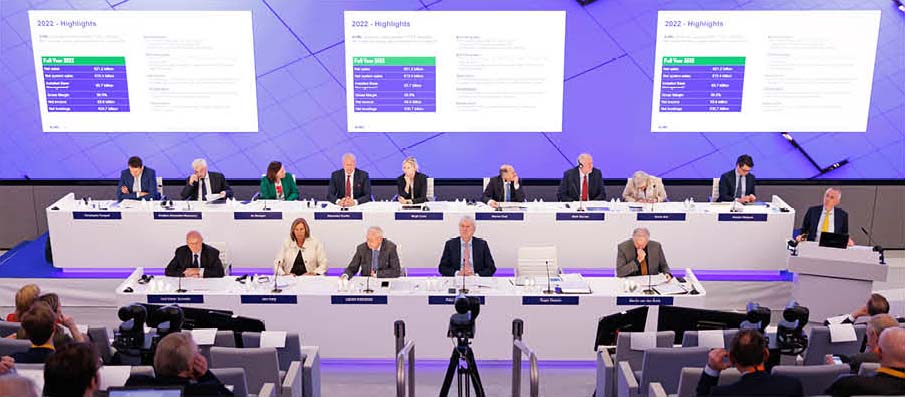 | |||||||||||||||||||||||||||||||||||||||
Our ESG sustainability strategy is underpinned by targets which are detailed across the following pages | |||||||||||||||||||||||||||||||||||||||||
ASML ANNUAL REPORT 2023 | ENVIRONMENTAL, SOCIAL AND GOVERNANCE | STRATEGIC REPORT | CORPORATE GOVERNANCE | FINANCIALS | 70 | |
ESG at a glance | ||||||
To be a sustainability leader, we must drive progress toward a sustainable society. This means enabling ground-breaking technology that solves some of humanity’s toughest challenges. | ||||||
Why it matters | |
Environmental, social and governance (ESG) topics have
become increasingly important to our customers, employees,
suppliers, shareholders and society. We aim to respond
to the continuously evolving needs of our stakeholders in
the best way with our ESG sustainability strategy.
How we’re managing our impact | |
When we act sustainably as a business, it benefits
everyone. We want to grow our company and increase
our positive impact while minimizing our negative impacts
on the environment and people. We do this by focusing
on the ESG sustainability topics where we can have the
biggest impact. For these so-called material topics, we
define policies, targets and actions, and disclose progress
against them in our ESG sustainability reporting.
Environmental – We want to continue to expand computing power but with minimal waste, energy use and emissions. Our focus is on energy efficiency and climate action, and the transition to a circular economy. | |
Social – We want to ensure responsible growth that benefits all stakeholders – to provide an attractive workplace for all, build a responsible supply chain, fuel innovation in our ecosystems and be a valued partner to communities. | |
Governance – We want to anchor our responsibilities in the way we do business through integrated governance, engaged stakeholders and transparent reporting. | |
We update our material topics annually using insights
from ongoing stakeholder engagement, developments
within ASML and the evolving context in which we
operate.
In 2023, a double materiality assessment was conducted
as input for the ESG sustainability strategy and in
preparation for the CSRD requirements that are currently
being phased in.
Double materiality reflects the following: (1) our most
significant impacts on people and the environment, and
(2) the most significant sustainability-related risks and
opportunities affecting our value drivers, competitive
position and long-term shareholder value creation.
We used the 'impact' part of this assessment to
determine the material topics for this Annual Report, in
line with GRI (Global Reporting Initiative) requirements.
Our process for determining impact materiality can be
summarized in four steps, as shown on the right of this
page. The assessment identified three new topics for
2023: Pollution of air, training and development, and
quality of life.
How we identified our material topics | ||||
Step 1: Understand the context | Step 2: Identify sustainability matters and impacts | |||
Identifying affected stakeholders and users of sustainability information is the foundation of our materiality assessment process. We identify five relevant stakeholder groups: customers, employees, suppliers, shareholders and society. We continually engage with these groups to understand their concerns and how their interests may be impacted. This engagement informs improvement actions and feedback on performance and progress. | We use the insights gained from stakeholder engagement and other relevant sources to identify sustainability matters and impacts that are relevant to us. This results in an overview that includes positive and negative, actual and potential, and short-, medium- and long-term impacts. The aim of the overview is to cover all impacts that might be material, considering our business activities and relationships across our value chain. | |||
Read more in Our business model - Engaging with our stakeholders | ||||
Step 3: Assess the significance of the impacts | Step 4: Prioritize the most significant impacts | |||
ASML subject matter experts assess the materiality of negative impacts based on scale, scope and irremediable character, also referred to as severity. In case of potential impacts, likelihood is considered. The materiality of positive impacts is assessed based on scale and scope, and, in case of potential impacts, likelihood. For potential negative human-rights-related impacts, severity takes precedence over likelihood. | The assessment results in a materiality score for each impact, and we use these materiality scores to determine thresholds for materiality. Thresholds are determined separately for negative impacts and positive impacts, as these cannot always be compared. Impacts that meet the materiality threshold are clustered into material sustainability matters. The outcomes of the materiality assessment are used to shape our strategy and targets, with the aim of sustainable long-term value creation for all our stakeholders. The Board of Management sets this strategy. | |||
ASML ANNUAL REPORT 2023 | ENVIRONMENTAL, SOCIAL AND GOVERNANCE CONTINUED | STRATEGIC REPORT | CORPORATE GOVERNANCE | FINANCIALS | 71 | |
Our material ESG sustainability topics | ||||||
To create long-term value for our stakeholders, we focus our strategy on the sustainability topics where we can have the greatest impact. | ||||||
Material topics (positive or negative, actual or potential) which are considered material for 2023 based on the materiality assessment | ||||||||
Material topic name | Material impacts | Positive or negative impact | Actual or potential impact | Impact area value chain | Please read more in | |||
Energy management & carbon footprint – Operations | Impact on climate change through energy use and GHG emissions from manufacturing, buildings, business travel and employee commuting | Negative | Actual | Own operations | Energy efficiency and climate action – Emissions from our own operations – Manufacturing and buildings and Business travel and commuting | |||
Energy management & carbon footprint – Supply chain | Impact on climate change through energy use and GHG emissions from purchased goods and services and logistics | Negative | Actual | Upstream – suppliers | Energy efficiency and climate action – Emissions from our supply chain (including logistics) | |||
Energy management & carbon footprint – Product use | Impact on climate change through energy use and GHG emissions from use of our products at our customers | Negative | Actual | Downstream – customers | Energy efficiency and climate action – Emissions from product use at our customers | |||
Energy management & carbon footprint – Downstream impact | Impacts in the ICT industry and society through the use of our customers' products in all kinds of applications that contribute to climate change or support climate change mitigation and adaptation | Positive and negative | Actual | Downstream – beyond customers | Energy efficiency and climate action | |||
Pollution of air | Impacts on the environment through emission of nitrogen oxides (NOx), non-methane volatile organic compounds (NMVOC) and hydrogen (H2) from manufacturing | Negative | Actual | Own operations | Energy efficiency and climate action – Emissions from our own operations – Manufacturing and buildings | |||
Circular economy | Impacts on the environment through resource use and waste related to systems, parts, tools, packaging, real estate and non-product-related activities | Negative | Actual | Own operations & customers | Circular economy | |||
Circular economy | Impact on the transition to a regenerative and circular economy through the use of our customers' products in all kinds of applications | Positive and negative | Actual | Downstream – beyond customers | Circular economy | |||
Diversity and inclusion | Impact on employees by providing equal opportunities for all, including gender equality, fair remuneration, measures against discrimination and harassment, and promotion of diversity and inclusion | Positive | Actual | Own operations | Attractive workplace for all – Inspiring a unified culture | |||
ASML ANNUAL REPORT 2023 | ENVIRONMENTAL, SOCIAL AND GOVERNANCE CONTINUED | STRATEGIC REPORT | CORPORATE GOVERNANCE | FINANCIALS | 72 | |
Our material ESG sustainability topics (continued) | ||||||
Material topics (positive or negative, actual or potential) which are considered material for 2023 based on the materiality assessment (continued) | ||||||||
Material topic name | Material impacts | Positive or negative impact | Actual or potential impact | Impact area value chain | Please read more in | |||
Talent attraction, employee engagement and retention | Impact on employees' well-being through labor conditions, including social protection, fair remuneration practices, freedom of association and collective bargaining, and existence of works councils | Positive | Actual | Own operations | Attractive workplace – Providing the best employee experience | |||
Training and skills development | Impact on employees’ well-being and careers by providing training and development opportunities | Positive | Actual | Own operations | Attractive workplace – Providing the best employee experience | |||
Occupational health and safety | Impacts on employee health, safety and well-being in case of incidents with hazardous substances or systems and work-related pressure on physical and mental health | Negative | Potential | Own operations | Attractive workplace – Ensuring employee health and safety and Providing the best employee experience | |||
Responsible supply chain and product stewardship | Potential impacts on the environment and workers in the supply chain, including labor conditions, forced and child labor, and management of those impacts through product stewardship and supply chain due diligence | Positive and negative | Potential | Upstream – suppliers | Responsible supply chain | |||
Innovation ecosystem | Impacts in society through supporting the innovation ecosystem and contributing to R&D, public – private partnerships, academic, industry and other research, STEM education and ESG innovation | Positive | Actual | Downstream – beyond customers | Innovation ecosystem and Valued partner in our communities | |||
Community engagement | Impacts on local communities through job creation and pressure on housing, infrastructure, social cohesion and access to talent | Positive and negative | Actual | Own operations | Valued partner in our communities | |||
Quality of life | Impacts on people’s well-being, health, safety and human rights through the use of technology in all kinds of applications that affect quality of life | Positive and negative | Actual | Downstream – beyond customers | Responsible supply chain | |||
ASML ANNUAL REPORT 2023 | ENVIRONMENTAL, SOCIAL AND GOVERNANCE CONTINUED | STRATEGIC REPORT | CORPORATE GOVERNANCE | FINANCIALS | 73 | |
Our material ESG sustainability topics (continued) | ||||||
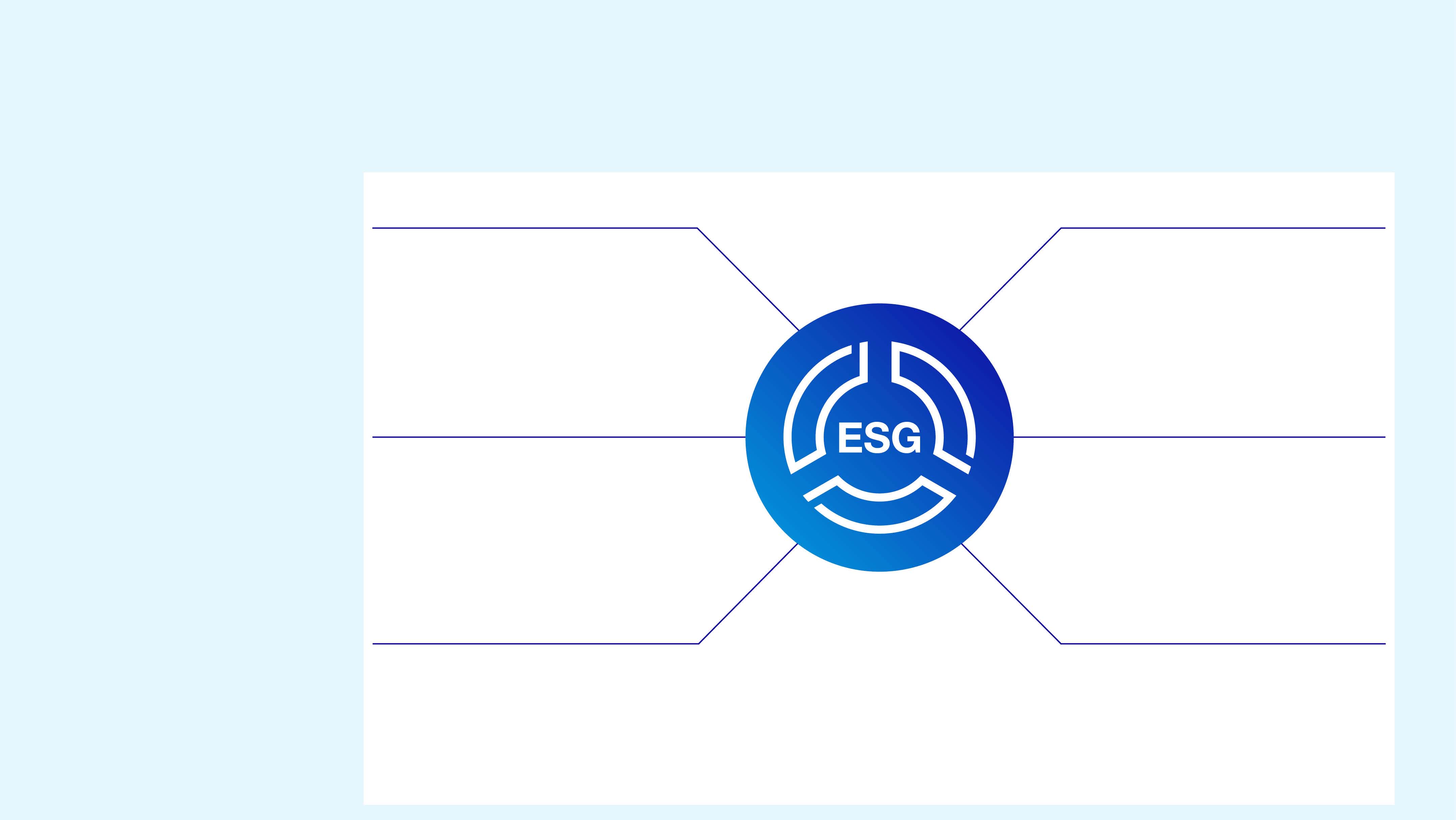
Why it matters The UN’s Sustainable Development Goals (SDGs) represent the global sustainable development agenda and inform public policy. As a responsible business, we support the SDGs, and it is critical that we accelerate action to play our part. Our ESG sustainability strategy supports this ambition, focusing on the six SDGs where we can contribute most. We also became a signatory to the UN Global Compact in 2023. How we’re managing our contribution We contribute to SDG 4 (Quality education) by developing our people and promoting lifelong learning opportunities for the communities where we operate. SDG 8 (Decent work and economic growth) is covered by our commitment to provide an attractive workplace that promotes sustained, inclusive growth, full and productive employment, and decent work for all throughout our supply chain, including protecting labor rights and promoting a safe and secure working environment for everyone. Our contribution to SDG 9 (Industry, innovation and infrastructure) is demonstrated by our work to build a resilient ecosystem that fosters innovation while promoting inclusive and sustainable industrialization. We contribute to SDG 11 (Sustainable cities and communities) by working with our community outreach partners to make cities and human settlements inclusive, safe, resilient and sustainable. We contribute to SDG 12 (Responsible consumption and production) via our circular economy work and our work to achieve environmentally sound management of chemicals and all wastes throughout their life cycles, in accordance with agreed international frameworks. We contribute to SDG 13 (Climate action) by promoting energy efficiency and climate action across our value chain. | ||||||||||
SDG 4 | 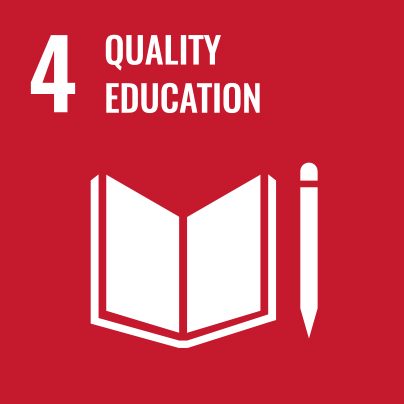 | 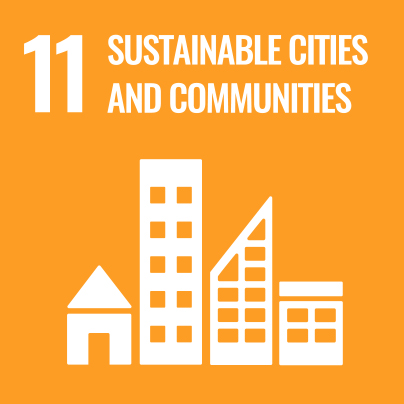 | SDG 11 | |||||||
Quality education | Sustainable cities and communities | |||||||||
Ensure inclusive and equitable quality education and promote lifelong learning opportunities for all | Make cities and human settlements inclusive, safe, resilient and sustainable | |||||||||
Our contribution | Our contribution | |||||||||
SDG 8 | 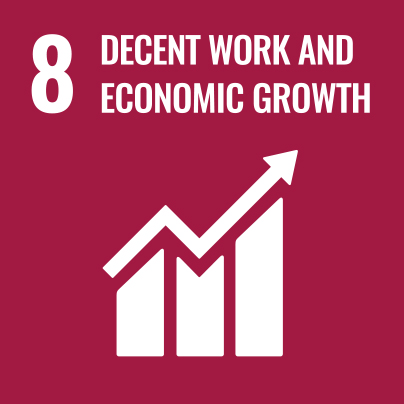 | 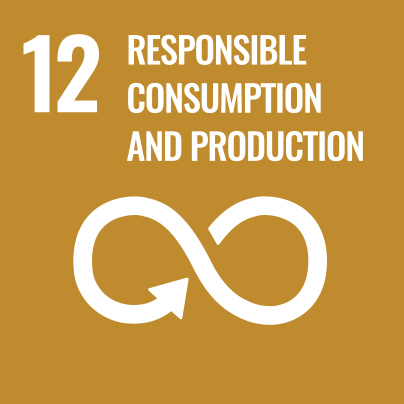 | SDG 12 | |||||||
Decent work and economic growth | Responsible consumption and production | |||||||||
Promote sustained, inclusive and sustainable economic growth, full and productive employment and decent work for all | Ensure sustainable consumption and production patterns | |||||||||
Our contribution | Our contribution | |||||||||
SDG 9 | 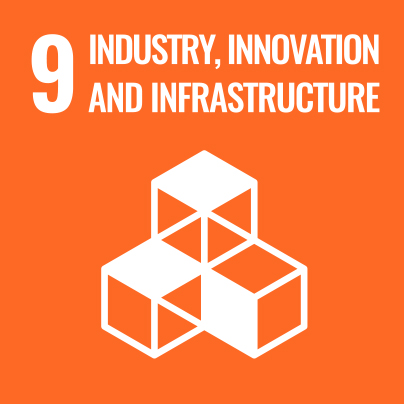 | 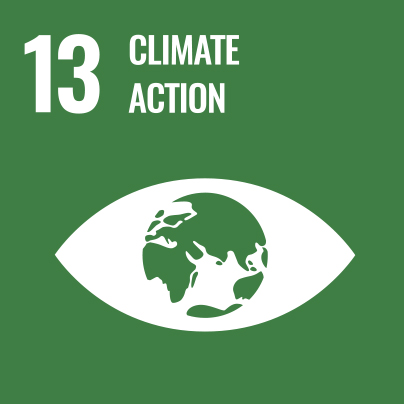 | SDG 13 | |||||||
Industry, innovation and infrastructure | Climate action | |||||||||
Build resilient infrastructure, promote inclusive and sustainable industrialization, and foster innovation | Take urgent action to combat climate change and its impacts by regulating emissions and promoting developments in renewable energy | |||||||||
Our contribution | Our contribution | |||||||||
ASML ANNUAL REPORT 2023 | ENVIRONMENTAL, SOCIAL AND GOVERNANCE CONTINUED | STRATEGIC REPORT | CORPORATE GOVERNANCE | FINANCIALS | 74 | |
Contributing to the UN's Sustainable Development Goals | ||||||
The UN’s 2030 Agenda for Sustainable Development provides a shared blueprint for peace and prosperity, for people and planet, now and in the future. | ||||||

ENVIRONMENTAL | ||
Energy efficiency and climate action | ||
Scope 1 and 2 emissions from our own operations – Manufacturing and buildings | ||
Scope 3 emissions from our own operations – Business travel and commuting | ||
Scope 3 emissions from our supply chain (including logistics) | ||
Scope 3 emissions from product use at our customers | ||
Circular economy | ||
Prevent waste | ||
Extend the lifetime of our products | ||
Reuse resources | ||
Recycle materials | ||
Water management | ||
Energy efficiency and climate action | |
We are working to reduce our carbon footprint to achieve net zero emissions across our value chain by 2040. | |
Broadening energy efficiency efforts across our product portfolio. |
Circular economy | |
We aim to maximize the value of our systems, reusing resources as much as possible, while minimizing waste, decoupling our growth from resource consumption, and recycling materials. | |
Aiming for zero waste from operations to landfill or incineration by 2030. |
ASML ANNUAL REPORT 2023 | ENVIRONMENTAL | STRATEGIC REPORT | CORPORATE GOVERNANCE | FINANCIALS | 75 | |
Environmental at a glance | ||||||
We are committed to reducing the environmental footprint of our operations and supply chain as well as the environmental impacts of our products and services. | ||||||
IN THIS SECTION | ||
Our overall performance in 2023 | ||
Scope 1 and 2 emissions from our own operations – Manufacturing and buildings | ||
Scope 3 emissions from our own operations – Business travel and commuting | ||
Scope 3 emissions from our supply chain (including logistics) | ||
Scope 3 emissions from product use at our customers | ||
 | ||
Why it matters | |
As the world turns to technology to help solve its pressing
challenges, our goal is to expand the availability of
computing power and data storage capability while reducing
the environmental footprint of our operations, our supply
chain, and from the use of our products and services.
The growing demand for enhanced chip functionality means
that the complexity and energy consumption of the overall
microchip patterning process is increasing. Aiming for net
zero emissions across our entire value chain by 2040 while
energy demand is increasing is a complex challenge that
can only be achieved by working closely with our partners,
suppliers, customers and other stakeholders.
Our ambition is to achieve carbon neutrality with net zero
emissions across our manufacturing and buildings
(scope 1 and 2) by 2025. With regard to scope 3, we aim
to achieve net zero emissions from business travel and
commuting (travel to and from work) by 2025, in our
supply chain (scope 3 upstream) by 2030, and from the
use of our products and services by customers (scope 3
downstream) by 2040.
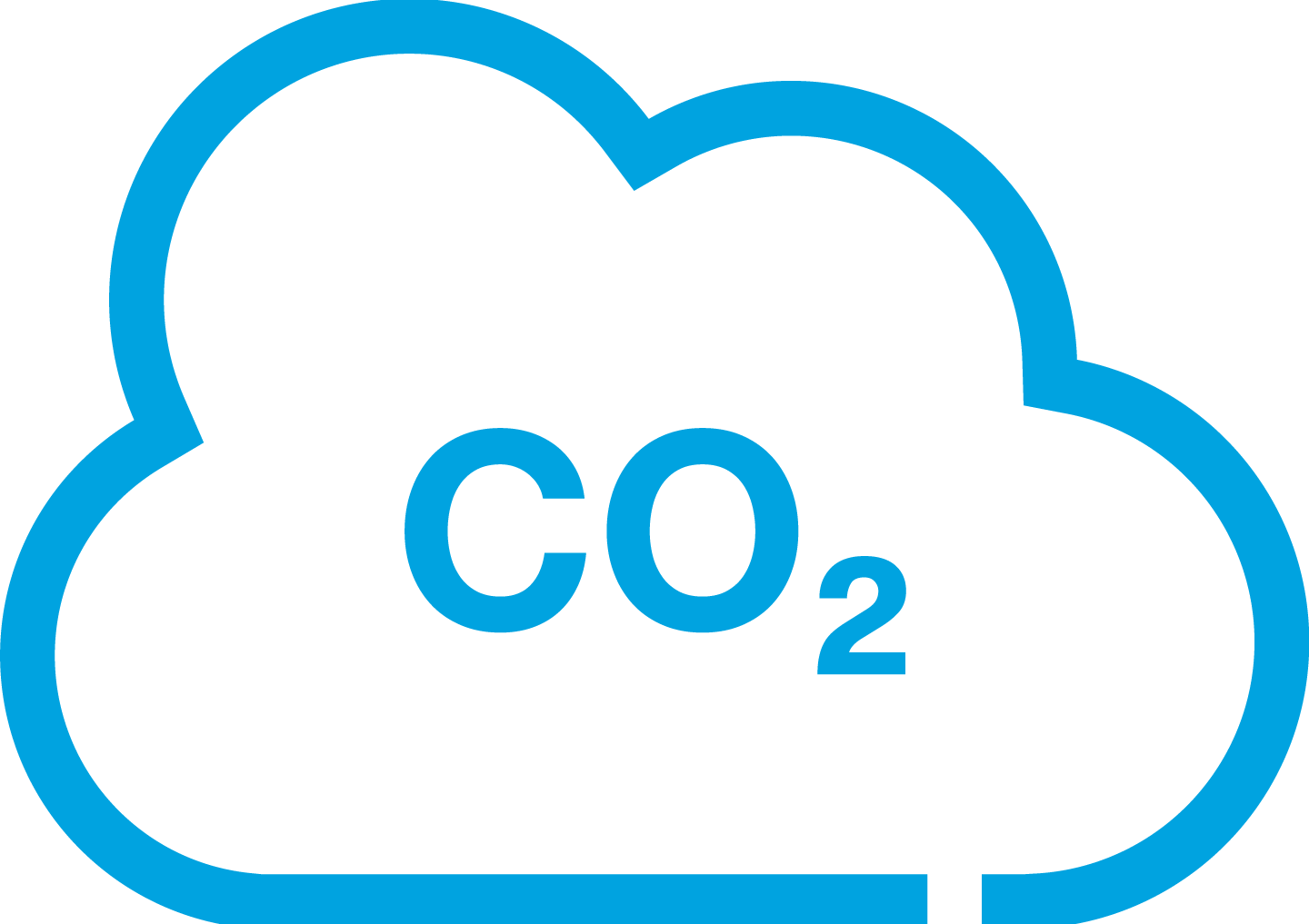 | 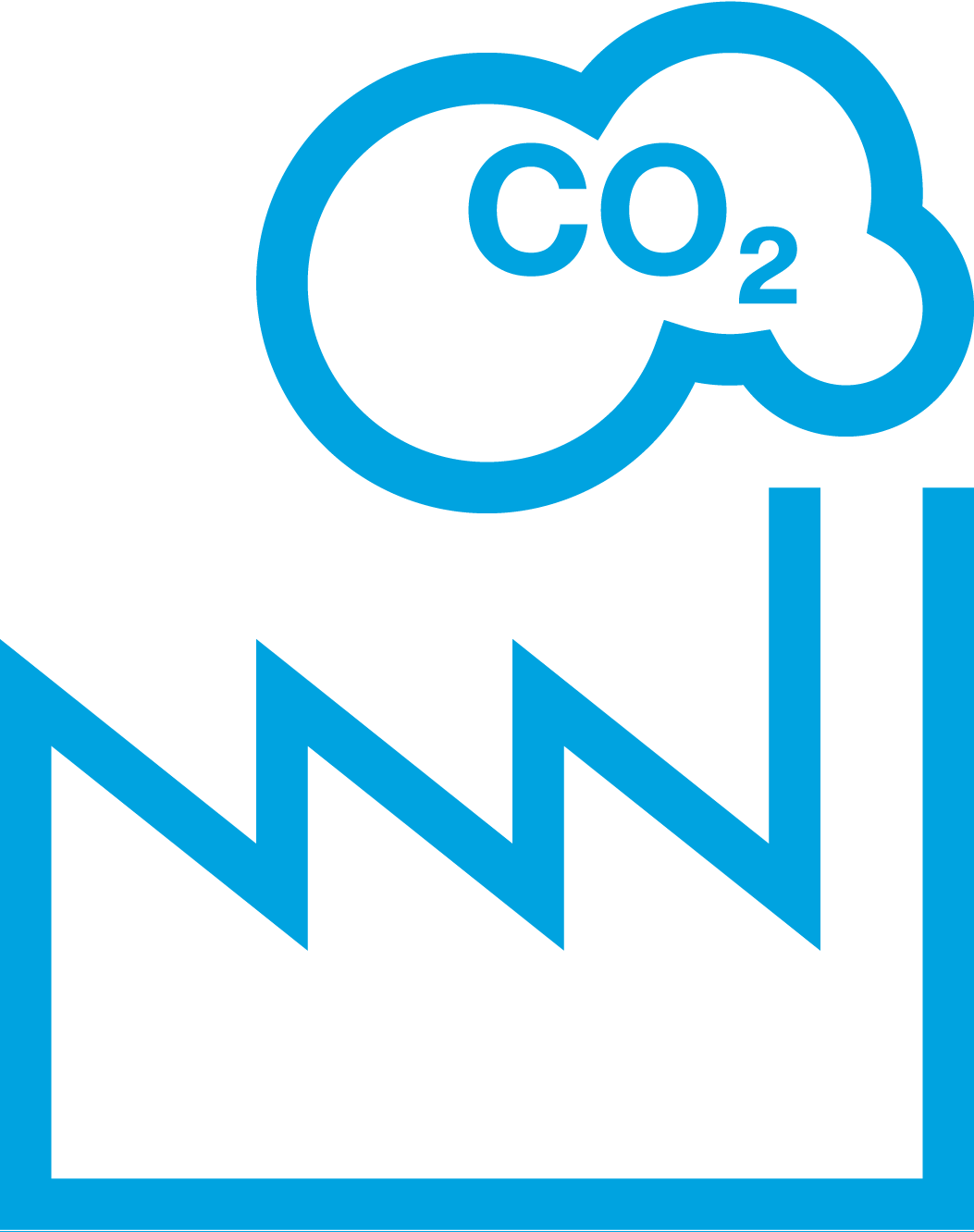 | 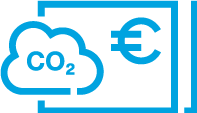 | 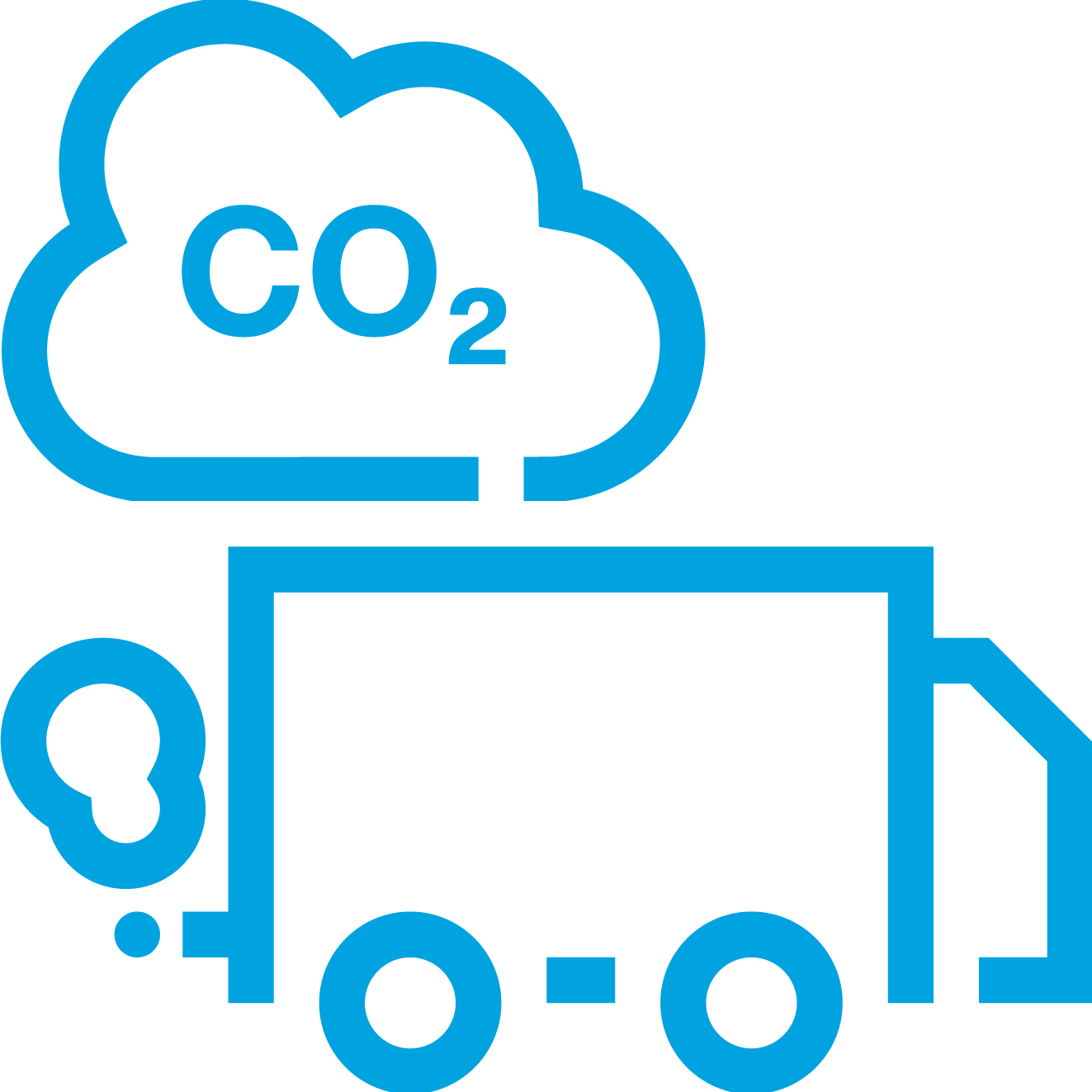 |  | |||||
35.1 kt | 15.0 Mt | 1.06 kt | 0.55 kt | 7.7 kWh | |||||
Scope 1 and 2 CO2e emissions (2025 target: net zero) | Scope 3 CO2e emissions (2040 target: net zero) | Scope 3 CO2e emissions intensity (per €m gross profit) (2025 target: 1.016) | Net scope 3 CO2e emissions intensity (per €m revenue) | NXE energy use per wafer pass (NXE:3600D, measured in 2023) (2025 target: 5.1 kWh) |
How we’re managing our impact | |
Our goal is to reduce our climate impacts, working
closely together with our peers in the entire
semiconductor value chain – in our own operations
together with our suppliers, in our customers’ production
process and through reducing the energy used by
semiconductors in operation by enabling scaling.
Increasing energy efficiency is one of the key levers – our
efforts range from optimizing the technical installations in
our buildings to supplying more energy-efficient products
(in terms of energy spent per wafer exposure) to
customers. Other ways we are working to reduce our
GHG emissions include reducing business travel,
commuting more sustainably, using renewable electricity
and minimizing our use of natural gas by reusing waste
heat and electrification.
We measure our performance in the following ways: | |
•Scope 1 and 2 CO2e emissions •Scope 3 CO2e emissions •Scope 3 CO2e emissions intensity (per €m gross profit) •Scope 3 CO2e emissions intensity (per €m revenue) •NXE energy use per exposed wafer | |
Our environmental management system | ||
We have implemented an environmental management system (EMS) to monitor energy use and emissions and improve performance and enhance efficiency across our global operations. The EMS is integrated into the overall environmental, health and safety (EHS) management system operated by all ASML facilities. This system was recertified for ISO 14001 (the standard for environmental management systems) in 2023 and structured in accordance with ISO 45001 (the standard for occupational health and safety management systems) requirements. | ||
ASML ANNUAL REPORT 2023 | ENVIRONMENTAL CONTINUED | STRATEGIC REPORT | CORPORATE GOVERNANCE | FINANCIALS | 76 | |
Energy efficiency and climate action | ||||||
We are working to reduce our carbon footprint to achieve net zero emissions across our value chain by 2040. | ||||||
Our journey to net zero emissions in our value chain
We have set a target to achieve net zero emissions in our
value chain by 2040. Our approach to achieving this is
based on three principles:
1 | Reduce energy use and innovate to achieve greater energy efficiency by redesigning our assets, products and processes. | |
2 | Aim to lead the shift toward 100% credible, renewable energy. | |
3 | Compensate for residual emissions if no reasonable other improvement actions are available. | |
We will need to work closely with our customers,
suppliers and partners to achieve the milestones in our
journey to net zero emissions in our value chain.
As part of our journey to net zero emissions, we are a
signatory to the Science Based Targets initiative (SBTi)
and we currently have two SBTi-approved near-term
targets. These are:
•Reduction of 25.2% of our combined scope 1 and 2
emissions in 2025, compared to base year 2019,
without offsetting
•Reduction of 35.3% in scope 3 intensity (emissions per
unit of gross profit) in 2025 compared to 2019, without
offsetting
The diagram below illustrates our journey to net zero emissions in our value chain: | |
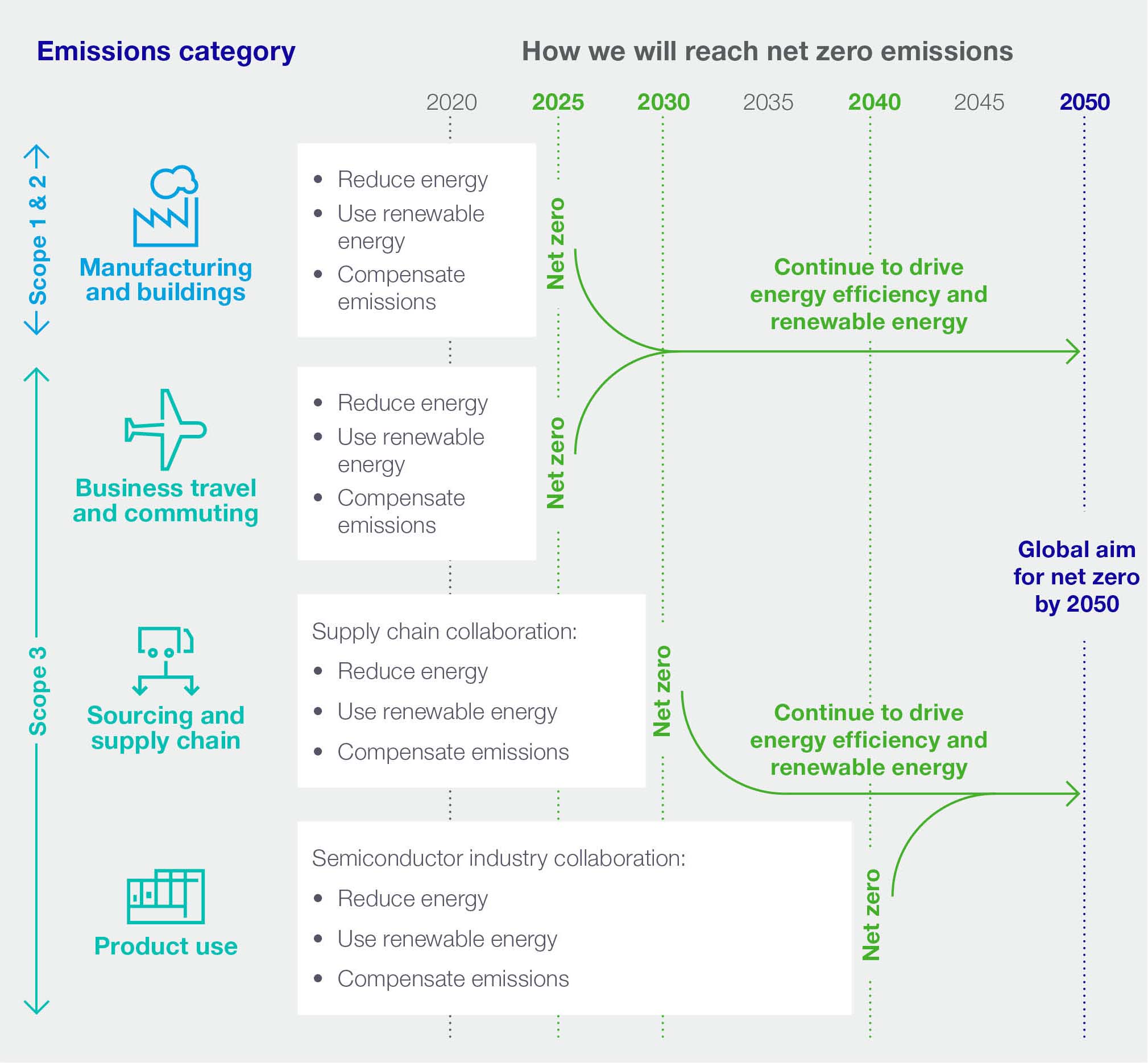 | |
2025 | Net zero scope 1 and 2 emissions from manufacturing and buildings | |
We use natural gas resulting in direct emissions (scope 1). In some parts of the world, we have been unable as of yet to buy green electricity. This results in local emissions caused by fossil power plants (scope 2). | ||
2025 | Net zero scope 3 emissions from business travel and commuting | |
Emissions from employees traveling to our customers, suppliers and other parts of ASML, and from employees traveling to and from work. | ||
2030 | Net zero scope 3 emissions from our supply chain (including logistics) | |
A significant portion of our GHG emissions are generated indirectly in our supply chain, as we mainly assemble modules that we source from suppliers. Parts and modules have to be transported to us or our customers directly, and our assembled systems are shipped from ASML premises to customers. As today’s freight logistics, especially air transportation, are still carbon-intensive, a significant part of our supply chain emissions stem from logistics (operated by our logistics suppliers). | ||
2040 | Net zero scope 3 emissions from product use at our customers | |
The largest portion of our indirect emissions arises during use of our systems at customers’ factories. Our customers are not always able to use 100% renewable electricity to run their business. | ||
ASML ANNUAL REPORT 2023 | ENVIRONMENTAL CONTINUED | STRATEGIC REPORT | CORPORATE GOVERNANCE | FINANCIALS | 77 | |
Energy efficiency and climate action (continued) | ||||||
We identify and assess the impact of climate-related
risks and opportunities using the assessment guidelines
of the Task Force on Climate-related Financial
Disclosures (TCFD).
Read more in our TCFD Recommendations – Climate-related
disclosure, available at asml.com
Alongside our efforts to lower our carbon footprint, we
are committed to using our innovations and digital
technologies to enable the wider semiconductor industry
to reduce its overall environmental footprint.
Our participation in the annual Carbon Disclosure Project
(CDP) assessment helps steer our environmental
initiatives. CDP runs the global disclosure system that
drives actions and transparency for environment impacts.
Our score in the most recent CDP Climate Change 2023
questionnaire was B, with C being the global average.
We continuously aim to improve and execute emissions
reduction plans throughout the value chain to achieve
our net zero commitment, aiming to maintain good
progress in fighting climate change and to be recognized
by the CDP in the A-list.
How semiconductors support climate action | |||||
While we measure and aim to reduce the impacts of our operations, supply chain and product use, ASML’s climate impacts extend far beyond these areas to include the benefits and risks that our technology brings to society. The technology pioneered by our R&D teams and partners sits at the heart of global digitalization and has the potential to transform how we all live and work. We enable our customers to innovate the semiconductor technologies that can help humanity manage its challenges and seize opportunities by facilitating sustainable living and mobility, accessible healthcare, food security and the transition to renewable energy. For example, semiconductors are harnessing, converting, transferring and storing energy from sources such as solar and wind power as electricity and helping to ensure that national power grids are both responsive and robust. | Mitigating climate change means reducing energy demand by developing end-use applications that are as energy efficient as possible. Digital technology can help businesses and citizens cut energy consumption and save money. Smart sensors can detect room occupancy, allowing lights and heating to be switched off and on automatically. Smartphone applications make it possible for people to remotely control their appliances or get from A to B through car-sharing, ride-sharing or other demand-driven, flexible ways of transportation. And as we transition away from fossil fuels, electric vehicles will become the norm and will require new, potentially diverse electronic solutions. On the adverse side, we acknowledge the effects of digital technologies that increase energy demand, such as AI, IoT, blockchain and cryptocurrency mining. | ||||
 | |||||
ASML ANNUAL REPORT 2023 | ENVIRONMENTAL CONTINUED | STRATEGIC REPORT | CORPORATE GOVERNANCE | FINANCIALS | 78 | |
Energy efficiency and climate action (continued) | ||||||
Our overall performance in 2023
Progress tracking | ||||||||||
Topic | Target 2025 | Performance indicator | 2021 | 2022 | 2023 | Status | ||||
Climate action | Net zero | Scope 1 – Direct emissions from fossil fuels in our operations (kt) | 19.3 | 17.3 | 19.2 | • | ||||
Net zero | Scope 2 – Indirect emissions from energy consumption (kt) [market-based]2 | 20.1 | 20.8 | 15.9 | • | |||||
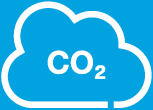 | Net zero (2040) | Scope 3 – Indirect emissions from total value chain (kt)3 | 11,426.2 | 11,936.3 | 15,025.2 | n | ||||
Total footprint (in kt)1 | 11,465.6 | 11,974.4 | 15,060.3 | n | ||||||
No target | Scope 3 CO2e emissions intensity (per €m revenue)3 | 0.61 | 0.56 | 0.55 | n/a | |||||
1.016 | Scope 3 CO2e emissions intensity (per €m gross profit)3 | 1.165 | 1.116 | 1.060 | • | |||||
No target | Reduction in GHG emissions from projects (kt) | n/a | 2.6 | 1.6 | n/a | |||||
Energy efficiency | 5.1 | Products – NXE energy use per wafer pass (in kWh) | 8.3 (NXE:3600D) | 8.3 (NXE:3600D) | 7.7 (NXE:3600D) | n | ||||
No target | Products – NXT energy use per wafer pass (in kWh)4 | 0.56 (NXT:1980Ei) | 0.55 (NXT:2100i) | 0.52 (NXT:1980Fi) | n/a | |||||
 | No target | Energy consumption (in TJ) | 1,689 | 1,633 | 1,729 | n/a | ||||
100 TJ | Energy savings worldwide through projects (in TJ)5 | 12.7 | 31.7 | 47.3 | • | |||||
100% | Renewable electricity (of total electricity purchased) | 92% | 91% | 91% | n | |||||
(10)% | Energy consumption (NXE) (reduction in % of baseline 2018 1.4 MW) | (6)% (NXE:3600D) | (6)% (NXE:3600D) | (12)% (NXE:3600D) | n | |||||
No target | Throughput (in wph) (NXE) | 160 (NXE:3600D) | 160 (NXE:3600D) | 160 (NXE:3600D) | n/a | |||||
(60)% | Energy use per wafer pass (NXE) (reduction in % of baseline 2018)6 | (35)% (NXE:3600D) | (35)% (NXE:3600D) | (40)% (NXE:3600D) | n | |||||
1.The guidance from the GHG Protocol – the organization that provides widely used international standards for emissions reporting – is used for the calculation of the emission scope. Market-based conversion factors are used to calculate the scope 2 CO2e emissions in kt.
2.We report the market-based emissions after purchase of renewable electricity – the electricity is proven emission-free by tracking energy attribute certificates. ASML currently does not compensate any emissions, resulting in no differences between our gross and net emissions.
3.The 2023 figure includes nine months of actual data and three months of estimates. The 2022 figure has been adjusted with data for the entire year (11,900 kt best estimate in the 2022 Annual Report). The 2021 figure has been adjusted to report the exact figure instead of a rounded figure.
4.Since 2023, when we measure the energy efficiency of our DUV immersion and DUV dry systems, the laser is included within the measurement. The comparative figures have been revised.
5.In 2021, we started a new master plan period for 2021-2025, with a target to achieve 100 TJ energy savings by the end of 2025. The savings reported are cumulated compared with the base year; therefore, they are not comparable between years.
6.The baseline figure of the NXE:3400B energy use per exposed wafer pass has been corrected, from 13.08 kWh to 12.8 kWh, due to an incorrect rounding being used in the past.
ASML ANNUAL REPORT 2023 | ENVIRONMENTAL CONTINUED | STRATEGIC REPORT | CORPORATE GOVERNANCE | FINANCIALS | 79 | |
Energy efficiency and climate action (continued) | ||||||
On track • Ongoing focus area n | ||||||
How we’re managing our impact | |
As we work toward net zero emissions in our value chain,
our most immediate task is to manage the climate
impacts of our own operations and buildings.
Scope 1 emissions comprise direct CO2 emissions
from use of fossil fuels – mainly natural gas – in our
operations. The majority of natural gas consumption is
used for heating our buildings and for humidification of
our cleanrooms.
Scope 2 emissions arise from our purchased electricity,
which accounts for 80% of the energy we use at ASML.
Most of our electricity consumption relates to the
manufacturing of chipmaking equipment – assembly and
testing of lithography, metrology and inspection systems
– and maintaining consistent climate conditions such as
temperature, humidity and air quality.
We aim to achieve our targets for scope 1 and 2 by:
1 | Reducing energy consumption | |
2 | Using renewable energy | |
3 | Compensating CO2 emissions | |
Our targets and performance in 2023 | |
Our target is to achieve net zero scope 1 and 2
emissions by 2025. This target exceeds the reductions
needed to limit global warming to 1.5°C. We report
market-based emissions after purchase of renewable
electricity – the electricity is proven emission-free by
tracking energy attribute certificates (EACs).
Despite an increase in our electricity and gas
consumption due to company growth of 30.2%, the
share of renewable electricity remained comparable to
2022 at around 91.4%.
For the third year in a row, our net scope 1 and 2 CO2
emissions have decreased – from 39.4 kt in 2021 and
38.1 kt in 2022 to 35.1 kt in 2023. This decrease in 2023
was due to a combination of business growth (2 kt) and
adding process CO2 emissions (1 kt) to scope 1
reporting, consistent with reporting guidelines,
compensated by a 4.9 kt reduction in Taiwan following a
change in contract in 2022 to reduce our CO2 (reduction
of CO2 emission scope 2), and a 1.1 kt reduction due to
our energy savings master plan.
Our actions in 2023 | |
1. Reducing energy consumption and use of natural gas
Our energy-saving master plan covers each of our five
largest industrial sites and includes over 80 projects. It
aims to reduce energy consumption through direct
annual savings of at least 100 TJ (or 5 kt CO2e). The
main components of the master plan are improving the
efficiency of our technical installations used for our
operation, and optimizing our portfolio by building new
offices that meet the latest green building standards,
such as BREEAM (Building Research Establishment
Environmental Assessment Method) in Europe, LEED
(Leadership in Energy and Environmental Design) in the
US or G-SEED (Green Standard for Energy and
Environmental Design) in South Korea. We are also
investing in renewable energy production at our sites.
Reducing our use of natural gas is a key objective. We
have a multi-year project to implement an energy grid to
reuse waste heat from our factories and offices on our
site in Veldhoven. The energy grid is a two-pipe loop that
makes waste heat available for heating in winter and
energy-efficient cooling in summer. Based on our plans,
we estimate that the use of natural gas in Veldhoven will
be reduced from around 4.9 million m3 to around 1.2
million m3 in the next three to four years, driven by the
energy grid and other energy-saving measures.
As we grow as a company, we strive to optimize our real
estate portfolio because our buildings account for a
significant percentage of our scope 1 and 2 emissions.
When building new offices and manufacturing sites,
we seize the opportunity to make them sustainable,
and several of our existing buildings have been assessed
for performance against BREEAM guidelines. Two
additional buildings in the Netherlands achieved a
BREEAM 'Excellent' rating in 2023: our logistic center
and one large office building. Five more buildings are in
the process of achieving a BREEAM 'Excellent' rating in
2024.
With an eye on future growth, our new campus in
Veldhoven is being designed with a strong focus on
sustainability. We are applying the latest building
sustainability standards to our real estate worldwide,
wherever possible. Besides the Netherlands, we have
projects ongoing in South Korea (G-SEED) and Taiwan
(LEED).
ASML ANNUAL REPORT 2023 | ENVIRONMENTAL CONTINUED | STRATEGIC REPORT | CORPORATE GOVERNANCE | FINANCIALS | 80 | |
Energy efficiency and climate action (continued) | ||||||
Scope 1 and 2 emissions from our own operations – Manufacturing and buildings | ||||||
Key projects in 2023 | |
In 2023, as part of our energy savings master plan, we executed key projects in the Netherlands, the US and Taiwan which resulted in around 16 TJ annual energy savings. The total energy savings delivered by projects executed between 2021 and 2023 amounted to 47 TJ. In 2023, if we include part of the savings realized by projects started in 2022 and not accounted for in 2022, we realized savings of: | |
•11 TJ per year through operationalizing systems of the energy grid and implementing H2 venting in two manufacturing buildings in Veldhoven •3 TJ per year in Wilton by installing sand filters on cooling towers •1 TJ in San Diego through the installation of solar panels •1 TJ in Taiwan factories by optimizing the operation of cooling installations and replacing ventilation systems | |
The remaining 31 TJ is from savings realized by projects executed in 2021 and 2022. | |
2. Using renewable energy
We are driving a shift to renewable energy by increasing
the share of direct green energy purchases (so-called
bundled renewable electricity) from renewable electricity
generated close to our premises. In the Netherlands, we
are in the third year of a 10-year purchase agreement for
green electricity for our installations. This enables us to
achieve our goal of using 100% renewable electricity in
the country. In 2023, 100% of the electricity used in our
US and Chinese facilities was also from renewable
sources.
In 2023, we managed to secure a long-term power
purchase agreement (PPA) in Taiwan. The contract will
be operational in 2024 and help us with our aim to
reduce our emissions, with 16 kt on a yearly basis as of
2025. We continue to face challenges in South Korea,
where there is little to no credible renewable electricity.
100% | |
of the electricity used in the EU, US and China was from renewable sources | |
3. Compensating for CO2 emissions
We aim to reduce energy consumption and use
renewable energy as much as possible. Where this is not
feasible, we intend to purchase voluntary emission
reduction certificates (VERs) no later than 2025.
Promoting industry-wide collaboration to reduce GHG emissions across the value chain | ||||||
Established in November 2022 with ASML as a founding member, the Semiconductor Climate Consortium aims to address the challenges of climate change and speed up the industry’s efforts to reduce GHG emissions throughout the value chain. Founding members have affirmed their support of the Paris Agreement and related accords driving the 1.5⁰C pathway. The consortium’s members are committed to working toward the following pillars and objectives: | by reducing the carbon footprint stemming from electricity usage for semiconductor manufacturing and for powering chips in electronics devices. 3.Investment and innovation to solve remaining 16%: Reducing emissions from the supply chain and from manufacturing process gases will require considerable R&D, necessitating investments now. 4.Future manufacturing emissions scenarios: Current government and company commitments will substantially reduce manufacturing emissions, but they are still forecasted to overshoot the carbon budget for the 1.5°C pathway. 5.Dilemma of value chain emissions: Digital technologies that require semiconductors play a crucial role in reducing energy use and emissions across industries while simultaneously adding to the overall carbon footprint. Read more at the Semiconductor Climate Consortium (SCC) website | |||||
Transparency – Publicly report progress and scope 1, 2 and 3 emissions annually | ||||||
Ambition – Set near- and long-term decarbonization targets with the aim of reaching net zero emissions by 2040 | ||||||
Collaboration – Align on common approaches, technology innovations and communication channels to continuously reduce GHG emissions | ||||||
On September 20, 2023, the SCC published its first report providing an in-depth analysis of the semiconductor value chain’s carbon footprint and priority-ranked carbon emission sources for the industry to address. The main takeaways include: 1.Baseline of value chain emissions: Semiconductor devices produced in 2021 have a lifetime CO2e footprint of 500 Mt – 16% from supply chain, 21% from manufacturing and 63% from device use. 2.Low-carbon energy is a key lever: Bold and decisive investments in low-carbon energy sources can address more than 80% of industry emissions primarily | ||||||
ASML ANNUAL REPORT 2023 | ENVIRONMENTAL CONTINUED | STRATEGIC REPORT | CORPORATE GOVERNANCE | FINANCIALS | 81 | |
Energy efficiency and climate action (continued) | ||||||
Scope 1 and 2 emissions from our own operations – Manufacturing and buildings (continued) | ||||||
Looking ahead |
Our energy savings master plan will continue to provide
savings in 2024-2025. In 2024, we expect an
acceleration of the energy-saving projects in the five-year
energy master plan. These include installation of solar
panels in San Diego that are expected to lead to 8 TJ per
year savings in 2024, while the operationalization of the
energy grid and renovation of buildings in the
Netherlands are expected to lead to an additional 25 TJ
per year at the end of 2024. We believe that this will
enable us to achieve our target of 100 TJ (or 5 kt CO2e)
per year by 2025.
We have signed a five-year Corporate Power Purchase
Agreement (CPPA) in Taiwan with the aim of providing
our operations there with about 70% renewable
electricity in 2024. Since we do not use gas in Taiwan,
our ambition is to reach 100% renewable by the end of
2025. While the renewable electricity market in South
Korea is limited, we will continue to look for alternative
solutions to procure renewable energy in South Korea
and will use offsetting in case we are not able to reach
our net zero target.
In the coming years, we plan to expand the use of solar
panels on our sites in EMEA, the US and Asia. We aim to
have more than 20,000 solar panels on our roofs by
2025. This would give us a total energy saving of around
40 TJ per year and a total CO2 emission reduction of
around 5 kt per year. This is equivalent to the energy use
of (on average) 3,900 households per year, taking 2,100
cars off the road or planting around 250,000 new trees
(around six trees for every ASML employee).
Lastly, we are working on a plan for compensating our
emissions to reach net zero scope 1 and 2 emissions by
2025.
We will also work toward reporting on the environmental
footprint of our approximately 160 buildings globally,
which include ASML-owned buildings such as
manufacturing buildings, offices and a few warehouses
and buildings leased by ASML.
In 2023, we identified our impact on the environment
through emission of nitrogen oxides (NOx), non-methane
volatile organic compounds (NMVOC) and hydrogen (H2)
from manufacturing as a new material topic. We are
developing a process to formally manage and report this
topic starting in 2024.
How we get to net zero emissions by 2025
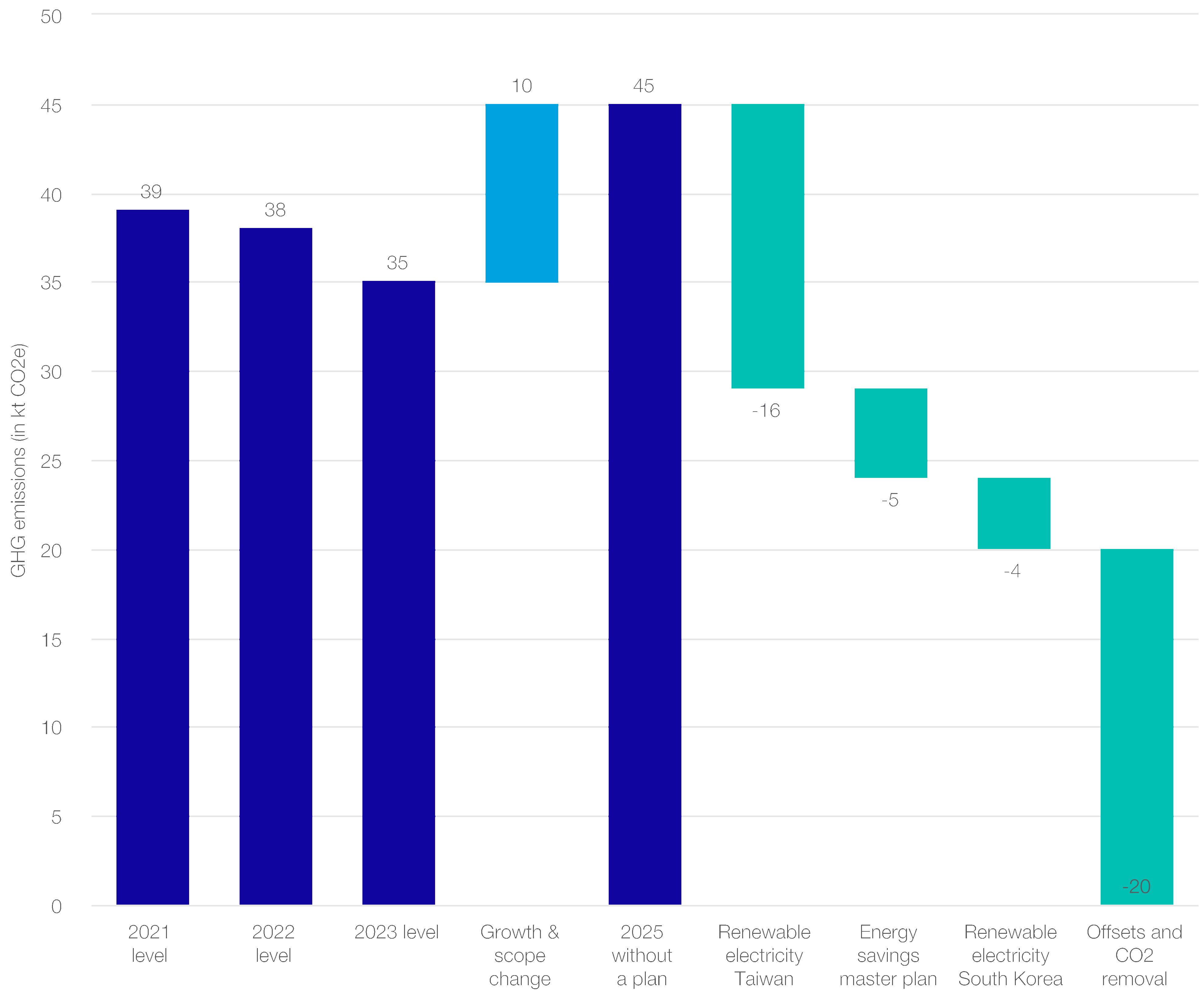
ASML ANNUAL REPORT 2023 | ENVIRONMENTAL CONTINUED | STRATEGIC REPORT | CORPORATE GOVERNANCE | FINANCIALS | 82 | |
Energy efficiency and climate action (continued) | ||||||
Scope 1 and 2 emissions from our own operations – Manufacturing and buildings (continued) | ||||||
Reducing upstream and downstream scope 3 emissions | |||||
Scope 3 emissions include both upstream and downstream
activities and comprise the emissions that are generated in
our supply chain, through business travel and commuting,
and through use of our products at our customers. We
measure progress in reducing our scope 3 emissions by
emission intensity, i.e. total scope 3 emissions (tonnes CO2e)
against total gross profit (€ millions).
Our overall target for 2025 is to reduce the intensity of
scope 3 emissions to 1,016 tonnes CO2e per € million
gross profit, in line with our SBTi commitment. This
represents a 35.3% intensity reduction compared
with 2019.
Our scope 3 intensity for 2023 was 1,060 tonnes CO2e
per € million gross profit (2022: 1,116 tonnes). Our
results indicate that the scope 3 emissions account for
15.0 Mt, or 99.8%, of our total emissions footprint (scope
1, 2 and 3). Of this, 5.5 Mt are ‘upstream’ emissions
(mainly related to the goods and services we buy and
ship), 0.1 Mt are from business travel and commuting,
and 9.4 Mt are indirect ‘downstream’ emissions (use of
sold products at our customers’ sites). As of 2023, we
report indirect climate change effects of air travel
(radiative forcing, non-CO2 emissions) separately and not
as part of our scope 3 emissions. This is to align with
current reporting practices of airlines and in line with
recommendations from SBTi. This has resulted in
comparative figures being updated.
Read more in Non-financial statements – Non-financial
Our overall emissions are increasing due to the growth
of ASML. We expect emissions to continue rising in the
short term due to our continued growth and more
complex products. To ensure that we meet our
ambition for net zero emissions by 2040, we need to
work closely with our value chain partners, for example
on increasing the capacity of renewable electricity in
some regions of the world.
We are still on track to achieve our SBTi target of 1,016
tonnes CO2e per € million gross profit in 2025.
On the following pages you can read more about how
we're tackling scope 3 emissions specifically related to
business travel and commuting, our supply chain, and
through the use of our products by customers.
Our overall target for 2025 is to reduce the intensity of scope 3 emissions to 1,016 tonnes CO2e per € million gross profit, in line with our SBTi commitment. |
ASML ANNUAL REPORT 2023 | ENVIRONMENTAL CONTINUED | STRATEGIC REPORT | CORPORATE GOVERNANCE | FINANCIALS | 83 | |
Energy efficiency and climate action (continued) | ||||||
Scope 3 emissions: An introduction | ||||||
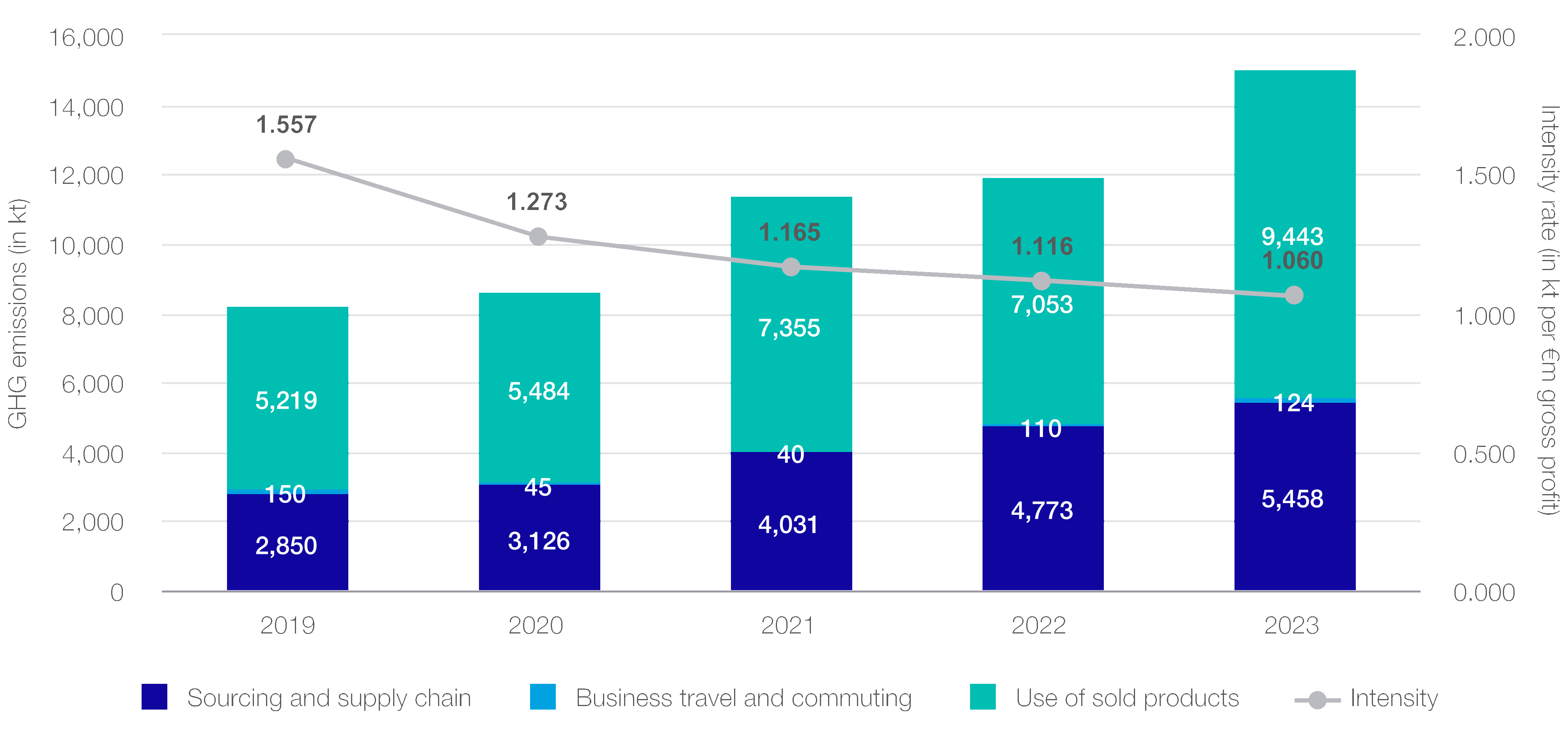
How we’re managing our impact | |
We are using the following levers, aiming to reduce our
impact:
•Business travel: Reducing the volume of business
travel through stricter policies, raising awareness and
use of remote working and servicing options.
•Commuting: To reduce the percentage of car commutes
in our Veldhoven region (NL), we focus on developing a
mix of sustainable commuting options by encouraging
people to travel to work by bicycle or public transport.
Alongside this, we provide shuttle bus services from
Park & Ride locations, offer satellite offices and
promote a balanced working-from-home policy.
Our targets and performance in 2023 | |
Our target is to achieve net zero emissions from business
travel and commuting by 2025.
In 2023, taking into account Sustainable Aviation Fuel
(SAF) purchases, our total emissions due to business
travel and commuting were 70 kt CO2e and 54 kt CO2e,
respectively (see graphs). Due to the increasing number
of employees at all locations and the ending of COVID-19
travel restrictions, our emissions increased by 13%
compared to 2022 (69 kt CO2e and 41 kt CO2e,
respectively). Commuting emissions are predominantly
related to commuting by car. The impact of the indirect
climate change effects of air travel are excluded from our
business travel emissions, as explained on the previous
page.
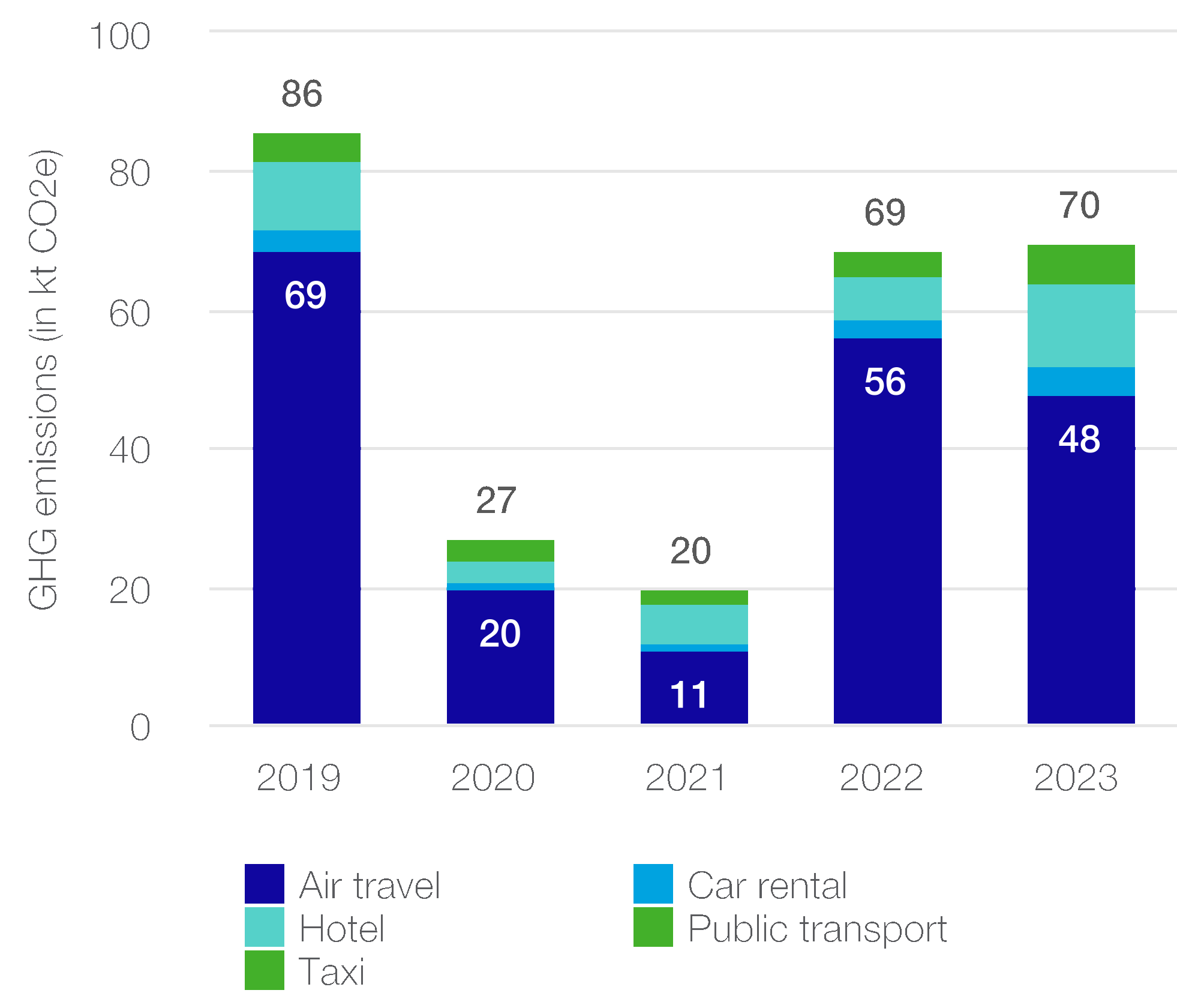
Our annual emissions (in kt) from business travel (2019-2023)
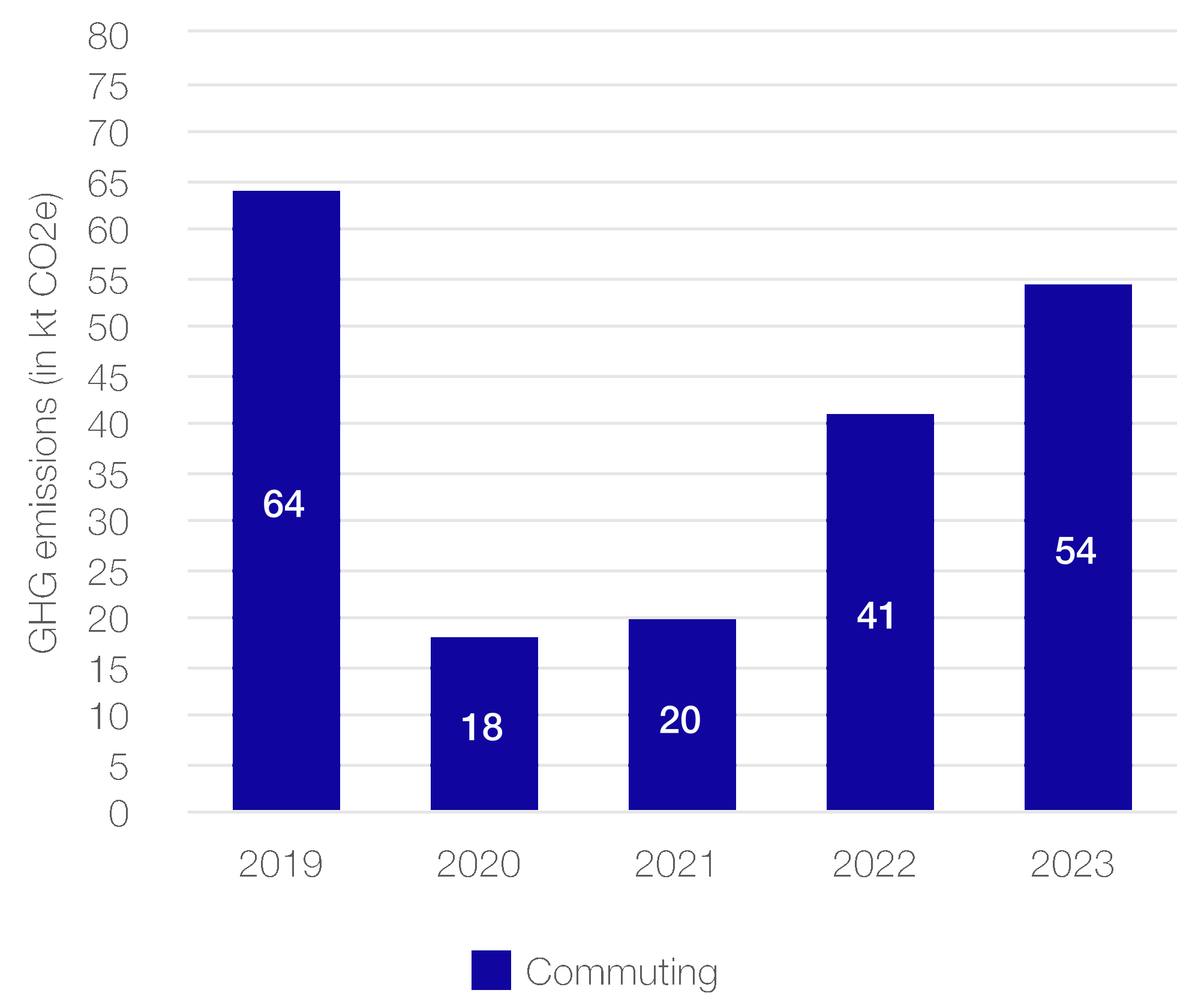
Our annual emissions (in kt) from commuting (2019-2023)
Our actions in 2023 | |
For business travel, we created and launched a travel
dashboard for managers to provide clear insights into
travel cost, broken down into the underlying elements
such as hotel and air travel. This dashboard aims to drive
behavioral change, as it also shows the related CO2
emissions. We reduced our global travel budget per FTE
by 30% from pre-COVID-19 travel patterns of 2019.
We stimulated green travel modes by encouraging
employees to use train travel for specific destinations,
such as Berlin and London. We have launched a project
aiming to use SAF for air travel. In 2023, ASML
purchased 4,341 tonnes of SAF, which has avoided
10,198 tonnes of CO2 emissions. From January 2024,
we aim to use only electric vehicles in our rental car
program in Veldhoven.
In 2023, we also joined 'Anders Reizen', a coalition of
more than 70 organizations in the Netherlands which
aims to reduce CO2 emissions related to business travel
and commuting of its members by 50% in 2030
compared to 2016.
To enable employees in the Netherlands to commute for
free between their home and work on public transport,
we provided them with a business card of the Dutch
railways ('Nederlandse Spoorwegen'). In addition,
exclusive shuttle bus services have been set up between
Eindhoven central station and the Veldhoven campus,
and shared e-bikes are available as a successful,
sustainable solution.
Looking ahead | |
For 2024, we aim to strengthen our partnership with
KLM to further reduce our emissions from aviation so
that we will be able to meet ASML's ambition of net zero
CO2 emissions in 2025 for business travel.
The year will also see us commence a project that will
better quantify emissions from employee commuting in
our operating regions outside the Netherlands. This is
likely to lead to targeted interventions to further reduce
the commuting emissions in later years.
Where there are no alternatives, we aim to offset our
residual emissions from employee commuting and
business travel by purchasing VERs in the coming years.
ASML ANNUAL REPORT 2023 | ENVIRONMENTAL CONTINUED | STRATEGIC REPORT | CORPORATE GOVERNANCE | FINANCIALS | 84 | |
Energy efficiency and climate action (continued) | ||||||
Scope 3 emissions from our own operations – Business travel and commuting | ||||||
How we’re managing our impact | |
Reducing emissions arising from upstream activities in
our supply chain – for example, by sharing data and
targets – requires close collaboration with our suppliers
and other upstream stakeholders.
ESG sustainability has become a major theme in our
supplier relationships. Our Sourcing & Procurement (S&P)
ESG sustainability program is a key enabler in our efforts
to reduce scope 3 emissions by actively engaging and
collaborating with suppliers, to drive further progress. We
depend on our suppliers and other upstream value chain
partners to work with us to jointly reduce our carbon
footprint.
Our targets and performance in 2023 | |
In 2023, total emissions due to upstream activities
(excluding business travel and commuting) were 5,458 kt
CO2e, an increase of 14% from 2022 in line with our
increase in sales (since we use the spend-based
approach for calculating emissions). Purchased goods
and services and capital goods contribute to 82% of
these emissions. Most of the remaining emissions are
from transportation and distribution.
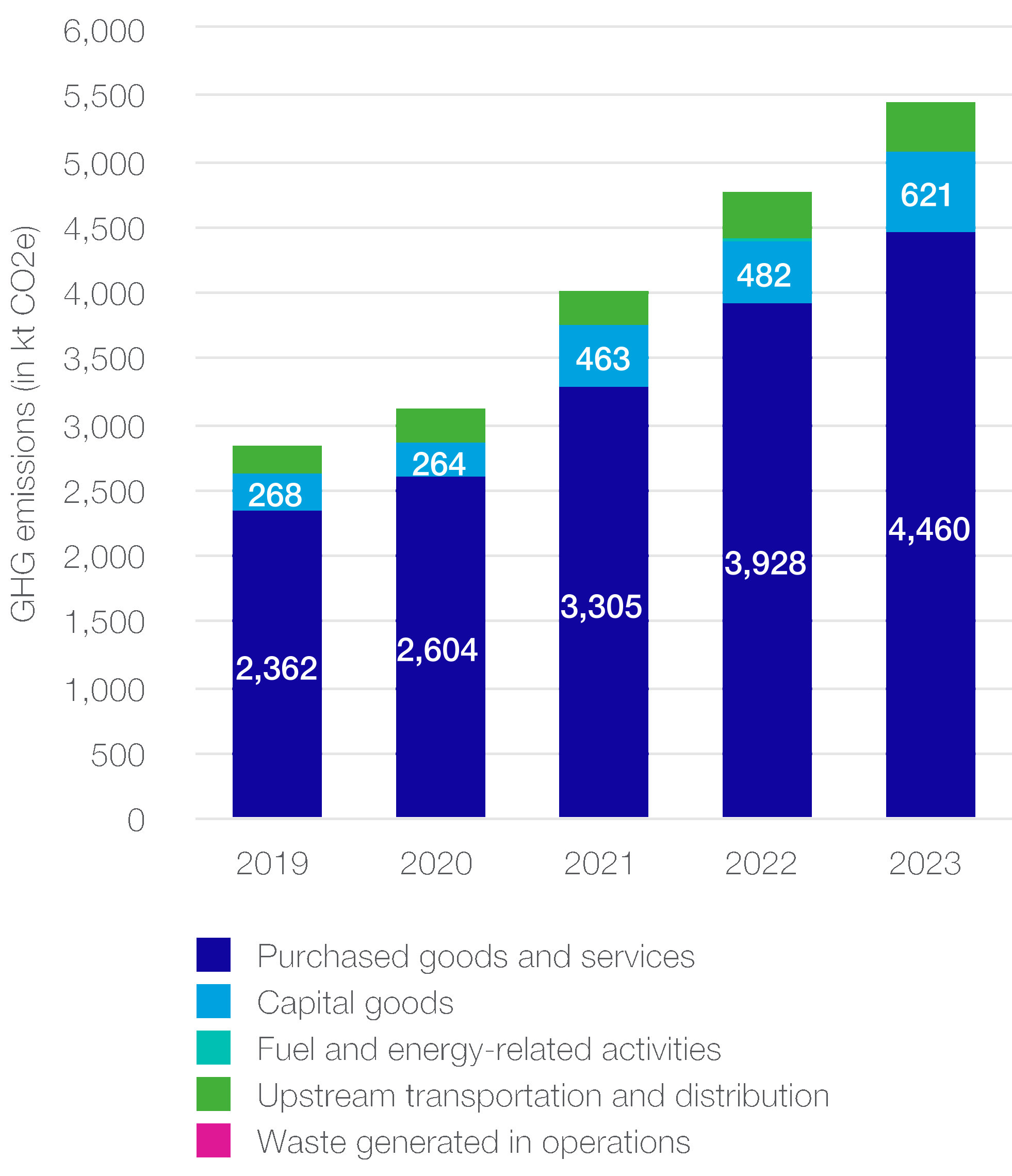
Our scope 3 CO2e emissions in the (upstream) supply chain
(2019-2023)
Our actions in 2023 | |
Improving our scope 3 upstream emissions data
quality
We calculate our scope 3 emissions using guidance from
the GHG Protocol – the organization that provides widely
used international standards for emissions reporting. We
currently use the spend-based methodology for
calculating supplier emissions.
We constantly seek to improve data quality by working
with our suppliers – for example, while the spend-based
methodology is useful, it fails to reflect improvements that
reduce GHG emissions.
In previous years, we have seen a mix of supplier
maturity levels in reporting scope 1 and 2 emissions
data. We obtain GHG emissions data (scope 1, 2 and
limited scope 3) from our suppliers. Our aim is to use this
information to compare spend-based emissions data
with actual emissions data, to help drive meaningful
progress. We learned that spend-based emissions are
overestimated compared to actual emissions data. As a
result, our next step to improve data quality is to include
actual supplier emissions data in our calculations for
scope 3.
It will take time before we can reliably assess all our
suppliers’ scope 3 emissions data, as not all of them
have visibility of their own supply chain emissions. To
support them, we have introduced an IT dashboard that
will capture and display the relevant data.
In 2023, we made progress by requesting CO2e
emissions data directly from our suppliers through our
S&P ESG sustainability program. We aim to use this data
as part of our move from spend-based to hybrid-based
data.
In 2023 we also improved our knowledge within
Development and Engineering (D&E) in estimating CO2e
emissions from our suppliers by building competence on
life-cycle analysis. We are investigating how to determine
the impact of the design and have started developing
tooling for our engineers. With this, we aim at raising
awareness, finding hotspots in the design and making a
start with steering for design changes.
Looking ahead | |
One of our future key focuses will be building on the
supplier GHG emissions baseline – and we will be
working with our top 100 suppliers toward commitment
on net zero scopes 1, 2 and 3 by 2030. We will also be
encouraging suppliers to develop roadmaps for
improving energy efficiency in their production
processes, using renewable energy and (as a last resort)
offsetting.
We expect that new EU regulations and other directives
around mandatory disclosure of scope 3 emissions data
will help to increase transparency across our supply
chain, and will result in firm actions to reduce scope 3
upstream emissions.
Read more in Social – Responsible supply chain
To support the optimization of the design, in the D&E
ESG sustainability program we will work toward
improving the data, automating the GHG emissions
calculations and providing consistent data on the design
connected to a product roadmap. This will include actual
supplier data where available. Also, we will aim to have a
first CO2e footprint estimate available based on the
design information of an ASML product.
ASML ANNUAL REPORT 2023 | ENVIRONMENTAL CONTINUED | STRATEGIC REPORT | CORPORATE GOVERNANCE | FINANCIALS | 85 | |
Energy efficiency and climate action (continued) | ||||||
Scope 3 emissions from our supply chain (including logistics) | ||||||
How we’re managing our impact | |
As demand for enhanced chip functionality grows,
the complexity and energy consumption of the overall
microchip patterning process – including that of our
lithography and metrology and inspection systems – is
increasing.
To measure CO2e emissions from product use, we
calculate emissions generated by our customers’
electricity usage while operating ASML machines. In line
with the GHG Protocol, we calculate these emissions
based on the number of newly installed machines at our
customers’ sites during the reporting year multiplied
by the lifetime of the machine (estimated at 20 years).
When we design new systems, we increasingly focus on
reducing energy consumption and cost, while increasing
performance and availability. The EUV light source is the
key focus of our current engineering efforts, because it
accounts for the largest portion of an EUV system’s total
energy consumption. In addition, we have started to
better assess the energy efficiency of our other product
families – in DUV, metrology and inspection,
computational lithography, and scanner and process
control software solutions.
We’re working with peers and partners – including
through the SCC (read more in our case study on page
81) – to accelerate efforts to reduce GHG emissions,
share knowledge and technology and stimulate the
adoption of renewable energy worldwide.
Reducing energy consumption by introducing sleep mode in our lithography systems | ||||||
Semiconductor manufacturing processes are designed to maximize the utilization of the critical lithography systems. However, there will be times when a system is not in use. Up to now, the lithography system has remained fully powered on to ensure the system is perfectly conditioned at all times to deliver nanometer- accurate performance. In order to reduce energy consumption of our systems, we have introduced a sleep mode, which allows for powering down of subsystems to conserve energy. This does affect thermal conditioning of the system, which requires a few minutes of reconditioning to get the system fully production-ready again. | The key here is to give our customers control over a system's state. The customer has insight into when these idle periods occur, which enables them to put the lithography system into sleep mode without impacting wafer output. Triggered by a command from the fab automation system, the lithography system temporarily powers down some subsystems and then, again triggered by fab automation, returns them back to production mode in time for the next lot. | Most of the energy of an EUV lithography system is used by the CO2 drive laser, so this is a prime candidate for introducing our sleep mode solution. In the drive laser, CO2 gas is compressed and subsequently exited (via nitrogen) by radio frequency (RF) generators. A seed laser is used to trigger stimulated emission of infrared light, which is subsequently used to generate EUV light. We will soon introduce sleep mode for the RF generators. We have developed a software interface that allows our customers to send sleep and wake-up commands to the system, which power down the RF generators via internal control software. This RF sleep mode has been tested in-house, confirming the energy-saving potential as well as fully meeting system specifications immediately after the reconditioning sequence. RF sleep mode has the potential to reduce EUV system energy consumption by approximately 2.5%, averaged over time, when utilized in high-volume manufacturing at our customers' sites. The sleep mode interface will also act as a foundation for implementing sleep mode in other sub-modules, further increasing the energy-saving potential. | ||||
 | ||||||
ASML ANNUAL REPORT 2023 | ENVIRONMENTAL CONTINUED | STRATEGIC REPORT | CORPORATE GOVERNANCE | FINANCIALS | 86 | |
Energy efficiency and climate action (continued) | ||||||
Scope 3 emissions from product use at our customers | ||||||
Our targets and performance in 2023 | |
Our target is to reduce the overall energy consumption of
our future-generation EUV systems by 10% compared
with the 2018 baseline model (NXE:3400B) by 2025,
while increasing productivity.
We have also set a 2025 target to reduce the energy
consumption per exposed wafer by 60%, compared with
the 2018 baseline (NXE:3400B).
Reaching our targets has our full attention, and we plan
to measure our NXE:3800E in 2024, which we expect will
bring us closer to achieving our 2025 target.
Based on the latest measurement of the NXE:3600D,
energy use per exposed wafer pass was 7.7 kWh (versus
our NXE platform 2025 target of 5.1 kWh) which shows
an improvement from the last measurement taken in
2021 of 8.3 kWh.
Based on the latest measurement of the NXT:1980Fi,
energy use per exposed wafer pass was 0.52 kWh.
In 2023, total emissions from the use of sold products
were 9,443 kt CO2e, of which EUV accounted for 5,757
kt CO2e, DUV for 3,488 kt CO2e and metrology and
inspection systems for 198 kt CO2e. The emissions have
increased in line with an increase in sales.
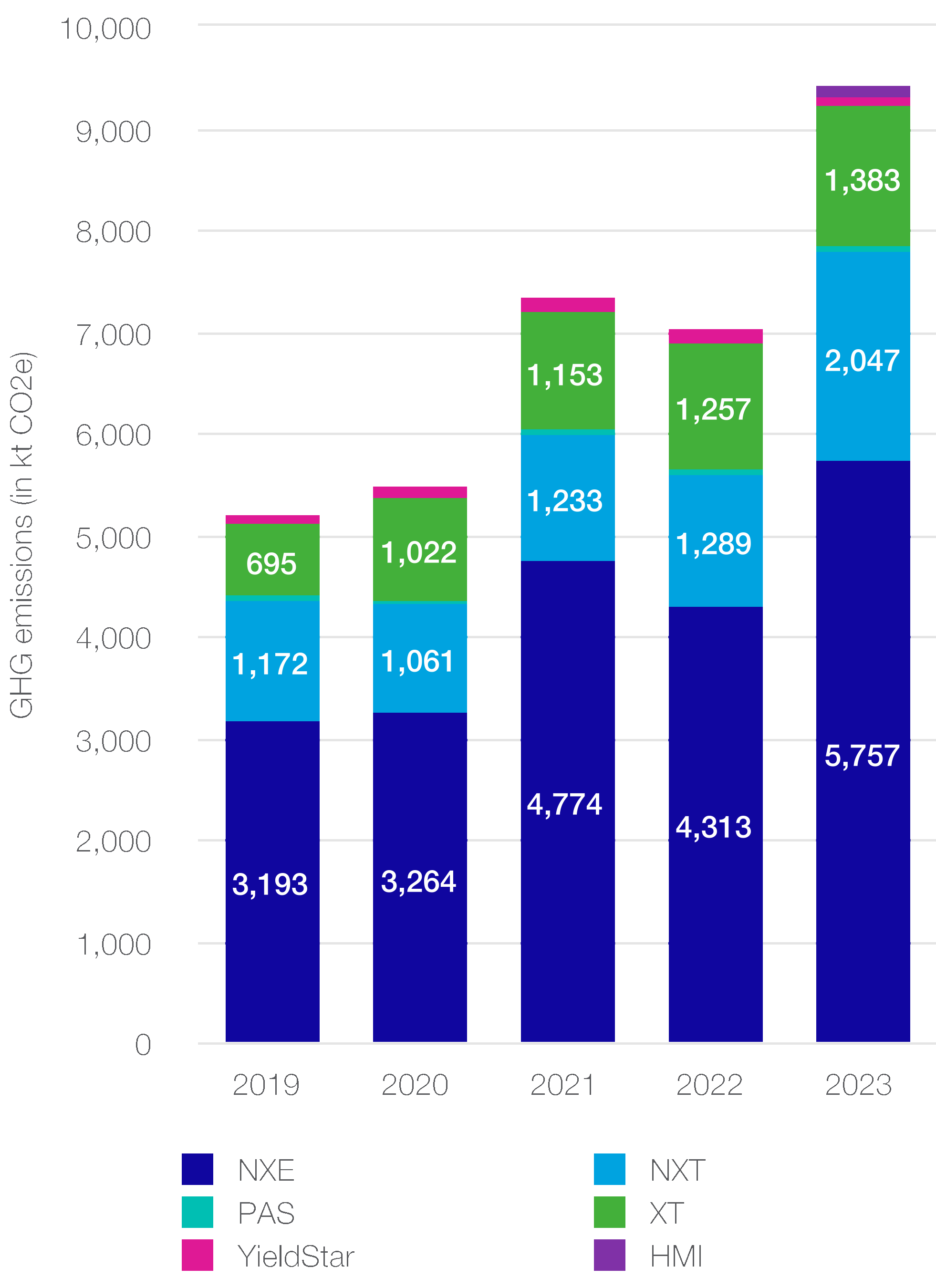
Scope 3 CO2e emissions (in kt) as a result of product use by our
customers for each of our product categories
The table below provides an overview of our systems' energy use, acceptance test protocol (ATP) throughput and energy efficiency. | ||||||||||
Platform | DUV immersion1 | |||||||||
System type | NXT:1980Di | NXT:2000i | NXT:2050i | NXT:1980Ei | NXT:1960B i + PEP-B | NXT:2100i | NXT:1980Fi | |||
Year of energy measurement | 2015 | 2017 | 2020 | 2021 | 2021 | 2022 | 2023 | |||
Energy consumption (in MW) | 0.16 | 0.15 | 0.16 | 0.16 | 0.15 | 0.16 | 0.17 | |||
ATP throughput (in wph) | 275 | 275 | 295 | 295 | 250 | 295 | 330 | |||
Energy use per wafer pass (in kWh) | 0.59 | 0.56 | 0.54 | 0.56 | 0.60 | 0.55 | 0.52 | |||
Platform | DUV dry1 | YieldStar | HMI | ||||||||||
System type | XT:860M | XT:1460 | NXT:1470 | XT:860N | NXT:870 | XT:400M | YS350E | YS375F | YS-380 | YS385 | eScan 1100 | ||
Year of energy measurement | 2017 | 2020 | 2020 | 2022 | 2022 | 2023 | 2017 | 2019 | 2020 | 2023 | 2023 | ||
Energy consumption (in MW) | 0.07 | 0.07 | 0.13 | 0.07 | 0.13 | 0.07 | 0.01 | 0.01 | 0.01 | 0.01 | 0.06 | ||
ATP throughput (in wph) | 240 | 209 | 277 | 260 | 330 | 250 | n/a | n/a | n/a | n/a | n/a | ||
Energy use per wafer pass (in kWh) | 0.31 | 0.34 | 0.47 | 0.27 | 0.38 | 0.30 | n/a | n/a | n/a | n/a | n/a | ||
Platform | EUV 20 mJ/cm2 dose | EUV 30 mJ/cm2 dose | ||||||
System type | NXE:3350B | NXE:3400B | NXE:3400C | NXE:3600D | NXE:3600D | |||
Year of energy measurement | 2015 | 2018 | 2020 | 2021 | 2023 | |||
Energy consumption (in MW) | 1.2 | 1.4 | 1.3 | 1.3 | 1.2 | |||
ATP throughput (in wph) | 59 | 107 | 136 | 160 | 160 | |||
Energy use per wafer pass (in kWh)2 | 19.5 | 12.8 | 9.6 | 8.3 | 7.7 | |||
1.Since 2023, when we measure the energy efficiency of our DUV immersion and DUV dry systems, the laser is included within the measurement. The comparative figures have been revised. 2.The baseline figure of the NXE:3400B energy use per exposed wafer pass has been corrected, from 13.08 kWh to 12.8 kWh, due to an incorrect rounding being used in the past. | ||||||||
ASML ANNUAL REPORT 2023 | ENVIRONMENTAL CONTINUED | STRATEGIC REPORT | CORPORATE GOVERNANCE | FINANCIALS | 87 | |
Energy efficiency and climate action (continued) | ||||||
Scope 3 emissions from product use at our customers (continued) | ||||||
Our actions in 2023 | |
In 2023, we continued working on energy efficiency
improvements for future products, which require long
lead times and take multiple years to achieve. Progress
on these projects is monitored on a quarterly basis.
We proved the capability of the NXE:3600D system to
reach productivity targeting 175 wph (as compared with
the current specification of 160 wph). In 2024, this will be
introduced to the market as the NXE:3600 PEP-D
package.
For our DUV systems, we identified possible energy-
saving options, among others around wafer stage and
reticle stage magnet innovations, adaptive cooling water
flows, reducing the power consumption when systems
are idle (similar to the sleep mode in EUV) and reusing
the otherwise directly emitted CO2 from the immersion
hood in our immersion scanners.
For our metrology and inspection systems, we also
identified possible energy-saving options, among others
around exhaust management and cooling and creating a
sleep mode to reduce power consumption when
systems are idle.
We also worked on improving the data quality of our
inventory for scope 3 downstream emissions. This year
we included the use of HMI e-beam inspection systems
in our inventory. We also included the laser contribution
into our reported values for DUV systems, as well as the
process CO2 gas, which is released during operation of
some of our immersion scanners. Operation and idle time
were updated to better represent actual usage, based on
customer data.
Looking ahead | |
In 2024, we will continue to work on the energy efficiency
of our systems and other product families. At the
moment, we see no reason to adjust our 2025 targets
regarding the energy consumption of our systems.
ASML ANNUAL REPORT 2023 | ENVIRONMENTAL CONTINUED | STRATEGIC REPORT | CORPORATE GOVERNANCE | FINANCIALS | 88 | |
Energy efficiency and climate action (continued) | ||||||
Scope 3 emissions from product use at our customers (continued) | ||||||

Sustainability is a design challenge that must be solved in parallel with system cost and performance – that’s how we will make the biggest difference.” | ||
Ton van der Net | ||
Principal Architect, D&E | ||
25 years at ASML | ||
A sustainability mindset | |
Ton van der Net specializes in improving the energy efficiency and overall sustainability of lithography systems. He has been at the forefront of ASML’s sustainability efforts as they have grown from a team-led initiative to a corporate-level commitment that is becoming integral to how we develop our systems. |
ASML ANNUAL REPORT 2023 | SMALL PATTERNS. BIG IMPACT. | STRATEGIC REPORT | CORPORATE GOVERNANCE | FINANCIALS | 89 |
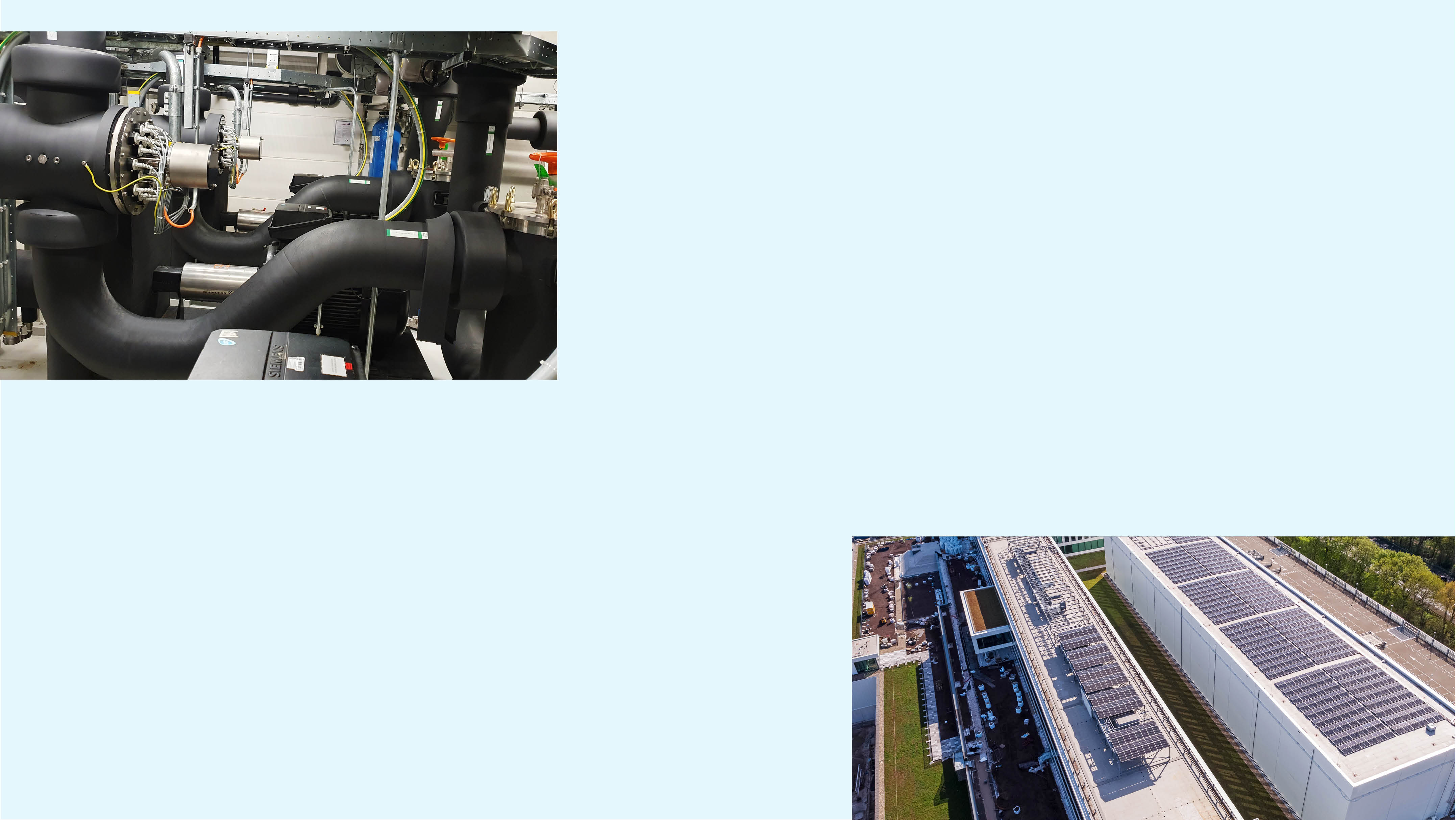
Taking the first steps
About seven years ago, in response to
customers’ concerns, we started looking at
the scale of the infrastructure, like cooling
and power, needed to run lithography
systems. These support facilities needed as
much space as the production lines. When
we estimated the total power they required, it
was huge – around 1.3 MW for our EUV
systems (as much as a few thousand Dutch
homes) – and projected to grow further.
Continuing that trajectory wasn’t
environmentally responsible. So, a small
team of ASML engineers – including me –
started exploring ways to reduce energy
consumption in lithography. For example, a
lot of that 1.3 MW went into cooling the
system and handling the hydrogen flow used
to prevent contamination build-up. Was all
that cooling necessary? Could we handle the
hydrogen more efficiently?
Our initial list of ideas inspired ASML’s first
KPI for sustainable system development.
Some of these ideas looked at how the
systems were used, while others required
changes to the system. For example, if we
redesigned the cooling features, customers
could use warmer cooling water – reducing
the need for power-hungry chillers.
Building a case for sustainability
Any redesign would need buy-in from the
business. So, we teamed up with system
engineering to engage the people who make
the day-to-day design decisions. These early
discussions triggered us to build a business
case for our ideas. That meant thinking – and
encouraging others to think – about the value
of our changes beyond purely financial
terms.
This is quite a radical change in mindset for
any company. However, publications from
the likes of McKinsey have shown that
companies who perform well in sustainability
typically outperform their competitors in
market share and brand image. What’s
more, around this time, ASML announced a
corporate commitment aiming to have net
zero emissions in our value chain by 2040.
And the largest contribution to our current
carbon footprint is the energy our systems
use at customers.
We have made good progress toward that
goal. Between 2018 and 2023, we reduced
the energy per wafer for EUV lithography by
almost 40%. And we have a roadmap for
another 20% of reductions by 2025.
The new normal
Sustainability is now becoming a business
driver at ASML, due partly to the corporate
commitment and partly to the internal
motivation of individuals. Our Green ASML
employee network has over 2,000 people
looking at everything from the food we serve
in the cafeteria to system energy
consumption. We’ve even had internal
‘Shark Tank’ style events to generate new
ideas to make our whole operation more
sustainable.
Many of that initial team – including myself –
are still active in driving a sustainable
innovation culture within ASML. We are
looking to embed sustainability even more
fully into ASML’s PGP, because you get
better results faster and at lower cost if you
build sustainability in from the start. To this
end, our system design specifications – the
handbook for what we want to achieve in a
new system – now include maximum power
consumption and a power breakdown as
standard. By making sustainability part of our
standard processes, we have switched on
the innovation power of 20,000 ASML
engineers.
A greener future
We are also looking at the materials we use
to build our systems. There are standard
ways of estimating the sustainability of
materials in terms of their energy cost to
produce and recyclability, but they are very
approximate. We want to develop more
accurate methods based on actual materials
and processes. The sustainability of materials
could then become another driver for
innovation.
Sustainable innovation is becoming part of
our business as usual, just another design
specification for our engineers alongside
performance, cost and time to delivery.
Because, in the end, all those factors must
be balanced. Our sustainability efforts only
have value if they come in a system that
meets our customers’ business needs.
ASML ANNUAL REPORT 2023 | SMALL PATTERNS. BIG IMPACT. CONTINUED | STRATEGIC REPORT | CORPORATE GOVERNANCE | FINANCIALS | 90 | |
Why it matters | |
Our materiality assessment identified the impact of our
use of materials and resources as a material topic – and
our focus on a circular economy is the cornerstone of our
commitment to managing this challenge.
A circular economy enables sustainable economic
growth by creating business loops, ensuring efficient use
of resources and driving an innovative business model.
This approach is an essential part of decoupling our
growth from the increasing consumption of resources.
Through our circular economy initiative, we aim to ensure
our products and services retain and create as much
value as possible for us and our partners in the
ecosystem.
Our circular economy strategy is based on the following four principles: •Prevent waste •Extend lifetime •Reuse resources •Recycle materials | ||
How we’re managing our impact |
A successful transition toward a circular economy means
improved designs, operational resilience, reduced
emissions and reduced costs. Improved designs are
achieved through learning from use cases – both
successes and failures – to improve products, solutions
and processes. The availability of parts and access to
material to support ASML’s growth, while decoupling it
from material consumption and closing the loops, will be
key for operational resilience. This will lead to reduced
emissions through disposing locally and eliminating
waste ending in incineration, energy recovery and landfill.
Cost reduction can be achieved by optimizing the
amount of purchased goods while avoiding surplus and
reusing resources to eliminate waste. In summary,
ASML’s approach to circular economy is designing
products for longevity and reuse, creating closed-loop
supply chains and encouraging the recycling of materials.
 |  | 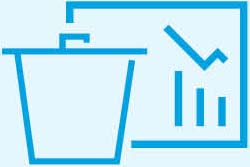 | 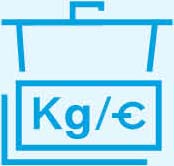 |  | ||||
95% | 88% | 8,279 t | 300 kg | 55% | ||||
Systems sold in the past 30 years still active in the field | Reuse rate of parts returned from field and factory | Total waste from operations | Waste generated per €m revenue | Recycling rate | ||||
(2025 target: >95%) | (2025 target: 95%) | (excl. construction) | (2025 target: 209 kg) | (excl. construction) | ||||
(2025 target: 90%) |
ASML ANNUAL REPORT 2023 | ENVIRONMENTAL CONTINUED | STRATEGIC REPORT | CORPORATE GOVERNANCE | FINANCIALS | 91 | |
Circular economy | ||||||
We aim to maximize the value of our systems, reusing resources as much as possible, while minimizing waste, decoupling our growth from resource consumption, and recycling materials. | ||||||
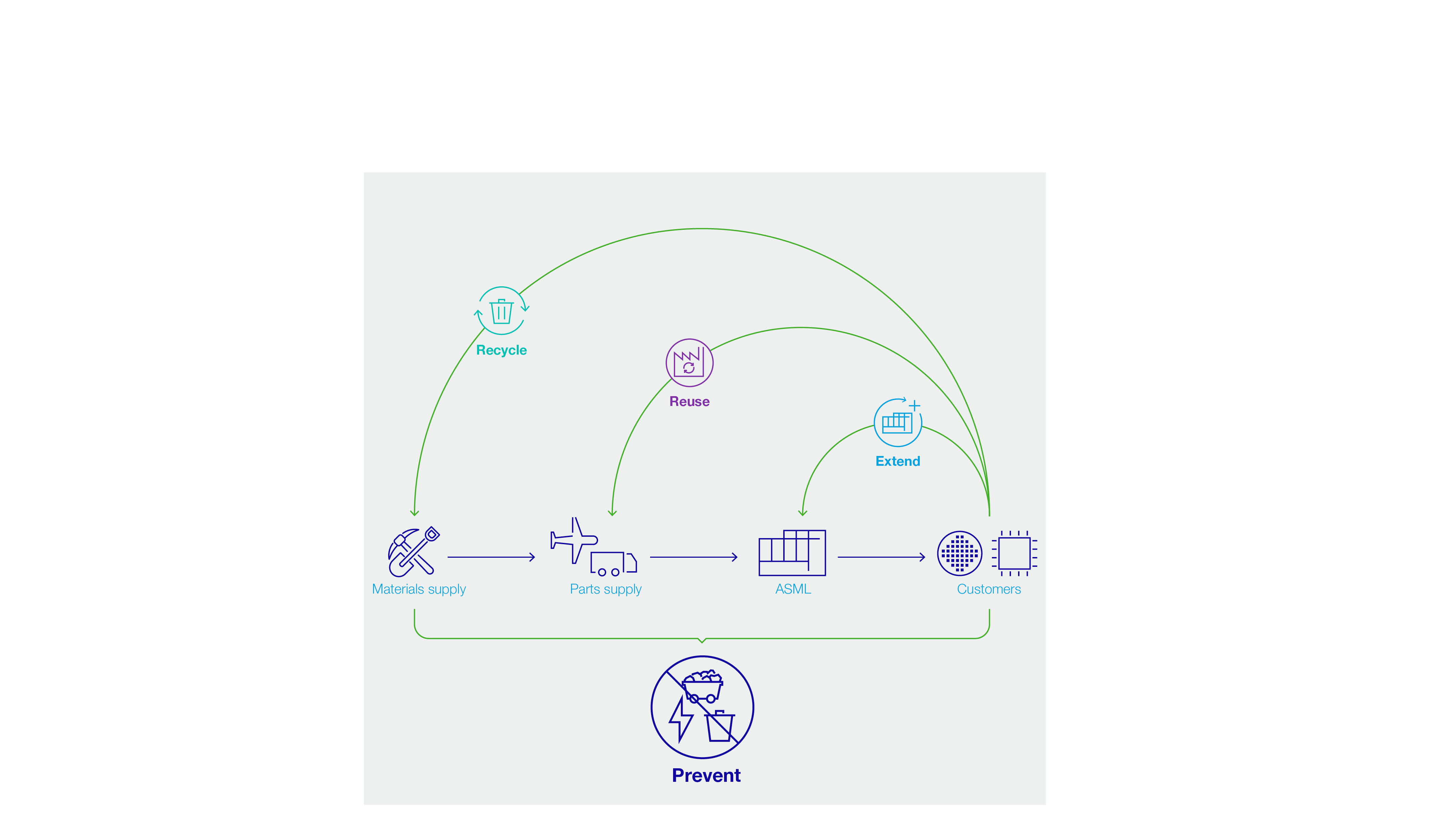
The diagram on the right illustrates our circular economy
approach.
We have an ambition to reduce waste in our operations:
By 2030, we aim to send zero waste from operations to landfill or incineration1. | ||
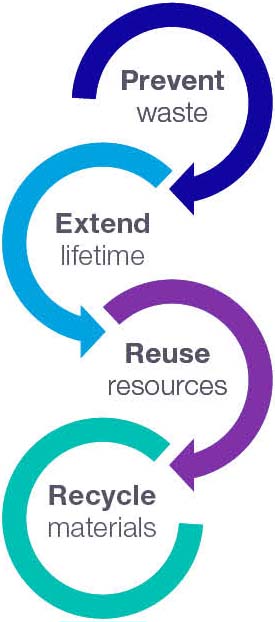 | We have therefore developed a strategy which includes the following principles: •Prevent waste from our assets, systems and processes by redesigning them, in collaboration with our suppliers and customers, to limit their environmental impact •Extend the lifetime and productivity of our systems and assets to maximize their usage throughout their life cycles •Reuse resources, parts, tools, packaging and goods across the value chain •Recycle materials if we can no longer apply any of the previous principles, avoiding incineration and landfill |
1.Incineration is defined to include processes with and without energy
recovery.
Our different types of waste | ||
We measure our impact in tonnes of waste, by category (hazardous and non-hazardous) and by material type (such as plastics, paper, wood and hazardous liquids). We include data on the CO2e impact of processing our waste in our scope 3 emissions. Within our operations, we divide our waste into two broad categories: Non-hazardous waste, such as packaging material, product-related waste from parts resulting from upgrades or defects, and general waste. This category also includes construction waste from building activities – the amount of construction waste tends to fluctuate over the years. Hazardous waste, such as the chemicals we use in our manufacturing processes. This can include everything from lamps, batteries and liquids to cleaning wipes and filters. Most of our hazardous waste is in the form of liquids, including acetone and piranha acid. | ||
ASML ANNUAL REPORT 2023 | ENVIRONMENTAL CONTINUED | STRATEGIC REPORT | CORPORATE GOVERNANCE | FINANCIALS | 92 | |
Circular economy (continued) | ||||||
Our circular economy approach | ||||
Our overall performance in 2023
Progress tracking | ||||||||||
Topic | Target 2025 | Performance indicator | 2021 | 2022 | 2023 | Status | ||||
Circular economy | >95% | % of lithography systems sold in the past 30 years still active in the field | 94% | 95% | 95% | • | ||||
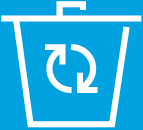 | 95% | Reuse rate of parts returned from field and factory | 85% | 87% | 88% | • | ||||
No target | Savings from reused parts (€, in millions) | 686 | 781 | 1,311 | n/a | |||||
No target | Value of scrapped parts (€, in millions)1 | 269 | 146 | 206 | n/a | |||||
209 kg/€m | Total waste from operations (excl. construction2) normalized to revenue | 305 | 315 | 300 | n | |||||
90% | Recycling rate (excl. construction2) | 77% | 75% | 55% | n | |||||
No target | Total waste from operations (excl. construction2) (in tonnes) | 5,679 | 6,675 | 8,279 | n/a | |||||
1.This reporting indicator follows the principle of prior-year indicator ‘Value of scrapped parts (in € millions)'; however it does not include packaging. The 2022 comparative figure has been restated.
2.Construction waste is excluded from the calculation of this indicator. The amount of construction waste tends to fluctuate over the years and can therefore make the trend of the indicator unclear.
Read more about our performance indicators (PIs) and related results in Non-financial statements – Non-financial indicators – Circular economy
In 2023, we generated 8,932 tonnes of waste from our
operations overall (including construction waste). This
was an increase of 29% over 2022 (6,913 tonnes).
Our total amount of waste increased due to ASML’s
growth, despite the impact of projects to reduce waste.
However, the amount of waste from operations
normalized to revenue showed a decrease in 2023.
During the year, 7% of total waste (653 tonnes) was related to
construction (2022: 238 tonnes, or 3%). The amount of
construction waste increased compared to 2022. During 2023,
significant demolition activities were ongoing on our Veldhoven
main campus. Since we hand over the responsibility of the
construction sites to the building contractor, the demolition
waste is excluded from our waste data. Although we do not
report on it, we work with our contractors to try to ensure
maximum recycling of this waste.
In 2023, 43% of the total waste from operations (including
construction waste) was sent to landfill, incineration with energy
recovery or incineration (2022: 25%).
The presence of hazardous materials is a risk to our ability to
achieve our goal of sending zero waste from operations to
landfill or incineration. In some countries, there is also the risk
that our waste hauler may not be able to identify companies
able to recycle some of our waste.
Our total waste in 2023
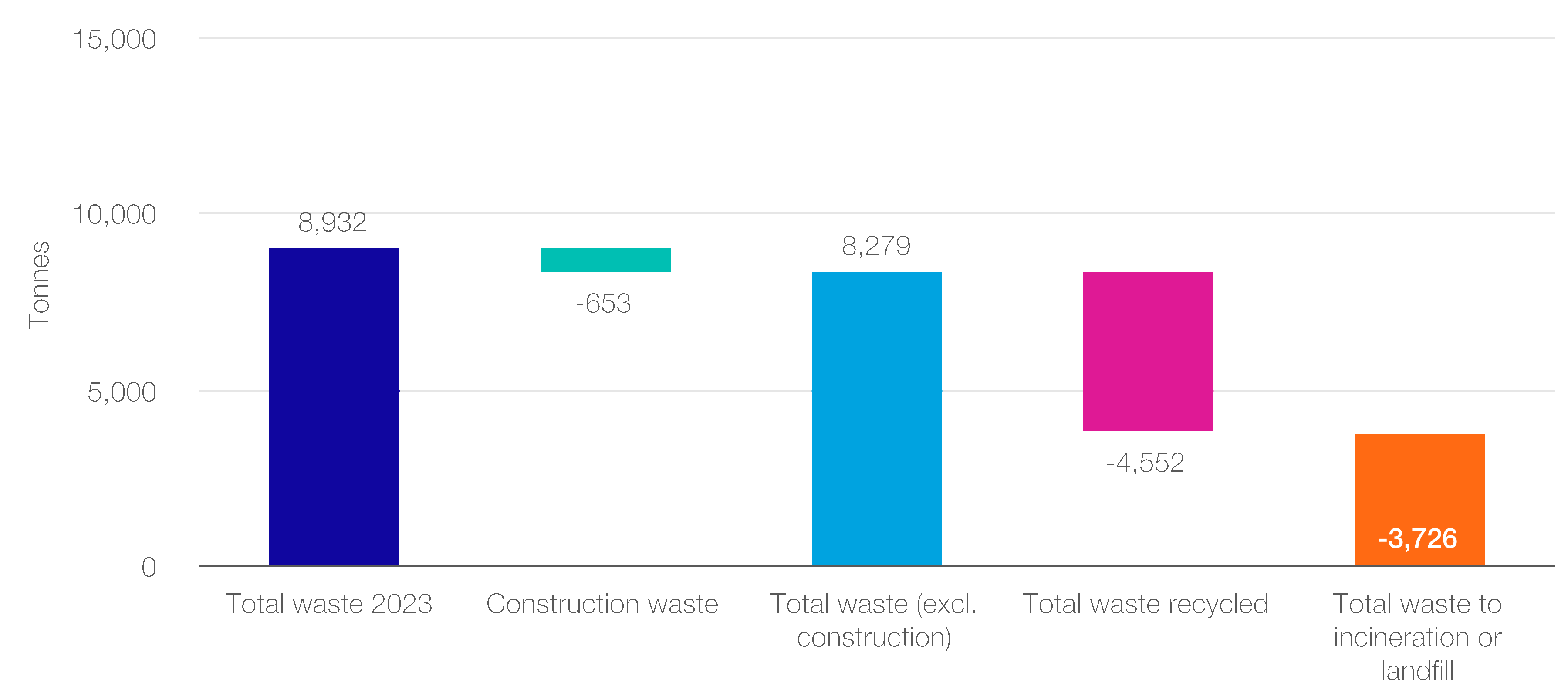
ASML ANNUAL REPORT 2023 | ENVIRONMENTAL CONTINUED | STRATEGIC REPORT | CORPORATE GOVERNANCE | FINANCIALS | 93 | |
Circular economy (continued) | ||||||
On track • Ongoing focus area n | ||||||
How we’re managing our impact | |
The first principle of our circular economy is to prevent
waste. This involves eliminating or limiting waste at its
source by rethinking and redesigning processes to avoid
waste, focusing on design, sourcing and quality, among
others. We aim to design our systems, products and
processes to maximize their value by focusing on
commonality, modularity, compatibility, standardization,
reusability, reliability and recyclability, while opting for
mono-material components and eco-design
methodology, minimizing the use of critical raw materials
like rare earths and hazardous materials.
We aim to collaborate with product- and non-product-
related suppliers that deliver durable and efficient
products with recycled material, which can be upgraded,
refurbished, repaired, reused and recycled. We improve
the quality of our systems by avoiding defects on arrival,
and implementing lean principles in all processes,
specifically in manufacturing and logistics, to eliminate
waste.
We design our systems to last for as long as possible in
order to prevent waste. Built-in feedback loops ensure
that we continuously improve product designs by
learning from failure modes and repair activities.
We have a team dedicated to ensuring we take a
sustainable packaging approach that maximizes the use
of our resources and minimizes waste while ensuring the
safe transport of our systems. We also have activities
that aim to minimize waste across the value chain – from
sourcing to customer support – enabling improvements
in both hazardous and non-hazardous waste streams.
We actively prevent waste by agreeing with suppliers of
IT hardware to deliver in bulk instead of individual
packaging. This limits the amount of packaging material.
We also focus on preventing waste by agreeing with IT
suppliers to only ship parts that we actually use. For
example, the stands were previously included with every
computer monitor ordered, even though we do not use
those stands. Now the stands are no longer included in
the order and therefore not produced by the
manufacturer, which prevents waste.
Materials used in EUV sources undergo rigorous
conditions, including exposure to high temperatures,
thermal cycling, corrosive liquid tin, high pressures,
pressure cycling and hydrogen. These materials, such as
strategic tantalum alloys and molybdenum, are both
limited in availability and costly. Ongoing trials are
focused on preventing the use of virgin material by
extending the lifespan of materials used in the system,
enhancing material quality in the production process and
improving application conditions.
Our targets and performance in 2023 | |
Although addressing our waste performance is a
relatively new focus area for us, we have already made
some progress. For example, while our sales have grown
by 30.2%, our waste generation from our own operations
has increased at a lower rate of 24%.
Read more in Our overall performance in 2023
Our actions in 2023 | |
We have continued to focus on embedding a circular
approach more deeply in our design processes. By
thinking about modularity, commonality and repairability
during the design phase, we can extend the lifetime of
our machines and increase reuse opportunities for parts
in the future, aiming to prevent waste.
We have started a project to embed design for reuse in
our PGP. This means that, as an example, the PGP
includes a default design of a repair method for any
service part. This enables parts in the installed base
systems to be repaired even after any engineering
change, so the new functionality may not hinder the
repairability of the legacy parts.
Modular design of products and components enables
future upgrades, worn parts and components to be
replaced as a single unit. In 2023, we successfully
concluded the first phase of a feasibility study
demonstrating the manufacturability of modular wafer
tables, aiming to secure the reusability of over 2,600
wafer tables by 2028.
We couple learnings from remanufacturing back to the
design process. In 2023, for example, we improved the
design of our in-line refill module, which we have been
remanufacturing since we designed it in our system.
Another example is the learnings from our local repair
center team in South Korea. By enabling the repairability
of one of our alignment lasers, they were able to correct
for the key failure mode on the ‘shutter’ that lets the light
out of the laser module.
Commonality in the parts design process enables a part
to be used in multiple contexts within a product and in
future product generations.
Looking ahead | |
Starting from 2024, we aim to have zero waste from
operations to landfill or incineration from our newly
designed products, with repair and reuse requirements
as part of the product requirement specification. This is
part of our customer proposition.
In our D&E teams, we will set up a specific ‘repair
competence', which will enable people to specialize and
be the subject matter experts in this field. These
dedicated repair-focused teams will work with all
functions in D&E and across ASML’s business.
We are setting up a packaging waste reduction program
with the aim to reduce waste by 2025, with targets
toward 2030 under discussion.
In 2024, the feasibility study for modular wafer tables for
Wilton and Berlin will be finalized.
ASML ANNUAL REPORT 2023 | ENVIRONMENTAL CONTINUED | STRATEGIC REPORT | CORPORATE GOVERNANCE | FINANCIALS | 94 | |
Circular economy (continued) | ||||||
Prevent waste | ||||||
How we’re managing our impact | |
As a well-maintained ASML system can last for decades
and create value for more than one customer, the
second principle in our circular economy approach is to
extend the lifetime of our products.
ASML aims to maintain systems in use as long as
economically and environmentally possible, focusing on
service, upgrades and refurbishment of assets, systems
and goods. We are establishing customer contracts to
maintain systems in the market for as long as possible,
maximizing their value and avoiding obsolescence. We
develop refresh packages to extend the life while
maintaining a high performance. We develop lifetime
extension and performance packages – productivity
enhancement packages (PEPs) and system node
extension packages (SNEPs) – to enhance the systems’
running period and performance.
We also refurbish systems across the business – our
refurbishment strategy focuses on buying back systems
that are not operational in the field, harvesting parts from
decommissioned systems and managing the continued
availability of spare parts. This is key to the extended
lifetime service we offer for our systems. We also re-sell
systems as long as we can guarantee the parts.
Once a fab needs to upgrade, an ‘older’ lithography
system is given a new purpose in a new fab producing
comparatively less sophisticated chips, such as
accelerometers or radio-frequency chips.
We provide our customers with a guaranteed service
roadmap until at least 2030. This means that all the
support and necessary services and spare parts required
to maintain their systems are expected to be available
until at least 2030, subject to export control limitations.
We focus on refurbishing a number of product families:
PAS 5500 (with almost 1,800 systems at customer sites
worldwide), TWINSCAN XT systems (2,000 systems)
and, as of 2021, NXT:1950-1980 systems (1,000
systems). For the approximately 200 TWINSCAN AT
systems that are still in operation, we focus on measures
to proactively manage their end of life. We do this by
guaranteeing the availability of spare parts for as long as
possible and providing customers with sufficient notice if
we can no longer guarantee part supply.
Our targets and performance in 2023 | |
Our target for 2025 is that more than 95% of systems
sold in the past 30 years should still be active in the field.
To date, we have refurbished and resold almost 570
lithography systems. As of the end of 2023, 95% (2022:
95%) of all systems sold in the past 30 years are still
active in the field.

ASML ANNUAL REPORT 2023 | ENVIRONMENTAL CONTINUED | STRATEGIC REPORT | CORPORATE GOVERNANCE | FINANCIALS | 95 | |
Circular economy (continued) | ||||||
Extend the lifetime of our products | ||||||
Our actions in 2023 | |
Refurbishment is a multi-year program in which we
continually invest to ensure the supply of more than
2,000 service parts for our PAS platform. This is
achieved either through redesigns, harvesting parts or
finding an alternative with the same form, fit and function.
Where this is not possible, we are generally able to
secure components through ‘last time buy’ – a supplier’s
‘last call’ for a part or component before production
switches to its successor. When a part is no longer
available, we redesign the parts.
In 2023, we acquired a PAS 5500 parts repair company
in the US that will support our ambition to sustain PAS
not only through 2030, but also beyond. In addition, we
intend to extend their capability to accelerate our XT
parts repair competence.
We track the spare parts in our portfolio to see how they
are being used and identify when we expect to run out of
individual items. For PAS and XT systems, we use this
information to update our priorities for redesign. For
TWINSCAN AT systems, we aim to continue supplying
parts by harvesting them from systems that are
decommissioned by our customers.
95% of all lithography systems sold in the past 30 years still active in the field | ||
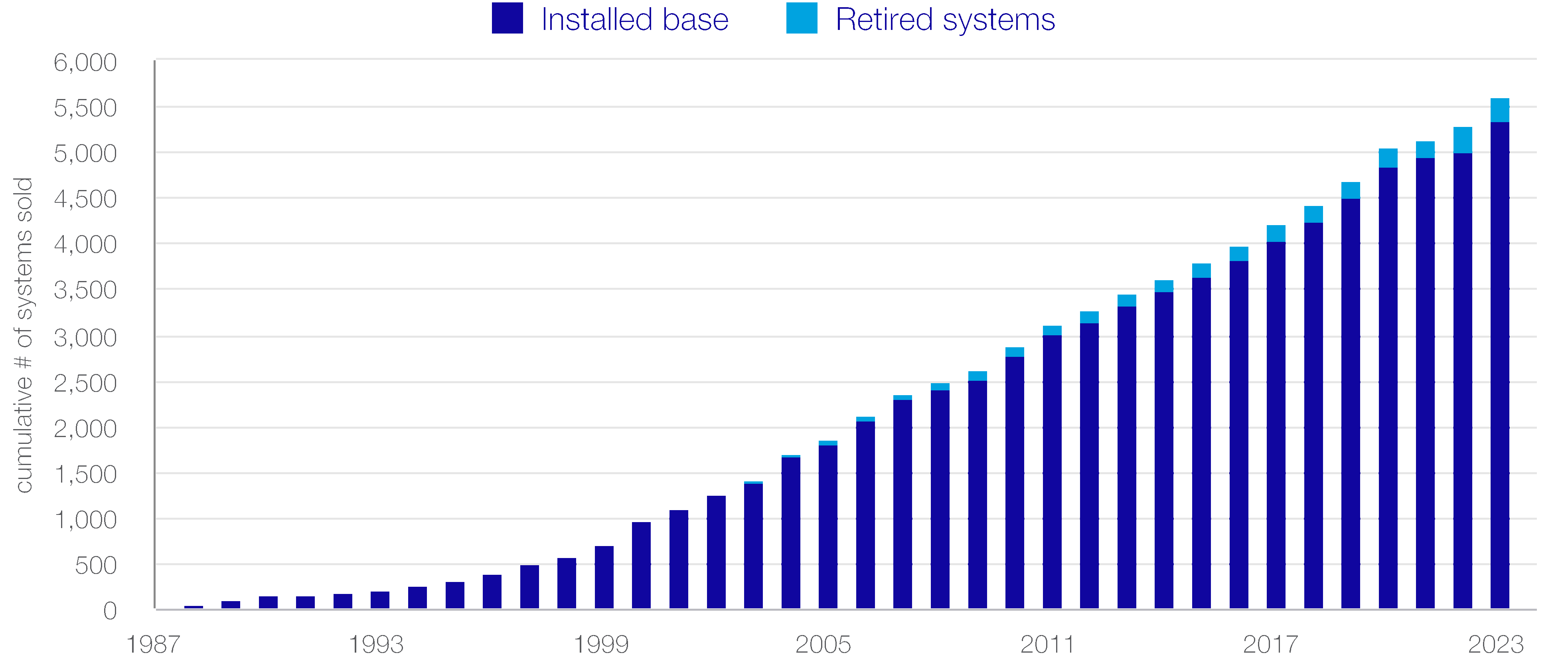
Looking ahead | |
We have identified and plan to execute more than 100
redesign projects for nearly 300 parts in the coming
years. This is particularly relevant for electronic parts, for
which the evolution of technology has been faster than in
any other field.
We will continue to increase our focus on local repair to
extend the life of the mature installed base at lower cost,
reducing the need to redesign and buy new materials
and parts.
The refurbishment activities we have been doing for
years on our PAS systems will be extended to cover both
XT and NXT systems. We are currently on track to meet
our target of >95%.
ASML ANNUAL REPORT 2023 | ENVIRONMENTAL CONTINUED | STRATEGIC REPORT | CORPORATE GOVERNANCE | FINANCIALS | 96 | |
Circular economy (continued) | ||||||
Extend the lifetime of our products (continued) | ||||||
How we’re managing our impact | |
ASML is committed to reusing parts, packaging, tools
and non-product-related resources in the value chain,
focusing on the return, recondition and repurposing
processes. We optimize return flows by collaborating
with customers and suppliers, while learning from system
usage and product returns. We recondition parts and
packaging through global and local repair centers,
suppliers and partners, at the best location with the
lowest environmental impact. We repair buildings, assets
and infrastructure. We enable the repurposing of parts,
packaging, tools and devices in a new life cycle inside
and outside ASML.
We maximize the reuse of system parts, packaging and
tools in our value chain to reduce waste and meet
customer demand.
Reuse is also a key contributor to our ability to ramp up
capacity to cope with strong customer demand. We
retrieve parts from inventory or through repair or
harvesting.
88% | |
reuse rate of defective parts, up from 87% in 2022 | |
Reuse also offers learning opportunities to improve the
performance and lifetime of our parts and systems. We
work closely with our customers and suppliers to embed
learnings in design and processes throughout the value
chain.
We aim to reuse workplace IT assets obtained (e.g.
monitors) when buildings are decommissioned. Instead
of assets being disposed of at the end of their economic
lifespan, they are used to set up work environments in
other buildings where and when possible.
Key improvement areas | |
We focus on the following key improvement areas: •Repair centers: Repair close to where parts are needed to improve parts repair yields by reducing cycle time of root-cause analysis and repairs. •Predictable external repair flow: Simplify and standardize return and repair flows to enable us to scale activities. •Circular supplier collaboration: Incentivize suppliers to prioritize reuse over new materials. •Return quality: Ensure that parts are returned with reuse in mind – quality returns lead to quality repairs. •Packaging and transportation tools: Increase reuse of packaging, which is the main contributor to our waste (from operations). | |
Our targets and performance in 2023 | |
Our overall target is to increase the reuse rate of
defective parts in ASML factories and in the field to 95%
by 2025. This means successfully reconditioning at least
95% of our parts.
In 2023, our reuse rate of parts was 88%, up from 87%
in 2022 – on target to achieve our goal. The savings we
generated from reused parts amounted to €1,311 million
(2022: €781 million) and the value of scrapped parts was
€206 million (2022: €146 million).
Our actions in 2023 | |
Repair centers
We are extending the number of repair centers
worldwide to support the reuse of parts by returning,
cleaning and reconditioning them close to where they are
needed. Demand for these parts can be driven by our
customers needing service parts for their installed base,
or by our factories requiring parts for new systems.
Currently, we have several repair centers in Asia (South
Korea, Taiwan and China), the US (Wilton, San Diego)
and the EU (Veldhoven). We are investigating our options
to extend our network of local repair centers to other
locations.
Our repair centers work with local suppliers and
specialized repair partners to create a local ecosystem.
By enabling repair and reuse activities and taking
ownership of repairs close to where materials are
needed, we are able to reduce logistics time, cost of
stocking parts and our environmental impact (by
reducing scrap and GHG emissions). Our customers
benefit from reduced service costs and improved
material availability.
In 2023, we launched a dedicated cross-company team
to further explore local reuse activities in Taiwan, and
have begun the process of setting up a similar operation
in the US. We intend to empower local teams to initiate
reuse activities, as local business requirements and
situations may vary. The central reuse team provides
guidance and support where needed and drives roll-out
of local best practices across other locations.
With over 1,200 m2 of cleanroom, our dedicated reuse
facilities in Veldhoven will be instrumental in this.
Predictable external repair flow
We are working to increase the scalability and
predictability of our reuse flows in order to future-proof
return and recondition processes to deal with growing
demand. This includes forecasting repairs to help
suppliers prepare capacity. By combining service and
factory return flows – and simplifying and automating
operational planning and repair order management – we
are increasing the availability of repaired parts. Our aim is
to maximize reuse of parts and ensure it is the preferred
option over new purchases.
ASML ANNUAL REPORT 2023 | ENVIRONMENTAL CONTINUED | STRATEGIC REPORT | CORPORATE GOVERNANCE | FINANCIALS | 97 | |
Circular economy (continued) | ||||||
Reuse resources | ||||||
Circular supplier collaboration
We are collaborating with suppliers to incentivize reuse
over new purchases. We are investigating transferring
used parts back to our suppliers to repair, refurbish or
harvest for reuse in their new buying process, giving
them more flexibility in how they can reuse parts.
In 2023, we investigated how to support a new
collaboration model with suppliers for reusing materials
and how to adjust our processes and systems to enable
it. We piloted the new way of working with eight suppliers
and have started engagements with additional suppliers.
Return quality
Challenges that occur downstream in the value chain
during the repair phase often have their origins upstream
and are related to the quality of returns, for example
through incorrect labeling or packaging.
In 2023, we started piloting barcode scanning of defect
parts in the return flow to support correct labeling. In
2024, this project will ramp up to a program to also
cover all root causes of poor return quality.
Packaging and transportation tools
Valuable transportation materials – such as packaging,
locking and plug materials – are used to safely transport
our modules and systems, either from our suppliers to
our factories or from our factories to our customers.
Instead of being thrown away once they reach their
destination, these materials are reused.
Before parts are returned for reuse, they undergo an
identification process and quality check, followed by the
logistical and financial processes required to bring them
back into the supply chain (either to the original module
suppliers or to ASML). Our goal is to standardize these
processes and create a network-related solution to
enable high flexibility and reduce transport, which also
reduces our CO2e footprint.
We are improving the reuse of packaging, lockings and
plugs from the field and factory. We aim toward 100%
recyclable packaging with an eye on minimizing waste
and environmental impact.
In 2023, we made progress in reusing thousands of small
auxiliary materials, such as plugs, flanges, caps and
brackets. These are now being reused for system parts
in our factories or for shipping machines to our
customers. Furthermore, we developed a solution to
embed the reuse requirements in our design processes –
and this will be fully implemented in 2024.
Circular Innovation Program | ||
The circular innovation program (CIP) is a collaboration with ImpactX and Brainport Industries. It is a four-day tailor-made program focusing on building a stronger relationship with our supply base by creating circular competencies. In 2023, we consolidated CIP with the participation of eight suppliers divided into two cohorts. We run two cohorts per year and four suppliers are invited each time. Through the program we are able to close business loops, boost supplier impact and strengthen collaboration overall. The benefits are the creation of a shared vision on the circular economy, peer learning, and the joint building of competencies and knowledge around reusing products, parts and materials in the value chain. The participants invited so far are first-tier suppliers; however, we want to extend the program to other tiers as well. Additionally, we have the ambition to expand CIP beyond the Brainport Eindhoven region in the Netherlands, to other locations around the world. | ||
Looking ahead | |
Reuse roadmap
In 2024, we will have more focus on the reuse program,
with teams dedicated to repairs, reverse logistics, reuse-
related engineering, local harvesting and repair centers
worldwide.
In the context of supplier capacity, our supplier backlog
is building up. We need stronger supplier collaboration,
focusing on reuse over new, and working on forecasting
and planning of repairs to reduce supplier repair cycle
time.
We are implementing a structural improvement roadmap
related to repair and reuse across all functions in ASML
in order to meet our 2025 targets.
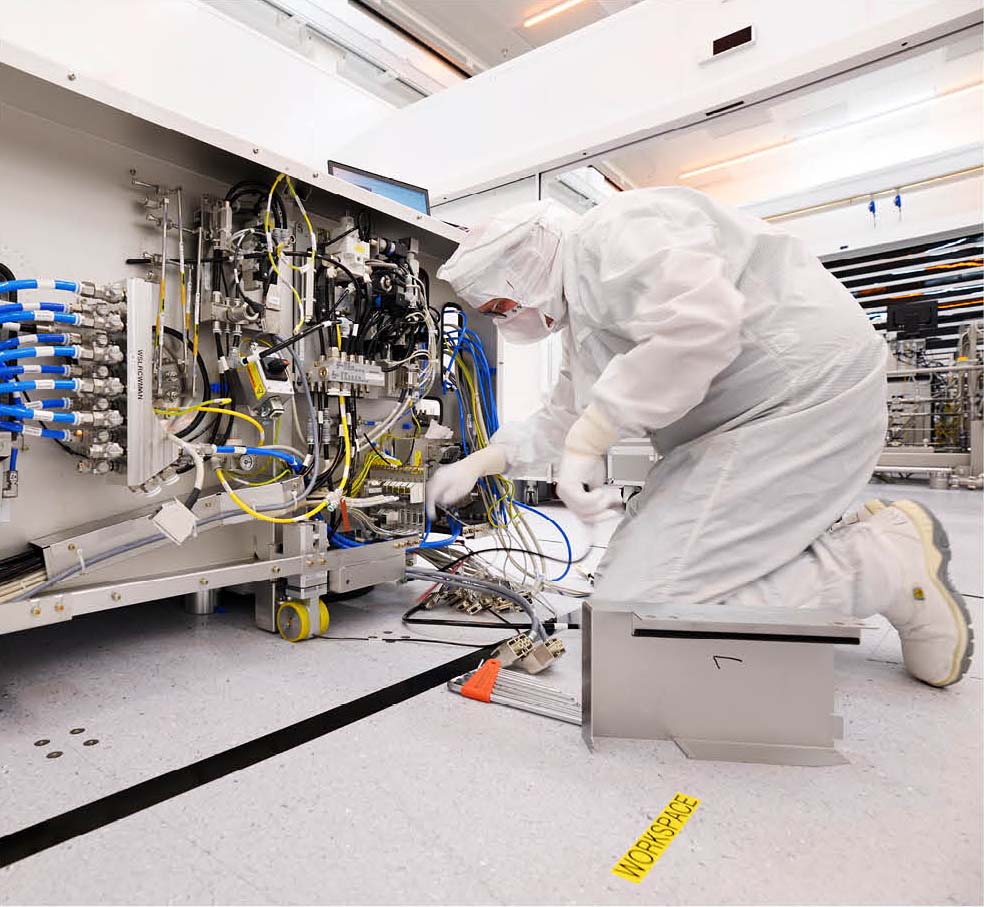
ASML ANNUAL REPORT 2023 | ENVIRONMENTAL CONTINUED | STRATEGIC REPORT | CORPORATE GOVERNANCE | FINANCIALS | 98 | |
Circular economy (continued) | ||||||
Reuse resources (continued) | ||||||

How we’re managing our impact | |
ASML’s aim is to recycle material at end of life, focusing
on the collection, analysis and reporting processes. We
define the collection and sorting methods in collaboration
with partners to increase recycling rates of both
hazardous and non-hazardous materials, including local
recycling at end of life and construction waste. We
identify drivers of waste, gain insights into reasons for
disposal, provide feedback to prevent waste, and
improve designs and opportunities for recycling.
Following our principles hierarchy, recycling materials is
the final step in the process, in case we have not been
able to prevent the waste, extend the lifetime of our
systems and assets, or reuse our resources.
As our company grows, so too does the number of our
employees, the number of systems we produce, and the
number and size of our facilities. We are determined to
decouple growth from our overall resource consumption.
Recycling our waste plays a key role in closing the
material loop – by 2030, we want to avoid energy
recovery, incineration and landfill as much as possible.
Our aim is to recycle materials instead of incinerating or
disposing of them to landfill. Understanding our waste
streams is key to identifying opportunities to increase
recycling of both hazardous and non-hazardous waste.
We aim to maximize waste separation at our sites to
enable increased recycling rates and easy recycling at
the waste haulers'.
Understanding and managing our waste flows and impacts |
The effective monitoring and managing of waste relies on
the availability of detailed and accurate insights into waste
streams to and from ASML. We manage our waste
through proper classification, separation, and safe disposal
by waste vendors. Our contracts with waste vendors
state the need for compliance with local legislation and we
aim to improve how this is monitored.
Waste data is managed through our myEHS system,
which collects information from our local waste
vendors along with the relevant supporting
documentation, such as invoices. The data entered is
checked internally and by an independent party against
the supporting documentation.
Distribution of waste streams | |
(Total: 8,932 tonnes) | |
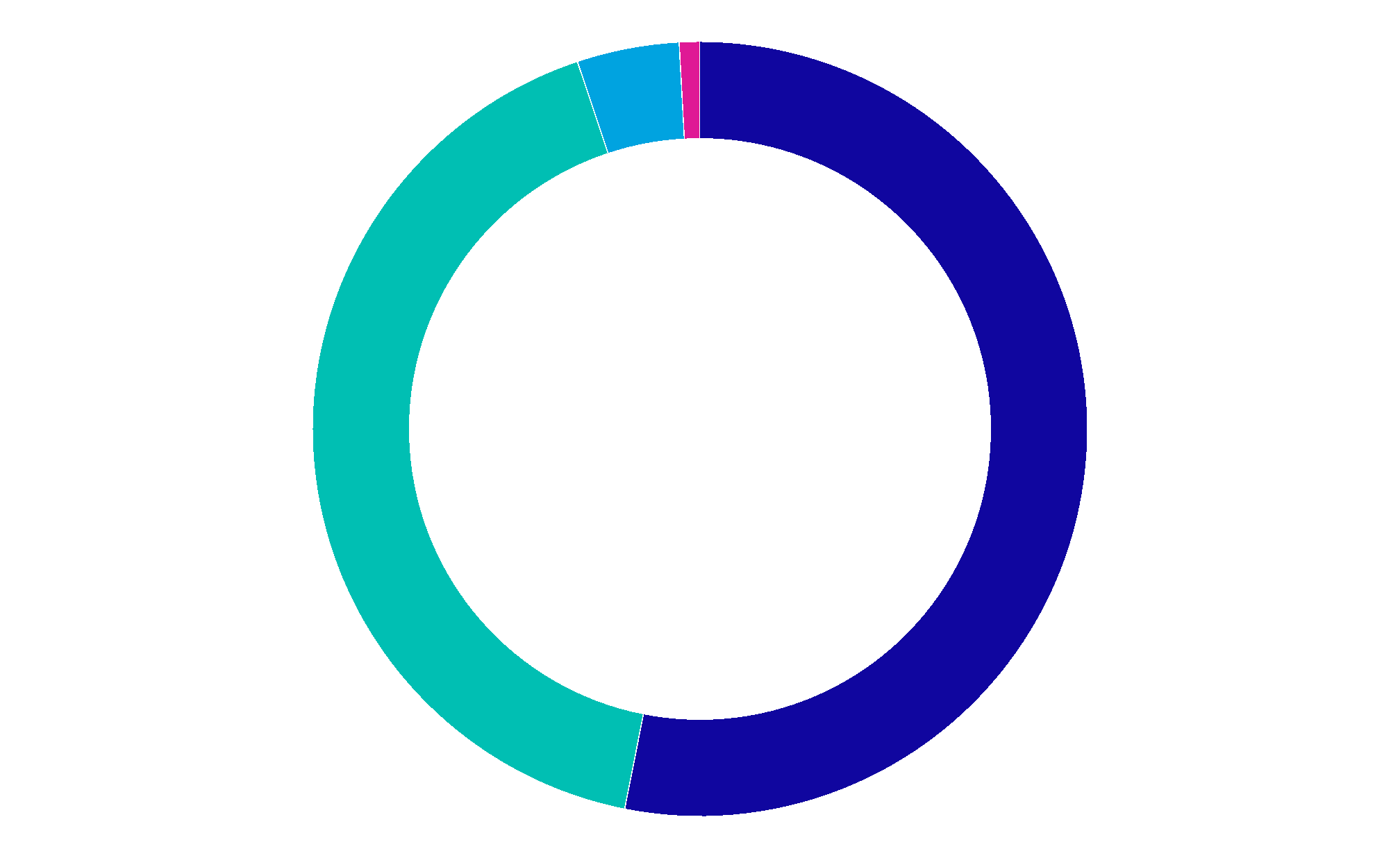
Non-hazardous waste recycling | 53% | |||
Non-hazardous waste disposed of | 42% | |||
Hazardous waste recycling | 4% | |||
Hazardous waste disposed of | 1% | |||
Non-hazardous waste accounted for 95% (2022: 95%
(6,533 tonnes)) of our total waste in 2023, of which 53%
was recycled.
Distribution of non-hazardous waste | |
(Total: 8,474 tonnes) | |
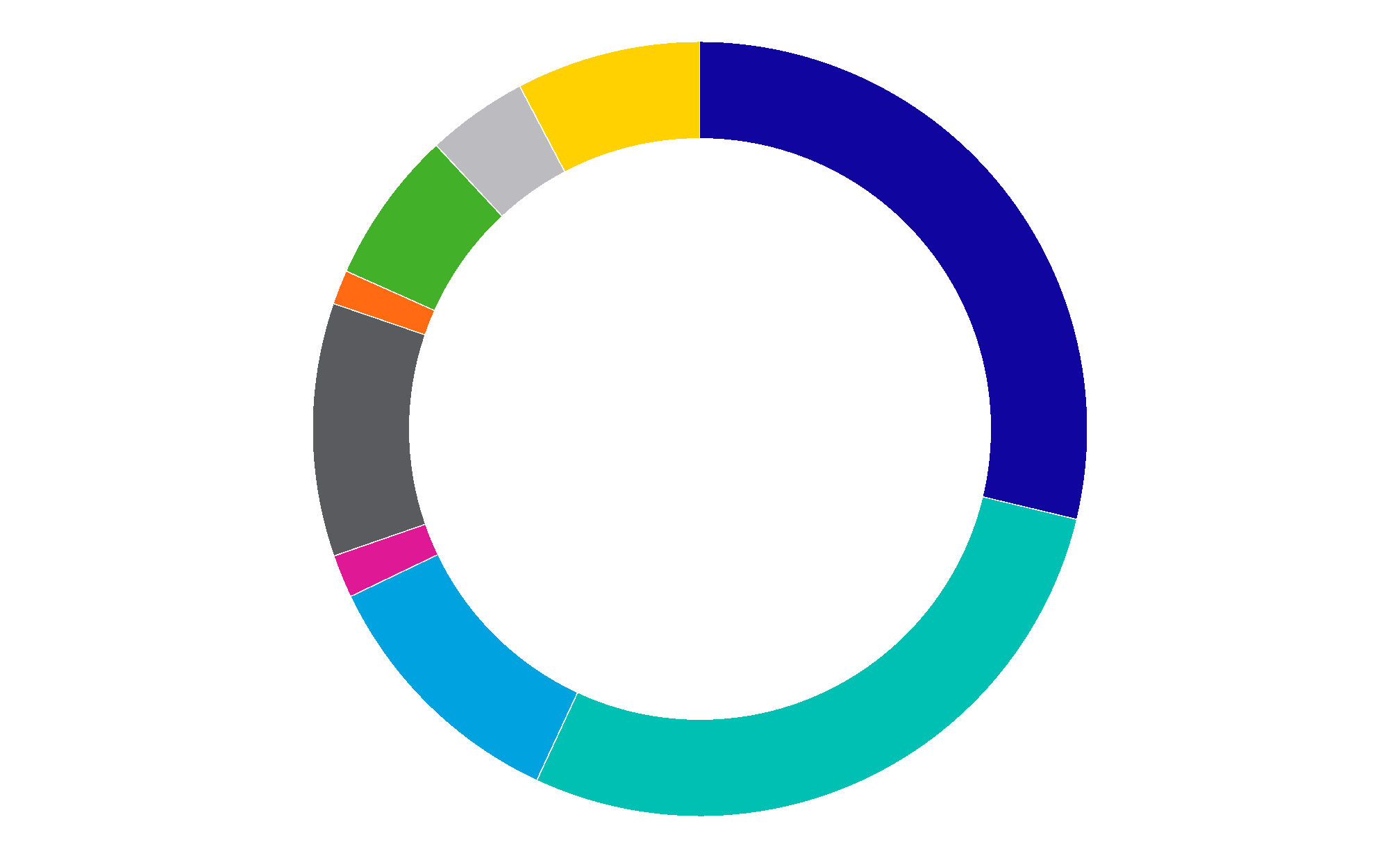
Wood | 29% | ||
General waste | 28% | ||
Paper and cardboard | 11% | ||
Electronics | 2% | ||
Metals | 11% | ||
Other non-hazardous waste | 1% | ||
Plastic | 6% | ||
Organic waste | 4% | ||
Construction waste | 8% | ||
Hazardous waste accounted for 5% (458 tonnes) of our
total waste generated, compared with 5% (380 tonnes)
in 2022. Of this, 83% was recycled.
Distribution of hazardous waste | |
(Total: 458 tonnes) | |
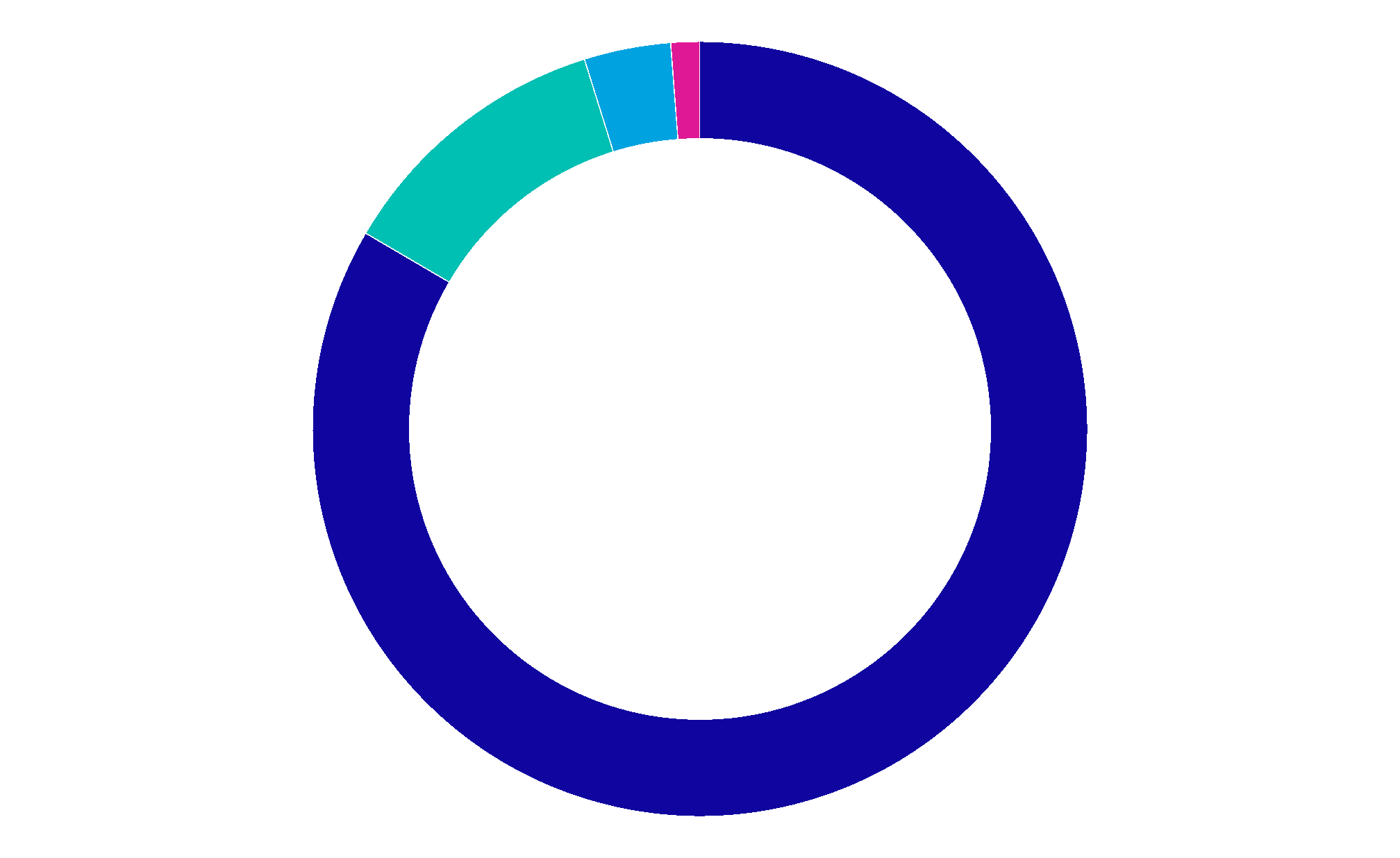
Hazardous liquids | 83% | ||
Other hazardous waste (e.g. packaging, filters, lamps, etc.) | 12% | ||
Cleaning wipes | 4% | ||
Batteries | 1% | ||
ASML ANNUAL REPORT 2023 | ENVIRONMENTAL CONTINUED | STRATEGIC REPORT | CORPORATE GOVERNANCE | FINANCIALS | 99 | |
Circular economy (continued) | ||||||
Recycle materials | ||||||
Recycling materials conserves natural resources and
reduces carbon emissions. In the Netherlands, after
investigating non-product-related activities, some
construction waste – such as concrete – has been
reused (after processing) in the construction of new
buildings.
Our targets and performance in 2023 | |
Our waste intensity in 2023 was 300 kg per €m revenue,
down from 315 kg per €m revenue in 2022. This remains
below the pre-COVID-19 waste intensity. To achieve our
target of 209 kg per €m revenue, we need to scale up
our efforts to reduce our waste streams in absolute
terms and improve our recycling rate.
We are increasing our efforts to reduce waste by setting
up specific projects on packaging, general waste and
hazardous materials. The main contributors to our
packaging waste are wooden pallets. We need to extend
their reuse even further and make a transition in waste
treatment, from energy recovery to recycling. Another big
challenge we are working on is to reduce packaging
waste generated by the materials used to transport our
systems and parts around the world. General waste from
our offices and facilities represented 28% of the total waste
in 2023. We have started projects on separation and sorting
to improve its recyclability and prevent its generation.
Our aim is to avoid landfill and incineration by 2030. In
2023, this accounted for 43% of our waste, including
hazardous substances and construction waste. We are
currently piloting an ASML solution which aims to reduce
our hazardous waste by approximately 65%.
Our target is to achieve a recycling rate (excluding
construction waste) of 90% by 2025.
We saw a significant decrease in the recycling rate, from
75% in 2022 to 55% in 2023.
The lower recycling rate in 2023 can be explained by an
increased focus on our waste. New insights show that
waste companies reported recycling rates using different
definitions. We will continue to improve the quality of data
next year and start initiatives with our waste companies
to increase the recycling rate.
Read more on our waste figures in
Our actions in 2023 | |
Waste reduction program
During the year we launched a program to reduce waste
coming from non-product-related resources. This
program features several different initiatives, with the first
focusing on creating clear governance processes to
improve waste recycling, and working on obtaining more
accurate and reliable data from our waste haulers. We
also gained a better overview of our waste and mapped
our waste streams at the Veldhoven site, which represent
60% of our total waste. We created a circularity plan for
our five largest industrial sites to improve our waste data
quality and recycling rate.
The full program, which covers plans for both hazardous and non-hazardous waste, includes: •Identifying where the waste comes from (inbound versus operations) by organizing Gemba Walks (opportunities for staff to walk the work floor) to see the waste in the warehouse, factory and offices, and also by visiting our waste haulers to understand how our waste is processed •Examining what the waste consists of through a detailed sorting test (performed by one of our waste haulers) •Assessing the quantity of hazardous and non- hazardous waste •Identifying potentially large waste flows. The Veldhoven campus non-product-related waste flows are shown in the diagram on the next page •Proposing actions and process optimizations to achieve our targets | ||
Other recycling initiatives
In 2023, we started local remanufacturing of modules
that capture tin from the EUV light source. As tin is a
consumable, these ‘tin catch’ modules fill up and get
contaminated by design. Local remanufacturing enables
fast, efficient reuse with minimal shipment miles, as well
as the possibility to reclaim tin for the next cycle of use.
We actively support extending the life cycle of IT assets
by giving them another life outside of ASML. In 2023, we
donated over 300 laptops to multiple charities, mainly in
the area of children's education.
All IT assets that ASML can no longer use are
professionally processed by a specialized partner after
the end of their life cycle, with the aim of life cycle
extension outside of ASML.
ASML ANNUAL REPORT 2023 | ENVIRONMENTAL CONTINUED | STRATEGIC REPORT | CORPORATE GOVERNANCE | FINANCIALS | 100 | |
Circular economy (continued) | ||||||
Recycle materials (continued) | ||||||
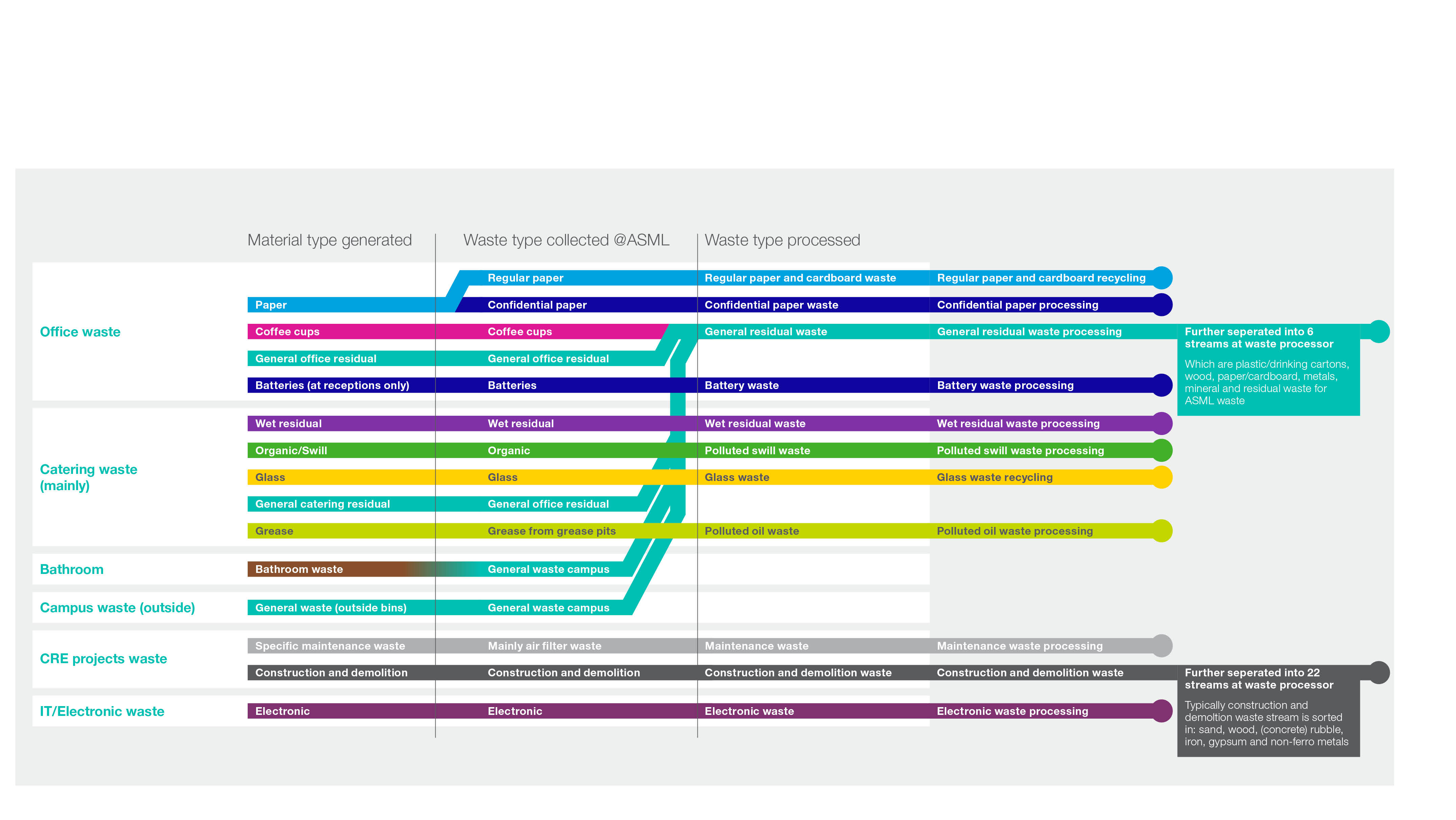
Veldhoven 2023 insight current non-product-related (NPR) campus waste flows |
ASML ANNUAL REPORT 2023 | ENVIRONMENTAL CONTINUED | STRATEGIC REPORT | CORPORATE GOVERNANCE | FINANCIALS | 101 | |
Circular economy (continued) | ||||||
Recycle materials (continued) | ||||||
Improving waste stream management
We have improved the accuracy of our waste reporting
by increasing actual measurements of the amounts of
waste at our main production site in Veldhoven.
In addition, we have made progress across our wider
portfolio, including:
1.Preparing to align our boundary reporting from 57
locations to all locations worldwide – ready for
implementation in 2024
2.Recognizing the need to manage recycling centrally,
with implementation delegated to three groups with
central governance
3.Developing circularity master plans for infrastructure
and facility-related activities at the largest ASML
industrial sites – Veldhoven, San Diego, Wilton,
Linkou and Tainan. The master plans cover three
work streams with initiatives to: 1. Improve data
quality, 2. Prevent, extend, reuse during construction
and 3. Reduce waste/improve recycling in the short
term
4.Implementing a specific waste reduction program for
non-product-related resources:
a.Recognizing that waste is a challenge across the
organization
b.Focusing on our real estate, global manufacturing
and IT department in the coming years to reduce
waste
c.Initiating Gemba Walks in all of our largest sites to
improve understanding of waste composition for
future reduction initiatives, and to educate
stakeholders on improving waste stream quality
d.Improving waste data integrity (including data
completeness and relevance, among others). This
is being rolled out firstly in our large factories and
includes gap assessments, construction waste
definitions, improved reporting and an overview of
waste haulers
e.Implementing a program in the Netherlands to
improve waste segregation upstream/
downstream, as part of our objective to increase
waste recycling in the country to more than 90%
f.Engaging with a new waste hauler in Taiwan. We
anticipate that this change should lead to a 46%
improvement of our waste recycling in Tainan and
18% in Linkou in 2024
g.Implementing reuse of furniture in Taiwan
h.Starting to audit waste management in our factory
in Wilton (US)
i.Improving scrutiny of accurate binning of waste
categories in San Diego (US). This will provide
better direction for future waste reduction
initiatives
j.Removing single-use plastic-containing food
disposables (coffee cups/plastics in catering) in
line with new laws in the Netherlands
Construction waste
As we continue to expand our facilities, we aim to
maximize the recycling of waste from our construction
activities.
In 2023, we began to assess the completeness,
accuracy and consistency of our construction waste
reporting at four of our large industrial sites.
Our conclusion is that we need to focus on two specific
areas. Firstly, we must improve the data collection
process around our construction waste streams.
Secondly, we must improve data quality as part of our
circularity roadmap. This is a significant challenge,
because it means identifying construction waste over
several hundred projects every year, some of which have
already started, with multiple construction waste haulers.
We currently have circularity master plans in place at our
five biggest industrial sites and are working on improving
the waste data.
Looking ahead | |
Despite our many initiatives, achieving our waste
recycling targets remains a challenge.
Our actions in 2023 included the decision to reorganize
how we manage our waste. In the months ahead, we
intend to investigate the impact of this decision and
prepare to implement an organizational structure that will
be designed to help us achieve our recycling rate target.
Based on the insights gained in 2023, we will re-evaluate
the recycling rate target set for 2025.
When implemented, the changes will impact how we
categorize and manage our waste and will be designed
to improve the integrity of waste data across the
company. These enhancements will enable us to extend
our waste reporting to all sites during 2024.
Our so-called piranha solution – used in etching
processes to remove organic residues from substrates –
represents about two-thirds of our hazardous waste. We
will investigate specific solutions, such as the feasibility of
reprocessing our piranha solution for reuse as sulfuric
acid in a different market.
We will also investigate the feasibility of replacing single-
use disposable plastics for food and drinks in other large
industrial sites with reusable alternatives, which we
believe will lead to further reduction of our waste.
Finally, we will investigate scaling up our waste
segregation – collection and sorting – onsite to improve
the recycling rate.
ASML ANNUAL REPORT 2023 | ENVIRONMENTAL CONTINUED | STRATEGIC REPORT | CORPORATE GOVERNANCE | FINANCIALS | 102 | |
Circular economy (continued) | ||||||
Recycle materials (continued) | ||||||
Why it matters | |
Climate change and increased water demand combine
to mean that droughts have become more extreme and
unpredictable, and water is becoming a scarce resource
in some locations.
Water consumption at ASML accounts for only a tiny
fraction of the water consumed by the semiconductor
industry. Our water-related risk is therefore low
compared to that of our customers, who use a significant
amount of water during the semiconductor
manufacturing processes.
How we’re managing our impact | |
Despite our relatively low level of water usage, as a
responsible business we promote efficient water use and
recycling across our sites and processes.
Read more in our TCFD Recommendations – Climate-related
disclosure, available at asml.com
In our factories, we use water in three key ways: Firstly,
we use it to remove heat loads and maintain the systems
at a constant temperature. Internal cooling circuits are all
designed as ‘closed-loop’ (recycling) systems to limit
water consumption. Secondly, these heat loads are
eventually removed in cooling towers using evaporation
of lower-quality water. Finally, DUV systems use ultrapure
water in the immersion hood – this water is currently only
partially recycled.
Our water consumption in 2023 remained stable around
1% higher at 1,173,990 m3, if compared to 1,161,850
m3 in 2022.

ASML ANNUAL REPORT 2023 | ENVIRONMENTAL CONTINUED | STRATEGIC REPORT | CORPORATE GOVERNANCE | FINANCIALS | 103 | |
Water management | ||||||

SOCIAL | Responsible supply chain | ||||||||
Attractive workplace for all Inspiring a unified culture Providing the best employee experience Enabling strong leadership Ensuring employee health and safety Responsible supply chain Managing supplier capabilities Innovation ecosystem Partnerships for research and development Supporting startups and scaleups Valued partner in our communities Attractive communities Inclusive communities Investing in STEM education | |||||||||
We depend on our suppliers to help deliver our innovations. They are critical to our value chain and our ambition to be a sustainable leader in the semiconductor industry. | |||||||||
57% | |||||||||
% supplier spend covered with a commitment to sustainability |  | ||||||||
Attractive workplace for all | |||||||||
We need to empower our employees to deliver our vision by ensuring they are proud to be part of ASML and engaged with our ambitions as a company. |  | ||||||||
80.3% | |||||||||
employee engagement score | |||||||||
 | Valued partner in our communities | |||||||
We play an active role in the communities where we operate, recognizing that when the community thrives, we thrive. | ||||||||
€413 | ||||||||
Community partnership program and amount invested per employee | ||||||||
 | ||||||||
Innovation ecosystem | ||||||||
We never innovate in isolation because developing technology in collaboration with partners across the innovation ecosystem maximizes our collective impact. | ||||||||
€4.0bn | ||||||||
R&D investments | ||||||||
ASML ANNUAL REPORT 2023 | SOCIAL | STRATEGIC REPORT | CORPORATE GOVERNANCE | FINANCIALS | 104 | |
Social at a glance | ||||||
We aim to have a positive social impact by providing an attractive workplace, ensuring a responsible supply chain, supporting an innovation ecosystem and being a valued partner in our communities. | ||||||

ASML’s focus on technology and its supportive culture mean you can go wherever your talent and ambition take you.” | ||
Anya Kish | ||
Program Director, EUV Source | ||
8 years at ASML | ||
Making a difference | |
Anya Kish moved from Russia to the US for her graduate studies in plasma physics. That willingness to take opportunities however they present themselves has seen her build a career at ASML as a problem solver who thrives under pressure. She now works as project manager for the light source for our next extreme ultraviolet lithography system. |
ASML ANNUAL REPORT 2023 | SMALL PATTERNS. BIG IMPACT. | STRATEGIC REPORT | CORPORATE GOVERNANCE | FINANCIALS | 105 |
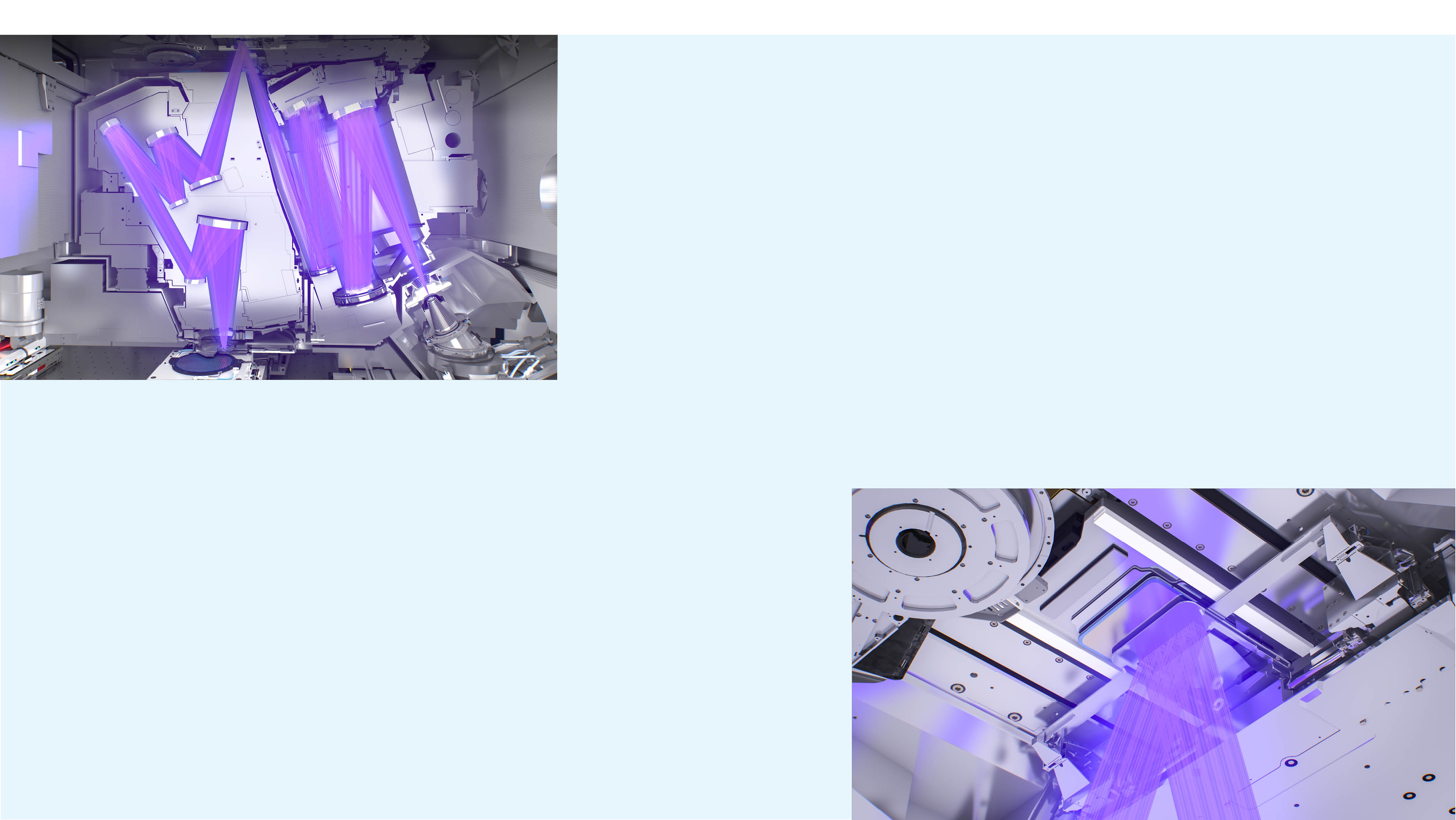
Finding a place to grow
I had wanted to work at ASML ever since I
was a graduate student, and a course mate
told me about the company. I read more
online and watched all the YouTube videos I
could find. I was blown away by the cutting-
edge technology.
Soon after graduating, I was lucky enough to
get a temporary contract and then a
permanent position as an engineer in the
Source Performance team in San Diego,
working to improve the performance of EUV
light sources. A fantastic manager suggested
that I may have a talent for project
management. I am someone who thrives on
a fast pace, pressure and action, so I said
why not?
A new journey
I started small, leading a team of one – me.
But I loved the energy and was eager for
more. The next opportunity came out of the
blue. I was on a trip to Veldhoven when key
customers reported an issue that was
impacting the lifetime of mirrors used in our
EUV light sources. This had become our
number one customer issue and could have
delayed the introduction of EUV lithography
into mass production.
ASML’s senior management needed an
update, and fast. As the subject matter
expert was absent and I was onsite, I was
asked to give a presentation the next day. I
had no prior knowledge of the issue, but
spent the night learning everything I could. I
read all the materials and phoned round
colleagues for more information. Everyone
was happy to help. The presentation went so
well that I was asked to head up a task force
to address the issue. A year later, the project
won awards from key customers and within
ASML, and mirror lifetime had gone from the
number one customer issue to something
people hardly ever mentioned.
A culture of support
That unexpected opportunity was the first
real step on my project management journey.
And it highlights two of my favorite things
about working at ASML: The technology and
the culture. I couldn’t have given that
presentation without the support of the
colleagues who took my calls and answered
my questions. The supportive culture is why I
feel confident to take on new challenges
here: There are always people around who
want to help you and ASML succeed.
Friends from outside ASML sometimes ask
me about working in technology as a woman
or working in the US as a Russian. Those
questions surprise me, as who I am has
never been a factor in my experience and the
opportunities I have had at ASML.
Yes, the industry has been male dominated,
but it is changing. When I started eight years
ago, I used to joke that I was given my own
private bathroom, as I was the only woman
on my floor. But that certainly isn’t true
anymore. And in my experience, ideas are
always judged on their merit.
There are programs to support different
groups within ASML. They do great things
bringing people together and raising issues,
but people here really don’t need much
education.
Source of inspiration
I joined ASML because I was blown away by
the technology as a student. And I still am. I
recently moved on to a new stage in my journey
here, managing the entire NXE:3800 source
that will be introduced to customers in 2024.
But even now, I sometimes go down to the lab
just to look at a source prototype with its
thousands of components. That we can make
that work seems almost like magic, even after
eight years of working for ASML.
ASML ANNUAL REPORT 2023 | SMALL PATTERNS. BIG IMPACT. CONTINUED | STRATEGIC REPORT | CORPORATE GOVERNANCE | FINANCIALS | 106 | |

f
Why it matters | |
To maintain our fast pace of innovation and our
leadership position for the long term, we need to attract
and retain the best talent and create a working
environment where people can develop their talents, feel
respected and safe, be healthy and thrive.
We work hard to attract the world’s top talent and invest
in helping them reach their full potential. The more we
can help our people to grow within ASML, the more our
company can grow.
Our growth in recent years has been accompanied by a
large increase in our workforce. This has brought benefits
– such as a more diverse employee base – as well as
challenges. As the organization becomes more complex,
and the expectations of our customers and stakeholders
increase, the need to engage all our employees and
ensure a truly inclusive environment becomes even more
crucial.
How we’re managing our impact | |
ASML’s people vision sets our ambition for the long term,
supporting our values – challenge, collaborate and care –
and what we stand for:
We empower each other to thrive, fueling our growth,
happiness and business success.
Everyone throughout the organization has an important
role to play in realizing this vision. We work hard to create
an environment and tools that support the collaboration,
knowledge-sharing and autonomy of our diverse and
interdependent teams.
 |  |  |  | ||||
42,416 | 27% | 80.3% | 3.6% | ||||
Total employees (FTE) | Gender diversity | Employee engagement score | Attrition rate | ||||
40,747 FTE excluding Berliner Glas (ASML Berlin GmbH) (basis for the non-financial reporting) | (% inflow of women) | (2025 target: -2% vs. top 25% performing companies. Employee engagement score against benchmark 2023 (1.3)%) | (2025 target: <7%) | ||||
(EMEA: 23,413 | Asia: 9,111 | US: 8,223) | (2025 target: 24%) |
ASML ANNUAL REPORT 2023 | SOCIAL CONTINUED | STRATEGIC REPORT | CORPORATE GOVERNANCE | FINANCIALS | 107 | |
Attractive workplace for all | ||||||
We need to empower our employees to deliver our vision by ensuring they are proud to be part of ASML and engaged with our ambitions as a company. | ||||||

As shown in the diagram below, our people strategy
focuses on three key areas to deliver on our
commitments to stakeholders and manage our day-to-
day challenges in attracting, onboarding, developing and
retaining talent.
Since the pandemic, employee expectations have
continued to change, especially around work-life
balance, hybrid working and well-being. Staying on top
of these trends and understanding how the world of
work and expectations is evolving is a key part of our
strategy to attract and retain talent.
Our people strategy | |||||||||
Our people strategy is our pathway to stay successful and meet our future goals | |||||||||
Inspiring a unified culture Our values – challenge, collaborate and care – guide our decisions and behavior to deliver on our strategy. | Providing the best possible employee experience This will enable us to attract, develop and retain the best talent. | Enabling our leadership to bring out the best in people We aim to lead through trust, empowerment and accountability. | |||||||
Across the business, targeted programs empower our
people with the autonomy to steer their development and
career aspirations in a safe environment and enable
leaders to guide the growth of the company.
We prioritize providing injury-free and healthy working
conditions for everyone on our premises by eliminating
hazards and reducing safety risks.
We empower each other to thrive, fueling our growth, happiness and business success. |
ASML ANNUAL REPORT 2023 | SOCIAL CONTINUED | STRATEGIC REPORT | CORPORATE GOVERNANCE | FINANCIALS | 108 | |
Attractive workplace for all (continued) | ||||||
Our overall performance in 2023
Progress tracking | ||||||||||
Topic | Target 20256 | Performance indicator | 2021 | 2022 | 2023 | Status | ||||
Attractive workplace for all | 24% | Gender diversity – % inflow of women | 21% | 24% | 27% | • | ||||
 | 24% | Gender diversity – % inflow of women to job grade 9+1 | n/a | n/a | 25% | • | ||||
20% (2024) | Gender diversity – % inflow of women to job grade 13+1 | 12% | 35% | 12% | n | |||||
12% (2024) | Gender diversity – % representation of women in job grade 13+ | 8% | 10% | 11% | • | |||||
Target is relative to the score of the top 25% of performing companies by +/-3%) (2024) | Inclusion index | 83.0% | 85.2% | 81.8% | • | |||||
NL top 5 Taiwan top 5 US top 75 China top 150 | Attractiveness to talent (employer brand score)2 | NL 6 Taiwan 6 S Korea3 14 US 177 China 148 | NL 4 Taiwan 6 S Korea n/a US 159 China 188 | NL 1 Taiwan 5 S Korea n/a US 167 China 189 | n | |||||
2% below benchmark of top 25% performing companies | Employee engagement score | 78.0% | 77.9% | 80.3% | • | |||||
n/a | (2.9)%4 | (1.3)% | ||||||||
<7% | Attrition rate | 5.4% | 6.0% | 3.6% | • | |||||
0.16 | Recordable incident rate5 | 0.17 | 0.18 | 0.21 | n | |||||
1.We report the % inflow of women to job grade 13+, which includes both external hires and internal promotions. The % inflow of women to job grade 9+ is only external hires.
2.Employer brand ranking from Universum: engineering students. The 2025 targets have been adjusted in 2023 from the targets we reported last year which were NL top 10, Taiwan top 20, S Korea top 20, US top 75 and China top 100.
3.As of 2021, overall ranking for South Korea is no longer conducted by Universum. The result reported for 2021 is based on a customized ranking report.
4.In our 2022 Annual Report, we reported for our we@ASML survey a delta of (4.3)% instead of (2.9)% in comparison to our benchmark. This was due to the fact that the latest update of the benchmark numbers of our external vendor were not yet loaded into our systems when reporting on our
employee engagement scores. This led to a restatement of the external benchmark of the top 25% performing companies score in 2022 from 82.2% (reported last year) to 80.8%.
5.The 2021 recordable incident rates include recordable incidents related to workers who are not employees and are the number of cases that required more than first aid in a year per 100 FTE. From 2022, and in line with the GRI 403 standard, we separate incidents related to employees and
workers who are not employees, so the 2022 recordable incident rate only includes recordable incidents related to employees.
6. Our targets and performance do not include ASML Berlin GmbH except for we@ASML results, which do include Berliner Glas (ASML Berlin GmbH).
ASML ANNUAL REPORT 2023 | SOCIAL CONTINUED | STRATEGIC REPORT | CORPORATE GOVERNANCE | FINANCIALS | 109 | |
Attractive workplace for all (continued) | ||||||
On track • Ongoing focus area n | ||||||
Our workforce in numbers
We hired 4,129 new payroll employees in 2023,
compared with 7,130 in 2022, growing our workforce to
40,747 employees (FTEs) at the year end (with a new
hires rate of 11%, down from 21% last year). In addition,
we employ 1,669 FTEs in our ASML Berlin entity, which
is not yet fully integrated in our reporting – this increases
our total workforce to 42,416 FTE. Our workforce
increased significantly over the past years.
Read more in Non-financial statements – Non-financial
Our workforce trend1
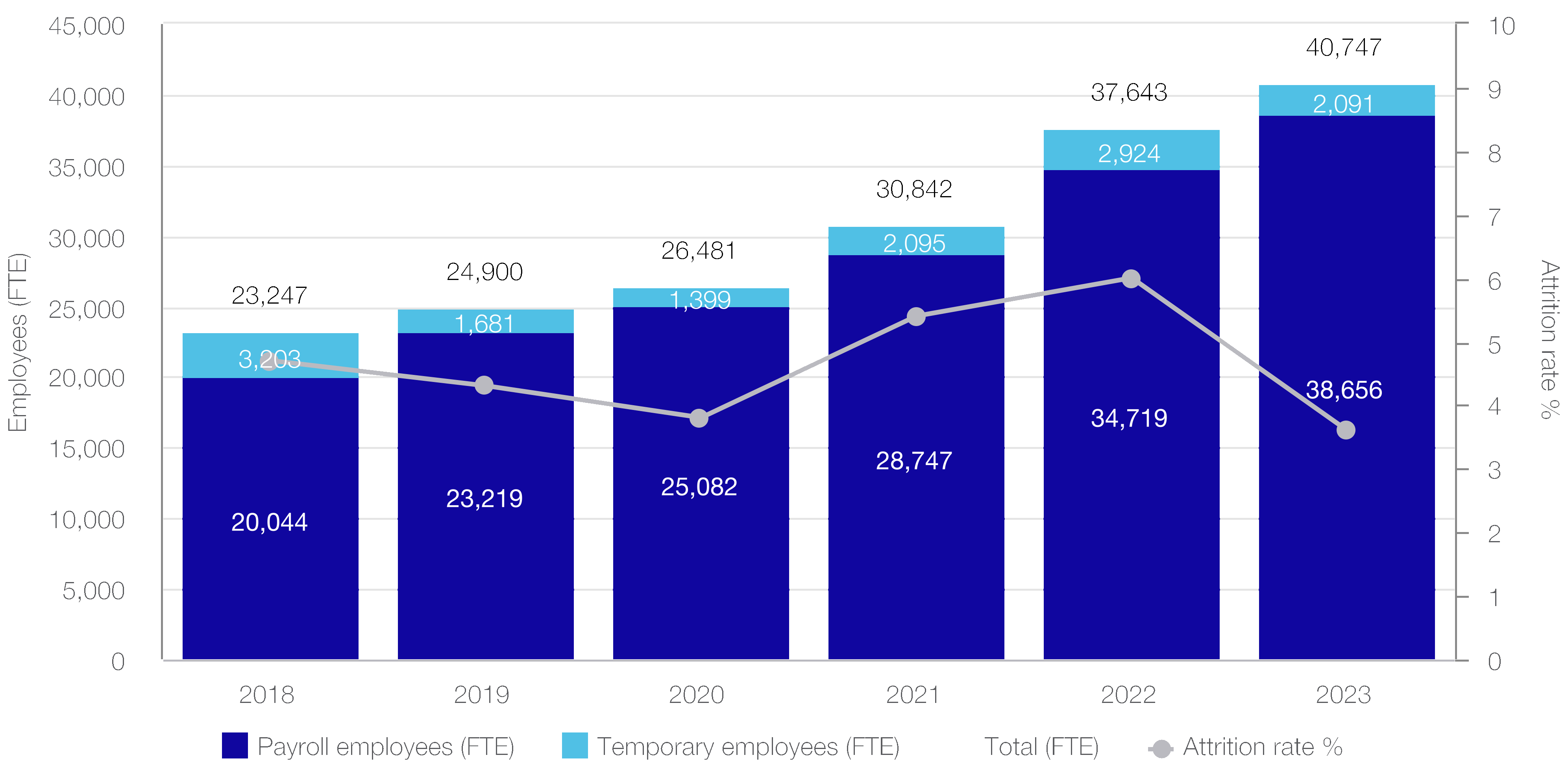
1. The 2020 to 2023 FTEs in the chart above do not include the FTEs acquired through the acquisition of Berliner Glas (ASML Berlin GmbH). |
ASML ANNUAL REPORT 2023 | SOCIAL CONTINUED | STRATEGIC REPORT | CORPORATE GOVERNANCE | FINANCIALS | 110 | |
Attractive workplace for all (continued) | ||||||
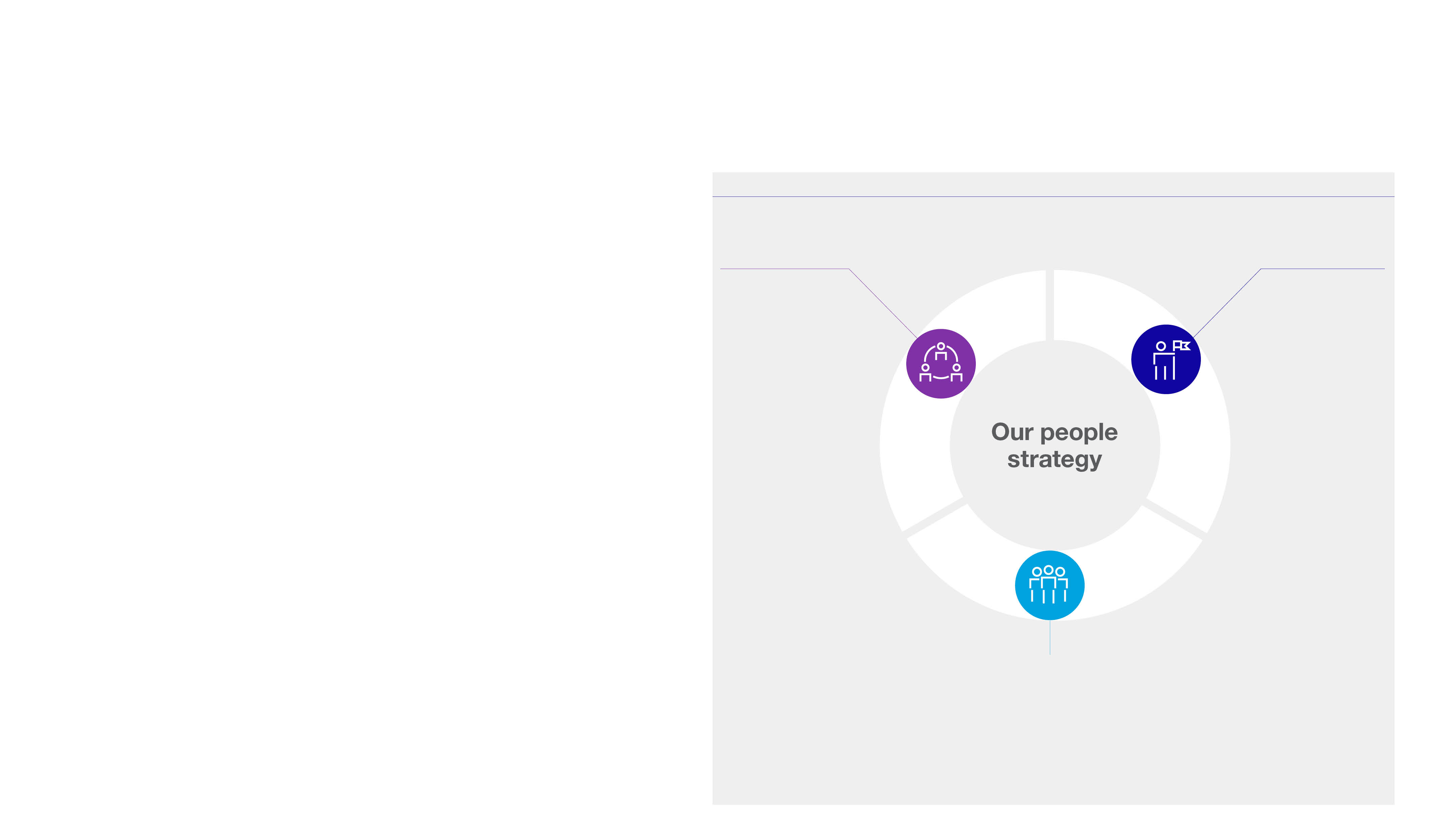
How we’re managing our impact | |
Our unique and diverse teams provide the skills and
capabilities we need to deliver our vision. As an equal
opportunity employer, we aim to cultivate a diverse and
inclusive workforce to drive innovation and accelerate
creativity.
We believe that promoting greater diversity in our
workforce will help us to attract and retain smart,
talented people, enabling us to drive technological
innovations that meet our customers’ needs. This means
diversity in all its dimensions, including but not limited to
gender, neurodiversity, nationality, sexual orientation,
people with disabilities and under-represented minorities.
Our core values – challenge, collaborate and care – are
at the heart of what we do and how we do it. They drive
our behaviors and lay the foundation for the culture we
aspire to. In this context, we aim to provide a working
environment where everyone feels valued and respected
and where employees at every level can fully contribute
and thrive.
We have made great strides, but we also realize we have
opportunities to be more inclusive and diverse. For
example, we are working to increase our diversity across
different dimensions, including increasing the number of
women at all levels and better understanding the
inclusivity of our work environment for all demographics,
including LGBTQIA+, under-represented minorities and
people with disabilities and neurodiversity.
Embedding diversity and inclusion in our company
The years 2020 through to 2022 were foundational in
terms of assessing our position and building our strategic
approach to diversity and inclusion (D&I). In 2023, we
leveled up to broaden accountability and strengthen
leadership on D&I, both internally and externally. Our
long-term goal is for inclusive practices to be fully
integrated into our ways of working. To help us achieve
this, we are aligning our work streams with the pillars of
ASML's people strategy: culture, talent and leadership.
Our Global D&I Council (GDIC), founded in 2021,
consists of senior leaders who act on behalf of ASML to
provide thought leadership. Chaired by a member of the
Board of Management, the GDIC proposes the D&I
strategy to the Board of Management, sets, promotes
and monitors D&I initiatives and leads company-wide
accountability for our goals. Our D&I team includes a
Global Chief Diversity Officer who is responsible for
driving initiatives across ASML. There is also a US D&I
Council with a similar make-up of business leaders
across the US. Currently, D&I initiatives are ramping up in
Asia, and the goal is to eventually have a similar
governance structure for this region.
ASML employee networks bring together employees
from diverse backgrounds with a common interest and
purpose, while at the same time spreading cultural
awareness across the organization. The networks help
nurture the connection between employees’
expectations and perspectives, and our global D&I
strategy. They also provide social and development
opportunities and events. These networks – which
include Atypical for neurodivergent employees, and
Proud for the LGBTQIA+ community – play an important
role in informing our approach, and we encourage
everyone to participate.
Our D&I approach | ||||||
Our D&I approach is integrated in our people strategy and focuses on three key areas, as shown in the diagram below: | ||||||
Talent We aim to increase the representation of under- represented groups by addressing our systems and end-to-end people processes, including talent acquisition, and by providing career advancement programs, that positively impact under-represented groups. | Leadership We are developing inclusive leadership programs and starting to build accountability into our performance and development processes. We engage leaders to foster their commitment to creating an inclusive culture and building a diverse workforce. | |||||
Culture We strive to create an inclusive culture for all in line with ASML's values by increasing the capabilities of employees and leaders to act inclusively and by empowering our employee networks to expand their impact and reach. | ||||||
ASML ANNUAL REPORT 2023 | SOCIAL CONTINUED | STRATEGIC REPORT | CORPORATE GOVERNANCE | FINANCIALS | 111 | |
Attractive workplace for all (continued) | ||||||
Inspiring a unified culture | ||||||
Our targets and performance in 2023 | |
We set targets to allow us to measure the effectiveness
of our approach:
1 | Reach 24% women new hires by 2025 | |
2 | Reach 24% inflow of women to leadership levels (job grade 9+) by 2025 | |
3 | Reach 20% inflow of women to leadership levels (job grade 13+) by 2024 | |
4 | Reach 12% women at leadership levels (job grade 13+) by 2024 | |
5 | Score on par +/- 3 percentage points for inclusion, against the top 25% of top-performing global companies | |
We are highly motivated to see more women pursuing careers in engineering and science. |
Women new hires | |||||
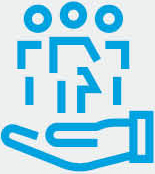 | Reach | ||||
24% | |||||
women new hires by 2025 | |||||
We aim to create an inclusive environment by proactively seeking out talented women from various backgrounds and experiences to bring in fresh perspectives and innovative approaches while fostering a dynamic organizational culture. In 2023, we increased the percentage of new women hires to 27%, up by three percentage points over 2022. We are highly motivated to see more women pursuing careers in engineering and science to further diversify the workforce at the heart of ASML. This requires a variety of approaches, and the highly specialized nature of our work means it will be a long- term process. We acknowledge that the global science, technology, engineering, and math (STEM) talent pool is thinly populated with women. At the same time, almost 90% of our job positions are STEM-related. Therefore, taking a multifaceted approach is crucial if we are to achieve our target of 24% in 2025. We believe we are well on track to meet this target. | |||||
Women and inflow at leadership levels | |||||
 | Reach | ||||
12% | |||||
women at leadership levels (job grade 13+) by 2024 | |||||
The representation of women at leadership levels plays a pivotal role in our commitment to D&I. We recognize the importance that exemplary role models have for our entire workforce and beyond, because they inspire others to follow the same path. In line with this target, we continue to support the development and advancement of women within ASML. This includes mentorship programs, leadership training, as well as reviewing performance and succession plans to ensure equal treatment and unbiased decision-making. Current representation of women at leadership level is 11%, while our ambition is to reach 12% by 2024. Achieving our ambition will require a significant inflow throughout our entire leadership pipeline, starting with job grade 9+ and the more senior level of 13+. We have significant gaps at the 13+ level, so we need to strengthen our efforts throughout the entire pipeline to meet this ambition of 20% inflow of women at leadership levels (job grade 13+) – we are working on specific plans to achieve this. In 2023, there was an 25% inflow of women to job grade 9+ (2025 target of 24%) and a 12% inflow of women to job grade 13+. | |||||
Inclusion index | |||||
 | Score on par | ||||
+/- 3 | |||||
percentage points for inclusion, against the top 25% of top-performing global companies | |||||
We are dedicated to creating a global workplace where every individual feels valued, respected, and empowered, regardless of their background. By comparing our inclusion score with the top- performing global companies, we aim to drive continuous progress. In 2023, our inclusion score was 82% (women: 80% and men: 83%), in line with the benchmark of top- performing global companies (82%). In 2023, we added additional questions to the Inclusion Index portion of the we@ASML engagement survey in order to better understand each employee's experience and garner a sense of their level of belonging. Therefore, this year's results cannot be compared directly to the 2022 results. Overall, we were pleased to see feedback from employees and gained insight on areas of opportunity. Our goal is to meet or increase this level of inclusion among our employees on an ongoing basis. | |||||
Read more in Corporate Governance - Other Board-related | |||||
ASML ANNUAL REPORT 2023 | SOCIAL CONTINUED | STRATEGIC REPORT | CORPORATE GOVERNANCE | FINANCIALS | 112 | |
Attractive workplace for all (continued) | ||||||
Inspiring a unified culture (continued) | ||||||
Our actions in 2023 | ||
Women new hires | ||
•Engaged actively with educational programs to grow the talent pipeline, deploying multiple initiatives to promote STEM education among the future female talent pool •Collaborated with universities and organizations dedicated to building diversity and creating opportunities for professional development and engagement. ASML is a sponsor of the GEM Fellowship Program in the US, which provides funding for graduate education through corporate sponsorships and a partnership with universities. Students selected for the GEM Fellowship Program are required to complete a corporate internship during the summer and attend graduate school during the fall and spring semesters. In 2023, we had seven GEM engineering Fellows on campus in the US. •Provided financial support to six young women pursuing engineering or computer science degrees | ||
Women and inflow at leadership levels | ||
•Launched a global sponsorship program for ASML women, as well as a program to empower women to amplify their unique style and voice •Engaged new specialized recruiting agencies focusing on recruiting senior leaders •Sponsored the European Women in Tech Conference for the first time, with women from our technology employee network speaking on the main stage •Organized and participated in global and regional events to attract diverse technical profiles and promote ASML as an attractive employer, especially to increase women leadership inflow | ||
Inclusion index | ||
•Added a module on inclusive leadership to all our leadership programs and worked to ensure inclusive language in all programs •Organized a global D&I month consisting of numerous panels and events •Continued to build our D&I curriculum by delivering awareness sessions and incorporating D&I in our global and sector onboarding programs •Continued to grow our employee networks, establishing additional chapters in the US (Atypical, Women @ CS Sites) and Germany (Green, Next) Listening to our female workforce After input and feedback from female employees, we organized several female listening sessions to have an open dialogue within the company on any issues and concerns related to inclusion of female employees. Based on the feedback that we received in those sessions, we will follow up on those aspects to ensure that we safeguard and improve the inclusion of female employees from a behavioral perspective and in our processes. | ||
Looking ahead | |
In 2023, we continued to build on our initial D&I strategy.
The GDIC, together with the D&I Center of Excellence
(CoE), conducted an assessment of the current state of
the D&I agenda within ASML and defined priority areas
for 2023-2025:
•Increase representation of women in leadership,
including senior management positions (JG13+)
•Increase representation of under-represented
ethnic minorities in the US, while acknowledging
their relative under-representation in STEM fields
•Further recognize the wide range of nationalities
employed at ASML and support the promotion and
development of non-local employees globally, as
well as the retention of non-local employees in the
Netherlands
We will set targets for each priority, supported by a
roadmap to create impactful and systemic change within
ASML. Each of the defined priority areas will consist of
multiple initiatives that will be tackled integrally across the
employee journey (from recruitment, onboarding and
development to retirement or exit). Furthermore, we will
continuously reflect on the D&I dimensions currently
prioritized and aim to increase our scope in the years
ahead.
Our commitment to our core values – challenge,
collaborate and care – will continue to drive our focus on
strengthening the diversity of our workforce and ensuring
our culture is inclusive for all employees. This will be
exemplified by the D&I initiatives we plan to launch in
early 2024, all of which will support our priority areas.
ASML ANNUAL REPORT 2023 | SOCIAL CONTINUED | STRATEGIC REPORT | CORPORATE GOVERNANCE | FINANCIALS | 113 | |
Attractive workplace for all (continued) | ||||||
Inspiring a unified culture (continued) | ||||||
How we’re managing our impact | |
We want to offer our people the best possible employee
experience at all our sites. This means enabling them to
develop their talent, feel respected and achieve to the
best of their abilities.
By offering an outstanding employee experience, we are
able to attract and retain the best talent to support the
increased productivity and growth of the company. This
requires specific commitments related to delivering a
best-in-class employee experience and driving a unified
culture where people are supported in their learning,
leadership, advancement and well-being.
We define the employee experience as the sum of all
experiences an employee gains through the interactions
with ASML at each stage of the employee life cycle, from
attracting and onboarding to exit. To achieve the best
employee experience, we focus on our employer
branding and employee engagement. Our approach
covers a wide variety of factors and activities, including
talent attraction and retention, as well as employee
engagement and development – including the
onboarding experience and training – and labor practices
such as fair remuneration, working conditions and well-
being.
We measure our impact on the total employee
experience through our annual we@ASML employee
engagement survey.
Talent attraction and retention
Our aligned employer value proposition is the key
strategic lever that defines our global positioning and
embodies our strategic direction as an employer. It
outlines the beliefs and values we want current and
potential employees to feel, see and experience with us
as an employer. The employer value proposition is used
in communications with employees and potential
employees to drive engagement and retention both in the
short and long term.
Our targets and performance in 2023 | |
We have set a number of targets to drive progress and
measure the effectiveness of our approach:
1 | Employer brand score – By 2025, maintain our position in the Netherlands and Taiwan top 5, US top 75 and China top 150 | |
2 | By 2025 have an attrition rate (the percentage of employees leaving our company) of < 7% | |
Employer brand
We measure our employer brand in the main locations
where we operate – the Netherlands, Germany, the US,
China, Taiwan and South Korea. These rankings show us
how we are converting talent through the attraction-to-
hire funnel. They look at how well ASML is known and
considered as an employer by external audiences and
potential employees, in particular by monitoring our
position in an independent external survey.
We have defined 2025 targets for our ranking in our different local labor markets: | ||||||
Country | Target 2025 | 2022 Ranking | 2023 Ranking | |||
The Netherlands | Top 5 | 4 | 1 | |||
Germany | N/A | N/A | N/A | |||
Taiwan | Top 5 | 6 | 5 | |||
South Korea | N/A | N/A | N/A | |||
US | Top 75 | 159 | 167 | |||
China | Top 150 | 188 | 189 | |||
Note: ranking from engineering students only
In 2023, we were ranked #1 in the Netherlands, #5 in
Taiwan, #167 in the US and #189 in China, with ranking
unavailable in South Korea. These rankings provide
detailed student preference research insights that we use
to create greater understanding of what technical talent
expects from an employer and whether we are a
competitive and an attractive employer.
Our score has improved significantly in the Netherlands,
where we moved up to the number one position for most
attractive employers for students and into the top three
for professionals. In Taiwan, an extremely competitive
market for semiconductor talent, we have moved up a
notch from position six to five through differentiated and
consistent engagement and communications with top-
tier universities.
The Chinese market is large and fragmented, and it
remains a huge challenge for ASML as a non-consumer
brand to become known among the general population.
In an unaided ideal employer ranking for students, we are
sixth out of 10 competitors in IT/high-tech (vs. no ranking
in 2020), and third out of 10 competitors in the
semiconductor sector (vs. no ranking in 2020).
The US is a large and fragmented market in which it is
difficult to reach everyone. We focus our employer-
branding efforts on the specific states where we operate
and target certain fields of study. Based on our survey of
the top 15 target schools, ASML reached 78%
awareness as an employer, an increase of 36% over
2021. Based on this same survey, ASML now ranks
ninth on the list of ideal employers out of a total of 25,
overtaking 12 competitors.
87% | |
of new hires indicated that they had a positive onboarding experience in 2023, with good support from their managers. | |
ASML ANNUAL REPORT 2023 | SOCIAL CONTINUED | STRATEGIC REPORT | CORPORATE GOVERNANCE | FINANCIALS | 114 | |
Attractive workplace for all (continued) | ||||||
Providing the best employee experience - Talent attraction and retention | ||||||
In 2022, we launched employer branding in Germany,
which mainly focuses on building brand awareness for
our R&D and manufacturing location in Berlin. Because
we are a new employer brand in Germany, we are not
yet included in the local research as a company of
choice.
We use the Universum research data to ensure a
consistent method of measuring our employer brand, but
also to understand what is most important to these
students when choosing an employer. In 2021,
Universum ceased providing its standard report for South
Korea, and we are unable to obtain comparable data.
However, based on our 2023 survey of the top 10 target
universities in South Korea, we ranked 13th out of 21
competitors. In addition, we were certified by the Ministry
of Employment and Labor of South Korea as one of
'Korea’s best job creators', and have twice won 'Best
Family-Friendly Management' approval from the Ministry
of Gender Equality and Family.
Employee retention
While employees leaving the company can lead to
knowledge gaps, we also view these events as
opportunities to bring in new talent and enhance existing
talent. We strive for a healthy attrition rate of below 7%.
Our overall attrition rate in 2023 was 3.6%, down from
6.0% in 2022. Our attrition rate is well within our target
range and below the industry average in every country in
which we operate. We attribute the decrease to the fact
that the labor market has cooled down industry-wide and
people are currently more cautious before changing jobs.
While this trend is relevant to many companies, our
efforts in employee onboarding and employee
engagement are also reflected in a lower attrition rate.
Our actions in 2023 | |
To achieve our targets, we:
•Asked employees to share their stories on why they
join and stay with ASML and supported them as
ambassadors in sharing their stories with their
networks. This credible way of messaging helps us
target talent within earned media and drive awareness
and referrals – a high-quality source of hires.
•Continued to recognize that employees are our best
advocates and one of the most credible sources of
information about who we are as an employer. In 2023,
we expanded the Digital Ambassador program to
China alongside the Netherlands, Germany, the US,
Taiwan and South Korea. Over 1,000 employees
globally are now sharing curated content with their
local social media networks, generating millions of
impressions throughout each month.
•Held our Internal Career Festival onsite and virtually in
China, Germany, South Korea, the Netherlands, the US
and Taiwan. This global hybrid event aims to retain
talent by driving internal mobility and development.
•Ran 27 executive interviews, a global internal survey
with over 10,000 responses and targeted external
talent surveys in each ASML location. All were intended
to help us understand what (potential) employees
expect from an employer and how we stack up. Based
on these insights, we have updated our employer value
proposition to communicate who we are and what we
offer, authentically and in a differentiated way.
Looking ahead | |
Our key priorities for 2024 are the attraction and
retention of skilled talent to support our business growth.
We intend to do this by continuing to monitor and drive a
strong employer brand reputation.
We will continue to support and enable a (potentially)
best-in-class employee experience through focused
programs and communications around learning and
development, our commitment to well-being, diversity
and inclusion, and strong leadership. In doing this, we
aim to truly drive an employer brand experience from the
inside out.
We will run both global campaigns and events and drive
segmented outreach in each of our key locations. In this
way, we hope to showcase ASML and let potential
employees see, feel and experience what it’s like to work
for us. We will also focus on key areas such as talent
engagement with top-tier universities, candidate and
employee experience, and talent attraction to key roles.
To support and measure the effectiveness of our efforts
we will carry out talent surveys in each key location either
every 12 or every 18 months to monitor our progress in
each of the countries.
Lastly, we will continue to monitor and listen to (potential)
employees in an effort to continuously improve their
experience both before and after they join us.
ASML ANNUAL REPORT 2023 | SOCIAL CONTINUED | STRATEGIC REPORT | CORPORATE GOVERNANCE | FINANCIALS | 115 | |
Attractive workplace for all (continued) | ||||||
Providing the best employee experience - Talent attraction and retention (continued) | ||||||
How we’re managing our impact | |
We empower our people to take responsibility for their
own personal development, pursue their career
ambitions and thrive, by listening to their views and
offering tailor-made development opportunities.
We only succeed as an organization when everyone can
give their best. It is crucial that we take care of and
ensure the well-being of all our colleagues. This means
building and maintaining a working environment where
we can work together with positive energy and achieve a
healthy work-life balance.
We must ensure that our people have the right
knowledge and expertise to maintain our technological
leadership and the pace of innovation our industry
demands. To build a strong employer brand that attracts
talented people who are committed to their personal and
professional growth, we promote a culture of continuous
learning and development.
Onboarding and developing our people | ||||||||
A positive onboarding experience is vital to building a sense of connection, and helping our employees add value and quickly feel at home. Right from the start, we want to unlock the potential of people and society by pushing technology to new limits. We measure the quality of our onboarding experience through pulse surveys. On average, 87% of new colleagues indicated that they had a positive experience in 2023, with good support from their managers. 9% of new colleagues had a neutral experience, while 4% indicated that there is room for improvement in the onboarding experience, particularly in the areas of | training and access to relevant tools and information. We use learning solutions and knowledge management to unlock people’s potential and foster a culture of learning. Once employees are on board, we continuously invest in them in response to evolving business requirements and developments in the labor market. Enabling employees to identify and pursue opportunities for professional development is central to our approach, and we offer a wide range of career paths and tools to support our employees’ career navigation. | The ASML Academy unites all learning and knowledge management within ASML, enabling our employees to easily access the knowledge, skills and expertise they need to perform well in their roles. The new Learning eXperience Platform (LXP) further enables people to drive their own development and learn from each other, and intuitively connects them to best-in-class learning content created by ASML and external providers. We aim to provide the best possible employee experience by enabling learning and knowledge management to take place on the job, guided by the 70-20-10 approach for learning: 70% on-the-job learning, 20% coaching and 10% training courses. We are also focused on providing performance support to employees when they need to learn while performing on their job. Compared to 2022, the growth of our workforce slowed significantly in 2023, and in some areas we did not have nearly as many new roles as in the previous year. We therefore shifted our focus toward creating awareness and engagement. This also allowed us to concentrate resources on supporting programs and communications related to internal mobility and development, and onboarding the large number of people we hired in 2022 and 2023. | ||||||
 | ||||||||
ASML ANNUAL REPORT 2023 | SOCIAL CONTINUED | STRATEGIC REPORT | CORPORATE GOVERNANCE | FINANCIALS | 116 | |
Attractive workplace for all (continued) | ||||||
Providing the best employee experience - Employee engagement and development | ||||||
Our targets and performance in 2023 | |
Two key targets measure the effectiveness of our
approach:
1 | Employee engagement score – By 2025 to be within a 2% range of the top 25% performing companies benchmark for our we@ASML employee engagement survey | |
2 | Achieve 78% for well-being in our engagement survey in 2023 | |
Employee engagement
We measure the overall impact of our activities on the
total employee experience using our we@ASML
employee engagement survey.
This annual survey provides insights that enable us to
improve the employee experience and refine our policies
and processes. To measure how well our values are
embedded in the organization, the survey also includes
questions about our culture and values that go beyond
the ‘what’ to the ‘how’.
Our 2023 we@ASML employee engagement survey
reported good results and a high participation rate of
86% (in line with previous years), along with valuable
feedback for improvement.
The engagement survey score was 80.3% in 2023 – five
percentage points above our external global benchmark
of 75.2%, and an increase of 2.4 percentage points on
the score from 2022. Against the 2025 target, we already
score within the 2% range of the top 25% performing
companies (with our 2023 engagement score just over
1.3 percentage points lower). On all underlying topics,
we see an improvement compared to the previous year.
Overall, we conclude that ASML has a highly engaged
population. People are proud to work for ASML and
would recommend ASML to others.
Responses indicate a high level of team spirit, where
sharing knowledge and getting the job done are strongly
embedded in our way of working. Our employees feel
respected and have trust in each other. They continue to
raise concerns about effective processes, and they like to
have more opportunities to participate in sustainability
initiatives. Cross-collaboration and sharing knowledge
across teams also remain subjects for improvement.
Inclusion, well-being and job enablement are the key
themes we will focus on to further increase our
engagement.
In the past year, we have improved the awareness on our
sustainability initiatives and opportunities for employees
to contribute to it. Our sustainability initiatives nowadays
make 79% of our employees proud and convinced that
they have a positive impact on the world. This is an
improvement of 9 percentage points compared to last
year and 1 percentage point above the external average
(78%). Next to this, 53% see the opportunity to
participate in sustainability initiatives. A positive effect
compared to last year (39%), but we will nevertheless
continue focusing to further improve this score.
Social protection and fair labor conditions and remuneration for our employees | ||||
Working practices and remuneration ASML is committed to providing fair labor conditions and social protection for all its employees, regardless of their location and whether they are on fixed or temporary contracts. We support the principles of the International Labour Organization (ILO) and respect the rights of all employees to form and join trade unions of their own choosing, to bargain collectively and to engage in peaceful assembly. Freedom of association We have no indication that we operate in countries where the freedom of association and collective bargaining for ASML employees is restricted. We strive to comply with the relevant legislation in every country where we operate. In those countries where we have employee representation, we engage in regular dialogue with the different organizations representing our employees. Topics are put forward and discussed by both the company and the employee representatives. The working conditions and terms of employment of employees not directly covered by collective bargaining agreements are influenced or determined based on other collective bargaining agreements, labor market developments and usage and habits in the specific country. | Fair remuneration Our approach to remuneration is to be fair and balanced. In our Remuneration Policy, we are committed to gender equality and we strive for global consistency while respecting common practice in local markets. We continuously review how our remuneration compares with the market benchmark for technology professionals in each region where we operate and, where necessary, make changes to our remuneration policies and levels. ASML is committed to meeting adequate living-wage requirements. This means that employees earn salaries that meet their and their families’ basic needs to maintain an adequate standard of life in the circumstances of each country where we operate, and we also provide some discretionary income. Our company has a predominantly highly educated workforce with relatively high levels of remuneration and, on average, our salaries are significantly above the local living wage. In 2022, as part of a two-year cycle, we conducted an analysis of how our lowest base salary compared with the local minimum wage and local ‘living wage’ in the countries and regions where we operate. We did not detect any gaps. We also analyze paid salaries for gender disparity annually. In 2023, as in previous years, we found no major differences in these salaries. However, we would like to further investigate this domain in the future, to ensure that we do not have any major challenges. | |||
ASML ANNUAL REPORT 2023 | SOCIAL CONTINUED | STRATEGIC REPORT | CORPORATE GOVERNANCE | FINANCIALS | 117 | |
Attractive workplace for all (continued) | ||||||
Providing the best employee experience - Employee engagement and development (continued) | ||||||

Employee well-being
Care is one of our values and we support our employees
in maintaining a healthy, productive and balanced life.
Our well-being framework brings together all well-being
activities at ASML and allows us to drive our initiatives
region-by-region to meet local needs.
We look at well-being from a holistic perspective, striving
to integrate it into everyone’s day-to-day work. We have
identified four well-being dimensions around which we
have defined and created our programs, tools and
resources – mental, physical, social and financial well-
being. We provide specific resources and initiatives for
teams and managers to get the right conversations going
and guide their well-being journeys.
Our offerings include general support for employees and
leaders, training courses and masterclasses, well-being
events, and physical and mental health checks. At our
head office in Veldhoven, a dedicated health and well-
being center provides several employee services
including an in-house physiotherapist and psychologist,
career center, indoor gym, yoga room and a running
track.
The biggest challenge we face is in encouraging people
to get into the habit of prioritizing their well-being as part
of their day-to-day work, and to help them find and use
the available support in their well-being journeys. We
have close to 300 well-being ambassadors helping us to
spread well-being across our global organization, and the
network continues to expand.
Well-being is measured primarily through the well-being
score in our we@ASML engagement survey. Our target
was to improve from 77% in 2022 to 78% in 2023.
2019 | 2020 | 2021 | 2022 | 2023 | |
Well-being | 74% | 77% | 69% | 77% | 81% |
From the 2023 survey, our well-being score improved
from 77% in 2022 to 81% in 2023, which is above our
targeted score.
Through a deep dive into the actual survey results, we
have identified those groups of employees where well-
being scores need to be improved, and we will define
tailored interventions to execute on this in close
cooperation with managers and HR business partners.
For 2024, we aim to maintain an overall well-being score
of 81%, and no scores on individual questions within the
well-being index below 75%. We expect this to be a
stretch considering the circumstances in the world and
the semiconductor industry. Our key focus areas will be
maintaining a healthy work-life balance and managing
stress – we will work with leaders and managers to
consistently reduce work pressure.
~300 | |
well-being ambassadors | |
ASML ANNUAL REPORT 2023 | SOCIAL CONTINUED | STRATEGIC REPORT | CORPORATE GOVERNANCE | FINANCIALS | 118 | |
Attractive workplace for all (continued) | ||||||
Providing the best employee experience - Employee engagement and development (continued) | ||||||
We focus on four well- being dimensions – mental, physical, social and financial |
Our actions in 2023 | |
We saw significant progress within the Learning
eXperience Platform (LXP) in 2023, with content curation
and the creation of learning journeys helping our
employees to easily find the learning they need, when
they need it. We also embedded well-being principles in
learning program delivery.
We stepped up our use of data and metrics to improve
how we strategize our well-being programming and
updated the well-being section of the we@ASML survey.
We carried out additional research into well-being needs,
both in general and within diversity groups through our
employee networks.
We held the first Global Health & Well-being Week in
June and launched an enriched self-facilitation tool for
teams to work on well-being in 2023. A development
program that consisted of several workshops and
interactive sessions was exclusively offered to our
network of well-being ambassadors, which grew from
200 to 300 members.
In July, we launched an employee assistance program
(EAP) for Europe. As was already the case through EAPs
in Asia and the US, ASML employees and their families in
the EU can now also get 24/7 support, counseling and
help with anything that negatively impacts their mental
health, work-life balance and/or productivity at work.
Looking ahead | |
Our plans for 2024 are to:
•Create an ASML-wide learning and knowledge
management onboarding and off-boarding experience,
aligned across the ASML Academy.
•Strengthen the well-being strategy, governance and
internal branding
•Host a Global Well-being Month in June, with online
and onsite events, workshops and keynotes in all key
locations.
•Launch a new digital well-being platform as part of the
new ASML intranet, a digital hub for internal use to
connect, communicate, and collaborate. This will allow
employees to find and access the well-being resources
they need, quickly and easily, when they need them.
•Improve development for complex roles, functions and
skills by defining specific and targeted learning
journeys.
•Increase our focus on integrating well-being into our
day-to-day work by:
◦Deploying the well-being framework in additional
parts of the company and countries
◦Equipping leaders and people managers to act as
role models and hold regular well-being
conversations with their teams
◦Strengthening and professionalizing the well-being
ambassador network
•Enhance the use of data and metrics to gain insight
into the well-being of our people and strategize well-
being interventions.
In 2023, we identified a new material topic – how
providing opportunities for training and development can
impact employees' well-being and careers. We are
developing a process to formally manage and report on
this topic, starting in 2024.
ASML ANNUAL REPORT 2023 | SOCIAL CONTINUED | STRATEGIC REPORT | CORPORATE GOVERNANCE | FINANCIALS | 119 | |
Attractive workplace for all (continued) | ||||||
Providing the best employee experience - Employee engagement and development (continued) | ||||||
How we’re managing our impact | |
We operate in a world of volatility, uncertainty, complexity
and ambiguity. Successfully navigating these challenges
requires leaders with emotional intelligence and strong
business and people leadership skills.
Furthermore, to remain a market leader, we must provide
unified direction based on authentic leadership that gives
our people a clear picture of where ASML is heading.
This offers opportunities for all of us to contribute to
ASML’s success and make an impact.
As our company grows, so does the need for clarity
around roles and expectations – as well as our strategic
approach and vision. Our leaders play an important role
in communicating this. We strive to formulate and
capture the roles of our leaders and employees clearly so
that everyone understands what is expected of them and
can perform their roles to the best of their ability.
Launched in 2020, our leadership framework outlines
and clarifies a leader’s role in the business, role-modeling
the values within the company, and what it means to be
a people manager and coach for employees.
Leadership development | ||
In 2023, we evaluated our leadership development curriculum with the aim to: •Support our leaders with easier access to development opportunities •Increase the scalability of our leadership curriculum •Improve the quality of our leadership program materials •Improve how we measure the impact (ROI methodology) of the leadership training programs •Improve the content of and the relationship between our leadership programs | ||
We are evolving our approach to leadership
development. In addition to self-directed learning, we
now include organizational learning and invite leaders
from all target groups to join our leadership courses. We
develop roughly one-third of our leadership population
each year. We maintain our fast-track career programs
for our most promising managers – our future leaders.
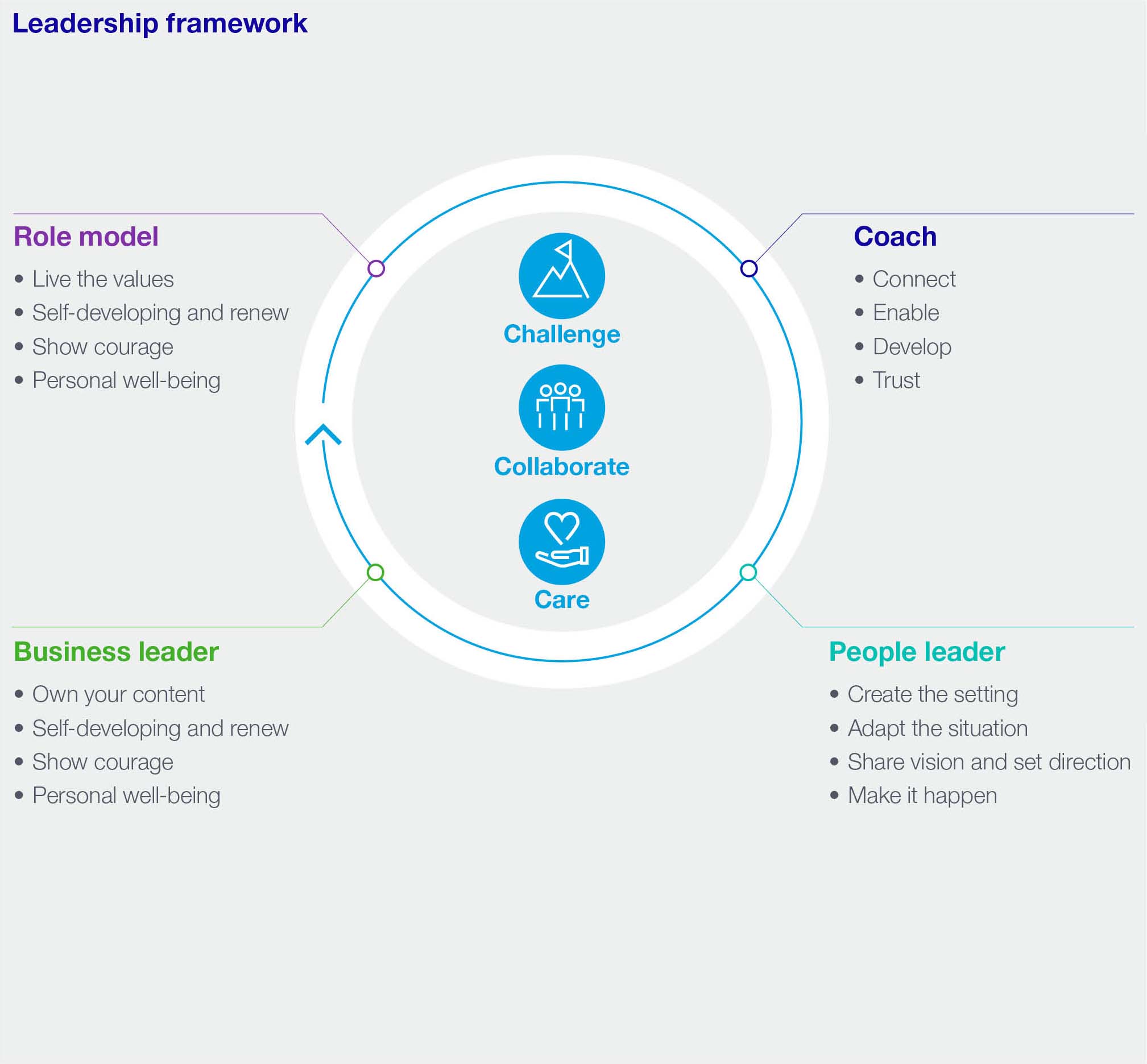
ASML ANNUAL REPORT 2023 | SOCIAL CONTINUED | STRATEGIC REPORT | CORPORATE GOVERNANCE | FINANCIALS | 120 | |
Attractive workplace for all (continued) | ||||||
Enabling strong leadership | ||||||
Our targets and performance in 2023 | |
We facilitated leadership journeys for 1,520 leaders and
we started leadership acceleration programs for 264
high-potential leaders.
Since 2022, we have specifically measured the quality of
each pillar of our leadership framework using our
we@ASML employee survey. In 2023, all four dimensions
of our leadership framework were evaluated: 82% of our
employees see their manager as a role model, 80% as a
coach, 79% as a business leader and 82% as a people
leader. We are happy with this upward trend and will
continue to invest in leadership development, as this is of
critical importance to us to ensure our growth.
Our actions in 2023 | |
To support our leaders in understanding and adopting
our leadership model, we deployed a new leadership
curriculum for our total leadership population and
adjusted the content in line with their leadership
responsibilities (first-line leaders, leader of leaders,
executives) and their years in the role.
We also strengthened the narrative and content of our
leadership curriculum. For our learning initiatives we
implemented the ROI methodology to measure our
performance and will be able to monitor the performance
in 2024. We plan to update our whole curriculum every
year, with 25% of the curriculum based on the strategy of
ASML and 75% on the future or current skills and
behavior we expect from a leader, using the leadership
model as a basis. Based on the results of the we@ASML
employee survey in 2022, we specifically focused on
adding business acumen to our leadership curriculum,
for example in Taiwan.
In addition, we provided support to help our senior
leaders improve their coaching and mentoring skills,
which we believe will have a positive impact on business
acumen for all leaders in ASML. We also implemented a
new coaching and mentoring platform, and coaching is
now part of all our leadership programs.
Looking ahead | |
We plan to roll out a shared services platform for learning
in each region so that we are ready to develop even
more leaders in the future. While our plan is for this to be
completed by 2024, this target will be challenging. We
have identified that our structure and resources are
currently not able to deliver on the demand that we have
for our leadership programs – and we recognize the need
to step up our ability to deliver more efficiently.
Our key priority is to focus on scalability and quality –
making sure our leaders are accessing best-in-class
programs in an efficient and effective way. To be able to
do that, we will set up Learning Shared Service centers in
Asia in 2024. We already have these centers in Europe
and the US. Secondly, we will focus on improving the
impact of our programs, which will lead to a yearly
improvement process incorporating the feedback and
strategic direction we want to take.
ASML ANNUAL REPORT 2023 | SOCIAL CONTINUED | STRATEGIC REPORT | CORPORATE GOVERNANCE | FINANCIALS | 121 | |
Attractive workplace for all (continued) | ||||||
Enabling strong leadership (continued) | ||||||
How we’re managing our impact | |
More than just a priority, safety is central to everything
we do.
Our goal is to prevent occupational health and safety
incidents because in our view all are preventable. As
such, we are working toward a long-term ambition of
zero injuries and work-related illnesses.
We aim to provide injury-free and healthy working
conditions for everyone on our premises – employees,
contractors, suppliers, customers and visitors – by
eliminating hazards and reducing safety risks. To achieve
this, we focus on continuous improvement in our
processes, working conditions and mindset.
ASML is a complex, global organization. To improve, we
need to share and learn together, starting from our core
values – challenge, collaborate and care. With
continuous improvement as a key principle, we rely on
every person working at and for ASML to share our
safety commitment, because only by working together to
common standards can we keep each other safe.
While it is impossible to completely eradicate risk, we
work proactively at all levels to identify potential issues or
concerns and develop measures toward reducing them.
To minimize risk, we provide our people with the right
protection, procedures and processes to keep them
safe. We follow all government guidelines and safety
measures, and where appropriate we go further.
We focus our efforts on an environment, health and
safety (EHS) management system, safety culture and
training. Our commitment to employee and product
safety is captured in our Sustainability Policy, which
applies to ASML colleagues worldwide.
Read our Sustainability Policy at asml.com.
Occupational Health and Safety Environment
competence center
Our Occupational Health and Safety Environment (OHSE)
competence center drives learning and knowledge
sharing across the organization. It also connects subject
matter experts who cover EHS competences across the
organization. EHS Experts bring together best practices,
define the EHS standards for ASML and support
managers to implement these standards in the
workplace. Together, they drive improvement on EHS
matters to ensure employees can work safely, identify
areas for improvement and meet legal requirements.
EHS management system
ASML’s well-established EHS management system
enables our managers and employees to effectively
integrate EHS objectives, plans, processes, standards
and behaviors into their daily work and protect our
people, products, assets and the environment. The
system is based on and compliant with the ISO 45001
occupational health and safety standard. It is assessed
annually as part of our internal Corporate EHS audit
program, although it is not certified or audited by an
external party. We have implemented the system
worldwide at all our sites and customer services
locations. It covers everyone whose workplace is
controlled by ASML, including all our employees and
other workers not employed by us.
The Corporate EHS Committee, chaired by our Chief
Operations Officer, oversees and approves our EHS
strategy. Line managers are responsible for day-to-day
EHS management and performance.
The EHS standards describe the EHS requirements
ASML must adhere to worldwide. Locally, more stringent
requirements may apply. The ASML EHS Guide, available
on our intranet, provides practical, useful and essential
information for employees, contractors and any other
parties working for us. The guide explains our aims and
objectives, and how employees can contribute to a safe
and healthy workplace with minimum impact on the
environment.
Incident and risk management are key elements of the
EHS management system. An incident report must be
completed by any ASML employee who is involved in or
observes an unsafe situation or incident. We record and
investigate all incidents and high-risk unsafe situations to
determine the root cause and take actions to prevent
them from recurring.
EHS Experts conduct regular hazard and risk
evaluations, with a focus on preventing employees’
potential exposure to hazards such as chemicals,
radiation, mechanical handling and ergonomic risks.
These provide us with further insights into the main
hazard and risk areas at ASML. We take appropriate
action to mitigate these risks and ensure continuous
improvement through internal EHS audits as well as
inspections, risk assessments and incident
investigations. These are complemented by regular
‘Safety Gemba Walks’, where managers visit the
employees’ workplace, helping to increase safety
performance and strengthen our safety culture.
In the event of any incidents, company doctors or
external health services are available on all our sites.
Strengthening our safety culture
Safety extends beyond procedures, rules and the right
equipment to include human mindset, behavior, attitude
and habits. We carried out our second safety maturity
assessment based on the Bradley Curve in 2022, and we
continued the deployment of improvement roadmaps in
2023. Improvement areas are focused around
leadership, structure and process. As an example, we
have continued our improvement actions around the
ASML life-saving rules with focus on isolation and lock-
out. Our leadership development has continued with
specific training for leadership teams and providing a
sound foundation for all our people leaders. Across the
company, initiatives to develop the safety mindset are
being deployed with programs to increase risk
awareness and speaking up.
Our ambition is to reach the next level of safety maturity
by 2025. Improvement plans at corporate and sector
levels have been identified and are implemented,
supported by solid management commitment. We will
continue to engage with our partners, main suppliers and
customers to align our safety principles and processes.
To help build a strong safety culture and prevent serious
injury and fatalities in our operations, we apply basic
safety rules for five situations. Based on incident analysis,
these are: verify isolation and lockout before beginning
work; get authorization before entering a confined space;
take precautions while moving heavy loads; protect
yourself while working at heights; and drive safely.
ASML ANNUAL REPORT 2023 | SOCIAL CONTINUED | STRATEGIC REPORT | CORPORATE GOVERNANCE | FINANCIALS | 122 | |
Attractive workplace for all (continued) | ||||||
Ensuring employee health and safety | ||||||
To improve our EHS performance, we encourage
employees to speak up whenever they encounter safety
risks. Every employee is empowered to stop working if
they feel unsafe. Line managers are responsible for
ensuring safe work conditions to enable their team to
work safely, and for following up on reported safety
incidents or unsafe situations by team members.
Dedicated EHS teams support our employees and their
line managers to work in a safe and healthy environment.
Safety training and engagement
At ASML, it is standard practice to inform our employees
and anyone else accessing our premises and customer
sites independently – including contractors and suppliers
– about our safety rules. Training ensures that our people
are prepared and informed about these safety
requirements.
Mandatory safety training is defined for different job roles
depending on the risk profile of the work activities:
•All new employees joining ASML are required to
complete our EHS Fundamentals e-learning module,
which covers all the ASML safety guiding principles to
recognize hazards and prevent injuries, as well as
where and how to find safety information. This training
is refreshed for all employees on an annual basis
•Our EHS Cleanroom Fundamentals training module is
mandatory to enter and stay safe within our cleanroom
environments
•Our EHS Fundamentals training for line managers
focuses on how to be a leader on safety. It comprises
three elements: risk management, enabling teams to
work safely, and following up after incidents
Our targets and performance in 2023 | |
To benchmark our performance against industry
standards, we use a benchmark recordable incident rate
of 0.16, which represents world-class performance.
We register EHS-related incidents in line with the US
Occupational Safety and Health Act (OSHA). Our
recordable incident rate – the number of cases that
required more than first aid in a year per 100 FTE –
increased from 0.18 in 2022 to 0.21 in 2023, higher than
our desired benchmark of 0.16.
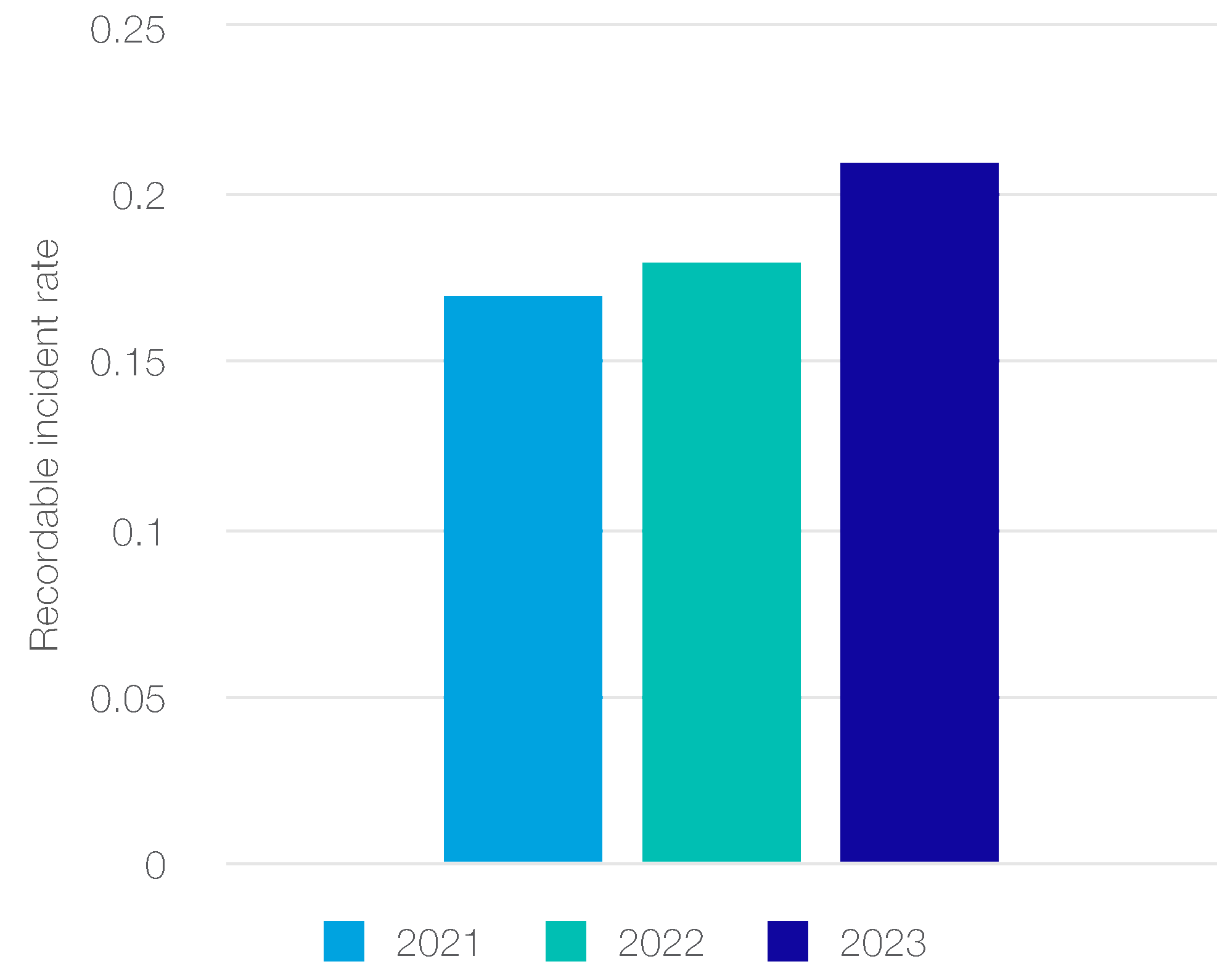
We have seen an increase in our recordable incident
rate. We maintain our focus and actions to improve
safety in technology, systems and culture. First analysis
shows the increase over 2023 is primarily found within
the customer support area. An improvement plan has
been set regarding safety awareness (prevention slips,
trips and falls) and the use of cut-resistant gloves (to
prevent injuries from sharp objects). Our benchmark
compared to the OSHA industry data shows we remain
below the average recordable incident rate for the semi-
conductor industry. However, the increase has our full
attention. As part of our 2023 management review, an
overall deep dive into our performance will help to identify
necessary improvements.
As in previous years, we did not encounter any ASML
work-related fatalities. We reported four injuries due to
which the employee was away from work or had a job
transfer for >180 days.
Our actions in 2023 | |
We must ensure people are informed, instructed and
supported while doing their work.
In response to the increased recordable incident rate in
2022 from 2021, during 2023 we deployed health and
safety improvements.
Following the five safety rules, we deployed various
department-specific awareness programs. For example,
we delivered safety and risk awareness campaigns to
further develop our safety maturity. We have also further
improved our EHS systems and processes, such as
industrial hygiene and incident management.
Based on our findings in 2022 that ergonomics was the
most common root cause for work-related illnesses
experienced by our employees, we developed and rolled
out new industrial ergonomics training to our operations
teams, supported by ergonomic workplace assessments
and improvements where needed. This includes
mandatory ergonomics training for all engineers in our
operations to prevent work-related illness due to manual
lifting, pushing and pulling, and awkward work postures.
We increased our focus on occupational health, with
ergonomics and hazardous substance management as
main topics, and on emergency response at large
industrial sites. With regard to travel safety, and to
reduce the risk of driving while fatigued, we have taken
measures to ensure our employees do not drive following
a flight of more than six hours.
Looking ahead | |
We will continue to deploy our safety maturity
improvement roadmaps and adapt our EHS processes
to the growth of the company to ensure safe and healthy
work conditions for all.
In 2024 we will focus on working at height
improvements, risk management, and further embedding
occupational health processes in the operations and
safety at our campuses.
ASML ANNUAL REPORT 2023 | SOCIAL CONTINUED | STRATEGIC REPORT | CORPORATE GOVERNANCE | FINANCIALS | 123 | |
Attractive workplace for all (continued) | ||||||
Ensuring employee health and safety (continued) | ||||||

Managing expansion in high-stress situations means focusing on your people and their well-being.” | ||
Mark Bergkotte | ||
Director, Logistics Operations | ||
13 years at ASML | ||
Helping our teams thrive | |
Mark Bergkotte has worked at ASML for 13 years managing our supply chain and logistics in various roles. As Director Logistics Operations, he oversaw the ramp-up of our logistics to meet increased customer demand in the face of formidable internal and external pressures. |
ASML ANNUAL REPORT 2023 | SMALL PATTERNS. BIG IMPACT. | STRATEGIC REPORT | CORPORATE GOVERNANCE | FINANCIALS | 124 |
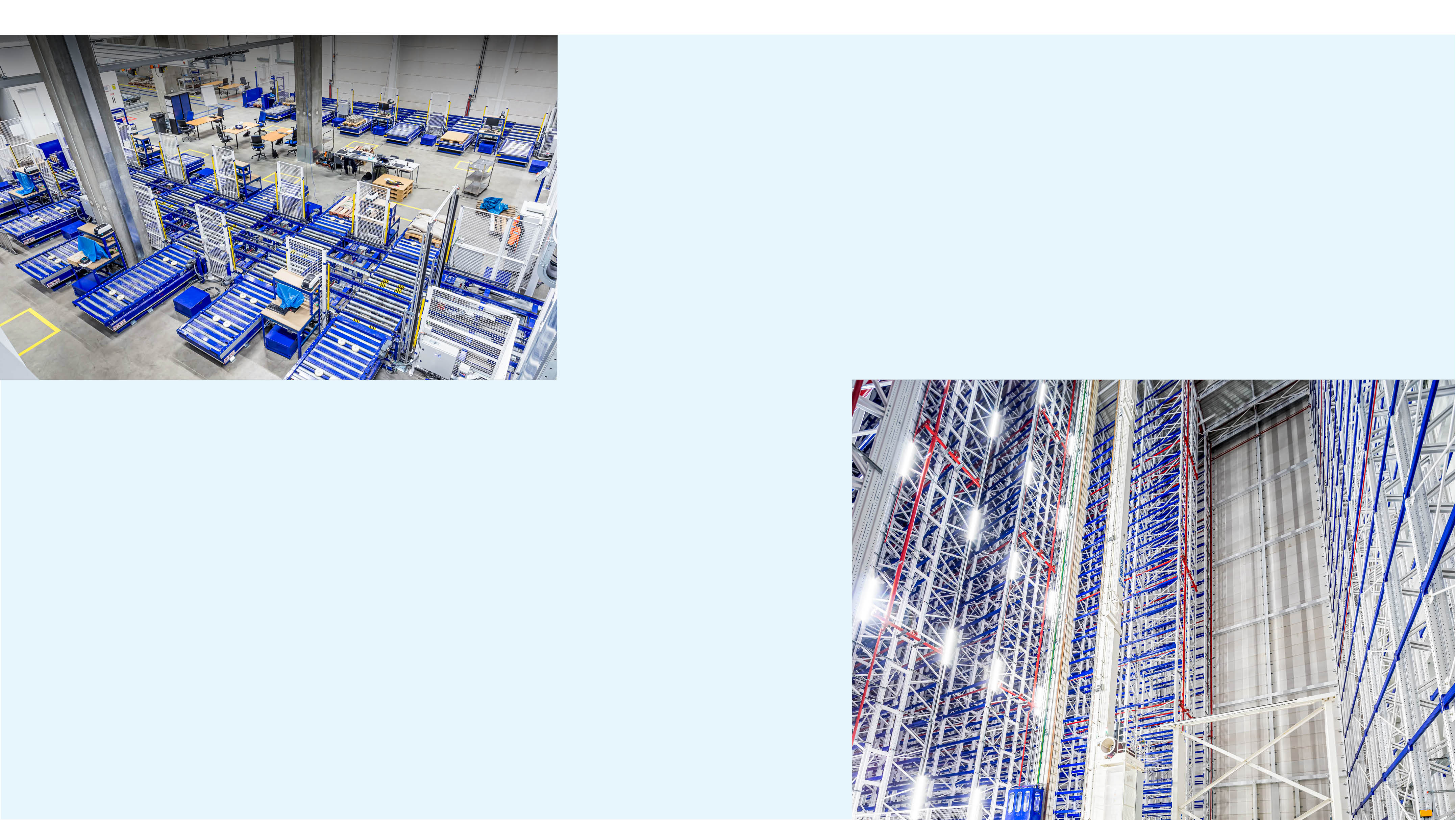
Scaling up logistics
under pressure
In 2020, I started a new position with
responsibility for delivering materials and
tooling into our factories in Veldhoven and
shipping finished systems to our customers.
This was a time of rapid evolution for my
team. ASML was ramping up delivery of new
systems, which meant taking on many new
employees. And six months after I started,
we launched a new logistics setup including
new IT systems and much more automation.
All this was happening at the height of the
COVID-19 pandemic. Needless to say,
stress levels were really high and,
consequently, so were sickness and
employee absence. As a logistics organization,
we were struggling to meet targets.
Something had to change. There needed to
be more focus on the health and well-being
of our people. It’s a cliché to say that people
are our most important asset, but it’s a cliché
because it’s true.
Developing a culture
of well-being
The combination of work pressure and
external stress from the COVID-19 situation
was very difficult for many people. Working
with ASML’s health services team, we hired
a personal coach to help individuals find
ways to switch off at the weekends so that
the stress didn’t become too much. This
proved so popular that we have continued it
through the cost-of-living crisis and other
global events. Obviously, we can't solve
external non-work-related events, but we
can help our people to deal with these in the
best possible way.
We also made some organizational changes
to put the right people in the right jobs. A key
step was creating a new management
culture based on ‘servant leaders’, managers
who have the empathy to understand what
their people need to do their job effectively. I
also adapted my own management style to
become more visible on the shop floor and
set an example of how things should run. For
instance, as I really don’t like mess, I would
make a point of picking up any rubbish I saw
as I walked through the warehouse. As a
manager, I may be higher up the organizational
structure, but I still need to tidy up!
Focusing on health and well-being is
working. Sickness and absentee rates are
back to pre-COVID levels, and people are
more motivated and engaged in their work.
You see that in our employee engagement
numbers and, more importantly, the
atmosphere in the department. As a result,
our KPIs for on-time delivery have improved
from 98% to 99.9%.
Building a bright future
Throughout this process, we recruited many
new people. We made this growth as painless
as possible by decoupling our day-to-day
work from the onboarding of new recruits.
One team leader was focused exclusively on
supporting new hires, and each team was
supported by an onboarding coordinator.
We also teamed up with Summa College in
Eindhoven to create a new logistics degree-
level course – to give back to the institutions
that produce new talent and invest in future
generations. Students work at ASML for four
days a week. On the fifth day, teachers from
Summa come to ASML to give lessons and join
the students on the shop floor. This gives us a
chance to tailor the syllabus to our specific
challenges – for example, cleanroom logistics.
Students rotate through our various teams
every four months. Each team has a designated
‘buddy’ to support and mentor students during
their rotation. One of the most rewarding
aspects of this initiative is seeing how many of
these buddies have enjoyed their mentoring
experience so much that they are now stepping
up to leadership roles.
ASML ANNUAL REPORT 2023 | SMALL PATTERNS. BIG IMPACT. CONTINUED | STRATEGIC REPORT | CORPORATE GOVERNANCE | FINANCIALS | 125 | |
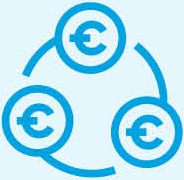 |  |  | ||||
€15.5bn | 5,100 | 57% | ||||
Total sourcing spend1 | Total suppliers | % supplier spend covered by commitment to sustainability | ||||
(Netherlands: 40% | EMEA (excl. NL): 40% North America: 13% | Asia:7%) | (Netherlands: 1,600 | EMEA (excl. NL): 750 North America: 1,350 | Asia: 1,400) | |||||
1 Reported for non-financial (GRI) reporting purposes | (2025 target: 80%) |
Why it matters | |
A responsible supply chain is essential to deliver the
systems and new technologies that can provide answers
to the challenges faced by society.
ASML’s business success is centered on long-term
relationships and close cooperation with our suppliers
and partners. The performance and resilience of our
entire supply chain are critical to our ability to respond to
customer demand. To be able to deal with the highly
cyclical nature of our industry, we need to work closely
together. Our customers’ trust is key – greater
transparency and collaboration earn trust and are crucial
to success. Under dynamic market circumstances which
present challenges in their own right, we need our
suppliers to follow suit. Building strong, strategic, ‘win-
win’ relationships with our partners, while navigating
short-term challenges, is essential to our future success.
We operate in a niche market characterized by the
production of high-value products in relatively small
quantities and involving thousands of specialized parts.
We also experience fast development cycles and
business volatility due to supply-demand mismatches
and a changing global economic and geopolitical
outlook. We must be able to source the products,
materials and services we need to meet our short- and
long-term needs and support our operations from the
earliest moment of development to the end-of-life stages
of our systems. Developing and introducing new systems
and system enhancements, such as EUV lithography and
e-beam metrology and inspection, requires considerable
investment and collaboration. To make sure this runs
smoothly, we need to involve our suppliers at the earliest
possible stage in the product generation process (PGP).
This also enables us to increase product performance
and ensure manufacturability and serviceability.
Building strong relationships with suppliers | ||
With around 5,100 suppliers in our total supplier base, we aim to develop and maintain strong, collaborative and transparent relationships. We distinguish between two types of suppliers: product-related and non- product-related. | ||
Product-related suppliers provide materials, equipment, parts and tools used directly to produce our systems. This category comprises approximately 800 suppliers and represents the highest percentage (69%) of our procurement volume. We define around 280 of these suppliers as ‘critical suppliers’, accounting for roughly 94% of the product-related spend. Critical suppliers are responsible for delivering a unique part and/or are single sourced, involve a switching time to an alternative supplier of more than 12 weeks, or supply parts with long production times. | ||
Non-product-related suppliers are goods and services suppliers, providing the products and services that support our operations, from temporary labor to logistics, and from cafeteria services to IT services. With around 4,300 suppliers, this group represents 84% of our total supplier base. | ||
ASML ANNUAL REPORT 2023 | SOCIAL CONTINUED | STRATEGIC REPORT | CORPORATE GOVERNANCE | FINANCIALS | 126 | |
Responsible supply chain | ||||||
We depend on our suppliers to help deliver our innovations. They are critical to our value chain and our ambition to be a sustainable leader in the semiconductor industry. | ||||||
How we’re managing our impact | |
We work with our world-class supplier network to ensure
our sustainability principles are upheld throughout the
value chain. To maximize what we can achieve, we
develop the next generation of technology through our
knowledge and innovation ecosystem.
We focus on adding value through system integration
and developing key performance requirements for our
supply base. We are stepping up to achieve our net zero
upstream emissions by collaborating with our suppliers
while integrating this in our operational general, quality,
logistics, technology, cost and sustainability (GQLTCS)
performance targets and capability requirements.
To drive a sustainable and resilient supply chain, we place
high importance on supplier performance management,
supply chain risk management and playing a full part in a
responsible supply chain. We require our suppliers to:
•Secure materials from their suppliers to respond to
customer demand
•Enable our product roadmap through the development
and maintenance of best-in-class supplier
competencies and capabilities to secure the most
advanced technology and quickest time to market
•Drive cost reductions, quality and capability improvements
through efficient and dedicated operations
•Build a sufficiently broad customer base and scale to
share and spread the risks of volatile market cycles
and to increase flexibility and cost competitiveness
•Collaborate with us to achieve our ambition of net zero
GHG emissions in our supply chain by 2030
We have reorganized our sourcing and supply chain
organization, which is now known as Sourcing &
Procurement (S&P), to get closer to our suppliers, better
understand their capabilities and work with them to build
and improve our shared opportunities. We are working to
focus the efforts of our S&P organization through clear
interfaces and ways of working with our suppliers and
other parts of ASML. These changes reflect our
commitment to strengthening partnerships and
optimizing efficiency within our supplier network, while
increasing focus on our ESG sustainability strategy. In
addition, our planning- and delivery-related activities have
now been brought together to create a new Planning &
Delivery (P&D) department. The overall goal of this
transformation is to strengthen customer and supplier
trust with reliable and transparent planning, bringing
demand and supply perspectives closer together.
Supplier performance management
We continue to improve our key business processes to
manage ASML’s growth and future ambitions. Tight risk
control and continuous supply chain improvements are
crucial to securing product quality, long-term business
continuity and sustainability.
We develop and monitor our supply landscape to help suppliers
meet our requirements with regard to GQLTCS. Our supplier
profiling methodology measures supplier performance,
supplier capability and risk profile in all of these fields.
In 2023, we updated our supplier performance
methodology by:
•Introducing an overarching General (G) element to
bring more focus on topics such as strategic
alignment, cultural fit, performance management, N-tier
management and continuous improvement in our
relationship with suppliers
•Upgrading the Sustainability (S) element to better reflect
our ambition to be a leader in this field and to continue
driving progress toward inclusive and sustainable
growth for all. This is in addition to the existing
Responsible Business Alliance (RBA) Self-Assessment
Questionnaire (SAQ) and measures the maturity of a
supplier’s ESG policy, vision and ambition. It also
assesses their capability to measure environmental and
social performance and if they have a roadmap in place
to meet ASML’s ESG ambitions related to the
reduction of CO2e emissions, increase of reuse,
reduction of waste and a responsible supply chain
We have a framework in place to communicate clear
process requirements and compliance expectations to
our suppliers. This framework outlines our approach to
supplier management and development toward the desired
ASML supplier landscape. It also provides an enhanced
knowledge base to improve our dialog with suppliers
around their performance and development potential.
Our suppliers have access to our senior account leaders
(SALs) or our strategic account teams (SATs), whose job
is to manage supplier relationships. We conduct regular
operational and performance review meetings to ensure
suppliers continue to improve their performance and
processes. When supplier performance drops below our
set thresholds and persistently fails to recover upon
request and within a reasonable time frame, our policy is
to take action to secure reliable future supplies.
A structural internal audit program, led by a skilled and
experienced audit team, enables us to assess supply
chain risks and identify areas of improvement to mitigate
or reduce those risks.
Supply chain risk management
Due to the highly specialized nature of many of our parts
and modules, as well as the low volumes, it is not always
economical to source from more than one supplier. In
many instances, our sourcing strategy prescribes ‘single
sourcing, dual competence’, which requires us to
proactively manage supplier performance and risk.
In our risk management framework, we assess six risk
domains – business continuity management, ownership,
finance, intellectual property ownership, information
security and cyber resilience, and compliance. Since
suppliers operating in the same industry or market are
typically exposed to similar risks, we evaluate suppliers’
risk and performance within the context of their supply
market category. We adjust our category strategies
where required to meet ASML’s short- and long-term
business needs. In cases where risk exceeds the agreed
threshold, mitigation measures are taken. For example,
we have long-term supplier agreements (LTSAs) and/or
continuous supply agreements in place and we ensure
the availability of intellectual property in escrow.
Read more in Risk - How we manage risk
We conduct robust performance and risk management
of our supply base to assure and improve performance
and prevent business disruption and reputational
damage. Two key programs are central to our approach:
the suppliers' business continuity program is aimed at
securing continuity of supply; and the information
security and cyber resilience program is intended to
protect our intellectual property, maintain our leading
technology position and secure continuity of supply.
ASML ANNUAL REPORT 2023 | SOCIAL CONTINUED | STRATEGIC REPORT | CORPORATE GOVERNANCE | FINANCIALS | 127 | |
Responsible supply chain (continued) | ||||||
Strengthening our due diligence
As part of our supply chain due diligence, we have
adopted the RBA Code of Conduct, which sets out
ethical, labor, health and safety and environmental
standards. We expect our suppliers and their suppliers to
acknowledge and comply with its requirements. This
requirement is included in our long-term product-related
suppliers’ contracts and in the Master Service Agreement
for non-product-related suppliers.
With almost 5,100 Tier 1 (direct) suppliers in our supplier
base, it is important for us to identify and prioritize suppliers
at risk. We apply a risk-based approach to determine which
suppliers are in scope for our more detailed due diligence
process, which consists of three layers:
1 | Determine inherent risk level by screening our full supplier base on ethics, labor, health and safety and environmental practices and management systems using the RBA Risk Assessment Platform |
2 | Apply supplier risk profiling to critical suppliers. For these suppliers we conduct risk assessment of GQLTCS capability elements |
3 | Apply an RBA SAQ to major product-related and non- product-related suppliers, labor agents and onsite service providers, in which we consider the type and geographical location of the supplier, as well as our leverage over them. We focus on our product-related suppliers, covering 80% of our product-related annual spend, business-critical suppliers including non- product-related suppliers, labor agents and on-site service providers, and suppliers deemed high risk from our annual RBA risk screening |
We expect suppliers in scope for these detailed
procedures to complete the RBA SAQ each year to
validate their compliance with the RBA Code of Conduct
and to determine any potential gaps in relation to its
standards. We review all RBA SAQ results, evaluate high-
risk findings (if any) and determine the severity of the
finding. It is our policy to discuss all high-risk findings
with the supplier to evaluate the risk and determine if an
improvement plan is needed.
We actively pursue sustainable development of our
supply chain to ensure Tier 1 suppliers and contractors
conduct their business in a caring and accountable
manner, and that they act as responsible business
partners. Our responsible supply chain programs focus
on RBA commitments and standards, strengthening our
due diligence and delivering our S&P ESG Program.
In 2023, we investigated how we can step up our due
diligence in line with and in preparation for CSRD – we
will expand due diligence activities on environmental and
social themes further in the supply chain also
incorporating N-tier suppliers.
Read more in ESG integrated governance - Business ethics and
We work with our world- class supplier network to ensure our sustainability principles are upheld throughout the value chain. |
Conflict minerals | ||||
Our products contain minerals and metals necessary to the functionality or production of our products. Such minerals and metals include tantalum, tungsten, tin and gold. These are 3TG minerals, or so-called ‘conflict minerals’. While we do not use a significant amount of these in the manufacturing of our products, certain 3TG minerals are necessary. Gold, for example, is used in coating critical electronic connectors and tin is used for welding electronic components and creating EUV light. We have a conflict minerals policy for responsible sourcing of materials in our supply chain. We support international efforts to ensure the mining and trading of 3TG minerals from high-risk locations does not contribute to conditions of armed conflict and/or serious human rights abuses. We have adopted a series of compliance measures based on the legal requirements and guidelines of the five-step framework set out by the OECD Due Diligence Guidance for Responsible Supply Chains of Minerals from Conflict-Affected and High-Risk Areas. As part of our responsible sourcing program, we implement a reasonable country of origin inquiry focusing on five areas: a robust management system; risk identification; risk mitigation; industry collaboration with the Responsible Minerals Initiative (RMI); and public reporting. Despite our continuous efforts, we are unable to determine the precise origin of the 3TG minerals included in all our products. | This is due to several reasons: 3TG supply chain complexity, the number of tiers of suppliers to trace the source and the limited number of certified conflict- free smelters for all conflict minerals. Obtaining correct data from our supply chain is a challenge, and we continue to encourage our suppliers to trace the origins of the 3TG minerals within their supply chain in accordance with applicable conflict minerals rules and regulations. We also request our suppliers to report smelters who are not listed or identified on the RMI smelters list to the Responsible Minerals Assurance Process (RMAP) audit for smelters. In 2022, we expanded the scope of our conflict minerals survey to global, reaching 319 suppliers in total, with no non-compliances being recorded. We received confirmation from 185 suppliers that their sourced minerals were conflict-free, while 67 suppliers confirmed there were no 3TGs in their product and 67 suppliers did not respond to the survey. | |||
Read more in our Conflict Minerals report available at asml.com | ||||
ASML ANNUAL REPORT 2023 | SOCIAL CONTINUED | STRATEGIC REPORT | CORPORATE GOVERNANCE | FINANCIALS | 128 | |
Responsible supply chain (continued) | ||||||
Our overall performance in 2023
Progress tracking | ||||||||||
Topic | Target 2025 | Performance indicator | 2021 | 2022 | 2023 | Status | ||||
Our supply chain | 80% | % supplier spend covered by commitment to sustainability (LOI) | n/a | 59% | 57% | n | ||||
 | 90% | RBA self-assessment completed (in %) | 89% | 93% | 90% | • | ||||
100% | Suppliers with high risk on sustainability elements evaluated and follow-up agreed (in %) | 100% | 100% | 98% | • | |||||
ASML ANNUAL REPORT 2023 | SOCIAL CONTINUED | STRATEGIC REPORT | CORPORATE GOVERNANCE | FINANCIALS | 129 | |
Responsible supply chain (continued) | ||||||
On track • Ongoing focus area n | ||||||
How we’re managing our impact | |
Through our S&P ESG program, we aim to increase
suppliers’ engagement with our ESG sustainability
strategy. By organizing knowledge-sharing sessions, we
share knowledge and expertise on scope 1, 2 and 3
GHG emissions. Engaging with our suppliers in a
transparent way helps us reach mutual understanding.
We are collaborating on sharing actual GHG emissions,
transitioning from spend-based to hybrid-based
environmental data and driving GHG emissions down.
We work with our suppliers to minimize adverse environmental and social impact in the supply chain. | |
The program focuses on helping suppliers engage with
our ESG ambitions around three key themes:
•Environmental (E) is related to energy efficiency, climate
action and circular economy. We work with our
suppliers toward net zero emissions by 2030,
maximizing reuse of materials and reducing waste.
•Social (S) focuses on creating and maintaining an
attractive workplace for all, a responsible value chain,
an efficient innovation ecosystem, and being a valued
partner in our communities.
•Governance (G) is related to integrated governance,
engaged stakeholders and transparent reporting. We
work together with internal stakeholders on internal and
external reporting.
We work with our suppliers to minimize adverse
environmental and social impact in the supply chain.
Read more in ESG at a glance
An important element in our S&P ESG program is the
‘Letter of Intent’ (LOI). By signing this letter, suppliers
agree to comply with a number of measures:
•To continue adhering to the latest version of the RBA
Code of Conduct
•To measure and share their CO2e emission data with
ecosystem partners
•To set ambitious targets to reduce CO2e emissions
•To collaborate with ASML and ecosystem partners to
remanufacture used system parts, tools, packaging
and other materials to maximize the reuse of materials
ASML ANNUAL REPORT 2023 | SOCIAL CONTINUED | STRATEGIC REPORT | CORPORATE GOVERNANCE | FINANCIALS | 130 | |
Responsible supply chain (continued) | ||||||
Managing supplier capabilities | ||||||
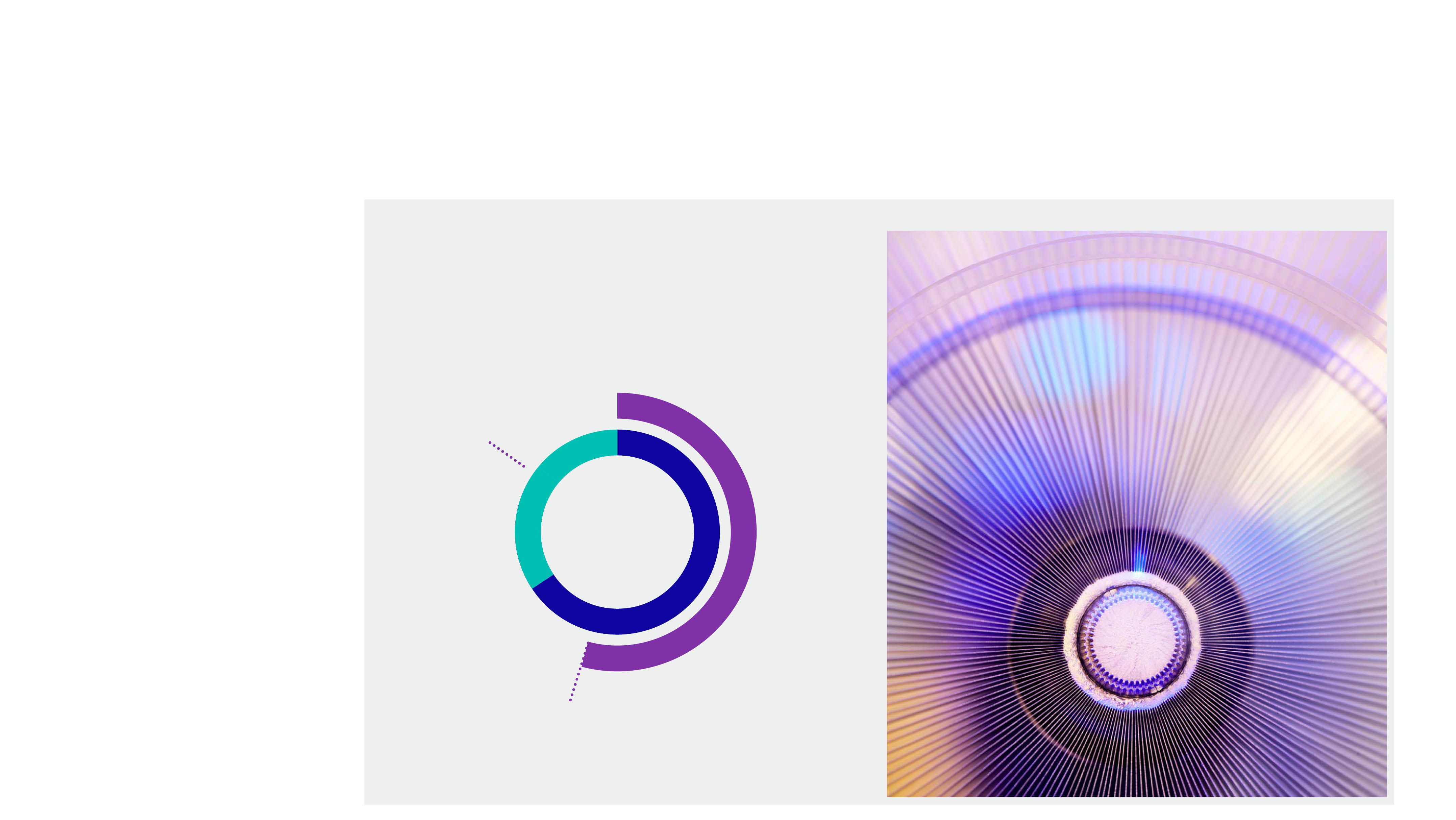
Our targets and performance in 2023 | |
We have three targets to drive a more sustainable supply
chain:
1 | To have 80% of our top 60 suppliers (based on spend) covered with a commitment to sustainability (via LOI or by providing us with their scope 1, 2 and 3 CO2e emissions data by 2025 | |
2 | For 90% of all suppliers in scope of the RBA self- assessment to have completed it by 2025 | |
3 | For 100% of our suppliers identified by the RBA self- assessment as having high-risk sustainability elements to be evaluated and follow-up action agreed by 2025 | |
We monitor targets and commitments monthly, tracking
progress and following up with the account lead and
supplier as needed.
Performance-driven scenarios | ||||||||
Total supplier base | ||||||||
€15.5bn | ||||||||
Total spend | ||||||||
% of total spend | ||||||||
800 Product-related suppliers | 69% | |||||||
4,300 Non-product-related suppliers | 31% | |||||||
2025 LOI target is 80% | ||||||||
suppliers | ||||||||
2023 | ||||||||
In 2023, 57% of the top 60 supplier spend was covered with the LOI commitment to sustainability | ||||||||
We apply due diligence screening to the total supplier base using the RBA Risk Assessment Platform. Suppliers in scope are determined by prior year total spend. | ||||||||
ASML ANNUAL REPORT 2023 | SOCIAL CONTINUED | STRATEGIC REPORT | CORPORATE GOVERNANCE | FINANCIALS | 131 | |
Responsible supply chain (continued) | ||||||
Managing supplier capabilities (continued) | ||||||
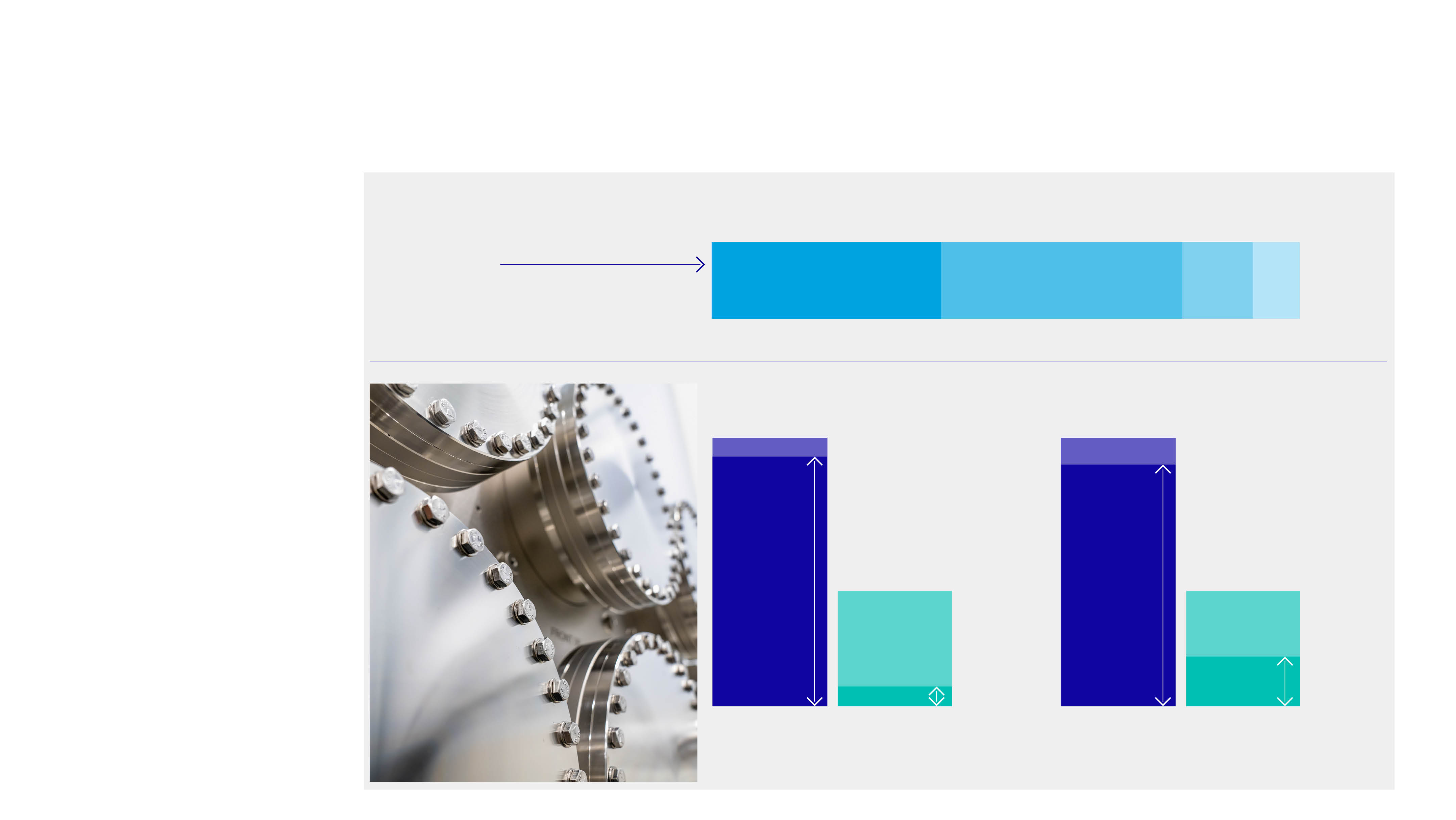
By year end 2023, 57% of the top 60 suppliers in scope (based
on spend) had signed the LOI, acknowledging their joint
responsibility and commitment to reducing the collective
environmental footprint – in particular, the CO2e emissions
contributing to our scope 3 reduction and waste contributing to
our reuse ambitions. This % is below our original target set for
2025 of 80%. In 2023, we focused on setting up the new
strategy and targets for the coming years, including drafting a
new version of the LOI focusing on obtaining the actual
commitment of suppliers to our net zero target. More than 35
suppliers had provided data on CO2e emissions, which
contributes to our goal of being able to use actual emission data
rather than estimation based on spend. Therefore, due to the
focus on getting a signed commitment from suppliers, less focus
has been put into driving progress on the current target.
We have asked a total of 128 suppliers to complete the
detailed RBA SAQ, which is an increase in scope of 69
suppliers from 2022, when 59 suppliers were asked to
complete. In general, the RBA SAQ results show a relatively
low risk level in our supply base, as most of our suppliers
operate in countries which we believe generally have a
strong rule of law. By the end of 2023, 90% of the suppliers
in scope had completed the RBA SAQ (93% in 2022).
The RBA process did indicate high risks on labor, health and
safety, environment or ethics standards for several suppliers.
Further assessment of identified high risks revealed that the risks
were related to a missing 'third-party' management system in
place. After follow-up discussions, we assessed the risk as low/
medium. ASML does not require suppliers to have a formal
environmental/labor management system in place. All suppliers
that were followed up were able to show that they have a policy/
procedure in place to ensure compliance with ethics, labor,
safety and environmental requirements. At year end, there was
one supplier with an overall high risk. Since the RBA assessment
was completed at the end of December, our investigation is
ongoing – follow-up questions have been asked and follow-up
actions will be agreed. More details can be found in the table
below for 2021-2023.
ASML suppliers |
5,100 | |
Suppliers | |
€15.5bn | |
Total spend |
Supplier base geographic split by percent spend | |||||||||
1,600 suppliers | 750 suppliers | 1,350 suppliers | 1,400 suppliers | ||||||
40% | 40% | 13% | 7% | ||||||
The Netherlands | EMEA (excl. the Netherlands) | North America | Asia | ||||||
Supplier risk profiles, created for business-critical, strategically important suppliers* | ||||||
€10.6bn | ||||||
249 suppliers represent 94% of this spend | ||||||
€4.9bn | ||||||
29 suppliers represent 19% of this spend | ||||||
Product-related spend | Non-product-related spend | |||||
1 Major suppliers are those that account for 80% of PR spend and any business-critical NPR suppliers. Suppliers in scope are determined by prior year total spend. |
The Responsible Business Alliance (RBA) self-assessment questionnaire completed by major suppliers1 | ||||||
€10.6bn | ||||||
71 suppliers represent 90% of this spend | ||||||
€4.9bn | ||||||
57 suppliers represent 42% of this spend | ||||||
Product-related spend | Non-product-related spend | |||||
ASML ANNUAL REPORT 2023 | SOCIAL CONTINUED | STRATEGIC REPORT | CORPORATE GOVERNANCE | FINANCIALS | 132 | |
Responsible supply chain (continued) | ||||||
Managing supplier capabilities (continued) | ||||||
Number of high risks identified from RBA SAQ | |||||
Standard | RBA commitment | 2021 | 2022 | 20231 | Main findings 2023 |
Labor | To uphold the human rights of all workers (direct and indirect), and to treat them with dignity and respect as understood by the international community, including the International Labour Organization’s (ILO) eight fundamental conventions | 0 | 0 | 0 | |
Health and safety | To minimize the incidence of work-related injury and illness and to ensure a safe and healthy working environment. Communication and education are essential to identifying and solving health and safety issues in the workplace | 0 | 1 | 1 | Related to one supplier that is missing a Health and Safety and Environmental policy and missing guidelines/ Code of Conduct related to Health and Safety towards their suppliers. |
Environment | Environmental responsibility is integral to producing world-class products and services. Adverse effects on the community, environment and natural resources are to be minimized while safeguarding the health and safety of the public | 0 | 3 | 1 | Related to one supplier that is missing a Health and Safety and Environmental policy and missing guidelines/ Code of Conduct related to Health and Safety towards their suppliers. |
Ethics | To meet social responsibilities and to achieve success in the industry, the highest standards of ethics should be upheld, including but not limited to business integrity, anti-bribery and corruption, antitrust and competition, protecting privacy | 0 | 1 | 0 | |
Members and participants are committed to establishing a management system to ensure: | |||||
•Compliance with applicable laws, regulations and customer requirements •Conformance with the code standards •Identification and mitigation of operational risks •Facilitation of continuous improvement | |||||
1. A total of 128 suppliers were asked to complete the detailed RBA SAQ, which is an increase of 69 suppliers from 2022, when 59 suppliers were asked to complete.
ASML ANNUAL REPORT 2023 | SOCIAL CONTINUED | STRATEGIC REPORT | CORPORATE GOVERNANCE | FINANCIALS | 133 | |
Responsible supply chain (continued) | ||||||
Managing supplier capabilities (continued) | ||||||
Our actions in 2023 | |
Reduction of CO2e emissions and waste
In 2021, we started collecting supplier data to create our
baseline and understand suppliers’ ability to report scope
1, 2 and 3 GHG emissions data. In 2022, we extended
the supplier environmental survey to understand whether
suppliers have an ESG roadmap and/or strategy in place,
their ambitions, and their scope 1, 2 and 3 data. This
process continued in 2023, with data quality improved by
tracking historical data next to data reported in 2022. We
also introduced an IT solution for suppliers to help
capture their GHG emissions data and monitor their
progression via a dashboard.
We work closely with the sourcing account teams (SATs)
and our senior account leaders (SALs) to connect with
key suppliers to understand and align their ESG
sustainability ambitions and data. In addition, our SATs
and SALs drive supplier commitment on our 2030 net
zero ambition and collaborate with our suppliers to
create and implement roadmaps.
We are defining and implementing environmental KPIs
that support us in monitoring whether our suppliers are
reducing their emissions.
Read more in Environmental - Energy efficiency and climate
Business continuity program
In 2023, we included 251 business-critical product-
related suppliers in the business continuity program and,
in addition, extended the scope with HMI suppliers and
Cymer suppliers to ensure global risk management
coverage.
We strengthened the requirements towards our suppliers.
We now require them to have an organization resilient to
possible disruptions caused by internal and external threats,
physical or natural circumstances by:
•Building organizational resilience with the capability to
respond effectively, safeguarding ASML's and its
customers’ interests, reputation, brand and value-
creating activities.
•Ensuring the protection of buildings, equipment and
other assets, reputation, critical business functions,
processes and resources.
•Ensuring implementation and continuous improvement
of a business continuity management system and the
related business continuity processes in the
organization and ASML’s supply chain.
Information security and cyber resilience program
We continued to expand our information security and
cyber resilience program in 2023, leading to a current
scope of 345 suppliers compared with 314 in 2022.
Additionally, we utilize a cyber-risk monitoring tool to
monitor the internet presence of suppliers – in 2023, we
extended its scope from 256 to 469 suppliers.
Suppliers with access to top-secret information or with
privileged access to our IT systems were asked to
improve their cyber resilience through the ISO 27001
standard. To support our suppliers and other ecosystem
partners in this effort, we established a Security Circle of
Trust together with Cyber Weerbaarheid (resilience)
Brainport in the Netherlands.
Engaging with suppliers
We held a number of engagement sessions with key
suppliers during the year, including a Supplier
Collaboration Day in June and a Suppliers’ Day in
October. During the Suppliers' Day, ASML leaders and
suppliers spoke openly about how to grow together, how
to plan for success and how to overcome challenges by
improving partnerships, increasing transparency and
trust, shortening feedback loops and embracing
sustainability. The panel discussion centered on supplier
collaboration efforts, the lessons learned and best
practice sharing. ASML leaders and suppliers agreed on
the importance of highlighting and learning from areas of
collaborative success. They concluded that this can only
be achieved by being transparent, listening and
developing mutual trust.
We also held brainstorming sessions with suppliers
specifically to share knowledge about our ESG sustainability
program, including information on CO2e emissions data, and
to identify areas to collaborate. These sessions enable active
engagement and mutual learning with our suppliers. We ask
suppliers to let us know their challenges when collecting
CO2e emissions data, and we discuss possible solutions.
Suppliers have indicated that these brainstorming sessions
are highly beneficial and contribute to best practice sharing
and the ability to tackle joint problems together.
Our experience during 2023 once again underlined the
importance of the S&P ESG sustainability program,
which encourages active engagement with suppliers on
ESG-related topics, GHG emissions, RBA and conflict
minerals.
Looking ahead | |
One of our key focuses for 2024 is to further build on the
supplier GHG emissions baseline and to understand our
suppliers’ ambitions, capabilities and performance. We
will assess suppliers against the S block of our supplier
profile and actively follow up on gaps.
Previous years have shown there is a mix of supplier
maturity in terms of reporting scope 1, 2 and 3 data, with
spend-based emissions sometimes overestimated
compared to actual emissions data. Gathering scope 3
supplier data will take more time due to the complexities
and challenges around visibility of emissions in suppliers’
own supply chains.
We built the S&P ESG roadmap and strategy during
2023, with an initial focus on our internal stakeholders
and the roll-out to suppliers taking place in the second
half of the year. We are working on targets to drive
sustainability improvements in our supply chain, and we
expect these to be formalized in 2024.
With respect to the S of the ESG program, we will
execute on the expanded due diligence process and use
these learnings and findings to further update our
procurement policies. We will actively follow up on
identified high risks.
Upcoming trends that we expect to support this work
include CSRD requirements and other directives that will
compel companies to transparently disclose their ESG
performance data.
In 2023, we identified our impact on people’s well-being,
health, safety and human rights through the use of
technology in all kinds of applications that affect quality of
life as a new material topic, the strategy for which will be
further developed in 2024.
ASML ANNUAL REPORT 2023 | SOCIAL CONTINUED | STRATEGIC REPORT | CORPORATE GOVERNANCE | FINANCIALS | 134 | |
Responsible supply chain (continued) | ||||||
Managing supplier capabilities (continued) | ||||||

The interaction among supply chain partners helps us all improve to support faster growth.” | ||
Manon Hendriks | ||
Senior Director, Sourcing & Procurement | ||
16 years at ASML | ||
Working together, growing together | |
In 2023, after 15 years in finance at ASML, Manon Hendriks stepped into a new commercial role as Senior Director Sourcing & Procurement. The experience in building relationships that she developed in her finance career is now not only underpinning the success of ASML, but also of one of our key suppliers. |
ASML ANNUAL REPORT 2023 | SMALL PATTERNS. BIG IMPACT. | STRATEGIC REPORT | CORPORATE GOVERNANCE | FINANCIALS | 135 |
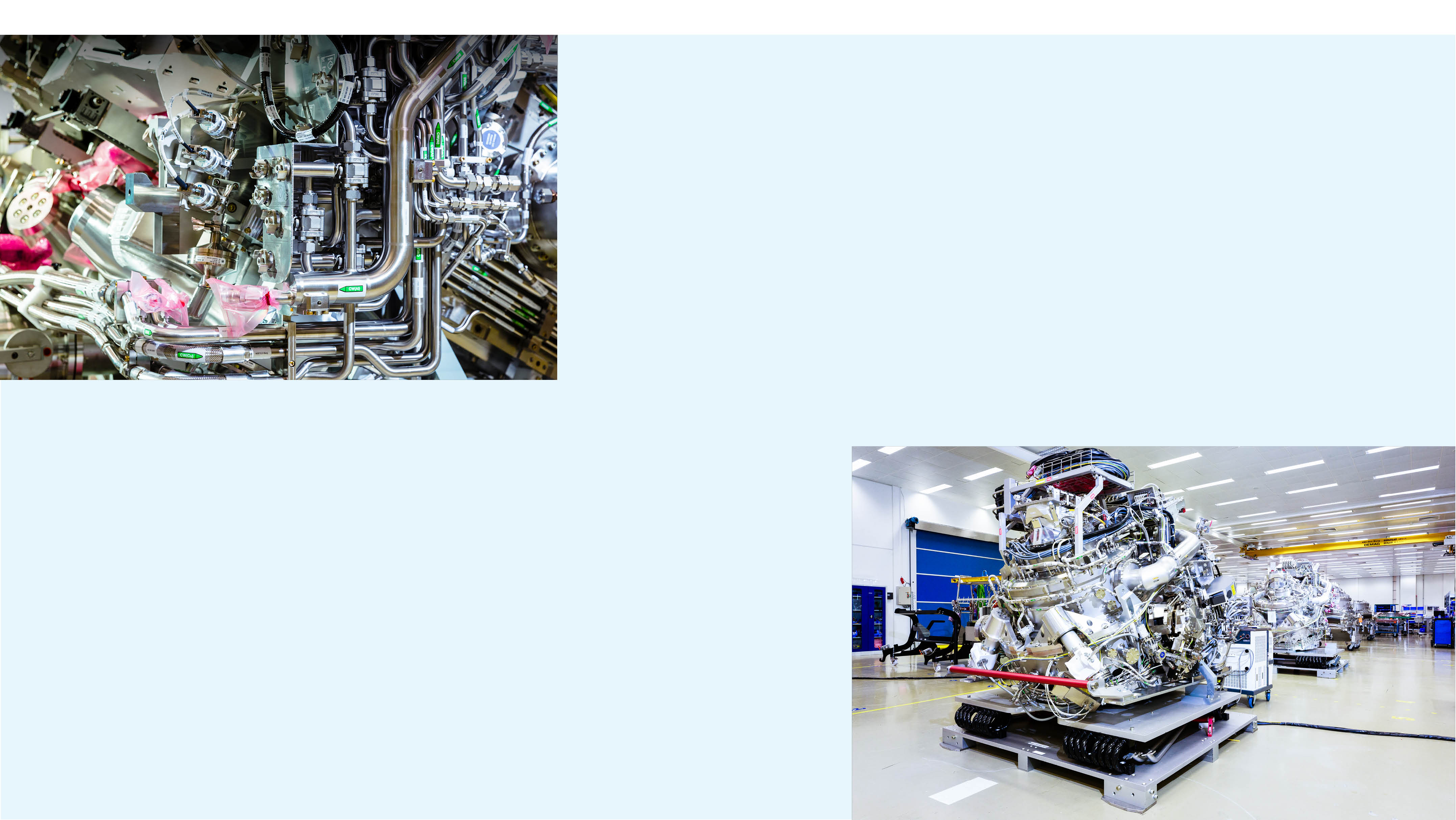
Making the move
I started my career as a certified public
accountant (CPA) in a 'big four' accountancy
firm, focusing on auditing. I loved the job and
the interaction with people – I learned a lot
about building relationships outside my own
organization. But after six years and a move
into management, I felt I was losing that day-
to-day interaction and wanted a new way to
add more value.
So I decided to ‘switch sides’, and someone
suggested ASML. An ex-colleague already
worked here and told me it was an energetic
company where you get more out of your
job, with opportunities to grow and change
your role. I decided to go for it and have
never regretted that decision.
Steering your own career path
That description of ASML turned out to be
true. I’ve always felt that, if you show the
capability and desire, the opportunities are
there. And in 16 years at ASML, I have had a
variety of roles – in finance and beyond.
Once, I asked about moving into business
control. My manager said she had a role for
me in business, but it wasn’t in business
control. Instead, she suggested I manage a
program that was setting up a new
enterprise structure. This was a long way
outside my comfort zone: I knew all about
the processes, transactions and accounting
flows involved, but had no experience in
change management. However, if you have a
good team around you and can find the right
people with the right skills, you will be
successful.
II learned so much in that role. And I took it
with me when, after three years, I moved
back into finance – this time in business
control, first in manufacturing and then in
sourcing and procurement. In this latest role,
I found my energy came mostly from
connecting people – between sectors within
ASML, but also with our suppliers. So the
question was: how could I bring more of that
to my work?
A role in procurement was the answer. This
was an even bigger step outside my comfort
zone than program management. But I knew
I had the trust of my management and the
network within ASML to ensure I had the
right team supporting me.
A new direction
As of this year, I am responsible for ASML’s
relationship with one of our largest suppliers:
VDL. ASML doesn’t really have a traditional
supply chain – we have a supply network.
About 80% of our cost base comes from our
suppliers, as our main role is as system
integrator. This means suppliers could be
supplying us directly while also supplying
each other, and even receiving components
from us to integrate into their modules before
shipping them back to us.
Technology is at the heart of this network:
we need our suppliers to innovate with us so
that, together, we can make the impossible
possible. My role is less about commercial
negotiations and more about building
relationships to drive joint improvements.
Suppliers such as VDL interact with many
people at many levels of ASML – on
everything from day-to-day engineering
issues to strategic roadmaps. There can be
20 or more ASML people working with VDL
on a specific solution. The challenge for us –
and particularly me – is to ensure we speak
with one voice.
I think my background gives me a different
perspective, one that complements the skills
of my colleagues. Finance is about connecting
facts and figures, but also building bridges
between sectors and thinking issues through
from all angles. We work with our key suppliers
at many levels in true partnerships. How you
set up and govern those relationships is vital.
But you can’t be bureaucratic or dogmatic.
We work with suppliers like VDL because
they are world leaders in their manufacturing
technology, but they are different to us. Now
we want to build a partnership that gets the
best out of both of us, because we are more
successful together.
ASML ANNUAL REPORT 2023 | SMALL PATTERNS. BIG IMPACT. CONTINUED | STRATEGIC REPORT | CORPORATE GOVERNANCE | FINANCIALS | 136 | |
 | 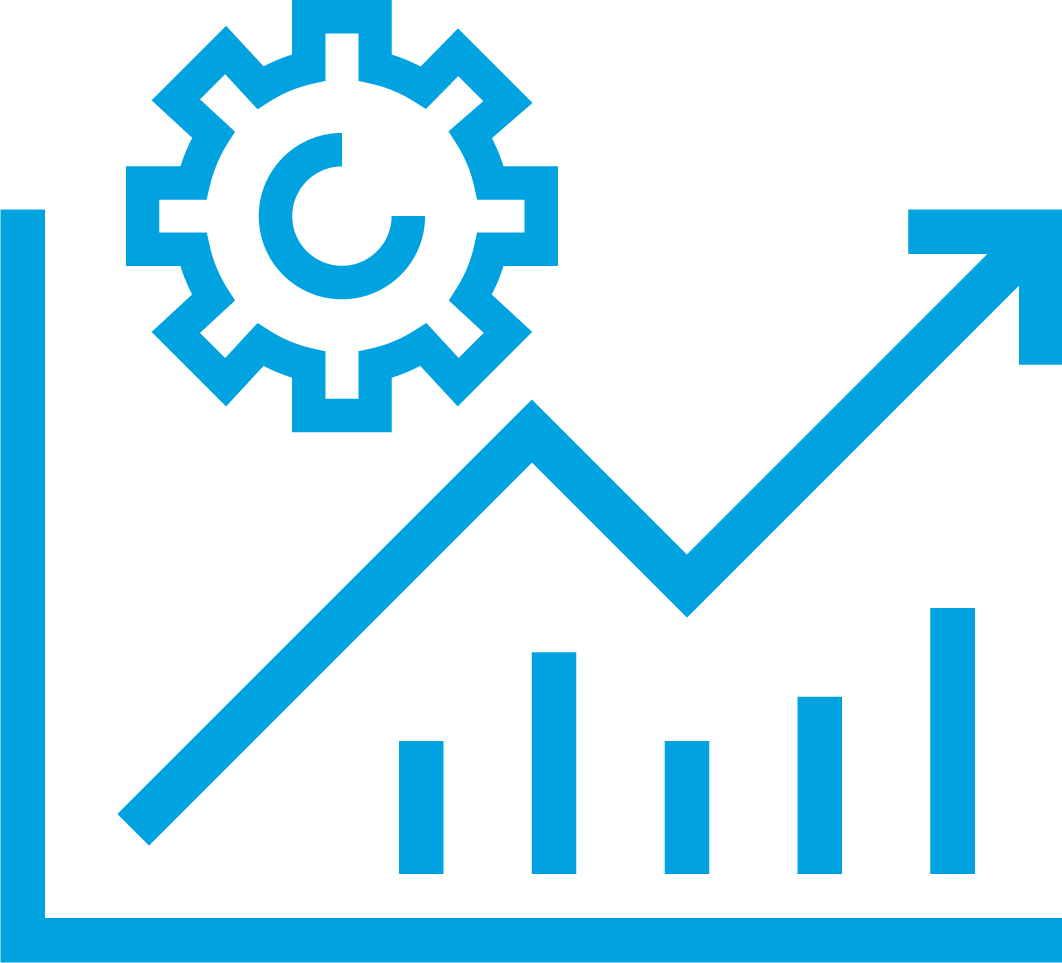 |  |  | |||||
€4.0bn | 102% | €16.4m | €1.2m | |||||
R&D investments | R&D spend as % growth from 2019 base year | Contribution to EU research projects | Value startups and scaleups in-kind support | |||||
(2025 target: >4bn euro) | (2025 target: >100%) |
Why it matters | |
Our experts at ASML are architects and integrators who
work together and in collaboration with external partners
across the innovation ecosystem to push the boundaries
of what we can achieve. We aim to develop long-term
innovation partnerships and collaborations based on
trust and knowledge-sharing across this ecosystem.
Pooling our expertise and resources enables us to build a
stronger knowledge network and create new
technological solutions that benefit the whole of society.
This approach also allows the sharing of risks and
rewards to accelerate innovation.
How we’re managing our impact | |
Our innovation approach drives the development of
technology solutions that society can tap into, while
educating and inspiring the next generation of engineers.
We fuel the innovation pipeline by collaborating closely
with academia and leading research institutes. We also
foster collaboration with R&D partners through European
public–private partnerships.
We also contribute to the development of a sustainable
innovation ecosystem by supporting regional deep-tech
scaleups and startups selected for their ambition to
contribute to a better, more sustainable world. Sharing
our knowledge and expertise strengthens our regional
high-tech ecosystem, particularly around our
headquarters in Veldhoven, the Netherlands. The
Brainport Eindhoven region has a competitive edge
globally, and we aim to maintain this leadership position.
Building a strong regional foundation benefits ASML and
its partners along with other companies and
organizations. It also helps to attract a broad base of
talent to the region.
ASML ANNUAL REPORT 2023 | SOCIAL CONTINUED | STRATEGIC REPORT | CORPORATE GOVERNANCE | FINANCIALS | 137 | |
Innovation ecosystem | ||||||
We never innovate in isolation because developing technology in collaboration with partners across the innovation ecosystem maximizes our collective impact. | ||||||
Our overall performance in 2023
Progress tracking | ||||||||||
Topic | Target 2025 | Performance indicator | 2021 | 2022 | 2023 | Status | ||||
Innovation ecosystem | >4bn euro | R&D investments | €2.5bn | €3.3bn | €4.0bn | • | ||||
>100% | R&D spend as % growth from 2019 base year | 25% | 63% | 102% | • | |||||
 | >20% | Startups reached Star level from total startups (in %) | 15% | 12% | 12% | n | ||||
14 | Number of scaleup companies supported (cumulative in numbers) | 7 | 10 | 13 | • | |||||
ASML ANNUAL REPORT 2023 | SOCIAL CONTINUED | STRATEGIC REPORT | CORPORATE GOVERNANCE | FINANCIALS | 138 | |
Innovation ecosystem (continued) | ||||||
On track • Ongoing focus area n | ||||||
How we’re managing our impact | |
To enable the semiconductor industry to move toward
next-generation technology, we collaborate with
universities, research and technology institutes and other
high-tech companies with a total of 70 different partners
spanning 12 European countries.
Public–private partnerships
We work closely with private partners to develop and
deliver research and innovation projects that are
subsidized by the EU and its member states.
Collaborative subsidy projects are aimed at advancing
integrated circuit (IC) technology for the semiconductor
industry while following Moore's Law, with a continuous
drive to improve performance and energy efficiency. The
Horizon Europe program and recently adopted European
Chips Act facilitate collaboration and strengthen the
impact of research and innovation in the EU.
ASML and its partners play an important role in giving
Europe a degree of sovereignty by driving and
accelerating fundamental research and ground-breaking
innovation within Europe, the Middle East and Africa
(EMEA). This collaboration generates significant business
value, fuels job creation and creates a strong knowledge
base. Its success is demonstrated by the increasing
number of patent requests each year from ASML and our
partners.
Partnerships with academia and research institutes
We co-develop technical expertise with a wide network of
technology partners including universities and research
institutions. Key partners include imec in Belgium, the
technical universities in Twente, Delft and Eindhoven in
the Netherlands, and research organization TNO and the
Advanced Research Center for Nanolithography
(ARCNL), also in the Netherlands.
Our targets and performance in 2023 | |
Our R&D partnerships are underpinned by targets to drive
investments and outcomes:
1 | Reach more than €4 billion R&D investments by 2025 | |
2 | Grow R&D spend over 100% from 2019 base year | |
Our R&D investments in 2023 amounted to €4.0 billion,
equivalent to a 102% increase on the 2019 investment
level and up from €3.3 billion in 2022.
Our contribution in R&D across the four active public–
private partnerships in 2023 was €16.4 million. The total
value of our investment for the full three-year duration of
these projects is €66.5 million, with a total project size of
€402.1 million.
Pushing the boundaries of physics and chemistry | ||||||
We continue to strengthen our collaboration with ARCNL, which conducts fundamental research focused on the physics and chemistry that are important in current and future technologies within nanolithography, and its application within the semiconductor industry. In recent years, we have established a unique collaboration model in which scientists from ARCNL can explore the research questions they would like to focus on and, at the same time, create value for ASML. Our joint interest in the areas of EUV source, metrology and materials is well established and our work is yielding results. Examples include new insights into optimal drive laser wavelengths for EUV plasma generation, interferometric metrology techniques for improved wafer analysis and detailed understanding of tribology for wear-resistant coatings on wafer tables. Experimental data with higher resolution provided by ARCNL in non- product-like configurations with higher optical NA yields new insights and influences design and model development of the next generation of scanners. In 2023, the fundamental understanding of the future challenges connected to the relentless enabling of Moore’s Law led to new joint projects in the areas of new light sources for lithography and metrology, and growth and patterning of 2D materials for semiconductor applications. In particular, it led to a better understanding of the interaction of plasma with surfaces, and of corrosion effects, giving new insights in coating designs of wafer tables. | 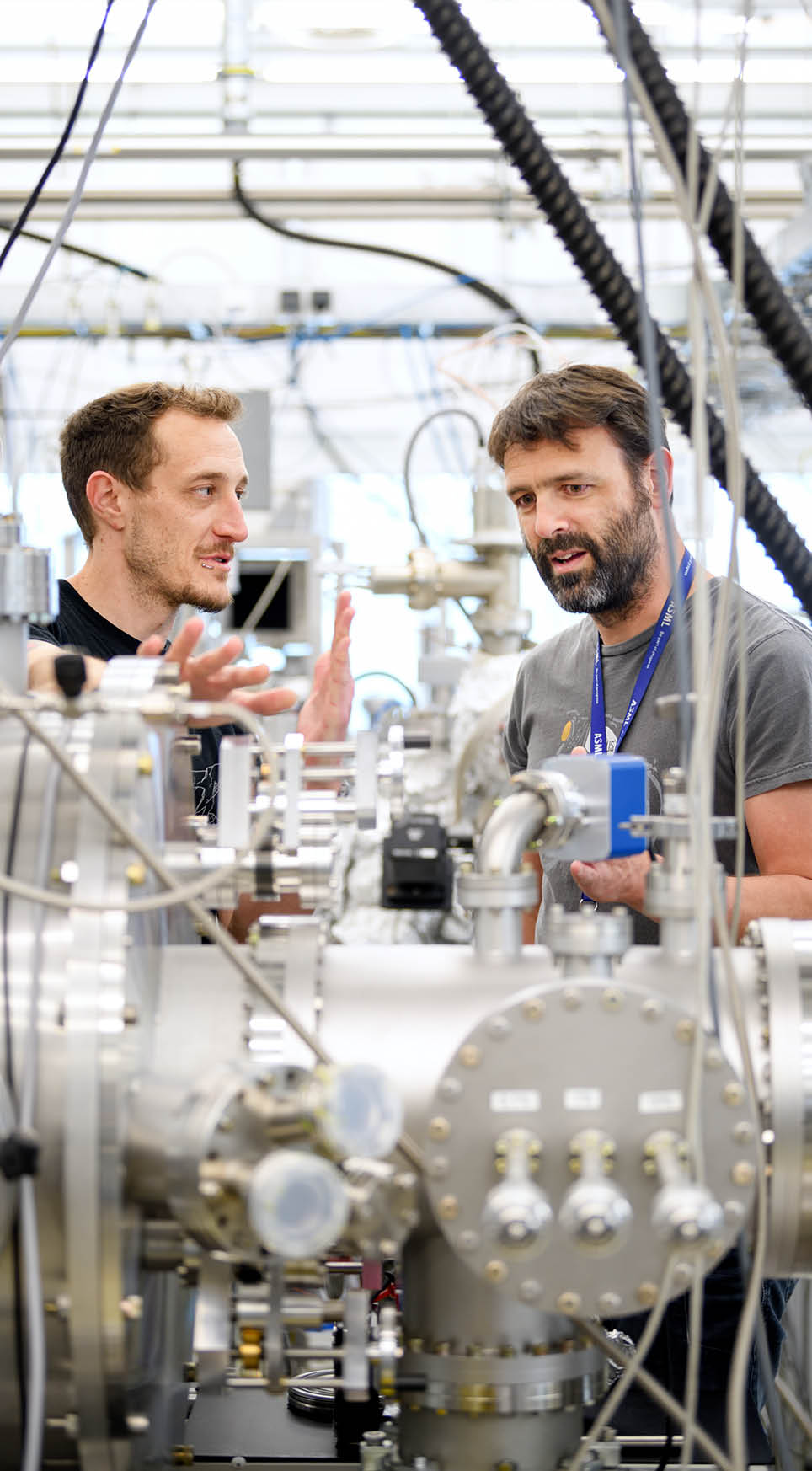 | |||||
ASML ANNUAL REPORT 2023 | SOCIAL CONTINUED | STRATEGIC REPORT | CORPORATE GOVERNANCE | FINANCIALS | 139 | |
Innovation ecosystem (continued) | ||||||
Partnerships for research and development | ||||||
Developing the next generation of lithography technology | ||||
Our longstanding and extensive technical collaboration with imec aims to identify and mitigate challenges in introducing High NA EUV for our customers. These include choices of resist and their stochastic (randomly variable) effects, reticle absorber materials and the necessary metrology and inspection tools to examine the quality of the printed features on a chip. As an indication of the impact of our collaboration, more than 30% of the oral paper presentations we submitted to the 2023 international society for optics and photonics (SPIE) Advanced Lithography and Patterning conference (SPIE ALP 2023) were derived from our collaboration with imec. Using 0.33 NA EUV systems, imec and ASML have had an intense technical collaboration to prepare for the introduction of High NA lithography (see Phase 1 in the infographic on the right). The collaboration identified the critical device layers on a customer's roadmap most in need of the introduction of High NA. Studies were undertaken to understand and mitigate High NA scanner-related foreseen challenges, for example through studies on depth of focus and field stitching. Parallel studies addressed the ecosystem challenges, such as choices of resist and their stochastic effects, reticle absorber materials, and required massive metrology. Phase 2 started in 2022 by creating the infrastructure of the joint High NA Lab using the first High NA EUV scanner (TWINSCAN EXE:5000). Metrology equipment and wafer processing equipment were installed and logistical wafer flow was tested. In addition, the IT infrastructure to enable imec, ASML and volume- manufacturing customers to use the lab while protecting their respective IP and data was implemented. The EU has provided approval for the state aid requested by ASML for the continuation of the High NA collaboration with imec. | In June 2023, we strengthened the collaboration by agreeing a Memorandum of Understanding with imec. Together, we aim to develop (see Phase 3 in the infographic on the right) a state-of- the-art High NA EUV lithography pilot line at imec in Leuven (TWINSCAN EXE:5200). In addition to these activities, collaboration with imec is ongoing on edge placement error (EPE) measurements and control, supporting the fundamental developments of new metrology concepts, 3D advanced packaging, and micro-electromechanical systems (MEMS) technology. In general, imec’s input on the device roadmap has become an integral part of the ASML roadmap process. Our intensified collaboration is in line with the ambitions and plans of the European Commission and its member states (e.g., European Chips Act, Important Projects of Common European Interest – IPCEI) in order to strengthen innovation to tackle societal challenges. Part of the collaboration between imec and ASML is therefore captured in an IPCEI proposal which is currently under review by the Dutch government. | 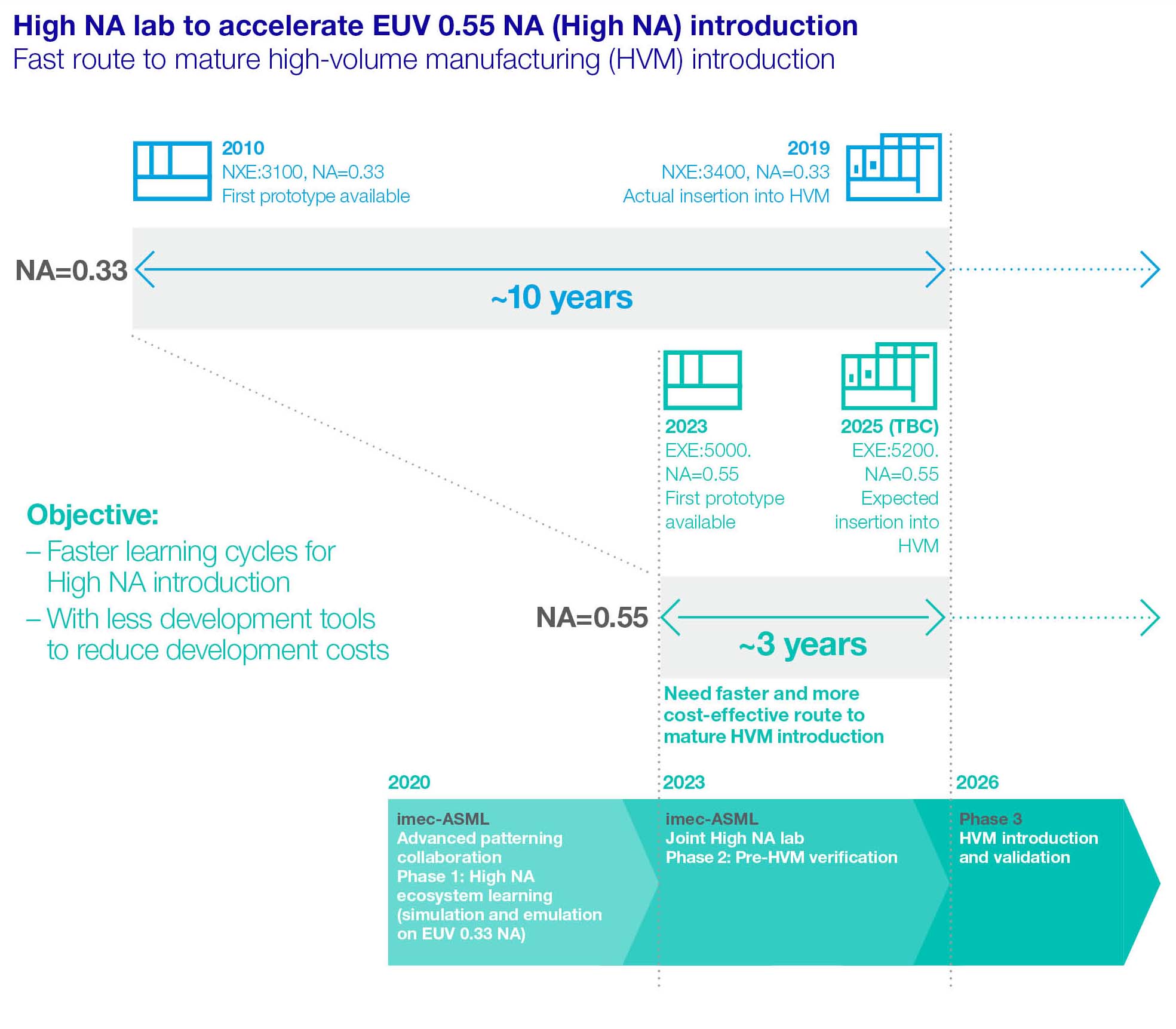 | ||
ASML ANNUAL REPORT 2023 | SOCIAL CONTINUED | STRATEGIC REPORT | CORPORATE GOVERNANCE | FINANCIALS | 140 | |
Innovation ecosystem (continued) | ||||||
Partnerships for research and development (continued) | ||||||
Our actions in 2023 | |
Public-private partnerships
In 2023, we continued coordinating efforts in four EU
projects – Pilot Integration of 3nm Semiconductor
technology (PIN3S), IC Technology for the 2nm Node
(IT2), Integration of processes and modules for the 2nm
node meeting Power Performance Area and Cost
requirements (ID2PPAC), and 14 Anstrom CMOS IC
technology (14ACMOS) – all with a duration of three
years. We have enabled timely reporting to the
connected public partners and have organized face-to-
face and online consortium meetings to exchange ideas
and knowledge. The PIN3S project was successfully
closed in July 2023, during a face-to-face final project
review meeting. This took place at the premises of NOVA
Israel, one of the beneficiaries of the project, and involved
independent experts from the industry hired by the
European Commission, who evaluated the results of the
project. There also have been observers representing the
German and Belgian national authorities.
During the year we also commenced a new project –
14AMI. This project was submitted at the second call of
Key Digital Technologies Joint Undertaking (KDT JU).
This three-year project focuses on module integration for
the manufacture of 14 angstrom (1.4 nm) CMOS chips. A
consortium has been formed that covers four key areas
needed in IC technology development for manufacture –
lithography, metrology, mask infrastructure and process
technology.
The 14AMI project brings together the R&D capabilities
of 31 leading expert partners to tackle these challenges.
It is valued at more than €108 million in R&D costs and
unlocks at least €47 million in public funding for the
ecosystem. In terms of geography, the project connects
people from Romania, Belgium, France, Germany,
Austria, Israel, Switzerland and the Netherlands.
In addition, ASML participates in the KDT JU project
SC4EU, led by Infineon Technologies AG in Germany.
This project was submitted in response to the special
topic call of KDT JU in 2023 on improving the global
demand supply forecast of the semiconductor supply
chain. The project connects various semiconductor
players across Europe and involves partners from
Germany, Greece, France, Austria and the Netherlands.
Looking ahead | |
Investing in future talent
Universities, industries and governments must
collaborate more closely in Europe to invest in a
collaborative knowledge network to drive innovation, and
ASML is investing heavily in broad academic
collaboration with major universities in Europe. For
example, our collaboration with Eindhoven University of
Technology (TU/e) is scaling up our already proven,
longstanding relationship by bringing together the best in
science and engineering talent in the Brainport
Eindhoven region.
In April 2023, TU/e and ASML signed a Memorandum of
Understanding to jointly develop a 10-year strategic
research roadmap in the fields of plasma physics, AI,
mechatronics and semiconductor lithography. TU/e and
ASML will invest substantially and equally in the joint
program, which will create up to 40 PhD positions every
year, for which TU/e will recruit internationally renowned
top scientific talents. We will supply our top engineers as
hybrid teachers and will increase the number of
internships we host.
TU/e and ASML are in discussion to create a new ASML
research facility on the TU/e campus, where we intend to
co-locate the many competences of our research team.
The facility will have shared workspaces, meeting rooms,
research labs and a state-of-the-art cleanroom facility.
An open-access research laboratory will make analytical
and production equipment available to TU/e and other
research centers and industrial partners. This
collaborative space will enable growth and synergy
across academic research fields of mutual interest, such
as photonics, quantum computing, nanomaterials and
chip manufacturing.
ASML ANNUAL REPORT 2023 | SOCIAL CONTINUED | STRATEGIC REPORT | CORPORATE GOVERNANCE | FINANCIALS | 141 | |
Innovation ecosystem (continued) | ||||||
Partnerships for research and development (continued) | ||||||
How we’re managing our impact | |
We support startups and scaleups with the ambition to
contribute to a better, more sustainable world by
addressing the UN’s SDGs, by providing both monetary
and non-monetary contributions. We participate in
startup and scaleup support platforms – such as
HighTechXL and Make Next Platform – to build and
accelerate impactful startups by combining high-tech
entrepreneurial talent and relevant technologies. Via
these platforms, we use our unique knowledge and
expertise to address the business and technical
questions of existing startups and scaleups.
We also match our experienced employees with startups
and scaleups. This increases our impact and benefits the
personal development of employees by enabling them to
work in a multidisciplinary environment with greater
responsibility and exposure to the full value chain.
Finally, we participate in venture capital funds that offer
funding to startups in their early phase – such as
DeepTechXL. It's typically difficult for deep-tech startups
to obtain funding in an early phase because of the
complexity of the technology, longer development times
and typically larger development costs.
Strategic support platforms for startups and scaleups | ||||
We invest in three strategic platforms providing startup and scaleup companies with access to highly qualified resources, technologies, licenses, supply chain partners and co-investors. Make Next Platform ASML founded the Make Next Platform (MNP) in 2016 together with Huisman, Vanderlande and the non-profit Stichting Technology Rating (STR) to support young innovative high-tech scaleups. Thales NL joined as a co-founder in 2019. MNP supports emerging high-tech ventures that have moved beyond the startup phase and are ready to expand. Through the exchange of best practices, business experience and coaching from senior corporate experts, MNP partners support scaleup companies to become global players by giving them access to their internal and external networks. | HighTechXL ASML is one of the main shareholders of HighTechXL, together with other tech-minded partners such as Philips, research institute TNO, Brabantse Ontwikkelings Maatschappij (BOM) and High Tech Campus Eindhoven. Through HighTechXL, we build and accelerate impactful startups by combining high- tech entrepreneurial talent and relevant technologies from reputable tech partners such as ESA, CERN, Fraunhofer, imec and TNO, with the goal of solving major global societal challenges. ASML talents join selected startups for 30% of their time for a period of three months. They define their learning goals and benefit from the development of enriched skills and mindsets through this unique entrepreneurial experience. DeepTechXL In 2022, we became a strategic investor and co- initiator in DeepTechXL Fund I, a new Dutch deep- tech fund of €85 million as a follow-up to HighTechXL. Together with other strategic investors and co- initiators – Philips, Brabantse Ontwikkelings Maatschappij (BOM), research institute TNO, PME Pension Fund and Invest-NL – the fund provides deep-tech startups and scaleups with access to knowledge, network, technology, licenses and business development support. | |||
Our targets and performance in 2023 | |
We have two targets to measure the effectiveness of our
approach:
1 | More than 20% of startups to reach Star level by 2025 | |
2 | Support (at least) 14 scaleup companies by 2025 | |
In 2023, we continued our commitment to support high-
tech startups and scaleups, providing 4,640 hours of in-
kind support, totaling €1.2 million. In addition to last
year's commitment of over €14 million, we committed an
additional €6 million in financial support in 2023. Of this
€20 million commitment, €2.9 million was paid out during
the year. 12% of startups reached Star level. So far, 13
scaleups have been adopted, including three in 2023.
with focus areas ranging from packaging waste reduction
to 3D display enabling technology, for example for
medical applications.
The target of 20% of startups to achieve Star level by
2025 is not on track to be achieved. This target was first
set when HighTechXL was still a traditional startup
accelerator, but since it was transformed into a venture-
building program, we have seen that it generally takes
longer for these newly established startups to mature.
Additionally, the focus is now on deep tech, which
typically requires a longer time to develop. This year we
have been in discussions to define new targets which
reflect this program change.
ASML ANNUAL REPORT 2023 | SOCIAL CONTINUED | STRATEGIC REPORT | CORPORATE GOVERNANCE | FINANCIALS | 142 | |
Innovation ecosystem (continued) | ||||||
Supporting startups and scaleups | ||||||
Our actions in 2023 | |
To date, over 20 new deep-tech ventures have
completed our startup and scaleup support program and
some are already receiving global attention. Moreover,
several new ventures are currently still in the accelerator
program, making good progress, and new cohorts are
already planned. An example is VSParticle – read more in
box out on the right.
ASML hosted a Suppliers' Day workshop in 2023, where
scaleups presented their most concerning issues
together with their most relevant supplier. ASML and
other MNP founders provided expertise and insights,
while other scaleups contributed their relevant
experiences, allowing companies to learn not only from
the experts, but also from each other. Such workshops
are highly appreciated by scaleups supported by MNP.
Looking ahead | |
Next to continuing our current efforts in 2024, our focus
will also be on identifying additional venture capital
partners to further strengthen our regional startup
innovation ecosystem. We will also develop a strategy for
rolling out our efforts to other regions where ASML has a
presence that can be used to provide regional in-kind
support. These additional efforts, which are the result of
our growing ambition to create an impact, will generate a
need to adjust our KPIs accordingly. In 2024, we will
work to define more appropriate KPIs aligned with our
augmented objectives.
VSParticle – Accelerating innovations to market through dry deposition of pure nanomaterials | ||||||
VSParticle (VSP) was founded in 2014 as a spin-off from Delft University of Technology, with the mission to unlock an unprecedented amount of new high-tech materials. Why? Because today's society is transitioning from a fossil fuel base to a mineral-intensive one. All sustainable technologies such as solar, wind and electrical vehicles, which are needed to keep global warming below 1.5 degrees Celsius, are creating a demand for new materials that society has never seen before. The staggering amount of material innovation required in the next 10 years is equal to what the best material scientist could normally do in one hundred years. It would be beneficial if these energy applications could make use of solid thin-film materials, because thin-film deposition has been widely developed in the semiconductor industry. But the problem is that most of these energy applications require a unique nano-porous material, for which there is no fully developed manufacturing process. In the past eight years, VSP has developed a unique material synthesis and deposition process that is fully optimized for making these nano-porous materials. This technology is able to take any solid conducting bulk material and convert it to very small and pure nanoparticles. These nanoparticles are transported by a carrier gas to the deposition stage, where a new nano- porous material is constructed. | To unlock 100 years of material innovation in the next 10 years, VSP is introducing its technology into materials R&D activities at top universities and institutes around the world and industrial manufacturing. By doing this, VSP is able to reduce the overall development time from 15 years to one. Today, VSP has already sold close to 50 R&D systems globally and is accelerating the development of the production tools. To industrialize the core technology, VSP is able to leverage the unique supply chain of ASML. Following detailed investigation, VSP decided to first introduce its technology for the manufacturing of next-generation MEMS-based gas sensors and catalyst-coated membranes (CCMs) for the production of green hydrogen. In addition to these first two industrial markets, VSP sees plenty of opportunity for further growth. Less than 1% of all possible materials have been investigated so far, and VSP expects to unlock the other 99% within the next two generations. VSP had already grown to become a talented team of 40 by the end of the year. But establishing a new business of selling production tools will require more aggressive growth in the years to come. This growth, will present VSP with a multitude of challenges on different domains. To get the best support from leading original equipment manufacturer companies such as ASML, VSP joined the Virtual Accelerator of Make Next Platform in November 2022. | On a quarterly basis, the management team of VSP meets with Marco Wieland (Fellow at ASML) and Remko de Lange (VP strategy at Vanderlande) to improve the overarching strategy of the company. These meetings include a deep dive on topics such as how to apply scrum in hardware development and value-based pricing, for which various experts from ASML are invited to contribute. This support has successfully contributed to the growth of VSP. Benefiting from the right insights from leading companies such as ASML will be essential to the success of VSP in the coming years. | ||||
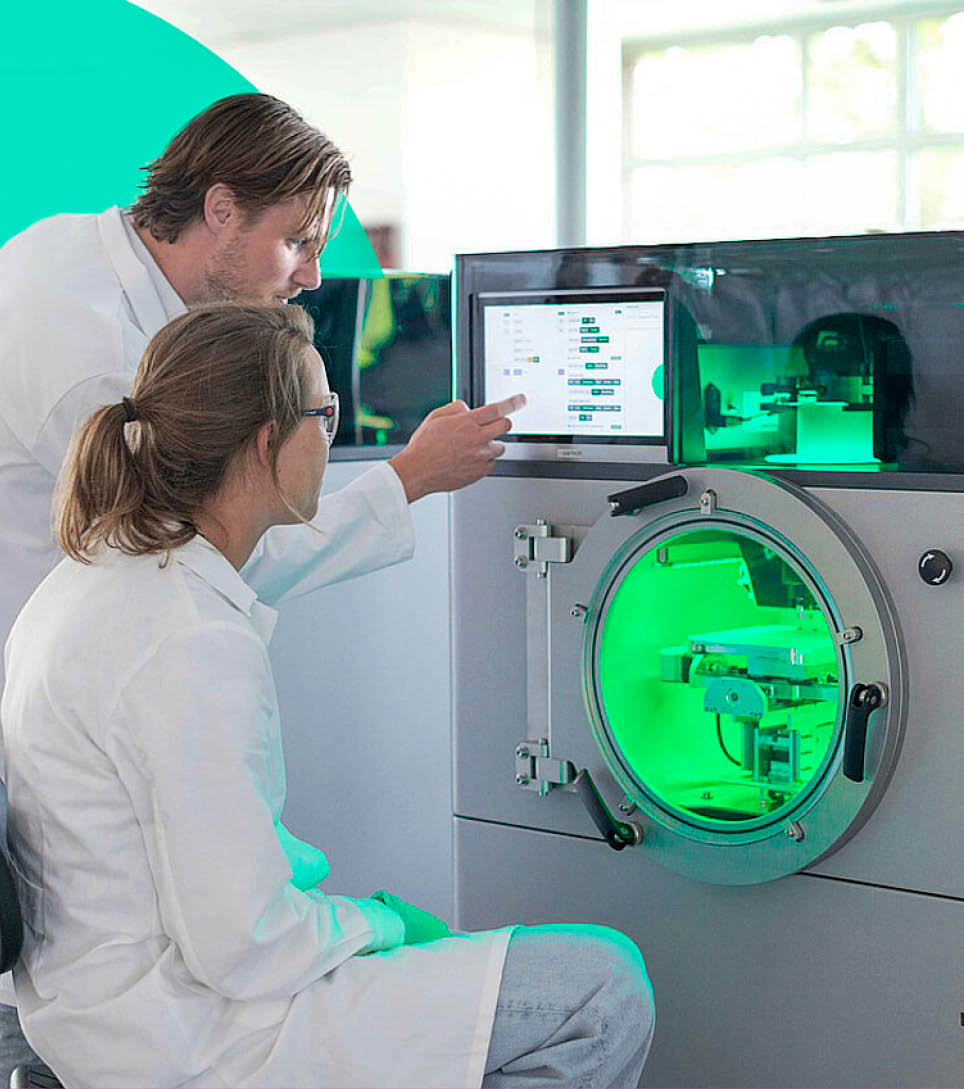 | ||||||
ASML ANNUAL REPORT 2023 | SOCIAL CONTINUED | STRATEGIC REPORT | CORPORATE GOVERNANCE | FINANCIALS | 143 | |
Innovation ecosystem (continued) | ||||||
Supporting startups and scaleups (continued) | ||||||

You can see the impact of our collaboration in the commercial results of ASML and our customers.” | ||
George Tao | ||
Director, Customer Support Applications | ||
16 years at ASML | ||
Impact through collaboration | |
As a director of customer service applications, George Tao works with one of ASML’s leading customers to bring the latest in chip technology to market fast. His team works with the customer and many other ASML teams to ramp up the output of wafers processed by our latest generations of lithography systems, so that our customers can meet their commitments to their own customers and that consumers can enjoy new products, features and performance. |
ASML ANNUAL REPORT 2023 | SMALL PATTERNS. BIG IMPACT. | STRATEGIC REPORT | CORPORATE GOVERNANCE | FINANCIALS | 144 |
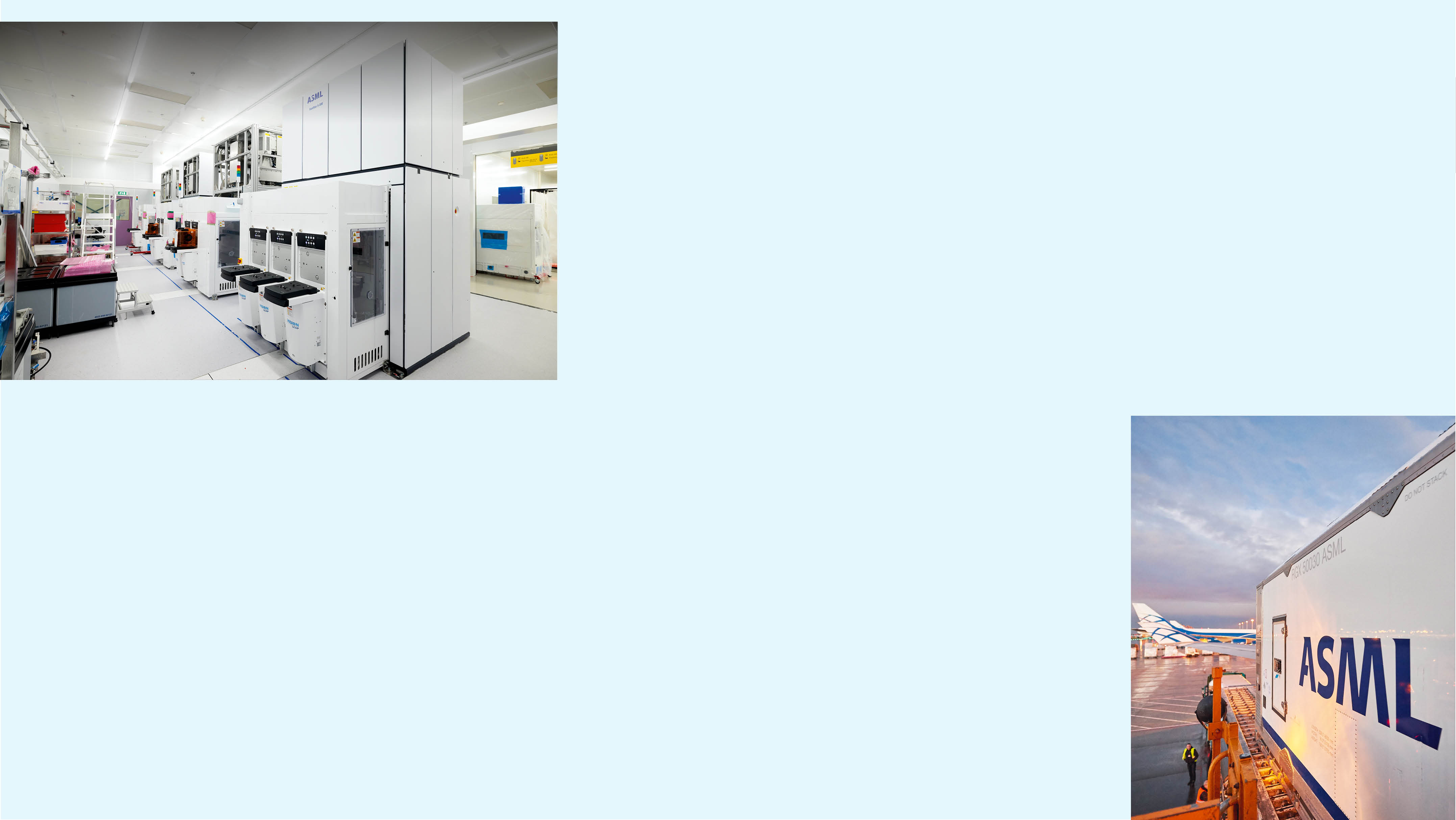
Planning that drives progress
When customers plan a new chipmaking
facility, they must think carefully about
capacity. They are making commitments to
their own customers about how many chips
they can deliver, but they also need to
ensure the facility is economically viable.
Lithography systems are the central tool in
the chipmaking process and customers need
to know how many wafers our lithography
systems can process per day to ensure they
make achievable volume commitments.
Early access gives market edge
For leading-edge customers, being at the
forefront of lithography technology, in terms
of resolution and/or productivity, is essential
to their business. They want early access to
new lithography technologies so that they
can start developing new processes faster
and bring new generations of chips to
market earlier.
As a result, they often make capacity decisions
based on the projected output of our latest
systems – systems that we are currently building.
They are willing to take delivery of systems before
the new model is properly mature to get access to
that technology as soon as possible. However,
when you deliver systems before they are fully
mature, they can’t always achieve the agreed
targeted output.
Yet the customer is still under commercial pressure
to bring the new technology to full volume fast. So,
ASML is also under commercial pressure to bring
the new systems up to the agreed targeted output
within the customer’s setup as fast as possible.
Up to speed fast
That’s where my team comes in. Working
with other ASML teams, our job is to close
the gap between initial capability and the
agreed output as quickly as possible – and
then to keep pushing outputs higher by
improving throughput and/or system
availability. To do that, we work extremely
closely with the customer, drawing on our
front-line customer support staff who are
permanently located at the customer’s
facility, and have weekly meetings with
engineers and managers.
Close collaboration is key
We identify the gaps by looking at results
from our own test procedures as well as the
customer’s production data. Once we have
identified where productivity gains can be
made, we develop an action list to make it
happen. Some actions are for the customer,
for example to improve their efficiency, while
others are handled jointly via our weekly
engineering meetings. Finally, there are
ASML actions, such as upgrading a
component or validating a new system
option.
In these cases, my team is the central
contact between the customer and the
different groups within ASML, including the
business, development and engineering and
customer support. That close internal
collaboration is essential to make the
necessary improvements on time.
Having a dedicated productivity team – with
support from ASML internal partners – is
crucial in helping customers bring the
cutting-edge lithography technologies to
volume. Despite the commercial pressures,
the customer appreciates our contribution.
Both sides have a very data-driven culture,
which helps the chemistry between us – they
understand that everything we do comes
from the data. Moreover, they know we
share their determination to improve
performance, to help them meet their
customer commitments and push the
technology forward together.
ASML ANNUAL REPORT 2023 | SMALL PATTERNS. BIG IMPACT. CONTINUED | STRATEGIC REPORT | CORPORATE GOVERNANCE | FINANCIALS | 145 | |
 |  | 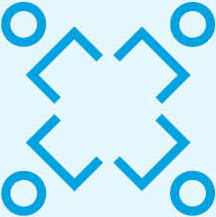 |  | ||||
€413 | 25,650 | 4,800 | €2.2m | ||||
Amount invested per employee | Time investment in volunteers – hrs community involvement | Time investment in volunteers – hrs technology promotion | Total cost of volunteering | ||||
(2025 target: €2,500 / employee) | |||||||
Why it matters | |
ASML’s success and growth have a significant impact on
local communities, especially in the vicinity of our larger
sites in the Brainport Eindhoven region, Wilton, Silicon
Valley, San Diego and Hsinchu.
Our company and network of suppliers and partners
generate a wealth of jobs and social activity in these
locations. But while our high-tech cluster is a valuable
driver of employment and welfare, local communities can
experience pressure on housing and essential services,
such as schools, as a result of ASML’s growth.
We value the support and contribution of the
communities we are part of and are committed to
respecting and making a positive contribution and being
recognized as a valued member of the community. Our
aim is that both ASML and the community can benefit
from each other’s presence and support each other’s
future development.
We have a large STEM-related direct employment need
in the regions where we operate, as well as indirectly in
other regions due to the employment needs of our
suppliers. This brings both a responsibility and an
opportunity to help inspire young people to consider
STEM career choices and to support the technology
experts of the future.
How we’re managing our impact | |
To make a positive social contribution, we listen to
concerns and take responsibility for addressing our
negative impacts. This applies to our smaller sites, where
ASML is not so significant in relation to the size of the
community, and especially to our larger sites where
ASML has a high profile.
Ultimately, we want to ensure that our impact is net positive
in every community where we operate as we continue to
add positive value while also taking responsibility for the
negative impact of ASML's presence on our communities.
Our employees expect this – they want to know that their
employer is a responsible corporate citizen which
contributes to the community they are part of in a way that
we can all be proud of.
Employee giving is another critical component of ASML’s
community outreach. By donating time, skills and
resources to charitable organizations and causes, our
employees can address local needs and make a
difference in their communities. Through our global
volunteering program, we encourage employees to
become involved in their local communities. Every
employee can use one day a year as a paid volunteering
day in line with our volunteering policy. Some volunteers
spend additional time donating their expertise as a STEM
ambassador or part-time teacher in primary schools.
We support innovative ideas, startups and scaleups with the
potential to solve urgent ESG challenges and help secure
the future of STEM education. We invest in the STEM
technical talent pool to enable society to overcome its
urgent and long-term challenges.
ASML ANNUAL REPORT 2023 | SOCIAL CONTINUED | STRATEGIC REPORT | CORPORATE GOVERNANCE | FINANCIALS | 146 | |
Valued partner in our communities | ||||||
We play an active role in the communities where we operate, recognizing that when the community thrives, we thrive. | ||||||
ASML’s community outreach | ||||||||
Our community outreach is fundamental to our ESG sustainability strategy. Just as we have set our ambition to reduce our environmental footprint to zero, we also aim to promote and improve access to local culture, support inclusive economic opportunity, create equitable access to education, and build a sustainable future through innovation. Developed and launched in 2023, our new Community Partnership Program identifies four key areas of investment and impact: •Attractive communities: Mitigate the negative impact of ASML’s growth and contribute to improvements and positive experiences in the community •Inclusive communities: Remove obstacles that hold back disadvantaged community members from reaching their potential and unlock the potential of, and create equal opportunities for, students •STEM education: Help increase the STEM/technical talent pool that society needs to solve some of its key challenges •ESG sustainability innovation: Support projects with great societal returns with our knowledge and expertise, and invest in ideation, startups and scaleups in our communities to retain a diverse innovation ecosystem that is attractive to the world’s top technical talent | We have a strict selection and prioritization process and projects have to primarily benefit ASML's community or society and be in line with one of our key focus areas. Within these areas, we have identified 17 potential programs, including access to affordable housing, access to basic needs for the underserved, providing opportunities for students from disadvantaged backgrounds and supporting community startups. In 2023, we started projects in the first three of the four areas – our ESG sustainability innovation area is still under development. Over the next few years, we will grow to reach our ambition of investing €2,500 annually per employee (amount invested per employee and employee contribution matching combined), totaling more than €100 million per year globally. ASML's commitment to being a valued partner in our communities, specifically through education, has also been reflected in the mission and work of the ASML Foundation for more than 20 years. In 2023, we initiated the process for dissolving the ASML Foundation – however, the scope of its activities will be adopted by the new Community Partnership Program. |  | ||||||
ASML ANNUAL REPORT 2023 | SOCIAL CONTINUED | STRATEGIC REPORT | CORPORATE GOVERNANCE | FINANCIALS | 147 | |
Valued partner in our communities (continued) | ||||||
Our overall performance in 2023
Progress tracking | ||||||||||
Topic | Target 2025 | Performance indicator | 2021 | 2022 | 2023 | Status | ||||
Valued partner in our communities | 2,000 €/employee | Community partnership program: amount invested per employee | n/a | n/a | 319 | n | ||||
500 €/employee | Employee contribution matching | n/a | n/a | 94 | n | |||||
2,500 €/employee | Community partnership program: total amount invested per employee including contribution matching | n/a | n/a | 413 | ||||||
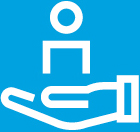 | ||||||||||
The total amount of cash commitments and in-kind
support that ASML spent on charities, community
engagement and organizations in 2023 was
approximately €15.4 million which equates to €319 per
employee against a target of €2,000 per employee for
2025. Through employee contribution matching, we
contributed €94 per employee, against our target of
contributing €500 per employee by 2025. The Community
Partnership Program was established in January 2023
and has been ramping up throughout the year.
Our employees contributed a total of 25,650 volunteering
hours (2022: 13,645) to community involvement and
4,800 hours (2022: 4,736) to technology promotion. We
saw an increase from prior years as a result of rapid
scaling of our STEM support for primary schools, which
includes one technology lesson module given by a trained
ASML employee. The total cost of volunteering – part of
employee contribution matching – increased to €2,173k
in 2023 (2022:€1,200k).
Five of our locations (Veldhoven and the Brainport
Eindhoven region, Wilton, Silicon Valley, San Diego and
Hsinchu) benefit from implemented and dedicated
community engagement programs. These locations
represent 83% of our operations, by headcount. We also
operate smaller community engagement initiatives in
other locations, and these will be gradually scaled up to
more formally dedicated programs in the coming years.
ASML ANNUAL REPORT 2023 | SOCIAL CONTINUED | STRATEGIC REPORT | CORPORATE GOVERNANCE | FINANCIALS | 148 | |
Valued partner in our communities (continued) | ||||||
On track • Ongoing focus area n | ||||||
How we’re managing our impact | |
We are committed to doing our share as a socially
conscious business in the communities we are a part of.
By partnering with businesses and organizations in the
regions around the world where ASML is located, we are
building trust and contributing to our communities.
Our ‘Attractive communities’ initiative consists of five
foundational programs which contribute to our ESG
sustainability strategy. These are detailed below.
Affordable housing
There is a significant housing shortage in the Brainport
Eindhoven region in the Netherlands, which puts serious
pressure on affordability. People with low to middle
incomes struggle to find affordable homes, and
ASML's growth adds to their challenge. In 2023, we
therefore launched our Affordable Housing program,
which aims to help increase the number of affordable
homes for everyone in the Brainport Eindhoven region,
primarily by providing support for construction of new
homes. We run this program in collaboration with several
external parties, such as housing corporations,
municipalities, and real estate developers.
Green communities
We contribute to the current and future livability of local
communities by improving the quantity and quality of
nature. The main program focus is on nature and
biodiversity, which concentrates on two outcomes:
getting more green spaces in the community, and
improving the quality of green spaces via collaboration
with external partners.
Sustainable mobility
We contribute to the sustainable mobility transition that is
required for quick, safe, and clean transport in the
Brainport Eindhoven region. The program focuses on
two key elements: the availability of infrastructure and
increased adoption of sustainable transportation.
Sports, arts and music
We aim to contribute to a varied and high-quality offering
of sports, arts and music to meet society’s expectations
and boost the attractiveness of the regions where we
operate for locals and newcomers. We provide additional
funds for ‘landmark’ events and organizations to increase
their scale, variety and quality, and we invest in new
initiatives and innovative ideas that boost the quality and
variety of the cultural and sports offering in our regions.
Positive interactions between cultures
We aim to foster good relationships with ASML's direct
neighbors – both as an ethical imperative and to maintain
support for our activities and growth – and also to
support the integration of international employees of
ASML and other companies in local communities. We
support various local community projects and initiatives
where Veldhoven residents can meet each other and
have fun in their spare time. In this way, together with the
initiators, we aim to contribute to creating an attractive
region.
Our targets and performance in 2023 | |
We are in the first year of these programs and we are
continuing to define the individual targets. Our main
targets are the amount invested per employee and
employee contribution matching.
Read more in Our overall performance in 2023
Our actions in 2023 | |
Creating more green spaces (NL)
In 2023, we supported the Arboretum in Eindhoven with
investing in equipment and tools required for the
organization and maintenance of Park Meerland, and IVN
in Heeze-Leende with the creation of a safe route for
amphibians to move around the area.
ASML Marathon Eindhoven (NL)
The 39th edition of the ASML Marathon Eindhoven took
place on Sunday, October 8, 2023, with 29,700 runners
from around the world. A record number of 2,500+
ASML colleagues – up by almost 50% from 1,700 last
year – took part in the various races including the full
marathon, half marathon, relay and quarter marathon.
As title partner, we offered free training programs and
covered the entry costs for all our employee runners, as
well as for 250 Brainport Eindhoven community
members with limited resources, to make this sporting
event accessible to everyone.
 |
ASML ANNUAL REPORT 2023 | SOCIAL CONTINUED | STRATEGIC REPORT | CORPORATE GOVERNANCE | FINANCIALS | 149 | |
Valued partner in our communities (continued) | ||||||
Attractive communities | ||||||
GLOW Light Art Festival (NL)
We are moving semiconductor technology forward to
create meaningful innovation for society. As a proud
partner and sponsor of the annual GLOW light art festival
since 2012, ASML believes culture plays a vital role in
connecting a community. GLOW is an annual, free event
in Eindhoven, displaying the works of famous national
and international light artists throughout the city center
over one week in November. In 2023, around 750,000
people visited the festival.
Partnership with PSV (NL)
PSV Eindhoven football club is the region's most
recognized professional sports organization. Community
members appreciate that ASML supports the club
together with other regional businesses while jointly
promoting 'Brainport Eindhoven' on the players' shirts.
In addition, we have developed programs and activities
that focus on the underserved in the community. We
have enabled access to the games for thousands of
underserved community members through our ASML
Community Lounge. We also leverage PSV's brand
recognition to promote important campaigns, such as
one aimed at reducing personal debt, which reached
almost 50% of regional residents and triggered one in
three to take follow-up action.
Partnership with Van Gogh Museum (NL)
ASML has allocated a team of engineers to support the
Van Gogh Museum in Amsterdam in its research into the
decay of art paintings over time – known as the Impasto
Project.
Van Gogh Village Museum and Vincent's Lightlab
(NL)
In 2023, we have enabled the renovation and festive re-
opening of the new Van Gogh Village Museum in
Nuenen, close to our headquarters, and established
Vincent’s Lightlab. By combining technology, art and
creativity, we have created a unique experience that
contributes to the innovative image of the region and
inspires the next generation of artists and scientists. The
renewed museum is expected to welcome around
40,000 visitors a year.
Partnership with Muziekgebouw Eindhoven (NL)
We have a long-term partnership with the Muziekgebouw
in Eindhoven, bringing our employees and community
members together through a shared passion for the
stage.
Looking ahead | |
We look forward to supporting many projects, activities
and events in 2024, with among others:
•ASML’s “Drop of Light” exhibit and experience lab at
Taiwan 2024 Lantern Festival, held in Tainan from
February 24 to March 10, 2024, with around 10
million expected visitors
•The Affordable Housing program, which aims to help
increase the number of affordable homes for
everyone in the Brainport Eindhoven region in the
Netherlands, primarily by providing support for the
construction of new homes
•ASML On Stage 2024, inviting the best musical and
artistic talents from among our own employees to
take to the stage at the Muziekgebouw Eindhoven,
the Netherlands
•ASML's School Football tournament 2024 for
thousands of children in the Brainport Eindhoven
region, many of whom will be able to participate in
organized sport for the first time
•Planting of 100,000s of trees in the metropolitan
region in and around Eindhoven, the Netherlands
ASML ANNUAL REPORT 2023 | SOCIAL CONTINUED | STRATEGIC REPORT | CORPORATE GOVERNANCE | FINANCIALS | 150 | |
Valued partner in our communities (continued) | ||||||
Attractive communities (continued) | ||||||

How we’re managing our impact | |
We want to support our community members who may
face challenges with access to basic needs, like food,
and students who need equal access to opportunities in
order to thrive in school and their eventual careers.
Through our inclusive communities program, we aim to
remove obstacles that hold disadvantaged community
members back from reaching their potential while also
unlocking the potential of, and creating equal
opportunities for all students.
In previous years, our activities were mainly limited to
projects focused on one-on-one tutoring. In 2023, we
decided to step up our investment in inclusive
communities to meet local needs. We used community
surveys and stakeholder engagement sessions as input
and hired dedicated staff to support and develop
projects in our communities.
Our topic of ‘Inclusive communities’ consists of six
programs, as detailed below.
Access to basic needs
Not all community members benefit from the economic
activity in ASML regions due to challenges they face in
accessing basic needs – including food, shelter,
healthcare-adjacent issues and clothes. One of the ways
we respond is to invest in local food and clothing banks.
Access to employment
Good-quality employment is not equally accessible for
everyone. Some community members face barriers to
participation in the labor market. This manifests in
different ways, from people who struggle in the search
for a suitable job to those who become discouraged and
pause their search, and those who do not even dare to
try. We aim to support involuntarily unemployed
community members back to work, by collaborating with
organizations to train and coach community members,
helping them to set out their path and guiding them to
reach their goals.
Access to sports, arts and music
This program aims to improve the local accessibility of
sports, arts and music for community members with
scarce financial means and/or physical/mental conditions
or impairments. Together with our sports and cultural
partners, we aim to create a more equitable and
attractive community. Furthermore, we look to work with
larger social organizations in the field that have specific
experience in supporting families with lesser means to
fully participate in sports and culture. We run specific
programs that offer children the chance to come into
contact with sports/culture so they can discover what it
can mean for them, regardless of their socio-economic
circumstances.
Neurodiverse students
Neurodiversity is one of the drivers of increasing diversity
in Brainport classrooms. Schools are not always able to
recognize the needs of neurodiverse students in order to
provide the required support. This leads to greater
demands on special education, underperformance, and
children at home. We have approved and started up a
significant project, which will be up and running in 2024,
to support the educational system in providing adequate
support for neurodiverse students in regular schools. The
aim is to show the increase in demand for special
education, support children to reach their potential and
reduce the number of children who no longer attend
school.
Students with a different native language
Schools in the Brainport Eindhoven region have
challenges absorbing the inflow of international children,
leading to a sharp increase in the number of children with
an international background flowing into special
education. Since 50% of the international students are
children from knowledge migrants, we take our
responsibility by strengthening the Brainport Eindhoven
educational sector region to absorb the growing number
of international students, and thereby reduce the
additional inflow into special education.
Students from disadvantaged backgrounds
Students from disadvantaged backgrounds do not have
the same opportunities in education as their peers. This
results in underperformance in education, which is also
reflected in their subsequent career. This program aims
to provide students from disadvantaged backgrounds
with equal opportunities to allow them to thrive in their
educational environment and subsequent career.
Our targets and performance in 2023 | |
We are in the first year of the programs and we are still
continuing to define the individual targets. Our main
targets are the amount invested per employee and
employee contribution matching.
Read more in Our overall performance in 2023
Our actions in 2023 | |
Second Harvest Food Bank (US)
The recipient of our largest US-based investment to date
is Second Harvest of Silicon Valley. This organization,
which was established in 1974, currently provides food
to over 500,000 Santa Clara County residents every
month – including over 120,000 children and 110,000
senior citizens. These are double the totals from pre-
pandemic levels. ASML’s contribution goes toward their
capital campaign to build a new facility in North San
Jose, which will allow them to consolidate warehouses
that were quickly opened during the pandemic, greatly
improving the efficiency of operations and reducing
operating costs. We plan to donate $1 million per year
for five years to be used toward the new facility
campaign. In addition, we will provide $250,000 per year
for the operating budget.
ASML ANNUAL REPORT 2023 | SOCIAL CONTINUED | STRATEGIC REPORT | CORPORATE GOVERNANCE | FINANCIALS | 151 | |
Valued partner in our communities (continued) | ||||||
Inclusive communities | ||||||
Partnership with Family Giving Tree (US)
Family Giving Tree is a non-profit-based organization in
the Bay Area, California (US), which runs the largest
holiday gift and backpack donation program in California.
ASML Silicon Valley’s 2023 ‘Backpack Build’ event
benefits children from low-income households in the Bay
Area. We provide financial support and employee
volunteering time to support the initiative.
We provided a $45,000 grant to Family Giving Tree in 2023,
which was used to purchase backpacks and school supplies for
1,000 disadvantaged students. Our employees sorted and filled
the backpacks with necessary back-to-school supplies to
support the students who otherwise could not afford these
items.
In 2023, in the form of a $45k grant/donation
combination, we also supported their Holiday Wish Drive
and purchased 1,000 holiday wishes (in the form of gifts)
for low-income Santa Clara County children.
National Volunteer Week (US)
National Volunteer Week takes place every April and
recognizes the impact of volunteers in tackling society’s
challenges, building stronger communities and being a force
that transforms the world. We recognized National Volunteer
Week across our US sites by providing opportunities for
employees to volunteer and make an impact.
We provided $45,000 in donations to non-profit
organizations across all of our focus areas (many of which
are part of our inclusive communities initiative), as well as
employee volunteering hours. During National Volunteer
Week, 225 ASML volunteers contributed almost 1,000
volunteer hours toward a total of 19 projects for
organizations such as Habitat for Humanity, Boys & Girls
Clubs of Silicon Valley, San Diego Food Bank, Second
Harvest of Silicon Valley, San Diego Children’s Discovery
Museum, Wilton Land Conservation Trust and Riverbrook
Regional YMCA.
Boys & Girls Clubs (US)
In 2023, we were proud to expand our partnership with
the Boys & Girls Clubs of Silicon Valley by supporting
their summer enrichment and college readiness
programs through 2025. The Boys & Girls Clubs’
summer enrichment programs offer lower-income
students the opportunity to participate in sports, arts and
wellness-focused summer camps, while the college
readiness program provides leadership, job-readiness
and financial literacy skills, encouraging students to set
academic and career-oriented goals.
Our partnerships with the Boys & Girls Clubs in our local
US communities will also continue to grow with STEM-
focused programming and support in both Silicon Valley
and Bridgeport, Connecticut.
ASML school football tournament (NL)
In collaboration with Youth organization Dynamo
Jeugdwerk and the FC Eindhoven Foundation, we
organized an ASML school football tournament in 2023
for all primary and secondary schools in Eindhoven and
the Kempen region. To take away the financial barrier to
participating in sports, entry was free for all youngsters.
In total, 150 teams with 1,200 participants from across
the region competed.
'@home in languages' (NL)
The number of international children aged 0-18 newly
enrolling in the Brainport Eindhoven educational system
will increase by 8,000-12,000 students in the next nine
years, from 15,000 today. Schools in the Brainport
region want to adapt to this changing student population.
Children need to feel at home to be able to learn and
grow. Language skills – particularly reading – are among
the most important skills to master. Making use of the
mother tongue is important, and parental involvement
with the learning process is key for a child's
development.
We co-develop and fund the '@home in languages'
initiative which addresses all these factors. It supports
pre- and primary schools in the Brainport Eindhoven
region by supplying permanent and flexible multilingual
book collections, training school workers on multi-lingual
and multicultural teaching and creating an expertise
center for multilingual teaching in Brainport.
Weekend and after-school programs (NL)
Students from disadvantaged backgrounds often face
underperformance in education and career development
as a result of inequality of opportunity. They have a
higher chance of falling behind on schoolwork due to,
among other factors, a lack of self-confidence, role
models and perspective. They also receive limited
support and guidance on their educational path from
their direct environment.
Our partnership with weekend schools focuses on
providing children with support and guidance that offers
perspective and instills confidence. These projects aim to
scale current proven weekend and after-school
programs to improve children's perspective, confidence,
skills and network. Programs take place on Sunday or
after school. Children typically start when they are 10 or
11 years old. We provide financial support to enable
these programs to scale in the region.
Matching Gifts program (global)
2023 was the first full year for our newly introduced
Matching Gifts program. Matching Gifts gives our
employees a voice in the distribution of the company's
philanthropic contributions. For eligible ASML employees
globally, we matched donations to non-profit
organizations up to a cumulative amount of €1,000 per
employee, per calendar year. In 2023, ASML supported
more than 1,100 non-profit organizations through
matching gifts.
Looking ahead | |
In 2024 and beyond, we will develop, initiate and scale
projects in the different programs for Inclusive
Communities. The projects that started in 2023, such as
Language & Library and Weekend School, will reach
more schools and more students.
In 2024, we also hope to expand the Matching Gifts
program in more countries where ASML operates. In
2024, ASML’s annual match limit per employee will also
increase to €10,000.
ASML’s 40th anniversary in 2024 will give us an
opportunity to celebrate via a new employee giving
campaign, focusing on volunteering opportunities for
employees near our local sites, as well as a charitable
giving campaign where ASML will match employee
donations and encourage participation through special
program incentives.
ASML ANNUAL REPORT 2023 | SOCIAL CONTINUED | STRATEGIC REPORT | CORPORATE GOVERNANCE | FINANCIALS | 152 | |
Valued partner in our communities (continued) | ||||||
Inclusive communities (continued) | ||||||
How we’re managing our impact | |
We invest in the STEM technical talent pool to enable
society to overcome its urgent and long-term challenges.
Too often, opportunities to create enthusiasm about
STEM topics among children and youngsters (aged
between 4 and 24 years) are missed. STEM classes in
primary education could be more engaging and events
outside of school could be more optimally leveraged. There
is also a shortage of STEM role models for younger
generations. All of this impacts the interest of students in
STEM subjects and limits the supply of future talent.
We believe that creating awareness and interest in STEM at
a young age translates into increased consideration of a
STEM-related education and career later in life. A well-
functioning (primary) education system is primarily within the
mandate of government. However, ASML can play a role in
supporting STEM-related education and inspiring a new
generation of technology experts. This is why we started
investing in STEM education through SPARK events, guest
lessons at schools and visits to ASML premises in
Veldhoven. We continue to invest in STEM education
through the ASML Junior Academy, which was established
in 2022. The academy provides a dedicated program of
activities within the mainstream education system, focused
on all children in primary school (4-12 years old), regardless
of a pre-existing interest in STEM. The academy provides
primary schools with engaging structural STEM lessons for
all children, six times per school year for at least three school
years, fully funded by ASML.
ASML drives and funds the Academy, through a partnership
with Mad Science, to spark children's awareness, interest
and joy in STEM-related themes and topics. Our initial focus
is on schools within a radius of 35 km around ASML
locations. STEM activities are for children and we include
parents and teachers to increase STEM awareness. Future
teachers (students at Dutch teacher training college PABO)
are also engaged in relation to the ASML Junior Academy.
Our targets and performance in 2023 | |
We aim to increase interest in STEM for students in the
4-24 age group. Our target in 2025 is to reach more than
91,000 children in an area of 35 km around Veldhoven, in
Delft in the Netherlands and in Wilton in the US, six times
a year.
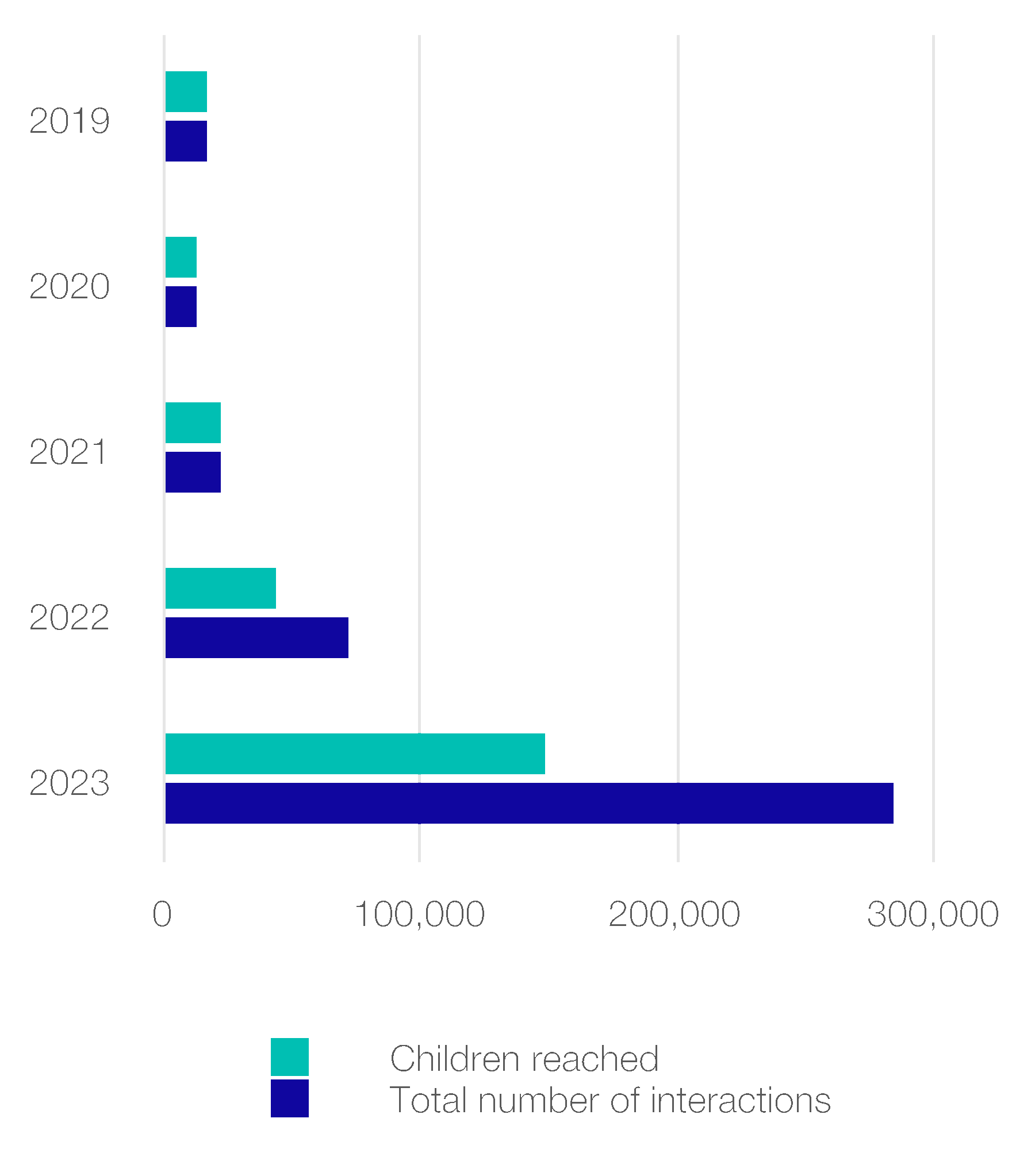
The number of children that we reached through STEM education over
the years 2019-2023
We see enormous growth in the number of children that
we can reach through STEM education, particularly
through the implementation and scaling of the ASML
Junior Academy.
Our actions in 2023 | |
Our main STEM-related activities in 2023 centered
around partnerships and events in the Netherlands,
Taiwan and the US.
The ASML Junior Academy scaled up in 2023 and
reached over 76.000 children in the Netherlands alone.
The ASML Junior Academy was launched in November
2023 in Wilton, US.
Together with Brainport Development, we also held
several events to reach children in the 4-12 and 12-18
age groups in the Brainport Eindhoven region. ASML
supported and participated in local STEM activities such
as a High Tech Discovery Tour, Mission Tech and the
Dutch Technology Festival, Night of the Nerds, and the
Crafted Festival for pre-vocational, secondary and
vocational education (VMBO, HAVO/VWO and MBO).
ASML ANNUAL REPORT 2023 | SOCIAL CONTINUED | STRATEGIC REPORT | GOVERNANCE | FINANCIALS | 153 | |
Valued partner in our communities (continued) | ||||||
Investing in STEM education | ||||||
In Taiwan, we teamed up with the Junyi Academy and
Teach for Taiwan to launch a multi-year project to ‘train
the STEM trainers’. The project will help to address the
STEM talent shortage in Taiwan by training primary
school teachers and university students to become
STEM promoters. ASML's financial support goes toward
teacher training, materials and curriculum development
and enabled more than 50 ASML volunteers to undergo
the training and act as STEM ambassadors. 2023 saw
the project launch, fine-tuning of the curriculum and
delivery of the first employee and teacher workshops. We
trained 400 STEM promoters and reached 3,500
students in 2023 with a goal to reach 6,200 per year
going forwards.
In the US, ASML sponsored the EXPO Day flagship event
of the San Diego Festival of Science & Engineering,
which aims to inspire tomorrow’s innovators in STEM. 28
employees volunteered at the ASML exhibit, teaching
kids how to bring robots to life using coding and
programming. We also sponsored Silvermine Elementary
School’s two-day science fair, which was visited by more
than 600 students. A large percentage of Silvermine
students come from underserved areas in and around
Norwalk, Connecticut, and this initiative impacts our
STEM education goals and supports disadvantaged
students. We brought in our partner, Mad Science, as a
pilot for ASML Junior Academy, and provided volunteers
in order to help inspire a love of STEM among elementary
(age group 5-12) students. Almost 30 ASML volunteers
helped lead STEM experiments and activities.
In October 2023, ASML officially expanded the ASML
Junior Academy to Connecticut. ASML is investing $2.2
million over three years to, with our partner Mad Science,
provide free interactive technology education lessons to
children aged 4 to 12 in Wilton and surrounding
communities. Over three years, more than 13,000
children in the US are slated to receive six experiential
technology lessons on STEM-related topics.
Looking ahead | |
We will continue to scale the ASML Junior Academy and
we will support the educational partner Mad Science in
finding solutions for resourcing challenges that result
from the steep scaling from 2023 onwards. We will add
more locations where we operate – including Taiwan – as
well as cities in the US.
In 2024 an additional STEM program will be launched for
students in 1st and 2nd year of secondary school in the
Veldhoven region: STEMup. Working with a STEM
coach, schools can choose one of four STEM classes
developed by ASML. The goal of the program is to
engage students in STEM activity from a societal
perspective, and increase the interest in and the
perceived relevance of STEM.

ASML ANNUAL REPORT 2023 | SOCIAL CONTINUED | STRATEGIC REPORT | GOVERNANCE | FINANCIALS | 154 | |
Valued partner in our communities (continued) | ||||||
Investing in STEM education (continued) | ||||||

ESG integrated governance | |
ESG sustainability is important for our business and stakeholders, and we integrate ESG into our everyday decision-making, underpinned by responsible business conduct and risk management. | |
Transparent reporting | |
We are open and transparent, driving progress while building trust with our stakeholders. Our commitment to integrated reporting reflects our view that our ESG- related information is as important as our financial information. |
Engaged stakeholders | |
We depend on strong, sustainable relationships with stakeholders across the value chain. We aim to create sustainable value for all our stakeholders and benefit from their input. | |
Read more in Engaging with our stakeholders | |
ASML ANNUAL REPORT 2023 | GOVERNANCE | STRATEGIC REPORT | CORPORATE GOVERNANCE | FINANCIALS | 155 | |
Governance at a glance | ||||||
Strong corporate governance enables us to do business responsibly and meet the highest standards of integrity. This is essential to create value for our stakeholders and to secure the long-term success of our company. | ||||||
IN THIS SECTION | ||
ESG sustainability governance | ||
Business ethics and Code of Conduct | ||
Legal & Compliance | ||
• Anti-bribery and anti-corruption | ||
•Competition Law Compliance Policy | ||
Respecting human rights | ||
Information security | ||
•Privacy protection | ||
•Export control and sanctions | ||
•Intellectual property protection | ||
Product safety | ||
 | ||
Why it matters | |
ESG sustainability is important for our business and
stakeholders, and we integrate ESG into our everyday
decision-making, underpinned by responsible business
conduct and risk management.
We want to feel proud about the business decisions we
make and to ensure our stakeholders recognize that
integrity and honesty sit at the heart of everything we do.
We rely heavily on the skills, commitment and behavior of
our employees in line with our values to build trust and
respect – underpinning our continued success, our license
to operate and our positive contribution to society.
Our customers and partners must be able to rely on the
security, safety and quality of our products and services.
Due to our market leader position and the growing
geopolitical tensions in the semiconductor industry, we
are increasingly targeted by threat actors.
It is our duty to provide a safe work environment, and we
must ensure that our products and tools comply with the
most stringent product safety regulations. As we have
grown, so has the complexity of our products and supply
chain and the geographical locations in which we
operate. This brings additional challenges around safety
compliance.
How we’re managing our impact | |
We commit to acting on our responsibilities and
anchoring ESG sustainability across our entire business.
We focus on identifying and assessing the impact of ESG
sustainability risks and managing them appropriately,
ensuring that we take a holistic approach to risk
management. This enables us to create enterprise value
and drive an effective risk response.
We expect all our employees to live up to the company’s
values and standards by acting with integrity and respect
at all times. Our corporate policies and procedures detail
the principles and compliance standards that guide us in
making decisions and living up to our values. We
promote an open culture of trust and honest
communication and do not tolerate violations of our
standards. Our transparent approach is underpinned by
our commitment to ensuring compliance with applicable
laws and regulations wherever we operate and by
fostering ethical behavior and a culture of speaking up.
We are investing in a best-in-class security function with
security competences, governance and capabilities
deployed across our most important assets to manage
security threats and risks.
We have clear systems and processes in place to
support our approach to product safety. Prevention is
key, and we focus on safety by design in hardware
followed by safety by procedure. To ensure product
safety does not end at our own facilities – we also
promote product safety in the value chain.
 |
ASML ANNUAL REPORT 2023 | GOVERNANCE CONTINUED | STRATEGIC REPORT | CORPORATE GOVERNANCE | FINANCIALS | 156 | |
ESG integrated governance | ||||||
Integrated governance ensures a responsible ESG sustainability approach that considers the needs of our stakeholders. | ||||||
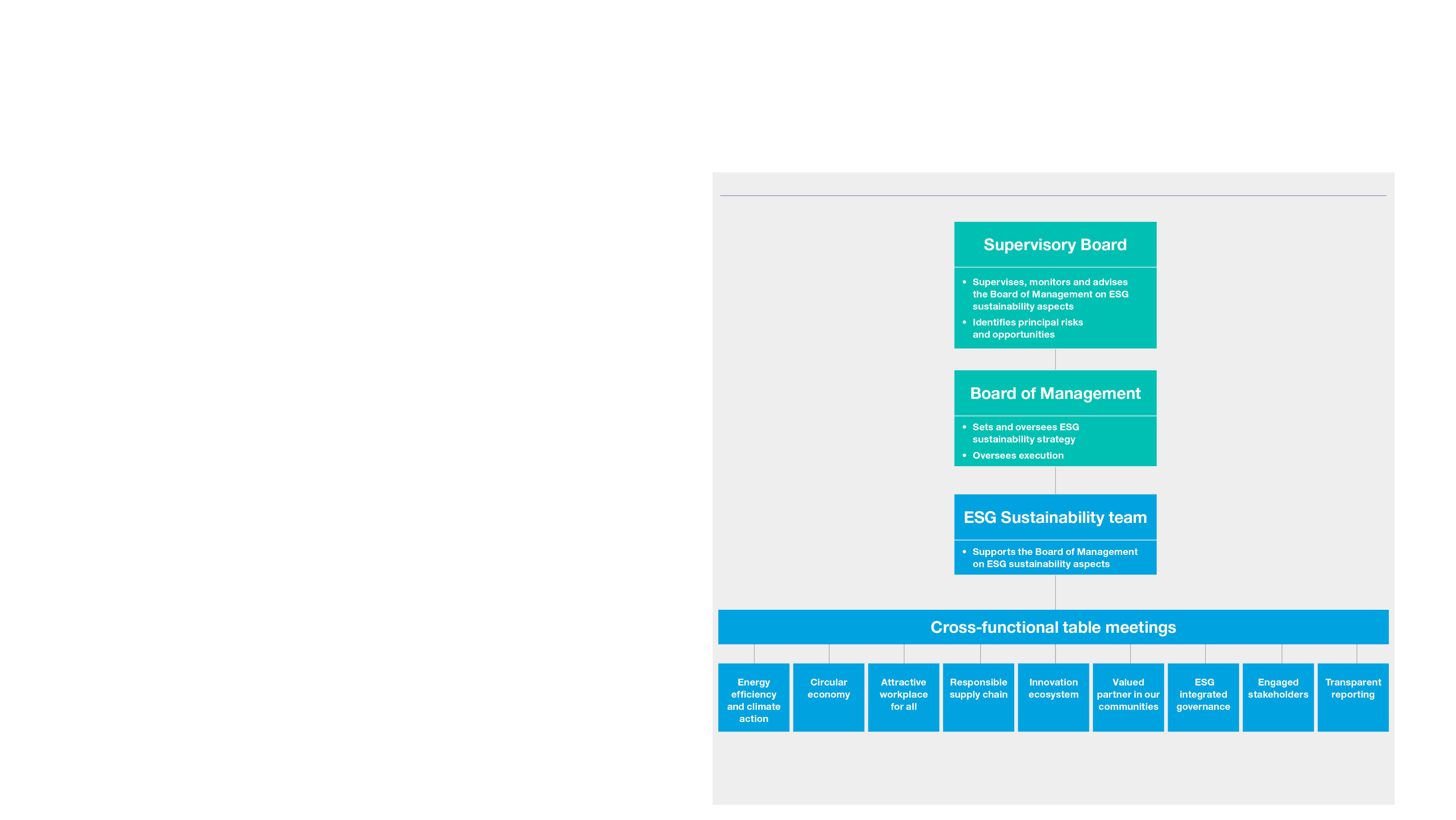
ESG sustainability governance | |
Our integrated ESG sustainability governance drives
accountability and execution across the company.
Our ESG sustainability governance model includes the
SB, BoM, ESG Sustainability team and experts from the
business.
The SB monitors and advises the BoM on ESG
sustainability aspects that are relevant to the company.
This includes addressing the principal risks and
opportunities related to the strategy.
Read more on the Rules of Procedure as published in the
Governance section at asml.com
In 2023, the SB established the ESG Committee, which
advises the SB in carrying out its governance and
oversight responsibilities with regard to sustainability,
environmental, social and governance matters. We
organized ESG training for the SB ESG Committee
members with follow-up sessions planned in 2024.
Read more in Corporate Governance - Supervisory Board
The BoM sets and oversees the execution of ESG
sustainability aspects in our integrated business strategy,
including nine ESG sustainability strategic themes and
associated KPIs. It receives quarterly updates on ESG
sustainability and provides guidance on relevant issues.
The ESG Sustainability team supports the BoM in relation
to ESG sustainability. It makes recommendations
regarding focus areas, targets, external commitments
and disclosures.
The ESG Sustainability team monitors risks and
opportunities including climate-change-related matters,
global trends, stakeholder expectations and best
practices that could impact ASML’s short-, medium- and
long-term ESG sustainability objectives. Identifying and
assessing the impact of ESG sustainability-related risks
and opportunities are an integral part of our ERM
process. Our strong focus on identifying and managing
ESG sustainability risks ensures that we take a holistic
approach to risk management.
As with any other risk factor, ESG sustainability risks are
assigned to a risk owner. The CBO (a member of the
BoM) is the risk owner, for instance, for climate-related
risks.
Read more in Risk - How we manage risk
Key developments are identified and integrated through a
thorough materiality assessment
Read more in ESG - Our material ESG sustainability topics
The ESG sustainability strategic themes are developed
through regular cross-functional table meetings to ensure
alignment on ESG-related topics across various parts of
the company. Responsibility for executing the strategy
lies with the business. Progress is monitored quarterly by
the BoM.
Read more in Corporate Governance
Executive remuneration | ||
Performance against key sustainability topics forms part of the long-term incentive plans of the Board of Management and senior management. | ||
Read more in Remuneration Report | ||
Our ESG sustainability governance model |
ASML ANNUAL REPORT 2023 | GOVERNANCE CONTINUED | STRATEGIC REPORT | CORPORATE GOVERNANCE | FINANCIALS | 157 | |
ESG integrated governance (continued) | ||||||
ESG sustainability governance | ||||||
Business ethics and Code of Conduct | |
We seek to continually improve and professionalize our
ethics and compliance organization to maintain the
highest standards. This means promoting and upholding
ethical behavior and fostering a culture where speaking
up is encouraged.
In 2023, we continued to expand the Ethics & Business
Integrity team globally, as well as our network of Ethics
Liaisons teams. We supported our Ethics Liaisons with
tailored training sessions including dedicated sessions in
which the teams gained exposure to multiple scenarios.
We also continued to deliver training programs and
focused on raising understanding of the importance of
upholding our Code of Conduct, speaking up and our
commitment to acting with integrity across our entire
organization. This included mandatory online ethics
training for all people managers and our first publicly
available Code of Conduct refresher video, launched in
August 2023, hosted on ASML's YouTube channel.
Our Code of Conduct
Our values guide our dealings with customers,
employees, suppliers, shareholders and the society we
serve. These values are reflected in our Code of Conduct
(Code) which sets out the baseline of ethical behavior we
expect, enabling our employees to make the right
decisions and live up to our values.
Our Code sets clear expectations and guiding principles
for the way we conduct business. It serves to foster a
culture of integrity, ethics and respect. We ask all our
employees, suppliers, contractors, consultants and
business partners to abide by the standards set out in
the Code. Our employees must complete mandatory
online training which requires a digital confirmation that
they understand what is expected from them and that
they agree to adhere to the Code.
To reinforce our commitment across the supply chain,
we expect suppliers and their suppliers to acknowledge
and comply with the RBA Code of Conduct and to
develop their own strategies, policies and processes to
uphold it. This requirement is included in our long-term
product-related suppliers’ contracts. Some major
suppliers might need to undergo an RBA audit to assess
their compliance, while other suppliers may take part in
an annual self-assessment. We also encourage our
suppliers to develop their own sustainability strategies,
policies and processes in line with our Code.
RBA Code of Conduct | ||
As a member of the RBA, the world’s largest industry coalition dedicated to corporate social responsibility, we have adopted the RBA Code of Conduct. This international standard is intended to ensure that working conditions in the electronics industry and its supply chains are safe, that workers are treated with respect and dignity, and that business operations are environmentally responsible and conducted ethically. | ||
Read more in Social - Responsible supply chain |
Our Code of Conduct principles
Our principles | Our commitment | ||
We respect people | ASML is committed to maintaining a safe and healthy working environment, respecting human rights in line with international laws and regulations and industry standards such as the RBA Code of Conduct. Diversity of cultures, education and talent makes us a stronger, more creative and innovative company. By working together and using these values to guide us, we create an environment based on mutual respect – one that leads to better results than any of us can achieve alone. | ||
We operate with integrity | A strong culture of integrity and compliance underpins ASML’s business success. We define ‘integrity’ as acting with honesty, sincerity, care and reliability. Compliance not only means complying with laws and regulations, but also with our high ethical standards. Our reputation for integrity is a valuable asset. It is essential for us to demonstrate personal and business integrity at all times. | ||
We commit to safety and social responsibility | Technology reaches all parts of society. By helping to make chips more affordable, powerful and energy-efficient, ASML has an important role to play – not only by reputation and results, but also in relation to the environment. This is why ASML is committed to conducting business responsibly, enabling sustainable growth while fulfilling legal and moral obligations. We aim to achieve our business objectives in a caring and responsible manner, as outlined in the key principles. | ||
We protect our assets | ASML’s most valuable assets are its people and knowledge, both of which are highly valued and protected. Our assets include intellectual property, trade secrets or other proprietary information, which refers to intangible assets such as technical know- how, products data, business data and personal data, as well as physical assets such as products, tooling, funds and computers for conducting ASML business. Our company expects anyone entrusted with ASML assets to keep them safe from loss, damage, misuse or theft. | ||
We encourage you to communicate and speak up | To fulfill our commitment to upholding the high standards of integrity described in this Code, communication is key. We strive for a working environment that encourages open dialogue among employees, as well as between employees and third parties, where employees feel comfortable and respected, and that they can trust each other to do the right thing. If you observe or suspect a violation, we encourage you to speak up. | ||
Read more on our Code, which is available for all our stakeholders, at asml.com, our intranet and in our Employee app | |||
ASML ANNUAL REPORT 2023 | GOVERNANCE CONTINUED | STRATEGIC REPORT | CORPORATE GOVERNANCE | FINANCIALS | 158 | |
ESG integrated governance (continued) | ||||||
Business ethics and Code of Conduct | ||||||
Code of Conduct training for employees
Online training about the Code was made mandatory for
all employees in 2020. By the end of 2023, 87% of
employees had completed the training.
A follow-up series of training sessions is promoted at
three-monthly intervals, covering a broad range of related
topics such as Speak Up, Anti-Bribery and Anti-
Corruption, Insider Trading and ‘We respect people’, all
of which connect to our Code of Conduct.
In 2023, we also launched online ethics and compliance
training for all of ASML’s people managers and a
refresher training series for all employees.
87% | |
of employees have completed Code of Conduct training | |
Business ethics governance | ||||
Our ethics governance model comprises the following roles and responsibilities: 1.The Ethics Board is chaired by our CEO and reports to the Audit Committee and Board of Management. It is responsible for policymaking and supervision of ASML’s compliance with legal and ethical requirements. The Ethics Board meets at least quarterly to give guidance on relevant issues and approve the relevant policies. | 2.The Ethics Committee investigates significant notifications of potential breaches of ASML’s Code of Conduct worldwide. 3.The Ethics Office oversees and implements our Ethics program. All reports of a possible breach of ASML’s Code of Conduct are screened by one of the Ethics Officers and significant reports are discussed with the Ethics Committee. 4.The Ethics organization includes employees who act as Ethics Liaisons in the countries in which we operate. They serve as trusted representatives and are the first local point of contact for employees who have questions or concerns related to ethics. | |||
In 2023, we increased the size of the Ethics Office team
to support the growth of the company. These additional
resources will ensure ethics officers can focus on the
Speak Up reports and caseload. We also increased our
pool of trained investigators and hired local Ethics and
Compliance Officers in South Korea and Taiwan to
handle cases locally, where appropriate.
Promoting ethical behavior
Our Ethics program provides support, advice, training
and communication to enable employees and others to
understand and follow our Code of Conduct. In
combination with the compliance program, it uses
various communication channels to promote a culture of
high integrity, openness and honesty that fosters
compliance with the law and our policies across ASML.
The training curriculum supports management and
employees in their everyday decision-making by
promoting the Code and other compliance-related topics
and raising awareness of the importance of ethical
behavior and our Speak Up & Non-Retaliation Policy. It
also provides guidance on dealing with topics such as
conflicts of interest, including personal relationships at
work, and cultural differences and ethical aspects around
any paid or unpaid activities outside their job at ASML.
All new employees are invited to complete the first
module of the curriculum within the first three months of
starting at ASML. In addition to generic modules for all
employees, the curriculum includes modules which
target a specific audience depending on potential
exposure, such as anti-bribery and anti-corruption, gifts
and entertainment, and respect for people (one of the
principles of the Code).
In 2023, we continued to extend the ethics training
curriculum. To create ethics awareness moments during
the year, we introduced monthly themes such as
managing paid consultancy requests, Speak Up, and
anti-fraud and anti-bribery and anti-corruption.
We sent a pulse survey to a random selection of
employees covering around 25% of the total employee
population to measure a number of parameters relating
to business ethics.
From the around 3,600 employees that responded, over
80% strongly agreed or agreed with the following
statements:
•ASML shows a commitment to ethical business
decisions and conduct
•In my immediate working environment, a mutual
relationship of trust prevails
•My direct manager sets the tone at the top – i.e., a
good example in terms of ethical behavior
We are very pleased to see the positive effects of the
Code of Conduct in our ethics survey results this year –
92% of respondents agreed or strongly agreed with the
statement that ASML makes it sufficiently clear what the
principles of the Code of Conduct are and how to
comply with them.
ASML ANNUAL REPORT 2023 | GOVERNANCE CONTINUED | STRATEGIC REPORT | CORPORATE GOVERNANCE | FINANCIALS | 159 | |
ESG integrated governance (continued) | ||||||
Business ethics and Code of Conduct (continued) | ||||||
Encouraging people to speak up
Through our Speak Up program, we encourage everyone
– including our own employees and external business
partners, suppliers, contractors and others – to express
concerns regarding possible violations of our Code,
company policies, values or the law.
We have several channels available within the Speak Up
program to report concerns. The dedicated Speak Up
service is an online reporting tool hosted by an
independent, external service company. Toll-free phone
numbers are available for each country in which we
operate along with a dedicated email address and our
Ethics Liaisons. The Speak Up service is available to
report breaches anonymously where preferred.
We assess each Speak Up report and act to ensure any
necessary remedial actions are taken by the appropriate
body. We may engage with the reporting party and/or
counterparty to understand the nature of the Speak Up
message and conduct more detailed analysis and/or
investigation. When required, we implement remedial
actions to prevent recurrence.
We strongly believe that employees should feel safe to
express their concerns with the company without
apprehension due to the fear of retaliation. We will not
tolerate any form of retaliation or any other form of
adverse consequences against employees or third
parties who raise a concern in good faith or participate in
an investigation about suspected violations of the Code,
even if ASML could lose business as a result.
Following an update in 2022 to our Speak Up & Non-
Retaliation Policy, which addressed the requirements of
the EU Whistleblowing Directive, we continue to focus on
the concept of non-retaliation in 2023, to reassure
employees that they can report a breach without fear of
repercussions.
As well as the investigations procedure as documented
in the Speak Up & Non-Retaliation Policy, we also
finalized internal investigation guidelines outlining the
investigation phases of an ethics complaint, from first
report to remedial action and final closure. In addition to
training, we published guidance notes for investigators,
coordinators, reporting parties and others that might be
involved in ethics complaint investigations.
During 2023, we received 631 reports compared to 414
in 2022. Given the growth in our workforce and our
efforts to encourage people to report any concerns, this
increase is a positive result which signals a healthy
speak-up culture within ASML. The number of reports
per 100 employees increased to 1.5 (from 1.1 in 2022).
We look into and assess every report we receive. Of the
631 reports, we conducted 32 formal ethics complaint
investigations.
Read more in our Speak Up and Non-Retaliation Policy, which is
publicly available at asml.com
ASML ANNUAL REPORT 2023 | GOVERNANCE CONTINUED | STRATEGIC REPORT | CORPORATE GOVERNANCE | FINANCIALS | 160 | |
ESG integrated governance (continued) | ||||||
Business ethics and Code of Conduct (continued) | ||||||
Legal & Compliance | |
We are committed to the principles of fair competition
and fairness in all of our dealings with stakeholders. This
means conducting our business in compliance with
relevant laws and regulations, professional standards,
business practices and our own internal standards.
The Legal & Compliance function oversees adherence to
regulatory compliance-related areas and advises
management on the regulatory framework, including
changes in legislation and regulations. Examples of
regulatory compliance areas include securities and
insider trading, competition law (antitrust), export control
and sanctions, anti-bribery and anti-corruption. When
needed, the Legal & Compliance department may take
charge of regulatory investigations.
ESG integrated governance - Information security
Anti-bribery and anti-corruption
We are committed to the highest standards of personal
and business integrity and to doing business in a
professional, ethical and transparent manner,
as described in our Code of Conduct.
ASML does not tolerate bribery or corruption or any form
of improper influence on colleagues or others. We
updated both our Anti-Fraud and Anti-Bribery & Anti-
Corruption Policy in September 2022. The policies detail
our commitment to strong ethics and integrity and the
measures we take to prevent bribery and corruption.
The Anti-Bribery & Anti-Corruption Policy also requires
compliance with applicable anti-bribery and anti-
corruption laws as well as the ASML Code of Conduct.
We do not allow employees to accept or provide
facilitation payments or to make political contributions on
behalf of the company.
Read more in Anti-bribery and Anti-corruption Policy, which is
publicly available at asml.com
Giving and accepting gifts and entertainment should
never influence, or appear to influence, the integrity of
our business decisions and transactions, or the loyalty of
the parties involved. Our Gifts & Entertainment Policy
details the behavior expected of ASML employees in
relation to giving and accepting gifts or entertainment to
and from third parties (including business meals). The
policy is also a key element in our compliance and Anti-
bribery & Anti-corruption program. An important element
of the policy is the request for prior approval for certain
categories of third-party gifts and entertainment. This
enables us to capture registration of given and accepted
gifts and entertainment in these categories, which
supports compliance with the policy and with applicable
laws and regulations.
The guidance on when a conflict of interest may exist or
arise requires employees to disclose any actual, potential
or perceived conflict of interest and to avoid taking action
in relation to the potential conflict while the situation is
assessed. We plan to finalize the implementation of a
Conflicts of Interest Policy and associated tooling as part
of our compliance and Anti-bribery & Anti-corruption
program in 2024.
In 2022, we refreshed our training curriculum covering
fraud, anti-bribery and anti-corruption topics by
launching an all-employee mandatory e-learning course.
The course is part of the ethics training curriculum and is
supported by additional classroom training for specific
stakeholder groups such as people managers. In 2023,
we continued to strengthen our global third-party due
diligence program by updating the assessment of the
partner landscape, evolving the risk scoping and risk
mapping methodologies. We have built knowledge and
capacity within relevant functions and departments,
rolled out new due diligence training to target audiences,
developed comprehensive reporting and standardized
aspects of the process, all of which enables
improvements in automation. Overall, this is enabling a
more robust and efficient monitoring process. We are
continuously improving the quality of due diligence
research and effectiveness of risk treatment.
Employees who seek further guidance or want to
express concerns regarding anti-bribery and anti-
corruption, including gifts and entertainment or conflicts
of interests, can do so via their manager, HR
representative, an Ethics Liaison, ASML’s Ethics Office or
through the Speak Up service.
There were no regulatory fines or actions taken against
ASML in the area of bribery and corruption in the
reporting year 2023.
ASML ANNUAL REPORT 2023 | GOVERNANCE CONTINUED | STRATEGIC REPORT | CORPORATE GOVERNANCE | FINANCIALS | 161 | |
ESG integrated governance (continued) | ||||||
Legal & Compliance | ||||||
Competition Law Compliance Policy
Compliance with competition law (also known as
‘antitrust law’) is essential to protect effective competition
and ensure the optimal functioning of the market.
Competition law impacts many areas of ASML’s day-to-
day business and our dealings and interactions with
customers, suppliers, co-developers and other business
partners.
We are committed to the principles of fair competition
and fairness in dealing with our business partners and
other stakeholders. ASML does not condone any form of
conduct that is considered illegal under applicable
competition laws or is contrary to our Code of Conduct.
We will not engage in business or cooperate with
business partners who resort to anticompetitive behavior
or suggest entering into illegal conduct.
Competition Law: Control measures in place | ||||
We have general and specific control measures in place to prevent, detect and disclose potential competition law issues, including: •Competition law compliance risk assessment: We regularly perform risk assessments of relevant competition law focus areas. This assessment identifies and considers risks that may be present from a competition law perspective, the controls that have been put in place, the remaining risks and measures to be taken to mitigate them. Assessments cover new legal developments such as the recent European Foreign Subsidies Regulation. •Policy review: Our Competition Law Compliance Policy demonstrates our commitment to ensuring compliance with applicable competition laws and our Code of Conduct. Any act of an employee or business partner contrary to this policy will be considered a significant breach of ASML’s Code of Conduct and may lead to disciplinary measures, including dismissal. We published a public version of the policy in 2020. ASML reviews this policy periodically and released an updated version of the internal policy in 2021. •Training and awareness: Competition law training consists of a combination of methods, including computer-based and in-person training sessions. The in-person sessions are provided on a regular basis by the Center of Excellence (CoE) Competition and Regulatory team and are tailored to each relevant stakeholder group. | Awareness of topics and issues relating to competition law is also promoted through different communication channels, such as presentations and articles on the intranet or email communications. The selection of topics is based on their relevance to the semiconductor industry and current legal developments and trends. •Contacts with business partners: We expect our business partners (such as customers, suppliers, consultants, contractors and intermediaries) to demonstrate high standards of ethical behavior consistent with our own. We will not engage in business or cooperate with business partners that resort to anti-competitive behavior or suggest entering into illegal conduct. We firmly condemn any anti-competitive behavior by our business partners. •Reporting and resolving an issue, violation or complaint: We support employees and business partners who refuse to enter into anti-competitive conduct or who report potential violations of our policy, as clearly stated in our Speak Up & Non- Retaliation Policy. We do not tolerate any form of retaliation or other forms of adverse consequences against employees who practice strict adherence to competition law rules or against those who speak up, even if we lose business as a result. We did not incur any fines for breaches of competition law in 2023. Read more in ASML’s public Competition Law Compliance Policy | |||
ASML ANNUAL REPORT 2023 | GOVERNANCE CONTINUED | STRATEGIC REPORT | CORPORATE GOVERNANCE | FINANCIALS | 162 | |
ESG integrated governance (continued) | ||||||
Legal & Compliance (continued) | ||||||
Respecting human rights | |
In line with our core values, responsibility for respecting
human rights rests with ASML as an organization and
also with every individual who works for or with us. We
are committed to respecting universal human rights and
honoring the value of ethics as expressed in our Code of
Conduct. We support the principles laid down in the UN
Guiding Principles on Business and Human Rights
(UNGPs).
Our commitments to address salient human rights
impacts are expressed in our Code of Conduct, Human
Rights Policy and the RBA Code of Conduct for
suppliers. In 2023, we initiated a global saliency
assessment across our value chain as well as in our own
operations, to identify potential and actual negative
human rights impacts. This assessment enables us to
understand the human rights risk landscape, identify
vulnerable groups, prioritize action, and develop tailored
and effective human rights due diligence processes. The
steps we are taking to deliver our ESG sustainability
framework, respect for D&I and well-being programs, as
well as our efforts to embed integrity in our culture, all
contribute to advocating for human rights within ASML.
In 2023, we launched a new Human Rights Policy which
complements our Code of Conduct and the RBA Code
of Conduct, to which we adhere. It expresses our
commitment to human rights and responsible labor
practices in our operations and our supply chain. The
Human Rights Policy applies to ASML and its
subsidiaries around the world. It reflects the
precautionary principle.
The provisions of the Human Rights Policy are derived
from key international human rights standards, including
the ILO Declaration on Fundamental Principles and
Rights at Work and the UN Declaration of Human Rights,
the UN Global Compact and the principles specified in
the OECD Guidelines for Multinational Enterprises, as
well as other relevant standards such as the UN
Women’s Empowerment Principles, UNICEF’s Children’s
Rights and Business Principles, and the UN International
Convention on the Protection of the Rights of all Migrant
Workers and Members of Their Families.
We received no grievances about breaches of human
rights in 2023.
Read more in our Human Rights Policy at asml.com
Defining salient human rights issues
Salient human rights are those at risk of the most severe
negative impact through a company’s activities and
business relationships. While all human rights risks
should be addressed, identifying salient human rights
issues helps to prioritize actions.
In 2023, we initiated a saliency assessment to identify the
actual and potential negative impacts on the rights of
individuals and affected communities in our own operations,
supply chain and downstream. We are examining the extent
to which negative impacts identified have been, or are being,
caused by ASML and whether ASML has contributed to
these, or whether its activities are linked to identified impacts.
The saliency assessment will support the prioritization of
impacts based on the saliency (i.e. the scope, scale and
irremediability) of the harm, the nature of ASML's causal
contribution and, where ASML has not caused or
contributed to the harm but is directly linked to it, the
extent to which ASML has created, or can create,
leverage to effect change in the wrongful practices of
another party that is causing or contributing to the
negative impact. Where feasible, we will engage with
relevant external stakeholders – such as suppliers, NGOs
and other legitimate representatives – to help us
understand the nature and extent of the impact and the
ways in which we can address it.
This provides guidance to the organization on the steps
we take to address negative impacts, depending on the
kind of impact or risk identified. Our assessment aims to
construct a system of consequences – setting out the
steps to be taken, following a risk-based approach, to
address and mitigate human rights impacts and risks –
that will help us determine how we manage salient
impacts over time.
Read more in Social – Responsible supply chain
Human rights risks within our operations
The results of our previous analysis identified the risk of
human rights vulnerabilities inherent in our own
operations as working hours and overtime, health and
safety, and workplace harassment. The 2023 saliency
assessment preliminary results identified additional
potential impacts to specific rights-holder groups, such
as unequal treatment and discrimination. In addition, it
confirms that on-site contractors and migrant workers
remain vulnerable rights-holder groups. It also identifies
women in particular as a vulnerable group. As part of
finalizing the results, our roadmap will include enhancing
our human rights due diligence processes to monitor and
prevent or mitigate these risks.
Read more in Social – Attractive workplace for all – Providing
Working hours and overtime
The standard working week in the locations where we operate is
on average 40 hours. Our company standards are based on the
International Labor Standards of the ILO (the Forty-Hour
Week Convention) and the RBA norms. A working week
must not exceed the maximum set by local law and should
not be more than 60 hours including overtime, except in an
emergency or unusual situation. We pay close attention to
protecting employees from working overtime during peak
periods. As overtime remains an important attention point for
management, we continue to monitor the use of overtime
and to take appropriate measures.
ASML ANNUAL REPORT 2023 | GOVERNANCE CONTINUED | STRATEGIC REPORT | CORPORATE GOVERNANCE | FINANCIALS | 163 | |
ESG integrated governance (continued) | ||||||
Respecting human rights | ||||||
Health and safety
We work hard to make ASML a safe place to work
across all our products and processes. Our obligation is
to provide safe and healthy working conditions for all
employees and others working on our premises, and we
put significant effort into creating awareness and
maintaining a proactive safety culture.
Read more in Social – Attractive workplace for all – Ensuring
Workplace harassment
We have operations in more than 60 locations spanning
16 countries and regions. Our culturally diverse
workforce includes 144 nationalities. This leads to a risk
around the issue of workplace harassment. We
continuously work to address this risk by ensuring that
the topic is included in our awareness program and
ASML's position is clearly addressed in our Code of
Conduct and associated training. We have a whole
episode of 'DeCode' dedicated to 'we respect people',
where we also highlight the role of our Ethics Liaisons
who are on hand to help employees tackle this topic.
Human rights risks within our supply chain
We are conducting a human rights saliency assessment
to identify salient human rights risks for people within
ASML's own operations, supply chain and downstream,
which once completed will be followed by a periodic
impact assessment. We use the RBA Risk Assessment
Platform to identify inherent risks in labor (including
human rights), ethics, health and safety and
environmental standards across our full supply base. If a
medium- or high-risk issue relating to labor is identified,
we engage with the supplier and conduct a more
detailed analysis.
We expect key suppliers, covering around 80% of our
product-related spend, to complete the annual RBA
SAQ. This covers more than 300 questions related to
labor (including human rights), ethics, environmental and
safety factors, control elements and management
systems. It helps us to determine a supplier’s risk profile
and, when we identify compliance gaps, we engage with
the supplier to determine corrective action plan(s).
During 2023, our drive to enhance our ESG performance
saw us step up our sustainability-related actions,
including the launch of a program to measure the
maturity of a supplier’s ESG policy, vision and ambition
as well as their environmental and social performance.
This program provides us with added confidence around
a supplier’s human rights risks and is in addition to the
RBA SAQ.
The salient human rights issues we have identified as
inherent in our supply chain relate to working conditions
(forced and bonded labor), health and safety, and trade
union rights. The majority of our suppliers operate in
countries with a strong rule of law and are law abiding,
and we view this inherent risk as low.
Read more in Social - Responsible supply chain
Challenges in addressing human rights
ASML works in many different countries where we have
extremely complex supply chains and where laws relating
to the protection of human rights can vary. Our biggest
challenge is to ensure that the beneficiaries of the
changes we make are those people most at risk of
potential violations.
Like many companies, we are faced with the challenge of
understanding how to implement the plethora of
regulations and international instruments – including ESG
legislation – covering the topic of human rights, in a way
that makes efficient use of resources, engages the right
stakeholders and achieves outcomes for workers and
others who could be impacted by our activities.
Against a landscape of interconnected global and
geopolitical challenges and increasing uncertainty due to
the war in Ukraine and, most recently, the conflict in the
Middle East, challenges we face in relation to human
rights will only become more critical and more central to
business decisions. We are facing evolving societal
expectations and want to find ways we can make a real
impact, but ASML cannot do this alone and therefore we
are connecting with peers to understand how best to
tackle any future human rights- related issues that may
present themselves.
ASML ANNUAL REPORT 2023 | GOVERNANCE CONTINUED | STRATEGIC REPORT | GOVERNANCE | FINANCIALS | 164 | |
ESG integrated governance (continued) | ||||||
Respecting human rights (continued) | ||||||
Information security | |
Security – like safety and quality – is fundamental to
stakeholders’ trust in ASML. We operate in a dynamic
and complex threat landscape, and security must be
embedded in our people and operation processes and
technologies.
ASML’s competitive edge is based on knowledge and
intellectual property that has been developed over
decades. This knowledge sits in the minds of the
employees and many people we work with within our
ecosystem of suppliers, partners, customers and
knowledge institutions.
On the one hand, the fact that our ecosystem is, to a
large extent, based on exchange of ideas and insights
among many individuals, makes the protection of
knowledge a challenge. On the other, it makes it very
difficult for others to replicate what we do. It is extremely
hard to effectively build machines as complex as ours
without operating software, knowledge about electronics
and the behavior of different components. This also
requires specific knowledge of individuals within ASML
and our partners about the integration of different
elements of our technology, as well as very diverse and
extensive partnerships within our ecosystem.
As we innovate together, our partners need access to
some of our systems. Because the chain is only as
strong as the weakest link, we must ensure this access is
enabled in a secure way.
Given the complexity and growth of the dynamic threat
landscape, we require a best-in-class security function with
security competences, governance and capabilities
deployed across our infrastructure and focused on our
most important assets to manage security threats and risks.
We see an increase in the sophistication of threat actors
and corresponding complexity of the security incident
response leading to an increase in related incident
events. We are taking additional measures going forward
to deal with this effectively.
In the event of a security incident involving the loss of
(information) assets, the materiality of the incident is
jointly assessed by technology leaders and subject
matter experts within the business. Assessors obtain
support from Corporate Intellectual Property and Legal &
Compliance.
In 2023, as far as we are aware, ASML had zero
incidents with a material impact.

ASML ANNUAL REPORT 2023 | GOVERNANCE CONTINUED | STRATEGIC REPORT | CORPORATE GOVERNANCE | FINANCIALS | 165 | |
ESG integrated governance (continued) | ||||||
Information security | ||||||
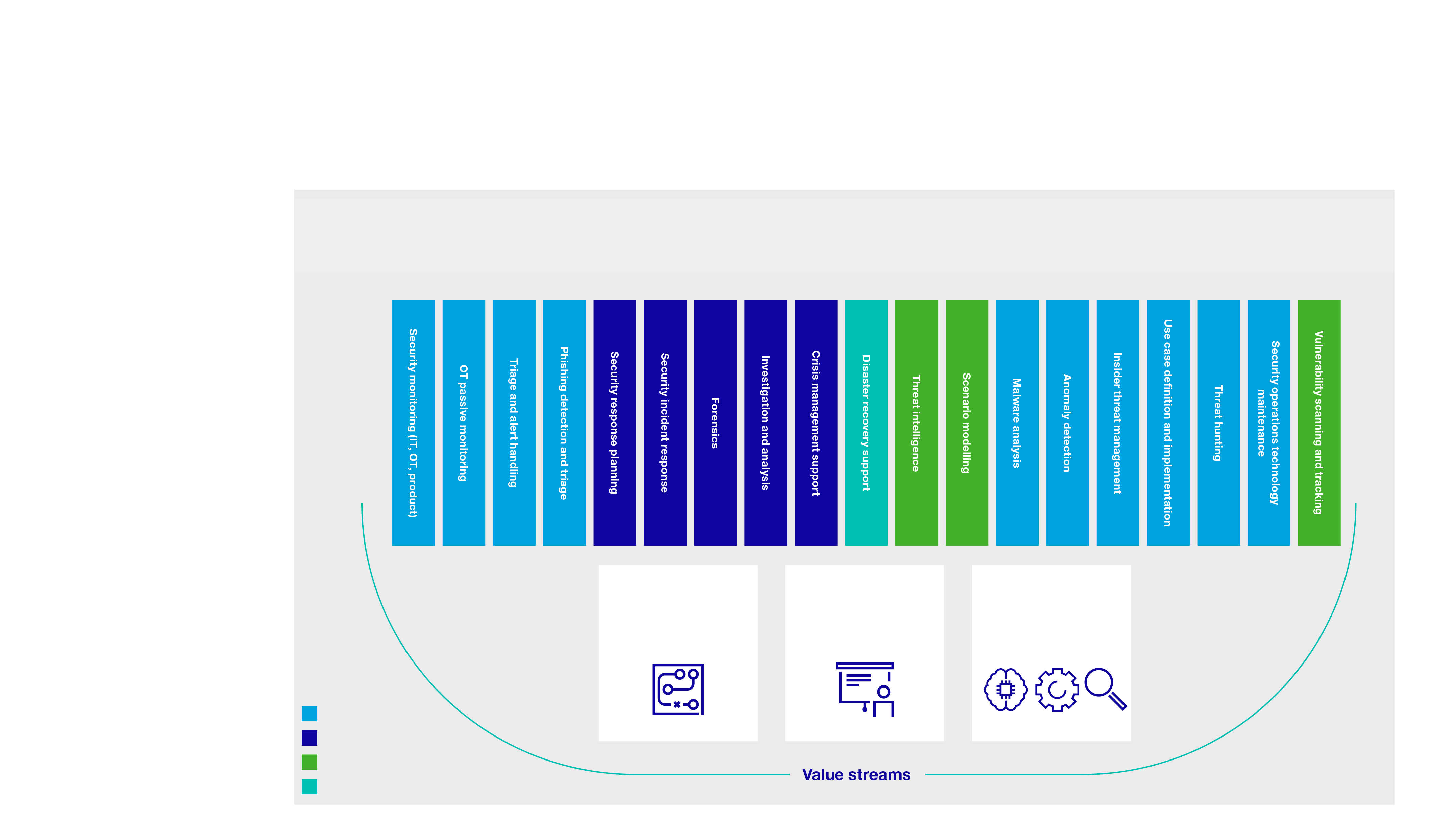
Information security resilience framework | Cyber defense center services | Services overview and value streams; includes (mapping of) ASML Security Strategy | ||||||||||||||||||||||||||||||||||||||||||||||||||||
Our vision is that security, including cybersecurity, needs to be embedded in the DNA of our people, processes and technologies. We have accordingly created a dedicated security function to ensure that we manage security risks. The security risk assessment process, which includes cybersecurity, is part of ASML's ERM process and follows the governance structure, with Corporate Risk Committee (CRC) as oversight committee mandated by the Board of Management. The CRC monitors risk prevention, detection, mitigation and remediation related to cybersecurity on a regular basis. We believe each member of the CRC is qualified to advise on the oversight of cybersecurity risks through their employment experience and /or educational background in risk management. The CRC regularly reports to the Audit Committee of the Supervisory Board on prevention, detection, mitigation and remediation of cybersecurity threats and responses thereto as well as the internal processes. | ||||||||||||||||||||||||||||||||||||||||||||||||||||||
Services | ||||||||||||||||||||||||||||||||||||||||||||||||||||||
Global security incident management | Digital forensics | Threat intelligence and reporting | Anomaly detection information access | Threat hunting | Security control management and engineering | Vulnerability identification | ||||||||||||||||||||||||||||||||||||||||||||||||
Capabilities | ||||||||||||||||||||||||||||||||||||||||||||||||||||||
Incident response and investigation | Threat intelligence and reporting | Data science engineering and threat hunting | ||||||||||||||||||||||||||||||||||||||||||||||||||||
Read more in How we manage risk | ||||||||||||||||||||||||||||||||||||||||||||||||||||||
Threat detection | ||||||||||||||||||||||||||||||||||||||||||||||||||||||
Security response | ||||||||||||||||||||||||||||||||||||||||||||||||||||||
Threat intel and testing | ||||||||||||||||||||||||||||||||||||||||||||||||||||||
Continuity and recovery management | ||||||||||||||||||||||||||||||||||||||||||||||||||||||
ASML ANNUAL REPORT 2023 | GOVERNANCE CONTINUED | STRATEGIC REPORT | CORPORATE GOVERNANCE | FINANCIALS | 166 | |
ESG integrated governance (continued) | ||||||
Information security (continued) | ||||||
ASML has implemented processes to identify and
respond to cybersecurity threats in accordance with
standards set by the International Organization for
Standardization (ISO 27002), International Society of
Automation (ISA/IEC 62443) and the US National Institute
of Standards and Technology (NIST Cybersecurity
Framework). We have a dedicated team that deploy
these procedures to increase our resistance strength and
to minimize exploitable vulnerabilities, e.g. by monitoring
threats, assessing our vulnerability through testwork, and
defining incident responses. For an overview of the
processes and capabilities see overview on page before.
In the event of a threat which materializes an identified
risk, such as a material cybersecurity incident, the
Corporate Crisis Management Team (CCMT) verifies the
materiality assessment, the proposed threat response
and the disclosure requirements. The CCMT is chaired
by the COO, who reports to the BoM on the proposed
response of ASML to such individual crisis situations. The
BoM ultimately takes the decision on the risk response
and reports out to the Supervisory Board.
The Chief Information Security Officer (CISO) coordinates
the response on information security risks, which include
cybersecurity threats, as the second line of responsibility,
with the security teams in the business being the first line of
responsibility.
All three layers of our security governance framework (the
Security Committee, the Security Function Management
team and the Security Expert team) comprise
representatives from the business.
1.Security Committee is responsible for ensuring and
promoting the integration of security risk management
methodologies and related controls in ASML’s
business processes
2.Security Function Management team ensures the
implementation and execution of security risk
management methodologies and related controls in
ASML’s business processes
3.Security Expert team is responsible for determining the
risk and control strategies and for generating input for
tactical plans, by providing content expertise and by
setting requirements
This governance framework enables cross-disciplinary
alignment internally (horizontal and vertical) through
structured, periodic meetings and ensures integration
throughout our broader risk management profile.
Besides evaluation by our Internal Audit department,
ASML has engaged several third parties to evaluate
security capability and maturity, and to provide expertise
as well as temporary resources to assess the processes
describing the identification and the management of
material cybersecurity risks. Some examples of these
engagements are: external validation of security
management system, capability assessments, red
teaming, penetration testing and tabletop exercises.
In order to oversee and identify risks from material
cybersecurity threats associated with ASML's use of
third parties, any such third-party service providers need
to comply with ASML Security Controls, which is part of
the Supplier Security Policy. ASML assesses and
monitors these providers following a risk-based
approach.
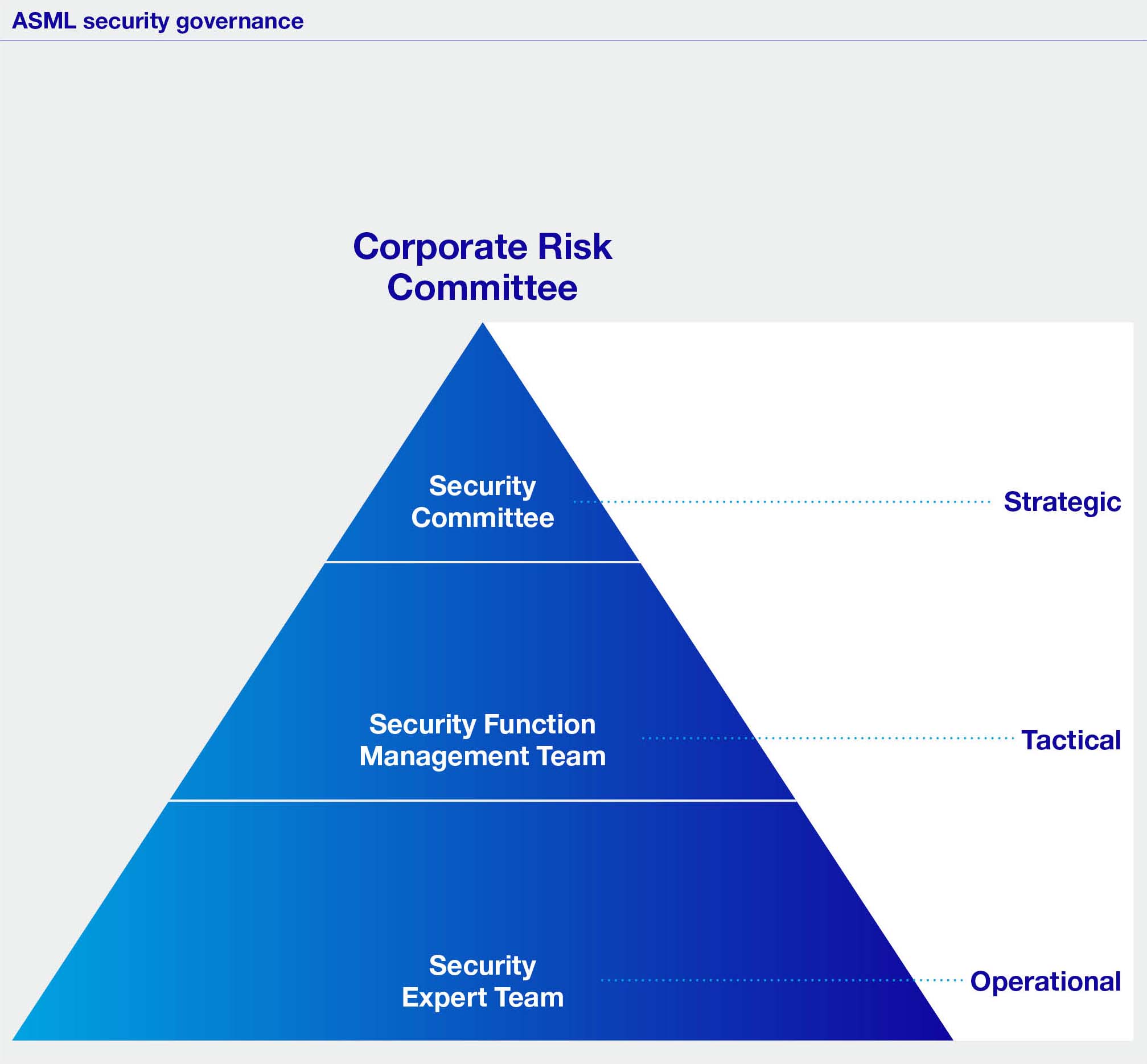
ASML ANNUAL REPORT 2023 | GOVERNANCE CONTINUED | STRATEGIC REPORT | CORPORATE GOVERNANCE | FINANCIALS | 167 | |
ESG integrated governance (continued) | ||||||
Information security (continued) | ||||||
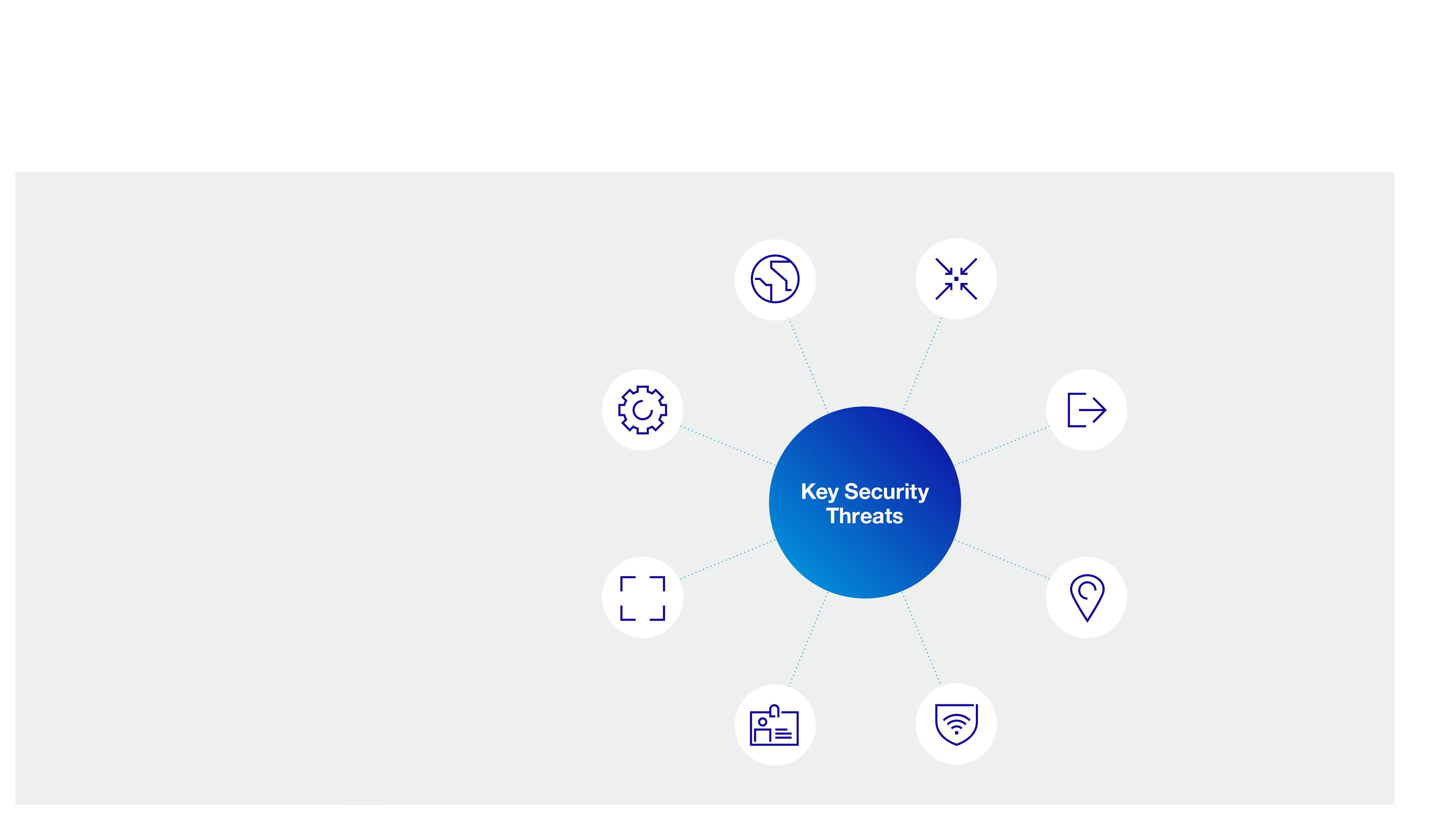
Development of key security threats | |||||||||||
Geopolitical tension | Increased external collaboration and reliance on suppliers | ||||||||||
Increased protectionism of local markets and stronger compliance requirements on IP protection | |||||||||||
Increased IP and business continuity risks due to less mature attention to security in our interconnected and digitized supply chain | |||||||||||
Given the growth of the company, and the complex and dynamic threat landscape, ASML requires a best-in-class security function with security competences, governance and capabilities in order to manage the security threats and risks. | |||||||||||
Ransomware | Stakeholder and customer compliance requirements | ||||||||||
Increased visibility and financial footprint makes ASML more attractive as a ransomware target for criminals | |||||||||||
Increasing demands to protect (customer) data and IP due to cascaded requirements along the supply/value chain | |||||||||||
Industrial espionage | Reverse engineering of IP | ||||||||||
Increased exposure to industrial espionage due to the growing geopolitical pressures and the position of our unique technology in the world | Increasing portfolio share from software development and commercialization of software increases the risk of reverse engineering of ASML IP | ||||||||||
Insider threats | Emerging technologies | ||||||||||
Risks of insiders maliciously or unintentionally abusing or leaking key company data | Increased use of emerging technologies such as cloud computing, virtual reality and big data analytics introduces new risks for ASML | ||||||||||
ASML ANNUAL REPORT 2023 | GOVERNANCE CONTINUED | STRATEGIC REPORT | CORPORATE GOVERNANCE | FINANCIALS | 168 | |
ESG integrated governance (continued) | ||||||
Information security (continued) | ||||||
Privacy protection
We are committed to respecting and protecting the
privacy rights of employees, customers, suppliers, job
applicants and everyone we do business with. We
embed privacy controls in the relevant components of
our company's infrastructure (including systems,
applications and databases) and processes (such as
project management). Personal data is managed in a
professional, legal and ethical way in compliance with our
Code of Conduct and applicable laws and regulations.
Our Privacy Policy sets minimum requirements from the
perspective of ASML as a global organization. The policy
is binding for all ASML employees and applies to the
processing of personal data of our staff, job applicants
and business partners such as customers, suppliers,
visitors and other individuals. Employees are educated
about the Privacy Policy through the Privacy Awareness
program, which includes mandatory computer-based
training and additional ad hoc training and workshops
conducted by the Privacy Office.
A dedicated privacy and personal data protection
program ensures that we adhere to high standards of
personal data protection. Among other elements, the
program covers:
•Governance: At senior management level, the CRC is
responsible for oversight of the topic of privacy, while
the Privacy Office manages the privacy framework and
provides assistance and guidance. Each employee is
responsible for reading and understanding the content
and implications of the Privacy Policy.
•Systems and procedures: The privacy controls
framework consists of privacy activities including data
protection impact assessments and recording of
processing activities. The privacy controls framework is
included in our ERM process.
•Investigative actions: We investigate all incidents,
concerns and reports of potential personal data
breaches that have a potential privacy impact, as
outlined in our personal data breach procedure. We
take appropriate actions to contain data breaches and
assess potential risks to individuals, based on how
substantial they are and how likely they are to happen.
•Audit: Privacy is included in our internal audit program.
The Internal Audit team periodically audits systems and
procedures owned by the Privacy Office.
In 2023, we updated our Global Privacy Notices for
workers, job applicants, business partners and visitors.
The new privacy notices reflect the latest processing of
personal data within ASML and meet the requirements of
the applicable privacy laws and regulations, for example
GDPR (EU) and CCPA (US).
In 2023, we experienced data breaches which have been
assessed, rated in terms of impact, solved and – when
necessary – reported to the relevant data protection
authorities.
Export control and sanctions
We are committed to complying with all applicable export
control and sanctions laws globally. Employees are
required to follow our policies and procedures, which are
designed to promote compliance and prevent
unauthorized transactions. In addition, we have
implemented IT controls and other measures intended to
protect against inadvertent breaches of export control
and sanctions requirements.
We continually focus on strengthening and enhancing the
key pillars of our export control & sanctions compliance
framework:
Governance: At senior management level, the CRC,
supported by the Export Control Council, oversees the
efficiency and effectiveness of the company's export
control and sanctions compliance framework. The global
Export Control & Sanctions team manages the export
control & sanctions compliance framework and provides
assistance and guidance to the business. Each
employee is responsible for reading and understanding
the content and implications of the Export Control &
Sanctions Policy.
Compliance organization: We ensure that our Export
Control & Sanctions compliance organization is
sufficiently staffed and trained to ensure that the
company's growing business, and the increasingly
complex regulatory landscape it is being challenged with,
is supported with adequate export control and sanctions
expertise and experience. During 2023, the team
expanded and hired experienced new staff in the US, the
Netherlands and Asia.
Policies and procedures: We embed export control
and sanctions controls in all relevant business processes.
We regularly assess the effectiveness of our policies,
procedures, systems and controls, updating them as
necessary. In 2023, we updated our policies, procedures
and systems in view of the additional export controls that
have been imposed on semiconductor manufacturing
items by the Japanese, Dutch and US governments.
Training: We focus on increasing awareness of the
importance of export control and sanctions compliance
through continuous briefings and (general awareness and
dedicated) training of all ASML employees. During 2023
we updated the mandatory online training.
Audit: Export control and sanctions compliance is
included in the company's internal audit program. The
Internal Audit team periodically audits key export control
and sanctions risk areas.
Following a security incident experienced by the
company in late 2022, we submitted a voluntary self-
disclosure to the relevant government agencies, as
certain export control regulations may have been
violated.
ASML ANNUAL REPORT 2023 | GOVERNANCE CONTINUED | STRATEGIC REPORT | CORPORATE GOVERNANCE | FINANCIALS | 169 | |
ESG integrated governance (continued) | ||||||
Information security (continued) | ||||||
Intellectual property protection
Our company is based on people and knowledge. Our
specific knowledge gives us a leading edge and a head
start over competitors. To stay in business, it is key that
we protect our own knowledge as well as the information
entrusted to ASML by our customers and business
partners.
Patents are a way to protect ASML’s R&D investments
from unauthorized use by third parties, including
exploitation by our competitors, customers, suppliers
and co-developers. We innovate and develop our
technology with our ecosystem partners, which comprise
many different companies and institutions, each of which
requires a dedicated way of dealing with intellectual
property matters.
ASML’s general intellectual property (IP) strategy has
three objectives:
•Build and maintain a solid intellectual property portfolio
by protecting ASML’s inventions
•Prevent situations where ASML infringes the IPR of
third parties
•Prevent the unauthorized disclosure of confidential
information, including know-how and trade secrets, to
the outside world
Processes are in place to address these objectives. The
objective of preventing unauthorized disclosure is
addressed by, among others, a dedicated knowledge
protection program, restricted access to engineering top
secrets, an information security program, mandatory
information classification, and a training and awareness
program.
Our Corporate Intellectual Property department is tasked
with strengthening our global IP position. The
department’s mission is to maximize ASML’s intellectual
property value, to execute and support ASML’s overall
objectives and to preserve ASML’s freedom of operation.
To protect our technology leadership and our R&D in
leading-edge technology, the department is involved in
the product generation process and assesses new
products to determine whether they would potentially
infringe any relevant third-party IPR.
We have adopted controls, policies and procedures to
safeguard the protection of our trade secrets, proprietary
customer data, and other information, and in order for us
to comply with export controls, economic sanctions and
similar regulations.
Read more in Governance - ESG integrated governance -
Patent portfolio trend | |
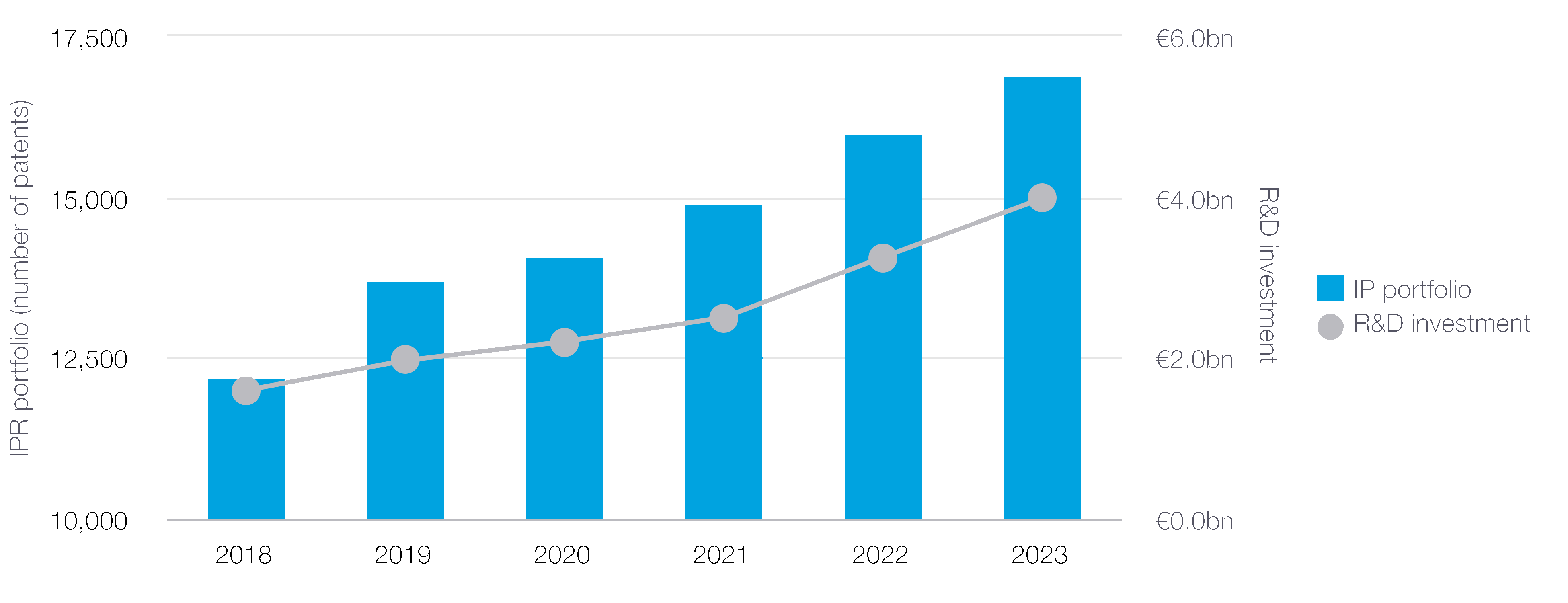
ASML ANNUAL REPORT 2023 | GOVERNANCE CONTINUED | STRATEGIC REPORT | CORPORATE GOVERNANCE | FINANCIALS | 170 | |
ESG integrated governance (continued) | ||||||
Information security (continued) | ||||||
Product safety | |
It is our duty to provide a safe work environment, and we
innovate with safety at the front of our minds.
Challenges in managing product safety
As we have grown, so too has the complexity of our
products and the geographical locations in which we
operate. It has become increasingly complex to assess
which safety legislation and regulations apply to our
products and tools, and which rules and procedures we
need to follow to demonstrate compliance. Some of our
technology is so innovative and new that it is not
immediately clear which regulatory regime applies. Our
designs are often at the cutting edge of technology,
which can mean existing safety standards do not always
provide guidance on how to make a safe design (for
example, high-power drive laser and high-pressure
equipment). This means we must define our own safety
protection method or discuss innovative design with
regulatory authorities.
A further challenge is the need to maintain consistency in
making the design safe when many people are working
on the design of a product, or when the design is
outsourced to a supplier. Our fast shipment process also
means that we may skip some of the testing in the
factory and conduct final testing and formal acceptance
at the customer site. We have had to adapt our way of
working regarding testing product safety as a result.
Finally, with fast-changing legislation on chemicals such
as PFAS (per-and polyfluoroalkyl substances) and RoHS
(restriction of hazardous substances), in combination
with the complexity and number of parts of our products
and a worldwide supply chain, it is a challenge to keep
track of information on chemicals used.
How we manage product safety
We have clear systems and processes in place to
support our approach to product safety. To ensure our
products and tools comply with the most stringent
product safety regulations, we focus on safety at every
stage of a product life cycle: research, design,
development, production, transport, installation,
maintenance, upgrades and decommissioning.
Our Global Product Safety and Regulatory organization is
part of Quality and Excellence, which coordinates the
overall product safety approach within ASML. To support
ASML products, each product line has safety engineers
who are responsible for the product and make a first-
level system risk assessment.
To support safe design, we have defined and
implemented 12 key risk areas and associated product
safety competences in line with the ISO 12100 standard
for achieving safety in the design of machinery, with risk
experts supporting individual projects – please see box-
out to the right. We are also extending our global
expertise by hiring country safety regulatory experts.
Our product safety competences | ||||
The role of each of our D&E safety competence leads is to provide thorough knowledge about background legislation and standards applicable in their area, define design rules, provide training and act as consultants to mitigate specific safety hazards in our products. Electrical: Making an electrical design safe and protecting people from electrical shock. This involves making conductors carrying hazardous voltage inaccessible, ensuring that accessible conductors do not carry hazardous voltages and that inaccessible conductors are sufficiently insulated from accessible ones through compliance with corresponding regulations and standards. Pressure: Interpreting and explaining local legislation and standards, advising on testing and documentation and maintaining the manufacturing record book which is needed for a high-pressure permit in certain countries. Human factor engineering (including ergonomics): Incorporating a human-centered design approach to maintain access for maintenance and servicing by laying down rules for issues such as accessibility, posture, forces and the lifting of parts. Mechanical: Keeping track of safety factors and seismic requirements for our machines. Lifting: Advising on special requirements (such as the certification and training of crane operators) in countries where we use lifting tools, and when certification is needed. For example, in South Korea certification is required for weights of 500 kg or more. | Working at height: A new area of expertise required during the design of our EXE:5000 – our first EUV 0.55 NA (High NA) system – to guarantee good access to the various system areas and components. Radiation: Focusing mainly on lasers with intensities that go beyond standard, as well as considering the impacts of standard and special lamps and LEDs. Dangerous goods: Preventing shipments being stopped due to requirements for transport and the importation of hazardous substances such as chemicals, magnets and batteries. Safety in procedures: Supporting the creation of written safety procedures for complex operations. Thermal: The use of tin at high temperatures requires special precautions to protect people. Dangerous gases: The use of gases requires safety systems and procedures to protect machines and people. For example, nitrogen is an asphyxiation hazard and the use of hydrogen in EUV has additional applicable legislations and standards. Materials and substances: Monitoring worldwide legislation to check the legal status of all materials used on our products and ensuring that we do not use or introduce hazardous materials. | |||
ASML ANNUAL REPORT 2023 | GOVERNANCE CONTINUED | STRATEGIC REPORT | CORPORATE GOVERNANCE | FINANCIALS | 171 | |
ESG integrated governance (continued) | ||||||
Product safety | ||||||
Ensuring safety compliance
The products and tools we develop comply with SEMI
S2 – the Environmental, Health, and Safety Guideline for
Semiconductor Manufacturing Equipment. To ensure
product safety is taken into account at all times, these
guidelines are incorporated into the Safety System
Performance Specification (Safety SPS).
We are SEMI S2-compliant for every product type
shipped. In 2023, a report confirming compliance was
available for every product, and we have a CE
('conformité européenne') declaration of conformity for all
ASML products and tools.
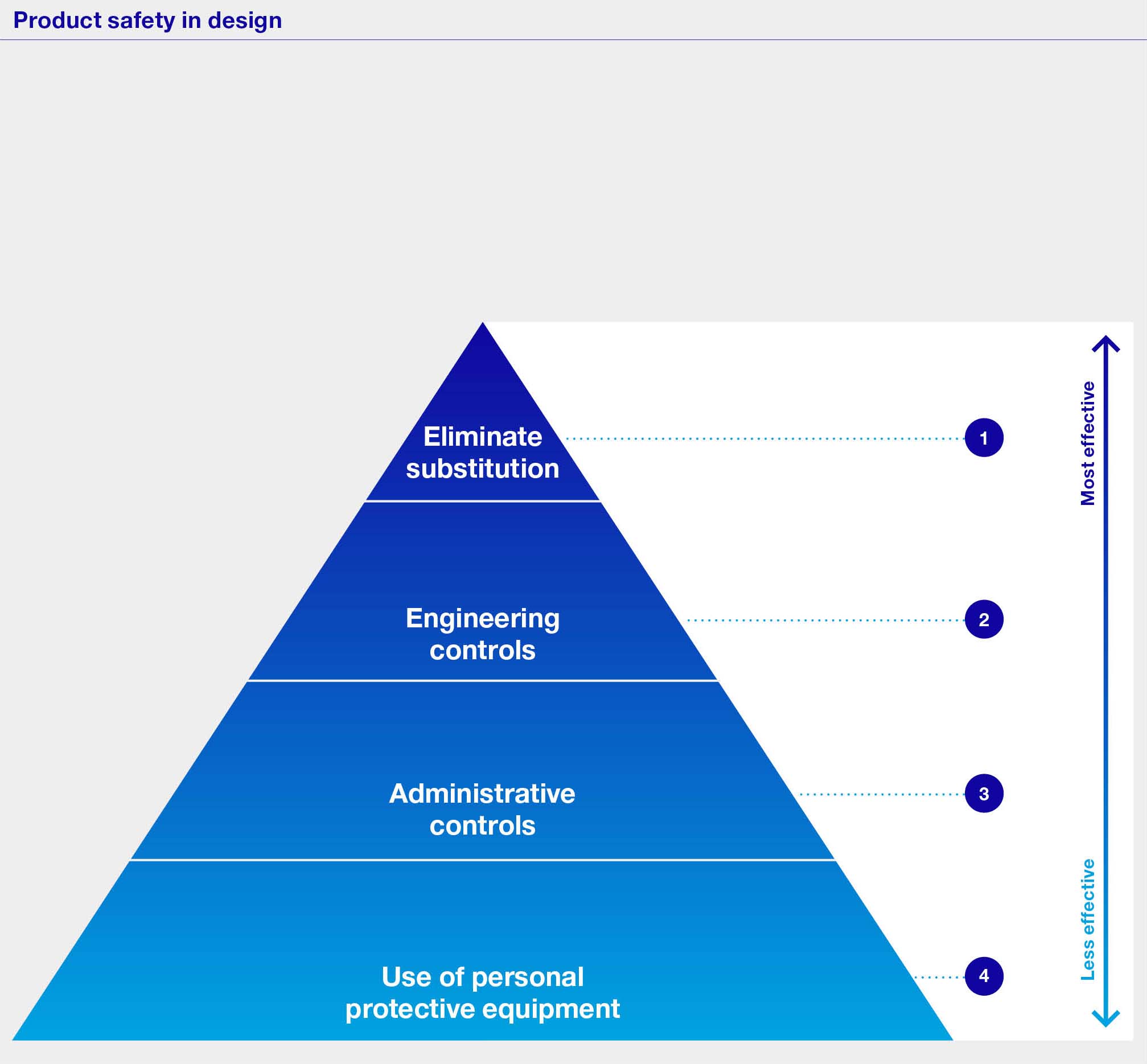
Product safety in design
Prevention is key, and we focus on safety by design in
hardware followed by safety by procedure.
Safe products start with well-thought-out design and
product safety requirements, which are implemented at
the start of initial design. The first step to a human-safe
design is to eliminate risk and protect people by product
design. Since human factors play an important role in the
safe operation of a product, we try to guard against
these becoming a risk factor. This helps prevent
workplace activities from turning into potential accidents.
If there are no safety precautions available to address
potential hazards, we develop our own.
When we start designing our systems, our engineers
conduct an initial safety risk assessment (SRA). Our
product designers are trained to identify safety issues
early on in the design process. The SRA is evaluated
throughout the entire product development process. We
evaluate product safety at each stage of the product life
cycle and track reported product-related incidents
through our incident-reporting system.
ASML ANNUAL REPORT 2023 | GOVERNANCE CONTINUED | STRATEGIC REPORT | GOVERNANCE | FINANCIALS | 172 | |
ESG integrated governance (continued) | ||||||
Product safety (continued) | ||||||
Making progress with EUV 0.55 NA (High NA) safety | ||
Our latest product, EUV 0.55 NA (High NA), is the next generation of EUV machines. The development of the system presented new challenges for product safety due to its larger overall size, height and weight of modules and more complex accessibility. To support the design, we placed extra focus on ergonomics and working at height. Our ergonomic experts use 3D simulations to enable people to practice in various situations, such as working in an awkward position for a longer period of time. The new system features built-in service platforms, which led to the new ‘working at height’ safety competence. Due to the complexity of the system, we split the EU Safety Directives and SEMI S2 review into an initial design review followed by a second inspection of the hardware. Having started the third-party safety design review in 2022, we continued with hardware reviews in 2023, leading up to a full review report by 2024. | ||
Embedding product safety
in the organization
Our Safety and Regulatory Office is tasked with tracking
new product safety legislation and standards and
ensuring that our products are compliant. The Regulatory
Board is responsible for decision-making on ASML
product safety compliance, the strategy to eliminate non-
compliance, monitoring compliance status and risk
mitigation. The Regulatory Board discusses possible
non-compliance cases and takes decisions based on the
mitigation plan presented.
Increasing product safety
in the supply chain
We ensure that product safety does not end at our own
facilities by promoting product safety in the supply chain.
Safety is a key priority for ASML, and we want to be sure
that all the products that we ship comply with the most
stringent legislation, including the designs that are made
and supplied by our suppliers in the value chain. A
significant proportion of our innovation and development
takes place at our suppliers’ sites. Our goal is to ensure
suppliers have the capability to deliver a safe and
compliant product, so that we can avoid safety accidents
or incidents, safety-related non-compliance issues and
delayed shipments. We have defined an end-to-end
process in close cooperation with our suppliers, ensuring
that deliveries meet our safety requirements.
Dangerous goods management
Following the successful completion of our Dangerous
Goods program, dangerous goods management is now
structurally embedded across our organization. Policies,
processes, guidelines and IT infrastructure are in place to
enable dedicated specialists to manage dangerous
goods as part of our competence groups. Hazardous
properties are identified at an early stage in the design
process to ensure measures are taken for the safe
handling, transport and storage of our products on time
and with greater efficiency. Activities are overseen by the
safety and compliance organization to safeguard the
active control of regulations and legislation impacting
ASML products.
Materials and substance compliance
We follow the most stringent or leading regulations in the
markets where we operate, currently but not limited to
RoHS, REACH (Registration, Evaluation, Authorization
and Restriction of Chemicals) and Batteries Directive in
the EU, K-REACH (Act on the Registration and
Evaluation of Chemicals) in South Korea or TSCA (Toxic
Substances Control Act) in the US.
We have implemented multiple initiatives to overcome
compliance challenges. These help to address the
increasing number of changes in the regulatory
landscape, the number of unique parts used in our
products (>50,000), the number of regulated substances
we use (>100) and the extensive reach of our global
supply chain.
Activities in 2023 included:
•A multidisciplinary program embedding processes
throughout our organization – improving our IT
solutions, enabling automated supply chain
communication and delivering flexible reporting
capabilities
•A global safety focus to strengthen our
communications with new local safety expert teams
and establish a regulatory intelligence team
•A proactive approach toward upcoming regulations
such as PFAS, TSCA and the REACH directive by
taking part in the semiconductor industry working
groups, through our membership of the PFAS
Consortium, by working with our business partners and
the supply chain, and by establishing a working
relationship with a well-respected firm of consultants
ASML ANNUAL REPORT 2023 | GOVERNANCE CONTINUED | STRATEGIC REPORT | GOVERNANCE | FINANCIALS | 173 | |
ESG integrated governance (continued) | ||||||
Product safety (continued) | ||||||
Why it matters | |
With the upcoming regulations – in particular the EU
CSRD, which comes into force for us over the
financial year 2024 – companies are now required to
be more transparent with stakeholders and to
provide more standardized and comparable
information.
Being transparent about our progress and
performance allows stakeholders to make a fair
assessment of how we are performing on our
strategy execution and how we compare with other
companies.
Reporting in a balanced way | |
Reporting in a balanced way improves the credibility
of our disclosures and also helps to drive our
progress by identifying areas of best practice and
areas for improvement. It also helps us to improve
our internal reporting and make informed decisions.
While we already report extensively on our progress,
there are many gaps we must fill to meet CSRD
requirements. We aim to be ready for CSRD for the
2024 reporting year. This will involve many parties
inside and outside ASML in order to expand the
scope of our reporting and improve the quality of the
data.
ASML is committed to building a fairer, more
sustainable society through social and economic
cohesion, sustainable growth and long-term
prosperity. Taxation is a means to that end, as it
supports the development of the countries in which
we operate. For this reason, openness and
transparency about our approach to tax is an
important aspect of our reporting.
ASML ANNUAL REPORT 2023 | GOVERNANCE CONTINUED | STRATEGIC REPORT | CORPORATE GOVERNANCE | FINANCIALS | 174 | |
Transparent reporting | ||||||
To build vital relationships of trust with our stakeholders, we show our commitment to act on our responsibilities and progress toward achieving our goals in sustainable development via transparent reporting. | ||||||
Why it matters | |
Collecting taxes and fees is a fundamental way for countries
to finance investments in human capital, infrastructure and
the provision of services for citizens and businesses. The
taxes we pay make a valuable contribution to the
communities in which we operate and are an integral part of
our responsibility for social value creation.
We are committed to compliance with tax laws and
regulations, including the timely payment of all the taxes
that we are due as a company.
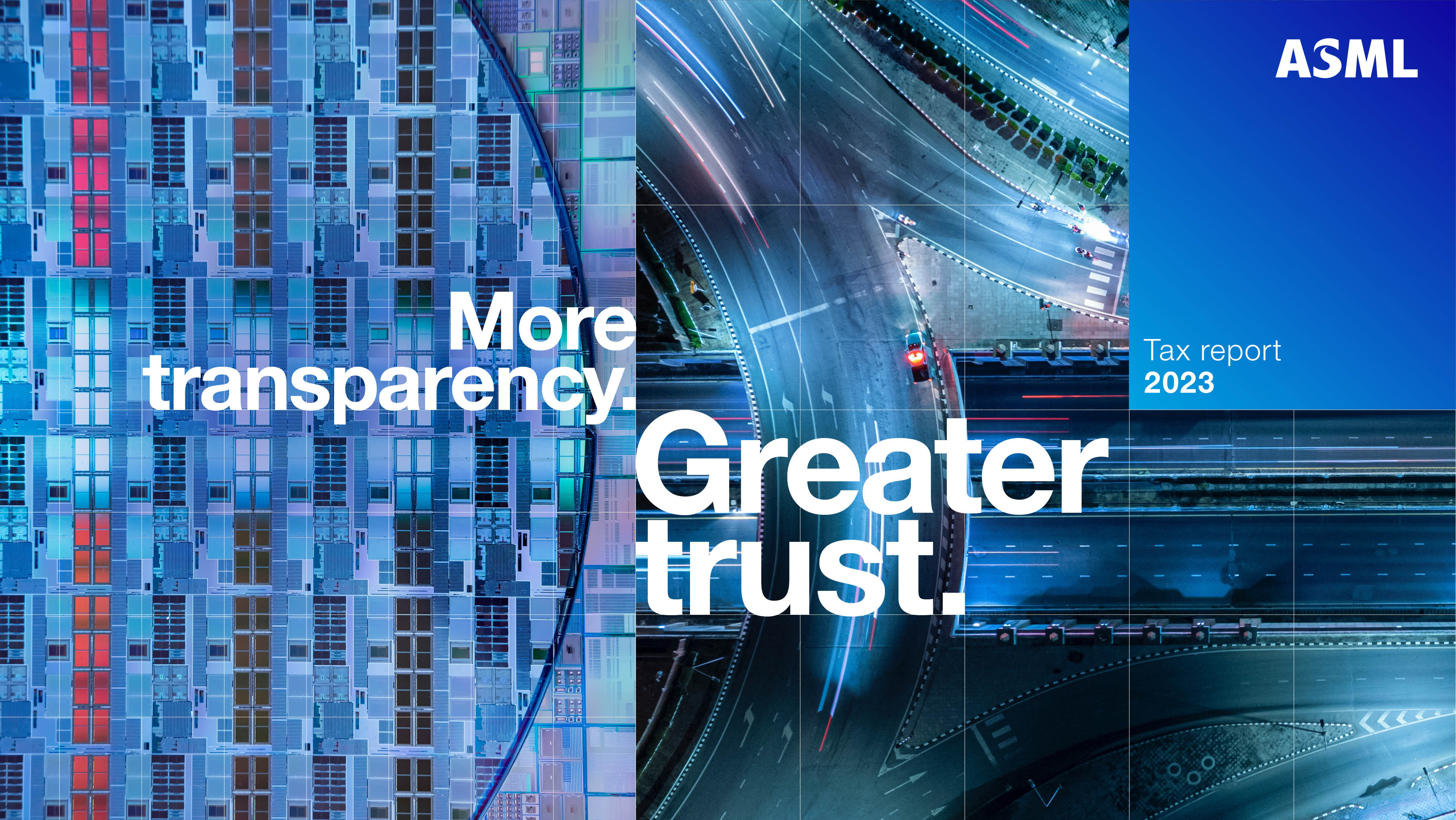
Read more in our Approach to tax report at asml.com
 | 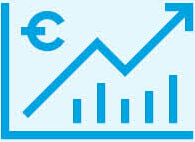 | |||
€2.6bn | 15.8% | |||
Income tax paid 2023 | Effective tax rate 2023 | |||
(€1.7bn in 2022) | (15.0% in 2022) | |||
How we’re managing our impact | |
Our dedicated report on ASML’s ‘Approach to tax’
provides information on our operating model, tax
principles and tax strategy, including how we interact
with our stakeholders. It also includes financial
information from a country-by-country reporting (CBCR)
perspective and our tax contribution to society.
Last year, we signed up to the Tax Governance Code of
the Confederation of Netherlands Industry and
Employers (known as VNO-NCW) in support of the call
for companies to respond to shifting expectations from
policymakers, NGOs and the general public. The Tax
Governance Code should contribute to transparency on
the tax position of Dutch listed companies.
Our leading principle is that our tax position reflects our
business operations, being the sale of lithography
systems and related products and services, supported
by our manufacturing and R&D activities.
ASML has a straightforward operating model with our
campus in Veldhoven, the Netherlands, at the heart of
our global operations.
The Board of Management is accountable for ASML’s
tax strategy, tax principles and the overall tax risk
management, which are subsequently reviewed by the
Audit Committee.
The ASML Tax & Customs department is responsible for
the execution of the ASML tax strategy set by the Board
of Management.
Income tax paid in our five most significant countries of operation |
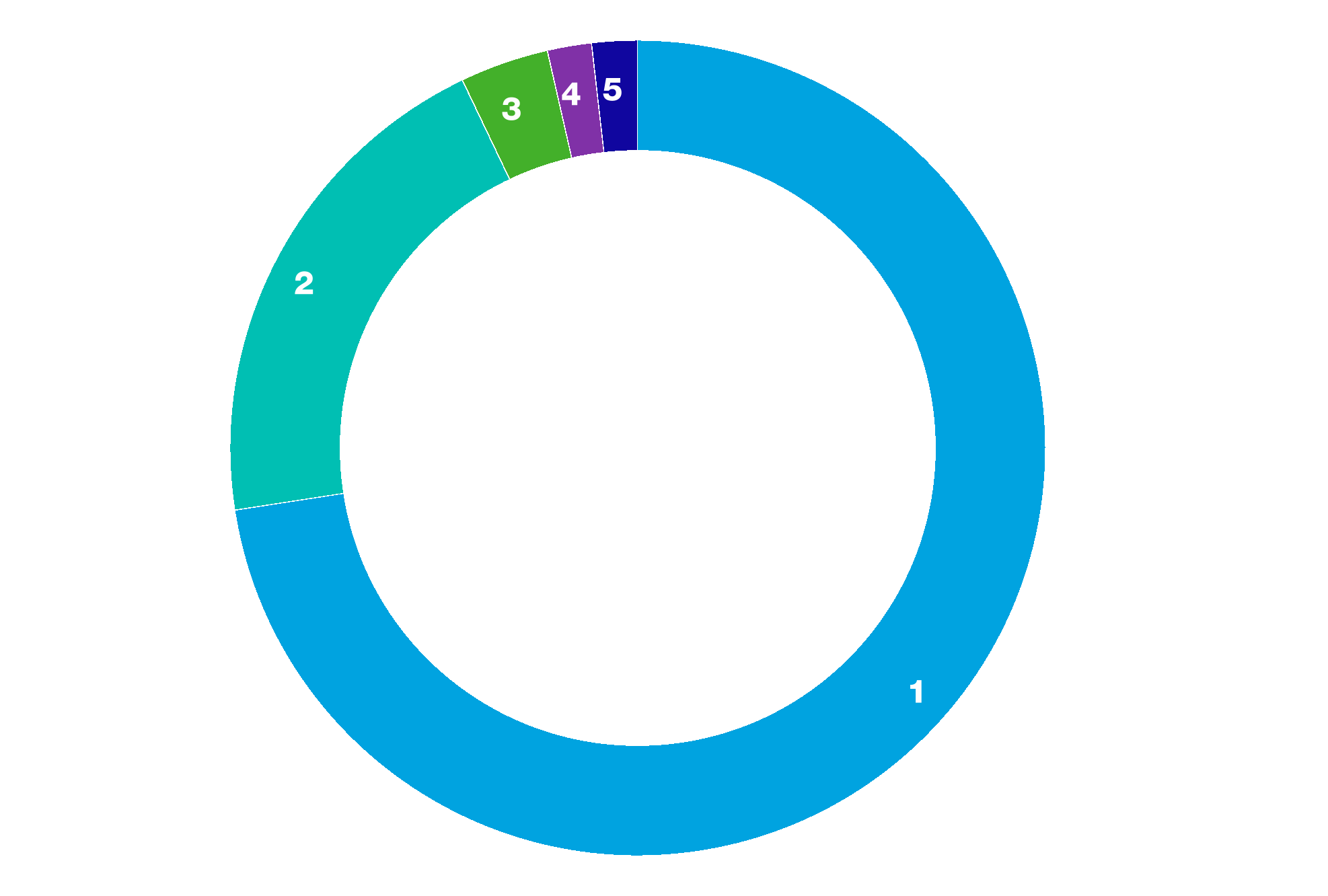
1. Netherlands | €1,826m |
2. United States | €513m |
3. Taiwan | €88m |
4. South Korea | €44m |
5. China | €46m |
ASML ANNUAL REPORT 2023 | GOVERNANCE CONTINUED | STRATEGIC REPORT | CORPORATE GOVERNANCE | FINANCIALS | 175 | |
Our approach to tax | ||||||
Openness and transparency about our approach to tax is important and is supported by our overall business and ESG sustainability strategy. | ||||||
Our tax principles | ||
The following principles guide us in how we report and pay tax in the countries where we operate. | ||
Compliance | ||
•We respect the tax laws applicable in each country. We are committed to act in accordance with the letter, intent and spirit of tax laws and regulations •We make tax disclosures in accordance with reporting requirements, US GAAP and IFRS •ASML’s profit allocation methods are based on internationally accepted standards as published by the OECD. We apply these consistently across our business, contingent on the relevant rules and regulations in the local jurisdictions we operate in | ||
Support tax systems | ||
•We report taxable income in a jurisdiction commensurate with the added value of the business activities in that jurisdiction •We do not use so-called tax havens (as defined by the European Commission’s ‘blacklist’) for tax avoidance | ||
Relationships with authorities | ||
•We pursue an open and constructive dialogue with the tax authorities, and other relevant authorities, in the jurisdictions we operate in, based on mutual respect, transparency and trust, disclosing all relevant facts and circumstances. We do not use tax structures intended for tax avoidance, nor will we engage in the artificial transfer of profits to low- tax jurisdictions | ||
Our tax strategy | |||||||||
ASML’s tax strategy is based on our tax principles and is closely aligned to our business strategy and our sustainability goals. The tax strategy is approved by the Board of Management. The tax strategy, tax principles and overall tax risk management apply to all group entities. | 1 | 2 | |||||||
Stakeholder management | The future of taxation | ||||||||
Externally, we communicate on a regular basis with tax authorities, regulators and investors, among others. Internally, we support our business in managing risks, staying in control and at the same time remaining efficient in its administrative procedures and way of working. We work in an integrated way with other experts within ASML. | We closely monitor the developments in ESG (including tax transparency) and tax technology in the world and continuously translate these into potential requirements or implications for ASML. | ||||||||
3 | 4 | 5 | |||||||
Compliance and control | Tax and customs organization | Projects | |||||||
We develop, implement and continuously monitor processes and controls for appropriate tax risk management and reporting purposes. Furthermore, we ensure timely and accurate fulfillment of tax compliance obligations in line with applicable tax laws and regulations, including the timely payment of taxes due. | In a fast-changing world, it is important to have a diverse team which can handle change and consists of more than just competent tax and customs experts. Communication, digital and project management skills have become increasingly important. We strive to work together and develop each other in line with ASML’s values – challenge, collaborate and care. | Our business and the regulatory environment in which we operate change constantly. We work on projects that deal with these changes to ensure the solutions implemented are compliant and efficient. Likewise, we continuously strive for simplification and review of existing business models to ensure we remain tax and customs compliant. | |||||||
ASML ANNUAL REPORT 2023 | GOVERNANCE CONTINUED | STRATEGIC REPORT | GOVERNANCE | FINANCIALS | 176 | |
Our approach to tax (continued) | ||||||

Overview | Corporate Governance | Supervisory Board Report | Remuneration Report | ||||||||||||||||||||||||||||
These pages provide an overview of and a brief introduction to the Corporate Governance section of our Annual Report. | |||||||||||||||||||||||||||||||
In our Corporate Governance section we report on ASML's corporate governance structure and the way ASML applies the principles and best practices of the Dutch Corporate Governance Code. | –Governance structure –Board of Management –Supervisory Board –Board-related matters –AGM and share capital –Financial reporting and audit –Compliance with governance requirements | This report outlines the activities of the Supervisory Board and its committees, as well as the key focus areas for 2023. | Here we explain the progress made during the year regarding our commitment to fair and balanced remuneration, including our work to increase the level of transparency around how we reward management in order to attract the right talent. | ||||||||||||||||||||||||||||
–Message from the Chair –Supervisory Board –Board focus in 2023 –Meetings and attendance –Composition, training and evaluation –Supervisory Board Committees –Audit committee –Technology committee –Selection and Nomination Committee | –Message from the Chair –Remuneration committee –Board of Management remuneration –Supervisory Board remuneration | ||||||||||||||||||||||||||||||
Our strategy | |||||||||||||||||||||||||||||||
1 | Grow our holistic lithography business |  | |||||||||||||||||||||||||||||
2 | Secure unique supply chain capabilities to ensure business continuity | 3 | Move toward adjacent business opportunities | 4 | Deliver on our ESG sustainability commitments | ||||||||||||||||||||||||||
Message from the Chair of our Supervisory Board | Message from the Chair of Remuneration | ||||||||||||||||||||||||||||||
Our business model | Stakeholder engagement |  | 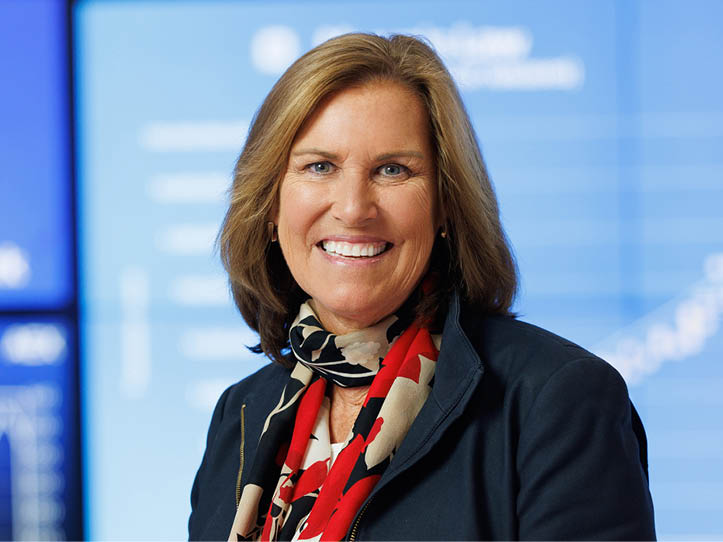 | ||||||||||||||||||||||||||||
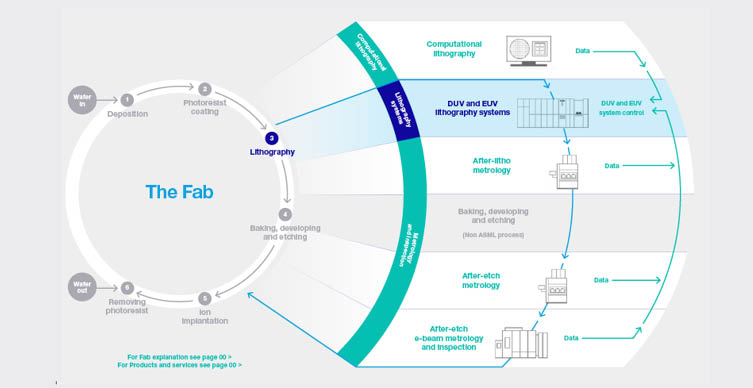 | 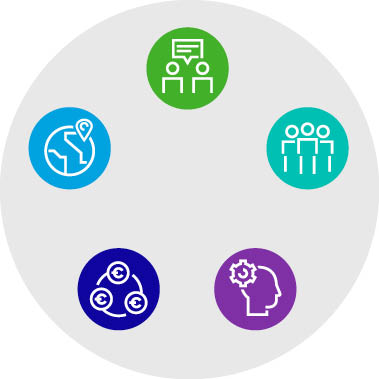 | ||||||||||||||||||||||||||||||
Customers Employees Suppliers Shareholders Society | |||||||||||||||||||||||||||||||
ASML ANNUAL REPORT 2023 | CORPORATE GOVERNANCE | STRATEGIC REPORT | CORPORATE GOVERNANCE | FINANCIALS | 177 | |
Corporate Governance at a glance | ||||||
We champion integrated corporate governance to build a relationship of trust, respect and mutual benefit with our stakeholders. | ||||||
Sustainable long-term value creation | ||||||
Principles and best practice provisions | Reference | |||||
•In creating sustainable long-term value, the Board of Management takes into account the effects of the company’s operations on people and the environment, and has concrete sustainability targets. | ||||||
•Pays a fair share of tax to the countries in which it operates. | Page 175 | |||||
•The annual report explains the effects of its products, services and activities on people and the environment. How stakeholder interests have been taken into account, and whether targets set have been achieved. | ||||||
•The Supervisory Board oversees the above. | ||||||
Diversity & Inclusion | ||||||
Principles and best practice provisions | Reference | |||||
•ASML has adopted a D&I policy for the Board of Management, a D&I policy for the Supervisory Board, and a separate group D&I policy, applying to its workforce including senior management. As part thereof, ASML has set concrete, appropriate and ambitious goals on gender diversity and other relevant D&I aspects for the company with regard to the composition of Board of Management, Supervisory Board and senior management. | Page 185 | |||||
•The annual report explains the company’s D&I policy and application including results achieved in the reporting year, and includes insights about inflow, promotion and retention of employees to the extent relevant and possible. | Page 185 | |||||
Dialogue with stakeholders and ASML's stewardship | ||||||
Principles and best practice provisions | Reference | |||||
•The company adopts a policy for effective dialogue with relevant stakeholders to ensure the sustainability aspects of the strategy are taking their interests into consideration. | ||||||
•The company adopts an outline policy for bilateral contacts with stakeholders. | ||||||
•Both policies are put on the website. | ||||||
•The company is to facilitate the dialogue, but only where appropriate. | Page 37 | |||||
Other | ||||||
Principles and best practice provisions | Reference | |||||
•Supervisory Board report to set out the findings of the Board of Management and Supervisory Board evaluations. | Page 196 | |||||
•These evaluations are periodically required to take place under the guidance of an external expert. | Page 204 | |||||
•While the Code does not require a designated digital or sustainability director, every Board of Management and Supervisory Board member has close involvement with these topics, and it be a consideration in terms of composition and training. | ||||||
•New additions to the code emphasizing the role of the internal audit. | Page 194 | |||||
•The remuneration report should explain how the policy contributes to sustainability and sets out how the scenario analysis have been taken into consideration. | Page 219 | |||||
ASML ANNUAL REPORT 2023 | CORPORATE GOVERNANCE CONTINUED | STRATEGIC REPORT | CORPORATE GOVERNANCE | FINANCIALS | 178 | |
Applying the 2022 Dutch Corporate Governance Code | ||||||
We have outlined the main changes of the new code in the table below and provided references to where in the annual report we are addressing the principles and best practices provisions. | ||||||
We endorse the importance of good
corporate governance, of which
independence, accountability and
transparency are the most significant
elements. These are also the elements on
which a relationship of trust between us
and our stakeholders can be built.
ASML Holding NV is a public limited liability company
operating under Dutch law. ASML’s shares are listed on
Euronext Amsterdam and Nasdaq.
We have a two-tier board structure, consisting of a
Board of Management responsible for managing the
company, and an independent Supervisory Board which
supervises and advises the Board of Management. For
the fulfillment of their duties, the two Boards are
accountable to the General Meeting, the corporate body
representing our shareholders.
Our governance structure is based on ASML’s Articles of
Association, Dutch corporate and securities laws and the
Dutch Corporate Governance Code. Because we are
listed on Nasdaq, we are also required to comply with
applicable provisions of the Sarbanes-Oxley Act, the
Nasdaq Listing Rules and the rules and regulations
promulgated by the US Securities and Exchange
Commission.
We are subject to the relevant provisions of Dutch law
applicable to large corporations (structuurregime). These
provisions have the effect of concentrating control over
certain corporate decisions and transactions in the hands
of the Supervisory Board. Procedures for the
appointment and dismissal of Board of Management and
Supervisory Board members are based on the
structuurregime.
This section of the Annual Report addresses our
corporate governance structure and the way ASML
applies the principles and best practices of the Dutch
Corporate Governance Code. It also provides information
required by the Decree adopting further rules related to
the content of the management report and the Decree
implementing Article 10 of the Takeover Directive.
We signed up to the VNO-NCW Tax Governance Code
and report on the application of its principles in the
section Our Approach to Tax and in our more
comprehensive Approach to Tax Report on our website.
In accordance with the Dutch Corporate Governance
Code (https://www.mccg.nl/english), other parts of this
Annual Report address our strategy and culture aimed at
sustainable long-term value creation, our values and
Code of Conduct, as well as the main features of our
internal control and risk management systems.
On December 20, 2022, the new Dutch Corporate
Governance Code was published, which applies to the
financial years starting on and after January 1, 2023. As
part of the continued effort of our Supervisory Board and
Board of Management to ensure that our practices and
procedures comply with the relevant principles and best
practice provisions of the Dutch Corporate Governance
Code, we have assessed the implications and, where
necessary, amended our practices and procedures in
order to ensure that we comply with the new Code.
Read more in
ASML corporate governance structure | ||||||||||||||||||||||
Shareholders | ||||||||||||||||||||||
Supervisory Board | ||||||||||||||||||||||
Audit committee | ESG committee | Remuneration committee | Selection and nomination committee | Technology committee | ||||||||||||||||||
Board of Management | ||||||||||||||||||||||
Business sectors | Business functions | Corporate functions | Employee support | |||||||||||||||||||
ASML ANNUAL REPORT 2023 | CORPORATE GOVERNANCE CONTINUED | STRATEGIC REPORT | CORPORATE GOVERNANCE | FINANCIALS | 179 | |
Corporate Governance | ||||||

Our Board of Management is responsible
for managing ASML. Its responsibilities
include establishing a position on the
relevance of sustainable long-term value
creation for ASML and its business,
defining and deploying ASML’s strategy,
establishing and maintaining effective risk
management and control systems,
managing the realization of ASML’s
operational and financial objectives and
the ESG aspects relevant to ASML. In
fulfilling its management tasks and
responsibilities, the Board of Management
is guided by the interests of ASML and its
business and takes into consideration the
interests of its stakeholders.
Our core strategy is to | ||
1 | Grow our holistic lithography business | |
2 | Secure unique supply chain capabilities to ensure business continuity | |
3 | Move toward adjacent business opportunities | |
4 | Deliver on our ESG sustainability commitments | |
The current Board of Management comprises six
members. On November 30, 2023, ASML announced
that per the 2024 AGM the President & CEO and the
President & CTO will retire, that the current Chief
Business Officer will be appointed President & CEO, and
that the Supervisory Board intends to add the role of
Chief Customer Officer to the Board of Management,
underscoring our ambition to continuously increase our
responsiveness to customer needs and to consistently
deliver high-performance products and services. As a
result of these changes, the Board of Management will
continue to consist of six members effective per the
2024 AGM..
The Board of Management currently has a dual
leadership structure, under the chairmanship of the
President and Chief Executive Officer, and the vice
chairmanship of the President and Chief Technology
Officer. The Board of Management divides tasks among
its members, charging individual members with specific
managerial tasks. However, the Board of Management
remains collectively responsible for the management of
ASML.
The Board of Management is supervised and advised by
the Supervisory Board. The Board of Management
provides the Supervisory Board with all the information,
in writing or otherwise, necessary for the Supervisory
Board to properly carry out its duties. In addition to the
information provided in their regular meetings, the Board
of Management provides the Supervisory Board with
regular updates on developments relating to our
business, financials, operations and industry
developments in general. Certain important decisions of
the Board of Management require the approval of the
Supervisory Board. For details, see the Supervisory
Board section of this Corporate Governance Statement.
Further information regarding the general responsibilities
of the Board of Management, its relationships with the
Supervisory Board and various stakeholders, the
decision-making process within the Board of
Management and the logistics surrounding the meetings
can be found in the Board of Management’s Rules of
Procedure. These are published in the Governance
section of our website.
Appointments
Members of the Board of Management are appointed by
the Supervisory Board on the recommendation of the
Selection and Nomination Committee and upon notification
to the General Meeting. Members of the Board of
Management are appointed for a term of four years.
Reappointment for consecutive four-year terms is
possible. For persons aged 65 years or above, a
maximum appointment term of two years applies, with
the possibility of reappointment for consecutive two-year
terms. In line with Dutch law, all members of the Board of
Management are engaged by means of a management
services agreement for the duration of their appointment.
The management services agreements between ASML
and the Board of Management members contain specific
provisions regarding severance payments. If ASML
terminates the agreement for reasons which are not
exclusively or mainly found in acts or omissions of the
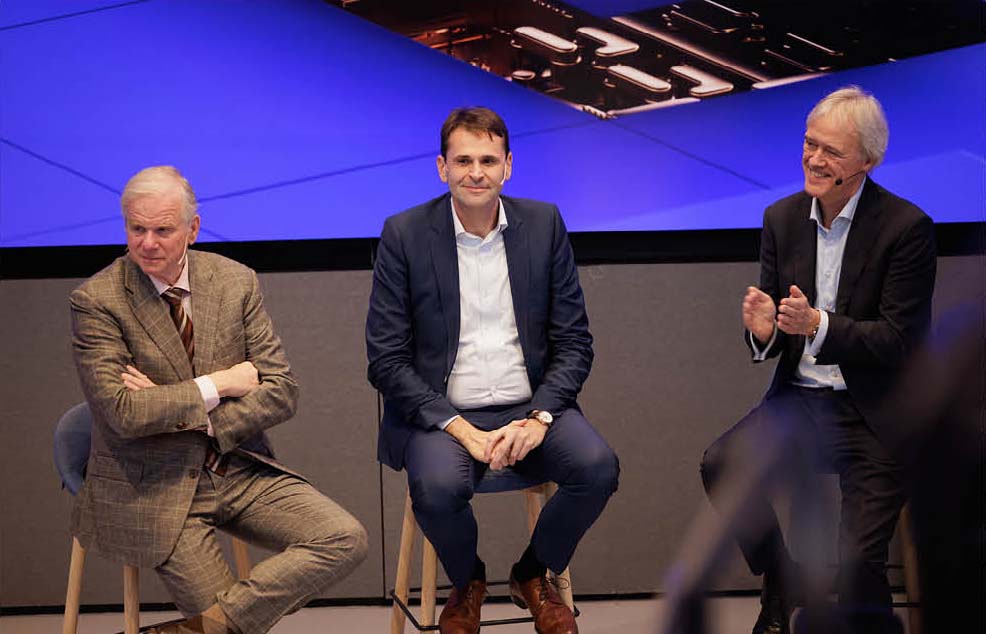
Board of Management member, a severance payment
not exceeding one year’s base salary will be paid.
Furthermore, current agreements stipulate that a
member of the Board of Management, when giving
notice of termination pursuant to a change of control,
will be entitled to a severance amount. Given that such
a resignation is specifically linked to a change of control,
ASML does not consider this provision a deviation from
the Dutch Corporate Governance Code.
The Supervisory Board may suspend and dismiss
members of the Board of Management, but this can
only take place after consulting the General Meeting.
More information about changes related to the Board of
Management during 2023 can be found in the
ASML ANNUAL REPORT 2023 | CORPORATE GOVERNANCE CONTINUED | STRATEGIC REPORT | CORPORATE GOVERNANCE | FINANCIALS | 180 | |
Board of Management | ||||||
 | Martin A. van den Brink (1957, Dutch) |  | Christophe D. Fouquet (1973, French) | Frédéric J.M. Schneider- Maunoury (1961, French) |  | |||||||||||||||||
President, Chief Technology Officer and Vice Chair of Board of Management Term expires 2024 | Executive Vice President and Chief Business Officer Term expires 2026 | Executive Vice President and Chief Operations Officer Term expires 2026 | ||||||||||||||||||||
Christophe Fouquet was appointed Executive Vice President EUV and member of the Board of Management in 2018. In 2022, Christophe was appointed Executive Vice President and Chief Business Officer. Since joining ASML in 2008, he has held several positions, including Senior Director Marketing, Vice President Product Management, and Executive Vice President Applications, a position he held from 2013 until 2018. Prior to joining ASML, he worked for semiconductor equipment peers KLA- Tencor and Applied Materials. Christophe holds a master’s degree in Physics from the Institut Polytechnique de Grenoble. | Frédéric Schneider-Maunoury has been Executive Vice President and Chief Operations Officer since he joined ASML in 2009. He was appointed to the Board of Management in 2010. Prior to joining ASML, Frédéric was Vice President Thermal Products Manufacturing at power generation and rail transport equipment group Alstom, having previously served as General Manager of the worldwide Hydro Business of Alstom. Before joining Alstom, Frédéric held various positions at the French Ministry of Trade and Industry. He is a graduate of École polytechnique (1985) and École Nationale Supérieure des Mines (1988) in Paris. | |||||||||||||||||||||
Martin van den Brink has been President and CTO of ASML since 2013. He joined ASML at its founding in 1984, and for the next 11 years held various positions in engineering. In 1995, he became Vice President Technology, and in 1999 was appointed Executive Vice President Product & Technology and member of the Board of Management. Martin holds a degree in Electrical Engineering from HTS Arnhem (HAN University), as well as a degree in Physics (1984) from the University of Twente. In 2012, the University of Amsterdam awarded him an honorary doctorate in Physics. | ||||||||||||||||||||||
Peter T.F.M. Wennink (1957, Dutch) | Roger J.M. Dassen (1965, Dutch) | |||||||||||||||||||||
President, Chief Executive Officer and Chair of Board of Management Term expires 2024 | Executive Vice President and Chief Financial Officer Term expires 2026 | |||||||||||||||||||||
Peter Wennink became President and CEO in 2013, having served as Executive VP, CFO and member of the Board of Management since 1999. Peter was previously a partner at Deloitte Accountants, focusing on the semiconductor industry. He has an extensive background in finance and is a member of the Dutch Institute of Registered Accountants. Peter was a member of the Advisory Board of the Investment Committee of Stichting Pensioenfonds ABP until December 31, 2021. He serves as Vice Chair on the Board of the FME-CWM. Peter is also a member of the Board of Captains of Industry Eindhoven Region and is Chair of the Eindhovensche Fabrikantenkring and of the Supervisory Board of the Eindhoven University of Technology. Furthermore, Peter is council member of Topconsortium voor ‘Kennis en Innovatie’ TKI HTS&M, member of the Advisory Committee of the Dutch National Growth Fund and a member of the Circle of Influence of Startup Delta. |  | Roger Dassen joined ASML in June 2018 and was appointed Executive Vice President and CFO and member of the Board of Management at the AGM the same year. He previously served as Global Vice Chair and member of the Executive Board of Deloitte Touche Tohmatsu Limited, having been CEO of Deloitte Holding BV. Roger holds a master’s in Economics and Business Administration, a post-master’s in Auditing and a PhD in Business Administration, all from the University of Maastricht. He is Professor of Auditing at Vrije Universiteit Amsterdam, and sits on the Supervisory Board of the Dutch National Bank. He is also the Chair of the Supervisory Board of Maastricht University Medical Center+ and serves on the Board of the Stichting Brainport. |  | Wayne R. Allan (1967, American) |  | |||||||||||||||||
Executive Vice President and Chief Strategic Sourcing & Procurement Officer Term expires 2027 | ||||||||||||||||||||||
Wayne Allan was appointed Executive Vice President, Chief Strategic Sourcing & Procurement Officer and member of the Board of Management in 2023. Wayne joined ASML in 2018 as Executive Vice President of Customer Support. Before he joined ASML, Wayne served as Senior Vice President of Global Manufacturing Operations and as Vice President of Wafer Fabs at Micron Technology, Inc, the company where he began his career in 1987 as a production operator. He continued to move into operations roles of increasing leadership in engineering, planning and production. | ||||||||||||||||||||||
ASML ANNUAL REPORT 2023 | CORPORATE GOVERNANCE CONTINUED | STRATEGIC REPORT | CORPORATE GOVERNANCE | FINANCIALS | 181 | |
Board of Management (continued) | ||||||

Our Supervisory Board supervises the
Board of Management and the general
course of affairs of ASML and its
subsidiaries. The Supervisory Board
also supports the Board of Management
with advice. In fulfilling its role and
responsibilities, the Supervisory Board
takes into consideration the interests
of ASML and its business, as well as the
relevant interests of its stakeholders.
In our two-tier structure, the Supervisory Board is a
separate and independent body from the Board of
Management and from ASML. No member of the
Supervisory Board personally maintains a business
relationship with ASML, other than as a member of the
Supervisory Board.
The Supervisory Board currently consists of nine
members, with the minimum being three.
In performing its tasks, the Supervisory Board focuses on
matters including, ASML’s corporate strategy aimed at
sustainable long-term value creation and its execution;
the staffing of and succession planning for the Board of
Management; the management of risks inherent to
ASML’s business activities; the financial reporting
process; compliance with applicable legislation and
regulations; ASML’s culture and the activities of the
Board of Management in that regard; the relationship
with shareholders and other stakeholders, and ESG
aspects important for ASML.
Important management decisions, such as setting the
operational and financial objectives, the strategy
designed to achieve these objectives, major investments,
budget and the issue, repurchase and cancellation of
shares, require the Supervisory Board’s approval.
The Supervisory Board is governed by its Rules of
Procedure. Items covered in these rules include the
responsibilities of the Supervisory Board and its
committees, the composition of the Supervisory Board
and its committees, logistics surrounding the meetings,
the meeting attendance of members of the Supervisory
Board, the rotation schedule for these members and the
committee charters. The Supervisory Board’s Rules of
Procedure and the committee charters are regularly
reviewed and, if needed, amended. The Audit Committee
charter is reviewed annually to confirm that the charter
still complies with applicable rules and regulations,
especially those relating to the Sarbanes-Oxley Act.
Read more information on the meetings and activities of the
Supervisory Board in 2023 in:
Appointments
The members of the Supervisory Board are appointed by
the General Meeting based on binding nominations
proposed by the Supervisory Board. When nominating
persons for (re)appointment, the Supervisory Board
checks whether the candidates fit the Supervisory
Board’s profile. The profile is available in the Governance
section of our website. The General Meeting may reject
binding nominations of the Supervisory Board by way of
a resolution adopted with an absolute majority of the
votes cast, representing at least one-third of ASML’s
outstanding share capital. If the votes cast in favor of
such a resolution do not represent at least one-third of
the total outstanding capital, a new shareholders’
meeting can be convened, at which the nomination can
be overruled by an absolute majority.
The Supervisory Board generally informs the General
Meeting and the Works Council about upcoming
retirements by rotation at the AGM in the year preceding
the actual retirement(s) by rotation. This ensures they
have sufficient opportunity to recommend candidates for
the upcoming vacancies. The Supervisory Board has the
right to reject the proposed recommendations.
Furthermore, the Works Council has an enhanced right
to make recommendations for one-third of the members
of the Supervisory Board. This enhanced
recommendation right implies that the Supervisory Board
may only reject the Works Council’s recommendations in
limited circumstances: (i) if the relevant person is
unsuitable or (ii) if the Supervisory Board would not be
duly composed if the recommended person were
appointed as Supervisory Board member.
Members of the Supervisory Board serve for a maximum
term of four years or a shorter period as per the
Supervisory Board’s rotation schedule. Supervisory
Stage 1 | Stage 2 | Stage 3 | Stage 4 | Stage 5 | ||||||
Recommendation right GM and Works Council | Announcement of nomination for appointment by SB | Works Council has the right to determine its position | Formal nomination for appointment by SB | Appointment SB member by GM | ||||||
Board members are eligible for reappointment for another
maximum term of four years. After that, members may be
reappointed again for a maximum period of two years. This
appointment may be extended for a final term of no more
than two years. The rotation schedule is available in the
Governance section of our website.
If the General Meeting loses confidence in the Supervisory
Board, it may, by an absolute majority of the votes
representing at least one-third of the total outstanding
capital, withdraw its confidence in the Supervisory Board.
This resolution shall result in the immediate dismissal of the
entire Supervisory Board. In such case, the Enterprise
Chamber of the Amsterdam Court of Appeal shall appoint
one or more members to the Supervisory Board at the
request of the Board of Management.
Further information about changes to the Supervisory Board's
composition in 2022 and 2023 can be found in the
Supervisory Board committees
The Supervisory Board, while retaining overall responsibility,
has assigned some of its tasks and responsibilities to five
committees: the Audit Committee, the ESG Committee, the
Remuneration Committee, the Selection and Nomination
Committee and the Technology Committee.
Further information on the Supervisory Board committees can
be found in the
as posted on our website
ASML ANNUAL REPORT 2023 | CORPORATE GOVERNANCE CONTINUED | STRATEGIC REPORT | CORPORATE GOVERNANCE | FINANCIALS | 182 | |
Supervisory Board | ||||||
Antoinette (Annet) P. Aris (1958, Dutch) | ||||||||||||||||||||||
 |  |  | ||||||||||||||||||||
Member of the Supervisory Board since 2015 (Third term expires in 2024) | ||||||||||||||||||||||
Vice Chair of the Supervisory Board, Member of the Remuneration Committee, the Selection and Nomination Committee and the Technology Committee | ||||||||||||||||||||||
Annet Aris has been a member of the Supervisory Board since 2015. She is Senior Affiliate Professor of Strategy at INSEAD business school, France, a position she has held since 2003. From 1994 to 2003, she was a partner at McKinsey & Company in Germany. Annet also sits on the supervisory boards of Jungheinrich AG and Randstad Holding NV. | Alexander F.M. Everke (1963, German) | |||||||||||||||||||||
Member of the Supervisory Board since 2022 (First term expires in 2026) | ||||||||||||||||||||||
Nils S. Andersen (1958, Danish) | Nils Andersen joined the Supervisory Board in 2023, and has been its Chair since his appointment. Nils also serves as non- Executive Director of Unilever Plc., a position he has held since 2015, having served as Unilever's Chair from November 2019 until December 1, 2023. Nils is also Chair of the Board of Scan Global Logistics A/S. From 2018 until April 2023, he was the Chair of the Supervisory Board of Akzo Nobel NV and, between 2007 and 2016, Group Chief Executive of A.P. Møller –Mærsk. From 2001 until 2007, Nils served as President and Chief Executive Officer of Carlsberg and Carlsberg Breweries. | Member of the ESG Committee and the Remuneration Committee | D. Mark Durcan (1961, American) | Mark Durcan was appointed as a member of the Supervisory Board in 2020. From 2012 to 2017, he was CEO of Micron Technology, Inc., having joined the company in 1984 and having held various management positions before being appointed as CEO. Furthermore, Mark was director at Freescale Semiconductor, MWI Veterinary Supply and Veoneer, Inc. Mark is a Non-Executive Director at Advanced Micro Devices, Inc., and Member of the Board and Lead Independent Director at Cencora. He is also a member of the Board of Trustees for Rice University (Texas), Director at St Luke’s Health System (Idaho) and Director at Natural Intelligence Systems CA private AI, Startup Company. | ||||||||||||||||||
Member of the Supervisory Board since 2023 (First term expires in 2027) | Alexander Everke joined the Supervisory Board in 2022. He is the former CEO of ams- OSRAM AG, a position he held from 2016 until April 2023, after having joined ams AG in October 2015. Prior to that, Alexander held a range of positions in the semiconductor industry including management roles at Siemens and Infineon and various leadership positions at NXP Semiconductors. | Member of the Supervisory Board since 2020 (First term expires in 2024) | ||||||||||||||||||||
 | ||||||||||||||||||||||
Chair of the Supervisory Board, Chair of the Selection and Nomination Committee | Chair of the Technology Committee, member of the Selection and Nomination Committee | |||||||||||||||||||||
ASML ANNUAL REPORT 2023 | CORPORATE GOVERNANCE CONTINUED | STRATEGIC REPORT | CORPORATE GOVERNANCE | FINANCIALS | 183 | |
Supervisory Board (continued) | ||||||
Terri L. Kelly (1961, American) | Birgit M. Conix (1965, Belgian) | Jack P. de Kreij (1959, Dutch) | Association of Listed Companies (VEUO). From 2003 to 2018, Jack was CFO and a member of the Executive Board of Royal Vopak NV, being the Vice Chair of the Executive Board of Royal Vopak NV since 2010. Prior to that, between 1986 and 2003 he worked at PricewaterhouseCoopers, where he held various management positions as (Senior) Partner and was amongst others Managing Partner & Territory Leader of the M&A focused Transaction Services practice in The Netherlands. Jack started his career in 1980 with the Dutch Ministry of Finance, where he worked until 1986. | ||||||||||||||||||||||
 | 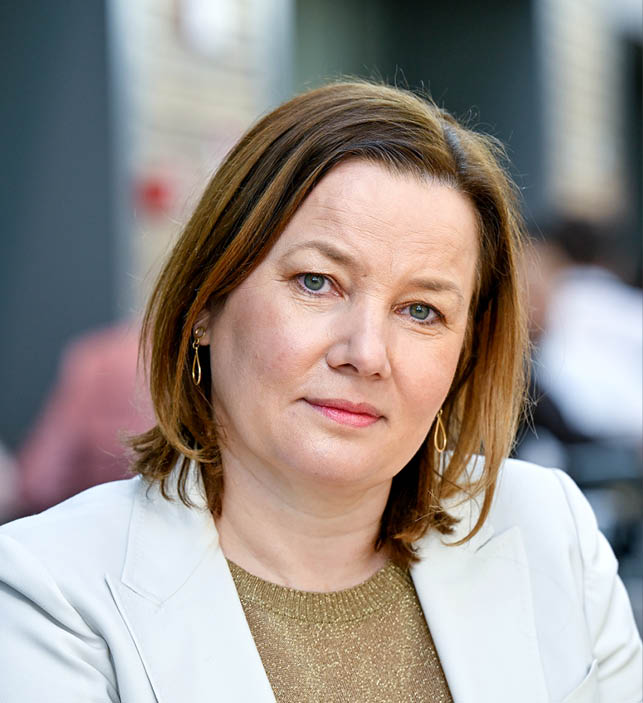 | ||||||||||||||||||||||||
Member of the Supervisory Board since 2018 (Second term expires in 2026) | Member of the Supervisory Board since 2021 (First term expires in 2025) | Member of the Supervisory Board since 2023 (First term expires in 2027) | |||||||||||||||||||||||
Chair of the Remuneration Committee, member of the Selection and Nomination Committee | Chair of the ESG Committee and member of the Audit Committee | Chair of the Audit Committee and member of the Remuneration Committee | |||||||||||||||||||||||
Birgit Conix became a member of the Supervisory Board in 2021. She has been CFO and a member of the Management Board of Sonova Holding AG since June 2021. From 2018 until January 1, 2021, Birgit was a member of the Executive Board and CFO of TUI AG. She was previously the CFO of the Belgian media, cable and telecommunications company Telenet Group NV Prior to that, Birgit held various management positions in finance at Johnson & Johnson, Heineken, Tenneco and Reed Elsevier. | |||||||||||||||||||||||||
Terri Kelly has been a member of the Supervisory Board since 2018. Previously, she was President and CEO at W.L. Gore & Associates from 2005 until 2018, having worked at Gore since 1983 in various management roles. She also served on Gore’s Board of Directors through July 2018. Terri is a Trustee of the Alfred I. Dupont Charitable Trust, which provides oversight of the Nemours Foundation. She is the Chair of the Board of the University of Delaware and she is a member of the Board of Directors of United Rentals, Inc. | Jack de Kreij joined the Supervisory Board in 2023. Among other roles, he is currently the Vice Chair of the Supervisory Board and Chair of the Audit Committee at TomTom NV and Wolters Kluwer NV. Jack is also a member of the Supervisory Board, Chair of the Audit Committee and member of the ESG Committee at Royal Boskalis Westminster NV. In addition, he is the Chair of the Board of the Dutch | ||||||||||||||||||||||||
An L. Steegen (1971, Belgian) | |||||||||||||||||||||||||
Member of the Supervisory Board since 2022 (First term expires in 2026) | |||||||||||||||||||||||||
D. Warren A. East (1961, British) | Member of the ESG Committee and the Technology Committee | ||||||||||||||||||||||||
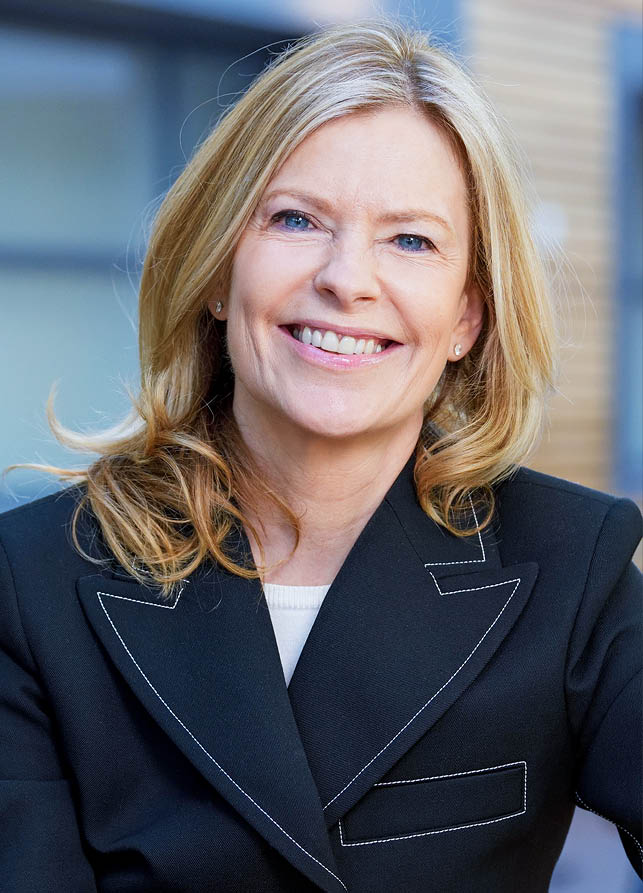 | |||||||||||||||||||||||||
 | Member of the Supervisory Board since 2020 (First term expires in 2024) |  | An Steegen joined the Supervisory Board in 2022. She is co-CEO and member of the Board of Directors of Barco NV, a position she has held since October 2021. Prior to that, An was R&D director at IBM Semiconductor and Executive Vice President at the research institute imec in Belgium. Furthermore, An was CTO and Executive Vice President Electronic and Electro-Optical Materials at Umicore. | ||||||||||||||||||||||
Member of the Audit Committee and the Technology Committee | |||||||||||||||||||||||||
Warren East became a member of the Supervisory Board in 2020 and is currently also a Non-Executive Board member at Tokamak Energy plc. Warren was CEO of Rolls-Royce Group Plc from 2015 until December 2022. He spent his early career at Texas Instruments Ltd from 1985 to 1994 before joining ARM Holdings, Plc, where he held various management positions and was appointed CEO from 2001 to 2013. | |||||||||||||||||||||||||
ASML ANNUAL REPORT 2023 | CORPORATE GOVERNANCE CONTINUED | STRATEGIC REPORT | CORPORATE GOVERNANCE | FINANCIALS | 184 | |
Supervisory Board (continued) | ||||||
The section below addresses a number of
topics that apply to both the Board of
Management and the Supervisory Board.
Remuneration and share ownership
The remuneration of the Board of Management is
determined by the Supervisory Board, on
recommendation of the Remuneration Committee, in
accordance with the Remuneration Policy for the Board
of Management as adopted by the General Meeting. The
current Remuneration Policy for the Board of
Management was adopted by the General Meeting in
2022.
The remuneration of the Supervisory Board is based on
the Remuneration Policy for the Supervisory Board. The
current Remuneration Policy for the Supervisory Board
was adopted by the General Meeting in 2023. The
remuneration of the Supervisory Board is not dependent
on our (financial) results. The members of the Supervisory
Board do not receive ASML shares, or rights to acquire
ASML shares, as part of their remuneration.
Board of Management and Supervisory Board members
who acquire or have acquired ASML shares or rights to
acquire ASML shares must intend to keep these for long-
term investment only. In concluding transactions in ASML
shares, members of the Board of Management and the
Supervisory Board must comply with our Insider Trading
Rules. Any transactions in ASML shares performed by
members of the Board of Management and the
Supervisory Board are reported to the Dutch AFM. Nils
Andersen holds 1,060 ASML shares. No other member
of the Supervisory Board currently has any ASML shares
or rights to acquire ASML shares.
We will not and have not granted any personal loans,
guarantees or the like to members of the Board of
Management and the Supervisory Board.
Our Articles of Association provide for the indemnification
of the members of the Board of Management and the
Supervisory Board against claims that are a direct result
of their tasks, provided that such claims are not
attributable to willful misconduct or intentional
recklessness of the respective member. We have also
implemented the indemnification of the members of the
Board of Management and the Supervisory Board by
means of separate indemnification agreements for each
member.
Detailed information on the Board of Management’s and the
Supervisory Board’s remuneration can be found in the:
Diversity
Pursuant to the Nasdaq Stock Market’s listing standards
with respect to board diversity (disclosures), ASML, as a
foreign private issuer, is required to have at least two
diverse Supervisory Board members or explain the
reasons for not meeting this objective. Furthermore, a
Board diversity matrix is required to be included in the
Annual Report on Form 20-F, containing certain
demographic and other information regarding members
of the Supervisory Board. ASML currently complies with
the diversity requirement, as we currently have four
female and five male members on our Supervisory
Board. The Board diversity matrix is set out on this page.
Board Diversity Matrix (status per December 31, 2023) | |||||||
Female | Male | Non-Binary | Did not Disclose | ||||
Part I: Gender Identity | |||||||
Directors | 4 (2022: 4) | 5 (2022: 5) | 0 (2022: 0) | 0 (2022: 0) | |||
Part II: Demographic Background | |||||||
Underrepresented Individual in Home Country Jurisdiction | 0 (2022: 0) | 0 (2022: 0) | 0 (2022: 0) | 0 (2022: 0) | |||
LGBTQI+ | 0 (2022: 0) | 0 (2022: 0) | 0 (2022: 0) | 0 (2022: 0) | |||
Did Not Disclose Demographic Background | 0 (2022: 0) | 0 (2022: 0) | 0 (2022: 0) | 0 (2022: 0) | |||
Country of Principal Executive Offices | The Netherlands |
Foreign Private Issuer | Yes |
Disclosure Prohibited under Home Country Law | No |
Total Number of Supervisory Board members | 9 (2022: 9) |
Supervisory Board gender diversity | Supervisory Board nationality | ||||||||||
 | 55.6% |  | 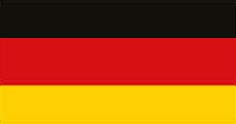 |  | |||||||
Leadership level men | Dutch x2 | German x1 | American x2 | ||||||||
 | 44.4% |  |  | 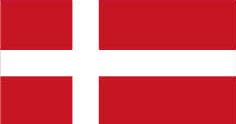 | |||||||
Leadership level women | British x1 | Belgian x2 | Danish x1 | ||||||||
ASML ANNUAL REPORT 2023 | CORPORATE GOVERNANCE CONTINUED | STRATEGIC REPORT | CORPORATE GOVERNANCE | FINANCIALS | 185 | |
Other Board-related matters | ||||||

On January 1, 2022, the Dutch gender diversity bill came
into force, introducing a quota for the supervisory boards
of Dutch listed companies following which the composition
of the supervisory board should comprise at least one-
third men and one-third women. New appointments will
be declared null and void in the event of non-compliance
with this requirement. The bill also introduced a
requirement to set ambitious gender balance targets for
boards of management and senior management of large
listed and non-listed Dutch NVs and BVs and a plan
which outlines the actions needed in order to meet the
gender diversity targets. Based on the gender diversity
bill, companies are required to report on the gender
balance targets, the plan and their progress made in
achieving the gender balance targets to the Dutch Social
and Economic Council within 10 months after the end of
the financial year and in the management report.
The 2022 Dutch Corporate Governance Code contains a
requirement to adopt D&I policies for the Board of
Management, the Supervisory Board as well as a
company-wide D&I policy for the entire workforce
including senior management. As part thereof, ASML has
set has set targets on gender diversity and other D&I
aspects relevant for ASML.
Currently, the Supervisory Board meets the gender quota
of the Dutch gender diversity bill, as both men and
women are represented on the Supervisory Board by at
least three out of nine members. During 2023, the
Supervisory Board adopted the Supervisory Board D&I
Policy, which has been incorporated as an annex to the
Supervisory Board's Rules of Procedure, which can be
found on our website.
Currently, no seats are taken by women on the Board of
Management. During 2022, the Supervisory Board
updated the Board of Management Diversity Policy and
set a gender balance target for the Board of
Management to in 2026 have at least one female and a
at least one male Board of Management member. Taking
into account the composition of the Board of
Management per the 2024 AGM, this would lead to a
female representation of at least 17% based on the size
of the Board of Management per the 2024 AGM, being
six members. When setting the gender balance target for
the Board of Management, the Supervisory Board has
considered the technology environment ASML operates
in, with a thinly populated global STEM (science,
technology, engineering and math) talent pool, making it
challenging to recruit female talent. Our R&D workforce is
17% female. The Supervisory Board has also considered
the female representation of the ASML group overall,
which was 44% (December 31, 2023) and the female
representation in senior leadership (JG 13+), which was
11% (December 31, 2023). Furthermore, during 2022 a
target was set to reach a representation of women at
senior management level of 12% by 2024. To make this
gender target for senior management tangible, we also
set a goal for the total inflow of women and inflow of
female leaders (JG 9+) of 24% in 2025. The Supervisory
Board also included performance metrics aimed at
improving the representation of women in senior
leadership in the Board of Management's long-term
incentive. The Board of Management Diversity Policy is
part of the Board of Management's Rules of Procedure,
which can be found on our website.
The Supervisory Board fully supports ASML’s Diversity &
Inclusion strategy as set out in this Annual Report. We
recognize that human capital is ASML’s most valuable
asset and that our success is driven by our unique and
diverse teams. Diversity promotes the inclusion of different
perspectives and ideas, mitigates against groupthink and
ensures ASML can benefit from all available talent. This
also applies to the Board of Management and our senior
management, where a diverse composition contributes
to robust decision-making and proper functioning.
Diversity complements ASML’s company values –
challenge, collaborate and care.
We are building and implementing company-wide
programs to further promote diversity and inclusion at all
levels of our workforce. This includes specific programs
aimed at attracting, retaining and developing diverse
leaders with the purpose of increasing our talent pool of
diverse talent for senior leadership and Board of
Management positions.
Our Global Diversity & Inclusion Council, founded in
2021, consists of senior leaders who act on behalf of
ASML to provide thought leadership. The Council,
chaired by a member of the Board of Management,
proposes the Diversity & Inclusion strategy to the Board
of Management, sets, promotes and monitors diversity
and inclusion initiatives, and leads company-wide
accountability for our goals. We also have a global
diversity and inclusion team, including a Chief Diversity
Officer, who is responsible for driving initiatives that are
related to diversity and inclusion across ASML.
Our company-wide diversity and inclusion approach is
integrated into our people strategy and focuses on three key
areas within ASML: leadership, culture and talent. The
Attractive workplace for all section contains more information
about our D&I approach, our targets and performance in
2023 as well as a look ahead at our D&I agenda and priority
areas for the period up to and including 2025.
ASML ANNUAL REPORT 2023 | CORPORATE GOVERNANCE CONTINUED | STRATEGIC REPORT | CORPORATE GOVERNANCE | FINANCIALS | 186 | |
Other Board-related matters (continued) | ||||||
 | 12% | |||
Target 2024 representation of women at leadership level | ||||
The key areas of our D&I approach are as follows: | ||||
•Leadership: we are developing inclusive leadership programs and starting to build accountability into our performance and development processes. We engage leaders to foster their commitment to creating an inclusive culture and building a diverse workforce | ||||
•Talent: we aim to increase the representation of underrepresented groups by addressing our systems and end-to-end people processes, including talent acquisition, and by providing career advancement programs, that positively impact under-represented groups. | ||||
•Culture: We strive to create an inclusive culture for all in line with ASML's values by increasing the capabilities of employees and leaders to act inclusively and by empowering our employee networks to expand their impact and reach. | ||||
 | 25% | |||
Inflow of female leaders in 2023 (9+) | ||||
Read more information on our diversity and inclusion strategy,
initiatives, women in leadership and performance data in:
For the Board of Management specifically, the
Supervisory Board will select candidates for appointment
to the Board of Management with due observance of
ASML's objective to foster a diverse and inclusive
working environment. Accordingly, ASML aims to fill
vacancies by considering candidates that bring the
required expertise and contribute to ASML's diversity.
The Supervisory Board, when assessing the composition
of the Board of Management and identifying suitable
candidates for succession, will consider candidates on
merit against objective criteria and the specific profile for
the job, while having due regard for the relevant aspects
of diversity. This applies in particular to continuously
striving for a more balanced gender representation.
In ASML's internal development efforts for potential
Board of Management members, we strive for
participation of a diverse group of employees, specifically
senior leadership.
Any search firm engaged by the Supervisory Board or its
Selection and Nomination Committee will be specifically
directed to include diverse candidates in general and
multiple female candidates in particular.
Conflicts of interest and related party transactions
Conflict of interest procedures are incorporated in both
the Board of Management’s and the Supervisory Board’s
Rules of Procedure. These procedures reflect Dutch law
and the principles and best practice provisions of the
Code with respect to conflicts of interest.
There have been no transactions in 2023, nor are there
currently any transactions, between ASML or any of
ASML’s subsidiaries, or any significant shareholder and
any member of the Board of Management, officer,
Supervisory Board member or any relative or spouse
thereof, other than ordinary course compensation
arrangements. Furthermore, ASML has not granted any
personal loans, guarantees or the like to members of the
Board of Management or Supervisory Board.
Outside positions
Pursuant to Dutch legislation, a member of the Board of
Management may not be a Supervisory Board member
in more than two other large companies or large
foundations, as defined in Dutch law. A member of the
Board of Management may never be the Chair of a
Supervisory Board of a large company. Board of
Management members require prior approval from the
Supervisory Board before accepting a position of another
large company or foundation. Members of the Board of
Management are also required to notify the Supervisory
Board of all important functions held or to be held by
them. The remuneration received by members of the
Board of Management from outside positions, if any,
shall be reimbursed to ASML, unless otherwise agreed
with the Supervisory Board in accordance with the Rules
of Procedure of the Board of Management.
Dutch law stipulates that a Supervisory Board member
may not hold more than five Supervisory Board positions
in large companies or large foundations as defined in
Dutch law, with chairmanships counting twice.
During the financial year 2023, all members of the Board
of Management and the Supervisory Board complied
with the requirements described above.
 |
ESG sustainability powers our innovation mindset because it underpins inclusivity and diversity.” |
Christophe Fouquet |
Executive Vice President, Chief Business Officer and member of the Board of Management |
ASML ANNUAL REPORT 2023 | CORPORATE GOVERNANCE CONTINUED | STRATEGIC REPORT | CORPORATE GOVERNANCE | FINANCIALS | 187 | |
Other Board-related matters (continued) | ||||||

 | |||
A General Meeting (AGM) is held at least once a year and generally takes place in Veldhoven, the Netherlands. In 2023, shareholders had the option to attend the 2023 AGM in person in Veldhoven or virtually. The agenda for the AGM typically includes the following topics: | |||
In 2023, we engaged with investors to obtain their perspectives and understand their expectations.” | |||
Item 1 Discussion of the management report and the adoption of the Financial Statements over the past financial year; Item 2 Discussion of the dividend policy and approval of any proposed dividends; Item 3 Advisory vote on the Remuneration Report over the past financial year; Item 4 The discharge from liability of the members of the Board of Management and the Supervisory Board for the performance of their responsibilities in the previous financial year; Item 5 The limited authorization for the Board of Management to issue (rights to) shares in ASML’s capital, and to exclude preemptive rights for such issuances, as well as to repurchase shares and to cancel shares; and Item 6 Any other topics proposed by the Board of Management, the Supervisory Board or shareholders in accordance with Dutch law and the Articles of Association. | |||
Nils Andersen | |||
Chair of the Supervisory Board | |||
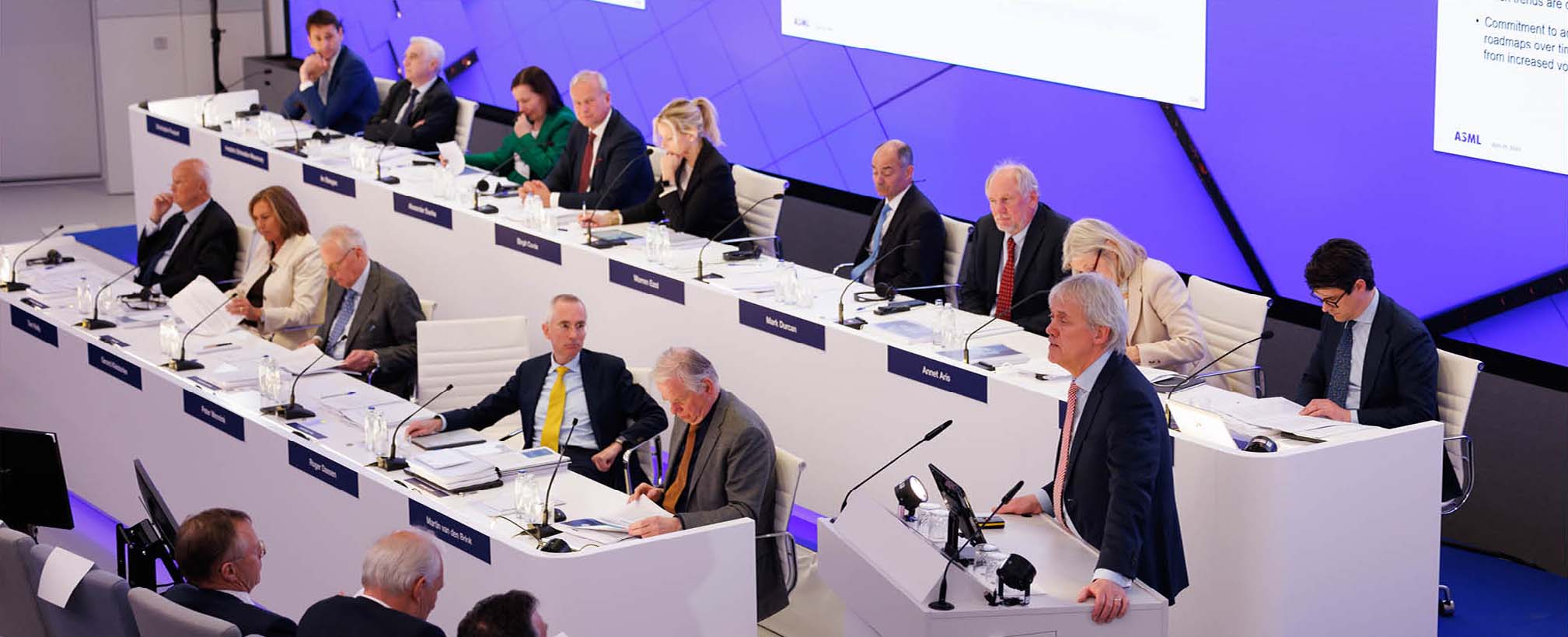 |
Proposals placed on the agenda by the Supervisory
Board, the Board of Management or shareholders,
provided that they have submitted the proposals in
accordance with the applicable legal provisions, are
discussed and resolved upon. Shareholders representing
at least 1.0% of ASML’s outstanding share capital or
representing a share value of at least €50 million are
entitled to place items on the agenda of a General
Meeting at least 60 days before the date of the meeting.
Extraordinary general meetings may be held when
considered necessary by the Supervisory Board or Board
of Management. In addition, an extraordinary general
meeting must be held if one or more ordinary or
cumulative preference shareholders, who jointly
represent at least 10% of the issued share capital, make
a written request to that effect to the Supervisory Board
and the Board of Management. The request must specify
in detail the business to be dealt with.
Shareholders’ meetings are convened by public
announcement via the website of ASML no later than
42 days prior to the meeting, as stipulated by Dutch law.
The record date is set at the 28th day prior to the day of
the AGM. Persons who are registered as shareholders
on the record date are entitled to attend the meeting and
to exercise other shareholder rights.
The Board of Management and Supervisory Board
provide shareholders with information relevant to the
topics on the agenda by means of an explanation of the
agenda as well as by documents necessary or helpful for
this purpose. The agenda indicates which agenda items
are voting items, and which items are for discussion only.
All documents related to the General Meeting, including
the agenda with explanations, are posted on our
website.
ASML ANNUAL REPORT 2023 | CORPORATE GOVERNANCE CONTINUED | STRATEGIC REPORT | CORPORATE GOVERNANCE | FINANCIALS | 188 | |
AGM and share capital | ||||||
ASML shareholders may appoint a proxy who can vote
on their behalf at the AGM. In addition, we use an
internet proxy voting system, facilitating shareholder
participation without having to attend in person. We also
provide the option for shareholders to issue voting
proxies or voting instructions to an independent civil law
notary prior to the AGM. We do not solicit from or
nominate proxies for our shareholders.
Hybrid AGM
Similar to the 2022 AGM, we organized a hybrid AGM in
2023, accommodating attendance in person as well as
virtually by enabling shareholders to follow the
proceedings of the meeting via video webcast and to
vote electronically during the meeting. Shareholders also
had the opportunity to vote in advance via written or
electronic proxy. As we highly value interaction with our
shareholders, we invited shareholders who attended the
AGM in person to ask questions about the agenda items
during the AGM and we provided holders of shares
traded on Euronext Amsterdam who attended the AGM
virtually the opportunity to ask live questions in writing
through the virtual meeting platform. All questions were
answered during the AGM.
Resolutions are adopted by the General Meeting by an
absolute majority of the votes cast (except where a
different proportion of votes are required by the Articles
of Association or Dutch law), and there are generally no
quorum requirements applicable to such meetings.
Voting results from the AGM are made available on our
website within 15 days of the meeting. The draft report of
the AGM is made available on our website or on request
no later than three months after the meeting.
Shareholders have the opportunity to provide comments
in the subsequent three months, after which the report is
adopted by the Chair and the Secretary of the meeting.
The adopted report is also available on our website and
on request.
Powers
In addition to the items submitted annually at the AGM,
the General Meeting also has other powers, with due
observance of the statutory provisions. These include
resolving:
•To amend the articles of association;
•To issue shares if and insofar as the Board of
Management has not been designated by the General
Meeting for this purpose; and
•To adopt the Remuneration Policies for the members
of the Board of Management and the Supervisory
Board.
(Proposed) amendments of the Articles of Association
require the approval of the Supervisory Board. A quorum
requirement applies for the General Meeting at which an
amendment of the Articles of Association is proposed:
more than half of the issued share capital is required to
be represented and, the proposal requires a voting
majority of at least three-fourths of the votes cast. If the
quorum requirement is not met, a subsequent General
Meeting shall be convened, to be held within four weeks
of the first meeting. At this second meeting, the
resolution can be adopted with at least three-fourths of
the votes cast, irrespective of the share capital
represented. If a resolution to amend the Articles of
Association is proposed by the Board of Management,
the resolution will be adopted with an absolute majority
of votes cast irrespective of the represented share capital
at the General Meeting.
Our Articles of Association are included as Exhibit 1.1
hereto, and are incorporated by reference herein.
ASML ANNUAL REPORT 2023 | CORPORATE GOVERNANCE CONTINUED | STRATEGIC REPORT | CORPORATE GOVERNANCE | FINANCIALS | 189 | |
AGM and share capital (continued) | ||||||
ASML’s authorized share capital amounts to €126.0 million and is divided into: | |||||||
Type of shares | Number of shares | Nominal value | Votes per share | ||||
Cumulative preference shares | 700,000,000 | €0.09 per share | 1 | ||||
Ordinary shares | 700,000,000 | €0.09 per share | 1 | ||||
The issued and fully paid-up ordinary shares with a nominal value of €0.09 each were as follows: | |||||||
Year ended December 31 | 2021 | 2022 | 2023 | ||||
Issued ordinary shares with nominal value of €0.09 | 402,601,613 | 394,589,411 | 393,421,721 | ||||
Issued ordinary treasury shares with nominal value of €0.09 | 3,873,663 | 8,548,631 | 6,162,857 | ||||
Total issued ordinary shares with nominal value of €0.09 | 406,475,276 | 403,138,042 | 399,584,578 | ||||
As of December 31, 2023, 86,366,821 ordinary shares
were held by 268 registered holders with a registered
address in the US. Since certain of our ordinary shares
were held by brokers and nominees, the number of
record holders in the US may not be representative of the
number of beneficial holders, or of where the beneficial
holders are resident.
Each ordinary share consists of 900 fractional shares.
Fractional shares entitle the holder thereof to a fractional
dividend, but do not give entitlement to voting rights.
Only those persons who hold shares directly in the share
register in the Netherlands, held by us at our address at
5504 DR Veldhoven, de Run 6501, the Netherlands, or in
the New York share register, held by JP Morgan Chase
Bank, N.A., P.O. Box 64506, St. Paul, MN 55164-0506,
United States, can hold fractional shares. Shareholders
who hold ordinary shares through the deposit system
under the Dutch Securities Bank Giro Transfer Act
maintained by the Dutch central securities depository
Euroclear Nederland or through the Depository Trust
Company cannot hold fractional shares.
No cumulative preference shares have been issued. Each
share carries one vote.
Special voting rights, limitation voting rights and transfers
of shares
There are no special voting rights on the issued shares in
our share capital.
In 2012, we issued shares to three key customers – Intel,
TSMC and Samsung – as part of the customer co-
investment program (CCIP) to accelerate ASML’s
development of EUV. Under this program, the
participating customers funded certain development
programs and invested in ASML’s ordinary shares. The
shares issued in the CCIP were held by foundations
which issued depository receipts to participants in the
CCIP. In 2023, the remaining participating customer
cancelled its depository receipts in accordance with the
terms and conditions of the agreement between ASML
and the relevant customer.
There are currently no limitations, either under Dutch law
or in ASML’s Articles of Association, on the transfer of
ordinary shares in the share capital of ASML. Pursuant to
ASML’s Articles of Association, the Supervisory Board’s
approval shall be required for every transfer of cumulative
preference shares.
Issue and repurchase of (rights to) shares
Our Board of Management has the power to issue
ordinary shares and cumulative preference shares insofar
as it has been authorized to do so by the General
Meeting. The Board of Management requires approval of
the Supervisory Board for such an issue. The
authorization by the General Meeting can only be granted
for a certain period not exceeding five years and may be
extended for no longer than five years on each occasion.
If the General Meeting has not authorized the Board of
Management to issue shares, the General Meeting will be
authorized to issue shares on the Board of
Management’s proposal, provided that the Supervisory
Board has approved such a proposal.
Holders of ASML’s ordinary shares have a preemptive
right, in proportion to the aggregate nominal amount of
the ordinary shares held by them. This preemptive right
may be restricted or excluded. Holders of ordinary
shares do not have preemptive right with respect to any
ordinary shares issued for consideration other than cash
or ordinary shares issued to employees. If authorized for
this purpose by the General Meeting, the Board of
Management has the power, subject to approval of the
Supervisory Board, to restrict or exclude the preemptive
rights of holders of ordinary shares.
2023 authorization to issue shares
At our 2023 AGM, the Board of Management was
authorized from April 26, 2023 through October 26,
2024, subject to the approval of the Supervisory Board,
to issue shares and/or rights thereto representing up to a
maximum of 5% of our issued share capital at April 26,
2023, plus an additional 5% of our issued share capital
at April 26, 2023, that may be issued in connection with
mergers, acquisitions and/or (strategic) alliances. Our
shareholders also authorized the Board of Management
through October 26, 2024, subject to approval of the
Supervisory Board, to restrict or exclude preemptive
rights with respect to holders of ordinary shares up to a
maximum of 5% of our issued share capital in connection
with the general authorization to issue shares and/or
rights to shares, plus an additional 5% in connection with
the authorization to issue shares and/or rights to shares
in connection with mergers, acquisitions and/or
(strategic) alliances.
We may repurchase our issued ordinary shares at any
time, subject to compliance with the requirements of
Dutch law and our Articles of Association. Any such
repurchases are subject to the approval of the
Supervisory Board and the authorization by the General
Meeting, which authorization may not be for more than
18 months.
ASML ANNUAL REPORT 2023 | CORPORATE GOVERNANCE CONTINUED | STRATEGIC REPORT | CORPORATE GOVERNANCE | FINANCIALS | 190 | |
AGM and share capital (continued) | ||||||
2023 authorization to repurchase shares
At the 2023 AGM, the Board of Management was
authorized, subject to Supervisory Board approval, to
repurchase through October 26, 2024, up to a maximum
of 10% of our issued share capital at April 26, 2023, at a
price between the nominal value of the ordinary shares
purchased and 110% of the market price of these
securities on Euronext Amsterdam or Nasdaq.
Read more details on our share buyback program in:
ASML Preference Shares Foundation
The ASML Preference Shares Foundation (Stichting
Preferente Aandelen ASML), a foundation organized
under Dutch law, has been granted an option right to
acquire preference shares in the share capital of ASML.
The Foundation may exercise the Preference Share
Option in situations where, in the opinion of the
Foundation’s Board of Directors, ASML’s interests,
ASML’s business or the interests of ASML’s
stakeholders are at stake. This may be the case if:
•A public bid for ASML’s shares is announced or made,
or there is a justified expectation that such a bid will be
made without any agreement having been reached
with ASML in relation to such a bid; or
•In the opinion of the Foundation’s Board of Directors,
the (attempted) exercise of the voting rights by one
shareholder or more shareholders, acting in concert, is
materially in conflict with ASML’s interests, ASML’s
business or ASML’s stakeholders.
Objectives of the Foundation
The Foundation’s objectives are to look after the interests
of ASML and the enterprises maintained by and/or
affiliated in a group with ASML, in such a way that the
interests of ASML, of those enterprises and of all parties
concerned are safeguarded in the best possible way,
and that influences in conflict with these interests, which
might affect the independence or the identity of ASML
and those companies, are deterred to the best of the
Foundation’s ability, and everything related to the above
or possibly conducive thereto. The Foundation aims to
realize its objects by acquiring and holding cumulative
preference shares in the capital of ASML and by
exercising the rights attached to these shares,
particularly the voting rights.
The Preference Share Option
The Preference Share Option gives the Foundation the
right to acquire such number of cumulative preference
shares as the Foundation will require, provided that the
aggregate nominal value of such number of cumulative
preference shares shall not exceed the aggregate
nominal value of the ordinary shares issued at the time of
exercise of the Preference Share Option. The
subscription price will be equal to their nominal value.
Only one-fourth of the subscription price would be
payable at the time of initial issuance of the cumulative
preference shares, with the other three-fourths of the
nominal value only being payable when ASML calls up
this amount. Exercise of the preference Share Option
could effectively dilute the voting-power of the
outstanding ordinary shares by one-half.
Cancellation of cumulative preference shares
Cancellation and repayment of the issued cumulative
preference shares by ASML requires authorization by the
General Meeting, on a proposal to this effect made by
the Board of Management and approved by the
Supervisory Board. If the Preference Share Option is
exercised and as a result cumulative preference shares
are issued, ASML will initiate the repurchase or
cancellation of all cumulative preference shares held by
the Foundation on the Foundation’s request. In that
case, ASML is obliged to effect the repurchase and
respective cancellation as soon as possible. A
cancellation will result in a repayment of the amount paid
and exemption from the obligation to pay up on the
cumulative preference shares. A repurchase of the
cumulative preference shares can only take place when
such shares are fully paid up.
If the Foundation does not request ASML to repurchase
or cancel all cumulative preference shares held by the
Foundation within 20 months of issuance of these
shares, we will be required to convene a General Meeting
for the purpose of deciding on a repurchase or
cancellation of these shares.
Board of Directors
The Foundation is independent of ASML. The Board of
Directors of the Foundation is composed of four
independent members from the Netherlands’ business
and academic communities. The Foundation’s Board of
Directors is composed per December 31, 2023, of the
following members: Mr. A.P.M. van der Poel, Mr. S.
Perrick, Mr. S.S. Vollebregt and Mr. J. Streppel.
Other than the arrangements made with the Foundation
as described above, ASML has not established any other
anti-takeover devices.
ASML ANNUAL REPORT 2023 | CORPORATE GOVERNANCE CONTINUED | STRATEGIC REPORT | CORPORATE GOVERNANCE | FINANCIALS | 191 | |
AGM and share capital (continued) | ||||||
Major shareholders
The Dutch Act on the supervision of financial markets and US securities laws contain requirements regarding the
disclosure of capital interests and voting rights in listed companies. The following table sets forth the total number of
ordinary shares owned by each shareholder that reported to the Dutch AFM or the US SEC a beneficial ownership of
ordinary shares that is at least 3.0% (5.0%, in the case of the SEC) of our ordinary shares issued and outstanding.
Also included in the table below is the total number of ordinary shares owned by our members of the Board of
Management as of December 31, 2023. The information set out below with respect to shareholders is based on
public filings with the SEC and AFM as of February 7, 2024.
Shares | % of Class4 | |
Capital Research and Management Company1 | 40,615,837 | 10.32% |
BlackRock Inc.2 | 31,259,169 | 7.95% |
Members of ASML’s current Board of Management and Supervisory Board (7 persons)3 | 101,220 | 0.03% |
1.As reported to the AFM on February 7, 2022, Capital Research & Management Company (CRMC) reports 365,542,532 voting rights
corresponding to 40,615,837 ordinary shares (based on 9 votes per share), but do not report ownership rights related to those shares.
2.Based solely on the Schedule 13-G/A filed by BlackRock Inc. with the SEC on February 5, 2024; BlackRock reports voting power with respect
to 28,843,069 of these shares. A public filing with the AFM on December 6, 2022 shows an aggregate indirect capital interest of 5.80% and
voting rights of 7.23%, based on the total number of issued shares and voting rights at that time.
3.Does not include unvested shares granted to members of the Board of Management. For further information, see Remuneration Report - Board
of Management Remuneration.
4.As a percentage of the total number of ordinary shares issued and outstanding, 393,421,721 as of December 31, 2023, which excludes
6,162,857 ordinary shares which have been issued but are held in treasury by ASML and 16,542 fractional shares of which 15,792 are owned
by (former) ASML employees and 750 are owned by ASML. The share ownership percentages reported to the AFM are expressed as a
percentage of the total number of ordinary shares issued (including treasury stock), and accordingly, percentages reflected in this table may
differ from percentages reported to the AFM or the SEC.
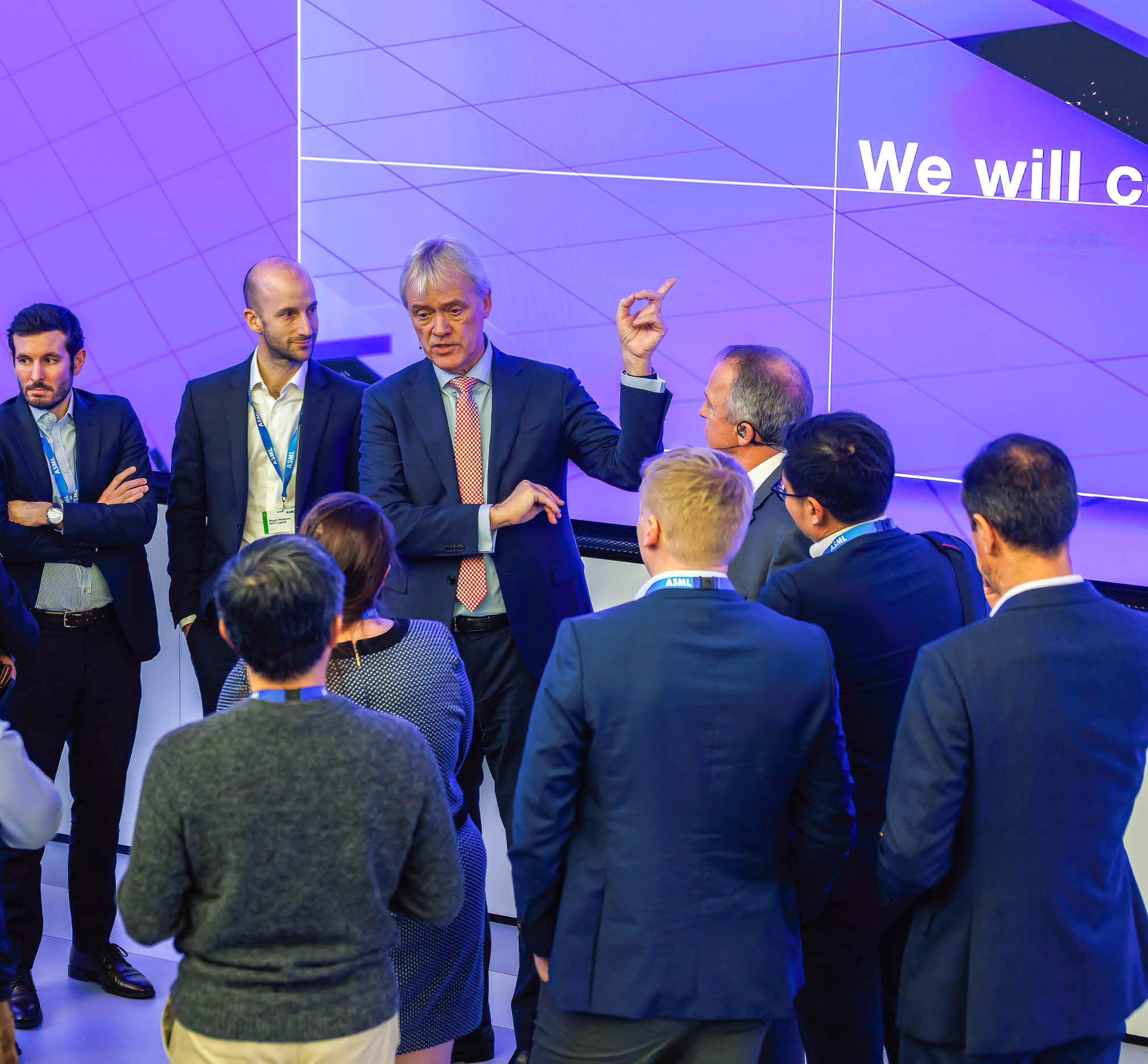
ASML ANNUAL REPORT 2023 | CORPORATE GOVERNANCE CONTINUED | STRATEGIC REPORT | CORPORATE GOVERNANCE | FINANCIALS | 192 | |
AGM and share capital (continued) | ||||||
Annual Reports | ||||
ASML publishes, among others, the following annual reports regarding the financial year 2023: •The statutory Annual Report, prepared in accordance with the requirements of Dutch law. The Financial Statements included therein are prepared in accordance with Part 9 of Book 2 of the Dutch Civil Code and EU-IFRS; and •The Annual Report on Form 20-F, prepared in accordance with the requirements of the Exchange Act. The Financial Statements included therein are prepared in conformity with US GAAP. •Both reports have the same qualitative base and describe the same risk factors that are specific to the semiconductor industry, ASML and ASML’s shares. We also provide sensitivity analyses by providing: •A narrative explanation of ASML’s Financial Statements; •The context within which financial information should be analyzed; and •Information about the quality, and variability, of our earnings and cash flow. | 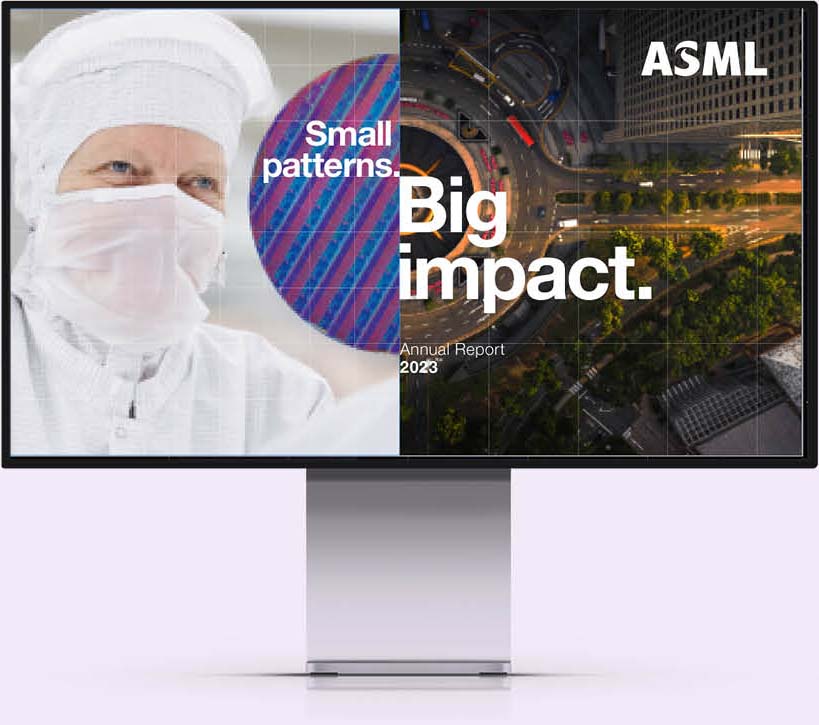 | |||
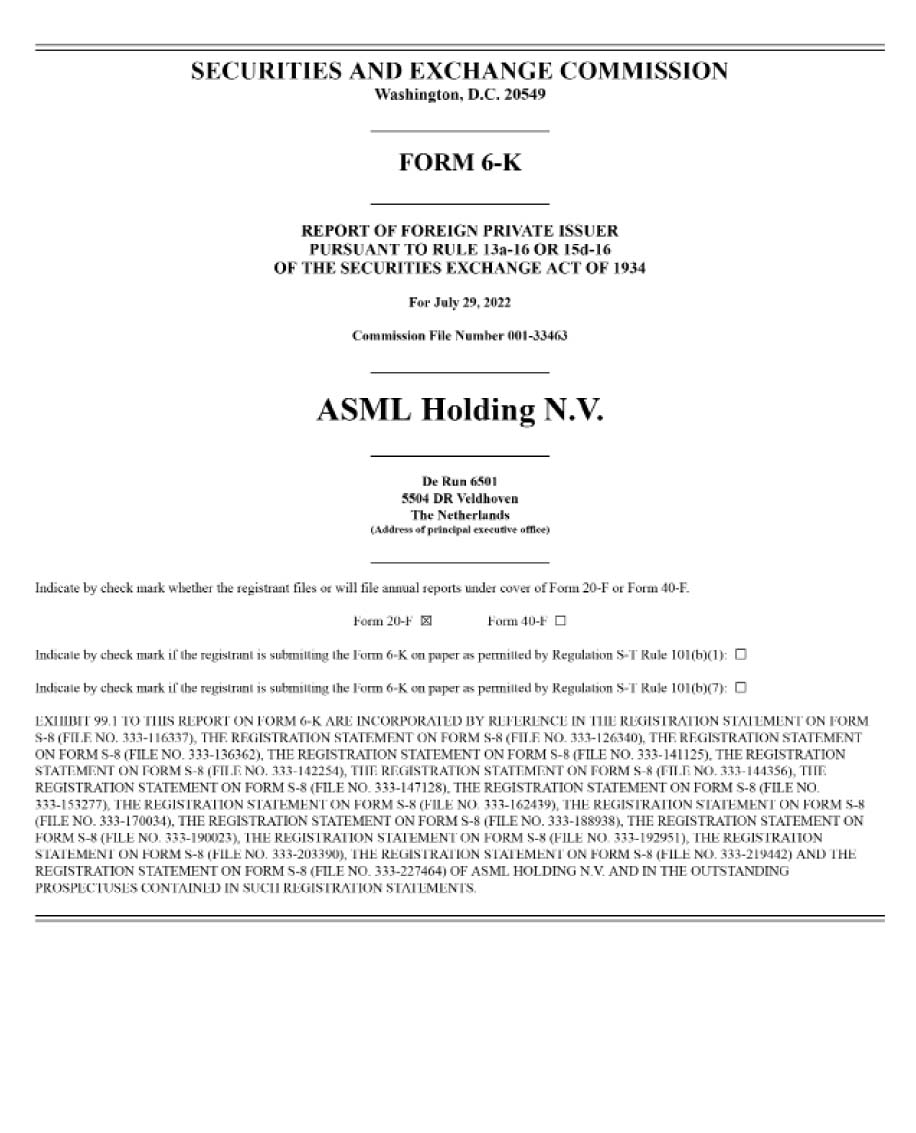 | ||||
ASML annually prepares two sets of annual reports
including Financial Statements as set out on this page.
With respect to the process of creating the Annual
Report, we have extensive guidelines for the content and
layout of our report. These guidelines are primarily based
on the applicable laws and regulations referred to above.
With respect to the preparation process of these and the
other financial reports, we apply internal procedures to
safeguard the completeness and accuracy of such
information as part of its disclosure controls and
procedures. The Disclosure Committee assists the Board
of Management in overseeing ASML’s disclosure
activities and ensures compliance with applicable
disclosure requirements arising under Dutch and US law,
and other regulatory requirements. These internal
procedures are frequently discussed by the Audit
Committee and the Supervisory Board.
For ASML’s internal risk management and control systems read
The Supervisory Board has reviewed and approved
ASML’s 2023 Financial Statements as prepared by the
Board of Management. KPMG has duly examined our
Financial Statements, and the Auditor’s Report is
included in the Consolidated Financial Statements.
External Audit
In accordance with Dutch law, our external auditor is
appointed by the General Meeting, based on a
nomination for appointment by the Supervisory Board.
The Supervisory Board bases its nomination on the
advice from the Audit Committee and the Board of
Management, who annually provide a report to the
Supervisory Board on the performance of and
relationship with the external auditor, as well as its
independence. ASML’s current external auditor, KPMG,
was first appointed by the General Meeting in 2015 for
the reporting year 2016, and has been reappointed on a
yearly basis since then. At the 2022 AGM, KPMG was
appointed as the external auditor for the reporting years
2023 and 2024.
On April 26, 2023, the General Meeting adopted the
proposal to appoint PricewaterhouseCoopers
Accountants NV (PwC) as ASML's external auditor for
the reporting year 2025.
ASML ANNUAL REPORT 2023 | CORPORATE GOVERNANCE CONTINUED | STRATEGIC REPORT | CORPORATE GOVERNANCE | FINANCIALS | 193 | |
Financial reporting and audit | ||||||
The Audit Committee reviews and approves the external
auditor’s audit plan for the audits planned during the
financial year. The audit plan also includes, among
others, the activities of the external auditor with respect
to their limited procedures on the quarterly results other
than the annual accounts. Proposed services may be
pre-approved at the beginning of the year by the Audit
Committee (annual pre-approval) or may be pre-
approved during the year by the Audit Committee in case
of a particular engagement (specific pre-approval). The
annual pre-approval is based on a detailed, itemized list
of allowed services to be provided, which is designed to
ensure there is no management discretion in determining
whether a service has been approved, and to ensure the
Audit Committee is informed of each service it is pre-
approving.
Dutch rules require strict separation of audit and advisory
services for Dutch public-interest entities and US
regulations restrict services that can be provided by an
auditor of a US listed company. Dutch law prohibits the
acceptance by the external auditor of other services
when an audit is performed. The Audit Committee
monitors compliance with Dutch and US rules on
services provided by the external auditor.
The remuneration of the external auditor is approved by
the Audit Committee on behalf of the Supervisory Board,
and after consulting the Board of Management. As the
Audit Committee has the most relevant insight and
experience in this area, the Supervisory Board has
delegated these responsibilities to the Audit Committee.
Read more information on principal accountant fees and
In principle, the external auditor attends all the Audit
Committee meetings. The external auditor’s findings are
discussed at these meetings. The Audit Committee
reports to the Supervisory Board on the topics discussed
with the external auditor, including the external auditor’s
reports with regard to the audit of the annual reports as
well as the content of the annual reports. Furthermore,
the external auditor may attend the Supervisory Board
meeting in which the annual external audit report is
discussed. The external auditor may also attend
Supervisory Board meetings at which the quarterly
financial results are discussed.
The Audit Committee is informed by the external auditor
without delay if the external auditor discovers
irregularities in the content of the audit of the financial
reports.
The external auditor is present at our AGM to respond to
questions, if any, from the shareholders about the
auditor’s report on the Consolidated Financial
Statements.
Internal Audit
The role of our Internal Audit function is to assess our
systems of internal controls by performing independent
procedures such as risk-based operational audits, IT
audits and compliance audits. The Internal Audit
department reports directly to the Audit Committee and
to a member of the Board of Management, the CFO. The
yearly Internal Audit plan is discussed with and approved
by the Audit Committee, the Board of Management and
the Supervisory Board. The follow-up on the Internal
Audit findings and progress made compared with the
plan are discussed on a quarterly basis with the Audit
Committee. The external auditor and Internal Audit
department have meetings on a regular basis. During
2023 an external assessment of the Internal Audit
function was performed. The results of the assessment
were discussed with the Board of Management at the
end of 2023 and with the Audit Committee in early 2024.
ASML ANNUAL REPORT 2023 | CORPORATE GOVERNANCE CONTINUED | STRATEGIC REPORT | CORPORATE GOVERNANCE | FINANCIALS | 194 | |
Financial reporting and audit (continued) | ||||||
Corporate information
ASML Holding NV is a holding company that operates
through its subsidiaries. We have operating subsidiaries
in the Netherlands, the United States, Italy, France,
Germany, the United Kingdom, Ireland, Belgium, South
Korea, Taiwan, Singapore, China, Hong Kong, Japan,
Malaysia and Israel.
Read more in Exhibit Index - Exhibit 8.1 - List of main
US listing requirements
As ASML’s New York Shares are listed on Nasdaq Stock
Market LLC, Nasdaq corporate governance standards in
principle apply to us. However, Nasdaq rules provide that
foreign private issuers may follow home country practice
in lieu of the Nasdaq corporate governance standards
subject to certain exceptions. Our corporate governance
practices are primarily based on Dutch requirements. The
table on this page sets forth the practices followed by ASML
in lieu of Nasdaq rules the exception as described above.
Compliance with the Corporate
Governance Code
We closely follow the developments in the area of
corporate governance and the applicability of the relevant
corporate governance rules for ASML. Any substantial
changes to ASML’s corporate governance structure or
application of the Corporate Governance Code will be
submitted to the General Meeting for discussion.
We are of the opinion that ASML fully complies with the
applicable principles and best-practice provisions of the
Dutch Corporate Governance Code as in effect for the
financial year 2023.
The Board of Management and the Supervisory Board,
Veldhoven, February 14, 2024
Practices followed by ASML in lieu of Nasdaq rules | |
Quorum | ASML does not follow Nasdaq’s quorum requirements applicable to meetings of ordinary shareholders. In accordance with Dutch law and generally accepted Dutch business practice, ASML’s Articles of Association provide that there are no quorum requirements generally applicable to general meetings of shareholders. |
Solicitation of proxies | ASML does not follow Nasdaq’s requirements regarding the solicitation of proxies and the provision of proxy statements for general meetings of shareholders. ASML does furnish proxy statements and solicit proxies for the General Meeting. Dutch corporate law sets a mandatory (participation and voting) record date for Dutch listed companies at the 28th day prior to the date of the General Meeting. Shareholders registered at such a record date are entitled to attend and exercise their rights as shareholders at the General Meeting, regardless of sale of shares after the record date. |
Distribution of Annual Report | ASML does not follow Nasdaq’s requirement regarding distribution to shareholders of copies of an annual report containing audited Financial Statements prior to our AGM. The distribution of our annual reports to shareholders is not required under Dutch corporate law or Dutch securities laws, or by Euronext Amsterdam. Furthermore, it is generally accepted business practice for Dutch companies not to distribute annual reports. In part, this is because the Dutch system of bearer shares has made it impractical to keep a current list of holders of the bearer shares in order to distribute the annual reports. Instead, we make our Annual Report available at our corporate head office in the Netherlands (and at the offices of our Dutch listing agent as stated in the convening notice for the meeting) no later than 42 days prior to convocation of the AGM. In addition, we post a copy of our Annual Reports on our website prior to the AGM. |
Equity compensation arrangements | ASML does not follow Nasdaq’s requirement to obtain shareholder approval of stock option or purchase plans or other equity compensation arrangements available to officers, directors or employees. It is not required under Dutch law or generally accepted practice for Dutch companies to obtain shareholder approval of equity compensation arrangements available to officers, directors or employees. The General Meeting adopts the Remuneration Policy for the Board of Management, approves equity compensation arrangements for the Board of Management and approves the remuneration for the Supervisory Board. The Remuneration Committee evaluates the achievements of individual members of the Board of Management with respect to the short- and long-term quantitative performance and he full Supervisory Board evaluates the quantitative performance criteria. Equity compensation arrangements for employees are adopted by the Board of Management within limits approved by the General Meeting. |
ASML ANNUAL REPORT 2023 | CORPORATE GOVERNANCE CONTINUED | STRATEGIC REPORT | CORPORATE GOVERNANCE | FINANCIALS | 195 | |
Compliance with Corporate Governance requirements | ||||||

Dear Stakeholder,
As I approach the end of my first 12 months as Chair of
the Supervisory Board, I reflect on a year when ASML
continued to grow and posted record figures against a
backdrop of significant challenges that currently
characterize our markets.
Geopolitical uncertainty, inflation and the desire for
regional technological sovereignty all continued to
exacerbate the volatility of our sector while supply chain
constraints have again hampered production capacity.
Yet despite the pressures and uncertainties which have
seen the semiconductor industry move into a cyclical
trough, ASML has delivered a sales increase of 30% over
the previous year, with a gross margin of 51.3% – and
the prospects for the years ahead appear to be positive
and sustained.
On a personal level, it has been both inspirational and a
privilege to lead the Supervisory Board of one of the
world’s most important tech companies. ASML is
strategically significant, not only to the Netherlands, but
also to Europe in a wider context. The company is a real
locomotive in developing and strengthening the
European technology scene, through precision
manufacturing as well as semiconductor research.
Before my career in business, I was drawn to engineering
and have long been fascinated by the potential of
technology to transform lives for the better. In addition,
through my experience at other multinational companies
I’ve developed a keen interest in both macroeconomics
and global politics. My role on the Supervisory Board at
ASML brings together those interests at a time when
technology has assumed even greater importance in
people’s lives and has become a hot topic on the
agendas of political leaders worldwide.
Working with the Board of Management
The Supervisory Board is a diverse group of individuals
with enormous experience – not only in technology and
manufacturing, which are of course extremely relevant to
ASML, but also in broader fields. Besides our formal
meetings, our nine members take part in many additional
ad hoc meetings.
Together, we have the appropriate knowledge and skill
sets to guide management on a wide range of issues
including geopolitical matters. Our role is not to run the
company, but to provide oversight, evaluate performance
and give advice where required or requested. One of the
Chair’s key responsibilities is to create a ‘safe space’
where discussion can take place freely and openly.
Mutual trust and respect are absolutely central here –
management has to be confident that we are a valuable
sounding board, and in turn we have to trust
management to take heed of our advice, focus on the
right things and work towards viable solutions. In the
short period of time that I have been in position, I have
seen that the relationship is working well and that we
share a vision of the challenges and opportunities facing
ASML.
The following pages of this report provide detail on the
areas of focus that we concentrated on during the year,
one of which being ESG, which is an increasingly key
matter for all companies. In recognition of the importance
of ESG, we established ASML’s ESG Committee in
2023, headed by Birgit Conix. This committee has been
working closely with the company’s ESG Sustainability
team and overseeing the ESG sustainability strategy, as
well as its execution and performance.
ASML ANNUAL REPORT 2023 | SUPERVISORY BOARD REPORT | STRATEGIC REPORT | CORPORATE GOVERNANCE | FINANCIALS | 196 | |
Message from the Chair of the Supervisory Board | ||||||
Another record performance, in challenging circumstances | ||||||
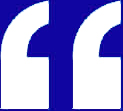 | |||
I am confident that we benefit from a management team, workforce and technological leadership that will enable all our stakeholders as well as wider society to reap long-term rewards.” | |||
Nils Smedegard Andersen | |||
Chair of the Supervisory Board | |||
The Supervisory Board supervises and advises the Board of Management in performing its management tasks and setting the direction for ASML, focusing on long-term and sustainable value creation. The members of the Supervisory Board are fully independent. | |||
Many stakeholders and NGOs have wish lists and
expectations around ESG, and the challenge for us is to
be courageous in defining where we can only have
limited impact and prioritize our work where we can
actually make a real difference to the world. You can
Engaging with our stakeholders
The advice we provide to management is based on our
own external experiences together with insight gained
through regular meetings with the company’s diverse
group of stakeholders.
As part of my onboarding, I have met several suppliers,
which provided a deeper appreciation of the challenges
that they face in following ASML in its long-term growth
requirements. I also engaged with some of our most
important customers, getting their input on how they see
the future development of ASML, where we should focus
our innovation activities and how we could better meet
their needs. The Supervisory Board also engaged with
investors on many occasions to understand their
concerns and expectations.
Equally important, we met employee representatives to
make them aware of the topics discussed and share how
the Supervisory Board and the Works Council see the
organization moving forward.
A great team
I have known about ASML for many years and admired
the company’s track record of growth from a distance.
However, during my onboarding process and
subsequently through meetings and other interactions,
I’ve been enormously impressed by something that only
an insider can truly appreciate: the passion and talent of
ASML people. This is a dynamic and impressive
company, shaped by its special culture and the burning
desire to ‘do the right thing’ for society at large.
We have skills and technology that everybody recognizes
as world-class. This is thanks to a very engaged team
with fantastic ethics and high morale working in a very
open, sharing environment. They take their
responsibilities enormously seriously – and they fully
embrace the fact that the activities that ASML carries out
in the Netherlands and across the world have a
considerable and increasing impact on how we all live,
work and play.
Changes to our Board of Management
On November 30, 2023, we announced that ASML’s Co-
Presidents Peter Wennink and Martin van den Brink will
retire from ASML upon completion of their current
appointment terms per the 2024 AGM, and that we
intend to appoint Christophe Fouquet, currently ASML’s
Chief Business Officer and member of the Board of
Management, as the company’s next President and
Chief Executive Officer. This appointment is subject to
notification of the AGM on April 24, 2024. The
Supervisory Board, together with the management team,
has gone through a comprehensive succession planning
process. With Christophe, we have identified a very
experienced leader with deep understanding of ASML’s
technology and the semiconductor industry ecosystem –
acquired through different roles at ASML and other
companies – and the right leadership qualities and
culture fit. We are grateful and full of admiration for the
immense contributions that Peter and Martin have made
over decades, helping to shape ASML into the
successful company that it is today. Peter and Martin
have been preparing ASML for the future, and we know
they will be fully engaged in securing a smooth transition
for the company and all of ASML’s stakeholders.
In addition, we intend to appoint Jim Koonmen as Chief
Customer Officer, a new position in ASML’s Board of
Management, subject to notification of the General
Meeting on April 24, 2024.
Jim’s appointment underscores ASML’s ambition to
continuously increase our responsiveness to customer
needs, and to consistently deliver high-performance
products and services.
Outlook and focus for 2024
Geopolitical uncertainties are already with us, and these
will continue to challenge ASML and the broader
semiconductor industry in the months and years ahead.
As for the global economy, although the experts are in
general predicting a soft landing my experience tells me
that this is precisely the time to be extra alert. We need
to be ready to embrace a range of different scenarios
and work with customers and suppliers to meet their
priorities.
The cyclical trough in the semiconductor industry is likely
to begin its upturn during 2024 before accelerating
rapidly towards the end of the year and through 2025.
We need to use this time very constructively, investing in
the future and preparing production-wise for the tools
that our customers will need in the future. At the same
time, we can use a period of steadier growth to organize
ASML in ways that can improve our long-term
competitiveness and make sure we can satisfy a broad
range of stakeholder demands.
ASML is a resilient business operating in a long-term
growth industry. I am confident that we benefit from a
management team, workforce and technological
leadership that will enable all our stakeholders as well as
wider society to reap long-term rewards.
On behalf of the entire Supervisory Board I would like to
thank the whole ASML team for their commitment and
hard work throughout 2023.
Finally, I would also like to thank Gerard Kleisterlee and
Rolf-Dieter Schwalb, who have served on the
Supervisory Board since 2015 and stepped down in April
2023, for their valuable contributions as Chair of the
Supervisory Board and Selection & Nomination
Committee and as Chair of the Audit Committee,
respectively. They have been great source of guidance
and advice for ASML and we wish them all the best for
the future.
Nils Andersen
Chair of the Supervisory Board
ASML ANNUAL REPORT 2023 | SUPERVISORY BOARD REPORT CONTINUED | STRATEGIC REPORT | CORPORATE GOVERNANCE | FINANCIALS | 197 | |
Message from the Chair of the Supervisory Board (continued) | ||||||
 |  | ||
6 | 44% | ||
Supervisory Board meetings | Female members | ||
(2022: 7) | (2022: 44%) | ||
 |  | ||
98% | 3.2 | ||
Attendance rate | Years average tenure | ||
(2022: 95%) | (2022: 4) |
The Supervisory Board supervises and advises the Board of
Management in performing its management tasks and
setting the direction for ASML. The Supervisory Board
focuses on long-term and sustainable value creation, with
the goal of ensuring that the Board of Management pursues
a strategy that secures ASML’s leading position as a
supplier of holistic lithography solutions to the
semiconductor industry. The Supervisory Board maintains
an appropriate system of checks and balances, provides
oversight, evaluates performance and gives advice where
required or requested. Through good governance, we help
to ensure that ASML acts in the best interests of the
company and its stakeholders. In this Supervisory Board
Report, we report on our activities in 2023.
We are pleased to see that 2023 was another year of stellar
performance for ASML, despite significant macroeconomic
and geopolitical challenges. Sales and gross margin grew
compared to 2022 and we made progress in technological
development as well as in the area of ESG Sustainability.
Another area where we made progress is in our
organizational development. During 2023, the strategic
sourcing and supply chain organization was transformed
with the aim of optimizing our partnerships with our suppliers
in order to ensure the required flexibility and capability to be
able to meet our customer demand for the short and long-
term. In the area of customer trust, a transformation was
prepared, aimed at ASML's customer facing roles and
responsibilities, to prepare for future growth and enable
further improvements in customer trust.
Supervisory Board focus in 2023
Throughout 2023, the Supervisory Board agenda was
centered around the strategy and its execution, financial and
operational performance, business developments, risk
management, and people and organization. Based on the
strategic priorities for ASML as agreed in the annual strategy
review, several topics were extensively discussed by means
of deep dives, allowing a focused and in-depth review.
Strategy and sustainable long-term value creation
The Supervisory Board devoted a considerable amount
of time in 2023 to discussing strategic topics. We carried
out our recurring annual review of ASML’s corporate
strategy, the long-term financial plan and the long-term
plans of ASML's business and operational sectors.
During the annual strategy review, the Supervisory Board
confirmed its support for the general strategic direction
and discussed what the key strategic challenges, focus
areas for further strategy development, are. The
Supervisory Board provided their perspectives on topics
such as dependency on suppliers, cost and flexibility,
future technology and innovation roadmap, installed base
services, global footprint. The Supervisory Board
concluded that it fully supports ASML’s strategy, which is
centered around the four pillars: 1. Grow our holistic
lithography business; 2. Secure unique supply chain
capabilities to ensure business continuity; 3. Move
toward adjacent business opportunities; and 4. Deliver
on ESG sustainability commitments.
Deep dive: Market and geopolitics | ||||
The Supervisory Board discussed with the Board of Management the short-, medium- and long-term market developments in the semiconductor industry and the related growth opportunities for ASML. Aspects discussed were the key end market drivers, the future of lithography shrink and future affordability of lithography solutions, potential opportunities in adjacent technologies and ASML's competitive position. In terms of geopolitics, global forces limiting ASML's options to do business in China were extensively discussed and the Supervisory Board made recommendations as to how to best navigate this situation. | ||||
 | ||||
As part of the annual strategy review, we held dedicated
workshops focused on our technology & holistic
lithography roadmap, market and geopolitics, global
footprint and cost reduction & flexibility. These sessions
enable an engaged and focused discussion between the
Supervisory Board and Board of Management on key
strategic matters, and we highly value this way of
contributing to the strategic decision-making process.
Other strategic topics discussed throughout the year
included the transformation programs in the area of
Customer Trust, Robust Supply Chain, and Integrated
Operating Model, ASML's value strategy and service
business model and the mature lithography market.
With global trends expected to continue fuelling
semiconductor growth long-term driving an increasing
demand for wafers and ASML continuing to focus on the
execution of its strategic priorities, the Supervisory Board
has confidence in ASML’s long-term growth opportunities
and the continued delivery of value to its stakeholders.
ASML ANNUAL REPORT 2023 | SUPERVISORY BOARD REPORT CONTINUED | STRATEGIC REPORT | CORPORATE GOVERNANCE | FINANCIALS | 198 | ||
Supervisory Board focus in 2023 | |||||||
 |
Alongside the annual strategy review, the Supervisory Board addressed strategic topics throughout the year via deep dives, which enabled focused, in-depth review.” |
Nils Andersen |
Chair of the Supervisory Board |
Financial and operational performance
We reviewed the annual and interim Financial
Statements, including non-financial information, the
quarterly results and accompanying press releases, as
well as the outcomes of the year-end US GAAP and EU-
IFRS audits.
As part of the financial updates, the Supervisory Board,
assisted by the Audit Committee, reviewed ASML’s
financing and capital return policies. The Supervisory
Board approved the Board of Management’s proposals
for the final and interim dividends paid in 2023.
Furthermore, the Supervisory Board monitored the
execution of the 2022-2024 share buyback program.
Attention was paid to free cash flow, which was relatively
low compared to prior years given the challenging
economic climate as well as because ASML decided to
support customers and suppliers in navigating liquidity
issues.
Another area of Supervisory Board focus during 2023
was cost and flexibility. While our outlook for future
growth remains strong, short-term volatility will occur and
in 2023 we saw an downturn in the semiconductor
industry. The Supervisory Board focused on the
challenges related to addressing the downcycle while at
the same time preparing for the upcycle when it will
occur and stressed the importance of flexibility and cost
efficiency in order to ultimately support our customers
with cost effective solutions.
As a Supervisory Board, we are pleased with ASML's
financial performance during 2023 and we are confident
that ASML is well positioned to continue to deliver long-
term growth and stakeholder value in a sustainable
manner.
Market and business developments
The Supervisory Board closely monitored the market and
business developments and saw management address
the challenges related to macroeconomics,
semiconductor and geopolitics with the highest priority.
As a technology leader in the semiconductor industry,
technological progress is one of ASML’s top priorities.
The Supervisory Board closely followed the execution of
the product and technology roadmap and is pleased to
see ASML making good progress on further
enhancements to our EUV, DUV and metrology and
inspection systems.
Another area of focus during 2023 was export control.
The Supervisory Board closely followed and discussed
with the Board of Management developments in this area
and the implications for ASML.
Deep dive: Transformation | ||||
After a decade of strong growth, ASML anticipates continued future growth with its usual cycles. In consequence, we have to be able to respond to market demand with increased flexibility and agility to maintain our customer trust and technology leadership. In order to respond to these challenges, the Board of Management embarked on a journey to drive 3 strategic transformation projects related to Customer Trust, Robust Supply Chain, and Integrated Operating Model. Ample time was spent by the Supervisory Board discussing these programs in open dialogues with the Board of Management, during which the Supervisory Board challenged and advised the Board of Management on how to organize for the future expected growth towards 2030. The Supervisory Board is pleased with the strengthening of our supply chain resilience as well as with the reorganization of ASML's customer- facing organization, which will be implemented in 2024. | ||||
 | ||||
People and organization
Given the significant growth of ASML in recent years, the
topics of people and organization continued to be key areas
of focus for the Supervisory Board in 2023, as we believe
that these are of critical importance for the future success of
ASML. On several occasions, we were provided with
updates on Human Resources and Organization. Topics
covered included the People Strategy, the progress made
on the ASML leadership program, the results of the annual
employee engagement survey and Diversity & Inclusion.
Specific attention was also paid to ASML's culture and
values the focus of the Supervisory Board was how to
maintain the culture that has made ASML successful while
growing so fast in number of employees. We also extensively
discussed the organizational setup of ASML in the context of
current and future growth and we reviewed the progress of
the transformation programs related to Customer Trust,
Robust Supply Chain and Future Operating Model. As a
result of this discussion, the Supervisory Board decided to
position the role of the Executive Vice President and Chief
Customer Officer in the Board of Management, as
announced by press release on November 30, 2023.
Furthermore, the Supervisory Board, assisted by the
Selection and Nomination Committee, extensively discussed
and provided advice in respect of ASML’s talent
management and people development programs as well as
succession planning for the Board of Management and
senior management. The Supervisory Board is pleased to
see the effort being put into the onboarding of new
employees, enabling them to develop and contribute as
quickly as possible.
Furthermore, as a Supervisory Board, we find it important
that business processes are fit for growth. We therefore
oversaw the Business Performance Improvement (BPI)
initiative, focused on improving our cross-sectoral, non-
product-related business processes. As part of the BPI
initiative, we also monitored the progress on the ONE
Program, which is part of the BPI initiative and which is
ASML’s program dedicated to securing configuration
integrity over the life cycle of our customer offerings while
enhancing the business processes and maintaining flexibility,
ASML ANNUAL REPORT 2023 | SUPERVISORY BOARD REPORT CONTINUED | STRATEGIC REPORT | CORPORATE GOVERNANCE | FINANCIALS | 199 | |
Supervisory Board focus in 2023 (continued) | ||||||
with the support of its upgraded backbone information
system. We paid special attention to the sub-roadmaps of
the program where there had been less progress than
planned, looking at the challenges and mitigating actions.
We will continue to closely follow the developments.
Deep dive: ESG Sustainability strategy | ||||
As a Supervisory Board we consider ESG Sustainability an increasingly important topic. While the Supervisory Board keeps the overall oversight of ESG Sustainability, various ESG Sustainability aspects are discussed at committee level, e.g. reporting in the Audit Committee, diversity in the Selection and Nomination Committee, ESG Sustainability as part of the Board of Management's incentive scheme in the Remuneration Committee and product and technology aspects in the Technology Committee. In 2023, we discussed ASML’s updated ESG Sustainability strategy and execution with the Board of Management. In deep dive sessions specific attention was paid to EUV energy efficiency, which is a key area of focus also given ASML's CO2 reduction ambitions, and the Diversity & Inclusion strategy and the implementation thereof. To underline the importance of ESG Sustainability, the Supervisory Board decided to establish an ESG Committee in 2023. | ||||
 | ||||
Risk management
As risk management is a key element of the Supervisory
Board’s responsibilities, we received periodic risk
management updates during the year. We focused on
the risk landscape and the developments in that area,
the risk appetite and the measures put in place by the
Board of Management to mitigate the critical risks.
During 2023, we paid particular attention to the
challenges created by the (geo)political risks, given the
global trade situation, and developments in the area of
export controls and the potential impact on ASML's
business. We also performed a deep-dive review on
Security risks, given the increasing risk profile. .
Read more in Risk - How we manage risk
Relationship with stakeholders
The Supervisory Board reviewed the stakeholder
engagement policy as adopted by the Board of
Management at the end of 2023.
The Supervisory Board regularly discussed ASML’s
relationship with its shareholders, and Supervisory Board
members engaged with shareholders throughout the
year on topics such as ASML’s strategy and
performance, governance and ESG. The Remuneration
Committee engaged with a variety of ASML shareholders
and other stakeholders regarding remuneration. More
information can be found in the Remuneration Report.
A Supervisory Board delegation held two formal
meetings with the Works Council in 2023. We exchanged
views on ASML’s strategy and priorities, ASML’s
performance and challenges, in particular related to the
growth and increased complexity of ASML’s business. In
this context, the effectiveness of new processes
supporting growth and institutionalizing of ASML was
addressed. Other topics of discussion were ESG, the
develop and perform program at ASML, leadership
development and the status and future plans related to
working from home / return to work onsite. The
composition of the Supervisory Board and the Board of
Management was discussed, in particular the changes
per the 2023 and 2024 AGM's. The Works Council and
Supervisory Board also extensively discussed the 2023
Remuneration Policy for the Supervisory Board; more
information on the interactions with the Works Council on
the topic of executive remuneration can be found in the
Remuneration Report.
In November 2023, the Supervisory Board paid a visit to
one of our key suppliers, Zeiss in Oberkochen, Germany.
During the visit, the Supervisory Board met with Zeiss AG
and Zeiss SMT management and was provided with a
business update as well as an overview of the current
and future technology roadmap. A visit was also paid to
the Zeiss SMT factory, where the Supervisory Board was
impressed by the great achievements of the teams
working on the EUV optical products. For the
Supervisory Board, such visits are highly valuable
because it increases our understanding of our suppliers
and the challenges they face.
Additional topics
Other topics considered during Supervisory Board
meetings in 2023 included:
•Compliance with rules and regulations: We monitored
compliance with rules and regulations including the
Dutch Corporate Governance Code and were kept
informed on key legal matters, including developments
in the area of export control regulations.
•Supervisory Board composition, profile and
functioning: We extensively discussed our own
composition, profile and functioning, the composition
and functioning of Board committees and the
composition and functioning of the Board of
Management. More information can be found in the
report of the Selection and Nomination Committee.
•Board of Management composition and performance:
We also monitored the performance of the Board of
Management and decided on the Board of
Management’s remuneration targets and target
achievements. More information can be found in the
reports of the Selection & Nomination Committee and
the Remuneration Committee.
An overview of topics discussed during the year can be
found in the table on the next page.
ASML ANNUAL REPORT 2023 | SUPERVISORY BOARD REPORT CONTINUED | STRATEGIC REPORT | CORPORATE GOVERNANCE | FINANCIALS | 200 | |
Supervisory Board focus in 2023 (continued) | ||||||
The table on this page
provides a schematic
overview of the topics
discussed in the meetings
of the Supervisory Board
during 2023.
Recurring topics on each
Supervisory Board meeting
are a CEO report, focusing
on market and customer
developments, share price
development and investor
perceptions, performance
on the business priorities
including ESG, a financial
update and the Supervisory
Board Committee reports.
Strategy & sustainable long- term value creation | ||||
Q1 | ||||
•ESG strategy, including deep dives on EUV energy efficiency and Diversity & Inclusion •Expansions beyond current scope and M&A strategy •Remuneration Board of Management and Supervisory | ||||
Q2 | ||||
•Deep dive: Future operating model •Deep dive: Tool allocation policy •Deep dive: Scenarios to ramp the end-to-end supply chain including industrial footprint | ||||
Q3 | ||||
•Deep dive: value strategy and service business model •Deep dive: BPI | ||||
Q4 | ||||
•Annual strategy review •Deep dive: Semi & litho market •Deep dive: Geopolitics & market access •Deep dive: Global footprint •Deep dive: Cost & Flexibility | ||||
Business developments | ||||
Q2 | ||||
•Market outlook and demand drivers •Update on business sectors: EUV, DUV, Applications | ||||
Q4 | ||||
•Transformation projects related to sourcing & supply chain, Customer and future operating model | ||||
Risk management | ||||
Q1 | ||||
•Update risk landscape & deep dive: security | ||||
Financial & operational performance | ||||
Q1 | ||||
•2022 Annual Results and Annual Report •2022 external audit report •Final dividend 2022 •External auditor rotation •Legal matters report | ||||
Q3 | ||||
•2022 statutory interim report •Cash return including dividend policy and interim dividend •Business Performance Improvement initiative including update on Our New Enterprise (ONE) program | ||||
Q4 | ||||
•Update of business plans of the business sectors and functions •Cash return including interim dividend and share buyback program | ||||
People & organization | ||||
Q1 | ||||
•Composition of Supervisory Board •Composition of Board of Management •Remuneration Policy for the Board of Management | ||||
Q3 | ||||
•Human Resources & Organization (HR&O) update •Composition of Supervisory Board •Composition of Board of Management •HR&O, including deep dives on Diversity & Inclusion and Culture | ||||
Q4 | ||||
•Composition of Supervisory Board •Composition of Board of Management •People Strategy •Results of employee engagement survey | ||||
Governance and stakeholders | ||||
Q1 | ||||
•Outcome of Supervisory Board evaluation •AGM agenda •New Dutch Corporate Governance Code •Amendment to the Rules of Procedure Board of Management and Supervisory Board | ||||
Q2 | ||||
•AGM update | ||||
Q3 | ||||
•ESG oversight by Supervisory Board and Committees | ||||
R | ||||
Q4 | ||||
•Implementation of the Dutch Corporate Governance Code •Amendment Rules of Procedure Supervisory Board and Board of Management •D&I Policies •Supplier deep dive: Zeiss •Supplier visit: Zeiss | ||||
ASML ANNUAL REPORT 2023 | SUPERVISORY BOARD REPORT CONTINUED | STRATEGIC REPORT | CORPORATE GOVERNANCE | FINANCIALS | 201 | |
Supervisory Board focus in 2023 (continued) | ||||||
Meetings and attendance
The Supervisory Board meets at least four times per year
in accordance with its annual schedule and whenever the
Chair, one or more of its members, or the Board of
Management requests a meeting.
In 2023, the Supervisory Board held six meetings. Of
these meetings, one was held virtually and five were held
in person. Three in-person meetings were held at
ASML's headquarters, one was held offsite in Belgium
and one was held in Germany. In addition to these
meetings, there were several informal meetings and
interactions among Supervisory Board and/or Board of
Management members.
Supervisory Board meetings and Supervisory Board
committee meetings are held over several days, ensuring
there is time for review and discussion. At each meeting,
the Supervisory Board members discuss among
themselves the goals and outcome of the meeting, as
well as topics such as the functioning and composition of
the Supervisory Board and the Board of Management.
Also discussed during each meeting are the reports from
the different committees of the Supervisory Board.
The Supervisory Board meetings and the meetings of the
four Supervisory Board committees were well attended,
as is shown in the table on the right.
In addition to the Supervisory Board members, the
members of the Board of Management are invited to the
Supervisory Board meetings. All Board of Management
members were present at the Supervisory Board
meetings in 2023. Members of senior management are
regularly invited to provide updates on topics within their
area of expertise. This gives the Supervisory Board the
opportunity to become acquainted with a variety of
ASML managers, which the Supervisory Board considers
very useful in connection with its talent management and
succession-planning activities.
Meetings of the Supervisory Board | ||||
Most Supervisory Board and Committee meetings held in 2023 were in-person meeting, but the Supervisory Board also met virtually on some occasions. In addition to plenary discussions, break- out sessions in smaller groups were organized for discussing key strategic topics to optimize interaction. We also used preview videos for meeting preparation in addition to written meeting documents, in order to allow as much time as possible for discussion. | ||||
Supervisory Board meeting attendance overview1 | ||||||||||||
 | ||||||||||||
98% | ||||||||||||
Attendance rate | ||||||||||||
Name | Supervisory Board | Audit Committee | Remuneration Committee | Selection and Nomination Committee | Technology Committee | ESG Committee | ||||||
Nils Andersen (Chair)2 | 4/4 | 3/3 | n/a | 4/4 | n/a | n/a | ||||||
Annet Aris | 6/6 | n/a | 5/5 | 6/6 | 5/5 | n/a | ||||||
Birgit Conix | 6/6 | 6/6 | n/a | n/a | n/a | 2/2 | ||||||
Mark Durcan | 6/6 | n/a | n/a | 6/6 | 5/5 | n/a | ||||||
Warren East | 6/6 | 6/6 | n/a | n/a | 5/5 | n/a | ||||||
Alexander Everke | 6/6 | n/a | 5/5 | n/a | n/a | 2/2 | ||||||
Terri Kelly | 6/6 | n/a | 5/5 | 6/6 | n/a | n/a | ||||||
Jack de Kreij3 | 4/4 | 3/3 | 3/3 | n/a | n/a | n/a | ||||||
An Steegen | 5/6 | n/a | n/a | n/a | 1/2 | 1/2 | ||||||
Gerard Kleisterlee4 | 2/2 | n/a | 1/1 | 2/2 | 3/3 | n/a | ||||||
Rolf-Dieter Schwalb4 | 2/2 | 3/3 | 2/2 | n/a | n/a | n/a | ||||||
1.This overview contains the attendance data as of the formal date of appointment of until the formal end date of the appointment. 2.Appointed at the AGM on April 26, 2023; also appointed as chair of the Selection and Nomination Committee. 3.Appointed at the AGM on April 26, 2023; also appointed as chair of the Audit Committee and member of the Remuneration Committee. 4.Stepped down per the AGM on April 26, 2023. | ||||||||||||
ASML ANNUAL REPORT 2023 | SUPERVISORY BOARD REPORT CONTINUED | STRATEGIC REPORT | CORPORATE GOVERNANCE | FINANCIALS | 202 | |
Meetings and attendance | ||||||
Composition
The Supervisory Board determines the number of
members required to perform its functions, the minimum
being three members. The Supervisory Board currently
consists of nine members. The Supervisory Board
attaches great importance to its composition,
independence and diversity and strives to meet all the
associated guidelines and requirements. To ensure an
appropriate and balanced composition, the Supervisory
Board spends considerable time on an ongoing basis
discussing its profile, composition and rotation schedule.
Independence
In order to properly perform its tasks, the Supervisory
Board considers it to be very important that its members
are able to act critically and independently of one
another, the Board of Management and other
stakeholders. The independence of the Supervisory
Board and its individual members is assessed on an
annual basis. All current members of the Supervisory
Board are fully independent, as defined by the Dutch
Corporate Governance Code as well as under Nasdaq
rules, and have completed the annual questionnaire
addressing the relevant independence requirements.
Diversity
The current composition of ASML’s Supervisory Board is
diverse in terms of gender, nationality, knowledge,
experience and background and has a suitable level of
experience in the financial, economic, technological,
social and legal aspects of international business. For
more information about diversity, see Corporate
governance – Other Board-related Matters.
Changes in composition in 2023
As their terms of appointment had expired, Gerard
Kleisterlee and Rolf-Dieter Schwalb stepped down from
the Supervisory Board at the 2023 AGM, both having
served eight years on the Supervisory Board. The
Supervisory Board decided, with due observance of the
Supervisory Board profile and rotation schedule, to
nominate Nils Andersen and Jack de Kreij, for
appointment at the 2023 AGM.
The General Meeting resolved to appoint Nils Andersen
and Jack de Kreij for a term of four years effective from
the date of the 2023 AGM.
Changes in composition in 2024
At the 2023 AGM, the Supervisory Board gave notice
that the appointment terms of Annet Aris, Warren East
and Mark Durcan would expire per the 2024 AGM.
Annet Aris, Warren East and Mark Durcan have informed
the Supervisory Board that they are available for
reappointment and the Supervisory Board intends to
nominate these members for reappointment per the
2024 AGM.
ASML ANNUAL REPORT 2023 | SUPERVISORY BOARD REPORT CONTINUED | STRATEGIC REPORT | CORPORATE GOVERNANCE | FINANCIALS | 203 | |
Meetings and attendance (continued) | ||||||
Supervisory Board skills | |||||||||||||||||||||||||||||||||
Board member | General skills | ASML skills | |||||||||||||||||||||||||||||||
Nils Andersen (Chair) | • | • | • | • | • | • | • | ||||||||||||||||||||||||||
Annet Aris | • | • | • | • | • | • | • | • | |||||||||||||||||||||||||
Birgit Conix | • | • | • | • | • | • | |||||||||||||||||||||||||||
Marc Durcan | • | • | • | • | • | • | • | • | • | ||||||||||||||||||||||||
Warren East | • | • | • | • | • | • | • | • | • | • | |||||||||||||||||||||||
Alexander Everke | • | • | • | • | • | • | • | • | • | • | |||||||||||||||||||||||
Terri Kelly | • | • | • | • | • | • | |||||||||||||||||||||||||||
Jack de Kreij | • | • | • | • | • | • | • | • | |||||||||||||||||||||||||
An Steegen | • | • | • | • | • | • | • | • | |||||||||||||||||||||||||
(Former) Executive board member of (listed) international company | Finance / governance | Remuneration | Human resources / employee relations | IT / digital / cyber | ESG | Semiconductor ecosystem | Deep understanding of semiconductor technology | High-tech manufacturing / integrated supply chain management | Business in Asia | ||||||||||||||||||||||||
For the position currently held by Annet Aris, the Works
Council has a strengthened recommendation right. The
Works Council informed the Supervisory Board that it
intends to use its strengthened right to recommend
Annet Aris for reappointment.
The Supervisory Board considered the fact that Annet
Aris, per the date of the 2024 AGM, will have been on
the Supervisory Board for nine years. The Supervisory
Board is of the opinion that a reappointment of Annet
Aris, who is also the Vice Chair of the Supervisory Board,
is beneficial for the Company for reasons of continuity,
given the Supervisory Board Chair change in 2023, and
also because of her wealth of knowledge of ASML and
her experience as an ASML Supervisory Board member.
The agenda and explanatory notes for the 2024 AGM will
contain further information about the intended
nominations for reappointment of these three
Supervisory Board members.
Induction and training
We have a comprehensive induction program in place for
newly appointed Supervisory Board members, designed
to ensure that new members gain a good understanding
of our business and strategy, as well as the key risks we
face. The induction program includes meetings with
other Supervisory Board and Board of Management
members, a technology tutorial and detailed
presentations by our business, operational and corporate
sectors. A site visit and factory tour is also part of the
induction program. On joining the Supervisory Board,
Nils Andersen and Jack de Kreij completed the induction
program.
In addition to the fixed elements to the induction
program, additional induction sessions may be planned
depending on the wishes of the Supervisory Board
members concerned. In the case of both Nils Andersen
and Jack de Kreij, several specific sessions were
organized during 2023 to deep dive into topics of
relevance.
To ensure permanent education, the Supervisory Board is
provided with regular deep dives on a variety of topics, both
in the plenary meetings and in the meetings of the
Supervisory Board’s committees. During 2023, strategy and
risk deep dives were held on a variety of topics: see the Our
Activities 2023 section in this Supervisory Board Report.
Furthermore, external speakers or advisers attended various
committee meetings to provide outside-in views on topics
such as technology developments and technology outlook
and executive remuneration.
The Supervisory Board also performed site visits. The
Technology Committee visited ASML’s industrial site in
Wilton, CT, USA. The Committee met with local
management and was updated on the product portfolio and
related technology roadmaps and on the organization and
paid a visit to the factory. The Wilton visit provided the
Technology Committee with valuable insights into the
contributions of this industrial site to ASML's technology and
business. In November 2023, the Supervisory Board
visited Zeiss SMT in Oberkochen, Germany, as further
described in the section Our activities 2023 in this
Supervisory Board Report.
Evaluation
The Supervisory Board greatly values the structural and
ongoing evaluation process as a means of ensuring
continuous improvement in our way of working. Each
year, the Supervisory Board, assisted by the Selection
and Nomination Committee, evaluates the composition,
competence and functioning of the Supervisory Board
and its committees, the relationship between the
Supervisory Board and the Board of Management, its
committees, its individual members, the chairs of both
the Supervisory Board and the committees, as well as
the composition and functioning of the Board of
Management and its individual members, and the
education and training needs for the Supervisory Board
and Board of Management members.
In principle, the evaluation of the Supervisory Board is
performed once every three years by an external adviser; in
the other two years, the evaluation of the Supervisory Board
is performed by means of a self-assessment using a written
questionnaire, followed by one-to-one meetings between
the Chair and individual Supervisory Board members.
The 2023 evaluation of the Supervisory Board and its
committees was performed through a web-based
survey, which was prepared by the Selection and
Nomination Committee. The Chair of the Supervisory
Board also met with the individual Supervisory Board
members. The evaluation was centered around the
following themes: composition, stakeholder oversight,
oversight of strategy, risk management and succession
planning, management and focus of meetings and
priorities for improvement. Specific focus areas were the
follow-up of prior-year recommendations and the
Supervisory Board Chair change that took place in April
2023. An upward review by the Board of Management
was also part of the annual assessment.
The results of the Supervisory Board evaluation were
discussed in early 2024. The conclusion was that the
Supervisory Board and its committees continue to
function well. In particular, the level of progress made on
the Supervisory Board's priorities over 2023 received
positive feedback. The leadership of the new Supervisory
Board Chair and the dynamics and the quality of the
discussions at meetings also received positive feedback.
The performance of each of the Supervisory Board
Committees was positively rated, and the ESG
Committee established in 2023 was considered to have
made a strong start. Suggestions to further improve the
functioning of the Supervisory Board will be implemented
in 2024. These suggestions include continuous
enhancement of the oversight on stakeholders, including
by means of customer and supplier visits, building on the
dynamics following the changes in the Board of
Management that will occur per the 2024 AGM, further
optimizing the flow of information, continued focus on
(implementation of) the transformation programs and
further increasing the exposure to senior management.
The Supervisory Board also noted the importance of a
continued focus on succession and talent management
and sees diversity, in particular amongst management,
as a key area of attention.
ASML ANNUAL REPORT 2023 | SUPERVISORY BOARD REPORT CONTINUED | STRATEGIC REPORT | CORPORATE GOVERNANCE | FINANCIALS | 204 | |
Meetings and attendance (continued) | ||||||
The Board of Management evaluated its own functioning
in 2023, focusing on the role, responsibilities and
performance of the Board of Management collectively,
and on the functioning of the individual Board of
Management members, also in light of the changes in the
Board of Management that will become effective per the
date of the 2024 AGM. This self-evaluation took place in
an offsite Board of Management meetings throughout
the year. Important aspects addressed by the Board of
Management include the Board of Management’s
strategic focus, stakeholder involvement, people &
organization, Board dynamics and (future) Board of
Management organization. The overall conclusion of the
self-evaluation was that ASML has a well-functioning
Board of Management. The self-evaluation was also
discussed with the Supervisory Board and its Selection
and Nomination Committee.
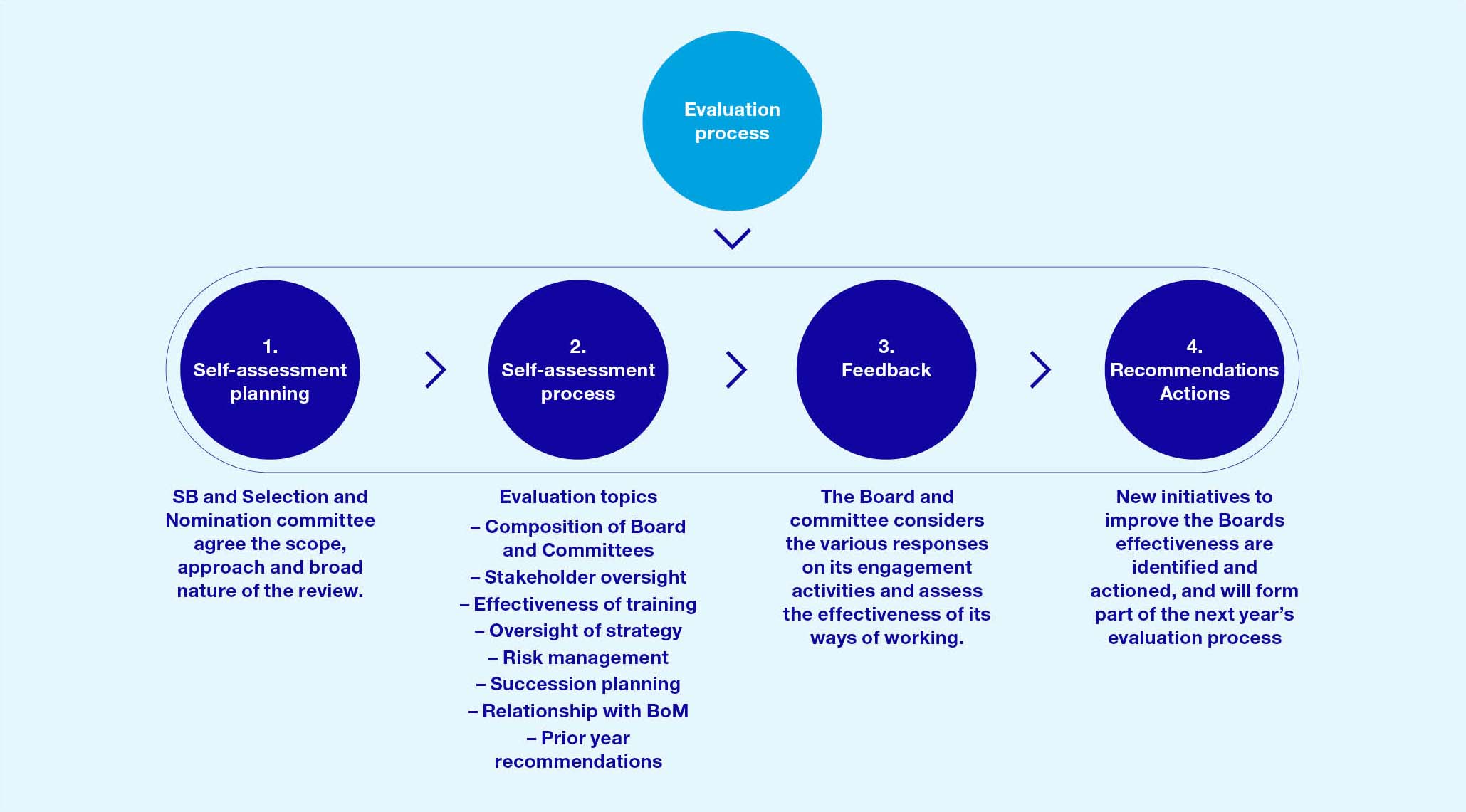
ASML ANNUAL REPORT 2023 | SUPERVISORY BOARD REPORT CONTINUED | STRATEGIC REPORT | CORPORATE GOVERNANCE | FINANCIALS | 205 | |
Meetings and attendance (continued) | ||||||

The Supervisory Board has five standing
committees, with members appointed by the
Supervisory Board from among its members.
The full Supervisory Board remains responsible for
all decisions, including those prepared and taken
by one of the Supervisory Board’s Committees.
The five committees of the Supervisory Board support
the decision-making of the full Board. In the plenary
Supervisory Board meetings, the chairs of the
committees report on the items discussed in their
committee meetings. In addition, the meeting documents
and minutes of the committee meetings are available to
all Supervisory Board members, enabling the full
Supervisory Board to make the appropriate decisions.
Further information about the Audit Committee, the ESG
Committee, the Technology Committee and the Selection and
Nomination Committee can be found in this Supervisory Board
Report. Further information about the Remuneration Committee
Supervisory Board | |||||||||||||||||||||||||
Audit Committee | ESG Committee | Remuneration Committee | Selection and Nomination Committee | Technology Committee | |||||||||||||||||||||
Assisting in overseeing the integrity and quality of our financial reporting and the effectiveness of risk management and controls | Overseeing the ESG sustainability strategy and performance aimed at sustainable, long- term value creation. | Overseeing the development and implementation of the Remuneration Policies, in cooperation with the Audit and Technology Committee | Assisting with the preparation of the selection criteria and appointment procedures for the Supervisory Board and Board of Management | Providing advice with respect to our technology plans required to execute the business strategy | |||||||||||||||||||||
3 | 3 | 4 | 4 | 4 | |||||||||||||||||||||
Members | Members | Members | Members | Members | |||||||||||||||||||||
ASML ANNUAL REPORT 2023 | SUPERVISORY BOARD REPORT CONTINUED | STRATEGIC REPORT | CORPORATE GOVERNANCE | FINANCIALS | 206 | |
Supervisory Board committees | ||||||

Audit Committee | ||||||
The Audit Committee assists the Supervisory Board in overseeing the integrity and quality of our financial reporting and the effectiveness of the internal risk management and internal control systems. | ||||||
 | Main responsibilities: | |||||
•Overseeing the integrity and quality of ASML’s Financial Statements and sustainability disclosures and submitting proposals to ensure such integrity; •Overseeing the accounting, financial and sustainability reporting processes and the audits of the Financial Statements; •Overseeing the effectiveness of our internal risk management and control systems, including compliance with the relevant legislation and regulations, and the effect of codes of conduct; •Overseeing the integrity and effectiveness of our system of disclosure controls and procedures and our system of internal controls over financial and sustainability reporting; •Overseeing the External Auditor’s qualifications, independence, performance and determining its compensation; and •Overseeing the functioning of Internal Audit. | ||||||
Members: | ||||||
•Jack de Kreij (Chair) •Birgit Conix •Warren East The members of the Audit Committee are all independent members of the Supervisory Board. The Supervisory Board has determined that both Jack De Kreij and Birgit Conix qualify as Audit Committee financial experts pursuant to section 407 of the Sarbanes-Oxley Act and Dutch statutory rules, taking into consideration their extensive financial backgrounds and experience. | ||||||
A key area of focus for the Audit Committee in 2023 was how to navigate macroeconomic and semiconductor industry cycle related challenges while investing in future growth | ||||||
Recurring agenda topics (quarterly) | Attendance | ||||||||
•Financial update •Review of the quarterly financial results and press release •Accounting and Internal Control update •Observations of External Auditor •Risk update, incl. (IT) Security •Internal Audit update •Disclosure Committee report •Legal matters report •Ethics and compliance | In addition to the Audit Committee members, the Chair of the Supervisory Board attends the Audit Committee meetings whenever possible. The external auditor and the internal auditor have a standing invitation for Audit Committee meetings and attended all Audit Committee meetings in 2023. The CEO, CFO, EVP Finance, Corporate Chief Accountant, the Head of Risk and Business Assurance are invited to the meetings. | ||||||||
The overview below provides a number of topics discussed during Audit Committee meetings in 2023, in addition to the recurring agenda topics. | |||||||||
Q1 | Q3 | ||||||||
•2022 Annual Report and Financial Statements US GAAP and EU-IFRS •Accounting deep dive: Balance sheet review •2022 External audit report •Annual reporting process •Capital return, incl. interim dividend Q1'23 and final dividend 2022 •Fraud-risk assessment •Results of the external auditor evaluation 2022 •Results of the Audit Committee self-evaluation •Annual plans of Risk and Internal Audit •Compliance deep dives: Finance, ABC and Antitrust •Appointment new head of Internal Audit | •Statutory Interim report 2023 •Capital return, incl. interim dividend Q3'23 •Compliance deep dive: Finance •Audit Committee responsibilities in the area of ESG | ||||||||
Q2 | Q4 | ||||||||
•2023 SOX plan incl. materiality and scoping •External audit plan 2023 •Audit on expense reporting Board of Management and Supervisory Board 2022 •Update Internal Audit Charter •Initial independence discussion with newly to be appointed external auditor | •Financing •Capital return including Q4 2023 interim dividend •2023 Annual Report process •Long-term financial plan •Annual Plan 2024 •Internal Audit Plan 2024 •Compliance deep dive: legal compliance •Annual tax update •External audit update on 'hard close' procedures •Review of Rules of Procedure for the Audit Committee | ||||||||
ASML ANNUAL REPORT 2023 | SUPERVISORY BOARD REPORT CONTINUED | STRATEGIC REPORT | CORPORATE GOVERNANCE | FINANCIALS | 207 | |
Supervisory Board committees (continued) | ||||||

Audit Committee | ||
The Audit Committee is provided with all relevant
information to be able to adequately and efficiently
supervise the preparation and disclosure of financial
information. This includes information on the status and
development of the semiconductor market to support
judgment regarding the outlook and budget for the
next six to 12 months, the application of EU-IFRS and
US GAAP, the choice of accounting policies and the
work of the internal and external auditor.
Audit Committee meetings in 2023
The Audit Committee meets at least four times a year
and always before the publication of the quarterly, half-
year and annual financial results. In 2023, the Audit
Committee held six meetings.
Financials
In 2023, the Audit Committee focused, among other
matters, on financial reporting, most particularly the
review of ASML’s Annual and Interim Reports,
including the annual and interim Financial Statements
and non-financial information. The Audit Committee
also closely monitored the progress and discussed the
outcomes of the year-end US GAAP and EU-IFRS
audits. The quarterly results and the accompanying
press releases were reviewed before publication.
On a quarterly basis, the Audit Committee was provided
with accounting updates by the Corporate Chief
Accountant, highlighting the main accounting matters
relevant for the quarter. A recurring item of focus of the
Audit Committee in this regard is revenue recognition, as
this is a complex accounting matter also identified as a
critical audit matter by the external auditor. Other
important elements of the Audit Committee’s quarterly
procedures included the discussion of the observations
of the external auditor in relation to the accounting
matters, as well as the report by the Disclosure
Committee on the accuracy and completeness of the
quarterly disclosures. Throughout the year, specific
accounting topics were addressed in depth and an
annual in-depth balance sheet review was also
performed.
The operational and financial short- and long-term
performance of ASML was discussed extensively,
looking at various performance scenarios and their
impact on ASML’s results and cash generation.
Particular attention was paid to the macroeconomic
challenges including those related to inflation and
semiconductor market developments, where we have
seen reduced investments by customers. Geopolitical
challenges and in particular the potential impact of
increasing export control restrictions on ASML's
business was another topic of focus for the Audit
Committee.
The Audit Committee reviewed and provided the
Supervisory Board with advice regarding the long-term
financial plan, the financing of ASML and ASML’s cash
return policy. Topics specifically discussed included the
execution of the share buyback program and the
proposed final dividend payment in respect of the 2022
financial year and the interim dividends for the financial
year 2023, which were approved by the Supervisory
Board following recommendation by the Audit
Committee. Extra attention was also paid to free cash
flow, which was relatively low compared to prior years
given the challenging economic climate as well as
because ASML decided to support customers and
suppliers in navigating liquidity issues.
Risk management and internal control
Throughout 2023, the Audit Committee closely
monitored risk management and the risk management
process, including the timely follow-up of high-priority
actions based on quarterly progress updates. Key focus
areas of the Audit Committee included those risks
showing an upward trend, such as geopolitics, uncertain
global economy, pressure on the innovation ecosystem
(including security) and strengthening ESG regulations &
increasing stakeholder expectations. The Audit
Committee oversaw the annual internal control process,
with a focus on scoping, materiality levels, updates to the
internal control framework, the tests of design and
effectiveness and management’s assessment of ASML’s
internal control over financial reporting and disclosures.
The observations made by the internal auditor and the
external auditor on the design and effectiveness of
internal controls were also discussed with the Audit
Committee.
Ethics and compliance
We recognize that acting with the highest standards of
integrity is vitally important to value creation for our
stakeholders and the long-term success of ASML. The
Audit Committee received quarterly reports on the
Ethics program, including the trends and risks in the
area of ethics and the Ethics training strategy. During
2023, ASML’s Compliance Program was discussed on
multiple occasions, with deep dives on ABC, Antitrust
and Finance compliance. Furthermore, an annual
update on fraud and fraud risk management was
provided.
ASML ANNUAL REPORT 2023 | SUPERVISORY BOARD REPORT CONTINUED | STRATEGIC REPORT | CORPORATE GOVERNANCE | FINANCIALS | 208 | |
Supervisory Board committees (continued) | ||||||

Audit Committee | ||
Internal audit
During 2023, a new Head of Internal Audit was
appointed by the Board of Management, after
obtaining a positive recommendation from the Audit
Committee and approval of the Supervisory Board. An
updated Internal Audit Charter was discussed,
incorporating changes resulting from the revision of the
Dutch Corporate Governance Code, among others,
The Audit Committee reviewed the annual internal audit
plan, including the scope of the audit at the start of
2023. During the year, the Audit Committee was kept
updated on the progress of the internal audit activities
on a quarterly basis and reviewed the results of audits
performed as well as the status of the follow-up on
action plans. The Audit Committee also discussed the
internal management letter and monitored the follow-
up by the Board of Management on the recommendations
made in the internal management letter.
External audit
At the 2022 AGM, KPMG was appointed as the
external auditor for the reporting years 2023 and 2024.
In 2023, the Audit Committee reviewed the 2023 external
audit plan, including scoping, materiality level and fees. It
monitored the progress of the external audit activities,
including review of the observations made throughout the
year. The Audit Committee oversaw the follow-up by the
Board of Management on the recommendations made by
the external auditor in their periodic internal control update.
The Audit Committee confirms that the communication
over the 2023 financial year contained no significant items
that need to be mentioned in this report.
The Audit Committee evaluated the performance of the
external auditor at the end of 2023, including a review of
their independence..
After a carefully conducted selection process in 2021
and 2022, the Supervisory Board submitted the proposal
to the 2023 AGM to appoint PricewaterhouseCoopers
Accountants NV (PWC) as external auditor for the
reporting year 2025. This proposal was adopted by the
General Meeting. Due to the fact that the current lead
audit partner, for independence reasons, can only remain
in this role until and including the reporting year 2024, the
current external auditor will rotate off after the 2024
reporting year. The Audit Committee considered it
important to start the preparations and selection process
in a timely manner, given the limited number of qualifying
audit firms available. In addition, the Audit Committee
considered it essential to have sufficient time for
onboarding the new external audit firm and for
transferring any non-audit services currently performed
by the newly appointed external audit firm. In September
2021, the Audit Committee started the selection process
in connection with the mandatory external audit firm
rotation. A Selection Committee was established,
consisting of the members of the Audit Committee, the
CFO, the EVP Finance and the Corporate Chief
Accountant. The Selection Committee invited the other
three ‘Big Four’ audit firms (other than ASML’s current
external auditor) as well as one other from the 'Big Six'
firms,
to participate in the selection process. The three ‘Big
Four’ audit firms decided to participate in the selection
process. Following a series of interviews, as well as two
presentation rounds, in which the participating firms were
offered the opportunity to present themselves and their
audit proposals, the Selection Committee evaluated the
firms based on certain pre-defined selection criteria.
These included the planned involvement of experts, the
fit with the audit partner and the audit team, the level of
innovation in audit approach, experience in the high-tech
industry, quality and reference rating, the international
network of the audit firm, the onboarding strategy, the
competitiveness of the audit fee and the proposal
documentation and presentations provided by the invited
audit firms. The Selection Committee concluded that
Deloitte Accountants BV (Deloitte) was the preferred
audit firm, with PricewaterhouseCoopers Accountants
NV (PwC) as runner-up. Unfortunately, the Supervisory
Board had to withdraw the nomination of Deloitte after it
was informed by Deloitte that they would not be able to
complete in a timely manner and therefore resolve a
conflicting advisory role involving a company in which
ASML holds an equity stake. The Supervisory Board
immediately re-initiated the selection process and
announced in April 2022 that PwC had been identified as
the preferred audit firm to become ASML’s external
auditor for the reporting year 2025.
Other topics
Other topics discussed by the Audit Committee in
2023 included ASML’s tax policy and developments in
the area of tax laws including their potential impact on
ASML, the responsibilities of the Audit Committee in
the area of ESG and the quarterly overviews of legal
matters.
The Audit Committee also performed an annual review
and update of its Rules of Procedure.
Following most Audit Committee meetings, the internal
and external auditor each meet with the Audit
Committee without management present to discuss
their views on the matters warranting the attention of
the Audit Committee. This may include their
relationship with the Audit Committee, the relationship
with the Board of Management and any other matters
deemed necessary to be discussed. The Audit
Committee also held regular one-to-one meetings with
the CFO.
ASML ANNUAL REPORT 2023 | SUPERVISORY BOARD REPORT CONTINUED | STRATEGIC REPORT | CORPORATE GOVERNANCE | FINANCIALS | 209 | |
Supervisory Board committees (continued) | ||||||

ESG Committee | ||||||
The ESG Committee advises the Supervisory Board in carrying out its governance and oversight responsibilities with regard to sustainability, environmental, social and governance matters. | ||||||
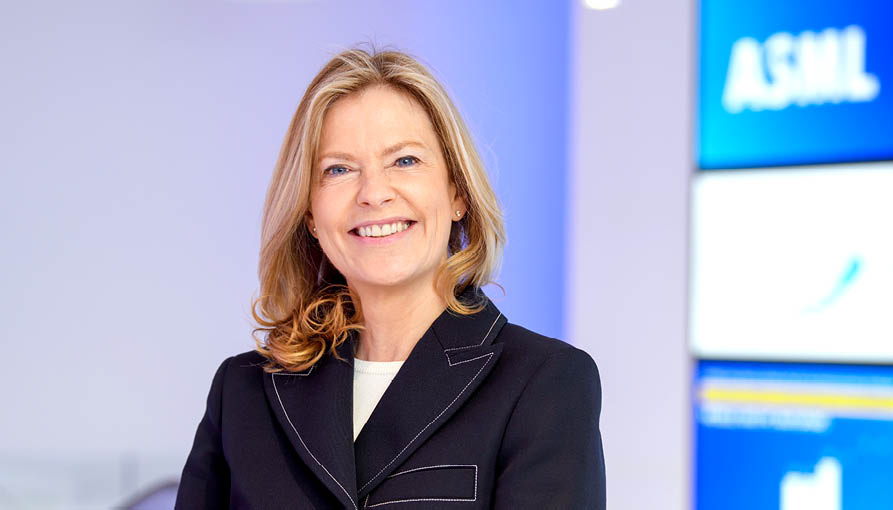 | Main responsibilities: | |||||
•the ESG sustainability strategy, including the various sub- themes of the ESG sustainability strategy; •the integration of ESG in the Company and the ESG sustainability strategy; • the periodic assessment and evaluation of ASML’s ESG sustainability performance and progress against its objectives; • the relationships and engagement with ASML’s stakeholders; and •the (impact of) external ESG matters and developments which are relevant for ASML and the general evolution of the ESG landscape. | ||||||
Members: | ||||||
•Birgit Conix (Chair) •Alexander Everke •An Steegen The ESG Committee may be supported by external experts as well as experts from within ASML who act as advisers on the subjects reviewed and discussed. | ||||||
On April 26, 2023, the Supervisory Board decided to establish the ESG Committee to focus on ESG and sustainability in recognition of their importance to ASML. | ||||||
Recurring agenda topics (quarterly) | Attendance | ||||||||
•ESG Strategy and performance •ESG Governance •ESG Compliance | In addition to the ESG Committee members, the EVP & Chief Business Officer, the EVP & CFO and the Head of ESG Sustainability have a standing invitation to attend the ESG Committee meetings. Internal experts and external advisers may is also invited to attend the ESG Committee meetings when deemed necessary. The advisers do not have voting rights. | ||||||||
ESG Committee meetings in 2023 | |||||||||
In general, the ESG Committee meets at least twice a year and more frequently when deemed necessary. In 2023, the ESG Committee held two meetings. | |||||||||
The overview below provides details on the topics discussed during ESG Committee meetings in 2023. | |||||||||
Q1 | Q3 | ||||||||
•No meetings | •Performance on ESG KPIs and ESG targets for the Long-Term Incentive (LTI) •Feedback from ESG benchmarks •Update on preparations for CSRD compliance •Deep dive on Scope 1 & 2 emissions •Human Rights Policy •Formalities related to ESG Committee set-up | ||||||||
Q2 | Q4 | ||||||||
•No meetings | •Performance on ESG KPIs and ESG LTI targets •Feedback from relevant benchmarks and update on selection of benchmarks •ESG Strategy update •Update on preparations for CSRD compliance •Deep dive on EUV energy use per wafer pass | ||||||||
ASML ANNUAL REPORT 2023 | SUPERVISORY BOARD REPORT CONTINUED | STRATEGIC REPORT | CORPORATE GOVERNANCE | FINANCIALS | 210 | |
Supervisory Board committees (continued) | ||||||

ESG Committee | ||
Setting up an ESG Committee
In April 2023, the Supervisory Board discussed the
possibility of setting up of an ESG Committee as a new
sub-committee of the Supervisory Board. Factors
considered included that ASML had made a step-up in
terms of ESG Sustainability ambition and had amended
its ESG Sustainability strategy; that expectations from
stakeholders in relation to ESG Sustainability are
increasing, including on how the strategy and
performance on ESG Sustainability are being
supervised; that regulatory requirements in the area of
ESG Sustainability are significantly increasing; and that
increased stakeholder expectations and regulatory
requirements result in an increased risk profile for the
company and its Board of Management and
Supervisory Board members. The Supervisory Board
concluded that, in order to ensure sufficient time and
attention is devoted to the topic of ESG Sustainability
at the level of the Supervisory Board, it was desirable
to establish an ESG sub-committee.
In July 2023, the ESG Committee held its first meeting.
Topics discussed were the formalities related to the
set-up of the committee, including the selection of
Birgit Conix as the Committee's chair and the adoption
of the Rules of Procedure. The Committee also
reviewed the latest feedback from the ESG
benchmarks relevant for ASML as well as the
performance on the 21 ESG KPIs and on the ESG
related targets in the Long-Term Incentive of the Board
of Management and ASML's Senior Management.
The progress made in relation to the preparations for
compliance with the EU-CSRD were reviewed and a
deep dive was performed on the progress of ASML's
program to bring scope 1 and 2 emissions to net zero by
2025. The ESG Committee also reviewed the updated
Human Rights Policy. Finally, the ESG Committee
reviewed an overview of supervisory responsibilities in
relation to ESG and how these responsibilities are divided
over the full Supervisory Board and the Supervisory
Board's committees, where the potential areas of overlap
are and how to deal with those areas. A high level
summary of the outcome of this discussion is shown in
the table on this page.
In Q4, the ESG Committee reviewed the preliminary
results of the double materiality assessment for the year
2024 and the proposed minor adjustments to the ESG
Sustainability Strategy. Furthermore, performance on the
21 ESG KPIs and on the ESG related targets in the
Long-Term Incentive of the Board of Management and
ASML's Senior Management was reviewed as was the
progress made in relation to the preparations for
compliance with the EU-CSRD. The ESG Committee
was also updated on the review of which ESG
benchmarks to participate in and a deep dive was
performed on the progress of ASML's program on EUV
energy use per wafer pass.
The ESG Committee's in-depth discussions on ESG and
the subsequent reporting of the main points of these
discussions to the full Supervisory Board are seen as
very valuable, as it further strengthens the Supervisory
Board's oversight over ESG matters.
Supervisory activities in the area of ESG Sustainability
ASML ANNUAL REPORT 2023 | SUPERVISORY BOARD REPORT CONTINUED | STRATEGIC REPORT | CORPORATE GOVERNANCE | FINANCIALS | 211 | |
Supervisory Board committees (continued) | ||||||
Supervisory Board Oversight over overall company strategy aimed at sustainable long-term value creation and company performance, including ESG aspects | |||||||||||||||
Audit Committee | ESG Committee | Remuneration Committee | Selection and Nomination Committee | Technology Committee | |||||||||||
Non-financial reporting, ESG internal controls and assurance | Oversight over ESG strategy (execution) & performance | ESG metrics as part of executive remuneration | Corporate Governance Leadership Development & succession including diversity | Product & Technology roadmap related ESG matters/ programs (e.g. EUV energy efficiency) | |||||||||||

Selection and Nomination Committee | ||||||
The Selection and Nomination Committee assists the Supervisory Board in relation to its responsibilities over the composition and functioning of the Supervisory Board and the Board of Management and the monitoring of corporate governance developments. | ||||||
 | Main responsibilities: | |||||
•Preparing the selection criteria and appointment procedures for members of the Supervisory Board and Board of Management, and the supervision of the Board of Management’s policy in relation to the selection and appointment criteria for senior management; •Periodically evaluating the scope and composition of the Board of Management and the Supervisory Board, and proposing the profile of the Supervisory Board; •Periodically evaluating the functioning of the Board of Management and the Supervisory Board, and their individual members; •Preparing the Supervisory Board’s decisions for appointing and reappointing members of the Board of Management and proposing (re)appointments of members of the Supervisory Board; and •Monitoring and discussing developments in corporate governance. | ||||||
Members: | ||||||
•Nils Andersen (Chair) •Annet Aris •Mark Durcan •Terri Kelly Each member is an independent, non-executive member of our Supervisory Board, in accordance with the Nasdaq Listing Rules. | ||||||
In 2023, the Selection and Nomination Committee's key area of focus was Board of Management composition and succession. | ||||||
Recurring agenda topics | Attendance | ||||||||
•Role, composition and functioning of the Board of Management •Role, composition and functioning of the Supervisory Board •Corporate governance | In addition to the Selection and Nomination Committee members, the two presidents and the EVP HRO are regularly invited to attend (parts of) its meetings. An external adviser is also invited to attend the Selection and Nomination Committee meetings when deemed necessary. | ||||||||
The overview below provides details on the topics discussed during Selection and Nomination Committee meetings in 2023. | |||||||||
H1 | H2 | ||||||||
•Composition of Board of Management, including succession and transition pipeline •Profile and composition of Supervisory Board and composition of its committees •Nominations for appointment of Supervisory Board members •Induction program for new Supervisory Board members •Amendment of Rules of Procedure Board of Management and Supervisory Board •Outcome of evaluation of Supervisory Board and committees •Performance of the Board of Management and individual members •Diversity policy of the Board of Management •New Dutch Corporate Governance Code •ESG Sustainability Committee set-up and composition | •Composition of Board of Management, including diversity aspects & requirements, and succession pipeline •End of appointment term, retirement of the Co-Presidents and appointment of Christophe Fouquet as President and CEO per the 2024 AGM •Intended appointment of Jim Koonmen as member of the Board of Management per the 2024 AGM •Profile and composition of Supervisory Board •Nomination for appointment of Annet Aris, Mark Durcan and Warren East as Supervisory Board members per the 2024 AGM •Approach to the 2023 self-evaluation of the Supervisory Board and Committees •Implementation of the revised Dutch Corporate Governance Code, including related governance documents, •Responsibilities of the Selection & Nomination Committee in the area of ESG | ||||||||
ASML ANNUAL REPORT 2023 | SUPERVISORY BOARD REPORT CONTINUED | STRATEGIC REPORT | CORPORATE GOVERNANCE | FINANCIALS | 212 | |
Supervisory Board committees (continued) | ||||||

Selection and Nomination Committee | ||
Composition, role and responsibilities of the Board of
Management
In 2023, the Selection and Nomination Committee
devoted significant time to discussing the (future)
composition, role and responsibilities of the Board of
Management. For example, we reviewed the talent
bench and discussed career development of top talent
to prepare for future Board of Management roles. The
Committee also assessed the functioning of the Board
of Management and its individual members. For this
purpose, discussions took place with each individual
Board of Management member, the outcome of which
was discussed with the Committee.
During the 2023 AGM, Wayne Allan was appointed as
EVP and Chief Strategic Sourcing & Procurement
Officer, as member of the Board of Management
effective per the 2023 AGM. Following this
appointment, the Board of Management consisted of
six members. The rationale behind Wayne's
appointment was the increased strategic importance of
the Strategic Sourcing & Procurement Officer function
for ASML’s strategy.
The Selection and Nomination Committee and the
Supervisory Board continually discuss succession
planning with respect to the Board of Management.
During 2023, ample time was spent discussing the end
of the appointment terms, per the 2024 AGM, of
ASML's co-Presidents, Peter Wennink and Martin van
den Brink and their potential succession in case their
appointment terms would not be extended. On
November 30, 2023, we announced that Peter and
Martin will retire from ASML upon completion of their
current appointment terms per the 2024 AGM, and
that we intend to appoint Christophe Fouquet, currently
ASML’s Chief Business Officer and member of the Board
of Management, as the company’s next President and
Chief Executive Officer. This appointment is subject to
notification of the AGM on April 24, 2024. The
Supervisory Board, together with the management team,
has gone through a comprehensive succession planning
process. With Christophe, we have identified a very
experienced leader with deep understanding of ASML’s
technology and the semiconductor industry ecosystem –
acquired through different roles at ASML and other
companies – and the right leadership qualities and
culture fit.
In addition, we intend to appoint Jim Koonmen as Chief
Customer Officer, a new position in ASML’s Board of
Management, subject to notification of the Annual
General Meeting of Shareholders on April 24, 2024. Jim’s
appointment underscores ASML’s ambition to
continuously increase our responsiveness to customer
needs, and to consistently deliver high-performance
products and services.
After the retirement of Martin van den Brink as co-
President of ASML, Martin will continue to support the
future growth of ASML by taking up a role as a
technology advisor.
Composition, role and responsibilities of the Supervisory Board
The Selection and Nomination Committee spent a
significant amount of time discussing the Supervisory
Board’s composition, profile and rotation schedule,
particularly the appointment and reappointment of
Supervisory Board members to fill vacancies both in the
short and longer term. The Supervisory Board profile was
reviewed in light of the long-term strategic challenges
faced by ASML and what these mean for the oversight to
be performed by the Supervisory Board. While the
conclusion was that the requirements for the size of and
the competencies to be represented in the Supervisory
Board were generally still appropriate, some adjustments
were considered desirable. Furthermore, the paragraph
on diversity was shortened, since a separate Supervisory
Board D&I Policy was adopted in light of the revised
Dutch Corporate Governance Code. The revised profile
can be found in the Supervisory Board's Rules of
Procedure on our website. For the actual changes in
composition of the Supervisory Board, reference is made
to the section on Supervisory Board composition in this
Annual Report.
The Selection and Nomination Committee also discussed
changes to the composition of the Supervisory Board
effective per the 2023 AGM. The Selection and
Nomination Committee advised the Supervisory Board
on the nominations for the appointment of successors to
Gerard Kleisterlee and Rolf-Dieter Schwalb, who retired
during the 2023 AGM having served eight years on our
Supervisory Board.
Changes to Supervisory Board Committees in 2023
The Selection and Nomination Committee also discussed
the composition of the Supervisory Board committees in
light of the retirement of Gerard Kleisterlee and Rolf-Dieter
Schwalb and the appointment of Nils Andersen and Jack de
Kreij. Several changes in the composition of the Supervisory
Board Committees took effect per the 2023 AGM. Nils
Andersen became Chair of the Supervisory Board and Chair
of the Selection and Nomination Committee. Jack de Kreij
became Chair of the Audit Committee and a member of the
Remuneration Committee.
Read more in Supervisory Board report - Meetings and
At the end of 2023 and in early 2024, the Selection and
Nomination Committee discussed the functioning of the
individual members of the Supervisory Board as well as
the process and outcome of the Supervisory Board’s
self-evaluation.
Read more in Supervisory Board report - Meetings and
Corporate governance
As part of its responsibility to monitor corporate
governance developments, the Selection and
Nomination Committee discussed the revised Dutch
Corporate Governance Code that came into effect on
December 22, 2022 and what actions were required
for ASML to comply with the revised code. The
Committee reviewed proposed updates to the Rules of
Procedure for the Board of Management and the
Supervisory Board, the D&I Policies for the Supervisory
Board and for the entire workforce of ASML, including
Senior Management, the Stakeholder Engagement
Policy and the updated Policy for Bilateral Contacts
with Shareholders. Where relevant, the Selection and
Nomination Committee provided positive
recommendations to the Supervisory Board for
adoption or approval of these corporate governance
documents. The Committee also discussed
developments in the area of Corporate Governance in
general, including matters of interest to investors and
shareholder organizations.
ASML ANNUAL REPORT 2023 | SUPERVISORY BOARD REPORT CONTINUED | STRATEGIC REPORT | CORPORATE GOVERNANCE | FINANCIALS | 213 | |
Supervisory Board committees (continued) | ||||||

Technology Committee | ||||||
The Technology Committee advises the Supervisory Board with respect to the technology plans required to execute our business strategy. | ||||||
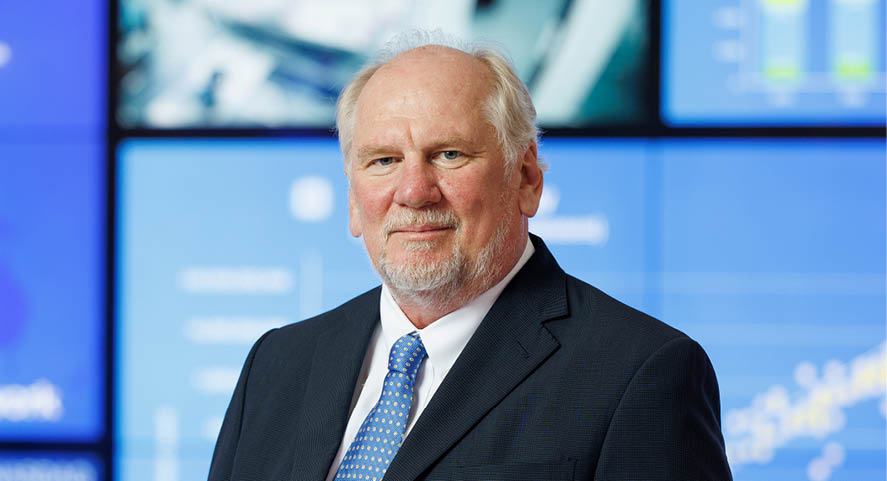 | Main responsibilities: | |||||
•Advising on technology trends, the study of potential alternative strategies, the technology strategy, product roadmaps, required technical resources and operational performance in R&D; •Making recommendations to the Supervisory Board on technology-related projects with respect to ASML’s competitive position; and •Discussing the technology targets set to measure short- and long-term performance as well as the achievements related to these, and advising the Remuneration Committee on this topic. | ||||||
Members: | ||||||
•Mark Durcan (Chair) •Annet Aris •Warren East •An Steegen The Technology Committee is supported by external experts as well as experts from within ASML who act as advisers on the subjects reviewed and discussed. External experts may include representatives of customers, suppliers and partners to increase the Committee’s understanding of the technology and research required to develop our leading-edge systems. | ||||||
In Q4 2023, the Technology Committee visited ASML's facility in Wilton, CT, USA. | ||||||
Recurring agenda topics (quarterly) | Attendance | ||||||||
•Role, composition and functioning of the Board of Management •Role, composition and functioning of the Supervisory Board •Corporate governance | In addition to the Technology Committee members, the Committee’s external and internal advisers regularly attended committee meetings. The advisers do not have voting rights. | ||||||||
Technology Committee meetings in 2023 | |||||||||
In general, the Technology Committee meets at least twice a year and more frequently when deemed necessary. In 2023, the Technology Committee held five meetings. | |||||||||
The overview below provides details on the topics discussed during Technology Committee meetings in 2023. | |||||||||
Q1 | Q3 | ||||||||
•Review of Applications •Technology Leadership Index performance review 2022 and 2020-2022 and target setting for 2023 and 2023-2025 | •Review of DUV (including Installed Base and Service and Mature Products) •Device Roadmap | ||||||||
Q2 | Q4 | ||||||||
•Review of the Development & Engineering, System Engineering and Research | •Review of EUV Low NA and High NA •Visit to ASML's facility in Wilton, CT, USA | ||||||||
ASML ANNUAL REPORT 2023 | SUPERVISORY BOARD REPORT CONTINUED | STRATEGIC REPORT | CORPORATE GOVERNANCE | FINANCIALS | 214 | |
Supervisory Board committees (continued) | ||||||

Technology Committee | ||
Review of technology programs
As in previous years, the Technology Committee’s
primary focus in 2023 was on the review of the
execution and implementation of technology programs
and roadmaps in EUV 0.55 NA (High NA), EUV 0.33
NA, DUV and Applications. In this respect, the key
challenges and opportunities, from a business
perspective as well as from a technology standpoint,
were reviewed and discussed in depth. During each
meeting the Technology Committee also discussed the
progress made on the technology targets included in
the Technology Leadership Index, a performance
measure for the short-term and long-term variable
remuneration of the Board of Management. At the
beginning of the year, in a meeting especially planned
for this purpose, the Technology Committee discussed
the final achievements on the technology targets. In the
same meeting, new technology targets were set for the
new performance period. The Technology Committee
subsequently provided advice to the Remuneration
Committee and the Supervisory Board.
The meeting in Q1 was dedicated to the achievements
within Applications. The Technology Committee was
presented with a recap of the achievements in 2022
and was informed about the roadmap toward 2028,
the market developments, competitive landscape and
the opportunities in that respect. In addition, updates
were provided on computational lithography, optical
metrology, e-beam metrology and control and data
products.
In Q2, the main focus of the meeting was on the
Development & Engineering sector of ASML, including its
Research department. In addition, a presentation was
provided on system engineering within ASML and how
this contributes to the product and technology roadmap.
Furthermore, the Technology Committee was informed
on ASML’s intellectual property portfolio as well as the
protection thereof.
After a successful contribution in 2022 the Technology
Committee invited imec back to provide an update of its
view on the long-term device roadmap for both Logic
and Memory during the Q3 meeting. The presentations
by imec were followed by a detailed discussion of the
potential impact of the device roadmap on ASML’s
lithography roadmap. Next to this, the Technology
Committee discussed the developments and
achievements in DUV. Apart from the product roadmaps
and the technology programs, the Technology
Committee was informed about the installed base and
service strategy. Furthermore, the Committee paid
attention to Mature Products & Services and the related
challenges and opportunities.
In Q4, the Technology Committee visited ASML’s second
largest facility in Wilton, U.S.A. During this two-day
meeting, the Technology Committee primarily focused on
the achievements and challenges in EUV 0.33 NA and
EUV 0.55 NA (High NA). Special attention was paid to
the overall roadmap, market developments and EUV field
performance as well as the status of new product
development. The Technology Committee was also
informed about the focus on quality, productivity, the
drive for commonality and reduction of energy
consumption. The second day of the visit to Wilton was
focused on providing insight in how the facility in Wilton
contributes to ASML’s overall technology and
manufacturing network. Furthermore, the Technology
Committee was provided with a tour through the
cleanroom at the Wilton facility.
The Technology Committee’s in-depth technology
discussions and the subsequent reporting of the main
points of these discussions to the full Supervisory Board
increases the Supervisory Board’s understanding of our
technology requirements. It also enables the Supervisory
Board to adequately supervise the strategic choices we
face, including our investment in R&D.
ASML ANNUAL REPORT 2023 | SUPERVISORY BOARD REPORT CONTINUED | STRATEGIC REPORT | CORPORATE GOVERNANCE | FINANCIALS | 215 | |
Supervisory Board committees (continued) | ||||||
The Financial Statements of ASML for the financial year
2023, as prepared by the Board of Management, have
been audited by KPMG Accountants NV. All members of
the Board of Management and the Supervisory Board
have signed these Financial Statements.
We recommend to shareholders that they adopt the
2023 Financial Statements. We also recommend that our
shareholders adopt the Board of Management’s
proposal to make a final dividend payment of €1.75 per
ordinary share. Together with the interim dividends paid
in respect of the 2023 financial year, which add up to
€4.35 per ordinary share, this leads to a total dividend of
€6.10 per ordinary share for the year 2023.
Finally, we would like to extend a word of thanks to the
Board of Management and all ASML employees for their
continued commitment and hard work during this
challenging year.
The Supervisory Board,
Nils Andersen, Chair
Annet Aris, Vice Chair
Birgit Conix
Mark Durcan
Warren East
Alexander Everke
Terri Kelly
Jack de Kreij
An Steegen
Veldhoven, February 14, 2024

ASML ANNUAL REPORT 2023 | SUPERVISORY BOARD REPORT CONTINUED | STRATEGIC REPORT | CORPORATE GOVERNANCE | FINANCIALS | 216 | |
Financial Statements and Profit Allocation | ||||||
Dear Stakeholder,
On behalf of the Remuneration Committee, I am pleased
to present the 2023 Remuneration Report, which
provides a summary of the remuneration policies for the
Board of Management and the Supervisory Board. The
following pages explain how these policies were applied
in 2023. Transparency is highly important to us, and we
have worked hard to ensure that this report not only
explains what we do but also how we do it and the
factors we considered in arriving at our conclusions.
Making connections
The connections and linkages we make across the
business are absolutely fundamental to the committee’s
efforts. Remuneration can be a sensitive topic and it has
been pleasing to see how our close working relationship
with Board of Management members has set the scene
for reasoned and informed two-way conversations.
Together, we are working to ensure we have the input
we need to make the correct decisions.
Overall, we believe we are setting the right amount of
stretch in our targets, while ensuring that these are both
achievable and aligned with desired behaviors and the
main drivers of ASML strategy.
Our 2023 performance
In 2023, ASML performed very well on the metrics that
are part of the Board of Management’s incentive plans.
For the short-term incentive (STI), performance was
between target and stretch for all performance measures
– EBIT Margin %, Customer Orientation and Technology
Leadership Index – resulting in an overall pay-out of
128.2% of target. For the long-term incentive (LTI)
2021-2023 series, ASML exceeded target on most of the
performance metrics – TSR, ROAIC and Technology
Leadership Index. ASML was below threshold on the
ESG metric, which is measured using ASML's
performance on the Dow Jones Sustainability Index
(DJSI). In absolute terms, ASML scored very well, ranking
#6 out of 347 companies in the DJSI. However, the DJSI
score is measured by the percentage deviation from the
industry leader for incentive purposes. For the
2021-2023 performance period, ASML was slightly
below threshold looking at the percentage deviation from
the industry leader. The overall LTI result is a vesting of
157.7% of target.
Key workstreams
Our philosophy is that if we focus on the right things -
engaging with our people, promoting an inclusive
environment, shaping our corporate culture, investing in
innovation and so on - then the business results and
creation of shareholder value are the logical outcomes.
Societal fairness
One of the most challenging new workstreams of 2023
was our drive to achieve societal fairness. This is a
relatively new and emotional topic – balancing what is
seen as fair within the company and our global peer
group with what is regarded as fair in the external
environment, for example in the Veldhoven area where
we have a large footprint. I think ASML is ahead of many
organizations in trying to unpack this issue and I am
proud of our interactions with the Works Council. With
their support and that of an external advisor, we have
worked to put more quantitative measures around the
concept of societal fairness, and you can read about our
deliberations on the following pages.
ASML ANNUAL REPORT 2023 | REMUNERATION REPORT | STRATEGIC REPORT | CORPORATE GOVERNANCE | FINANCIALS | 217 | |
Message from the Chair of the Remuneration Committee | ||||||
 | ||
 | ||
2023 was again a very dynamic, challenging year for ASML and this translated into another busy year for our committee as we continued to evolve the ways in which we can support the growth of the company.” | ||
Terri Kelly | ||
Chair of the Remuneration Committee | ||
Improved STI and LTI metrics
Another important area for the committee had to do with
the metrics we use for our incentive plans. With regard to
the STI, we looked into how we can best measure our
customer orientation. Complementing the good work
carried out by the team, we have been devising a new
and better way to ensure that the voice of the customer
plays an enhanced role in our short-term incentives. This
will be implemented in 2024.
For the LTI, we have reintroduced return on average
invested capital (ROAIC) as an important financial
measure, using a revised methodology to better mitigate
some of the inherent risks associated with ASML’s
business model. We continue to strive for incentive
measures that best align with our strategy and overall
performance. To that end, we have also updated our
ESG sustainability measures, which include a good
balance of social and environmental measures. As noted
in the report, we have opted to move away from the
DJSI, as it was deemed not to be a very meaningful
measure to drive our ESG sustainability strategy and
initiatives. While we contemplated replacing it with other
external ESG indices which could also be benchmarked
with other peer organizations, based on valuable
feedback from a number of our key stakeholders, we
opted to continue with an important measure related to
the diversity of our talent pipeline.
Remuneration Policy
After spending significant time and effort on updating our
policy for the Board of Management in the previous year,
we turned our attention to the Supervisory Board in 2023
and – after looking at the data as well as the growth and
scale of ASML – we introduced some adjustments to
remuneration, which are explained in the section on
Supervisory Board remuneration of this Remuneration
Report. As Remuneration Committee, we were pleased
that the 2023 Remuneration Policy for the Supervisory
Board was adopted with 98.88% support, and that the
remuneration amounts for the Supervisory Board were
adopted with 99.20% support.
Transparency
While the 2022 Remuneration Report received 93.21%
support at the 2023 AGM, transparency around
remuneration continues to be a topic of focus for the
Remuneration Committee. In the section about the
Remuneration Committee’s activities in 2023, the efforts
we made to further improve the transparency and
readability of the Remuneration Report are explained.
Listening to our stakeholders
When setting remuneration policies, we aim to listen and
respond to the diverse views of all our stakeholders. In
line with our annual stakeholder engagement process,
during 2023 we engaged with both internal and external
stakeholders on the topic of remuneration. As
Remuneration Committee we appreciate this on-going
dialogue, through which we have learned that some of
the views of our stakeholders are quite different. For
example, while some stakeholders will be concerned that
our executive remuneration may not be competitive
enough to attract and retain our leaders, others feel we
are overpaying, considering societal fairness aspects.
ASML is a unique organization, with not many
comparable companies against which to benchmark
remuneration. It is our job to take an overview of the
global pay landscape, to look at the specifics associated
with our particular geographies and growth trajectory,
and then arrive at a balanced judgement that supports
the recruitment, development and retention of the diverse
talent we need to thrive.
In the past we have carried out work to identify the
regions where we gain talent and where we lose it. We
then added a proportion of US-based companies to our
peer group, but also introduced a cap to total incentive
opportunities in order to align more closely with
European practices. We will continue to assess this in
such a way that we are able to achieve our overall
business objectives.
Changes to the committee
At the 2023 AGM, Rolf-Dieter Schwalb stepped down,
and I would like to thank him for his outstanding work
over the past years, particularly as his role as Chair of the
Audit Committee helped forge very solid links between
our two committees. We are pleased to have Jack de
Kreij join our committee, and as Jack is also the Chair of
the Audit Committee, we maintain the valuable
connection between these committees. Jack has already
added a great deal of knowledge and expertise to our
discussions, and I look forward to working with him over
the coming years.
Outlook | |
As we transition to 2024, we will continue to gather input
from key stakeholders, both internal and external, to help
provide input on some of our new incentive measures
and inform our thinking ahead of the AGM.
Throughout the year, we will be assessing the adequacy
of our Remuneration Policies, particularly in light of the
announced changes in the leadership structure of our
Board of Management and transition to a single
President.
As in previous years, governance policies will continue to
evolve and we will closely follow developments in this
area. We will also continue to manage and anticipate any
further changes in the Board of Management structure,
focusing on potential members and how our policy and
practices can support the desired outcomes.
Finally, I would like to thank the members of the
Remuneration Committee and the Supervisory Board for
their time, skills and wisdom over the last 12 months. It
has been a busy year but one that I firmly believe has
enabled our team to underpin the future prospects of
ASML.
Terri Kelly
Chair of the Remuneration Committee
ASML ANNUAL REPORT 2023 | REMUNERATION REPORT CONTINUED | STRATEGIC REPORT | CORPORATE GOVERNANCE | FINANCIALS | 218 | |
Message from the Chair of the Remuneration Committee (continued) | ||||||
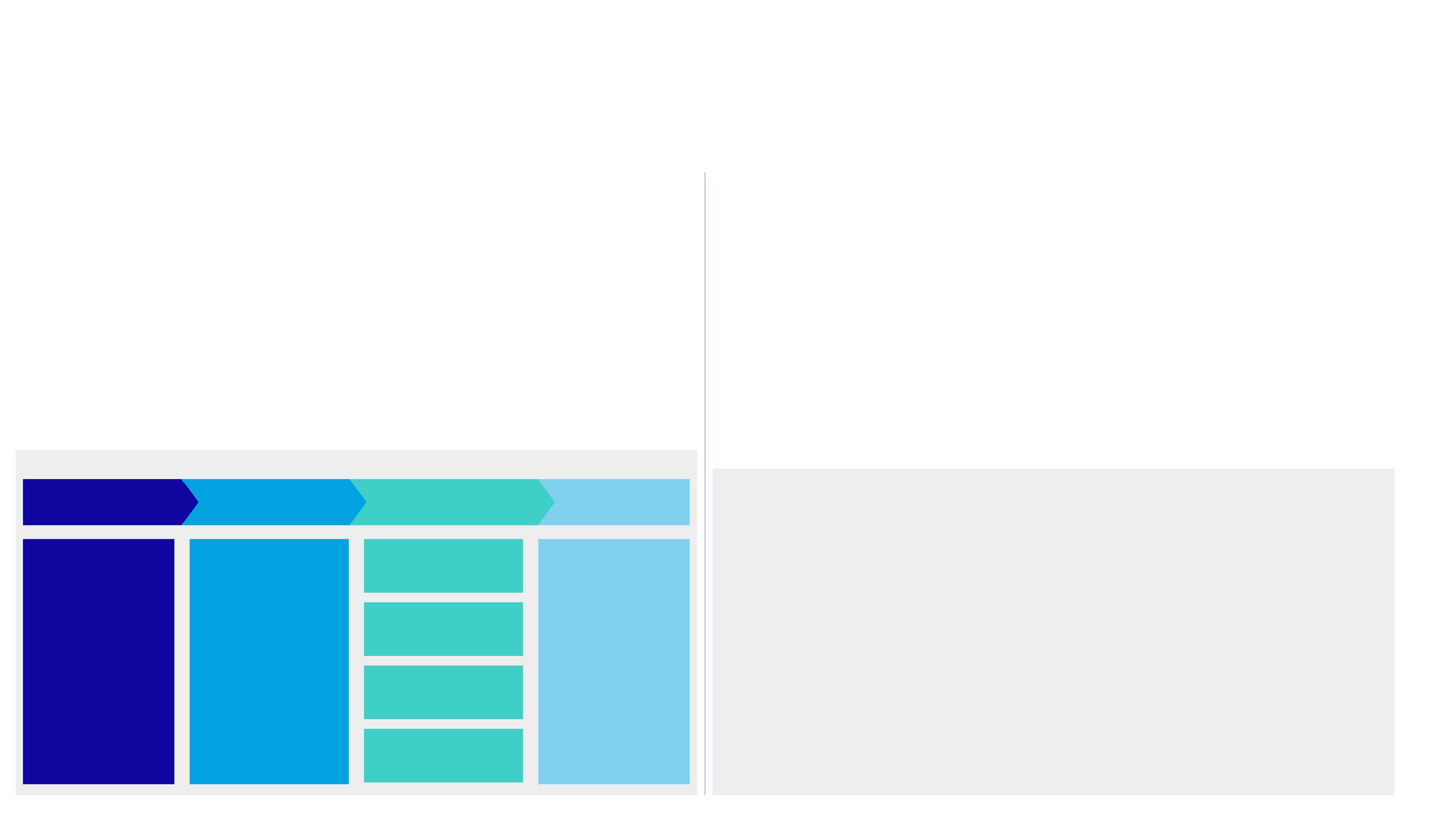
Our remuneration principles for performance support long-term success and sustainable value | |||
Competitiveness | The remuneration structure and levels intend to be competitive in the relevant labor market, while at the same time taking into account societal trends and perceptions. | ||
Alignment | The remuneration policy is aligned with the short-term and long-term incentive policies for ASML senior management and other ASML employees and takes into account internal relativities. | ||
Long-term orientation | The policy and incentives focus on sustainable and long-term value creation. | ||
Compliance | ASML adopts the highest standards of good corporate governance. | ||
Simplicity and transparency | The policy and its execution are as simple as possible and easily understandable to all stakeholders. | ||
Linking remuneration to purpose and strategy | ||||||||||||
Purpose | Strategy | Incentive measures | Pay for performance | |||||||||
Unlocking the potential of people and society by pushing technology to new limits. | Grow our holistic lithography business | Financial measures | Remuneration outcomes | |||||||||
Secure unique supply chain capabilities to ensure business continuity | Customer Orientation | |||||||||||
Move toward adjacent business opportunities | Technology leadership | |||||||||||
Deliver on our ESG sustainability commitments | Leadership in ESG sustainability | |||||||||||
How we performed in 2023 | ||||||||
Financial (based on US GAAP) | Non-financial | |||||||
€27.6bn | €14.1bn | €9.0bn | 7.8 | |||||
Total sales | Gross profit | Income from operations | Technology Leadership Index score | |||||
(2022: €21.2bn) | (2022: €10.7bn) | (2022: €6.5bn) | (2022: 8.1) | |||||
€5.4bn | €19.91 | 65.8% | 10.8% | |||||
Net cash provided by operating activities | Earning per share | ROAIC (Non-GAAP measure)1 | Dow Jones Sustainability Index (DJSI)2 | |||||
(2022: €8.5bn) | (2022: €14.14) | (2022: 48.2%) | (2022: 10.8%) | |||||
1.The ROAIC (Non-GAAP measure) is based on a three-year (2021-2023) average by dividing the Income after income taxes by the Average Invested
Capital. Average Invested Capital is calculated by taking the average of Total assets minus Cash and cash equivalents, Short-term investments,
Total current liabilities and Non-current contract liabilities at the start and end of each quarter over three years. We believe that ROAIC is a
meaningful measure because it quantifies our effectiveness in generating returns relative to the capital invested in our business over the past three years.
2.The DJSI score is measured by the % deviation from the industry leader at the end of the 3-year performance period.
Relative TSR - ASML vs PHLX |
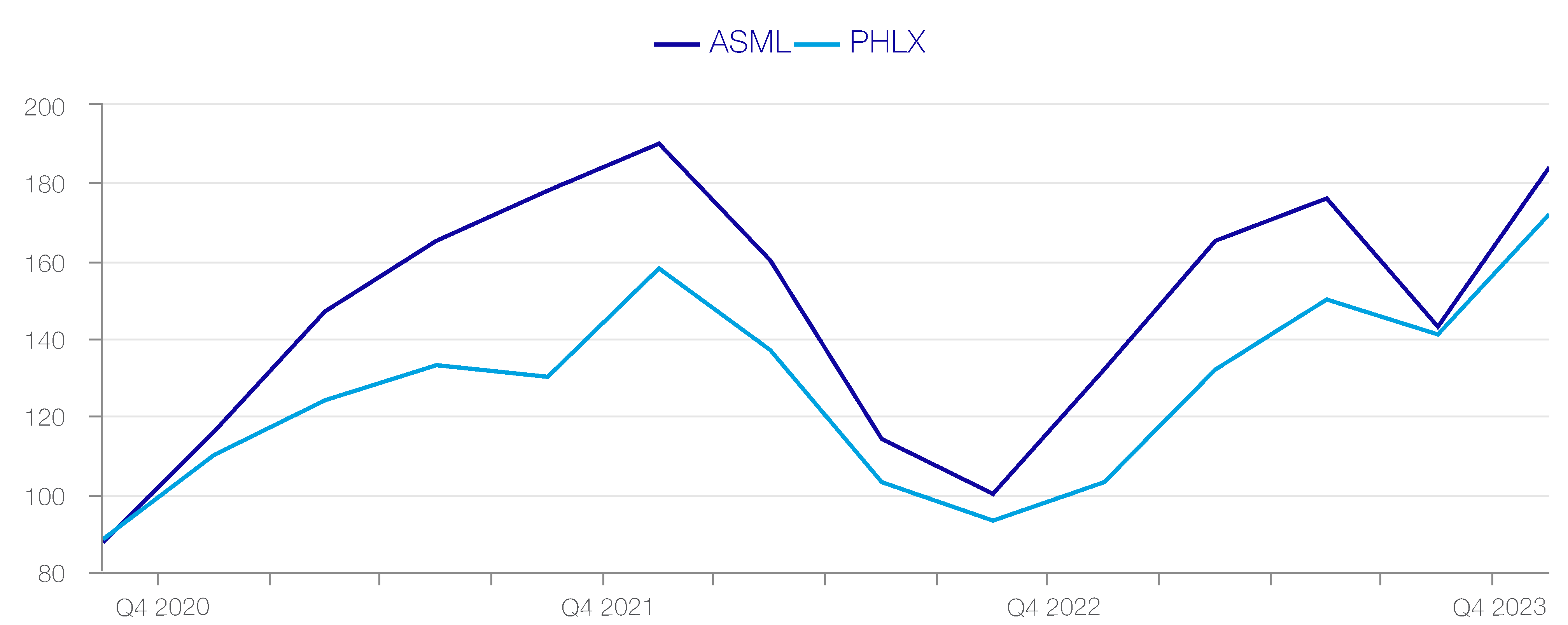
ASML ANNUAL REPORT 2023 | REMUNERATION REPORT CONTINUED | STRATEGIC REPORT | CORPORATE GOVERNANCE | FINANCIALS | 219 | |
Remuneration at a glance | ||||||
Remuneration is an essential tool to motivate the right talent to continue to achieve our technology roadmap and business priorities. | ||||||

We aim to align the total remuneration for our Board of Management to our business strategy through a combination of fixed pay and short- and long- term incentives, underpinned by stretching performance targets. | |
€24.6m | |
Total remuneration | |
128.2% | |
Achieved of STI target | |
157.7% | |
Achieved of LTI target | |
43:1 | |
CEO vs. average per FTE1 | |
Board of Management | |
Peter T.F.M. Wennink1 | |
Total remuneration 2023 (€’000s) | |
€5,941 | |
Martin A. van den Brink1 | |
Total remuneration 2023 (€’000s) | |
€5,939 | |
Frédéric J.M. Schneider-Maunoury | |
Total remuneration 2023 (€’000s) | |
€3,574 | |
Roger J.M. Dassen | |
Total remuneration 2023 (€’000s) | |
€3,558 | |
Christophe D. Fouquet | |
Total remuneration 2023 (€’000s) | |
€3,519 | |
Wayne R. Allan2 | |
Total remuneration 2023 (€’000s) | |
€2,071 |
Remuneration summary (€’000s) |






Base salary and benefit | STI | LTI | ||||||||||
Stakeholder engagement in 2023 | |||
During 2023, we consulted with our large shareholders and other stakeholders. The Remuneration Committee also consulted the views of the Board of Management. | |||
Shareholders | |||
Number of organizations met | 8 | ||
Number of meetings | 8 | ||
Percentage of issued share capital owned3 | 20% | ||
Shareholders representatives and proxy advisers | |||
Number of organizations met | 3 | ||
Number of meetings | 3 | ||
Works Council | |||
Number of organizations met | 1 | ||
Number of meetings | >5 | ||
1.On November 30, 2023, ASML announced that Mr. Wennink and Mr.
van den Brink will retire as Presidents of ASML on April, 24 2024,
upon completion of their current appointment terms. Mr. Wennink
and Mr. van den Brink will remain entitled to performance shares
granted under their running LTI plans, which will vest in accordance
with the relevant performance criteria as stated in the grant letters. All
LTI expenses for the running LTI plans are accounted over their
remaining service period in 2023 and 2024. For comparison
purposes, if Mr. Wennink's and Mr. van den Brink were to remain in
service, their normalized LTI expense would be €2,575 thousand
each in 2023 and the outcome of the CEO vs. average per FTE ratio
would be 39:1.
2.Wayne R. Allan was appointed as a BoM member on April 26, 2023.
3.Based on the issued share capital and share positions at the time of
the AGM record date, March 29, 2023.
ASML ANNUAL REPORT 2023 | REMUNERATION REPORT CONTINUED | STRATEGIC REPORT | CORPORATE GOVERNANCE | FINANCIALS | 220 | |
Remuneration at a glance (continued) | ||||||

Remuneration Committee | ||||||
The Remuneration Committee advises the Supervisory Board and prepares the Supervisory Board’s resolutions with respect to the remuneration of the Board of Management and the Supervisory Board. | ||||||
 | Main responsibilities: | |||||
•Overseeing the development and implementation of the Remuneration Policy for the Board of Management and preparing the Supervisory Board Remuneration Policy; •Reviewing and proposing to the Supervisory Board corporate goals and objectives relevant to the variable part of the Board of Management’s remuneration; •Carrying out scenario analyses of the possible financial outcomes on the variable remuneration of meeting these goals, as well as exceeding these goals, before proposing these corporate goals and objectives to the Supervisory Board for approval; and •Evaluating the performance of the members of the Board of Management in view of those goals and objectives, and – based on this evaluation – recommending to the Supervisory Board appropriate compensation levels for the members of the Board of Management. •Staying apprised of external pay practices and the effectiveness of our remuneration policy and incentive measures in attracting and retaining top talent. | ||||||
Members: | ||||||
•Terri Kelly (Chair) •Annet Aris •Alexander Everke •Jack de Kreij Each member is an independent, non-executive member of our Supervisory Board in accordance with the Nasdaq Listing Rules. Ms. Kelly is neither a former member of our Board of Management, nor a member of the management board of another company. Currently, no member of the Remuneration Committee is a member of the management board of another Dutch listed company. | ||||||
The Committee will continue to consider what the optimal incentive measures are to drive sustainable long-term value creation. | ||||||
Recurring agenda topics | Attendance | ||||||||
•Remuneration of the Board of Management •Remuneration of the Supervisory Board •Update on performance on targets for short- and long-term incentive | In addition to the Remuneration Committee members, the Remuneration Committee generally invites the CEO, the EVP HRO, the Head of Compensation and Benefits and in some instances also the CFO or the CBO, as BoM member responsible for ESG, to attend (parts of) its meetings. The Remuneration Committee’s external adviser is also invited to attend the Remuneration Committee meetings when deemed necessary. | ||||||||
The below overview provides details on the topics discussed during Remuneration Committee meetings in 2023. | |||||||||
Q1 | Q3 | ||||||||
•Total remuneration BoM 2023, incl. base salary 2023, and STI and LTI at-target levels •Short-Term Incentive Plan: Performance 2022, pay-out 2022 and targets 2023 •Long-Term Incentive Plan: share vesting performance period 2020-2022, and conditional grant and targets performance period 2023-2025 •Compliance with share ownership requirements •Remuneration Report 2022 •Self-evaluation of Remuneration Committee •Supervisory Board Remuneration Policy review including stakeholder outreach | •Progress STI and LTI targets and metrics •Review of potential changes in STI or LTI metrics within limits of Remuneration Policy •Latest trends in policies and reporting •Report on interaction with the Works Council, including discussion on societal benchmark •ESG related activities within scope of Remuneration Committee | ||||||||
Q2 | Q4 | ||||||||
•No meetings | •Progress STI and LTI targets •Board of Management remuneration 2024, including base salary, at- target levels for STI and LTI, selection of STI and LTI metrics and target levels •Update on corporate governance developments: remuneration •US Claw Back Policy •Engagement of external auditor for agreed-upon procedures on remuneration •Draft Remuneration Report 2023 •Share planning for the period AGM 2024-2025 •Compliance of BoM members with share ownership requirement | ||||||||
ASML ANNUAL REPORT 2023 | REMUNERATION REPORT CONTINUED | STRATEGIC REPORT | CORPORATE GOVERNANCE | FINANCIALS | 221 | |
Remuneration Committee | ||||||
Remuneration of the Board of Management
Following a fundamental review performed in H2 2021 and
Q1 2022, a new Remuneration Policy for the Board of
Management was adopted at the 2022 AGM with 93.18%
support. The 2022 BoM Remuneration Policy contains
market competitive maximum levels for the STI (120% for
the Presidents and 100% for the other Board of
Management members) and the LTI (200%) for on-target
performance. The Supervisory Board decided to implement
a phased approach towards these maximum levels.
At the end of 2022 a light review of Board of
Management remuneration levels was performed in order
to determine whether an increase of the on-target levels
for STI and/or LTI towards the policy maximum levels
was warranted. The Supervisory Board concluded that
this was the case and decided to increase the on-target
levels for the STI from 95% to 105% for the Presidents
and from 90% to 95% for the non-Presidents. For the LTI
the on-target levels were increased from 160% to 170%.
These changes became effective per January 1, 2023.
The Remuneration Committee made recommendations to
the Supervisory Board concerning the total remuneration
package of the Board of Management and the variable
remuneration consisting of an STI in cash and an LTI in
shares. The Remuneration Committee proposed 2023
targets for the Board of Management’s variable
remuneration to the Supervisory Board. During the year, the
Remuneration Committee closely monitored the Board of
Management’s performance. It provided recommendations
to the Supervisory Board regarding the achievement of the
2023 targets and related compensation levels for the Board
of Management members.
In proposing and evaluating the Board of Management’s
performance in relation to the corporate goals and
objectives for the variable remuneration of the Board of
Management members, the Remuneration Committee
closely cooperates with the Audit Committee, the ESG
Committee and the Technology Committee.
A similar review process was conducted at the end of
2023 with regard to the 2024 Board of Management
Remuneration. The Supervisory Board approved the
recommendation from the Remuneration Committee to
increase the on-target levels for the STI of the President
to 120%, the outgoing dual-Presidents to 105%, and for
the non-Presidents to 100%. For the LTI, the on-target
levels for the President were increased to 200% and for
the outgoing dual-Presidents and non-Presidents were
increased to 180%.
The Remuneration Committee has taken note of the views of
the individual members of the Board of Management with
regard to the amount and structure of their remuneration.
The shareholding positions of the Board of Management
members were reviewed by the Remuneration
Committee in order to assess compliance with the share
ownership guideline as included in the Remuneration
Policy for the Board of Management.
The Remuneration Committee engaged the external auditor
to perform certain agreed-upon procedures regarding the
reported performance by the Board of Management on the
STI Plan 2023 and LTI Plan 2021-2023
In order to comply with the rules implementing incentive-
based compensation recovery (clawback) as issued by
the SEC and Nasdaq, the Supervisory Board adopted
the ASML Clawback Policy under US/Nasdaq Rules. This
Policy has been filed as an exhibit to ASML's 2023
Annual Report on Form 20-F.
The Remuneration Committee also prepared the
Remuneration Report, which details the remuneration of
members of the Supervisory Board and the Board of
Management. Transparency around remuneration
continues to be a topic of focus for the Remuneration
Committee and in 2023 we made further efforts to
improve the transparency and readability of the
Remuneration Report, taking into account feedback we
received from our stakeholders during engagement
sessions. For example, we added non-financial indicators
to the table 'Relationship between accounted
remuneration and company’s performance' and we
added visualizations of the target setting process related
to the variable remuneration and the vesting of
performance shares.
ASML ANNUAL REPORT 2023 | REMUNERATION REPORT CONTINUED | STRATEGIC REPORT | CORPORATE GOVERNANCE | FINANCIALS | 222 | |
Remuneration Committee (continued) | ||||||
Remuneration of the Supervisory Board
In Q1 2023, the Remuneration Committee finalized its
review of the Remuneration Policy for the Supervisory
Board and concluded that it was desirable to make
certain amendments to the remuneration amount and
Remuneration Policy for the Supervisory Board.
The key changes are explained in more detail in:
Before submitting the resulting proposals to the General
Meeting, the Remuneration Committee consulted
extensively with shareholders, shareholder
representatives and other stakeholders, including the
Works Council of ASML Netherlands BV. For more
information about the stakeholder feedback, reference is
made to the 2023 AGM page on our website. The
Supervisory Board, upon recommendation of the
Remuneration Committee, proposed to the General
Meeting to amend the Remuneration Policy for the
Supervisory Board. The amended policy was adopted on
April 26, 2023 at the 2023 AGM.
Societal benchmark
In the context of the most recent changes to the Board
of Management and Supervisory Board Remuneration
Policies, the Works Council raised the topic of societal
fairness of executive remuneration in relation to non-
executive remuneration. To follow-up on this topic, a
societal benchmark analysis was conducted during 2023
in close collaboration between a delegation of the
Remuneration Committee and the Works Council,
supported by the Remuneration Committee's external
advisor.
As a first step, the societal benchmark group was
established, consisting of companies of societal
relevance in the Netherlands that have comparable and
consistent remuneration disclosure. It was then
established that comparing absolute levels of
remuneration between ASML and the societal
benchmark group would not be appropriate or relevant
given the significant differences in factors (such as size,
scope, geographic footprint, complexity of business,
leadership structure). Therefore, the approach was taken
of comparing relative pay progression of the societal
group versus CEO pay, lowest Collective Labor
Agreement (CLA) scale and Supervisory Board pay, to
determine the pace of remuneration growth over time.
The outcome of the societal benchmark was that overall,
ASML's relative pay progression is well aligned to the
societal benchmark group. CEO pay progression was
below the 75th percentile of the group, the progression
of ASML’s lowest CLA scale progression has outpaced
the benchmarking group and the 2023 increases in
Supervisory Board remuneration is aligned to the
benchmarking group.
The Remuneration Committee intends to perform this
societal benchmark periodically going forward to serve as
reference to overall remuneration.
ASML ANNUAL REPORT 2023 | REMUNERATION REPORT CONTINUED | STRATEGIC REPORT | CORPORATE GOVERNANCE | FINANCIALS | 223 | |
Remuneration Committee (continued) | ||||||
In this section of the Remuneration Report,
we provide an overview of the Remuneration
Policy for the Board of Management, which
was adopted by the General Meeting on April
29, 2022, and has applied as of January 1,
2022 onwards. It also contains information
about the execution of the Remuneration
Policy for the Board of Management as well
as details of the Board of Management
members’ actual remuneration for the
financial year 2023. The Remuneration Policy
for the Board of Management can be found
in the Governance section of our website.
Remuneration Policy
Remuneration as a strategic instrument
The 2022 Remuneration Policy for the Board of
Management supports the strategy, long-term interests
and sustainability of ASML in a highly dynamic
environment, while aiming to fulfill all stakeholders’
requirements and keeping an acceptable risk profile.
More than ever, the challenges for ASML are to drive
technology, to serve our customers and to satisfy our
stakeholders. These drivers are embedded in the identity,
mission and values of ASML and its affiliated enterprises
and are the backbone of the 2022 Remuneration Policy
for the Board of Management. The Supervisory Board
ensures that the 2022 Remuneration Policy for the Board
of Management and its implementation are linked to
ASML’s objectives. A direct way in which this is achieved
is by determining performance measures and setting
targets with respect to variable compensation that are
linked to our short-term and long-term ambitions.
More indirectly, we want to ensure that our 2022
Remuneration Policy for the Board of Management
enables ASML to attract, motivate and retain qualified
industry professionals for the Board of Management in
order to define and achieve our strategic goals. This is
reflected by our drive to determine a remuneration
structure and remuneration levels that intends to be
competitive in the relevant labor market, while at the
same time being aware of societal trends and
perception. Therefore, the 2022 Remuneration Policy for
the Board of Management acknowledges the internal
and external context as well as our business needs and
long-term strategy.
The 2022 Remuneration Policy for the Board of
Management is designed to encourage behavior that is
focused on long-term value creation and the long-term
interests and sustainability of ASML, while adopting the
highest standards of good corporate governance. The
2022 Remuneration Policy for the Board of Management
is aimed at motivating the Board of Management
members to achieve outstanding results, using a
combination of non-financial and financial performance
measures as well as an appropriate ratio between base
salary and variable compensation. Technology
leadership, customer value creation and employee
engagement are the key drivers of sustainable returns to
our shareholders.
Remuneration principles
The remuneration philosophy that ASML applies for all its
employees includes the principle that ASML wants to be
competitive in its relevant labor markets and pay what is
fair in such markets, while maintaining internal
consistency in reflecting differences in size and
complexity of individual responsibilities. The Supervisory
Board applies the same principle for the Board of
Management of ASML and in doing so takes the pay and
employment conditions for the ASML employees into
account when formulating the Remuneration Policy for
the Board of Management. The level of stakeholder
support, including the support of society, for the
Remuneration Policy for the Board of Management that
ASML applies is important to us and was also taken into
account when formulating the various elements of the
policy. When preparing the Remuneration Policy for the
Board of Management, the Supervisory Board
considered the external environment in which the
Company operates, the relevant statutory provisions and
provisions of the Dutch Corporate Governance Code and
competitive market practice as well as the guidance
issued by organizations representing institutional
shareholders. The Supervisory Board’s Remuneration
Committee engaged extensively with various
stakeholders to obtain their perspectives. These
stakeholders included ASML’s shareholders, shareholder
interest organizations, proxy advisers and the Works
Council of ASML Netherlands BV. In line with the Dutch
Corporate Governance Code, the members of the Board
of Management have been asked to share their views on
their remuneration. Furthermore, advice has been
obtained from an external remuneration expert.
The 2022 Remuneration Policy for the Board of
Management is built on the following principles:
•Competitiveness: The remuneration structure and
levels intend to be competitive in the relevant labor
market, while at the same time taking into account
societal trends and perceptions;
•Alignment: The policy is aligned with the Short-term
Incentive and/or Long-term Incentive Policy for ASML
senior management and other ASML employees and
takes into account internal relativities;
•Long-term orientation: The policy and incentives focus
on sustainable long-term value creation;
•Compliance: ASML adopts the highest standards of
good corporate governance; and
•Simplicity and transparency: The policy and its
execution are as simple as possible and easily
understandable to all stakeholders.
ASML ANNUAL REPORT 2023 | REMUNERATION REPORT CONTINUED | STRATEGIC REPORT | CORPORATE GOVERNANCE | FINANCIALS | 224 | |
Board of Management remuneration | ||||||
Reference group and market positioning
Similar to the remuneration philosophy for all ASML
employees, we aim to offer the members of the Board of
Management a remuneration package that is competitive
compared with a relevant labor market. To define this
market, we created a reference group consisting of
companies that are comparable to ASML in terms of size
and complexity, industry or business profile, data
transparency and geographical area. The reference
group may include Dutch and international companies
where members of the Board of Management might be
recruited to and from.
For as long as ASML is positioned around the median of
the group of companies with respect to size (measured
by enterprise value, revenue and number of employees)
and thus complexity, the median market level may serve
as a reference in determining the level of remuneration for
the Board of Management.
As ASML is a Dutch-headquartered company, the
Supervisory Board also takes into account the external
environment in which the Company operates in the
Netherlands, and furthermore considers competitive
market practices as well as guidance issued by
organizations representing institutional shareholders in
the Netherlands, and has decided for the 2022
Remuneration Policy not to follow the (high) international
market level for long-term incentives (LTI) and to cap the
maximum target LTI award at 200% of base salary. This
means that the reference to a median market level
described above will be used for the cash compensation
only (i.e. the base salary and the short-term incentive
(STI), as the LTI will be capped).
As ASML has a dual presidency and considers the two
presidents of equal weight and importance to the
Company, for the year 2023 the Supervisory Board has
decided to continue the Company’s longstanding
practice that the relevant benchmark reference level for
the two presidents is the average of the CEO level and
that of the other members of the Board of Management
in the labor market data, instead of benchmarking
against CEO data only. For the other members of the
Board of Management, the Supervisory Board has
applied the average of all non-CEO members of the
Board of Management in the benchmark as relevant
reference, instead of differentiating between members of
the Board of Management. With reference to the
announcement of November 30, 2023, following the
appointment of Christophe Fouquet as our sole president
and CEO effective per the 2024 AGM, references to the
dual presidency and Presidents should be considered a
reference to our sole president. While no changes to our
remuneration policy are being proposed for 2024, the
Remuneration Committee will be contemplating whether
any changes in policy should be implemented for 2025
and beyond.
In principle, a benchmark of the Board of Management
remuneration is conducted every two years. In the year
without a market assessment, the Supervisory Board
considers the appropriateness of any change of base
salary, taking into account the market environment as
well as the salary adjustments for other ASML
employees. To ensure an appropriate composition of the
relevant labor market, the Supervisory Board reviews the
composition of the reference group at the time a
benchmark is conducted. The composition of the
reference group may be adjusted as a result of takeover
transactions, mergers or other corporate activities.
Substantial changes applied to the composition of the
reference group will be proposed to shareholders.
The current reference group consists of the following companies: | |||
Current reference group composition | |||
European companies with focus on long-term technology/ industrial engineering/R&D | Semiconductor manufacturing companies | Semiconductor equipment companies | |
ABB | Broadcom | Applied Materials | |
Airbus | Intel | Lam Research | |
Dassault Systèmes | Qualcomm | ||
Infineon Technologies | |||
Linde | |||
Medtronic | |||
Novartis | |||
NXP Semiconductors | |||
Philips | |||
Roche | |||
SAP | |||
Schneider Electric | |||
Shell | |||
Siemens | |||
Siemens Healthineers | |||
Total direct compensation
The remuneration levels are determined using the Total
Cash Compensation (TCC). TCC consists of base salary
and variable remuneration in the form of a capped STI
and a capped LTI, which together constitutes the total
direct compensation.
Base salary
The 2022 Remuneration Policy for the Board of
Management prescribes a benchmark that will only be
conducted for the TCC level. The base salary of Board of
Management members is derived from this TCC level.
The actual base salary and annual increases will be
reported in the Remuneration Report. The base salary for
the Board of Management for the reporting year 2023 is
disclosed in the table 'Total remuneration Board of
Management.'
ASML ANNUAL REPORT 2023 | REMUNERATION REPORT CONTINUED | STRATEGIC REPORT | CORPORATE GOVERNANCE | FINANCIALS | 225 | |
Board of Management remuneration (continued) | ||||||

Variable compensation
The variable compensation consists of the STI and the LTI. The performance metrics are set by the Supervisory
Board and consist of financial and non-financial metrics in such a way that an optimal balance is achieved between
the various Company objectives, both in the short-term and the long-term. By doing so, we ensure that the variable
compensation contributes to the strategy, long-term interests and sustainability of the Company. The Supervisory
Board may adjust the performance metrics and their relative weighting of the variable income based on the rules and
principles as outlined in the 2022 Remuneration Policy for the Board of Management of ASML Holding NV, if required
by changed strategic priorities in any given year. The Supervisory Board assesses the extent to which performance
metrics are met at the end of a performance period.
The 2022 Remuneration Policy for the Board of Management contains maximum levels for the STI and the LTI for on-
target performance. These maximum levels can be implemented if ASML’s relative positioning in the reference group
is at least equal to the median (in terms of size). The Supervisory Board has decided to apply a gradual transition into
the new policy levels. For 2023, the target STI levels were set at 105% for the presidents (2022: 95%) and 95% for
the other members of the Board of Management (2022: 90%), aligned with a positioning in the reference group
slightly below the median (in terms of size) at the time of designing the Remuneration Policy. For the same reason, the
target LTI level for 2023 was set at 170% of base salary for all members of the Board of Management (2022: 160%).
The Supervisory Board has the discretionary power to adjust the incentive pay-out upward or downward if it feels that
the outcome is unreasonable due to exceptional circumstances during the performance period.
Scenario analyses of the possible outcomes of the variable remuneration components and their effect on the
remuneration of the Board of Management are conducted annually.
The following table represents the variable pay as percentage of base salary for the Board of Management in the
case of on-target performance.
Performance driven scenarios | |
Retains high proportion of performance related by: | |
2023 Levels for maximum performance | |||
Presidents | |||
Other members | |||

% Variable | 83% | |
% Variable | 83% | |
2023 Levels for on target performance | |||
Presidents | |||
Other members | |||

% Variable | 73% | ||
% Variable | 73% | ||
Threshold performance | |||
Presidents | |||
Other members | |||

n | Base salary | |
n | STI | |
n | LTI | |
ASML ANNUAL REPORT 2023 | REMUNERATION REPORT CONTINUED | STRATEGIC REPORT | CORPORATE GOVERNANCE | FINANCIALS | 226 | |
Board of Management remuneration (continued) | ||||||
Summary of 2022 Remuneration Policy Board of Management
The elements of the 2022 Remuneration Policy for the Board of Management and their link to the strategy of ASML
are summarized below.
Summary of 2022 Remuneration Policy
Base salary | + | STI Cash bonus | + | LTI Share-based incentive | + | Pension and other benefits | = | Total remuneration |
Fixed remuneration (base salary) | |||||
Link to strategy/rationale | 2022 policy | ||||
Attract, motivate and retain qualified industry professionals for the Board of Management in order to define and achieve strategic goals. | Benchmark | ||||
•Consisting of 20 most relevant technology and R&D oriented companies, including ASML’s talent competitors and business peers and (indirect) customers •Composition of companies in the reference group takes into account ASML’s geographic location – it’s weighted toward European companies (75% weighting), with some US companies (25% weighting) | |||||
STI (cash bonus) | |||||
Link to strategy/rationale | 2022 policy | ||||
Ensure a balanced focus on both the (financial) performance of ASML in the short-term, and the sustained company future in terms of technological advancement and customer satisfaction, fueling long-term success. | •Maximum target STI: 120% of base salary for the presidents and 100% for the other BoM members •2023 target STI: 105% of base salary for the presidents and 95% for the other BoM members | ||||
The weight of the individual STI performance metrics is as follows: | |||||
•60% Financial •20% Technology Leadership Index •20% Customer Orientation | |||||
LTI (share-based incentive) | |||||
Link to strategy/rationale | 2022 policy | ||||
Contribute to the strategy, long-term interests and sustainability of ASML using performance measures which balance the direct interest of ASML’s investors, the long-term financial success of ASML, the long-term continuation of technological advancement and the environmental and social dimensions of sustainability. | Maximum target LTI: capped at 200% of base salary 2023 target LTI: 170% of base salary | ||||
The weight of the individual LTI performance metrics is as follows: | |||||
•30% Relative TSR •20-30% ESG measures; 2023 weight: 20% •20-30% Technology Leadership Index; 2023 weight: 20% •20-30% Strategic value drivers; 2023 weight: 30% | |||||
Other elements of fixed remuneration (pension and other benefits) | |||||
Link to strategy/rationale | 2022 policy | ||||
Contribute to the competitiveness of the overall remuneration package and create alignment with market practice. | •Pension arrangement based on the ‘excedent’ (supplementary) arrangement for ASML employees in the Netherlands – a defined contribution plan •Expense reimbursements, such as company car costs, travel expenses, representation allowances, housing costs (gross amount before taxes), social security costs and health and disability insurance costs | ||||
Share ownership guidelines | |||||
Link to strategy/rationale | 2022 policy | ||||
Requirement for a minimum share ownership by members of the Board of Management. Ensure alignment between the interests of the Board of Management members and ASML’s long-term value creation. | •Presidents three times annual base salary, other Board members two times annual base salary •5-year period to comply for new members •Supervisory Board has discretion to allow a temporary deviation in extraordinary circumstances •Any shortfall will be remediated through the next vesting of shares | ||||
ASML ANNUAL REPORT 2023 | REMUNERATION REPORT CONTINUED | STRATEGIC REPORT | CORPORATE GOVERNANCE | FINANCIALS | 227 | |
Board of Management remuneration (continued) | ||||||

Remuneration of Board of Management in 2023
The remuneration of the Board of Management for the
financial year 2023 is an implementation of and complies
with the 2022 Remuneration Policy for the Board of
Management, as further explained below. As such, the
remuneration of the Board of Management in 2023
contributed to the objectives of the 2022 Remuneration
Policy for the Board of Management and, as a result, to
ASML’s strategy aimed at sustainable long-term value
creation. The Supervisory Board carried out a scenario
analysis when determining the structure, level and actual
payouts of Board of Management remuneration for 2023,
in accordance with the Dutch Corporate Governance
Code. For variable remuneration elements, the
Supervisory Board reviews performance measures,
target setting and payout levels to understand the
possible outcomes on total remuneration of the Board or
Management and to ensure appropriate pay-for-
performance relationships under different economic
scenarios and performance levels. The Supervisory
Board believes the current remuneration structure and
outcomes are appropriate for 2023 and are aligned with
company performance and shareholder experience.
Base Salary
The base salaries of the members of the Board of
Management were set at the beginning of 2023. To
further implement the 2022 BoM Remuneration Policy
and to more closely align with the market, moderate
base salary increases were applied for the BoM in 2023.
For 2023 base salary levels, reference is made to the
section Total remuneration Board of Management.
Annual plan 2023 | Performance metrics selected | EBIT % Customer orientation Technology leadership | Performance assessment by SB |
Short-term incentive 2023
The financial and non-financial target levels for the STI
were set at the beginning of the 2023 financial year in
accordance with the 2022 Remuneration Policy for the
Board of Management and taking into account the
annual plan (forecast) for 2023.
For the STI, the Supervisory Board, taking into
consideration ASML’s business challenges and
circumstances in 2023, decided to select a performance
metric focused on margin and profitability:
•EBIT Margin %, measuring Income from operations as
percentage of Total net sales
In setting the EBIT Margin % target for 2023, the
Supervisory Board considered that it intended to
increase the EBIT Margin % target levels in case of any
change in accounting treatment, which would no longer
result in a delay in revenue recognition related to fast
shipments. During 2023, management made substantial
changes in the operational procedures and testing
protocols for DUV immersion fast shipments. These
optimized procedures and protocols, which were agreed
and accepted by our customers, led to optimizations in
cycle time and to recognition of revenue upon delivery.
In its final determination of the STI pay-out level for 2023,
the Supervisory Board considered that the changes
management had made regarding the DUV immersion
fast shipments procedures were operational in nature,
resulted in efficiency improvements and accordingly were
value adding to the company, rather than a change in
accounting treatment. Therefore, the Supervisory Board
has determined that there is insufficient rationale to
retroactively adjust the EBIT Margin % STI target levels.
In addition, the following non-financial performance
metrics applied for the STI in 2023, in accordance with
the Remuneration Policy for the Board of Management:
•Customer Orientation: This metric consisted of four
equally weighed sub-targets measuring ASML’s
positioning in the market and its performance in terms
of customer experience, customer satisfaction and
quality.
The sub-targets were: the Applications market share of
YieldStar and HMI Single Beam, as these are parts of the
Applications market where ASML faces intense
competition; DUV output in terms of systems, in light of
the 2023 supply-demand situation; EUV availability of the
NXE:3600D tool, which is a key metric reflecting the
quality of the performance of our tools at the customer
site and as such is considered an appropriate metric to
measure customer satisfaction; and overall customer
satisfaction, which was measured using an external
benchmark: the TechInsights (formerly known as VLSI)
Survey.
•Technology Leadership Index: A set of internal targets
related to ASML’s product and technology roadmaps.
The index measures the technological progress made
by ASML over the relevant performance period,
supporting our efforts to drive innovation and thereby
helping our customers achieve their goals and realize
new technology and applications.
The Technology Leadership Index for 2023 consisted
of a list of 19 key projects in Applications, DUV and
EUV. Among others, these projects related to
improvements in inspection and metrology systems,
manufacturing capacity expressed in wafers per day,
component commonality to decrease costs and the
power of the (EUV) light source. Exact details of the key
projects included in the Technology Leadership Index
are not disclosed, given that this would be detrimental
to the Company and its stakeholders from a
competitive and strategic point of view. To calculate
the Technology Leadership Index performance, each
project is scored between 1 and 10; the overall
Technology Leadership Index score is the average of
the 18 individual scores. Both the STI and LTI make
use of the Technology Leadership Index as a qualitative
performance measure. The objectives are the same for
both, but the applicable measures, targets and
performance periods are different and aligned with
specific short- and long-term strategic priorities.
ASML ANNUAL REPORT 2023 | REMUNERATION REPORT CONTINUED | STRATEGIC REPORT | CORPORATE GOVERNANCE | FINANCIALS | 228 | |
Board of Management remuneration (continued) | ||||||
After the end of the performance period, the Supervisory Board assessed the performance achieved against the
targets, in cooperation with the relevant subcommittees: the Technology Committee, Audit Committee, ESG
Committee and Remuneration Committee. The target and actual achievement levels for the STI performance criteria
are set out in the table below, excluding information which qualifies as commercially or strategically sensitive. The
Supervisory Board considers disclosure of this information not to be in the interest of ASML and its stakeholders. In
view of transparency, we report performance for these metrics as percentage of target.
Performance targets1 | Actual outcome | Pay-out2 | ||||
Weight | Threshold | Target | Stretch | % target | ||
EBIT Margin (%) (Non-GAAP measure) | 60% | 29% | 31% | 34% | 32.8% | 130.2% |
Customer Orientation | 20% | 127.8% | ||||
Consisting of the following equally weighted sub-targets: | ||||||
Applications market share | 5% | * | 110.0% | |||
DUV output (systems) | 5% | * | 101.3% | |||
EUV availability | 5% | * | 150.0% | |||
TechInsights survey | 5% | Top 5 | Top 3 | Top 2 | Top 2 | 150.0% |
Technology Leadership Index | 20% | 4 | 6 | 10 | 7.8 | 122.5% |
Total | 100% | 128.2% | ||||
1.Certain performance targets (*) are not disclosed due to strategic or commercial sensitivity.
2.The pay-out % is based on the pay-out levels as included in the Summary of 2022 Remuneration Policy Board of Management.
The 2023 EBIT Margin % (Non-GAAP measure) of 32.8% is calculated as Income from operations of €9,042 million
divided by Total net sales of €27,559 million.
The actual outcome for Customer Orientation amounts to 127.8%, which is an increase compared to last year
performance.
The actual outcome for Technology Leadership Index of 7.8 is in line with last year performance.
The total STI outcome for current Board of Management results in a cash pay-out of €6.0 million, representing a
payout as % of target of 128.2%.
Short-Term Incentive 2024
For 2024, the Supervisory Board has decided to apply the following STI performance measures:
Weight | |
EBIT Margin (%) (Non-GAAP measure) | 60% |
Customer Orientation | 20% |
Consisting of the following sub-targets: | |
Applications: Adoption of Multi Beam | 2.5% |
DUV Cost and Competitiveness | 2.5% |
EUV Low NA Maturity | 2.5% |
EUV High NA Performance | 2.5% |
ASML Customer Trust Survey | 10% |
Technology Leadership Index | 20% |
Total | 100% |
ASML ANNUAL REPORT 2023 | REMUNERATION REPORT CONTINUED | STRATEGIC REPORT | CORPORATE GOVERNANCE | FINANCIALS | 229 | |
Board of Management remuneration (continued) | ||||||

Board of Management Remuneration in 2023 – Long-term incentive
Conditionally granted Long-term incentive 2023–2025 Plan in 2023
At the beginning of 2023, 33,478 performance shares were conditionally granted to the current members of the
Board of Management for the 2023-2025 LTI performance plan. These conditional grants are based on the maximum
achievable opportunity.
Target setting process | |||||||
Review company strategy in line with financial plan | Determine business priorities for upcoming 3-year performance period | Determine LTI performance measures for 3-year performance period | Finalize long-term financial plan | ||||
Step 1 | Step 2 | Step 3 | Step 4 | ||||
At the beginning of 2023, the Supervisory Board, in line with the recommendation of the Remuneration Committee,
selected the performance metrics to be used to measure ASML’s performance related to strategic value drivers and
ESG Sustainability. The Supervisory Board also set the target levels related to all performance metrics for the
2023–2025 LTI Plan, as listed below. This was done taking into account the long-term product roadmap, ESG goals
and the long-term financial plan, thereby ensuring alignment between the various targets and ASML’s long-term
strategic priorities and encouraging behavior focused on sustainable long-term value creation.
For the 2023-2025 LTI Plan, the following performance metrics apply, in accordance with the 2022 Remuneration
Policy for the Board of Management:
•Total shareholder return (TSR) vs. Index: Measuring ASML’s relative change in share price, plus dividends paid
over the relevant performance period. The TSR is calculated as the difference between (i) the average (closing)
share price during the last quarter of the performance period and (ii) the average (closing) share price during the
quarter preceding the performance period; in the calculation, dividends are reinvested at the ex-dividend date. The
TSR of ASML (calculated with the ASML New York share) is compared with the PHLX Semiconductor Sector Index.
This Nasdaq index is designed to track the performance of a set of companies engaged in the design, distribution,
manufacture and sale of semiconductors. There are two versions of this index, a price return index and a total
return index, the latter of which has been chosen (Nasdaq: X.SOX), as this index reinvests cash dividends,
equivalent to the TSR definition described above.
•Strategic value driver: Normalized three-year average cash conversion rate is a measure to ensure a focus on
balance sheet and cash generation, in addition to the focus on margin that is already part of the 2023 STI (by
including EBIT Margin). The Normalized Cash Conversion Rate percentage is calculated over a three-year average
by dividing Normalized Free Cash Flow (non-GAAP measure) by Net Income. Free Cash Flow is a non-GAAP
measure and is defined as net cash provided by operating activities minus purchase of property, plant and
equipment and purchase of intangible assets. Normalized Free Cash Flow (non-GAAP measure) is Free Cash Flow
(non-GAAP measure) excluding early payments received in a certain financial year from customers without a
contractual payment obligation in that financial year.
•Technology Leadership Index: A qualitative measure which is also applied for the STI. As a metric for the LTI, the
Technology Leadership Index is more forward looking than its STI equivalent. It consists of targets to be achieved
three years ahead, two years ahead and in the coming year. Each year, new targets are defined for the period three
years ahead. The targets for two years ahead are based on the prior-year targets (that were three years ahead at
that time) and a correction factor on the score (up or down) depending on whether targets appeared to be easier or
more difficult to achieve. The same approach is utilized for subsequent years. The total score for the Technology
Leadership Index over the three-year performance period is the average of the scores over the three years,
including the relevant correction factors applied on each year’s score.
•ESG: A qualitative measure consisting of three equally weighted sub-targets: (1) ASML Manufacturing net scope
emission (Scope 1+2) with minimum compensation, (2) employee engagement and (3) Inflow % female as part of
total ASML new hire (both total inflow as well as for JG 9+)
ASML ANNUAL REPORT 2023 | REMUNERATION REPORT CONTINUED | STRATEGIC REPORT | CORPORATE GOVERNANCE | FINANCIALS | 230 | |
Board of Management remuneration (continued) | ||||||

Performance metric | Performance targets | |||
Weight | Threshold | Target | Maximum | |
Relative TSR | 30% | Lower quartile | Median | Upper quartile |
Normalized three-years average Cash Conversion Rate %1 | 30% | 85% | 90% | 95% |
ESG Measures | 20% | |||
Consisting of equally weighted sub-metrics: | ||||
Net zero emission (Scope 1+2) with minimum compensation | <37kT compensation | <30kT compensation | <20kT compensation | |
Employee engagement | X2 – 4% point | X2 – 2% point | X2 | |
Total and JG9+ Inflow of women | 22% | 24% | 26% | |
Technology Leadership Index | 20% | 4 | 6 | 10 |
Total | 100% | |||
1.The Normalized three-year average Cash Conversion Rate % (CCR) is calculated by dividing Normalized Free Cash Flow (Non-GAAP measure)
by Net Income (three-year average). Free Cash Flow (Non-GAAP measure) is normalized by excluding early payments received in a certain
financial year from customers without a contractual payment obligation in that financial year.
2.X = top 25% companies.
Vesting under the Long-Term Incentive 2021–2023 Plan
Following the end of the three-year performance period 2021-2023, the Supervisory Board assessed the
performance achieved against the LTI targets, in cooperation with the Technology Committee, Audit Committee, ESG
Committee and Remuneration Committee. The performance metrics that applied to the LTI 2021-2023 Plan were
Relative Total Shareholder Return vs. Index, Return on Average Invested Capital (ROAIC), Technology Leadership
Index and Sustainability, in accordance with the 2020 Remuneration Policy for the Board of Management. The target
and actual achievement levels for the LTI performance criteria based on the Remuneration Policy for the Board of
Management are set out in the table below.
Vesting of shares process
Grant date | Vesting period within 3 years | Vesting date | Holding period 2 years | End of transfer restrictions | ||||||||||
–In the period between the Grant date and the Vesting date, Performance Shares are conditional. | –Performance Shares are delivered to the Participant. However, Transfer Restrictions apply: acquired Performance Shares cannot be transferred during the Holding Period –Participant is allowed to sell sufficient Performance Shares to cover tax obligations | |||||||||||||
ASML ANNUAL REPORT 2023 | REMUNERATION REPORT CONTINUED | STRATEGIC REPORT | CORPORATE GOVERNANCE | FINANCIALS | 231 | |
Board of Management remuneration (continued) | ||||||
Performance targets | Actual performance | Pay-out %2 | ||||||
Performance metric | Weight | Threshold | Target | Exceed | Stretch | % of target | ||
Relative TSR | 30% | (20%) | 0% | n/a | 20% | 11.0% | 155.0% | |
ROAIC1 | 40% | 27.0% | 30.0% | 33.0% | 36.0% | 65.8% | 200.0% | |
Technology Leadership Index | 20% | 4 | 6 | 8 | 10 | 8.2% | 155.8% | |
Sustainability | 10% | ≤10.0% | ≤9% | n/a | ≤7% | 10.8% | 0.0% | 4 |
Total | 100% | 157.7% | 3 | |||||
1.The ROAIC (Non-GAAP measure) is based on a three-year (2021-2023) average by dividing the Income after income taxes by the Average Invested
Capital. Average Invested Capital is calculated by taking the average of Total assets minus Cash and cash equivalents, Short-term investments,
Total current liabilities and Non-current contract liabilities at the start and end of each quarter over three years.
2.The pay-out % is based on the pay-out levels as included in the Summary of 2020 Remuneration Policy Board of Management.
3.Total Actual Performance score of 157.7% is based on weighting of individual performance metrics multiplied by the pay-out %.
4. In absolute terms, ASML scored very well, ranking #6 out of 347 companies in the DJSI. However, the DJSI score is measured by the
percentage deviation from the industry leader for incentive purposes. For the 2021-2023 performance period, ASML was slightly below
threshold looking at the percentage deviation from the industry leader.
The total LTI outcome results in a share vesting of 157.7% of target.
LTI Plan 2024-2026
At the beginning of 2024, 24,678 performance shares were conditionally granted to the current members of the
Board of Management for the 2024-2026 LTI performance plan. These conditional grants are based on the maximum
achievable opportunity for 2024.
For the 2024-2026 performance period, the Supervisory Board has decided to apply the following LTI performance
measures and target setting:
Performance targets | ||||
Performance metric | Weight | Threshold | Target | Maximum |
Relative TSR | 30% | As per remuneration policy | ||
ROAIC (2024-2026)1 | 30% | 45% | 70% | 90% |
ESG measures | 20% | |||
Consisting of the following sub-measures: | ||||
Employee engagement (Relative benchmark target vs top 25% performing companies) | 6.7% | -4 | -2 | 0 |
Gender diversity: | 6.7% | |||
•% Inflow of women all JG and JG 9+ | 24% | 26% | 28% | |
•% Representation of women in JG 13+ | 12% | 14% | 16% | |
Commitment of top-80% suppliers (based on CO2e emissions) to reduce their CO2e footprint by 2030 | 6.7% | 65% | 75% | 85% |
Technology Leadership Index | 20% | 4 | 6 | 10 |
Total | 100% | |||
1.For ASML long term incentive purposes, the ROAIC 2024-2026 (Non-GAAP measure) is based on a three-year (2024-2026) average by dividing
the Income after income taxes (at target R&D) by the Average Invested Capital. Average Invested Capital is calculated by taking the average of
Total assets minus Cash and cash equivalents, Short-term investments, Total current liabilities and Non-current contract liabilities at the start
and end of each quarter over three years. Mergers and acquisitions will be excluded from the evaluation after the LTI period. We believe that
ROAIC is a meaningful measure because it quantifies our effectiveness in generating returns relative to the capital invested in our business over
the past three years.
ASML ANNUAL REPORT 2023 | REMUNERATION REPORT CONTINUED | STRATEGIC REPORT | CORPORATE GOVERNANCE | FINANCIALS | 232 | |
Board of Management remuneration (continued) | ||||||
Other remuneration
In 2023, members of the Board of Management participated in the pension arrangement for the Board of
Management, which is based on the ‘excedent’ (supplementary) arrangement for our employees in the Netherlands,
a defined contribution opportunity as defined in Dutch fiscal regulations. It consists of a gross pension element (for
the salary below approximately €129k) and a net pension element (for the salary above approximately €129k). Some
members opted out of the net pension due to different tax treatment of this outside the Netherlands. Details of the
incurred accounting expenses relating to the application of the pension arrangement in 2023 can be found in the
table Total Remuneration Board of Management.
Expenses reimbursed by ASML in 2023 included company car costs, representation allowances, social security costs
and health and disability insurance costs.
Share ownership guidelines
The table below shows the share ownership guidelines, number of outstanding vested shares and share ownership
ratio of each Board of Management member as per December 31, 2023. All members of the Board of Management
complied with the minimum ownership guidelines per year end 2023.
Board of Management | Ownership guidelines | 2023 base salary (in € thousands) | Number of outstanding vested shares | Ownership ratio1 |
P.T.F.M. Wennink | 3x base | 1,040 | 39,292 | 25.76 |
M.A. van den Brink | 3x base | 1,040 | 11,609 | 7.61 |
F.J.M. Schneider- Maunoury | 2x base | 725 | 20,685 | 19.45 |
R.J.M. Dassen | 2x base | 725 | 16,718 | 15.72 |
C.D. Fouquet | 2x base | 725 | 7,179 | 6.75 |
W.R. Allan | 2x base | 725 | 4,677 | 4.40 |
1.The Ownership ratio is calculated by multiplying the number of outstanding vested shares with the share price of €681.70 (based on the closing
share price of December 29, 2023) and dividing this by the base salary.
ASML ANNUAL REPORT 2023 | REMUNERATION REPORT CONTINUED | STRATEGIC REPORT | CORPORATE GOVERNANCE | FINANCIALS | 233 | |
Board of Management remuneration (continued) | ||||||
Total remuneration Board of Management
The remuneration of the members of the Board of Management based on incurred accounting expenses in 2023, 2022 and 2021 was as follows (amounts are in € thousands):
Board of Management | Financial Year | Base salary | Pension | Other benefits | Total fixed | % Fixed | STI | LTI | Total variable | % Variable | Total Remuneration | Relative proportion fixed vs. variable | |
P.T.F.M. Wennink1 | 2023 | 1,040 | 248 | 61 | 1,349 | 22.7% | 1,400 | 3,192 | 4,592 | 77.3% | 5,941 | 0.29 | |
2022 | 1,020 | 206 | 58 | 1,284 | 30.0% | 961 | 2,035 | 2,996 | 70.0% | 4,280 | 0.43 | ||
2021 | 1,020 | 206 | 57 | 1,283 | 26.6% | 1,098 | 2,439 | 3,537 | 73.4% | 4,820 | 0.36 | ||
M.A. van den Brink1 | 2023 | 1,040 | 248 | 59 | 1,347 | 22.7% | 1,400 | 3,192 | 4,592 | 77.3% | 5,939 | 0.29 | |
2022 | 1,020 | 206 | 57 | 1,283 | 30.0% | 961 | 2,035 | 2,996 | 70.0% | 4,279 | 0.43 | ||
2021 | 1,020 | 206 | 56 | 1,282 | 26.6% | 1,098 | 2,439 | 3,537 | 73.4% | 4,819 | 0.36 | ||
F.J.M. Schneider-Maunoury | 2023 | 725 | 148 | 45 | 918 | 25.7% | 883 | 1,773 | 2,656 | 74.3% | 3,574 | 0.35 | |
2022 | 694 | 141 | 36 | 871 | 30.6% | 619 | 1,354 | 1,973 | 69.4% | 2,844 | 0.44 | ||
2021 | 694 | 115 | 36 | 845 | 26.8% | 747 | 1,566 | 2,313 | 73.2% | 3,158 | 0.37 | ||
R.J.M. Dassen | 2023 | 725 | 121 | 56 | 902 | 25.4% | 883 | 1,773 | 2,656 | 74.6% | 3,558 | 0.34 | |
2022 | 694 | 116 | 51 | 861 | 30.4% | 619 | 1,354 | 1,973 | 69.6% | 2,834 | 0.44 | ||
2021 | 694 | 115 | 51 | 860 | 22.6% | 747 | 2,193 | 2,940 | 77.4% | 3,800 | 0.29 | ||
C.D. Fouquet | 2023 | 725 | 82 | 56 | 863 | 24.5% | 883 | 1,773 | 2,656 | 75.5% | 3,519 | 0.32 | |
2022 | 694 | 78 | 53 | 825 | 29.5% | 619 | 1,354 | 1,973 | 70.5% | 2,798 | 0.42 | ||
2021 | 694 | 78 | 52 | 824 | 26.3% | 747 | 1,566 | 2,313 | 73.7% | 3,137 | 0.36 | ||
W.R. Allan2 | 2023 | 492 | 82 | 38 | 612 | 29.6% | 599 | 860 | 3 | 1,459 | 70.4% | 2,071 | 0.42 |
Total Board of Management | 2023 | 4,747 | 929 | 315 | 5,991 | 24.4% | 6,048 | 12,563 | 18,611 | 75.6% | 24,602 | 0.32 | |
2022 | 4,122 | 747 | 255 | 5,124 | 30.1% | 3,779 | 8,132 | 11,911 | 69.9% | 17,035 | 0.43 | ||
2021 | 4,122 | 720 | 252 | 5,094 | 25.8% | 4,437 | 10,203 | 14,640 | 74.2% | 19,734 | 0.35 |
1. On November 30, 2023 it was announced that Mr. Wennink and Mr. van den Brink will retire as Presidents of ASML on April, 24 2024 upon completion of their current appointment terms. Mr. Wennink and Mr. van den Brink will remain entitled to performance shares granted under the LTI plans
in 2021, 2022 and 2023, which will vest in accordance with the relevant performance criteria as stated in the grant letters. All LTI expenses for the running LTI plans are accounted in 2023 and 2024 over the remaining service period, since no services are provided beyond the end of the service
period in 2024. For comparison purposes, if Mr. Wennink's and Mr. van den Brink were to remain in service, their normalized LTI expense would be €2,575 thousand each in 2023.
2. Wayne R. Allan was appointed as a BoM member on April 26, 2023.
3. Wayne R. Allan’s 2023 LTI expense is based on the signed grant letter dated January 27, 2023, adopted by the terms and conditions as applicable to other Board of Management members subject to performance and service criteria within 3 years vesting period. Although not a member of the
Board of Management at the grant date, Wayne R. Allan received a grant on January 27, 2023 in anticipation of the appointment as a member of the Board of Management.
The remuneration reported as part of the LTI (share awards) is based on costs incurred under accounting values. The costs of share awards are charged to the Consolidated Statements of Operations over the three-year vesting period
based on the number of awards expected to vest for non-market-based elements. For the first two years, we apply the maximum achievable number of share awards, and in the final performance year of the awards we update this
estimate for the non-market performance conditions to the best estimated number of awards which are anticipated to vest. Any difference between the amount based on the best estimate of achievable number of shares awards and the
amount based on the actual number of share awards that vest, is taken into account in the Consolidated Statements of Operations in the financial year in which the share awards vest. Market-based elements are accounted at target.
ASML ANNUAL REPORT 2023 | REMUNERATION REPORT CONTINUED | STRATEGIC REPORT | CORPORATE GOVERNANCE | FINANCIALS | 234 | |
Board of Management remuneration (continued) | ||||||
Total remuneration Former Board of Management
F.J. van Hout is no longer part of the Board of Management as he retired from ASML in 2021.
Former Board of Management | Financial Year | Base salary | Pension | Other benefits | Total fixed | % Fixed | STI | LTI | Total variable | % Variable | Total Remuneration | Relative proportion fixed vs. variable |
F.J. van Hout1 | 2021 | 231 | 47 | 16 | 294 | 11.4% | 243 | 2,036 | 2,279 | 88.6% | 2,573 | 0.13 |
1.The 2021 total remuneration of F.J. van Hout excluded an estimated tax levy payable to the Dutch tax authorities by the Company on termination benefits pursuant to article 32bb of the Dutch Wage Tax Act.
ASML ANNUAL REPORT 2023 | REMUNERATION REPORT CONTINUED | STRATEGIC REPORT | CORPORATE GOVERNANCE | FINANCIALS | 235 | |
Board of Management remuneration (continued) | ||||||
Share-based payments
Performance-based share-based remuneration for current members of the Board of Management is disclosed in the table below. Fractional shares are rounded down to full shares for reporting purposes.
Market-based element | Non-market-based elements | ||||||||||||
Board of Management | Grant date | Status | Full control | Number of shares at target | Fair value at grant date | Number of shares at target | Fair value at grant date | Total number of shares at target | Total number of shares at maximum (200%) | Vesting date | Number of vested shares on publication date | Year-end closing share price in year of vesting | End of lock-up date |
P.T.F.M. Wennink | 1/27/23 | Conditional | No | 1,049 | 901.9 | 2,447 | 603.4 | 3,496 | 6,991 | 1/1/26 | n/a | n/a | 1/1/28 |
4/29/22 | Conditional | No | 709 | 596.0 | 1,655 | 533.5 | 2,364 | 4,727 | 1/1/25 | n/a | n/a | 1/1/27 | |
1/22/21 | Conditional1 | No | 1,053 | 635.6 | 2,455 | 454.9 | 3,508 | 7,016 | 1/1/24 | 5,531 | 681.7 | 1/1/26 | |
1/24/20 | Unconditional | No | 1,387 | 286.9 | 3,235 | 263.7 | 4,622 | 9,245 | 1/1/23 | 8,420 | 503.8 | 1/1/25 | |
7/19/19 | Unconditional | No | 2,217 | 245.4 | 5,173 | 194.4 | 7,390 | 14,780 | 1/1/22 | 13,326 | 706.7 | 1/1/24 | |
M.A. van den Brink | 1/27/23 | Conditional | No | 1,049 | 901.9 | 2,447 | 603.4 | 3,496 | 6,991 | 1/1/26 | n/a | n/a | 1/1/28 |
4/29/22 | Conditional | No | 709 | 596.0 | 1,655 | 533.5 | 2,364 | 4,727 | 1/1/25 | n/a | n/a | 1/1/27 | |
1/22/21 | Conditional1 | No | 1,053 | 635.6 | 2,455 | 454.9 | 3,508 | 7,016 | 1/1/24 | 5,531 | 681.7 | 1/1/26 | |
1/24/20 | Unconditional | No | 1,387 | 286.9 | 3,235 | 263.7 | 4,622 | 9,245 | 1/1/23 | 8,420 | 503.8 | 1/1/25 | |
7/19/19 | Unconditional | No | 2,217 | 245.4 | 5,173 | 194.4 | 7,390 | 14,780 | 1/1/22 | 13,326 | 706.7 | 1/1/24 | |
F.J.M. Schneider-Maunoury | 1/27/23 | Conditional | No | 731 | 901.9 | 1,706 | 603.4 | 2,437 | 4,874 | 1/1/26 | n/a | n/a | 1/1/28 |
4/29/22 | Conditional | No | 483 | 596.0 | 1,126 | 533.5 | 1,609 | 3,217 | 1/1/25 | n/a | n/a | 1/1/27 | |
1/22/21 | Conditional1 | No | 717 | 635.6 | 1,670 | 454.9 | 2,387 | 4,774 | 1/1/24 | 3,763 | 681.7 | 1/1/26 | |
1/24/20 | Unconditional | No | 858 | 286.9 | 2,001 | 263.7 | 2,859 | 5,718 | 1/1/23 | 5,208 | 503.8 | 1/1/25 | |
7/19/19 | Unconditional | No | 1,371 | 245.4 | 3,198 | 194.4 | 4,569 | 9,137 | 1/1/22 | 8,239 | 706.7 | 1/1/24 | |
R.J.M. Dassen | 1/27/23 | Conditional | No | 731 | 901.9 | 1,706 | 603.4 | 2,437 | 4,874 | 1/1/26 | n/a | n/a | 1/1/28 |
4/29/22 | Conditional | No | 483 | 596.0 | 1,126 | 533.5 | 1,609 | 3,217 | 1/1/25 | n/a | n/a | 1/1/27 | |
1/22/21 | Conditional1 | No | 717 | 635.6 | 1,670 | 454.9 | 2,387 | 4,774 | 1/1/24 | 3,763 | 681.7 | 1/1/26 | |
1/24/20 | Unconditional | No | 858 | 286.9 | 2,001 | 263.7 | 2,859 | 5,718 | 1/1/23 | 5,208 | 503.8 | 1/1/25 | |
7/19/19 | Unconditional | No | 1,371 | 245.4 | 3,198 | 194.4 | 4,569 | 9,137 | 1/1/22 | 8,239 | 706.7 | 1/1/24 | |
1/25/19 | Unconditional | No | 3,000 | 169.0 | 7,000 | 148.3 | 10,000 | 20,000 | 1/1/22 | 18,032 | 706.7 | 1/1/24 | |
C.D. Fouquet | 1/27/23 | Conditional | No | 731 | 901.9 | 1,706 | 603.4 | 2,437 | 4,874 | 1/1/26 | n/a | n/a | 1/1/28 |
4/29/22 | Conditional | No | 483 | 596.0 | 1,126 | 533.5 | 1,609 | 3,217 | 1/1/25 | n/a | n/a | 1/1/27 | |
1/22/21 | Conditional1 | No | 717 | 635.6 | 1,670 | 454.9 | 2,387 | 4,774 | 1/1/24 | 3,763 | 681.7 | 1/1/26 | |
1/24/20 | Unconditional | No | 858 | 286.9 | 2,001 | 263.7 | 2,859 | 5,718 | 1/1/23 | 5,208 | 503.8 | 1/1/25 | |
7/19/19 | Unconditional | No | 1,371 | 245.4 | 3,198 | 194.4 | 4,569 | 9,137 | 1/1/22 | 8,239 | 706.7 | 1/1/24 | |
W.R. Allan2 | 1/27/23 | Conditional | No | 731 | 901.9 | 1,706 | 603.4 | 2,437 | 4,874 | 1/1/26 | n/a | n/a | 1/1/28 |
1.The 2021-2023 LTI plans became unconditional after vesting date in January 2024.
2. Wayne R. Allan was appointed as a BoM member on April 26, 2023. His conditionally granted shares are based on the signed grant letter dated January 27, 2023, adopted by the terms and conditions as applicable to other Board of Management members subject to performance and service
criteria within 3 years vesting period. Although not a member of the Board of Management at the grant date, Wayne R. Allan received a grant on January 27, 2023 in anticipation of the appointment as a member of the Board of Management.
ASML ANNUAL REPORT 2023 | REMUNERATION REPORT CONTINUED | STRATEGIC REPORT | CORPORATE GOVERNANCE | FINANCIALS | 236 | |
Board of Management remuneration (continued) | ||||||
Performance-based share-based remuneration for former members of the Board of Management is disclosed in below table. Fractional shares are rounded down to full shares for reporting purposes.
Market-based element | Non-market-based elements | ||||||||||||
Former Board of Management | Grant date | Status | Full control | Number of shares at target | Fair value at grant date | Number of shares at target | Fair value at grant date | Total number of shares at target | Total number of shares at maximum (200%) | Vesting date | Number of vested shares on publication date | Year-end closing share price in year of vesting | End of lock-up date |
F.J. van Hout | 1/22/21 | Conditional1 | No | 239 | 635.6 | 557 | 454.9 | 796 | 1,592 | 1/1/24 | 1,255 | 681.7 | 1/1/26 |
1/24/20 | Unconditional | No | 858 | 286.9 | 2,001 | 263.7 | 2,859 | 5,718 | 1/1/23 | 5,208 | 503.8 | 1/1/25 | |
7/19/19 | Unconditional | No | 1,371 | 245.4 | 3,198 | 194.4 | 4,569 | 9,137 | 1/1/22 | 8,239 | 706.7 | 1/1/24 | |
1.The 2021-2023 LTI plans became unconditional after vesting date in January 2024.
Reasons, criteria and principal conditions for granting shares
For the reasons and criteria for granting the performance shares to each member of the Board of Management, reference is made to the Summary of 2022 Remuneration Policy Board of Management and to the section Board of
Management Remuneration in 2023 – Long-term incentive as included in this Remuneration Report.
The principal conditions applicable to the 2023 performance shares are described below. These apply to each member of the Board of Management.
Instrument: | Performance shares | |
Grant | Conditional grant on an annual basis based on maximum achievable opportunity. The number of performance shares to be conditionally awarded is calculated using the volume-weighted average share price during the last quarter of the year preceding the conditional award. | |
Grant date | Date on which the performance shares are conditionally granted. | |
Performance period | Period of three-years over which the achievement of the pre-defined performance targets is measured. | |
Vesting | The shares will become unconditional after the end of the performance period, depending on the level of achievement of the predetermined performance targets. | |
Lock-up period | The minimum holding period is two years after the vesting date. | |
Upon termination of contract, the transfer restrictions will remain in place during the holding period except in case of decease. | ||
In case a tax payment is due by the members of the Board of Management over the retrieved variable income, performance shares may be partially sold at vesting (‘sell to cover’) in accordance with the law and internal regulations. |
ASML ANNUAL REPORT 2023 | REMUNERATION REPORT CONTINUED | STRATEGIC REPORT | CORPORATE GOVERNANCE | FINANCIALS | 237 | |
Board of Management remuneration (continued) | ||||||
Relationship between accounted remuneration and company’s performance
The following table provides an overview of the relationship between accounted remuneration and the company’s performance for the past five years:
For the year ended December 31 (€, in thousands) | 2019 | 2020 | Change (in %) | 2021 | Change (in %) | 2022 | Change (in %) | 2023 | Change (in %) |
Net sales | 11,820,001 | 13,978,452 | 18% | 18,610,994 | 33% | 21,173,448 | 14% | 27,558,506 | 30% |
Net income based on US GAAP | 2,592,252 | 3,553,670 | 37% | 5,883,177 | 66% | 5,624,209 | (4)% | 7,838,994 | 39% |
Net income based on EU-IFRS | 2,581,107 | 3,696,813 | 43% | 6,134,595 | 66% | 6,395,775 | 4% | 8,115,168 | 27% |
ASML share price (closing price on Euronext Amsterdam in €) | 263.7 | 397.6 | 51% | 706.7 | 78% | 503.8 | (29)% | 681.7 | 35% |
Average number of payroll employees in FTEs | 22,192 | 24,727 | 11% | 28,223 | 14% | 33,071 | 17% | 38,805 | 17% |
Dow Jones Sustainability Index (DJSI)1 | 10.2% | 9.0% | (11.8)% | 12.1% | 34.4% | 10.8% | (10.7)% | 10.8% | —% |
Remuneration P.T.F.M. Wennink (CEO)2 | 4,361 | 4,564 | 5% | 4,820 | 6% | 4,280 | (11)% | 5,941 | 39% |
Remuneration M.A. van den Brink2 | 4,360 | 4,564 | 5% | 4,819 | 6% | 4,279 | (11)% | 5,939 | 39% |
Remuneration R.J.M. Dassen | 2,956 | 3,804 | 29% | 3,800 | —% | 2,834 | (25)% | 3,558 | 26% |
Remuneration C.D. Fouquet | 2,203 | 2,975 | 35% | 3,137 | 5% | 2,798 | (11)% | 3,519 | 26% |
Remuneration F.J.M. Schneider-Maunoury | 2,724 | 2,927 | 7% | 3,158 | 8% | 2,844 | (10)% | 3,574 | 26% |
Remuneration W.R. Allan5 | n/a | n/a | n/a | n/a | n/a | n/a | n/a | 2,071 | n/a |
Average remuneration per FTE4 based on US GAAP | 114 | 120 | 5% | 122 | 2% | 125 | 2% | 138 | 10% |
Average remuneration per FTE4 based on EU-IFRS | 114 | 120 | 5% | 122 | 2% | 118 | (3)% | 143 | 21% |
Internal pay ratio (CEO versus employee remuneration based on US GAAP)2,3 | 38 | 38 | —% | 40 | 5% | 34 | (15)% | 43 | 26% |
Internal pay ratio (CEO versus employee remuneration based on EU-IFRS)2,3 | 38 | 38 | —% | 40 | 5% | 36 | (10)% | 42 | 17% |
Ratio of the percentage increase in annual total compensation for CEO to the percentage increase in average annual remuneration for all employees4 based on US GAAP | n/a | n/a | n/a | n/a | n/a | (5.5) | n/a | 3.9 | (171)% |
Ratio of the percentage increase in annual total compensation for CEO to the percentage increase in average annual remuneration for all employees4 based on EU-IFRS | n/a | n/a | n/a | n/a | n/a | 3.7 | n/a | 1.9 | (49)% |
1.The DJSI score is measured by the % deviation from the industry leader at the end of the 3-year performance period.
2.On November 30, 2023, ASML announced that Mr. Wennink will retire from ASML per the 2024 AGM. Consequently, the LTI expenses for his running LTI plans are accelerated for over his remaining service period in 2023 and 2024. For comparison purposes, if Mr. Wennink's and Mr. van den Brink
were to remain in service, their normalized LTI expense would be €2,575 thousand each in 2023 and the outcome of the CEO vs. average per FTE ratio would be and the outcome of the CEO internal pay ratio calculation would be 39 (based on US GAAP) and 37 (based on EU-IFRS) in 2023.
3. The calculation approach of the internal pay ratio is disclosed in the section Relationship between CEO and average remuneration (pay ratio).
4.The ratio of the percentage increase in annual total compensation for CEO to percentage increase in average annual remuneration for all employees is calculated by dividing the % annual increase in the remuneration of the CEO by the % annual increase in the average remuneration per FTE. This
ratio is only applicable as of 2022 to comply with the GRI Standards 2021.
5. Wayne R. Allan was appointed as a BoM member on April 26, 2023.
ASML ANNUAL REPORT 2023 | REMUNERATION REPORT CONTINUED | STRATEGIC REPORT | CORPORATE GOVERNANCE | FINANCIALS | 238 | |
Board of Management remuneration (continued) | ||||||
Explanation of changes in company’s performance versus
remuneration
The foregoing table aims to provide insight into the
Company’s performance over the past five years and the
development of the remuneration. The metrics net sales,
net income and share price are used to measure
Company performance, as they are key metrics serving
as a good proxy for ASML’s general performance, as
well as in view of comparability with other companies.
The Company has grown significantly over recent years,
not only reflected in the number of employees but also in
terms of performance. Over the last 5 years, net sales
increased by 133%, net income increased by 202%
based on US GAAP (214% based on EU-IFRS) and
ASML's share price increased by more than 150%. This
shows that the Company's performance has improved
significantly over the last five years. The significant
growth of the Company has led to revisions of the
Remuneration Policy for the Board of Management in
2019, 2021 and 2022, resulting in higher base salaries as
well as higher levels of STI (at target) and LTI (at target),
resulting in a relatively similar increase in the
remuneration over this same period. Actual remuneration
may fluctuate year over year depending on actual STI
pay-out in any year, as well as the vesting of
performance shares (LTI) in any year and the share price
at that moment.
Relationship between CEO and average remuneration
(pay ratio)
The internal pay ratio consists of the CEO’s total
remuneration (including all remuneration components)
during 2023 of €5,941 thousand, compared to the
average remuneration of all employees. The average
remuneration of all employees was calculated using the
average number of payroll employees in FTE (wages and
salaries + social security expenses + pension and
retirement expenses + share-based payments) divided
by the average number of payroll employees = €5,341.2
million divided by 38,805 = €138 thousand. This ratio has
not been prepared to comply with the Pay Ratio
Disclosure requirements under SEC regulations. The ratio
is based on the highest paid individual according to
accounting values consisting of fixed and variable
remuneration elements compared to the average
remuneration of all employees that are in service with the
company, which excludes all other Board Members. This
calculation approach brings the ratios more in line with
the requirements from the Corporate Governance Code.
The internal pay ratio (CEO versus employee
remuneration) based on US GAAP increased towards
43:1 in 2023 (2022: 34:1) and based on EU-IFRS
increased towards 42:1 in 2023 (2022: 36:1). The
increase is mainly due to the increase in the overall
performance and an accounting consequence related to
the Mr. Wennink's retirement as per the 2024 AGM. After
this date, Mr. Wennink's service to the Company ends,
which increases the incurred accounting expenses in
2023 and 2024, since his remaining expected LTI
expenses are accelerated over his remaining service
period. ASML intends to grant competitive remuneration
to employees at all position levels within the Company. At
each level remuneration should reflect the responsibilities
of the role. The build-up of remuneration from level to
level should therefore be gradual and in line with
increasing responsibilities, also following market practice.
At the highest level the steps become gradually bigger as
responsibilities ultimately rise from a divisional level to an
overall company level. The Supervisory Board considers
the current build-up and the overall pay ratio to be
equitable, considering the current performance of the
company.
ASML ANNUAL REPORT 2023 | REMUNERATION REPORT CONTINUED | STRATEGIC REPORT | CORPORATE GOVERNANCE | FINANCIALS | 239 | |
Board of Management remuneration (continued) | ||||||
In this section of the Remuneration Report, we provide
an overview of the 2023 Remuneration Policy for the
Supervisory Board as adopted by the General Meeting
on April 26, 2023, and as in force from April 1, 2023
onwards. It provides information about the
implementation of the 2023 Remuneration Policy for the
Supervisory Board in 2023 and contains the details of the
Supervisory Board members’ actual remuneration in
2023. The 2023 Remuneration Policy for the Supervisory
Board can be found in the Governance section of our
website.
During 2022 the Remuneration Committee performed a
review of the Remuneration Policy for the Supervisory
Board and performed the recurring bi-annual benchmark
of Supervisory Board remuneration. Based on the result
of the review and benchmark, it was proposed to amend
the remuneration for the Supervisory Board.
The key proposed changes to the Remuneration Policy
for the Supervisory Board were:
1.The revised Remuneration Policy for the Supervisory
Board no longer includes specific amounts for the
remuneration of the Supervisory Board, but rather
provides the guidelines for remuneration of the
Supervisory Board, just as is the case for the
Remuneration Policy for the Board of Management.
The actual amounts will be determined by the general
meeting within the scope of the remuneration policy, in
conformity with article 26.2 of ASML's articles of
association.
2.A clause was included which allows the Supervisory
Board to grant additional remuneration in special
circumstances. As a result, the Supervisory Board
may, upon recommendation of the Remuneration
Committee, grant increased Supervisory Board and/or
Committee fees, depending on the character of the
circumstances, for instance in case a significant
increase in time investment by its members. As a
starting point, the Supervisory Board considers an
increase of at least 25% a significant increase. The
additional annual remuneration per member will be
capped at one time the amount of the annual
Supervisory Board membership fee payable to such
member.
Since the actual amounts of the Supervisory Board
remuneration are no longer included in the remuneration
policy itself, a proposal was submitted to the General
Meeting to amend Supervisory Board remuneration.
Both proposals were adopted with a majority of 98.88%
and 99.20% of votes cast respectively.
More details on the changes made to the Supervisory
Board Remuneration Policy and quantum of
remuneration can be found on our website.
Remuneration Policy
Remuneration objectives and principles
The 2023 Remuneration Policy for the Supervisory Board
is designed to enable ASML to attract and retain qualified
Supervisory Board members, who together compose a
diverse and balanced Supervisory Board with the
appropriate level of skills, competencies and experience
required to properly supervise (the execution of) ASML’s
strategy and the performance of ASML, which is focused
on the creation of sustainable long-term value for all
stakeholders.
The 2023 Remuneration Policy for the Supervisory Board
is built on the following principles:
•Competitiveness – The remuneration structure and
levels intend to be competitive in the relevant market,
while at the same time taking into account societal
trends and perceptions.
•Alignment – The Remuneration Policy is benchmarked
to market practice
•Fairness - The remuneration should reflect the time
spent and the responsibilities of the role of the
members of the Supervisory Board
•Independence - the remuneration of a Supervisory
Board member may not be made dependent on the
results of the Company
•Compliance - ASML adopts the highest standards of
good corporate governance
•Simplicity and transparency – the remuneration policy
and its execution are as simple as possible and easily
understandable to all stakeholders
Reference group and market positioning
The remuneration of the Supervisory Board should be
competitive compared with a relevant reference market.
This market is defined using a reference group of
companies with a two-tier board structure included in the
AEX Index of Euronext Amsterdam. To determine the
appropriate positioning within this group, market cap,
revenue and number of employees are taken into
account. In addition given the international character of
ASML and ASML’s Supervisory Board, market
benchmark is also conducted against the international
Board of Management reference group to provide
broader market reference and context.
ASML ANNUAL REPORT 2023 | REMUNERATION REPORT CONTINUED | STRATEGIC REPORT | CORPORATE GOVERNANCE | FINANCIALS | 240 | |
Supervisory Board remuneration | ||||||
Summary of Remuneration of the Supervisory Board
This table provides an overview and description of the elements of the 2023 Remuneration Policy for the Supervisory Board.
Fixed remuneration | |||||||
Description in 2023 Remuneration Policy | 2022 | 2023 | |||||
Fixed remuneration paid in cash | Chair of Supervisory Board | €130,000 | €140,000 | ||||
including a base membership fee, committee fees and additional | Vice Chair of Supervisory Board | €94,000 | €100,000 | ||||
c | compensation contingent on SB members' activities and | Member of Supervisory Board | €75,000 | €80,000 | |||
responsibilities | Chair Audit Committee | €25,500 | €27,000 | ||||
Member Audit Committee | €18,000 | €18,000 | |||||
Chair of other Committees | €20,000 | €22,000 | |||||
Member of other Committees | €14,500 | €16,000 | |||||
Extra allowance for intercontinental meetings | |||||||
Description in 2023 Remuneration Policy | 2022 | 2023 | |||||
Extra, fixed allowance paid in connection with additional time commitment for intercontinental travel | For each meeting that involves intercontinental travel | €5,000 | €5,000 | ||||
Expenses | |||||||
Description in 2023 Remuneration Policy | 2022 | 2023 | |||||
Expenses incurred in relation to meeting attendance are reimbursed. In addition, a fixed net cost allowance is paid, covering certain pre- defined out-of-pocket expenses | Fixed net cost allowance | ||||||
Chair of Supervisory Board | €1,980 | €1,980 | |||||
Member of Supervisory Board | €1,380 | €1,380 | |||||
Remuneration in special circumstances | |||||||
The Supervisory Board may, upon recommendation of the Remuneration Committee, grant additional remuneration in special circumstances. This may concern granting increased Supervisory Board and/or Committee fees, depending on the character of the circumstances, for instance in case of a significant increase in time investment by its members. | The additional annual remuneration per member will be capped at one time the amount of the annual Supervisory Board membership fee payable to such member. The Supervisory Board considers an increase of at least 25% a significant increase in time investment | ||||||
Loans and guarantees | ||||||
Description | Value | |||||
No (personal) loans or guarantees or the like will be granted | Not applicable | |||||
Shares and share ownership | ||||||
Description | Value | |||||
No (rights to) shares are granted by way of remuneration. Any holding of ASML shares is for the purpose of long-term investment. Any trading activity is subject to ASML’s Insider Trading Rules | Not applicable | |||||
Other arrangements | ||||||
Description | Value | |||||
(Re)appointment based on Dutch law and ASML’s Articles of Association. No claw-back, severance or change in control arrangements are in place | Not applicable | |||||
ASML ANNUAL REPORT 2023 | REMUNERATION REPORT CONTINUED | STRATEGIC REPORT | CORPORATE GOVERNANCE | FINANCIALS | 241 | |
Supervisory Board remuneration (continued) | ||||||
Remuneration of the Supervisory Board in 2023
Overview of the remuneration of the Supervisory Board members based on incurred accounting expenses over the last five years (amounts are in € thousands):
Membership fees 2023 | Committee fees 2023 | Allowances 20231 | Proportion fixed vs. variable 2023 | Total remuneration 2023 | Total remuneration 2022 | Total remuneration 2021 | Total remuneration 2020 | Total remuneration 2019 | |
T.L. Kelly | 79 | 37 | 21 | 100:0 | 137 | 126 | 107 | 88 | 101 |
A.P. Aris | 99 | 47 | 6 | 100:0 | 152 | 144 | 127 | 95 | 98 |
B.M. Conix | 79 | 29 | 1 | 100:0 | 109 | 99 | 63 | n/a | n/a |
D.M. Durcan | 79 | 37 | 21 | 100:0 | 137 | 126 | 112 | 57 | n/a |
D.W.A. East | 79 | 34 | 6 | 100:0 | 119 | 99 | 93 | 59 | n/a |
N.S. Andersen2 | 95 | 27 | 1 | 100:0 | 123 | n/a | n/a | n/a | n/a |
J.P. de Kreij3 | 55 | 29 | 1 | 100:0 | 85 | n/a | n/a | n/a | n/a |
A.F.M. Everke | 79 | 24 | 1 | 100:0 | 104 | 66 | n/a | n/a | n/a |
A.L. Steegen | 79 | 24 | 6 | 100:0 | 109 | 66 | n/a | n/a | n/a |
Total | 723 | 288 | 64 | 100:0 | 1,075 | 726 | 502 | 299 | 199 |
1.Allowances consist of fixed-expense allowances and allowances for intercontinental meetings.
2.Appointed as chair of the Supervisory Board at the AGM on April 26, 2023, also appointed as chair of the Selection and Nomination Committee.
3.Appointed as member of the Supervisory Board at the AGM on April 26, 2023, also appointed as chair of the Audit Committee and member of the Remuneration Committee.
No pay has been granted in 2023 pursuant to the 'Remuneration in special circumstances clause' as included in the 2023 Remuneration Policy for the Supervisory Board. No variable pay has been granted to the current and former
members of the Supervisory Board during the last five years. The remuneration of the Supervisory Board is not directly linked to the performance of ASML, in line with the remuneration principles set out in the 2023 Remuneration Policy for
the Supervisory Board.
Remuneration of former Supervisory Board members
Overview of the remuneration awarded to the former Supervisory Board members in 2023, 2022 and 2021 (amounts are in € thousands):
Membership fees 2023 | Committee fees 2023 | Allowances 20231 | Proportion fixed vs. variable 2023 | Total remuneration 2023 | Total remuneration 2022 | Total remuneration 2021 | |
G.J. Kleisterlee2 | 43 | 17 | 1 | 100:0 | 61 | 190 | 178 |
R.D. Schwalb2 | 24 | 13 | — | 100:0 | 37 | 116 | 113 |
J.M.C. Stork | n/a | n/a | n/a | n/a | n/a | 40 | 113 |
D.A. Grose | n/a | n/a | n/a | n/a | n/a | n/a | 36 |
C.M.S. Smits Nusteling | n/a | n/a | n/a | n/a | n/a | n/a | 31 |
Total | 67 | 30 | 1 | 100:0 | 98 | 346 | 471 |
1.Allowances consist of fixed-expense allowances and allowances for intercontinental meetings.
2.Stepped down per the AGM on April 26, 2023.
ASML ANNUAL REPORT 2023 | REMUNERATION REPORT CONTINUED | STRATEGIC REPORT | CORPORATE GOVERNANCE | FINANCIALS | 242 | |
Supervisory Board remuneration (continued) | ||||||
Other information
Total remuneration
The total annual remuneration for the members of the
Board of Management and the Supervisory Board,
including former members, during 2023 amounts to
€25.8 million (2022: €18.1 million).
Other arrangements
No remuneration has been granted and allocated by
subsidiaries or other companies whose financials are
consolidated by ASML, since all members of the Board
of Management and the Supervisory Board are paid
directly by ASML Holding NV.
No (personal) loans have been granted to the members
of the Board of Management or the Supervisory Board
and no guarantees or the like have been granted in favor
of any of the members of the Board of Management and
the Supervisory Board.
No severance payments were granted to members of the
Board of Management and the Supervisory Board in 2023
and no variable remuneration has been clawed back.
Deviations
In 2023, no deviations took place from the decision-
making process for the implementation of the applicable
Remuneration Policies for the Board of Management and
the Supervisory Board and no temporary deviations took
place from the applicable Remuneration Policies for the
Board of Management and the Supervisory Board.
Shareholder voting
At the 2023 AGM, the 2023 Remuneration Policy for the
Supervisory Board was adopted with 98.88% of the
votes cast in favor of the proposal and the remuneration
amounts for the Supervisory Board were adopted with
99.20% of the votes cast in favor of the proposal.
The Remuneration Report for the financial year 2022 was
submitted to the 2023 AGM for an advisory vote.
93.21% of the votes were cast in favor. In the Message
from the Remuneration Committee Chair at the beginning
of this Remuneration Report, we discuss how we have
taken into account the feedback received on Board of
Management and Supervisory Board remuneration.
This Remuneration Report will be submitted to the 2024
AGM for an advisory vote in line with Dutch law.
ASML ANNUAL REPORT 2023 | REMUNERATION REPORT CONTINUED | STRATEGIC REPORT | CORPORATE GOVERNANCE | FINANCIALS | 243 | |
Remuneration Report - Other Information | ||||||

Financials & Non-financials | ||||
IN THIS SECTION | ||||
Consolidated Financial Statements | ||||
Report of Independent Registered Public Accounting Firm | ||||
Consolidated Statements of Operations | ||||
Consolidated Statements of Comprehensive Income | ||||
Consolidated Balance Sheets | ||||
Consolidated Statements of Shareholders’ Equity | ||||
Consolidated Statements of Cash Flows | ||||
Notes to the Consolidated Financial Statements | ||||
Non-financial statements | ||||
Assurance Report of the Independent Auditor | ||||
About the non-financial information | ||||
Non-financial indicators | ||||
ASML ANNUAL REPORT 2023 | STRATEGIC REPORT | CORPORATE GOVERNANCE | FINANCIALS | 244 |

Consolidated Financial Statements | ||||
IN THIS SECTION | ||||
Report of Independent Registered Public Accounting Firm | ||||
Consolidated Statements of Operations | ||||
Consolidated Statements of Comprehensive Income | ||||
Consolidated Balance Sheets | ||||
Consolidated Statements of Shareholders’ Equity | ||||
Consolidated Statements of Cash Flows | ||||
Notes to the Consolidated Financial Statements | ||||
ASML ANNUAL REPORT 2023 | STRATEGIC REPORT | CORPORATE GOVERNANCE | FINANCIALS | 245 |
ASML Holding NV:
Opinions on the Consolidated Financial Statements and Internal Control Over Financial Reporting
We have audited the accompanying consolidated balance sheets of ASML Holding NV and subsidiaries (the
Company) as of December 31, 2023 and 2022, the related consolidated statements of operations, comprehensive
income, shareholders’ equity, and cash flows for each of the years in the three‑year period ended December 31,
2023, and the related notes (collectively, the consolidated financial statements). We also have audited the Company's
internal control over financial reporting as of December 31, 2023, based on criteria established in Internal Control -
Integrated Framework (2013) issued by the Committee of Sponsoring Organizations of the Treadway Commission.
In our opinion, the consolidated financial statements referred to above present fairly, in all material respects, the
financial position of the Company as of December 31, 2023 and 2022, and the results of its operations and its cash
flows for each of the years in the three‑year period ended December 31, 2023, in conformity with U.S. generally
accepted accounting principles. Also in our opinion, the Company maintained, in all material respects, effective
internal control over financial reporting as of December 31, 2023 based on criteria established in Internal Control -
Integrated Framework (2013) issued by the Committee of Sponsoring Organizations of the Treadway Commission.
Basis for Opinions
The Company’s management is responsible for these consolidated financial statements, for maintaining effective
internal control over financial reporting, and for its assessment of the effectiveness of internal control over financial
reporting, included in the accompanying Management’s report on internal control over financial reporting. Our
responsibility is to express an opinion on the Company’s consolidated financial statements and an opinion on the
Company’s internal control over financial reporting based on our audits. We are a public accounting firm registered
with the Public Company Accounting Oversight Board (United States) (PCAOB) and are required to be independent
with respect to the Company in accordance with the U.S. federal securities laws and the applicable rules and
regulations of the Securities and Exchange Commission and the PCAOB.
We conducted our audits in accordance with the standards of the PCAOB. Those standards require that we plan and
perform the audits to obtain reasonable assurance about whether the consolidated financial statements are free of
material misstatement, whether due to error or fraud, and whether effective internal control over financial reporting
was maintained in all material respects.
Our audits of the consolidated financial statements included performing procedures to assess the risks of material
misstatement of the consolidated financial statements, whether due to error or fraud, and performing procedures that
respond to those risks. Such procedures included examining, on a test basis, evidence regarding the amounts and
disclosures in the consolidated financial statements. Our audits also included evaluating the accounting principles
used and significant estimates made by management, as well as evaluating the overall presentation of the
consolidated financial statements. Our audit of internal control over financial reporting included obtaining an
understanding of internal control over financial reporting, assessing the risk that a material weakness exists, and
testing and evaluating the design and operating effectiveness of internal control based on the assessed risk. Our
audits also included performing such other procedures as we considered necessary in the circumstances.We believe
that our audits provide a reasonable basis for our opinions.
Definition and Limitations of Internal Control Over Financial Reporting
A company’s internal control over financial reporting is a process designed to provide reasonable assurance
regarding the reliability of financial reporting and the preparation of financial statements for external purposes in
accordance with generally accepted accounting principles. A company’s internal control over financial reporting
includes those policies and procedures that (1) pertain to the maintenance of records that, in reasonable detail,
accurately and fairly reflect the transactions and dispositions of the assets of the company; (2) provide reasonable
assurance that transactions are recorded as necessary to permit preparation of financial statements in accordance
with generally accepted accounting principles, and that receipts and expenditures of the company are being made
only in accordance with authorizations of management and directors of the company; and (3) provide reasonable
assurance regarding prevention or timely detection of unauthorized acquisition, use, or disposition of the company’s
assets that could have a material effect on the financial statements.
Because of its inherent limitations, internal control over financial reporting may not prevent or detect misstatements.
Also, projections of any evaluation of effectiveness to future periods are subject to the risk that controls may become
inadequate because of changes in conditions, or that the degree of compliance with the policies or procedures may
deteriorate.
Critical Audit Matter
The critical audit matter communicated below is a matter arising from the current period audit of the consolidated
financial statements that was communicated or required to be communicated to the audit committee and that: (1)
relates to accounts or disclosures that are material to the consolidated financial statements and (2) involved our
especially challenging, subjective, or complex judgments. The communication of a critical audit matter does not alter
in any way our opinion on the consolidated financial statements, taken as a whole, and we are not, by
communicating the critical audit matter below, providing a separate opinion on the critical audit matter or on the
accounts or disclosures to which it relates.
ASML ANNUAL REPORT 2023 | CONSOLIDATED FINANCIAL STATEMENTS | STRATEGIC REPORT | CORPORATE GOVERNANCE | FINANCIALS | 246 | |
Report of Independent Registered Public Accounting Firm | ||||||
To the Shareholders and the Supervisory Board | ||||||
Revenue recognition – Identification of distinct performance obligations and allocation of the total
contract consideration
As discussed in Note 2 to the consolidated financial statements, net system sales was EUR 21,939 million for the
year ended December 31, 2023. Sales of systems are usually entered into with customers under volume purchase
agreements (VPAs). These VPAs contain multiple performance obligations, including for example, delivery of goods,
installation, warranty and training.
We identified the evaluation of the distinct performance obligations identified by the Company in certain VPAs as a
critical audit matter. A high degree of auditor judgment was required in evaluating the Company’s identification of
distinct performance obligations in these VPAs.
The following are the primary procedures we performed to address this critical audit matter. We evaluated the design
and tested the operating effectiveness of an internal control over the Company’s revenue recognition process related
to the identification of distinct performance obligations included in VPAs. We evaluated the identification of distinct
performance obligations in a selection of VPAs by obtaining and reading the VPA and the underlying accounting
analysis. Specifically, we evaluated the completeness and accuracy of the Company’s identification of distinct
performance obligations by considering terms, conditions and promises that were unique to the selected contracts.
/s/ KPMG Accountants N.V.
We have served as the Company’s auditor since 2015.
Amstelveen, the Netherlands
February 14, 2024
ASML ANNUAL REPORT 2023 | CONSOLIDATED FINANCIAL STATEMENTS CONTINUED | STRATEGIC REPORT | CORPORATE GOVERNANCE | FINANCIALS | 247 | |
Report of Independent Registered Public Accounting Firm (continued) | ||||||
Year ended December 31 (€, in millions, except per share data) | Notes | 2021 | 2022 | 2023 | |
Net system sales | |||||
Net service and field option sales | |||||
Total net sales | 2, 3 | ||||
Cost of system sales | ( | ( | ( | ||
Cost of service and field option sales | ( | ( | ( | ||
Total cost of sales1 | ( | ( | ( | ||
Gross profit | |||||
Research and development costs | ( | ( | ( | ||
Selling, general and administrative costs | ( | ( | ( | ||
Other income | 10 | ||||
Income from operations | |||||
Interest and other, net | 16 | ( | ( | ||
Income before income taxes | |||||
Income tax expense | 21 | ( | ( | ( | |
Income after income taxes | |||||
Profit from equity method investments | 9 | ||||
Net income | |||||
Basic net income per ordinary share | 23 | ||||
Diluted net income per ordinary share | 23 | ||||
Number of ordinary shares used in computing per share amounts: | |||||
Basic | 23 | ||||
Diluted | 23 |
1.Cost of sales includes amounts with related parties of €2,854.5 million, €2,206.1 million and €1,855.2 million in 2023, 2022, and 2021, respectively.
ASML ANNUAL REPORT 2023 | CONSOLIDATED FINANCIAL STATEMENTS | STRATEGIC REPORT | CORPORATE GOVERNANCE | FINANCIALS | 248 | |
Consolidated Statements of Operations | ||||||
Year ended December 31 (€, in millions) | Notes | 2021 | 2022 | 2023 | |
Net income | |||||
Other comprehensive income (OCI): | |||||
Proportionate share of OCI from equity method investments | |||||
Foreign currency translation, net of taxes: | |||||
Gain (loss) on foreign currency translation | ( | ||||
Financial instruments, net of taxes: | |||||
Gain (loss) on derivative financial instruments | 25 | ( | |||
Transfers to net income | 25 | ( | |||
Other comprehensive income, net of taxes | ( | ||||
Total comprehensive income, net of taxes | |||||
Attributable to equity holders |
ASML ANNUAL REPORT 2023 | CONSOLIDATED FINANCIAL STATEMENTS CONTINUED | STRATEGIC REPORT | CORPORATE GOVERNANCE | FINANCIALS | 249 | |
Consolidated Statements of Comprehensive Income | ||||||
As of December 31 (€, in millions, except share and per share data) | Notes | 2022 | 2023 | |
Assets | ||||
Cash and cash equivalents | 4 | |||
Short-term investments | 4 | |||
Accounts receivable, net | 5 | |||
Finance receivables, net | 6 | |||
Current tax assets | 21 | |||
Contract assets | 2 | |||
Inventories, net | 7 | |||
Other assets1 | 8 | |||
Total current assets | ||||
Finance receivables, net | 6 | |||
Deferred tax assets | 21 | |||
Loan receivable2 | 26 | |||
Other assets3 | 8 | |||
Equity method investments | 9 | |||
Goodwill | 11 | |||
Other intangible assets, net | 12 | |||
Property, plant and equipment, net | 13 | |||
Right-of-use assets | 14 | |||
Total non-current assets | ||||
Total assets | ||||
As of December 31 (€, in millions, except share and per share data) | Notes | 2022 | 2023 | |
Liabilities and shareholders’ equity | ||||
Accounts payable4 | ||||
Accrued and other liabilities5 | 15 | |||
Current tax liabilities | 21 | |||
Current portion of long-term debt | 16 | |||
Contract liabilities | 2 | |||
Total current liabilities | ||||
Long-term debt | 16 | |||
Deferred and other income tax liabilities | 21 | |||
Contract liabilities | 2 | |||
Accrued and other liabilities | 15 | |||
Total non-current liabilities | ||||
Total liabilities | ||||
Ordinary shares; € | ||||
Issued and outstanding shares | ||||
Share premium | ||||
Treasury shares at cost | ( | ( | ||
Retained earnings | ||||
Accumulated other comprehensive income | ||||
Total shareholders’ equity | 22 | |||
Total liabilities and shareholders’ equity |
1.Other assets – current includes amounts with related parties of €691.9 million and €479.9 million at December 31, 2023 and 2022, respectively.
2.Loan receivable includes amounts with related parties of €912.4 million and €364.4 million at December 31, 2023 and 2022, respectively.
3.Other assets – non-current includes amounts with related parties of €490.8 million and €620.4 million at December 31, 2023 and 2022, respectively.
4.Accounts payable includes amounts with related parties of €4.0 million and €269.2 million at December 31, 2023 and 2022, respectively.
5.Accrued and other liabilities – current includes amounts with related parties of €199.9 million and €111.2 million at December 31, 2023 and
2022, respectively.
ASML ANNUAL REPORT 2023 | CONSOLIDATED FINANCIAL STATEMENTS CONTINUED | STRATEGIC REPORT | CORPORATE GOVERNANCE | FINANCIALS | 250 | |
Consolidated Balance Sheets | ||||||
Notes | Issued and Outstanding Shares | Share Premium | Treasury Shares at Cost | Retained Earnings | OCI1 | Total | |||
(€, in millions) | Number | Amount | |||||||
Balance at January 1, 2021 | ( | ||||||||
Components of comprehensive income: | |||||||||
Net income | — | — | — | — | — | ||||
Proportionate share of OCI from equity method investments | — | — | — | — | — | ||||
Gain (loss) on foreign currency translation | — | — | — | — | — | ||||
Gain (loss) on financial instruments | 25 | — | — | — | — | — | |||
Total comprehensive income | — | — | — | — | |||||
Purchase of treasury shares | 22 | ( | — | ( | — | — | ( | ||
Cancellation of treasury shares | 22 | — | ( | — | ( | — | |||
Share-based payments | 20 | — | — | — | — | — | |||
Issuance of shares | 20 | ( | ( | — | |||||
Dividend paid | 22 | — | — | — | — | ( | — | ( | |
Balance at December 31, 2021 | ( | ||||||||
Components of comprehensive income: | |||||||||
Net income | — | — | — | — | — | ||||
Proportionate share of OCI from equity method investments | — | — | — | — | — | ||||
Gain (loss) on foreign currency translation | — | — | — | — | — | ||||
Gain (loss) on financial instruments | 25 | — | — | — | — | — | ( | ( | |
Total comprehensive income | — | — | — | — | |||||
Purchase of treasury shares | 22 | ( | — | — | ( | — | — | ( | |
Cancellation of treasury shares | 22 | — | ( | — | ( | — | |||
Share-based payments | 20 | — | — | — | — | — | |||
Issuance of shares | 20 | ( | ( | — | |||||
Dividend paid | 22 | — | — | — | — | ( | — | ( | |
Balance at December 31, 2022 | ( | ||||||||
ASML ANNUAL REPORT 2023 | CONSOLIDATED FINANCIAL STATEMENTS CONTINUED | STRATEGIC REPORT | CORPORATE GOVERNANCE | FINANCIALS | 251 | |
Consolidated Statements of Shareholders’ Equity | ||||||
Notes | Issued and Outstanding Shares | Share Premium | Treasury Shares at Cost | Retained Earnings | OCI1 | Total | |||
(€, in millions) | Number | Amount | |||||||
Balance at December 31, 2022 | ( | ||||||||
Components of comprehensive income: | |||||||||
Net income | — | — | — | — | — | ||||
Proportionate share of OCI from equity method investments | — | — | — | — | — | ||||
Gain (loss) on foreign currency translation | — | — | — | — | — | ( | ( | ||
Gain (loss) on financial instruments | 25 | — | — | — | — | — | ( | ( | |
Total comprehensive income | — | — | — | — | ( | ||||
Purchase of treasury shares | 22 | ( | — | — | ( | — | — | ( | |
Cancellation of treasury shares | 22 | — | ( | — | ( | — | |||
Share-based payments | 20 | — | — | — | — | — | |||
Issuance of shares | 20 | — | ( | ( | — | ||||
Dividend paid | 22 | — | — | — | — | ( | — | ( | |
Balance at December 31, 2023 | ( | ||||||||
1.As of December 31, 2023, accumulated OCI consists of €33.0 million gain relating to our proportionate share of other comprehensive income from equity method investments (2022: €32.8 million gain; 2021: €4.9 million loss), €319.6 million relating to foreign currency translation gain (2022:
€387.9 million gain; 2021: €321.9 million gain) and €7.6 million relating to unrealized loss on financial instruments (2022: €7.6 million gain; 2021: €16.5 million gain).
ASML ANNUAL REPORT 2023 | CONSOLIDATED FINANCIAL STATEMENTS CONTINUED | STRATEGIC REPORT | CORPORATE GOVERNANCE | FINANCIALS | 252 | |
Consolidated Statements of Shareholders’ Equity (continued) | ||||||
Year ended December 31 (€, in millions) | Notes | 2021 | 2022 | 2023 | |
Cash Flows from Operating Activities | |||||
Net income | |||||
Adjustments to reconcile net income to net cash flows from operating activities: | |||||
Depreciation and amortization1 | 12, 13 | ||||
Impairment and loss (gain) on disposal | 12, 13 | ( | |||
Share-based compensation expense | 18, 20 | ||||
Gain on sale of subsidiaries | 10 | ( | |||
Inventory reserves | 7 | ||||
Deferred tax expense (benefit) | 21 | ( | ( | ( | |
Equity method investments2 | 9 | ( | |||
Changes in assets and liabilities: | |||||
Accounts receivable, net | 5 | ( | ( | ||
Finance receivables, net | 6 | ( | |||
Inventories | 7 | ( | ( | ( | |
Other assets | 8 | ( | ( | ( | |
Accrued and other liabilities | 15 | ||||
Accounts payable | ( | ||||
Current tax assets and liabilities | 21 | ( | |||
Contract assets and liabilities | 2 | ( | |||
Net cash provided by operating activities | |||||
Cash Flows from Investing Activities | |||||
Purchase of property, plant and equipment3 | 13 | ( | ( | ( | |
Purchase of intangible assets | 12 | ( | ( | ( | |
Purchase of short-term investments | 4 | ( | ( | ( | |
Maturity of short-term investments | 4 | ||||
Loans issued and other investments | 26 | ( | ( | ( | |
Proceeds from sale of subsidiaries (net of cash disposed of) | 10 | ||||
Acquisition of subsidiaries (net of cash acquired) | 10 | ( | |||
Net cash used in investing activities | ( | ( | ( |
Year ended December 31 (€, in millions) | Notes | 2021 | 2022 | 2023 | |
Cash Flows from Financing Activities | |||||
Dividend paid | 22 | ( | ( | ( | |
Purchase of treasury shares | 22 | ( | ( | ( | |
Net proceeds from issuance of shares | 20 | ||||
Net proceeds from issuance of notes, net of issuance costs | 16 | ||||
Repayment of debt and finance lease obligations | 14, 16 | ( | ( | ( | |
Net cash used in financing activities | ( | ( | ( | ||
Net cash flows | ( | ||||
Effect of changes in exchange rates on cash | ( | ( | |||
Net increase (decrease) in cash and cash equivalents | ( | ||||
Cash and cash equivalents at beginning of the year | 4 | ||||
Cash and cash equivalents at end of the year | 4 | ||||
Supplemental Disclosures of Cash Flow Information | |||||
Unpaid portion of property, plant and equipment, excluded in investing activities, included in Accounts payable | |||||
Interest received | |||||
Interest paid | ( | ( | ( | ||
Income taxes paid, net of refunds | ( | ( | ( |
1.Depreciation and amortization include depreciation of property, plant and equipment, amortization of intangible assets, amortization of
underwriting commissions and discount related to the bonds and credit facility.
2.Equity method investments relates to our 24.9 % equity interest in Carl Zeiss SMT Holding GmbH & Co. KG and includes our share of the net
result, dividends received and other equity movements, as well as the capitalization of our R&D funding to Carl Zeiss SMT Holding GmbH & Co.
KG as disclosed in Note 26 Related parties and variable interest entities. The dividend received is a cash inflow of €218.0 million (2022: €178.7
million, 2021: €168.0 million).
3.Purchase of property, plant and equipment includes a cash outflow of €45.1 million (2022: €33.8 million, 2021: €69.2 million) to related parties.
ASML ANNUAL REPORT 2023 | CONSOLIDATED FINANCIAL STATEMENTS CONTINUED | STRATEGIC REPORT | CORPORATE GOVERNANCE | FINANCIALS | 253 | |
Consolidated Statements of Cash Flows | ||||||
1. General information / summary of general accounting policies
ASML is a leading supplier to the semiconductor industry. The company provides chipmakers with hardware,
software and services to mass produce the patterns of integrated circuits (microchips). Together with its partners,
ASML drives the advancement of more affordable, more powerful and more energy-efficient microchips. ASML
enables groundbreaking technology to solve some of humanity’s toughest challenges, such as in healthcare, energy
use and conservation, mobility and agriculture. Headquartered in Europe’s top tech hub, the Brainport Eindhoven
region in the Netherlands, we are a global team of over 42,000 FTEs. ASML’s principal operations are in EMEA,
North America and Asia.
Our shares are listed for trading in the form of registered shares on Euronext Amsterdam and on Nasdaq. The
principal trading market of our ordinary shares is Euronext Amsterdam.
The accompanying Consolidated Financial Statements are stated in millions of euros unless indicated otherwise.
The preparation of our Consolidated Financial Statements in conformity with US GAAP requires management to
make estimates and assumptions that affect the reported amounts of assets and liabilities and the disclosure of
contingent assets and liabilities on the balance sheet dates, and the reported amounts of net sales and costs for the
reported periods. The inputs into our estimates and assumptions consider economic implications including supply
chain constraints, inflation and uncertainty in the macroeconomic environment. We believe that the critical accounting
estimates and assumptions are appropriate. ASML will continue to monitor the impacts of economic implications and
incorporate them into accounting estimates. Actual results could differ from those estimates. We evaluate our
estimates on a regular basis and we base our estimates on historical experience and on various other assumptions
that we believe to be reasonable under the circumstances. Actual results may differ from these estimates if the
assumptions prove incorrect. To the extent there are material differences between actual results and these estimates,
our future results could be materially and adversely affected.
We believe that the accounting policies described below require us to make significant judgments and estimates in
the preparation of our Consolidated Financial Statements. Our most critical accounting estimates include:
•Revenue recognition (see Note 2 Revenue from contracts with customers)
•Recoverability of deferred tax assets for capitalized R&D expenditures (see Note 21 Income taxes)
The Consolidated Financial Statements include the Financial Statements of ASML Holding NV and all of its
subsidiaries. Subsidiaries are all entities over which ASML controls the financial and operating activities, generally
accompanying a shareholding of more than 50.0 % of the outstanding voting rights. Subsidiaries are fully consolidated
from the date on which control is obtained by ASML. All intercompany transactions, balances and unrealized results
on transactions with subsidiaries are eliminated. We also assess if we are the primary beneficiary of, and thus should
The financial information for subsidiaries with a functional currency outside the euro-zone is measured using a mix of
local currencies or the euro as the functional currency. The Financial Statements of those foreign subsidiaries with a
functional currency different than the euro are translated into euros in the preparation of ASML’s Consolidated
Financial Statements. Assets and liabilities are translated into euros at the exchange rate on the respective balance
sheet dates and income and costs are translated into euros based on the average exchange rate for the
During 2023, there were no new US GAAP accounting pronouncements that were adopted which have a material
impact on our Consolidated Financial Statements.
New US GAAP accounting pronouncements issued but not adopted
For 2023, there are no new US GAAP accounting pronouncements issued which have not yet been adopted and are
2. Revenue from contracts with customers
We measure revenue based on the consideration specified in the contracts with our customers, adjusted for any
significant financing components, and excluding any taxes collected on behalf of third parties. We recognize revenue
when we satisfy a performance obligation by transferring control over a good or service to our customer. We bill our
customers for, and recognize as revenue, charges for shipping and handling costs.
Depending on the contract, we obtain a right to payment for our systems through a combination of either a
reservation of a production slot or upon delivery of our systems, with the remaining portion upon final acceptance of
our systems. Right to payment for our service and field options occurs upon shipment or completion of the service
unless described otherwise. The payment is typically due 15-45 days after the aforementioned events. Our contracts
typically include cancellation penalties that provide economic protection from the risk of customer cancellation. The
costs related to our sales are recognized as cost of sales.
ASML ANNUAL REPORT 2023 | NOTES TO THE CONSOLIDATED FINANCIAL STATEMENTS | STRATEGIC REPORT | CORPORATE GOVERNANCE | FINANCIALS | 254 | |
Notes to the Consolidated Financial Statements | ||||||
We generate revenue from the sale of integrated patterning solutions for the semiconductor industry, which mainly
consist of systems, system-related options and upgrades, other holistic lithography solutions and customer services.
The main portion of our net sales is derived from volume purchase agreements with our customers that have multiple
performance obligations, which mainly include the sales of our systems, system-related options, installation, training
and extended and enhanced warranties. In our volume purchase agreements we offer customers discounts in the
normal course of sales negotiations. As part of these volume purchases agreements, we may also offer free goods or
services and credits that can be used towards future purchases. Occasionally, systems, with the related extended
and enhanced warranties, installation and training services, are ordered individually. Our sales agreements do not
include a right of return for any reason other than not meeting the agreed upon specifications.
We account for individual goods and services as separate and distinct performance obligations, including the free or
discounted goods or services, if a product or service is separately identifiable from other items and if a customer can
benefit from it on its own or with other resources that are readily available to the customer. Options to buy goods or
services in addition to the purchase commitment are assessed to determine if they provide a material right to the
customer that they would not have received if they had not entered into this contract. Each option to buy additional
goods or services provided at a discount from the standalone selling price is considered a material right, for which the
likelihood that the option will be exercised is evaluated based on the customer roadmap and their requirements.
The consideration paid for our performance obligations is typically fixed. However, most of our volume purchase
agreements with customers contain some component of variable consideration, typically dependent on the final
volume of systems ordered by the customer or the system performance. Variable consideration is estimated at
contract inception for each performance obligation based on communication with the customer to understand their
requirements and roadmap. This is subsequently updated each quarter, using either the expected value method or
most likely amount method, whichever is determined to best predict the consideration to be collected from the
customer. Variable consideration is only included in the transaction price if it is considered probable that a significant
revenue reversal will not occur.
In certain scenarios when entering into a volume purchase agreement, free goods or services are provided directly or
through a voucher that can be used on future contracts. Consideration from the contract will be allocated to these
performance obligations and revenue recognized when control transfers based on the nature of the goods or services
provided.
As a practical expedient, we do not record a significant financing component when we expect, at contract inception,
that the period between the transfer of the products or services to the customer and customer payment for the
products or services will be one year or less. In addition most of our contracts require our customers to pay a down
payment on systems to be shipped. We do not record a significant financing component for down payments as the
timing difference between when the consideration is paid and when the system is transferred to the customer arises
from reasons other than financing.
The total consideration of the contract is allocated between all distinct performance obligations in the contract based
on their standalone selling prices. The standalone selling prices are determined based on other standalone sales that
are directly observable, when possible. However, for the majority of our performance obligations these are not
available. If no directly observable evidence is available, the standalone selling price is determined using the adjusted
market assessment approach, which requires judgment and is based on multiple factors including, but not limited to,
historical pricing practices and discounting trends for products and services.
For options to buy goods or services that are considered a material right, the discount offered from the standalone
selling price will be allocated from the consideration of the other goods and services in the contract if it is determined
the customer will exercise the option to buy, adjusted for the likelihood. Revenue will be recognized in line with the
nature of the related goods or services. If it is subsequently determined the customer will not exercise the option to
buy, or the option expires, revenue will be recognized.
Occasionally we enter into bill-and-hold transactions where we invoice a customer for a system that is ready for
delivery but not shipped to the customer until a later date, based on customer’s request. Transfer of control is
determined to have occurred only when there is a substantive reason for the arrangement, the system is separately
identified as belonging to the customer, the good has been accepted by the customer and is ready for delivery, and
we do not have the ability to direct the use of the system.
ASML ANNUAL REPORT 2023 | NOTES TO THE CONSOLIDATED FINANCIAL STATEMENTS CONTINUED | STRATEGIC REPORT | CORPORATE GOVERNANCE | FINANCIALS | 255 | |
Notes to the Consolidated Financial Statements (continued) | ||||||
the following criteria at lease commencement:
•The lease transfers ownership of the underlying asset to the lessee by the end of the lease term;
•The lease grants the lessee an option to purchase the underlying asset, that the lessee is reasonably certain to
exercise;
•The lease term is for the major part of the remaining economic life of the underlying asset. However, if the
commencement date falls at or near the end of the economic life of the underlying asset, this criterion shall not be
used for purposes of classifying the lease;
•The present value of the sum of the lease payments and any residual value guaranteed by the lessee that is not
already reflected in the lease payments equals or exceeds substantially all of the fair value of the underlying asset;
or
•The underlying asset is of such a specialized nature that it is expected to have no alternative use to the lessor at
the end of the lease term.
For sales-type leases where substantially all the risks and rewards incidental to ownership of an asset are transferred
to the lessee, revenue is recognized at commencement of the lease. If material, the difference between the gross
finance receivable and the present value of the minimum lease payments is initially recognized as unearned interest
and presented as a deduction to the gross finance receivable. Interest income is recognized in the Consolidated
Statements of Operations over the term of the lease contract using the effective interest method.
Leases that are not a sales-type lease are operating lease arrangements. If we have offered the customer an
operating lease arrangement, the system is included in Property, plant and equipment upon commencement of the
lease. Revenue from operating lease arrangements is recognized in the Consolidated Statements of Operations on a
straight-line basis over the term of the lease contract.
Goods or services | Nature, timing of satisfying the performance obligations, and significant payment terms | |
New systems (established technologies) | New systems sales include i-line, KrF, ArF, ArFi and NXE-related systems, along with the related factory options ordered with the base system, as well as metrology and inspection systems. | |
Prior to shipment, the majority of our systems undergo a Factory Acceptance Test (FAT) in our cleanroom facilities, effectively replicating the operating conditions that will be present on the customer’s site, in order to verify whether the system meets its standard specifications and any additional technical and performance criteria agreed with the customer. | ||
A system undergoing FAT is shipped only after all contractual specifications are met or discrepancies from agreed upon specifications are waived and customer sign-off is received for delivery. Each system’s performance is re-tested through a Site Acceptance Test (SAT) after installation at the customer site. We have never failed to successfully complete installation of a system at a customer’s premises; therefore, acceptance at FAT is considered to be proven for established technologies with a history of successful customer acceptances at SAT (equal or better than FAT). | ||
Transfer of control and recognition of revenue of a system undergoing a FAT and for which customer acceptance at FAT is proven, will occur upon delivery of the system. | ||
Transfer of control and recognition of revenue of a system not undergoing a FAT or for which customer acceptance at FAT is not proven, will occur after successful installation upon customer acceptance of the system at SAT. | ||
New system sales do not meet the requirements for over time revenue recognition because our customers do not simultaneously receive and consume the benefits provided by our performance, or control the asset throughout any stage of our production process, as well as the systems are considered to have alternative use. |
ASML ANNUAL REPORT 2023 | NOTES TO THE CONSOLIDATED FINANCIAL STATEMENTS CONTINUED | STRATEGIC REPORT | CORPORATE GOVERNANCE | FINANCIALS | 256 | |
Notes to the Consolidated Financial Statements (continued) | ||||||
Goods or services | Nature, timing of satisfying the performance obligations, and significant payment terms | |
Used systems | We have no repurchase commitments in our general sales terms and conditions, however we occasionally repurchase systems that we previously manufactured and sold, in order to refurbish and resell the system to a different customer. This repurchase decision is mainly driven by market demand expressed by other customers. | |
Transfer of control of a used system, and recognition of revenue, follow the same logic as for our “New systems (established technologies)”. | ||
Field upgrades and options (system enhancements) | Field upgrades and options mainly relate to goods and services that are delivered for systems already installed in the customer factories. Certain upgrades require significant installation efforts, enhancing an asset the customer controls, therefore resulting in transfer of control over the period of installation, measured using the cost incurred method which is estimated using labor hours, as this best depicts the satisfaction of our obligation in transferring control. For the options and other upgrades for which the customer receives and consumes the benefit at the moment of delivery, the transfer of control and recognition of revenue will occur upon delivery. | |
As long as we are not able to make a reliable estimate of the total efforts needed to complete the upgrade, we only recognize revenue to cover costs incurred. Margin will be realized at the earlier of us being able to make a reliable estimate or completion of the upgrade. | ||
New product introduction | We sell new products and services, which are evolutions of our existing technologies. If installation is determined not to be a separate performance obligation or if there is not a sufficient established history of acceptance on FAT, the product is determined to be a “new product introduction”. | |
New product introductions are typically newly developed options to be used within our systems. Transfer of control and revenue recognition for new product introductions occurs after successful installation and customer acceptance at SAT. Once there is an established history of successful installation and customer acceptance, revenue will be recognized consistent with other systems and goods after transfer of control. | ||
Installation | Installation is provided within the selling price of a system. Installation is considered to be distinct as it does not significantly modify the system being purchased and the customer or a third party could be capable of performing the installation themselves, if desired. Transfer of control takes place over the period of installation from delivery through SAT, measured on a straight-line basis, as our performance is satisfied evenly over this period of time. Installation is not considered to be distinct when recognition of revenue related to a system occurs upon customer acceptance of the system at SAT after installation is complete. | |
Warranties | We provide standard warranty coverage on our systems for and non-consumable parts necessary to repair our systems during these warranty periods. These standard warranties cannot be purchased and do not provide a service in addition to the general assurance the system will perform as promised. As a result, no revenue is allocated to these standard warranties. | |
Both the extended and enhanced warranties on our systems are accounted for as a separate performance obligation, with transfer of control taking place over the warranty period, measured on a straight-line basis, as this is a stand-ready obligation. |
Goods or services | Nature, timing of satisfying the performance obligations, and significant payment terms | |
Time-based licenses and related service | Time-based licenses relate to software licenses and the related service which are sold for a period of time. The licenses and the related service are not considered to be individually distinct as the support services are integral to the customer’s ability to continue to use the software license in the rapidly changing technological environment. The transfer of control takes place over the license term, measured on a straight-line basis, as our performance is satisfied evenly over this period of time. Payments are generally made in installments throughout the license term. | |
Application projects | Application projects are node transition and consulting projects which at times may be provided as free service within a volume purchase agreement. Measuring satisfaction of this performance obligation is performed through an input method based on the labor hours expended relative to the estimated total labor hours as this best depicts the transfer of control of these kind of services. | |
Service contracts | Service contracts are entered into with our customers to support our systems used in their ongoing operations during the systems life cycle, typically in the form of full-service agreements, limited manpower agreements, other labor agreements, parts availability or parts usage agreements. These services are for a specified period of time and typically have a fixed price. Control transfers over this period of time, measured on a straight-line basis, as these are stand-ready obligations. For service contracts where the price is not fixed, the transaction price has a variable component that is based on the performance of the system. | |
Billable parts and labor | Billable labor represents maintenance services to our systems installed in the customer’s factories while in operation, through purchase orders from our customer. Control over these services is transferred to the customer upon receipt of customer sign-off. | |
Billable parts represent spare parts including optical components relating to our systems installed in the customer’s factories while in operation, through purchase orders from our customer. | ||
Billable parts can be: | ||
•Sold as direct spare parts, for which control transfers point in time upon delivery; or | ||
•Sold as part of maintenance services, where control transfers point in time upon receipt of customer sign-off. | ||
Field projects (relocations) | Field projects represent mainly relocation services. Measuring satisfaction of this performance obligation is performed through an input method based on the labor hours expended relative to the estimated total labor hours as this best depicts the transfer of control of our service. | |
OnPulse Maintenance | OnPulse maintenance services are provided over a specified period of time on our light source systems. Payment is determined by the number of pulses counted from each light source system, which is variable. Invoicing is monthly based on the pulses counted. Revenue is recognized in line with invoicing using the practical expedient in ASC 606-10-55-18. |
ASML ANNUAL REPORT 2023 | NOTES TO THE CONSOLIDATED FINANCIAL STATEMENTS CONTINUED | STRATEGIC REPORT | CORPORATE GOVERNANCE | FINANCIALS | 257 | |
Notes to the Consolidated Financial Statements (continued) | ||||||
Disaggregation of revenue
Our revenue from contracts with customers, on a disaggregated basis, aligns with our reportable segment
disclosures with the addition of disaggregation of net system sales per technology and per end-use.
Year ended December 31 | Net system sales in units | Net system sales in € millions |
2023 | ||
NXE | ||
ArFi | ||
ArF dry | ||
KrF | ||
I-line | ||
Metrology & Inspection | ||
Total | ||
2022 | ||
NXE | ||
ArFi | ||
ArF dry | ||
KrF | ||
I-line | ||
Metrology & Inspection | ||
Total | ||
2021 | ||
NXE | ||
ArFi | ||
ArF dry | ||
KrF | ||
I-line | ||
Metrology & Inspection | ||
Total |
Year ended December 31 | Net system sales in units | Net system sales in € millions |
2023 | ||
Logic | ||
Memory | ||
Total | ||
2022 | ||
Logic | ||
Memory | ||
Total | ||
2021 | ||
Logic | ||
Memory | ||
Total |
The contract assets relate to our right to a consideration in exchange for goods or services delivered, when that right
is conditional on something other than the passage of time. The contract assets are transferred to the receivables
when the receivables become unconditional. The contract liabilities primarily relate to remaining performance
obligations for which consideration has been received for systems not yet recognized in revenue, as well as deferred
revenue from system shipments, based on the allocation of the consideration to the related performance obligations
in the contract.
The majority of our customer contracts result in both asset and liability positions. At the end of each reporting period,
these positions are netted on a contract basis and presented as either an asset or a liability in the Consolidated
Balance Sheets. Consequently, a contract balance can change between periods from a net contract asset balance to
a net contract liability balance in the balance sheet.
ASML ANNUAL REPORT 2023 | NOTES TO THE CONSOLIDATED FINANCIAL STATEMENTS CONTINUED | STRATEGIC REPORT | CORPORATE GOVERNANCE | FINANCIALS | 258 | |
Notes to the Consolidated Financial Statements (continued) | ||||||
Year ended December 31 (€, in millions) | 2022 | 2023 | |||
Contract Assets | Contract Liabilities | Contract Assets | Contract Liabilities | ||
Balance at beginning of the year | |||||
Transferred from contract assets to accounts receivables | ( | — | ( | — | |
Revenue recognized during the year ending in contract assets | — | — | |||
Revenue recognized that was included in contract liabilities | — | ( | — | ( | |
Changes as a result of cumulative catch-up adjustments arising from changes in estimates | — | ( | — | ( | |
Remaining performance obligations for which considerations have been received, or for which we have an unconditional right to consideration | — | — | |||
Transfer between contract assets and liabilities | |||||
Other | — | — | — | ( | |
Total | |||||
The decrease in the net contract liabilities to €16.0 billion as of December 31, 2023 compared to €17.6 billion as of
December 31, 2022 is mainly driven by a lower volume of fast shipment systems shipped for which revenue has not
yet been recognized. This is partially offset by an increase of down payments for systems which will be shipped in the
future. Cumulative catch-up adjustments recognized in our current year revenue are due to updated estimates for
system volume, discounts and credits included in our volume purchase agreements.
Our customers generally commit to purchase systems, service, or field options through separate sales orders and
service contracts. Typically the terms and conditions of these sales orders come from volume purchase agreements
with our customers which can cover up to 5 years. The revenues for each committed performance obligation are
estimated based on the terms and conditions agreed through the volume purchase agreements.
When revenues will be recognized is mainly dependent on when systems are delivered or installed, as well as when
service projects and field upgrades are performed and completed. All of which is estimated based on contract terms
and communication with our customers, including the customer facility readiness to take delivery of our goods or
services. The volume purchase agreements may be subject to modifications, impacting the amount and timing of
As of December 31, 2023, the remaining performance obligations amount to €45.0 billion (December 31, 2022:
€45.4 billion). The remaining performance obligations mainly include orders related to DUV immersion and NXE
lithography systems, and our next-generation EUV platform, High NA. We estimate that 57 % (December 31, 2022:
3. Segment disclosure
ASML has one reportable segment, since we are a holistic lithography solution provider, for the development,
production, marketing, sales, upgrading and servicing of advanced semiconductor equipment systems, consisting of
lithography, metrology and inspection systems. The Chief Operating Decision Maker regularly sets and monitors
goals and boundaries on a consolidated basis to make decisions about resource allocation and assess performance.
Management reporting includes net system sales figures of new and used systems, sales per technology and sales
per end-use. For sales per technology and end-use, see Note 2 Revenue from contracts with customers.
Year ended December 31 (€, in millions) | 2021 | 2022 | 2023 | |
New systems | ||||
Used systems | ||||
Net system sales |
For geographical reporting, total net sales are attributed to the geographic location in which the customers’ facilities
are located. Long-lived assets are attributed to the geographic location in which these assets are located. Total net
sales and long-lived assets by geographic region were as follows:
Year ended December 31 (€, in millions) | Total net sales | Long-lived assets |
2023 | ||
Japan | ||
South Korea | ||
Singapore | ||
Taiwan | ||
China | ||
Rest of Asia | ||
Netherlands | ||
EMEA | ||
United States | ||
Total |
ASML ANNUAL REPORT 2023 | NOTES TO THE CONSOLIDATED FINANCIAL STATEMENTS CONTINUED | STRATEGIC REPORT | CORPORATE GOVERNANCE | FINANCIALS | 259 | |
Notes to the Consolidated Financial Statements (continued) | ||||||
Year ended December 31 (€, in millions) | Total net sales | Long-lived assets |
2022 | ||
Japan | ||
South Korea | ||
Singapore | ||
Taiwan | ||
China | ||
Rest of Asia | ||
Netherlands | ||
EMEA | ||
United States | ||
Total | ||
2021 | ||
Japan | ||
South Korea | ||
Singapore | ||
Taiwan | ||
China | ||
Rest of Asia | ||
Netherlands | ||
EMEA | ||
United States | ||
Total |
In 2023, 2 customers exceed more than 10% of total net sales, totaling €14.9 billion, or 53.9 %, of total net sales. In
2022 and 2021, 2 customers exceeded more than 10% of total net sales, in 2022 totaling €11.8 billion, or 55.8 %
(2021: €12.5 billion, or 67.2 %). Our three largest customers (based on total net sales) accounted for €3.7 billion, or
at December 31, 2022 and €3.9 billion, or 83.7 %, at December 31, 2021.
The increase in total net sales of €6.4 billion, or 30.2 %, to €27.6 billion in 2023, from €21.2 billion in 2022 is driven by
higher sales volumes for NXE and DUV immersion systems, a catch-up in the backlog of orders from Chinese
customers and the timing of revenue recognition for DUV immersion fast shipments. For 2023 DUV immersion fast
shipments, customer acceptance after FAT is considered to be proven for established technologies with a history of
successful customer acceptances after the SAT. Transfer of control and recognition of revenue related to these
systems has occurred upon delivery of the systems.
The decrease in net service and field option sales is mainly driven by lower field upgrade sales due to lower
lithography tool utilization levels and customers delaying productivity enhancement packages, partially offset by
higher service sales, which has benefited from a growing installed base.
The Logic sector continued to be strong in 2023 and was the largest consumer of our most advanced EUV systems.
Revenue growth in the Memory market was less pronounced in 2023, stemming from historically low lithography tool
utilization levels. China saw the largest geographic sales growth in support of expanding capacity to meet worldwide
demand and a catch-up in backlog of orders that were previously unfulfilled due to supply constraints.
The increase in non-current assets in the Netherlands during 2023 is primarily related to the construction of ASML's
logistics facility, the High NA factory and office space at our headquarters in Veldhoven, in order to support our
continued growth.
4. Cash and cash equivalents and short-term investments
Cash and cash equivalents consist primarily of highly liquid investments, such as bank deposits, deposits with
governments and government-related bodies, money market funds and bank accounts readily convertible to known
amounts of cash with insignificant interest rate risk and original maturities to the entity holding the investments 3
as short-term investments. Fair value changes in these investments, which are not temporary, are recognized in the
ASML ANNUAL REPORT 2023 | NOTES TO THE CONSOLIDATED FINANCIAL STATEMENTS CONTINUED | STRATEGIC REPORT | CORPORATE GOVERNANCE | FINANCIALS | 260 | |
Notes to the Consolidated Financial Statements (continued) | ||||||
Year ended December 31 (€, in millions) | 2022 | 2023 | |
Deposits with financial institutions, governments and government-related bodies | |||
Investments in money market funds | |||
Bank accounts | |||
Cash and cash equivalents | |||
Deposits with financial institutions, governments and government-related bodies | |||
Short-term investments |
Cash and cash equivalents and short-term investments are mainly impacted by net cash provided by operating
activities, driven by net income and down payments, mainly offset by purchase of property, plant and equipment,
purchase of treasury shares and dividend paid.
Deposits with financial institutions, governments and government-related bodies and investments in money market
funds have an investment-grade credit rating as rated by credit rating institutions such as Standard & Poor's,
Moody’s or Fitch. Our cash and cash equivalents are predominantly denominated in euros and to some extent in US
dollars, Taiwanese dollars, South Korean won and Chinese yuan.
The carrying amount of these assets approximates their fair value.
5. Accounts receivable, net
Accounts receivable are measured at fair value and are subsequently measured at amortized cost, less allowance for
credit losses, if material. The carrying amount of the accounts receivable approximates the fair value. We perform
ongoing credit evaluations on our customers’ financial condition. We periodically review whether an allowance for
credit losses is needed by considering factors such as historical payment experience, credit quality, aging of the
accounts receivable balances, expected lifetime losses, and current economic conditions that may affect a
customer’s ability to pay.
derecognition criteria. The criteria require isolation from the seller, granting the buyer the right to pledge or exchange
Year ended December 31 (€, in millions) | 2022 | 2023 | |
Accounts receivable, gross | |||
Allowance for credit losses | ( | ||
Accounts receivable, net |
The decrease in accounts receivable as of December 31, 2023, compared to December 31, 2022, is mainly due to
the factoring of receivables during 2023 and the timing of cash receipts from our customers, which is partially offset
by an increase in our sales.
In 2023, €993.4 million of receivables were sold through factoring arrangements (2022: €0.0 million ). The amounts
consist of €245.8 million (2022: €0.0 million ) of regular trade receivables and €747.6 million (2022: €0.0 million ) of
absolute, unconditional, irrevocable accounts receivable for down payments on systems to be shipped in 2024. The
amounts have been derecognized since the asset is isolated from the seller, control is transferred to the buyer and
there are no restrictions on the buyer related to the factored items. The fair value of the receivables sold was
substantially the same as their carrying value. The cash receipt is treated as an operating cash flow within the
Consolidated Statements of Cash Flows.
6. Finance receivables, net
Finance receivables consist of receivables in relation to sales-type leases. We perform ongoing credit evaluations of
our customers’ financial condition. We periodically review whether an allowance for credit losses is needed by
considering factors such as historical payment experience, credit quality, the aging of the finance receivables
Year ended December 31 (€, in millions) | 2022 | 2023 | |
Finance receivables, gross | |||
Unearned interest | |||
Finance receivables, net | |||
Current portion of finance receivables, gross | |||
Current portion of unearned interest | |||
Non-current portion of finance receivables, net |
ASML ANNUAL REPORT 2023 | NOTES TO THE CONSOLIDATED FINANCIAL STATEMENTS CONTINUED | STRATEGIC REPORT | CORPORATE GOVERNANCE | FINANCIALS | 261 | |
Notes to the Consolidated Financial Statements (continued) | ||||||
The increase in finance receivables as of December 31, 2023, compared to December 31, 2022, is the result of
providing additional systems with a free-use or evaluation period, partly offset by the expiration of free-use and
evaluation periods of systems shipped. These sales-type leases support the capacity ramp-up of high-end systems
which are part of the early-insertion life cycle of the technology or system type. It is expected that these systems will
be purchased at the end of the free-use or evaluation period.
Gross profit recognized at the commencement date of the lease for our sales-type leases amounted to €460.9 million
during 2023 (2022: €429.1 million; 2021: €514.2 million).
(€, in millions) | Amount |
2024 | |
2025 | |
2026 | |
2027 | |
2028 | |
Thereafter | |
Finance receivables, gross |
In 2023, 2022 and 2021 we did no
2023, the finance receivables were neither past due nor impaired.
7. Inventories, net
Inventory costs are computed on a first-in, first-out basis. Our inventory values are comprised of purchased materials,
freight expenses, customs, duties, production labor and overhead. The valuation of inventory includes determining
which fixed production overhead costs should be capitalized into inventory based on the normal capacity of our
manufacturing and assembly facilities. During periods when production is below our established normal capacity
level, a portion of our fixed overhead costs are not included in the cost of inventory; instead, it is recognized as cost
of sales as incurred.
Inventory is valued at the lower of cost or net realizable value, based on assumptions about future demand and
market conditions. Valuation of inventory also requires us to establish provisions for inventory that is defective,
obsolete or in excess. We use our demand forecast to develop manufacturing plans and utilize this information to
compare against raw materials, work-in-progress and finished product levels to determine the amount of defective,
Year ended December 31 (€, in millions) | 2022 | 2023 | |
Raw materials | |||
Work-in-process | |||
Finished products | |||
Inventories, gross | |||
Inventory reserves | ( | ( | |
Inventories, net |
The increase in inventory in 2023, compared to 2022, is driven by the continued strong demand from customers.
Additionally, inventory increased in 2023 due to higher costs of our latest technologies and growing install base.
Year ended December 31 (€, in millions) | 2022 | 2023 | |
Balance at beginning of year | ( | ( | |
Additions for the year | ( | ( | |
Effect of changes in exchange rates | ( | ||
Utilization of the reserve | |||
Balance at end of year | ( | ( |
The additions for 2023, 2022 and 2021 are recorded in Cost of sales. The additions for the year mainly relate to
ASML ANNUAL REPORT 2023 | NOTES TO THE CONSOLIDATED FINANCIAL STATEMENTS CONTINUED | STRATEGIC REPORT | CORPORATE GOVERNANCE | FINANCIALS | 262 | |
Notes to the Consolidated Financial Statements (continued) | ||||||
8. Other assets
Year ended December 31 (€, in millions) | 2022 | 2023 | |
Advance payments to Carl Zeiss SMT GmbH1 | |||
Prepaid expenses | |||
Derivative financial instruments2 | |||
VAT receivable | |||
Other assets | |||
Other current assets | |||
Advance payments to Carl Zeiss SMT GmbH1 | |||
Prepaid expenses | |||
Derivative financial instruments2 | |||
Compensation plan assets | |||
Other assets | |||
Other non-current assets |
1.For further details on advance payments to Carl Zeiss SMT GmbH see Note 26 Related parties and variable interest entities.
2.For further details on derivative financial instruments see Note 25 Financial risk management.
Prepaid expenses mainly include prepaid income taxes of intercompany profit on inventory that has not been realized
9. Equity method investments
Equity investments over which we are able to exercise significant influence but do not control, are accounted for
using the equity method and presented on our Consolidated Balance Sheets within Equity method investments. The
difference between the cost of our investment and our proportionate share in the carrying value of the investee’s
underlying net assets as of the acquisition date is the basis difference. The basis difference is allocated to the
identifiable assets and liabilities based on their fair value as of the acquisition date (i.e. the date on which we obtain
significant influence), with the excess costs of the investment over our proportional fair value of the identifiable assets
and liabilities being equity method goodwill.
We amortize the basis difference related to the other intangible assets over the estimated remaining useful lives of
these assets that gave rise to this difference. The remaining weighted-average life of the finite-lived intangible assets
acquired is 13.1 years and is amortized using a straight-line method. In-process R&D is initially capitalized at fair value
as an intangible asset with an indefinite life. When the R&D project is complete, it is reclassified as an amortizable
purchased intangible asset and is amortized over its estimated useful life. If the project is abandoned, we will record
the full basis difference charge for the value of the related intangible asset in our Consolidated Statements of
Operations in the period of abandonment. Equity method goodwill is not amortized or tested for impairment; instead
the equity method investment is tested for impairment whenever events or changes in circumstances indicate that the
carrying value of the investment may not be recoverable.
Under the equity method, after initial recognition at cost, our Equity method investments are adjusted for our
proportionate share in the profit or loss and other comprehensive income of the investee, recognized on a one-
quarter time lag to allow for the timely preparation of financial information and presented within Profit from equity
method investments. Our proportionate share in the profit or loss of the investee is adjusted for any differences in
accounting principles and policies, basis difference adjustments and intra-entity profits. Receipt of dividends reduces
our Equity method investments, which is presented as an operating cash flow based on the nature of the
Equity method investments consists of a 24.9 % equity interest acquired on June 29, 2017 in Carl Zeiss SMT Holding
GmbH & Co. KG, a limited partnership that owns Carl Zeiss SMT GmbH, our single supplier of optical columns.
ASML ANNUAL REPORT 2023 | NOTES TO THE CONSOLIDATED FINANCIAL STATEMENTS CONTINUED | STRATEGIC REPORT | CORPORATE GOVERNANCE | FINANCIALS | 263 | |
Notes to the Consolidated Financial Statements (continued) | ||||||
For the year ended December 31, 2023, we recorded a profit from Equity method investments of €191.3 million
(2022: €138.0 million) in our Consolidated Statements of Operations. This profit includes the following components:
•Profit of €212.1 million (2022: €169.1 million) related to our share of Carl Zeiss SMT Holding GmbH & Co. KG’s net
income after accounting policy alignment
•Cost due to basis difference amortization related to intangible assets of €26.7 million (2022: €26.7 million)
•Cost/(Gain) due to intercompany profit elimination of €(5.9 ) million (2022: €4.4 million)
In 2023, we received a dividend of €218.0 million (2022: €178.7 million) from Carl Zeiss SMT Holding GmbH
& Co. KG.
Carl Zeiss SMT Holding GmbH & Co. KG is a privately held company; therefore, quoted market prices for its stock
10. Business combinations and divestitures
Acquisitions of subsidiaries are included on the basis of the acquisition method. The cost of acquisition is measured
based on the consideration transferred at fair value, the fair value of identifiable assets distributed and the fair value of
liabilities incurred or assumed at the acquisition date (i.e. the date which we obtain control). Goodwill is capitalized as
the excess of the costs of an acquired subsidiary, net of the amounts assigned to identifiable assets acquired and
liabilities incurred or assumed. Acquisition-related costs are expensed when incurred in the period they arise or the
service is received.
Business combinations
During 2023 we concluded the acquisitions of EO Technical Solutions, LLC (PAS 5500 parts repair company) and
part of the semiconductor equipment activities from Philips Engineering Solutions. The goodwill (€33.0 million) has
been allocated to the ASML reporting unit.
Divestitures
During 2021, we sold the non-semiconductor businesses of the acquired Berliner Glas (ASML Berlin GmbH) group.
The proceeds from these disposals totaled €339.4 million, which primarily related to the sale of the Medical
Applications and Swiss Optic business on November 30, 2021. The remaining proceeds are from the sale of the
Berliner Glas Technical Glas business on April 30, 2021.
A pre-tax gain of €213.7 million was recognized on these transactions which was recorded in the line item Other
11. Goodwill
Goodwill represents the excess of the costs of an acquisition over the fair value of the amounts assigned to assets
acquired and liabilities incurred or assumed of the acquired subsidiary at the date of acquisition. Goodwill on
acquisition of subsidiaries is allocated to reporting units for the purpose of impairment testing. The allocation is made
to those reporting units that are expected to benefit from the business combination in which the goodwill arose.
Goodwill is stated at cost less accumulated impairment losses.
Goodwill is tested for impairment annually or whenever events or changes in circumstances indicate that the carrying
amount of the goodwill may not be recoverable. To determine whether it is necessary to perform the quantitative
goodwill impairment test, we perform a step-zero qualitative assessment, annually. If we determine that it is more
likely than not that the fair value of a reporting unit exceeds its carrying amount, we do not perform a quantitative
Goodwill mainly results from the acquisitions of Cymer and HMI. The balance as of December 31, 2023, is €4,588.6
million (2022: €4,555.6 million).
We have identified two reporting units: Reporting Unit ASML and Reporting Unit Cymer Light Sources. As of
December 31, 2023, the goodwill allocated to Reporting Unit ASML amounts to €4,126.3 million (2022: €4,093.3
million) and Reporting Unit Cymer Light Sources amounts to €462.3 million (2022: €462.3 million).
Based on our assessment during the annual goodwill impairment test, we believe it is more likely than not that the fair
values of the reporting units exceed their carrying amounts, and therefore goodwill was not impaired as of
ASML ANNUAL REPORT 2023 | NOTES TO THE CONSOLIDATED FINANCIAL STATEMENTS CONTINUED | STRATEGIC REPORT | CORPORATE GOVERNANCE | FINANCIALS | 264 | |
Notes to the Consolidated Financial Statements (continued) | ||||||
12. Intangible assets, net
Intangible assets include brands, intellectual property, developed technology, customer relationships, and other
intangible assets not yet available for use. These finite-lived intangible assets are stated at cost, less accumulated
amortization and accumulated impairment losses. Amortization is calculated using the straight-line method based on
the estimated useful lives of the assets.
Finite-lived intangible assets are assessed for impairment, annually or whenever there is an indication that the balance
sheet carrying amount may not be recoverable using cash flow projections for the useful life.
Category | Estimated useful life |
Brands | |
Intellectual property | |
Developed technology | |
Customer relationships | |
Other |
ASML ANNUAL REPORT 2023 | NOTES TO THE CONSOLIDATED FINANCIAL STATEMENTS CONTINUED | STRATEGIC REPORT | CORPORATE GOVERNANCE | FINANCIALS | 265 | |
Notes to the Consolidated Financial Statements (continued) | ||||||
€, in millions | Brands | Intellectual property | Developed technology | Customer relationships | Other | Total |
Cost | ||||||
Balance at January 1, 2022 | ||||||
Additions | ||||||
Disposals | ( | ( | ||||
Effect of changes in exchange rates | ||||||
Balance at December 31, 2022 | ||||||
Additions | ||||||
Disposals | ( | ( | ||||
Effect of changes in exchange rates | ( | ( | ||||
Balance at December 31, 2023 | ||||||
Accumulated amortization | ||||||
Balance at January 1, 2022 | ||||||
Amortization | ||||||
Impairment charges | ||||||
Disposals | ( | ( | ||||
Effect of changes in exchange rates | ||||||
Balance at December 31, 2022 | ||||||
Amortization | ||||||
Impairment charges | ||||||
Disposals | ( | ( | ||||
Effect of changes in exchange rates | ( | ( | ||||
Balance at December 31, 2023 | ||||||
Carrying amount | ||||||
December 31, 2022 | ||||||
December 31, 2023 |
ASML ANNUAL REPORT 2023 | NOTES TO THE CONSOLIDATED FINANCIAL STATEMENTS CONTINUED | STRATEGIC REPORT | CORPORATE GOVERNANCE | FINANCIALS | 266 | |
Notes to the Consolidated Financial Statements (continued) | ||||||
Year ended December 31 (€, in millions) | 2021 | 2022 | 2023 | |
Cost of Sales | ||||
R&D Costs | ||||
SG&A | ||||
Total Amortization |
As of December 31, 2023, the intangible assets not yet available for use, as included in Other, amount to €37.3
million (2022: €34.0 million) and are allocated to Reporting Unit ASML.
During 2023 we recorded €11.1 million impairment charges (2022: €9.2 million; 2021: €0.0 million ).
thereafter is as follows:
€, in millions | Amount |
2024 | |
2025 | |
2026 | |
2027 | |
2028 | |
Thereafter | |
Total |
13. Property, plant and equipment, net
Property, plant and equipment is stated at cost, less accumulated depreciation and accumulated impairment losses.
Costs of assets manufactured by ASML include direct manufacturing costs, production overhead and interest costs
incurred for qualifying assets during the construction period. Property, plant and equipment are depreciated on a
straight-line basis in the Consolidated Statements of Operations over their estimated useful lives, except for land
which is not depreciated.
Evaluation systems leased to our customers under an operating lease are capitalized as Property, plant and
equipment at cost and depreciated over the respective lease term. Leased assets that are returned to ASML upon
expiration of the lease term are either taken back into Property, plant and equipment as they will be used internally by
D&E or transferred back to Inventories to be reworked and sold.
The carrying values of prototypes, tooling and equipment that are intended to be sold, but first internally utilized for
more than one year for R&D purposes, are reclassified from Inventories to Property, plant and equipment and
depreciated while being internally used. When no longer required for R&D activities, the assets’ carrying value is
reclassified back to Inventories and reworked to make them ready for sale to our customers. These transfers are
reported as Net non-cash movements to/from Inventories in our Property, plant and equipment movement schedule.
Property, plant and equipment is assessed for impairment whenever there is an indication that the carrying amount
may not be recoverable using cash flow projections for the useful life.
Category | Estimated useful life |
Buildings | |
Machinery and equipment | |
Leasehold improvements | |
Furniture, fixtures and other |
ASML ANNUAL REPORT 2023 | NOTES TO THE CONSOLIDATED FINANCIAL STATEMENTS CONTINUED | STRATEGIC REPORT | CORPORATE GOVERNANCE | FINANCIALS | 267 | |
Notes to the Consolidated Financial Statements (continued) | ||||||
€, in millions | Land and buildings | Machinery and equipment | Leasehold improvements | Furniture, fixtures and other | Total |
Cost | |||||
Balance at January 1, 2022 | |||||
Additions | |||||
Disposals | ( | ( | ( | ( | ( |
Net non-cash movements to/from Inventories | |||||
Effect of changes in exchange rates | ( | ( | ( | ( | |
Balance at December 31, 2022 | |||||
Additions | |||||
Disposals | ( | ( | ( | ( | ( |
Net non-cash movements to/from Inventories | ( | ( | |||
Effect of changes in exchange rates | ( | ( | ( | ( | ( |
Balance at December 31, 2023 | |||||
Accumulated depreciation and impairment | |||||
Balance at January 1, 2022 | |||||
Depreciation | |||||
Impairment charges | |||||
Disposals | ( | ( | ( | ( | ( |
Net non-cash movements to/from Inventories | ( | ( | |||
Effect of changes in exchange rates | ( | ( | ( | ( | ( |
Balance at December 31, 2022 | |||||
Depreciation | |||||
Impairment charges | |||||
Disposals | ( | ( | ( | ( | ( |
Net non-cash movements to/from Inventories | ( | ( | |||
Effect of changes in exchange rates | ( | ( | ( | ( | ( |
Balance at December 31, 2023 |
ASML ANNUAL REPORT 2023 | NOTES TO THE CONSOLIDATED FINANCIAL STATEMENTS CONTINUED | STRATEGIC REPORT | CORPORATE GOVERNANCE | FINANCIALS | 268 | |
Notes to the Consolidated Financial Statements (continued) | ||||||
€, in millions | Land and buildings | Machinery and equipment | Leasehold improvements | Furniture, fixtures and other | Total |
Carrying amount | |||||
December 31, 2022 | |||||
December 31, 2023 |
As of December 31, 2023, the carrying amount includes assets under construction of €1,658.0 million (2022: €869.8
million) primarily consisting of buildings, as well as Machinery and equipment.
As of December 31, 2023, the carrying amount of land amounts to €229.7 million (2022: €178.7 million).
The additions in 2023 in Land and buildings, as well as Furniture, fixtures and other mainly relate to the construction
of the EUV 0.55 NA (High NA) factory and office space at our headquarters in Veldhoven, in order to support our
continued growth.
The additions in 2023 in Machinery and equipment mainly relate to the upgrade and expansion of production tooling
to support the growth of our business, as well as investments in prototypes of new technologies.
The additions in 2023 in Leasehold improvements mainly relate to installation of cleanrooms and office space for
leased properties in both the US and Taiwan. During 2023, we entered into 8 contracts that will require further
Leasehold improvement investments amounting to €53.5 million.
Year ended December 31 (€, in millions) | 2021 | 2022 | 2023 | |
Cost of Sales | ||||
R&D Costs | ||||
SG&A | ||||
Total Depreciation |
ASML ANNUAL REPORT 2023 | NOTES TO THE CONSOLIDATED FINANCIAL STATEMENTS CONTINUED | STRATEGIC REPORT | CORPORATE GOVERNANCE | FINANCIALS | 269 | |
Notes to the Consolidated Financial Statements (continued) | ||||||
14. Right-of-use assets and lease liabilities
We determine whether an arrangement contains a lease at inception. Leases are included in Right-of-use assets,
Accrued & other current liabilities, Accrued & other non-current liabilities, current portion of Long-term debt, and
Long-term debt in our Consolidated Balance Sheets.
Right-of-use assets represent our right to use an underlying asset for the lease term and lease liabilities represent our
obligation to make lease payments arising from the lease. Right-of-use assets and lease liabilities are recognized at
commencement date based on the present value of lease payments over the lease term. As our leases do not
provide an implicit rate, we use our incremental borrowing rate based on the information available at commencement
date in determining the present value of lease payments. The Right-of-use assets include any lease payments made
at or before the commencement date and are reduced by lease incentives. Our Right-of-use asset and lease liability
valuation may include options to extend or terminate the lease when it is reasonably certain that we will exercise that
option. Lease expenses are recognized on a straight-line basis over the lease term.
We have lease agreements with lease and non-lease components. The lease components are accounted for
separately from non-lease components. The allocation of the consideration between lease and non-lease
Year ended December 31 (€, in millions) | 2022 | 2023 | |
Properties | |||
Cars | |||
Warehouses | |||
Other | |||
Right-of-use assets |
ASML owns the majority of real estate we utilize for manufacturing, supply chain management and general
administration at our headquarters in Veldhoven, the Netherlands. At our other locations worldwide, most of the
properties we occupy are leased.
Lease liabilities are split between current and non-current. The non-current portion mainly consists of properties and
warehouses. For the year ended December 31, 2023, Lease liabilities under an operating lease arrangement
increased by €30.5 million, mainly due to new leases of properties that commenced during 2023.
Year ended December 31 (€, in millions) | 2022 | 2023 | |
Current | |||
Non-current | |||
Lease liabilities |
Year ended December 31 (€, in millions) | 2021 | 2022 | 2023 | |
Properties | ||||
Cars | ||||
Warehouses | ||||
Other | ||||
Lease expenses |
The total cash flows relating to the leases are as follows:
Year ended December 31 (€, in millions) | 2021 | 2022 | 2023 | |
Total cash flows |
The total cash flow increased in 2023 compared to 2022 due to a prepayment of a new land lease €85 million.
The weighted average remaining lease term and weighted average discount rate related to the leases are as follows:
Year ended December 31 (€, in millions) | 2021 | 2022 | 2023 | |
Weighted average remaining lease term (months) | ||||
Weighted average discount rate (%) |
The weighted average remaining lease term increased in 2023 compared to 2022 due to a new land lease which has
a lease term of 70 years.
ASML ANNUAL REPORT 2023 | NOTES TO THE CONSOLIDATED FINANCIAL STATEMENTS CONTINUED | STRATEGIC REPORT | CORPORATE GOVERNANCE | FINANCIALS | 270 | |
Notes to the Consolidated Financial Statements (continued) | ||||||
15. Accrued and other liabilities
Year ended December 31 (€, in millions) | 2022 | 2023 | |
Costs to be paid1 | |||
Personnel-related items | |||
Derivative financial instruments2 | |||
Operating lease liabilities3 | |||
Provisions | |||
Standard warranty reserve | |||
Other | |||
Accrued and other liabilities | |||
Less: non-current portion of accrued and other liabilities | |||
Current portion of accrued and other liabilities |
1.Costs to be paid includes an amount payable to related parties. For further details see Note 26 Related parties and variable interest entities.
2.For further details on derivative financial instruments see Note 25 Financial risk management.
3.For further details on lease liabilities see Note 14 Right-of-use assets and lease liabilities.
Costs to be paid represent ASML’s estimate of contractual liability as of the reporting date, to be settled in a future
period, based upon the underlying terms and conditions. Costs to be paid as of December 31, 2023, include Value
Added Tax (VAT) payables and accrued costs for unbilled services provided by suppliers including contracted labor,
outsourced services and consultancy.
Personnel-related items mainly consist of accrued annual STI bonus plans, accrued vacation days, accrued pension
premiums, accrued wage tax and accrued vacation allowance. The increase in the accrued personnel-related items
compared to prior year is mainly of an increase in the number of our employees to support the continued growth of
our business.
The standard warranty reserve is based on historical product performance and total expected costs to fulfill our
warranty obligation. Annually, we assess and update the standard warranty reserve based on the latest actual
historical warranty costs and expected future warranty costs. Total changes in standard warranty reserve for the
years 2023 and 2022, are as follows:
Year ended December 31 (€, in millions) | 2022 | 2023 | |
Balance at beginning of year | |||
Additions for the year | |||
Utilization of the reserve | ( | ( | |
Effect of exchange rates | ( | ||
Balance at end of year |
16. Long-term debt and interest and other costs
Long-term debt represents debt issued privately without registration with a government authority and is payable to
others under the terms of a signed agreement. Long-term debt is initially recognized at fair value and subsequently
measured at amortized cost. Debt is qualified as long-term debt as long as the group has an unconditional right to
Interest and other costs should be accrued and recorded with the passage of time over the agreed term, regardless
ASML ANNUAL REPORT 2023 | NOTES TO THE CONSOLIDATED FINANCIAL STATEMENTS CONTINUED | STRATEGIC REPORT | CORPORATE GOVERNANCE | FINANCIALS | 271 | |
Notes to the Consolidated Financial Statements (continued) | ||||||
Year ended December 31 (€, in millions) | 2022 | 2023 | |
€ September 19th 2023 interest annually payable on September 19th | |||
€ interest annually payable on July 7th | |||
€ 2027 interest annually payable on May 28th | |||
€ 25th 2030 interest annually payable on February 25th | |||
€ interest annually payable on May 7th | |||
€ interest annually payable on May 17th | |||
€ 2025 interest annually payable on December 6th | |||
Debt acquired from Berliner Glas (ASML Berlin GmbH) | |||
Other | |||
Long-term debt | |||
Less: current portion of long-term debt | |||
Non-current portion of long-term debt |
All senior notes are redeemable at the option of ASML, in whole or in part, at any time by paying a make whole
premium, and unless previously redeemed, will be redeemed at 100 % of their principal amount on the maturity date.
interest expense as of December 31, 2023 are as follows:
€, in millions | Amount |
2024 | |
2025 | |
2026 | |
2027 | |
2028 | |
Thereafter | |
Total debt maturities |
Eurobonds
rate swaps used to hedge the change in the fair value of the Eurobonds:
Year ended December 31 (€, in millions) | 2022 | 2023 | |
Amortized cost amount | |||
Fair value interest rate swaps1 | ( | ( | |
Carrying amount |
We use interest rate swaps to minimize the net interest exposure for the group by aligning the interest terms of the
available cash and the interest-bearing debt. The fair value changes of these interest rate swaps are recorded on the
Consolidated Balance Sheets under current and non-current accrued and other liabilities, as well as current and non-
current other assets, and the carrying amount of the Eurobonds is adjusted for these fair value changes. We did not
enter into interest rate swaps in connection with the Eurobonds issued in 2020.
Year ended December 31 (€, in millions) | 2022 | 2023 | |
Principal amount | |||
Carrying amount | |||
Fair value1 |
The fair value of our Eurobonds is estimated based on quoted market prices as of December 31, 2023. The fair value
deviates from the principal amount, due to changes in market interest rates and credit spreads since the issue of our
Eurobonds which carry a fixed coupon interest rate.
Debt acquired from Berliner Glas (ASML Berlin GmbH)
The loan of Berliner Glas (ASML Berlin GmbH) is a mortgage loan of €20.5 million with an annual interest rate of
Lines of credit
We maintain an available committed credit facility maturing in July 2026, with a group of banks, of €700.0
of December 31, 2023 and as of December 31, 2022. No
facility at the end of 2023 and 2022. Outstanding amounts under this credit facility will bear an interest of Euribor
plus a margin. The margin depends on our credit rating and ESG score.
ASML ANNUAL REPORT 2023 | NOTES TO THE CONSOLIDATED FINANCIAL STATEMENTS CONTINUED | STRATEGIC REPORT | CORPORATE GOVERNANCE | FINANCIALS | 272 | |
Notes to the Consolidated Financial Statements (continued) | ||||||
We have a non-committed guarantee facility of €85.0 million under which guarantees in the ordinary course of
business, such as customs or rental guarantees, can be provided to third parties. As of December 31, 2023, an
amount of €46.8 million has been provided as guarantee. In addition, ASML has a non-committed credit facility for
our Chinese subsidiary of €130.0 million. This non-committed credit facility covers bank guarantees, standby letters
of credit, as well as advances up to €130.0 million. No amounts were outstanding under this facility. ASML also has
non-committed lines of credit available. These facilities provide ASML with the ability to request short-term unsecured
loans from time to time for an aggregate amount not exceeding €1.25 billion. No amounts have been drawn under
these lines of credit. Outstanding amounts under the non-committed facility will bear interest based on market
conditions at the moment of draw down.
Interest and other, net
Interest and other, net consist mainly of interest income and interest expenses. In 2023, the interest income
component is €193.9 million (2022: €16.2 million; 2021: €10.0 million). Income mainly relates to interest income on
cash and cash equivalents. In 2023, the interest expense component is €152.7 million (2022: €60.8 million; 2021:
€54.6 million). The expenses mainly relate to interest expense on our Eurobonds and interest rate swaps.
17. Commitments and contingencies
We have various contractual obligations, some of which are required to be recorded as liabilities in our Consolidated
Balance Sheets, including long- and short-term debt and lease commitments. Other contractual obligations, namely
unconditional purchase obligations, are generally not required to be recognized as liabilities but are required to be
disclosed.
Payments due by period (€, in billions) | Total | 1 year | 2 years | 3 years | 4 years | 5 years | >5 years |
Long-term debt obligations, including interest1 | |||||||
Lease obligations2 | |||||||
Purchase obligations | |||||||
Total contractual obligations |
1.Long-term debt obligations mainly relate to principal amounts and interest payments of our Eurobonds. For the amounts excluding interest
expenses and for further details see Note 16 Long-term debt and interest and other costs.
We have purchase obligations towards suppliers in the ordinary course of business which mainly relate to goods and
services for our operations and obligations relating to further expansion and upgrade of our facilities. The general
terms and conditions of the agreements relating to the major part of our purchase obligations as of December 31,
2023, contain clauses that enable us to delay or cancel delivery of ordered goods and services up to the dates
specified in the purchase agreements, in line with the timing of future sales. The terms and conditions that we
normally agree with our suppliers give us additional flexibility to adapt our purchase obligations to our requirements in
light of the cyclicality and technological developments inherent in the industry in which we operate.
ASML is subject to proceedings, litigation and other actual or potential claims, including those related to a potential
violation of laws and regulations. ASML’s customers may be subject to claims of infringement from third parties
alleging that the ASML equipment used by those customers in the manufacture of semiconductor products, and/or
the methods relating to use of the ASML equipment, infringes one or more patents issued to those third parties. If
these claims were successful, ASML could be required to indemnify such customers for some or all of the losses
incurred or damages assessed against them as a result of that infringement. As reported in the 2022 Annual Report,
ASML was subject to misappropriation of data relating to proprietary technology by a (now) former employee in
China. Although we do not believe that the misappropriation is material to our business, certain export control
regulations may have been violated. ASML reported the incident to relevant authorities.
In connection with any proceedings and claims, our management evaluates, based on the relevant facts and legal
principles, the likelihood of an unfavorable (or favorable) outcome, and whether the amount of the loss (or gain) can
be reasonably estimated. Judgment is required in these evaluations, including judgments regarding the validity of
asserted claims and the likely outcome of legal and administrative proceedings. The outcome of these proceedings,
however, is subject to a number of factors beyond our control, most notably the uncertainty associated with
predicting decisions by courts and administrative agencies. In addition, estimates of the potential costs (or gains)
associated with legal and administrative proceedings frequently cannot be subjected to any sensitivity analysis, as
damage estimates or settlement offers by claimants may bear little or no relation to the eventual outcome. Finally, in
any particular proceeding, we may agree to settle or to terminate a claim or proceeding in which we believe that it
would ultimately prevail where we believe that doing so, when taken together with other relevant commercial
considerations, is more effective than engaging in an expensive and protracted litigation, the outcome of which is
As of December 31, 2023, management has determined that ASML does not have any material contingencies which
are considered probable or reasonably probable for each year presented in our Consolidated Balance Sheets.
ASML ANNUAL REPORT 2023 | NOTES TO THE CONSOLIDATED FINANCIAL STATEMENTS CONTINUED | STRATEGIC REPORT | CORPORATE GOVERNANCE | FINANCIALS | 273 | |
Notes to the Consolidated Financial Statements (continued) | ||||||
18. Personnel expenses and employee information
Year ended December 31 (€, in millions) | 2021 | 2022 | 2023 | |
Wages and salaries | ||||
Social security expenses | ||||
Pension and retirement expenses | ||||
Share-based payments | ||||
Personnel expenses |
The continued increase in personnel expenses is mainly due to an increase in payroll employees to support the
continued growth of our business.
Average number of payroll employees in FTEs | 2021 | 2022 | 2023 | |
Netherlands | ||||
Worldwide (including Netherlands) |
Year ended December 31 (in FTE) | 2021 | 2022 | 2023 | |
Customer Support | ||||
Manufacturing and Supply Chain Management | ||||
Strategic Supply Management | ||||
General and Administrative | ||||
Sales and Mature Products and Services | ||||
Research and Development | ||||
Total | ||||
Less: Temporary employees | ||||
Payroll employees |
Short-term incentive bonus plans
We have annual performance-related STI bonus plans for our employees. Under these plans, the employee bonus
payout depends on the employee’s job grade, the type of bonus plan and the company/individual performance. The
employee bonus payout (excluding the Board of Management) ranges between 0 % and 126 % of their annual base
gross salary. The 2023 STI bonus is accrued for as part of Accrued and other liabilities in the Consolidated Balance
Sheets and will be paid in the first quarter of 2024.
Year ended December 31 (€, in millions) | 2021 | 2022 | 2023 | |
Board of Management | ||||
Former Board of Management | ||||
Other employees | ||||
Total STI bonus expenses |
ASML ANNUAL REPORT 2023 | NOTES TO THE CONSOLIDATED FINANCIAL STATEMENTS CONTINUED | STRATEGIC REPORT | CORPORATE GOVERNANCE | FINANCIALS | 274 | |
Notes to the Consolidated Financial Statements (continued) | ||||||
19. Employee benefits
Accounting Policy
rendered service entitling them to the contributions. Payments made to state-managed retirement benefit schemes
are dealt with as payments to defined contribution plans where our obligations under the plans are equivalent to
those arising in a defined contribution retirement benefit plan.
We maintain one multi-employer union defined benefit pension plan and various other defined contribution pension
plans covering a substantial number of our employees. ASML accounts for its multi-employer defined benefit plan as
if it were a defined contribution plan for the following reasons:
•ASML is affiliated to an industry-wide pension fund and uses the pension scheme in common with other
participating companies
•Under the regulations of the pension plan, the only obligation these participating companies have towards the
pension fund is to pay the annual premium liability. Participating companies are under no obligation whatsoever to
were:
Year ended December 31 (€, in millions) | 2021 | 2022 | 2023 | |
Pension plan based on multi-employer union plan | ||||
Pension plans based on defined contribution and other plans | ||||
Pension and retirement expenses |
The accrued pension premiums were €39.2 million as at December 31, 2023 and €53.2 million as at December 31,
2022.
Multi-employer union plan
In accordance with the collective bargaining agreements effective for the industry in which we operate, which has no
expiration date, there are 21,586 eligible payroll employees in the Netherlands (53.6 % of our total payroll FTEs) that
participate in a multi-employer union plan. Our net periodic pension cost for this multi-employer union plan for any
period is the amount of the required employer contribution for that period.
This multi-employer union plan is managed by PME (Stichting Pensioenfonds van de Metalektro) and this plan covers
approximately 1,568 companies and approximately 183,685 contributing members. Every participating company
contributes a premium that is based on the same contribution rate. This contribution rate can fluctuate yearly based
on the coverage ratio of the multi-employer union plan. For 2023, the contribution percentage was 28.0 % (2022:
employees), was 18.3 % (2022: 15.7 %, 2021: 13.6 %) of the total contribution to the plan. For 2024, we expect to
contribute around €365.0 million to this plan (including the premiums paid by employees). The pension rights of each
employee are based upon the employee’s average salary during employment.
The PME multi-employer union plan monitors its risks on a global basis and is subject to regulation by Dutch
governmental authorities. By Dutch law (the Dutch Pension Act), a multi-employer union plan must be monitored
against specific criteria, including the coverage ratio of the plan’s assets to its obligations. The coverage ratio is
calculated by dividing the funds capital by the total sum of pension liabilities and is based on actual market interest
rates. The legally required minimal coverage ratio is 104.3 % (2022: 104.3 %). Compared to the previous year, the
coverage ratio of PME slightly decreased to 109.4 % as per December 31, 2023 (December 31, 2022: 110.4 %). A
recovery plan is in place intended to improve this coverage ratio towards 120 %. ASML has no obligation to pay any
deficits the pension fund may incur, nor does it have any claim to any potential surpluses.
Other defined contribution and pension plans
We also participate in several other defined contribution pension plans (inside and outside the Netherlands), with our
expenses for these plans equaling the employer contributions made in the relevant period.
Deferred compensation plans
For more senior US employees we have a non-qualified deferred compensation plan that allows them to defer a
portion of their salary, bonus, and commissions. The plan allows us to credit additional amounts to the participants’
account balances. The participants divide their funds among the investments available in the plan. Participants elect
to receive their funds in future periods after the earlier of their employment termination or their withdrawal election, at
least 3 years after deferral. Expenses were close to nil
December 31, 2023, our liability under deferred compensation plans was €94.7 million (2022: €70.5 million). The
related compensation plan assets are €95.2 million (2022: €71.1 million).
ASML ANNUAL REPORT 2023 | NOTES TO THE CONSOLIDATED FINANCIAL STATEMENTS CONTINUED | STRATEGIC REPORT | CORPORATE GOVERNANCE | FINANCIALS | 275 | |
Notes to the Consolidated Financial Statements (continued) | ||||||
20. Share-based compensation
ASML has the following plans in place for its employees:
•Long-term incentive bonus plans
•Option plans
•Employee purchase plan
Our LTI plans are covered by an overarching Employee Umbrella Share Plan, which is effective as of January 1, 2014,
and covers all employees. The main purpose of the grants of Equity Incentives under this Employee Umbrella Share
Plan is to continue to attract, reward and retain qualified and experienced industry professionals in an international
labor market. All grants under the Employee Umbrella Share Plan typically have a 2.5 to 3 year vesting period and are
subject to performance and/or service criteria.
As part of our LTI bonus, employees can be granted either a service or performance share-based payment plan. For
service-type plans, shares are granted at grant date and after having been in service for a set period, the participant
is awarded these shares at the vesting date. For performance plans, the same conditions apply as a service-type
plan. Additionally, the shares are conditionally granted and awarded based on the company specific performance
criteria, which can be split between market and non-market-based elements. These shares vest after completion of
the service period and the performance reached at vesting date.
The General Meeting approved the adoption of the most recent Remuneration Policy for the Board of Management
and the number of shares to be issued. The most recent Remuneration Policy includes the target and maximum
levels of the LTI plans, the performance measures and payout zone percentages. The policies for employees are
approved by the Board of Management. The General Meeting also approved the restrictions and limits to the Board
of Management for issuance/granting of ordinary shares, limits for restricting or excluding the preemption rights
accruing to shareholder and the restrictions and limits to the Board of Management for repurchasing ordinary shares
on behalf of the company.
in 2023.
LTI performance plan criteria | Market/Non-Market element | Weight |
Relative TSR | Market | |
Strategic value drivers | Non-Market | |
Technology Leadership Index | Non-Market | |
ESG Measures | Non-Market | |
Total |
Accounting Policy
expected value at vesting, using a tailored Monte Carlo simulation model. The fair value of the service plans and the
non-market-based elements of the performance plans is the share price at grant date less the present value of
expected dividends during the vesting period, as participants are not entitled to dividends payable and voting rights
during the vesting period. The likelihood of the conditions being met for service and non-market performance plans is
assessed as part of the company’s best estimate of the number of equity instruments that will ultimately vest.
Participants are entitled to a conditional grant of company shares upon awarding. Performance plans are subject to
cliff vesting and are accounted for on a straight-line basis. Service only plans are subject to graded vesting. Each
installment of the plan is therefore accounted as a separate grant with a separate fair value. This means that each
installment will be separately measured and attributed to expense over the related vesting period. Expenses for the
market-based element are recognized during vesting at a fixed vesting level (as the vesting expectation is
incorporated in the fair value) provided that all other performance conditions are met. Expenses for the non-market-
based elements and service plans are recognized during vesting at expected vesting levels, which are updated during
vesting period as necessary, with a final update/adjustment at vesting date. All share-based remuneration expenses
are recognized as personnel expense, with a corresponding entry in equity, during the vesting period of the award.
Share-based remuneration expenses are included in the same income statement line or lines in the functional
grouped Consolidated Statement of Operations as the compensation paid to the employees receiving the stock-
based awards.
include a market-based performance criteria, are set out in the following table:
Year ended December 31 | 2021 | 2022 | 2023 | |
Share price in € at grant date | ||||
Expected volatility ASML | ||||
Expected volatility PHLX index | n/a | n/a | ||
Average volatility of the peer group (market practice) | n/a | |||
Vesting period | ||||
Dividend yield | ||||
Risk free interest rate (Eurozone) | ( | |||
Risk free interest rate (US) |
ASML ANNUAL REPORT 2023 | NOTES TO THE CONSOLIDATED FINANCIAL STATEMENTS CONTINUED | STRATEGIC REPORT | CORPORATE GOVERNANCE | FINANCIALS | 276 | |
Notes to the Consolidated Financial Statements (continued) | ||||||
Year ended December 31 (€, in millions) | 2021 | 2022 | 2023 | |
Total incurred expenses | ||||
Recognized income tax benefit (excluding excess income tax benefits) | ||||
Total expected expenses in future periods | ||||
Weighted average period in which these expected expenses are to be recognized |
EUR-denominated | USD-denominated | |||||||
Year ended December 31 | 2021 | 2022 | 2023 | 2021 | 2022 | 2023 | ||
Total fair value at vesting date of shares vested during the year (in millions) | ||||||||
Weighted average fair value of shares granted | ||||||||
A summary of the status of conditionally outstanding shares as of December 31, 2023, and changes during the year
ended December 31, 2023, is presented below:
EUR-denominated | USD-denominated | |||
Number of shares | Weighted average fair value at grant date | Number of shares | Weighted average fair value at grant date | |
Conditional shares outstanding at January 1, 2023 | ||||
Granted | ||||
Vested | ( | ( | ||
Forfeited | ( | ( | ||
Conditional shares outstanding at December 31, 2023 | ||||
Option plans
Since 2017, we no longer grant any options, but there are still outstanding options which may be exercised by
employees.
Accounting Policy
Scholes model required the use of assumptions, including expected share price volatility, the estimated life of each
award and the estimated dividend yield. The risk-free interest rate used in the model is determined, based on an
index populated with euro-denominated European government agency bonds with high credit ratings and with a life
equal to the expected life of the equity-settled share-based payments. Our option plans typically vest over a 3 -year
service period with any unexercised stock options expiring 10 years after the grant date. Options granted have fixed
exercise prices equal to the closing price of our shares listed at Euronext Amsterdam on grant date. The purchase of
shares against the exercise price is settled with the employees involved through deductions on their salary and the
issuance of shares upon exercising the stock options is deducted from our treasury shares.
EUR-denominated | USD-denominated | |||||||
Year ended December 31 | 2021 | 2022 | 2023 | 2021 | 2022 | 2023 | ||
Weighted average share price at the exercise date of stock options | ||||||||
Aggregate intrinsic value of stock options exercised (in millions) | ||||||||
Weighted average remaining contractual term of currently exercisable options (in years) | ||||||||
Aggregate intrinsic value of exercisable stock options (in millions) | ||||||||
Aggregate intrinsic value of outstanding stock options (in millions) | ||||||||
the year then ended are presented below:
EUR-denominated | USD-denominated | |||
Number of options | Weighted average exercise price per ordinary share (EUR) | Number of options | Weighted average exercise price per ordinary share (USD) | |
Outstanding, January 1, 2023 | ||||
Granted1 | ||||
Exercised | ( | ( | ||
Forfeited | ||||
Expired | ( | |||
Outstanding, December 31, 2023 | ||||
Exercisable, December 31, 2023 | ||||
1.Since 2017, we no longer grant options to our employees.
ASML ANNUAL REPORT 2023 | NOTES TO THE CONSOLIDATED FINANCIAL STATEMENTS CONTINUED | STRATEGIC REPORT | CORPORATE GOVERNANCE | FINANCIALS | 277 | |
Notes to the Consolidated Financial Statements (continued) | ||||||
31, 2023, are set out in the following table:
EUR-denominated | USD-denominated | ||||
Range of exercise prices (€) | Number of outstanding options | Weighted average remaining contractual life of outstanding (years) | Range of exercise prices (USD) | Number of outstanding options | Weighted average remaining contractual life of outstanding (years) |
Total | Total | ||||
Employee Purchase Plan
Additionally, we offer an Employee Purchase Plan to our payroll employees, except the Board of Management who is
excluded from participation in this plan. Through this plan, payroll employees are given the opportunity to buy our
shares through their monthly paycheck. The maximum amount for which employees can participate in the plan
amounts to 10.0 % of their annual gross base salary. When employees retain the shares for a minimum of 12 months,
ASML will pay out a 20.0 % gross cash bonus on the initial participation amount.
Accounting Policy
a quarterly basis and the share purchase price is based on the closing share price of our listed shares on grant date,
In 2023, ASML received €99.4 million (2022: €81.8 million and 2021: €49.0 million) from issuance of shares for our
21. Income taxes
The asset and liability method is used in accounting for income taxes. Under this method, deferred tax assets and
liabilities are recognized for the tax effect of operating loss and tax credit carry forwards as well as for tax
consequences attributable to differences between the balance sheets carrying amounts of existing assets and
liabilities and their respective tax bases. If it is more likely than not that the carrying amounts of deferred tax assets will
not be realized, a valuation allowance is recorded for the difference. Income tax expense includes current and
deferred taxes on profit, related interest and penalties and non-recoverable withholding taxes that qualify as income
tax, as well as actual or potential withholding taxes on current and expected dividend income from group companies.
Deferred tax assets and liabilities are measured using enacted tax rates expected to apply to taxable income in the
years in which temporary differences, operating loss carry forwards and tax credit carry forwards are expected to be
recovered or settled. The effect on deferred tax assets and liabilities of a change in tax rates is recognized in the
Consolidated Statements of Operations in the period that includes the enactment date. Deferred income taxes
originally recognized through OCI are recycled through earnings in future periods upon release of the connected item
from OCI to the statement of income.
We assess unrecognized tax benefits based on a two-step process. The first step is to evaluate the tax position for
recognition by determining if the weight of available evidence indicates that it is more likely than not that the position
will be sustained on audit, including resolution of related appeals or litigation processes, if any. The second step is to
measure the tax benefit as the largest amount that is more than 50% likely of being realized upon settlement. While
we believe we have appropriate support for the positions taken on our tax returns, we regularly assess the potential
outcomes of examinations by tax authorities in determining the adequacy of our income tax expense, and adjust the
income tax expense, income taxes payable and deferred taxes in the period in which the facts that give rise to a
revision become known.
Income taxes are affecting our Consolidated Statements of Operations, Consolidated Statements of Comprehensive
Income and Consolidated Balance Sheets. The disclosure of the income taxes is therefore split into:
•Income tax expense
•Liability for unrecognized tax benefits
Income tax expense
total tax expense on taxable income generated by our entities in the Netherlands and ‘Income tax expense Foreign’
represents the total tax expense on taxable income generated by our non-Dutch group entities. Hereby ‘Total income
tax expense Netherlands’ includes withholding tax expense withheld at source on income paid by non-Dutch entities
to the Netherlands.
ASML ANNUAL REPORT 2023 | NOTES TO THE CONSOLIDATED FINANCIAL STATEMENTS CONTINUED | STRATEGIC REPORT | CORPORATE GOVERNANCE | FINANCIALS | 278 | |
Notes to the Consolidated Financial Statements (continued) | ||||||
Year ended December 31 (€, in millions) | 2021 | 2022 | 2023 | |
Netherlands | ||||
Foreign | ||||
Income before income taxes | ||||
Income tax (expense) / benefit current | ( | ( | ( | |
Income tax (expense) / benefit deferred | ( | ( | ( | |
Income tax (expense) / benefit Netherlands | ( | ( | ( | |
Income tax (expense) / benefit current | ( | ( | ( | |
Income tax (expense) / benefit deferred | ||||
Income tax (expense) / benefit Foreign | ( | ( | ( | |
Total income tax (expense) / benefit current | ( | ( | ( | |
Total income tax (expense) / benefit deferred | ||||
Total income tax (expense) / benefit | ( | ( | ( |
Year ended December 31 (€, in millions) | 2021 | 2022 | 2023 | |
Current year tax (expense) / benefit | ( | ( | ( | |
Prior year tax (expense) / benefit | ( | ( | ||
Total current tax (expense) / benefit | ( | ( | ( |
Year ended December 31 (€, in millions) | 2021 | 2022 | 2023 | |
Changes to recognition of operating losses and tax credits | ( | ( | ||
Prior year tax (expense) / benefit | ( | ( | ||
Tax rate changes | ( | |||
Origination and reversal of temporary differences, operating losses and tax credits | ||||
Total deferred tax (expense) / benefit |
The Dutch statutory tax rate was 25.8 % in 2023 (25.8 % for 2022 and 25.0 % for 2021). Tax amounts in other
jurisdictions are calculated at the rates prevailing in the relevant jurisdictions.
The effective tax rate (ETR) increased to 15.8 % in 2023, compared with 15.0 % in 2022. The higher rate is mainly
caused by an increase in our liability for unrecognized tax benefits and a reduction in US Foreign Derived Intangible
Income (FDII) deduction.
follows:
Year ended December 31 (€, in millions) | 2021 | %1 | 2022 | %1 | 2023 | %1 | |
Income before income taxes | |||||||
Income tax expense based on ASML’s domestic rate | ( | ( | ( | ||||
Effects of tax rates in foreign jurisdictions | ( | ( | ( | ||||
Adjustments in respect of tax-exempt income | |||||||
Adjustments in respect of tax incentives | ( | ( | ( | ||||
Adjustments in respect of prior years’ current taxes | ( | ( | ( | ||||
Adjustments in respect of prior years’ deferred taxes | ( | ( | ( | ||||
Movements in the liability for unrecognized tax benefits | ( | ( | ( | ||||
Tax effects in respect of acquisition/restructuring related items | ( | ||||||
Change in valuation allowance | ( | ( | |||||
Equity method investments | ( | ( | ( | ||||
Effect of change in tax rates | ( | ( | |||||
Other (credits) and non-tax deductible items | ( | ( | |||||
Income tax expense | ( | ( | ( |
The individual line items in the table above are explained in more detail below.
ASML ANNUAL REPORT 2023 | NOTES TO THE CONSOLIDATED FINANCIAL STATEMENTS CONTINUED | STRATEGIC REPORT | CORPORATE GOVERNANCE | FINANCIALS | 279 | |
Notes to the Consolidated Financial Statements (continued) | ||||||
Income tax expense based on ASML’s domestic rate
The income tax expense based on ASML’s domestic rate is based on the Dutch statutory income tax rate. It reflects
the income tax expense that would have been applicable assuming that all of our income is taxable against the Dutch
statutory tax rate and there are no differences between taxable base and financial results and no tax incentives are
applied.
Effects of tax rates in foreign jurisdictions
A portion of our results is realized in countries other than the Netherlands where different tax rates are applicable. The
effect can differ from year to year depending on the profit before tax in respective foreign jurisdictions.
Adjustments in respect of tax-exempt income
Some interest income earned is exempt for tax purposes. The increase in 2023 as compared to prior years is driven
by an increase in interest rates.
Adjustments in respect of tax incentives
Adjustments in respect of tax incentives mainly relate to a reduced tax rate as a result of application of the Dutch
Innovation Box, which is a facility under Dutch corporate tax law pursuant to which qualified income associated with
R&D is subject to an effective tax rate of 9.0%. The innovation box benefit is determined according to Dutch laws and
published tax policy, whereby the application has been confirmed in an agreement between ASML and the Dutch tax
authorities. This agreement has recently been renewed for the years 2024 through 2028 assuming facts and
circumstances do not change.
Furthermore, this category includes the benefit of the FDII deduction applicable at the level of our US group
companies. The FDII deduction is a facility under US corporate tax law which reduces the effective tax rate on income
derived from tangible and intangible products and services in foreign markets. Based on new guidance issued by the
US Internal Revenue Service (IRS) in 2023 on funded R&D, FDII deduction for 2023 has significantly reduced.
Increase in absolute number of this line item in 2023 as compared to 2021 and 2022 is driven by increase of our
innovation box benefit commensurate with the increase in profit before tax at the level of our Dutch group companies.
Decrease in relative impact is caused by a reduction in FDII deduction.
The increase in relative weight of this item in the effective tax rate reconciliation for 2022 as compared to 2021 is
mainly caused by an increase in the general Dutch corporate income tax (CIT) rate to 25.8% as of 2022 (2021:
25.0%).
Adjustments in respect of prior years’ current taxes
The adjustments in respect of prior years’ current taxes relate to differences between the initially estimated income
taxes and final CIT returns filed or arrangements agreed upon with tax authorities. These are mainly caused by
modifications in temporary differences on contract liabilities and are offset by similar movements in prior year deferred
tax balances.
Adjustments in respect of prior years’ deferred taxes
The movements in the adjustments in respect of prior years’ deferred taxes mainly relate to differences between the
initially estimated income taxes and final CIT returns filed. This is mainly caused by modifications in temporary
differences on contract liabilities.
Movements in the liability for unrecognized tax benefits
In 2023, similar to prior years, the effective tax rate was impacted by movements in the liability for unrecognized tax
benefits. The movement for 2023 is mainly driven by continued dialogues with Dutch and foreign tax authorities in the
area of transfer pricing. Additionally, some prior year positions have been released as a result of the lapse of statute.
Tax effects in respect to acquisition/restructuring-related items
The 2021 effect relates to divestment of part of the Berliner Glas (ASML Berlin GmbH) entities, whereby the
commercial transaction result was, to a large extent, exempt for income tax purposes. No such transaction has taken
place in 2022 or 2023.
Change in valuation allowance
Changes in valuation allowance mainly relate to R&D and withholding tax credits for the respective year at the level of
our group companies in the Netherlands and the US for which it is considered not more likely than not that these can
be realized in future years. Additionally, in 2023 a reduction in valuation allowance is recorded for a refund of
withholding taxes in Taiwan.
Equity method investments
This line includes the income tax expense relating to our investment in Carl Zeiss SMT Holding GmbH & Co. KG,
whereby the expense for 2021 as compared to 2022 and 2023 was also negatively influenced by the tax accounting
consequences following from an adjustment in the outside basis difference for the equity investment.
Effect of change in tax rates
In 2023 there was a small tax rate change impact relating to revaluation of deferred tax positions of our Dutch fiscal
unity following from the renewed innovation box agreement with the Dutch tax authorities, which slightly changed the
effective tax rate of the Dutch fiscal unity against which temporary differences reverse. Additionally in 2023 a rate
change effect is included following an internal group restructuring in the US.
The 2021 and 2022 tax rate changes related to adjustments enacted in respective years in the general CIT rates
applying in South Korea and the Netherlands.
Other credits and non-tax deductible items
Other credits and non-tax deductible items reflect the impact on our statutory rates of permanent non-tax deductible
items such as non-deductible withholding taxes, non-deductible shared-based payment expenses and non-
deductible meals and entertainment expenses, as well as the impact of various tax credits (e.g. US R&D credits) on
our income tax expense.
ASML ANNUAL REPORT 2023 | NOTES TO THE CONSOLIDATED FINANCIAL STATEMENTS CONTINUED | STRATEGIC REPORT | CORPORATE GOVERNANCE | FINANCIALS | 280 | |
Notes to the Consolidated Financial Statements (continued) | ||||||
US Tax Reform
The year-end tax positions also reflect the regulations of 2017 US Tax Reform, thereby taking into account the
guidance issued by the US government. Hereby the most recent guidance for the final FDII regulations has been
applied as of 2021 onward, not retrospectively as permitted by aforementioned regulations. With regard to the Global
Intangible Low Taxed Income (GILTI) and Base Erosion and Anti-Abuse Tax (BEAT) regulations, the decision has
been taken to treat these as a period permanent item.
In 2022, the US enacted the CHIPS and Science Act which, among other things, implemented a 25% investment tax
credit on semiconductor and semiconductor equipment manufacturing assets. Pending the release of further
guidance, it is currently uncertain whether the company will claim the investment tax credit to which we may be
entitled as of 2023.
Additionally, in 2022 the US enacted the Inflation Reduction Act (IRA) , which, among other things, implements a 15%
minimum tax on book income of certain large corporations, a 1% excise tax on share buybacks, several clean energy
provisions, and additional funding for the IRS. Relevant tax aspects of the IRA have been assessed and included in
our tax positions reported for 2023. Based on our current analysis, we do not believe the IRA will have a material
impact on our Consolidated Financial Statements for years 2023 and onward.
Global minimum tax
In 2023, the Netherlands enacted new legislation to implement the global minimum tax, which will come into effect
from January 1, 2024. Since the rules were not yet effective at the reporting date, the group has no related current
tax exposure for 2023.
In conformity with the FASB staff comments of February 1, 2023, we have treated the global minimum tax as an
alternative minimum tax and did not recognize deferred tax impacts or remeasure existing deferred taxes under local
regular income tax systems. Any incremental effect of the global minimum tax is recognized as current tax as it is
incurred.
The group monitors its impact to the global minimum tax rules for when it comes into effect on a regular basis. An
assessment of the impact has been performed as if the global minimum tax had been applied in 2023. The
assessment shows that the tax might have applied to profits relating to the group's operations in the Netherlands,
Ireland, Hong Kong and the US.
However, although for 2023 the effective tax rate for global minimum tax purposes for the respective countries is
below 15%, we don't expect to be subject to paying global minimum taxes in relation to Ireland and the Netherlands.
This is due to the expected increase in Irish effective tax rate to 15% as of 2024. For the Netherlands the main driver
is the impact of the renewed innovation box agreement concluded with the Dutch tax authorities applicable as of
2024.
With regard to Hong Kong we also expect the potential exposure to be remote given the cease of (the already limited)
activities.
With regard to the US, the quantitative impact is yet still difficult to estimate as the ETR for global minimum tax
purposes is highly impacted by the movement in temporary differences on contract assets/liabilities and
corresponding recalculation of deferred tax. As such movements in contract assets/liabilities balances are not yet
known for coming years and highly dependent on future business transactions to take place, a reliable estimate can
not yet be made. Overall impact on group ETR however, is currently expected to be limited.
Liability for unrecognized tax benefits and deferred taxes
recorded on the Consolidated Balance Sheets is as follows:
Year ended December 31 (€, in millions) | 2021 | 2022 | 2023 | |
Liability for unrecognized tax benefits | ( | ( | ( | |
Deferred tax assets | ||||
Deferred tax liabilities | ( | ( | ( | |
Deferred and other tax assets (liabilities) |
Liability for unrecognized tax benefits
We have operations in multiple jurisdictions, where we are subject to the application of complex tax laws. Application
of these complex tax laws may lead to uncertainties on tax positions. We aim to resolve these uncertainties in
discussions with the tax authorities. We record unrecognized tax benefits in line with the requirements of ASC 740,
which requires us to estimate the potential outcome of any tax position. Our estimate for the potential outcome of any
uncertain tax position is highly judgmental. We believe that we have adequately provided for uncertain tax positions.
However, settlement of these uncertain tax positions in a manner inconsistent with our expectations could have a
material impact on our Consolidated Financial Statements.
Consistent with the requirements of ASC 740, as of December 31, 2023, the liability for unrecognized tax benefits
(excluding interest and penalties) amounts to €193.6 million (2022: €160.0 million) which is classified as Deferred and
other income tax liabilities. If recognized, these unrecognized tax benefits would affect our effective tax rate for
approximately €176.7 million benefit (2022: €139.2 million benefit).
Interest and penalties related to the liability for unrecognized tax benefits amount to €56.1 million (2022: €55.5 million)
and are included in the total liability position as specified below. The impact on the Consolidated Statements of
Operations of accrued interest and penalties in 2023 amount to an expense of €3.4 million (2022: €5.0 million benefit;
2021: €9.7 million benefit).
ASML ANNUAL REPORT 2023 | NOTES TO THE CONSOLIDATED FINANCIAL STATEMENTS CONTINUED | STRATEGIC REPORT | CORPORATE GOVERNANCE | FINANCIALS | 281 | |
Notes to the Consolidated Financial Statements (continued) | ||||||
and penalties) is as follows:
Year ended December 31 (€, in millions) | 2021 | 2022 | 2023 | |
Balance as at January 1 | ( | ( | ( | |
Gross increases – tax positions in prior period | ( | ( | ( | |
Gross decreases – tax positions in prior period | ||||
Gross increases – tax positions in current period | ( | ( | ( | |
Settlements | ||||
Lapse of statute of limitations | ||||
Effect of changes in exchange rates | ( | ( | ||
Total liability for unrecognized tax benefits | ( | ( | ( | |
Balance of accrued interest and penalties | ( | ( | ( | |
Total liabilities for unrecognized tax benefits including interest and penalties | ( | ( | ( |
We conclude our liability for unrecognized tax benefits to be appropriate. Based on the information currently available,
we estimate that the liability for unrecognized tax benefits will decrease by €8.5 million (excluding interest and
penalties) within the next 12 months, mainly as a result of expiration of statute of limitations.
Settlements reported in 2023 mainly relate to adjustment of the 2021 CIT return of our Dutch fiscal unity. Settlements
in 2022 mainly relate to final settlement of 2018 and 2019 Dutch CIT returns.
We file income tax returns in all countries where we operate, with the Netherlands, US, Taiwan, South Korea and
China being the major jurisdictions. The years for which tax returns are still open for examination for respective
jurisdictions are as follows:
Country | Years |
Netherlands | 2020-2023 |
US | 2017-2023 |
Taiwan | 2018-2023 |
South Korea | 2019-2023 |
China | 2013-2023 |
We are routinely subject to examinations and audits from tax and other authorities in the various jurisdictions in which
we operate. We believe that adequate amounts of taxes and related interest and penalties have been provided for,
and any adjustments as a result of examinations are not expected to have a material adverse effect.
ASML ANNUAL REPORT 2023 | NOTES TO THE CONSOLIDATED FINANCIAL STATEMENTS CONTINUED | STRATEGIC REPORT | CORPORATE GOVERNANCE | FINANCIALS | 282 | |
Notes to the Consolidated Financial Statements (continued) | ||||||
Deferred taxes
Deferred taxes (€, in millions) | January 1, 2023 | Credits and other | Consolidated Statements of Operations | Effect of changes in exchange rates | December 31, 2023 | |
Deferred tax assets: | ||||||
Capitalized R&D expenditures | — | ( | ( | |||
Goodwill | — | — | ||||
R&D & other tax credit carry forwards | ( | ( | ||||
Inventories | — | ( | ||||
Contract liabilities | — | ( | ||||
Accrued and other liabilities1 | — | ( | ||||
Operating loss carry forwards | — | ( | ||||
Property, plant and equipment | — | ( | ||||
Lease liabilities | — | ( | ||||
Other intangible assets | — | ( | — | |||
Share-based payments | — | ( | ||||
Other temporary differences | — | ( | ||||
Total deferred tax assets, gross | ( | ( | ||||
Valuation allowance2 | ( | — | ( | |||
Total deferred tax assets, net | ( | ( | ||||
Deferred tax liabilities: | ||||||
Other intangible assets | ( | — | ( | |||
Goodwill | ( | — | ( | — | ( | |
Inventories | — | ( | ( | |||
Right-of-use assets | ( | — | ( | ( | ||
Property, plant and equipment | ( | — | ( | ( | ||
Accrued and other liabilities | — | ( | — | ( | ||
Contract liabilities | ( | — | ( | ( | ||
Long-term debt | ( | — | ( | — | ( | |
Other temporary differences | ( | — | ( | ( | ||
Total deferred tax liabilities | ( | ( | ( | |||
Net deferred tax assets (liabilities) | ( | ( | ||||
Classified as: | ||||||
Deferred tax assets – non-current | ||||||
Deferred tax liabilities – non-current | ( | ( | ||||
Net deferred tax assets (liabilities) |
1.For presentation purposes the 'standard warranty reserve' under the deferred tax assets has been classified as part of the 'Accrued and other liabilities' as of 2023. Comparative figures have been updated accordingly.
2.The valuation allowance disclosed above relates to R&D and other tax credit carry forwards and operating loss carry forwards that may not be realized.
ASML ANNUAL REPORT 2023 | NOTES TO THE CONSOLIDATED FINANCIAL STATEMENTS CONTINUED | STRATEGIC REPORT | CORPORATE GOVERNANCE | FINANCIALS | 283 | |
Notes to the Consolidated Financial Statements (continued) | ||||||
Deferred taxes (€, in millions) | January 1, 2022 | Credits and other | Consolidated Statements of Operations | Income tax recognized in Other Comprehensive Income | Effect of changes in exchange rates | December 31, 2022 | |
Deferred tax assets: | |||||||
Capitalized R&D expenditures | — | — | |||||
R&D & other tax credit carry forwards | — | ||||||
Inventories | — | — | |||||
Contract liabilities | — | — | ( | ||||
Accrued and other liabilities1 | — | — | |||||
Operating loss carry forwards | — | ( | — | ( | |||
Property, plant and equipment | — | — | ( | ||||
Lease liabilities | — | — | |||||
Other intangible assets | — | ( | — | — | |||
Share-based payments | — | — | |||||
Other temporary differences | — | ( | ( | ||||
Total deferred tax assets, gross | ( | ||||||
Valuation allowance2 | ( | — | ( | — | ( | ( | |
Total deferred tax assets, net | ( | ||||||
Deferred tax liabilities: | |||||||
Other intangible assets | ( | — | — | ( | ( | ||
Goodwill | ( | — | ( | — | — | ( | |
Right-of-use assets | ( | — | ( | — | ( | ( | |
Property, plant and equipment | ( | — | — | ( | ( | ||
Contract liabilities | ( | — | ( | — | — | ( | |
Long-term debt | ( | — | — | — | — | ( | |
Other temporary differences | ( | — | ( | ( | ( | ||
Total deferred tax liabilities | ( | ( | ( | ( | ( | ||
Net deferred tax assets (liabilities) | ( | ||||||
Classified as: | |||||||
Deferred tax assets – non-current | |||||||
Deferred tax liabilities – non-current | ( | ( | |||||
Net deferred tax assets (liabilities) |
1.For presentation purposes the 'standard warranty reserve' under the deferred tax assets has been classified as part of the 'Accrued and other liabilities' as of 2023. Comparative figures have been updated accordingly.
2.The valuation allowance disclosed above relates to R&D and other tax credit carry forwards and operating loss carry forwards that may not be realized.
ASML ANNUAL REPORT 2023 | NOTES TO THE CONSOLIDATED FINANCIAL STATEMENTS CONTINUED | STRATEGIC REPORT | CORPORATE GOVERNANCE | FINANCIALS | 284 | |
Notes to the Consolidated Financial Statements (continued) | ||||||
Operating loss carry forwards and Tax credit carry forwards
The deferred tax assets from operating loss carry forwards and R&D and other tax credit carry forwards recognized
as per December 31, 2023, are almost fully reserved. R&D and other tax credit carry forwards for the amount of
€174.7 million have no expiration date. The remaining R&D and other tax credit carry forwards of €43.1 million have
an expiration date between 2024 and 2044. For an amount of €13.4 million the operating loss carry forwards have an
expiration date between 2024 and 2033. The remaining operating loss carry forwards of €13.8 million have no
expiration date.
Unrecognized Deferred Tax Liability Related to Investments in Foreign Subsidiaries
ASML periodically reviews the capital structure of each group entity and may distribute retained earnings, repay
capital or inject fresh capital in case the projected cash flows, freely available funds of the respective entity and the
capital adequacy requirements in the respective country allow/require for this. At December 31, 2023 the
undistributed retained earnings of our non-Dutch subsidiaries are indefinitely reinvested. As such no deferred tax
liability has been recognized in respect of undistributed retained earnings of our non-Dutch subsidiaries. As the tax
implications of such distributions are dependent on local tax and accounting regulations applying at the moment of
distribution, these can also not practically be determined. As per December 31, 2023, the aggregate amount of
unrecognized temporary differences approximately amounts to €673.9 million (2022: €451.3 million).
22. Shareholders’ equity
Share capital
Type of shares | Number of shares | Nominal value | Votes per share |
Cumulative preference shares | € | ||
Ordinary shares | € |
The issued and fully paid-up ordinary shares with a nominal value of €0.09 each were as follows:
Year ended December 31 | 2021 | 2022 | 2023 | |
Issued ordinary shares with nominal value of € | ||||
Issued ordinary treasury shares with nominal value of € | ||||
Total issued ordinary shares with nominal value of € |
As of December 31, 2023, 86,366,821 ordinary shares were held by 268 registered holders with a registered address
in the US. Since certain of our ordinary shares were held by brokers and nominees, the number of record holders in
the US may not be representative of the number of beneficial holders, or of where the beneficial holders are resident.
Each ordinary share consists of 900 fractional shares. Fractional shares entitle the holder thereof to a fractional
dividend, but do not give entitlement to voting rights. Only those persons who hold shares directly in the share
register in the Netherlands, held by us at our address at 5504 DR Veldhoven, de Run 6501, the Netherlands, or in the
New York share register, held by JP Morgan Chase Bank, N.A., P.O. Box 64506, St. Paul, MN 55164-0506, United
States, can hold fractional shares. Shareholders who hold ordinary shares through the deposit system under the
Dutch Securities Bank Giro Transfer Act maintained by the Dutch central securities depository Euroclear Nederland or
through the Depository Trust Company cannot hold fractional shares.
There are no special voting rights on the issued shares in our share capital.
In 2012, we issued shares to three key customers – Intel, TSMC and Samsung – as part of the customer co-
investment program (CCIP) to accelerate ASML’s development of EUV. Under this program, the participating
customers funded certain development programs and invested in ASML’s ordinary shares. The shares issued in the
CCIP were held by foundations which issued depository receipts to participants in the CCIP. In 2023, the remaining
participating customer cancelled its depository receipts in accordance with the terms and conditions of the
agreement between ASML and the relevant customer.
There are currently no limitations, either under Dutch law or in ASML’s Articles of Association, on the transfer of
ordinary shares in the share capital of ASML. Pursuant to ASML’s Articles of Association, the Supervisory Board’s
approval shall be required for every transfer of cumulative preference shares.
Issue and repurchase of (rights to) shares
Our Board of Management has the power to issue ordinary shares and cumulative preference shares insofar as it has
been authorized to do so by the General Meeting. The Board of Management requires approval of the Supervisory
Board for such an issue. The authorization by the General Meeting can only be granted for a certain period not
exceeding five years and may be extended for no longer than five years on each occasion. If the General Meeting has
not authorized the Board of Management to issue shares, the General Meeting will be authorized to issue shares on
the Board of Management’s proposal, provided that the Supervisory Board has approved such a proposal.
Holders of ASML’s ordinary shares have a preemptive right, in proportion to the aggregate nominal amount of the ordinary
shares held by them. This preemptive right may be restricted or excluded. Holders of ordinary shares do not have
preemptive right with respect to any ordinary shares issued for consideration other than cash or ordinary shares issued to
employees. If authorized for this purpose by the General Meeting, the Board of Management has the power, subject to
approval of the Supervisory Board, to restrict or exclude the preemptive rights of holders of ordinary shares.
ASML ANNUAL REPORT 2023 | NOTES TO THE CONSOLIDATED FINANCIAL STATEMENTS CONTINUED | STRATEGIC REPORT | CORPORATE GOVERNANCE | FINANCIALS | 285 | |
Notes to the Consolidated Financial Statements (continued) | ||||||
At our 2023 AGM, the Board of Management was authorized from April 26, 2023 through October 26, 2024, subject
to the approval of the Supervisory Board, to issue shares and/or rights thereto representing up to a maximum of 5 %
of our issued share capital at April 26, 2023, plus an additional 5 % of our issued share capital at April 26, 2023, that
may be issued in connection with mergers, acquisitions and/or (strategic) alliances. Our shareholders also authorized
the Board of Management through October 26, 2024, subject to approval of the Supervisory Board, to restrict or
exclude preemptive rights with respect to holders of ordinary shares up to a maximum of 5 % of our issued share
capital in connection with the general authorization to issue shares and/or rights to shares, plus an additional 5 % in
connection with the authorization to issue shares and/or rights to shares in connection with mergers, acquisitions
and/or (strategic) alliances.
We may repurchase our issued ordinary shares at any time, subject to compliance with the requirements of Dutch
law and our Articles of Association. Any such repurchases are subject to the approval of the Supervisory Board and
the authorization by the General Meeting, which authorization may not be for more than 18 months.
At the 2023 AGM, the Board of Management was authorized, subject to Supervisory Board approval, to repurchase
through October 26, 2024, up to a maximum of 10% of our issued share capital at April 26, 2023, at a price between
the nominal value of the ordinary shares purchased and 110 % of the market price of these securities on Euronext
Amsterdam or Nasdaq.
ASML Preference Shares Foundation
The ASML Preference Shares Foundation (Stichting Preferente Aandelen ASML), a foundation organized under Dutch
law, has been granted an option right to acquire preference shares in the share capital of ASML. The Foundation may
exercise the Preference Share Option in situations where, in the opinion of the Foundation’s Board of Directors,
ASML’s interests, ASML’s business or the interests of ASML’s stakeholders are at stake. This may be the case if:
•A public bid for ASML’s shares is announced or made, or there is a justified expectation that such a bid will be
made without any agreement having been reached with ASML in relation to such a bid; or
•In the opinion of the Foundation’s Board of Directors, the (attempted) exercise of the voting rights by one
shareholder or more shareholders, acting in concert, is materially in conflict with ASML’s interests, ASML’s
business or ASML’s stakeholders.
The Foundation’s objectives are to look after the interests of ASML and the enterprises maintained by and/or affiliated
in a group with ASML, in such a way that the interests of ASML, of those enterprises and of all parties concerned are
safeguarded in the best possible way, and that influences in conflict with these interests, which might affect the
independence or the identity of ASML and those companies, are deterred to the best of the Foundation’s ability, and
everything related to the above or possibly conducive thereto. The Foundation aims to realize its objects by acquiring
and holding cumulative preference shares in the capital of ASML and by exercising the rights attached to these
shares, particularly the voting rights.
The Preference Share Option gives the Foundation the right to acquire such number of cumulative preference shares
as the Foundation will require, provided that the aggregate nominal value of such number of cumulative preference
shares shall not exceed the aggregate nominal value of the ordinary shares issued at the time of exercise of the
Preference Share Option. The subscription price will be equal to their nominal value. Only one-fourth of the
subscription price would be payable at the time of initial issuance of the cumulative preference shares, with the other
three-fourths of the nominal value only being payable when ASML calls up this amount. Exercise of the preference
Share Option could effectively dilute the voting-power of the outstanding ordinary shares by one-half.
Cancellation and repayment of the issued cumulative preference shares by ASML requires authorization by the
General Meeting, on a proposal to this effect made by the Board of Management and approved by the Supervisory
Board. If the Preference Share Option is exercised and as a result cumulative preference shares are issued, ASML will
initiate the repurchase or cancellation of all cumulative preference shares held by the Foundation on the Foundation’s
request. In that case, ASML is obliged to effect the repurchase and respective cancellation as soon as possible. A
cancellation will result in a repayment of the amount paid and exemption from the obligation to pay up on the
cumulative preference shares. A repurchase of the cumulative preference shares can only take place when such
shares are fully paid up.
If the Foundation does not request ASML to repurchase or cancel all cumulative preference shares held by the
Foundation within 20 months of issuance of these shares, we will be required to convene a General Meeting for the
purpose of deciding on a repurchase or cancellation of these shares.
The Foundation is independent of ASML. The Board of Directors of the Foundation is composed of four independent
members from the Netherlands’ business and academic communities. The Foundation’s Board of Directors is
composed per December 31, 2023, of the following members: Mr. A.P.M. van der Poel, Mr. S. Perrick, Mr. S.S.
Vollebregt and Mr. J. Streppel.
Other than the arrangements made with the Foundation as described above, ASML has not established any other
anti-takeover devices.
Dividend Policy
ASML aims to distribute a dividend that will be growing over time, paid quarterly. On an annual basis, the Board of
Management, upon prior approval from the Supervisory Board, submits a proposal to the AGM with respect to the
amount of dividend to be declared with respect to the prior year, taking into account any interim dividend
distributions. The dividend proposal in any given year will be subject to availability of distributable profits, retained
earnings and cash, and may be affected by, among other things, our view of potential future liquidity requirements
including for investments in production capacity, working capital requirements, the funding of our R&D programs and
acquisition opportunities that may arise from time to time and by future changes in applicable tax and corporate laws
(for example plans of Dutch government to tax share buybacks).
ASML ANNUAL REPORT 2023 | NOTES TO THE CONSOLIDATED FINANCIAL STATEMENTS CONTINUED | STRATEGIC REPORT | CORPORATE GOVERNANCE | FINANCIALS | 286 | |
Notes to the Consolidated Financial Statements (continued) | ||||||
ASML intends to declare a total dividend in respect of 2023 of €6.10 per ordinary share. Recognizing the interim
dividends of €1.45
dividend proposal to the General Meeting of €1.75 per ordinary share. The total 2023 dividend is a 5.2 % increase
compared to the 2022 total dividend of €5.80 per ordinary share.
Dividends on ordinary shares are payable out of net income or retained earnings as shown in our Financial
Statements as adopted by our AGM, after payment first of (accumulated) dividends out of net income on any issued
cumulative preference shares.
Purchase of equity securities
In addition to dividend payments, we intend to return cash to our shareholders on a regular basis through share
buybacks or capital repayment, subject to our actual and anticipated level of liquidity requirements and other relevant
factors.
On November 10, 2022, we announced a new share buyback program to be executed by December 31, 2025. As
part of this program, ASML intends to repurchase shares up to an amount of €12 billion, of which we expect a total
of up to 2 million shares will be used to cover employee share plans. ASML intends to cancel the remainder of the
shares repurchased. The new program has replaced the previous €9 billion share buyback program 2021-2023
which was completed on October 18, 2022. The share buyback program may be suspended, modified or
discontinued at any time.
In 2023, we repurchased 1,620,128 shares (2022: 8,538,787 shares) for a total consideration of €1,000.0 million
(2022: €4,639.7 million), all of which were purchased under the new program. In 2023, we canceled 3,553,815
shares (2022: 3,337,825 shares canceled), all of which were purchased under the 2021-2023 program.
Period | Total number of shares purchased | Average price paid per Share (€) | Total number of shares purchased under programs | Maximum value of shares that may yet be purchased (€ millions) |
January 1 - 31, 2023 | ||||
February 1 - 28, 2023 | ||||
March 1 - 31, 2023 | ||||
April 1 - 30, 2023 | ||||
May 1 - 31, 2023 | ||||
June 1 - 30, 2023 | ||||
July 1 - 31, 2023 | ||||
August 1 - 31, 2023 | ||||
September 1 - 30, 2023 | ||||
October 1 - 31, 2023 | ||||
November 1 - 30, 2023 | ||||
December 1 - 31, 2023 | ||||
Total |
ASML ANNUAL REPORT 2023 | NOTES TO THE CONSOLIDATED FINANCIAL STATEMENTS CONTINUED | STRATEGIC REPORT | CORPORATE GOVERNANCE | FINANCIALS | 287 | |
Notes to the Consolidated Financial Statements (continued) | ||||||
23. Net income per ordinary share
shares outstanding for that period.
The dilutive effect is calculated using the treasury stock method by dividing net income by the weighted average
number of ordinary shares outstanding for that period plus shares applicable to options and conditional shares
(dilutive potential ordinary shares). The calculation of diluted net income per ordinary share does not assume exercise
of options when exercise would be anti-dilutive. Excluded from the diluted weighted average number of shares
outstanding calculation are cumulative preference shares contingently issuable to the preference share foundation,
Year ended December 31 (€, in millions, except per share data) | 2021 | 2022 | 2023 | |
Net income | ||||
Weighted average number of shares outstanding | ||||
Basic net income per ordinary share | ||||
Weighted average number of shares outstanding | ||||
Plus shares applicable to options and conditional shares | ||||
Diluted weighted average number of shares | ||||
Diluted net income per ordinary share |
24. Vulnerability due to certain concentrations
We rely on outside vendors for components and subassemblies used in our systems including the design thereof,
each of which is obtained from a single supplier or a limited number of suppliers. Our reliance on a limited group of
suppliers involves several risks, including a potential inability to obtain an adequate supply of required components,
25. Financial risk management
We are exposed to certain financial risks such as foreign currency risk, interest rate risk, credit risk, liquidity risk and
capital risk. Our overall risk management program focuses on the unpredictability of financial markets and seeks to
minimize potentially adverse effects on our financial performance. Our risk management program focuses
appropriately on the current environment of uncertainty in the financial markets.
A key element within our risk management program is our long held prudent financing policy, which is based on three
foundational elements:
•Liquidity: Maintain sufficient liquidity to ensure continued business growth and to provide buffer for cash flow
volatility
•Capital structure: Maintain a capital structure that targets a solid investment-grade credit rating
•Cash return: Provide a sustainable dividend per share that will grow over time, paid quarterly, while returning
excess cash to shareholders through share buybacks or capital repayment
We use derivative financial instruments to hedge certain risk exposures. None of these transactions are entered into
for trading or speculative purposes. We use market information to determine the fair value of our derivative financial
instruments.
Foreign currency risk management
Our Consolidated Financial Statements are expressed in euros. Accordingly, our results of operations are exposed to
fluctuations in exchange rates between the euro and other currencies. Changes in currency exchange rates can
result in losses in our Consolidated Financial Statements. We are particularly exposed to fluctuations in the exchange
rates between the US dollar and the euro, and to a lesser extent to the Japanese yen, the South Korean won, the
Taiwanese dollar and Chinese yuan, in relation to the euro. We incur costs of sales predominantly in euros with
portions also denominated in US and Taiwanese dollars. A small portion of our operating results are driven by
movements in currencies other than the euro, US dollar, Japanese yen, South Korean won, Taiwanese dollar or
Chinese yuan.
ASML ANNUAL REPORT 2023 | NOTES TO THE CONSOLIDATED FINANCIAL STATEMENTS CONTINUED | STRATEGIC REPORT | CORPORATE GOVERNANCE | FINANCIALS | 288 | |
Notes to the Consolidated Financial Statements (continued) | ||||||
Foreign currency sensitivity
sensitivity analysis includes foreign currency denominated monetary items outstanding and adjusts their translation at
the period end for a 10.0% strengthening in foreign currency rates. A positive amount indicates an increase in net
income or equity.
Year ended December 31 (€, in millions) | 2022 | 2023 | |||
Impact on net income | Impact on equity | Impact on net income | Impact on equity | ||
US dollar | ( | ||||
Japanese yen | ( | ( | ( | ( | |
Taiwanese dollar | ( | ||||
Other currencies | ( | ( | |||
Total | ( | ( | |||
It is our policy to limit the effects of currency exchange rate fluctuations on our Consolidated Statements of
Operations. The impact on net income reflects our net exposure to currencies other than the euro at year-end 2023.
The negative effect on net income as presented in the table above for 2023 is mainly attributable to timing differences
between the arising and hedging of exposures.
The effects of the fair value movements of cash flow hedges entered into for US dollar and Japanese yen transactions
are recognized in equity. The effect on 2023 compared to 2022 for both US dollar and Japanese yen is mainly the
result of the change in outstanding cash flow hedges.
For a 10.0% weakening of the foreign currencies against the euro, there would be approximately an equal but
opposite effect on net income and equity.
It is our policy to hedge material transaction exposures, such as forecasted sales and purchase transactions. We
Foreign exchange contracts
The notional principal amounts of the outstanding forward foreign exchange contracts are mainly denominated in US
dollar, Japanese yen, Taiwanese dollar, South Korean won and Chinese yuan at December 31, 2023 are respectively
USD 0.8 billion, JPY 8.5 billion, TWD 26.4 billion, KRW 61.8 billion and CNY 1.1 billion (2022: USD 1.0 billion, JPY
The hedged highly probable forecasted transactions denominated in foreign currency are expected to occur at
various dates during the coming 12 months. Gains and losses recognized in OCI on forward foreign exchange
contracts included in a hedge relationship will be recognized in the Consolidated Statements of Operations in the
period during which the hedged forecasted transactions affect the Consolidated Statements of Operations.
In 2023, we recognized a transfer to net income of €0.6 million loss (2022: €66.5 million gain; 2021: €22.2 million
loss) in the Consolidated Statements of Operations resulting from effective cash flow hedges for forecasted sales and
purchase transactions that occurred in the year. Furthermore, we recognized a net amount of €52.4 million loss in the
Consolidated Statements of Operations resulting from derivative financial instruments measured at fair value through
profit or loss (2022: €3.6 million gain; 2021: €7.9 million loss), which is mainly offset by the revaluation of the hedged
monetary items.
OCI balance unrealized gains and losses on financial instruments from foreign exchange contracts
Outstanding accumulated OCI balances unrealized gains and losses on financial instruments consist of:
•Outstanding anticipated gains and losses of foreign currency denominated forecasted purchase transactions. As of
December 31, 2023, outstanding accumulated OCI includes €8.9 million representing the total anticipated loss to
be charged to cost of sales (2022: gain €5.5 million and 2021: gain €20.8 million), (net of taxes: 2023: loss €7.6
million; 2022: gain €4.7 million; 2021: gain €17.7 million), which will offset the euro equivalent of foreign currency
denominated forecasted purchase transactions. All amounts are expected to be released over the next 12 months.
•Outstanding anticipated loss to be realized to sales. As of December 31, 2023, the total anticipated accumulated
OCI to be released to sales is nil (2022: gain €3.4 million; 2021: loss €1.2 million), (net of taxes: 2023: nil , 2022:
gain €2.9 million; 2021: loss €1.0 million).
The effectiveness of all contracts for which we apply hedge accounting is monitored on a quarterly basis throughout
the life of the hedges. During 2023, 2022 and 2021, no
ASML ANNUAL REPORT 2023 | NOTES TO THE CONSOLIDATED FINANCIAL STATEMENTS CONTINUED | STRATEGIC REPORT | CORPORATE GOVERNANCE | FINANCIALS | 289 | |
Notes to the Consolidated Financial Statements (continued) | ||||||
Interest rate risk management
We have interest-bearing assets and liabilities that expose us to fluctuations in market interest rates, managed
through interest rate swaps.
Interest rate sensitivity
financial and non-derivative financial instruments at the balance sheet date with the stipulated change taking place at
the beginning of the financial year and held constant throughout the reporting period. The table below shows the
effect of a 1.0 % increase in interest rates on our net income and equity. A positive amount indicates an increase in
net income and equity.
Year ended December 31 (€, in millions) | 2022 | 2023 | |||
Impact on net income | Impact on equity | Impact on net income | Impact on equity | ||
Effect of a | |||||
The positive effect on net income mainly relates to our total amount of cash and cash equivalents and short-term
investments being higher than our total floating debt position, which is excluding the Eurobonds issued in 2020.
For a 1.0 % decrease in interest rates there would be approximately an equal but opposite effect on net income and
equity.
Hedging policy interest rates
We use interest rate swaps to minimize the net interest exposure for the group by aligning the interest terms of the
available cash and the interest-bearing debt. There may be residual interest rate risk to the extent the asset and
liability positions do not fully offset.
Interest rate swaps
The notional principal amount of the outstanding interest rate swap contracts as of December 31, 2023 was €3.3
billion (2022: €3.0 billion). During 2023, these outstanding hedges were highly effective in hedging the fair value
exposure to interest rate movements. The changes in fair value of the Eurobonds were included in the Consolidated
Statements of Operations in the same period as the changes in the fair value of the interest rate swaps. We did not
enter into interest rate swaps in connection with the Eurobonds issued in 2020.
Credit risk management
Financial instruments that potentially subject us to significant concentration of credit risk consist principally of Cash
and cash equivalents, Short-term investments, Derivative financial instruments used for hedging activities, Accounts
receivable and Finance receivables and prepayments to suppliers.
Cash and cash equivalents, Short-term investments and Derivative financial instruments contain an element of risk of
the counterparties being unable to meet their obligations. Our risk management program focuses appropriately on
the current environment of uncertainty in the financial markets. We invest our Cash and cash equivalents and Short-
term investments in short-term deposits with financial institutions that have investment-grade credit ratings and in
government and or government-related bodies that have investment grade credit ratings and in money market and
other investment funds that invest in high-rated debt securities. To mitigate the risk that our counterparties in hedging
transactions are unable to meet their obligations, we enter into transactions with a limited number of major financial
institutions that have investment-grade credit ratings and closely monitor their creditworthiness. All credit ratings are
rated by credit rating institutions like Standard & Poor's, Moody’s or Fitch. Concentration risk is mitigated by limiting
the exposure to each of the individual counterparties.
Our customers consist of integrated circuit manufacturers located throughout the world. We perform ongoing credit
evaluations of our customers’ financial condition. We mitigate credit risk through additional measures, including the
use of down payments, letters of credit, and contractual ownership retention provisions. Retention of ownership
enables us to recover the systems in the event a customer defaults on payment.
Liquidity risk management
Our principal sources of liquidity consist of Cash and cash equivalents, Short-term investments and available credit
facilities with the objective to maintain sufficient liquidity to ensure continued business growth and to provide buffer
for cash flow volatility. In addition, we may from time to time raise additional funding in debt and equity markets. We
seek to ensure that our principal sources of liquidity will be sufficient to satisfy our liquidity requirements at all times.
Our liquidity needs are affected by many factors, some of which are based on the normal ongoing operations of the
business, and others relate to uncertainties of the global economy and the semiconductor industry. Although our
cash requirements fluctuate based on the timing and extent of these factors, we believe that cash generated from
operations, together with our other sources of liquidity are sufficient to satisfy our requirements, including our
expected capital expenditures, R&D expenses and debt servicing.
We intend to return cash to our shareholders on a regular basis in the form of dividend payments and, subject to our
actual and anticipated liquidity requirements and other relevant factors, share buybacks or capital repayment.
ASML ANNUAL REPORT 2023 | NOTES TO THE CONSOLIDATED FINANCIAL STATEMENTS CONTINUED | STRATEGIC REPORT | CORPORATE GOVERNANCE | FINANCIALS | 290 | |
Notes to the Consolidated Financial Statements (continued) | ||||||
Capital risk management
Our objectives when managing our capital structure are to safeguard our ability to satisfy our capital providers by
maintaining a capital structure that ensures liquidity and supports a solid investment-grade credit rating. The capital
structure includes both debt and the components of equity, in accordance with both US GAAP and EU-IFRS. The
capital structure is mainly altered by, among other things, our financial results, adjusting the amount of dividends paid
to shareholders, the amount of share buybacks or capital repayment, and any changes in the level of debt. Our
capital structure is formally reviewed with the Supervisory Board each year in connection with our updated long-term
financial plan and relevant scenarios. The outcome of this year’s review confirmed to maintain our existing financing
policy in relation to our capital structure.
Our current credit rating from Moody’s is A2 (Stable) and from Fitch is A (Stable), which is consistent with the ratings
on December 31, 2022.
Supplier finance program
We have a supplier finance program in place. We pay the full invoice amount on the original maturity date (for the vast
majority 60 days after end of month) to a third party. Suppliers can choose to request early payment from the third
party. The program can be terminated by the third party or by us with a 30 business days’ notice period.
The amount of the obligations outstanding that we have confirmed as valid to the third party as of December 31,
2023 was €0.4 billion (2022: €0.4 billion) and are included in Accounts payable.
Financial instruments
We measure all derivative financial instruments based on fair values derived from level 2 input criteria. We adopt
hedge accounting for hedges that are highly effective in offsetting the identified hedged risks taking into account
required effectiveness criteria.
Derivatives are initially recognized at fair value on the date a derivative contract is entered into and subsequently
remeasured. The method of recognizing the resulting gain or loss depends on whether the derivative is designated as
a hedging instrument, and if so, the nature of the item being hedged. We designate derivatives as one of the
following:
•A hedge of an exposure relating to changes in the fair value of a recognized asset or liability, that is attributable to a
particular risk (fair value hedge);
•A hedge of an exposure relating to the variability in the cash flows of a recognized asset or liability, or of a
forecasted transaction, that is attributable to a particular risk (cash flow hedge);
•A hedge of the foreign currency exposure relating to a net investment in a foreign operation (net investment
hedge).
We assess at the inception of the transaction the relationship between hedging instruments and hedged items, as
well as our risk management objectives and strategy for undertaking various hedging transactions. We also assess,
both at hedge inception and on an ongoing basis, whether derivatives that are used in hedging transactions are
highly effective in offsetting changes in fair values or cash flows of hedged items. The cash flows resulting from the
derivative financial instruments are classified in the Consolidated Statements of Cash Flows according to the nature
of the hedged item.
Fair value hedge
Changes in the fair value of a derivative financial instrument, that is designated and qualified as a fair value hedge,
along with the gain or loss on the hedged asset or liability that is attributable to the hedged risk, are recorded in the
Consolidated Statements of Operations.
Hedge accounting is discontinued when we revoke the hedging relationship, the hedging instrument expires or is
sold, terminated or exercised, or no longer qualifies for hedge accounting. The adjustment to the carrying amount of
the hedged item arising from the hedged risk is amortized to the Consolidated Statements of Operations from that
date.
Interest rate swaps that are being used to hedge the fair value of fixed loan coupons payable are designated as fair
value hedges. The change in fair value is intended to offset the change in the fair value of the underlying fixed loan
coupons, which is recorded accordingly. The gain or loss relating to the ineffective portion of interest rate swaps
hedging fixed loan coupons payable is recognized in the Consolidated Statements of Operations as Interest and
other, net.
Cash flow hedge
Changes in the fair value of a derivative that is designated and qualified as a cash flow hedge are recorded in OCI, net
of taxes, until the underlying hedged transaction is recognized in the Consolidated Statements of Operations. In the
event that the underlying hedge transaction will not occur within the specified time period, the gain or loss on the
related cash flow hedge is released from OCI and included in the Consolidated Statements of Operations, unless
extenuating circumstances exist that are related to the nature of the forecasted transaction and are outside our
control or influence and which cause the forecasted transaction to be probable of occurring on a date that is beyond
the specified time period.
Foreign currency hedging instruments that are being used to hedge cash flows related to forecasted sales or
purchase transactions in non-functional currencies are designated as cash flow hedges. The gain or loss relating to
the ineffective portion of the foreign currency hedging instruments is recognized in the Consolidated Statements of
Operations in Net sales or Cost of sales.
ASML ANNUAL REPORT 2023 | NOTES TO THE CONSOLIDATED FINANCIAL STATEMENTS CONTINUED | STRATEGIC REPORT | CORPORATE GOVERNANCE | FINANCIALS | 291 | |
Notes to the Consolidated Financial Statements (continued) | ||||||
Fair values of the derivatives
Year ended December 31 (€, in millions) | 2022 | 2023 | |||
Notional amount | Fair Value | Notional amount | Fair Value | ||
Forward foreign exchange contracts | ( | ( | |||
Interest rate swaps | ( | ( | |||
Year ended December 31 (€, in millions) | 2022 | 2023 | |||
Assets | Liabilities | Assets | Liabilities | ||
Interest rate swaps — fair value hedges | |||||
Forward foreign exchange contracts — cash flow hedges | |||||
Forward foreign exchange contracts — no hedge accounting | |||||
Total | |||||
Less non-current portion: | |||||
Interest rate swaps — fair value hedges | |||||
Total non-current portion | |||||
Total current portion | |||||
The fair value part of a hedging derivative financial instrument that has a remaining term of 12 months or less after
balance sheet date is classified as current asset or liability. When the fair value part of a hedging derivative has a term
of more than 12 months after balance sheet date, it is classified as non-current asset or liability. Derivative financial
instruments are included in Other assets and Accrued and other liabilities in the Consolidated Balance Sheets, split
between current and non-current.
Fair value measurements
Fair value is the price that would be received to sell an asset or paid to transfer a liability in an orderly transaction
between market participants at the measurement date. The fair value measurement hierarchy prioritizes the inputs to
valuation techniques used to measure fair value as follows:
•Level 1: Valuations based on inputs such as quoted prices for identical assets or liabilities in active markets that the
entity has the ability to access.
•Level 2: Valuations based on inputs other than level 1 inputs such as quoted prices for similar assets or liabilities,
quoted prices in markets that are not active, or other inputs that are observable or can be corroborated by
observable data for substantially the full term of the assets or liabilities.
•Level 3: Valuations based on inputs that are supported by little or no market activity and that are significant to the
fair value of the assets or liabilities.
The fair value hierarchy gives the highest priority to quoted prices (unadjusted) in active markets for identical assets or
liabilities (Level 1) and the lowest priority to unobservable inputs (Level 3). A financial instrument’s fair value
classification is based on the lowest level of any input that is significant in the fair value measurement hierarchy.
Financial assets and financial liabilities measured at fair value on a recurring basis
Investments in money market funds (included in our Cash and cash equivalents) have fair value measurements which
are all based on quoted prices for identical assets or liabilities.
Our Short-term investments consist of deposits with original maturities to the entity holding the investments longer
than three months and one year or less at the date of acquisition with financial institutions that have investment-grade
credit ratings. The fair value of the deposits is determined with reference to quoted market prices in an active market
for similar assets or discounted cash flow analysis.
The principal market in which we execute our derivative contracts is the institutional market in an over-the-counter
environment with a high level of price transparency. The market participants usually are large commercial banks. The
valuation inputs for our derivative contracts are based on quoted prices and quoting pricing intervals from public data
sources; they do not involve management judgment.
The valuation technique used to determine the fair value of forward foreign exchange contracts (used for hedging
purposes) approximates the net present value technique which is the estimated amount that a bank would receive or
pay to terminate the forward foreign exchange contracts at the reporting date, taking into account current interest
rates and current exchange rates.
The valuation technique used to determine the fair value of interest rate swaps (used for hedging purposes) is the net
present value technique, which is the estimated amount that a bank would receive or pay to terminate the swap
agreements at the reporting date, taking into account current interest rates.
items in fair value hedge relationships in which we hedge the variability of changes in the fair value of our Eurobonds
due to changes in market interest rates with interest rate swaps. For two six
with a combined principal amount of €1.5
swaps are recorded on the Consolidated Balance Sheets under derivative financial instruments and the carrying
amounts of the Eurobonds are adjusted for the effective portion of these fair value changes only. For the actual
aggregate carrying amount and the fair value of our Eurobonds, see Note 16 Long-term debt and interest and other
costs.
ASML ANNUAL REPORT 2023 | NOTES TO THE CONSOLIDATED FINANCIAL STATEMENTS CONTINUED | STRATEGIC REPORT | CORPORATE GOVERNANCE | FINANCIALS | 292 | |
Notes to the Consolidated Financial Statements (continued) | ||||||
basis:
Year ended December 31, 2023 (€, in millions) | Level 1 | Level 2 | Level 3 | Total | |
Assets measured at fair value | |||||
Derivative financial instruments1 | |||||
Money market funds2 | |||||
Short-term investments3 | |||||
Total | |||||
Liabilities measured at fair value | |||||
Derivative financial instruments1 | |||||
Assets and Liabilities for which fair values are disclosed | |||||
Loan receivable | |||||
Long-term debt4 |
Year ended December 31, 2022 (€, in millions) | Level 1 | Level 2 | Level 3 | Total | |
Assets measured at fair value | |||||
Derivative financial instruments1 | |||||
Money market funds2 | |||||
Short-term investments3 | |||||
Total | |||||
Liabilities measured at fair value | |||||
Derivative financial instruments1 | |||||
Assets and Liabilities for which fair values are disclosed | |||||
Loan receivable | |||||
Long-term debt4 |
1.Derivative financial instruments consist of forward foreign exchange contracts and interest rate swaps.
2.Money market funds are part of our cash and cash equivalents.
3.Short-term investments consist of deposits with original maturities to the entity holding the investments longer than three months, but one year
or less at the date of acquisition. These deposits are valued at amortized costs which is close to their fair value. Their fair value is determined
with reference to quoted market prices in an active market for similar assets or discounted cash flow analysis.
4.Long-term debt mainly relates to Eurobonds.
There were no
Financial assets and financial liabilities that are not measured at fair value
The carrying amount of Cash and cash equivalents, Accounts payable, and Other current financial assets and
liabilities approximate their fair value because of the short-term nature of these instruments.
Money market and investment funds measurement
Money market and investment funds qualify as available for sale securities. Due to the short-term nature and
investment-grade credit ratings, the fair value is close to the carrying value. These money market funds can be called
on a daily basis. Investments and redemptions in money market funds are managed on a daily basis based triggered
through actual cash balances. ASML does not have trading securities as of December 31, 2023.
Deposits measurement
The deposits as part of the Cash and cash equivalents and Short-term investments qualify as securities held to
maturity. The amortized cost value is close to the fair value and carrying value due to short-term nature and since
related to investment with investment-grade credit ratings. Maturities are one year or less. No held to maturity
securities were sold before expiration date.
Assets and liabilities measured at fair value on a non-recurring basis
In 2022 and 2023, we had no
activities. We did no
2023.
ASML ANNUAL REPORT 2023 | NOTES TO THE CONSOLIDATED FINANCIAL STATEMENTS CONTINUED | STRATEGIC REPORT | CORPORATE GOVERNANCE | FINANCIALS | 293 | |
Notes to the Consolidated Financial Statements (continued) | ||||||
26. Related parties and variable interest entities
Carl Zeiss SMT GmbH is our single supplier, and we are their single customer, of optical columns for lithography
systems. Carl Zeiss SMT GmbH is capable of developing and producing these items only in limited numbers and only
through the use of manufacturing and testing facilities in Oberkochen and Wetzlar, Germany. Our relationship with
Carl Zeiss SMT GmbH is structured as a strategic alliance that is run under the principle of ‘two companies, one
business’ and is focused on continuous innovation and improvement of operational excellence in the lithography
business.
We have a 24.9 % interest in Carl Zeiss SMT Holding GmbH & Co. KG (ultimate parent is Carl Zeiss AG), which owns
KG and its subsidiaries are considered related parties. Additionally, we have determined that Carl Zeiss SMT Holding
GmbH & Co. KG is a variable interest entity because the entity was established without substantive voting rights
since there is disparity between our voting rights and our economics, as well as substantially all of Carl Zeiss SMT
Holding GmbH & Co. KG’s activities involve us or are conducted on our behalf. However, we are not the primary
beneficiary of the variable interest entity, because we lack the power to direct the activities that most significantly
impact Carl Zeiss SMT Holding GmbH & Co. KG’s economic performance.
We have had several framework agreements in place with Carl Zeiss SMT GmbH since 1997.
2021 Framework Agreement
We entered into a new framework agreement in September 2021 with Carl Zeiss SMT GmbH, with effect as of the
beginning of 2021. This agreement, which we refer to as the 2021 framework agreement, replaced our key existing
framework agreements and continues our strategic alliance to meet end customer demand. The key components to
the framework agreement are:
•A behavior and interaction model that fosters mutual respect and understanding
•A governance model that enables both companies to become more effective and aligned in their decision-making
and the execution of the strategy in the business via mutual approval on (i) certain investment decisions affecting
the lithography business, and (ii) the requirements of all products supplied by Carl Zeiss SMT GmbH
•New variable pricing model for purchases of products and services determined by the relevant annual financial
performance of both ASML and Carl Zeiss SMT GmbH in the lithography business
•Cash support via additional prepayments on product deliveries to ensure Carl Zeiss SMT GmbH a minimum
adjusted free cash flow floor in an annual period, if certain criteria are met
•A commitment from ASML to finance the capital expenditures of Carl Zeiss SMT GmbH up to €1 billion if Carl Zeiss
SMT GmbH's investments required to execute on the lithography business roadmap exceed certain thresholds,
measured annually
The financing takes place through loan agreements, with the key terms being:
•Ten years term loans with linear annual repayment after a three-year grace period
•Interest rate subject to a floor of 0.01 % and a cap of 1 %
•Voluntary repayment option without penalty
•The loan is secured by a parental guarantee from Zeiss AG
As of December 31, 2023, we have financed a total amount of €912.4 million (December 31, 2022: €364.4 million)
through this loan agreement. This loan to Carl Zeiss SMT GmbH is valued at amortized cost and presented within the
Consolidated Balance Sheets as Loan receivable.
Transition from previous agreements
In 2016, we agreed with Carl Zeiss SMT GmbH to support their R&D costs, capital expenditures and supply chain
investments, in respect of EUV 0.55 NA (High NA). With our new framework agreement, these payments will no
longer be made starting in 2021. We paid €969.1 million prior to the effective amendment date of the new framework
agreement, of which €305.5 million relating to R&D costs, which was not to be repaid, and €663.6 million relating to
capital expenditures and supply chain investments. The method of repayment for the capital expenditure and supply
chain investment support has been converted to be repaid annually to ASML between 2021 and 2032. This amount
is presented within Other assets as Advanced payments to Carl Zeiss SMT GmbH. The new framework agreement
does not change the risk associated with these assets.
The cash outflows from ASML in the new variable pricing model for purchases of products and services was
determined to currently have two elements. The first is cash outflows for purchasing products and services reflected
in our inventory valuation and cost of sales. The second consists of R&D funding for High NA to Carl Zeiss SMT
GmbH, for which these costs are presented within Research and development costs. For 2023, the related R&D
funding amounted to €67.6 million (2022: €76.6 million; 2021: €61.2 million).
In addition to the High NA support, we make non-interest bearing advance payments to support Carl Zeiss SMT
GmbH’s work-in-process. These payments are made to secure optical column deliveries and these advance
payments are settled through future lens or optical column deliveries, and are also presented in Other Assets. The
new framework agreement does not change our right to settle the previously paid amounts and does not change the
risk associated with these assets. We will continue to support Carl Zeiss SMT GmbH’s work-in-process under the
new framework agreement through prepayments on product deliveries.
ASML ANNUAL REPORT 2023 | NOTES TO THE CONSOLIDATED FINANCIAL STATEMENTS CONTINUED | STRATEGIC REPORT | CORPORATE GOVERNANCE | FINANCIALS | 294 | |
Notes to the Consolidated Financial Statements (continued) | ||||||
our Consolidated Balance Sheets, as well as our maximum exposure to losses:
Year ended December 31 (€, in millions) | 2022 | 2023 | Maximum exposure to loss | |
Advance payments included in Other assets | ||||
Advance payments included in Property, plant and equipment | ||||
Loan receivable | ||||
Investment agreement for | ||||
Accounts receivable | ||||
Accounts payable | ||||
Cost to be paid included in Accrued and other liabilities |
Our maximum exposure to loss related to our involvement in Carl Zeiss SMT Holding GmbH & Co. KG as a variable
interest entity includes the carrying value of each of the assets, as well as the risk of any future operating losses of
Carl Zeiss SMT Holding GmbH & Co. KG, which cannot be quantified.
Year ended December 31 (€, in millions) | 2021 | 2022 | 2023 | |
Total purchases |
Other related party considerations
Except as described above, there have been no transactions between ASML or any of its subsidiaries, any other
significant shareholder, any director or officer, or any relative or spouse thereof, other than arrangements in the
ordinary course of business. During our most recent fiscal year, there has been no , and at present there is no ,
outstanding indebtedness to ASML owed by or owing to any director or officer of ASML or any associate thereof.
Furthermore, ASML has not granted any personal loans, guarantees, or the like to members of the Board of
Management or Supervisory Board.
ASML ANNUAL REPORT 2023 | NOTES TO THE CONSOLIDATED FINANCIAL STATEMENTS CONTINUED | STRATEGIC REPORT | CORPORATE GOVERNANCE | FINANCIALS | 295 | |
Notes to the Consolidated Financial Statements (continued) | ||||||
27. Subsequent events
Subsequent events were evaluated up to February 14, 2024, which is the date the Consolidated Financial
Statements included in this Annual Report were approved.
On January 24, 2024 a total dividend for the year 2023 of €6.10 per ordinary share was announced. Subsequently,
an interim dividend of €1.45 per ordinary share will be made payable on February 14, 2024. Recognizing this interim
dividend and the two interim dividends of €1.45 per ordinary share paid in 2023, this leads to a final dividend
proposal to the General Meeting of €1.75 per ordinary share.
Veldhoven, the Netherlands
February 14, 2024
/s/ Peter T.F.M. Wennink
Peter T.F.M. Wennink
President, CEO and member of the Board of Management
/s/ Roger J.M. Dassen
Roger J.M. Dassen
Executive Vice President, CFO and member of the Board of Management
ASML ANNUAL REPORT 2023 | NOTES TO THE CONSOLIDATED FINANCIAL STATEMENTS CONTINUED | STRATEGIC REPORT | CORPORATE GOVERNANCE | FINANCIALS | 296 | |
Notes to the Consolidated Financial Statements (continued) | ||||||

ASML ANNUAL REPORT 2023 | STRATEGIC REPORT | CORPORATE GOVERNANCE | FINANCIALS | 297 |
To: the General Meeting of Shareholders and the Supervisory Board of ASML Holding NV
Our conclusion
We have reviewed the non-financial information of ASML Holding NV (hereafter:’ the Company’) for the year ended 31
December 2023 (hereafter: the non-financial information) included in the Annual Report 2023 of ASML Holding NV
(hereafter: the Annual Report). A review is aimed at obtaining a limited level of assurance.
Based on the procedures performed and the assurance information obtained nothing has come to our attention that
causes us to believe that the non-financial information included in the Annual Report does not present fairly, in all
material respects:
• the policy with regard to sustainability matters; and
• the business operations, events and achievements in that area in 2023
in accordance with the reporting criteria as described in the ‘Reporting criteria’ section of our report.
The non-financial information is included in the Strategic Report section (pages 4-176 ) as well as the Non-financial
statements (pages 297-326) of the Annual Report. The following specific paragraphs are out of scope for the
assurance engagement: Forward-looking statements (page 4), Q&A with the CTO (pages 20-21), Q&A with the CFO
(pages 40-42), Financial performance (pages 43-49), Risk (pages 50-67), Q&A with the CBO (pages 68-69), Our
Basis for our conclusion
We performed our review of the non-financial information in accordance with Dutch law, including Dutch Standard
3810N: "Assurance engagements relating to sustainability reports", which is a specified Dutch standard that is based
on the International Standard on Assurance Engagements (ISAE) 3000: "Assurance Engagements other than audits
or reviews of historical financial information (Attestation engagements)". This engagement is aimed to obtain limited
assurance.
Our responsibilities in this regard are further described in the ‘Auditor’s responsibilities’ section of our report.
We are independent of ASML Holding NV in accordance with the ‘Verordening inzake de onafhankelijkheid van
accountants bij assurance-opdrachten’ (ViO, Code of Ethics for Professional Accountants, a regulation with respect
to independence). This includes that we do not perform any activities that could result in a conflict of interest with our
independent assurance engagement. Furthermore, we have complied with the ‘Verordening gedrags- en
beroepsregels accountants’ (VGBA, Dutch Code of Ethics).
We believe the assurance evidence we have obtained is sufficient and appropriate to provide a basis for our
conclusion.
Reporting Criteria
The non-financial information needs to be read and understood together with the reporting criteria. ASML Holding NV
is solely responsible for selecting and applying these reporting criteria, taking into account applicable law and
regulations related to reporting.
The reporting criteria used for the preparation of the non-financial information are the Universal Standards of the
Global Reporting Initiative (GRI) and the applied supplemental reporting criteria as disclosed in section ‘About the
non-financial information’ of the Annual Report.
The sustainability information is prepared in accordance with the GRI Standards. The GRI Standards used are listed
The comparability of sustainability information between entities and over time may be affected by the absence of a
uniform practice on which to draw, to evaluate and measure this information. This allows for the application of
different, but acceptable, measurement techniques.
Materiality
Based on our professional judgement, we determined materiality levels for each relevant part of the non-financial
information and for the non-financial information as a whole. When evaluating our materiality levels, we have taken
into account quantitative and qualitative considerations as well as the relevance of information for both stakeholders
and the Company.
We agreed with the Supervisory Board that misstatements which are identified during the review and which in our
view must be reported on quantitative or qualitative grounds, would be reported to them.
Scope of the group review
ASML Holding NV is the parent company of a group of entities. The non-financial information incorporates the
consolidated information of this group of entities to the extent as specified in ‘About the non-financial information’ of
the Annual Report.
Our group review procedures consisted of both review procedures at corporate (consolidated) level and at group
component level.
We have determined the scope of our assurance procedures in such a way that we perform sufficient procedures
enabling us to provide a conclusion on the non-financial information. We considered, among other things, the
management structure of the group, the nature of the activities of the group components, the business processes
and controls and the industry in which the entity operates.
ASML ANNUAL REPORT 2023 | NON-FINANCIAL STATEMENTS | STRATEGIC REPORT | CORPORATE GOVERNANCE | FINANCIALS | 298 | |
Assurance Report of the Independent Auditor | ||||||
Limitations to the scope of our review
The non-financial information includes prospective information such as ambitions, strategy, plans, expectations and
estimates. Prospective information relates to events and actions that have not yet occurred and may never occur. We
do not provide any assurance on the assumptions and achievability of prospective information in the non-financial
information.
References to external sources or websites in the non-financial information are not part of the non-financial
information itself as reviewed by us. Therefore, we do not provide assurance on this information.
Board of Management and Supervisory Board's responsibilities
The Board of Management is responsible for the preparation of the non-financial information in accordance with the
applicable criteria as described in the ‘Reporting criteria’ section of our report, including the identification of
stakeholders and the definition of material matters. The Board of Management is also responsible for selecting and
applying the criteria and for determining that these criteria are suitable for the legitimate information needs of
stakeholders, considering applicable law and regulations related to reporting. The choices made by the Board of
Management regarding the scope of the non-financial information and the reporting methodology are summarized
Furthermore, the Board of Management is responsible for such internal control as it determines is necessary to
enable the preparation of the non-financial information that is free from material misstatement, whether due to fraud
or error.
The Supervisory Board is, among other things, responsible for overseeing the Company’s reporting process.
Auditor’s responsibilities
Our responsibility is to plan and perform our review in a manner that allows us to obtain sufficient and appropriate
assurance evidence for our conclusion.
Procedures performed to obtain a limited level of assurance are aimed to determine the plausibility of information and
vary in nature and timing, and are less in extent, compared to a reasonable assurance engagement. The level of
assurance obtained in a limited assurance engagement is substantially lower than the assurance that would have
been obtained had a reasonable assurance engagement been performed.
We apply the ‘Nadere Voorschriften Kwaliteitssystemen’ (NVKS, Regulations for Quality management systems) and
accordingly maintain a comprehensive system of quality control including documented policies and procedures
regarding compliance with ethical requirements, professional standards and applicable legal and regulatory
requirements.
We have exercised professional judgement and have maintained professional scepticism throughout the review, in
accordance with the Dutch Standard 3810N, ethical requirements and independence requirements.
Our review included among others:
–Performing an analysis of the external environment and obtaining an understanding of relevant societal themes and
issues, and the characteristics of the Company;
–Evaluating the appropriateness of the reporting criteria used, their consistent application and related disclosures in
the non-financial information. This includes the evaluation of the results of stakeholder dialogue and the
reasonableness of estimates made by the Board of Management;
–Obtaining an understanding of the reporting processes for the non-financial information, including obtaining a
general understanding of internal control relevant to our review;
–Obtaining through inquiries a general understanding of the internal control environment, the reporting processes,
the information systems and the entity’s risk assessment process relevant to the preparation of the sustainability
information, without testing the operating effectiveness of controls;
–Identifying areas of the non-financial information where misleading or unbalanced information or a material
misstatement, whether due to fraud or error, is most likely to occur. Designing and performing further assurance
procedures aimed at determining the plausibility of the sustainability information responsive to this risk analysis. Our
procedures included, among others:
–Interviewing management and relevant staff responsible for the strategy, policy and results;
–Interviewing relevant staff responsible for providing the information for, carrying out internal control procedures
over, and consolidating the data in the non-financial information;
–Obtaining assurance information that the non-financial information reconciles with underlying records of the
Company;
–Reviewing, on a limited test basis, relevant internal and external documentation;
–Performing an analytical review of the data and trends;
–Evaluating the consistency of the non-financial information with the information in the report which is not included in
the scope of our review;
–Evaluating the presentation, structure and content of the non-financial information;
–Considering whether the non-financial information as a whole, including sustainability matters and disclosures, is
clearly and adequately disclosed in accordance with the applicable reporting criteria;
–Reconciling the relevant financial information with the financial statements;
–Considering the overall presentation and balanced content of the sustainability information.
We have communicated with the Board of Management and the Supervisory Board regarding, among other matters,
the planned scope and timing of the review and significant findings that we identified during our review.
Amstelveen, 14 February 2024
KPMG Accountants N.V.
P.J. Groenland - van der Linden RA
ASML ANNUAL REPORT 2023 | NON-FINANCIAL STATEMENTS CONTINUED | STRATEGIC REPORT | CORPORATE GOVERNANCE | FINANCIALS | 299 | |
Assurance Report of the Independent Auditor (continued) | ||||||
Reporting scope
The content disclosed in this Annual Report1 is based on the material topics identified for both ASML and our
stakeholders through the 2023 materiality assessment. As part of the materiality assessment, we asked internal and
external stakeholders to identify where in the value chain the theme has an impact. This process was conducted
within the boundaries required by the 2021 GRI Universal Standards.
The scope of the information and indicators reported for each material topic is consistent with the financial reporting
scope. Relevant exceptions and specifications can be found in the reporting scope table at the end of this section.
This Annual Report generally covers the performance of ASML from January 1, 2023, to December 31, 2023, and will
be published on February 14, 2024.
The financial information in this report is derived from our Financial Statements that are in conformity with US GAAP.
The reporting basis for the information in this report on the performance of our ESG sustainability strategy is prepared
in accordance with the 2021 GRI Universal Standards.
The 2021 GRI Universal Standards became effective as of FY22. The revised approach to materiality and the use of
topic standards resulted in a significant increase in GRI indicators considered to be relevant to be reported by ASML.
Details of our compliance with the 2021 GRI Universal Standards (GRI content index) can be found in a separate
reporting supplement available in the annual report section of the website (www.asml.com/en/investors/annual-
report).
1.We publish two annual reports. One version of the annual report is prepared in conformity with SEC regulations (Form 20-F) and includes
financial information prepared in accordance with US GAAP. The other version of the annual report is prepared in conformity with article 362.9 of
Book 2 of the Dutch Civil Code and includes financial information prepared in accordance with EU-IFRS. For internal and external reporting
purposes, we use US GAAP. US GAAP is our primary accounting standard for setting financial and operational performance targets.
Annual reporting process
Each theme has an owner who is responsible for the theme ambition, strategy and relevant performance indicators
(PIs), as well as the timely delivery of content and relevant data for reporting and monitoring the execution of the
strategy. The data is reviewed and consolidated by the Finance department. The Annual & ESG reporting team is in
charge of tracking compliance with relevant standards.
Reporting methodology
The non-financial data disclosed in this report is derived from various sources, and the way data is processed differs
across our operating subsidiaries and departments. This causes a degree of uncertainty, because of limitations in
measuring and estimating data. We continue to work on improving our ESG sustainability data control environment
and data collection processes. Please refer to the next sections where we elaborate on the methodology and
assumptions used in the reporting of our indicators.
Emissions
General remarks on methodology
The CO2e emissions reported are in line with the greenhouse gas (GHG) Protocol. The base year for calculating
scope 1 and 2 emissions (including GHG reductions from energy savings in projects) is 2021, when a new master
plan was started. For scope 1 and scope 2 emissions, an operational control consolidation approach is applied to
determine the locations included in the calculation. ASML manufacturing locations considered include Veldhoven
(including Oirschot), Wilton, San Diego and Linkou, ASML Tainan and Silicon Valley. Other locations include China
(Beijing and Shanghai), South Korea (Hwasung, Icheon and Pyeongtaek), Taiwan (Hsinchu, Tainan office), US
(Chandler and Hillsboro) and the Netherlands (Delft). This scope encompassed 95% of company GHG emissions
from manufacturing locations as well as office locations with more than 250 FTEs.
The base year for calculating GHG emissions related to scope 3 is 2019 (based on 2018 data), as this was the first
year in the 2019-2025 sustainability strategy planning period.
During 2023, no significant changes in emissions occurred that triggered recalculations of base year emissions. The
DEFRA (UK Department for Environment, Food & Rural Affairs) 2022 emission factors are applied to convert the
specified amount of energy or activity factor to kg CO2. For scope 3, additional sources are used for conversion, with
details provided in the section on scope 3.
Direct (scope 1) GHG emissions
Scope 1 emissions are expressed in kt. The CO2 footprint consists mainly of the combustion of fossil fuels (of which
only natural gas is relevant for ASML) and a small portion of CO2 process gas from immersion systems. The natural
gas part is calculated by multiplying the specific consumption by local conversion factors (x kg CO2 per m3 natural
gas). In our previous annual reports, we reported on gross and net emissions, but as ASML does not compensate
any emissions, there is no difference between gross and net emissions.
ASML ANNUAL REPORT 2023 | NON-FINANCIAL STATEMENTS CONTINUED | STRATEGIC REPORT | CORPORATE GOVERNANCE | FINANCIALS | 300 | |
About the non-financial information | ||||||
Energy indirect (scope 2) GHG emissions
Scope 2 emissions are also expressed in kt and the CO2 footprint is calculated by multiplying electricity consumption by the
market or local emission factors (x kg CO2 per kWh). Market-based emission factors are based on supplier emission rates.
Location-based emission factors are based on information from the national, sub-national and grid level. All emission factors
are stored and checked annually by the Corporate Real Estate team within the Sustainability Performance Indicator system
(in myEHS) and calculations are done automatically in this system. Market-based and location-based emission factors are
updated annually, where applicable.
In our previous annual reports (prior to 2022), we reported as 'gross' our emissions before purchase of energy
attribute certificates (EACs) via the market-based method. We also included the market-based emissions (after
purchase of EACs) as 'net'. As ASML currently does not compensate any emissions, there is no difference between
our gross and net emissions and we only report the market-based emissions (after purchase of EACs). We started
reporting location-based emission factors from the 2022 financial year.
Other indirect (scope 3) GHG emissions
We measure and report the indirect emissions from our activities in the value chain – scope 3 emissions. This
category includes emissions resulting from our operations as well as the emissions from upstream supply chain and
downstream use of our products by customers. According to the GHG Protocol Corporate Value Chain (Scope 3)
Accounting and Reporting Standard, scope 3 emissions include 15 categories, of which nine are material for ASML.
The CO2 emissions for each category are calculated by multiplying the energy consumption of activities or activity
factors by specific emission factors (e.g. x kg CO2 per kWh or per euro spend).
When using the reported information, the following methodology, assumptions and data reliability need to be
considered:
•Due to its nature, the scope 3 emissions data includes a time lag. As a result, the emissions reported in the reporting year
are calculated by use of the actual data sources for nine months with three months' estimate. In prior years (before 2022),
emissions reported were calculated by use of the actual data sources from one year earlier.
•Cat.1 Purchased goods and services, Cat.2 Capital goods: Using the spend-based method, we estimate emissions for
goods, services and capital goods by collecting data on the economic value of goods and services purchased and
multiplying it by relevant secondary (e.g. industry average) emission factors (e.g. average emissions per monetary value of
goods). The DEFRA emission database is used.
•Cat.3 Fuel- and energy-related activities: Using the average-data method, we estimate emissions by using secondary
emission factors. The International Energy Agency (IEA) and the National Renewable Energy Laboratory emission
databases are used.
•Cat.4 Upstream transportation and distribution: In general, around 90% of the emissions are calculated with the
distance-based method, for which we directly receive emissions reports from major logistics suppliers. The
remaining emissions are from smaller logistics suppliers and are estimated by taking the average ASML road freight
emission factor.
•Cat.5 Waste generated in operations: Using the waste-type-specific method, we use emission factors per waste
type and treatment method. The emission factors of Ecoinvent are used.
•Cat.6 Business travel: The DEFRA emission database is used and the following methods are applied:
◦Air travel: Gross emissions are estimated by using two calculation methods. Around 50% of our flights’ emissions
are report directly from our suppliers. The rest are estimated using the distance-based method, which involves
determining the distance and travel class of the flight, and then applying the appropriate emission factor
considering direct climate change effects only.
Final level of air travel emissions are calculated by subtracting the emissions saved due to the use of sustainable
aviation fuel (SAF) from the gross emissions. Indirect climate change effects (non-CO2 emissions – radiative
forcing) are reported separately using the distance-based method from all our flights and the corresponding travel
class.
◦Hotel stay: Using the fuel-based method, we take hotel nights stayed and apply emission factors for the average
energy use per night in different countries.
◦Car rental: We use the fuel-based and distance-based method, for which we directly receive emissions reports
from car rental companies.
◦Taxi and public transportation: We apply the spend-based method, which involves determining the amount of
money spent on transport and applying secondary (environmentally-extended input-output or EEIO) emission
factors.
•Cat.7 Employee commuting: We take the badge swipe numbers to count the average number of employees that
come to the office. We use the distance-based method, which involves collecting data on commuting patterns from
employees in the Netherlands (distance traveled and mode of transportation) and applying the appropriate emission
factors for the modes used. For employees outside of the Netherlands, mode of transportation data is not yet
available, so we assume they all drive by car with the same driving distances as in the Netherlands. The DEFRA
emission database is used.
•Cat.11 Use of sold products: We count the direct use-phase emissions by measuring the energy use of our
products. We estimate common production and idle time percentages by discussing customer survey data with
Development and Engineering and the Marketing team. On this basis, we calculate the annual energy consumption
of each product and multiply this by the products sold in the reporting year. The figure obtained is then multiplied
by a lifetime of 20 years. Lastly, we apply the country-based emission factors from the IEA database to convert
energy consumption into emissions.
ASML ANNUAL REPORT 2023 | NON-FINANCIAL STATEMENTS CONTINUED | STRATEGIC REPORT | CORPORATE GOVERNANCE | FINANCIALS | 301 | |
About the non-financial information (continued) | ||||||
•Cat.12 End-of-life treatment of sold products: We apply the waste-type-specific method. On the basis of a high-
level estimation of the material composition of our products, we apply emission factors for specific waste types and
waste treatment methods. The Ecoinvent database is used.
GHG emissions intensity
GHG emission intensity is calculated as the total of net scope 1, 2 and 3 emissions in CO2 equivalent divided by total
ASML revenue. The only gas included is CO2, since direct emissions of other GHGs are negligible.
Reduction of GHG emissions
We measure and report on reductions in GHG emissions resulting from energy savings. For details of the process
used to estimate energy savings, see the section Energy savings worldwide through projects in this section. In order
to calculate the CO2 reduction, the estimated energy savings are multiplied by local emission factors for electricity
and by gas emission factors for gas usage.
Nitrogen oxides (NOX), sulfur oxides (SOX) and other significant air emissions
We currently measure and report on volatile organic compounds (VOCs) for the Netherlands and Wilton. The data is
reported in myEHS. For VOCs we calculate the air emissions to be the difference between what we have purchased
and what we have disposed of to the waste vendor. For Veldhoven, the purchase value comes from our SAP system
and the disposal figures are confirmed by the waste vendor. For Wilton, the usage is monitored manually. We have
performed a materiality assessment in 2023 to reassess the relevance of significant air emissions for all of our
locations and concluded that only NOx, H2 and VOC are relevant. We will begin to report from 2024.
Energy
Energy savings worldwide through projects
We report on the cumulative savings for ASML manufacturing locations through improved technical installations over
the five-year energy savings master plan period. The current master plan runs from 2021 to 2025. The energy
savings presented in the report represent the measured or estimated savings. We measure our energy savings
compared to the energy we estimate we would have used in a business-as-usual scenario without the efficiency
improvements realized through dedicated energy-saving projects. Energy savings include reductions in the
consumption of natural gas and electricity. The reported energy savings are annualized savings from projects finalized
in the reporting year and earlier in the master plan period and are reported in TJ.
Energy consumption within the organization
Energy consumption inside the organization is expressed in TJ and includes fossil fuel and electricity consumption,
for energy purposes in the reporting period. The scope encompasses 95% of company GHG emissions from
manufacturing locations as well as office locations with more than 250 FTEs. The unit in which the energy consumed
is expressed is then converted to TJ using standard conversion factors.
Energy consumption outside of the organization
Energy consumption outside the organization is expressed in TJ and is defined as the energy use throughout ASML’s
upstream and downstream activities associated with its operations. The scope is aligned with the categories reported
in our scope 3 emissions according to the GHG Protocol.
The calculations will be according to the categories reported in the scope 3 emissions. For each category the
following methodology is applied:
•Cat.1 Purchased goods and services, Cat.2 Capital goods: Using the spend-based method, we estimate emissions for
goods and services, and capital goods, by collecting data on the economic value of goods and services purchased and
multiplying its economic value by relevant secondary (e.g. industry average) emission factors (e.g. average emissions per
monetary value of goods [gCO2/euro]). The emission factors from the DEFRA database are used. Total emissions are
divided by the average world emission factor for electricity and heat generation from the IEA [gCO2/kWh] to obtain the total
energy. This amount is then adjusted to the correct unit [TJ] using energy conversion factors.
•Cat.3 Fuel- and energy-related activities: Activities in this category are reported in MWh and TJ. In the case of
electricity, the energy consumption is adjusted by 5% due to the transmission and distribution losses (World Bank),
and the total energy is calculated based on the average energy needed to produce electricity from natural gas from
EIA. Then the value is converted to TJ using the corresponding energy conversion factor. In the case of natural gas,
transmission and distribution losses are assumed to be minimal and are disregarded. Then the energy calculated is
based on the cumulative energy demand, i.e. the sum of the primary energy demand to obtain the natural gas.
Finally the value is converted to TJ using the corresponding energy conversion factor.
•Cat.4 Upstream transportation and distribution: Emissions are reported in five categories: air, other, rail, road and
sea. These emissions are then divided by the corresponding fuel emission factor [kg CO2e/ kWh (Net CV)] from
DEFRA. For air, it is assumed that all planes consume aviation spirit from fossil fuels. For sea, it is assumed that the
ships consume marine gas oil (MGO) due to the restrictions in the emission control areas (ECA) zones. For rail, it is
assumed that electricity is used to power the trains. For road and others, it is assumed that transportation is done
using diesel. Finally, the value is converted to TJ using the corresponding energy conversion factor.
•Cat.5 Waste generated in operations: The emissions are reported according to the method of processing. The
methods are incineration without energy recovery and landfill. The emissions are divided by the average waste
factor emissions per tonne from DEFRA, and then multiplied by the energy consumed for the method of processing
used (factor for landfill is obtained from DEFRA and for incineration from the Minnesota Pollution Control Agency).
Recycling and incineration with energy recovery are disregarded. Finally, the value is converted to TJ using the
corresponding energy conversion factor.
ASML ANNUAL REPORT 2023 | NON-FINANCIAL STATEMENTS CONTINUED | STRATEGIC REPORT | CORPORATE GOVERNANCE | FINANCIALS | 302 | |
About the non-financial information (continued) | ||||||
•Cat.6 Business travel: The DEFRA emission database is used and the following methods are applied:
◦Air travel: The gross emissions reported from direct climate change effects for air travel are divided by the
emissions per kWh of the fuel used, assuming that all planes consume aviation spirit from fossil fuels. The value
obtained is then adjusted to the correct unit [TJ].
◦Hotel stay: The hotel nights stayed are multiplied by the average hotel energy consumption per night by hotels
around the world (source: Cornell hotel sustainability benchmarking index). Then the value is adjusted to the
correct unit [TJ].
◦Car rental, taxi and public transport: A similar approach to air travel is used, but instead of aviation spirit it is
considered that the fuel is gasoline (DEFRA, petrol 100% mineral).
•Cat.7 Employee commuting: The emissions are reported based on the mode of transportation used. It is assumed
that transportation by car causes 100% of these emissions; other modes are disregarded due to their low
contribution. These emissions are divided by the emissions per kWh of the fuel, assuming that all cars consume
gasoline (DEFRA, petrol 100% mineral). Finally, the value obtained is adjusted to the correct unit [TJ].
•Cat.11 Use of sold products: The energy use of our products is known. This energy usage is multiplied by the
number of systems sold, and a lifetime of 20 years (following the GHG Protocol). The value is then adjusted to the
correct unit [TJ].
•Cat.12 End-of-life treatment of sold products: Only landfill activities are considered; others are disregarded. The
total amount of waste is calculated from the emissions over the emission per tonne of metal waste from DEFRA
and then the energy consumed is estimated per tonne of waste treated.
Some of the conversion factors used may have low accuracy or represent a particular case, instead of an average.
The energy conversion factors will need to be reassessed each year to improve the accuracy and reduce estimation
uncertainty.
Energy intensity
Energy intensity is the total energy consumption within the organization normalized to revenue (TJ/million EUR). Total
energy consumption includes fossil fuels (natural gas) consumed for energy purposes and total purchased electricity.
Diesel is considered immaterial and not included in this calculation.
Reductions in energy requirements of products and services
We measure and report on our machines’ energy efficiency. To do so, we measure power consumption based on
SEMI S23 standards for our latest system generations, during full production. For NXE, we include source, scanner,
laser, PVAC and abatement, and relevant cabinets. For NXT, we include scanner, laser, and all gas and water
supplies. Energy is reflected in kWh per wafer pass.
To calculate our machines’ energy efficiency (i.e. energy consumption per wafer pass), we divide Annual TEE (Total
Energy Equivalent) consumption by wafers used per year (assuming 100% availability of the system).
We report on the percentage reduction of energy consumption from a 2018 baseline, which is the year we started to
work on energy savings for EUV systems.
Circular economy
Percentage of systems sold in the past 30 years still active in the field
We monitor the number of active systems in our installed base. This includes our EUV, DUV and PAS5500 systems.
We have calculated the percentage of all systems ever sold that are still in use. Some systems in the field may not be
serviced by ASML, but are operational. For the indicator '% of active systems' we apply assumptions for the portion
of systems active but not serviced by ASML. Based on historical information and experience, we determine that 33%
of non-ASML-serviced systems are still active in the field.
Attractive workplace for all
Ratio of base salary and total cash female/male
We report on the ratio of base salary and total cash between female and male employees. For this indicator,
significant locations of operations are Asia, the US and Europe. With some exceptions, this mirrors most of our other
Human resources (HR) reporting in this report.
Since the 2022 reporting year, we have reported this indicator more comprehensively. We report per employee
category per region, as opposed to reporting per employee category and per region separately.
Occupational health and safety
Workers covered by an occupational health and safety management system
The indicator is calculated by summing the number of employees and contractors who are covered by the reporting
system and dividing the total of this sum by the total number of employees and contractors, including those not
covered in the system. No workers have been excluded. The number of total visitors is out of scope. The definition of
workers covered includes:
•Employees, permanent and temporary
•Contractors: Workers who are not employees but whose work and/or workplace is controlled by the organization,
including consultants, interns and outsourcing
ASML ANNUAL REPORT 2023 | NON-FINANCIAL STATEMENTS CONTINUED | STRATEGIC REPORT | CORPORATE GOVERNANCE | FINANCIALS | 303 | |
About the non-financial information (continued) | ||||||
The environment, health and safety (EHS) reporting system is assessed against the ISO 14001 standard as part of
the internal audit program. It is not certified by an external party. The outsourced contractors that work offsite are out
of the scope of the ASML EHS management system according to the GRI definition, since ASML doesn't control their
work or workplace.
Work-related injuries
We measure and report on the recordable incident rate and the number and rate of recordable injuries and high-
consequence injuries. The indicators relate to all employees and contractors working under supervision of ASML and
are split by worker type (with no workers excluded).
Definitions
•A recordable incident is a work-related incident of personal injury and/or illness from events or exposures occurring
in the work environment in the reporting period for all ASML locations worldwide, which require medical treatment
beyond first aid, or cause death, or days away from work, restricted work or transfer to another job. A recordable
injury has the same definition as a work-related incident but excludes illness.
•High-consequence work-related injuries are the number of work-related incidents of personal injury from events or
exposures occurring in the work environment in the reporting period for all ASML locations worldwide, which result
in days away from work or job transfer equal to or longer than 180 days.
•An injury or illness is considered work-related if an event or exposure in the work environment caused or
contributed to the condition or significantly aggravated a pre-existing condition. Work-relatedness is presumed for
injuries and illnesses resulting from events or exposures occurring in the workplace, unless an exception specifically
applies. The work environment includes the establishment and other locations where one or more employees are
working or are present as a condition of their employment.
•For incidents, injuries and high-consequence work-related injuries, the rate is calculated following OSHA guidelines:
◦The number of recordable incidents or injuries or high-consequence work-related injuries is multiplied by 200,000
and divided by the number of employee labor hours worked. The result is then multiplied by 100%.
•Rate indicators are calculated for employees only. For contractors, no incident rate can be calculated because of a lack of
baseline HR data regarding the number of hours worked. For this category, only the absolute value is reported.
Work-related ill health
This indicator is defined as the number of work-related ill health events reported within reporting period, split by
worker types (employees and contractors), with no workers excluded.
Work-related ill health encompasses acute, recurring and chronic health problems caused or aggravated by work
conditions or practices. These include musculoskeletal disorders, skin and respiratory diseases, malignant cancers
and diseases caused by physical agents. This disclosure covers, but is not limited to, the diseases included in the ILO
List of Occupational Diseases.
Cases of ill health are reported as the:
•Number of cases of recordable work-related ill health
•Main types (hazard groups) of work-related ill health
We apply the following definitions of worker types:
•Employees, permanent and temporary
•Contractors: Workers who are not employees but whose work and/or workplace is controlled by the organization
MyEHS incident data is used to extract ill health related incidents. Mental illnesses are out of the scope of the EHS
management system.
Local communities
Operations with local community engagement, impact assessments and development programs
We measure and report on the percentage of operations with implemented local community engagement, impact
assessments and development programs. In order to determine the percentage of total operations that each of our
locations represents, we look at the employee headcount in that location divided by the total employee headcount.
The employee headcount was chosen because it is assumed that the number of employees in a location is a strong
determinant of the impact on the local community. The calculation for this indicator entails summing the employee
counts for applicable locations and then dividing this sum by the total employee count. Currently, we have five
applicable locations with community engagement initiatives (Veldhoven (NL); Wilton, Connecticut (USA); Silicon Valley,
California (USA); San Diego, California (USA); Hsinchu (TW)). Other ASML locations with smaller community
engagement initiatives but no dedicated community engagement FTEs and programs are excluded.
ASML ANNUAL REPORT 2023 | NON-FINANCIAL STATEMENTS CONTINUED | STRATEGIC REPORT | CORPORATE GOVERNANCE | FINANCIALS | 304 | |
About the non-financial information (continued) | ||||||
Reporting scope table
The below table clarifies the scope of the data reported per theme and explains where the scope of the data provided
differs from the scope of the report’s content. Companies excluded in the scope below do not have data available for
certain subsections.
(Sub)section Annual Report | Scope | ||
Supporting our customers | ASML worldwide, excluding Cymer and Berliner Glas (ASML Berlin GmbH) NOTE: Techinsights ASML only | ||
How we innovate | ASML worldwide | ||
Financial performance | |||
Financial PIs | ASML worldwide | ||
Energy efficiency and climate action | |||
Scope 1 and 2 emissions from our own operations – Manufacturing and buildings | ASML locations above 250 FTE (based on assessment 2019/2020) | ||
Scope 3 emissions from our own operations – Business travel and commuting and supply chain (including logistics) | ASML worldwide: except categories 8, 9, 10, 13, 14 and 15 | ||
Scope 3 emissions from product use at our customers | ASML products that reached a certain stage of maturity and have been measured (excluding Cymer lasers sold with non-ASML lithography systems) | ||
Circular economy | |||
Prevent waste | ASML locations above 250 FTE (based on assessment 2019/2020) | ||
Extend the lifetime of our products | ASML products, excluding YieldStar and SBI/MBI metrology tools | ||
Reuse parts | ASML worldwide, excluding Cymer, HMI and Berliner Glas (ASML Berlin GmbH) | ||
Recycle materials | ASML locations above 250 FTE (based on assessment 2019/2020) | ||
Water management | ASML locations above 250 FTE (based on assessment 2019/2020), except for Total ultrapure water consumption and Total water recycled and reused, which is Veldhoven (NL), Linkou (TW) and HMI Tainan (TW) only |
Attractive workplace for all | |||
Inspiring a unified culture | ASML worldwide, excluding Berliner Glas (ASML Berlin GmbH), except for we@ASML results, which include ASML Berlin GmbH | ||
Providing the best employee experience | ASML worldwide, excluding Berliner Glas (ASML Berlin GmbH) NOTE: The scope for indicator Open positions filled by internal candidates (in %) includes only open positions for which a formal vacancy has been created. The scope for we@ASML survey results includes ASML Berlin GmbH, except for male/female split | ||
Enabling strong leadership | ASML worldwide, excluding Berliner Glas (ASML Berlin GmbH) except for the we@ASML survey results, which includes ASML Berlin GmbH | ||
Ensuring employee health and safety | ASML worldwide, excluding Berliner Glas (ASML Berlin GmbH) | ||
Responsible supply chain | |||
Responsible supply chain | ASML worldwide, excluding Berliner Glas (ASML Berlin GmbH) except for Responsible Business Alliance (RBA) risk assessment, where Cymer and HMI is also excluded | ||
Innovation ecosystem | |||
Public-private partnerships | ASML worldwide | ||
Partnerships with academia and research institutes | ASML worldwide | ||
Supporting startups and scaleups | ASML Netherlands | ||
Valued partner in our communities | |||
Community engagement program | ASML worldwide -Volunteering hours for technology promotion (ASML Netherlands only) -Volunteering hours for community engagement (excludes Berliner Glas (ASML Berlin GmbH) and HMI) | ||
ESG integrated governance | |||
Business ethics and Code of Conduct | ASML worldwide | ||
Product safety | ASML worldwide, excluding HMI | ||
Rest | ASML worldwide | ||
ASML ANNUAL REPORT 2023 | NON-FINANCIAL STATEMENTS CONTINUED | STRATEGIC REPORT | CORPORATE GOVERNANCE | FINANCIALS | 305 | |
About the non-financial information (continued) | ||||||
Scope changes and restatements
Compared to the 2022 Annual Report, the following changes have occurred:
•Since 2023, a new weighting methodology has been applied in our overall loyalty score (customer feedback
survey). If we applied the same methodology for the 2022 survey, the score would have been 78.8%.
•As of 2022, our scope 3 emissions and the 'energy consumption outside the organization' indicator consist of nine
months of actual data and three months of estimated data. In the 2023 reporting year, we have adjusted the 2022
reported figure with full-year actual 2022 data. The 2021 scope 3 emissions figure has been adjusted to report the
exact figure instead of a rounded figure.
•As of 2023, we report indirect climate change effects of air travel (radiative forcing, non-CO2 emissions) separately,
and not as part of our scope 3 emissions. This is to align with current reporting practices of airlines and in line with
recommendations of SBTi. This has resulted in comparative figures being updated, and our reported total scope 3
emissions have reduced by 9.4 kt in 2021, 46.3 kt in 2022 and 52.0 kt in 2023.
•In 2023, we updated the 'energy consumption outside the organization' indicator to only include direct climate
change effects of air travel. Therefore, indirect climate change effects of air travel (radiative forcing, non-CO2
emissions) are excluded, resulting in an updated comparative figure. This leads to a reduction in our reported
numbers of 641 TJ in 2022 and 720 TJ in 2023.
•As of 2023, when we measure the energy efficiency of our DUV immersion and DUV dry systems, the laser is
included within the measurement. The comparative figures have been revised.
•The baseline figure of the NXE:3400B energy use per exposed wafer pass has been corrected, from 13.08 kWh to
12.8 kWh, due to an incorrect rounding being used in the past.
•The indicator 'Value of scrapped parts' does not include packaging, whereas in 2022 annual report we disclosed
parts and packaging. This is now aligned with the other two related KPIs. The 2022 comparative figure has been
restated from €232 million to €146 million.
•From 2023 onward, the indicator 'Savings from re-used parts' includes factory parts which explains the significant
increase compared to prior years.
•From 2023 onwards, Berliner Glas (ASML Berlin GmbH) is included in the we@ASML survey results except for the
male/female split related to the engagement score.
•In our 2022 Annual Report, we reported for our we@ASML survey a delta of (4.3)% instead of (2.9)% in comparison
to our benchmark. This was due to the fact that the latest update of the benchmark numbers of our external vendor
were not yet loaded into our systems when reporting on our employee engagement scores. This led to a
restatement of the external benchmark of the top 25% performing companies score in 2022 from 82.2% (reported
last year) to 80.8%.
•In 2023, a new categorization of learning hours took place to divide between technical training hours and non-
product-related training hours. The categorization is now based on the academy structure instead of the audience
structure, and therefore the fluctuation between 2022 and 2023 reflects this change, as comparative numbers have
not been updated for this new categorization.
•In 2023, the scope of the learning hours is increased by adding additional training methods. In previous years, only
online lessons and sessions were taken into account. For 2023, external training, material, tests and videos have
also been taken into account.
•For our indicator 'Male/female split by sector (in FTE)', we have changed our mapping rationale to be a more
accurate reflection of the FTE split by sector.
Review of this report
The Consolidated Financial Statements included in this report are audited.
Read more in Consolidated Financial Statements - Report of Independent Registered Public Accounting Firm
As requested by our Board of Management, our non-financial information has been independently reviewed. Our
external auditor (KPMG) was asked to review this non-financial information.
Read more about KPMG’s assurance report, including details of the work they carried out, in Non-financial statements - Assurance
ASML ANNUAL REPORT 2023 | NON-FINANCIAL STATEMENTS CONTINUED | STRATEGIC REPORT | CORPORATE GOVERNANCE | FINANCIALS | 306 | |
About the non-financial information (continued) | ||||||
The non-financial Key Performance Indicators (KPIs) are reported in the different sections of our sustainability reporting within ESG. The other non-financial PIs are reported in the tables below.
Supporting customers | ||||||
Description | 2021 | 2022 | 2023 | Comments | ||
Overall loyalty score (customer feedback survey) | n/a | 78.3% | 86.0% | The survey takes place every year since 2023. A new weighting methodology has been applied in 2023. If we apply the same methodology for the 2022 survey, the score would have been 78.8%. | ||
TechInsights | The yearly overall customer satisfaction rate compared to competitors and industry peers. | |||||
Large suppliers of chipmaking equipment – score (scale 0 to 10) | 9.2 | 9.4 | 9.4 | |||
Suppliers of fab equipment – score (scale 0 to 10) | 9.2 | 9.4 | 9.4 | |||
Technical leadership for lithography equipment – score (scale 0 to 10) | 9.5 | 9.8 | 9.7 |
ASML ANNUAL REPORT 2023 | NON-FINANCIAL INDICATORS | STRATEGIC REPORT | CORPORATE GOVERNANCE | FINANCIALS | 307 | |
Non-financial indicators | ||||||
Energy efficiency and climate action – Energy | ||||||
Description | 2021 | 2022 | 2023 | Comments | ||
Energy consumption (in TJ) | 1,689 | 1,633 | 1,729 | |||
Energy savings worldwide through projects (in TJ) | 13 | 32 | 47 | We started a new master plan period for 2021-2025 with a target to achieve 100 TJ annual energy savings by the end of 2025. The savings are realized by projects resulting in improved technical installation or by projects resulting in an improved production process. Types of energy included in savings: fuel and electricity. The savings reported are cumulated compared with the base year; therefore, they are not comparable between years. | ||
Energy intensity (TJ per €m revenue) | n/a | 0.08 | 0.06 | The denominator is revenue and the numerator represents total energy consumption within the organization made up of total electricity consumption (in TJ) and fossil fuels (natural gas) consumption (in TJ). | ||
Energy consumption outside of the organization (in TJ) | n/a | 94,053 | 115,420 | The 2023 figure includes nine months of actual data and three months of estimates. The 2022 figure has been adjusted with data for the entire year (93,962 TJ best estimate in the 2022 Annual Report) and excludes indirect climate change effects of air travel (radiative forcing). | ||
Electricity purchased per location (in TJ) | ||||||
Veldhoven | 881 | 837 | 899 | |||
Wilton | 120 | 130 | 140 | |||
Linkou | 34 | 34 | 35 | |||
San Diego | 176 | 188 | 187 | |||
San Jose | 28 | 25 | 27 | |||
Tainan | 36 | 43 | 44 | |||
Other | 47 | 50 | 53 | Other includes the locations with more than 250 FTE combined (based on assessment 2019/2020). | ||
Total | 1,322 | 1,307 | 1,385 | |||
Fossil fuels consumed from non-renewable sources (in TJ)1 | Fossil fuels consumed consists of only natural gas. | |||||
Veldhoven | 184 | 149 | 160 | |||
Wilton | 127 | 121 | 125 | |||
Linkou | — | — | — | No natural gas is used by this manufacturing location. | ||
San Diego | 43 | 43 | 44 | |||
San Jose | 5 | 6 | 8 | |||
Tainan | — | — | — | No natural gas is used by this manufacturing location. | ||
Other | 8 | 7 | 7 | Other includes the locations with more than 250 FTE combined (based on assessment 2019/2020). | ||
Total | 367 | 326 | 344 | |||
Fuels consumed from renewable sources (in TJ) | — | — | — |
1.The sources of the conversion factors used are the Dutch Emissions Authority and the US Energy Information Administration.
ASML ANNUAL REPORT 2023 | NON-FINANCIAL INDICATORS CONTINUED | STRATEGIC REPORT | CORPORATE GOVERNANCE | FINANCIALS | 308 | |
Non-financial indicators (continued) | ||||||
Energy efficiency and climate action – CO2e emissions | ||||||
Description | 2021 | 2022 | 2023 | Comments | ||
Scope 1 CO2 emissions (in kt) | 19.3 | 17.3 | 19.2 | |||
Scope 2 CO2 emissions (in kt) – Market-based | 20.1 | 20.8 | 15.9 | |||
Scope 3 - Category 1 Purchased goods and services | 3,305.0 | 3,928.0 | 4,459.9 | |||
Scope 3 - Category 2 Capital goods | 463.0 | 482.0 | 621.1 | |||
Scope 3 - Category 3 Fuel- and energy related activities | 8.0 | 8.0 | 8.8 | |||
Scope 3 - Category 4 Upstream transportation and distribution | 254.0 | 354.0 | 367.3 | |||
Scope 3 - Category 5 Waste generated in operations | 1.0 | 1.0 | 1.3 | |||
Scope 3 - Category 6 Business travel | 20.0 | 69.0 | 69.8 | Excluding indirect climate change effects of air travel (radiative forcing) and taking into account purchases of SAF. | ||
Scope 3 - Category 7 Employee commuting | 20.0 | 41.0 | 54.4 | |||
Scope 3 - Category 11 Use of sold products | 7,355.0 | 7,053.1 | 9,442.4 | |||
Scope 3 - Category 12 End-of-life treatment of sold products | 0.2 | 0.2 | 0.2 | |||
Scope 3 CO2 emissions (in kt) | 11,426.2 | 11,936.3 | 15,025.2 | The 2023 figure includes nine months of actual data and three months of estimates. The 2022 figure has been adjusted with data for the entire year (11,900 kt best estimate in the 2022 Annual Report). |
ASML ANNUAL REPORT 2023 | NON-FINANCIAL INDICATORS CONTINUED | STRATEGIC REPORT | CORPORATE GOVERNANCE | FINANCIALS | 309 | |
Non-financial indicators (continued) | ||||||
Energy efficiency and climate action – CO2e emissions | ||||||
Description | 2021 | 2022 | 2023 | Comments | ||
Indirect climate change effects of air travel (radiative forcing) | 9.4 | 46.3 | 52.0 | In previous years, this was reported as part of our scope 3 emissions. | ||
Reduction due to purchase of SAF (kt CO2e) | 0.0 | 0.0 | 10.2 | SAF purchases reduce our total scope 3 emissions (from business travel). | ||
Emission intensity net scope 1+2+3 (in kt/€m revenue) | 0.62 | 0.57 | 0.55 | The 2023 figure includes nine months of actual data and three months of estimates. Gases included is only CO2, as the other gases are negligible. The 2022 figure has been adjusted with data for the entire year. | ||
Net emission footprint change in % (scope 1+2) – Market-based | 156% | (3)% | (8)% | |||
Scope 2 CO2e emissions (in kt) – Location-based | n/a | 192.9 | 168.1 | |||
Type of energy attribute certificates (in TJ) | ||||||
Guarantees of Origin (GOs) | 883 | 840 | 901 | |||
Renewable energy certificates (RECs) | 331 | 351 | 361 | |||
International renewable energy certificates (I-RECs) | — | 3 | 3 | |||
Total | 1,214 | 1,194 | 1,265 | |||
Reduction in GHG emissions split by (in kt) | ||||||
Scope 1 - Savings worldwide through projects | n/a | 0.16 | 0.39 | |||
Scope 2 - Savings worldwide through projects | n/a | 2.41 | 3.79 | |||
Total | n/a | 2.57 | 4.18 | The savings reported are cumulated compared with the base year; therefore, they are not comparable between years. | ||
Significant air emissions - VOC (kg) | n/a | 13,289 | 16,299 | |||
Number of significant fines and non-monetary sanctions | — | — | — | |||
The monetary value of significant fines for non-compliance with environmental laws and regulations (in € thousands) | — | — | — |
ASML ANNUAL REPORT 2023 | NON-FINANCIAL INDICATORS CONTINUED | STRATEGIC REPORT | CORPORATE GOVERNANCE | FINANCIALS | 310 | |
Non-financial indicators (continued) | ||||||
Circular economy – Waste management | ||||||
Description | 2021 | 2022 | 2023 | Comments | ||
Total waste generated (in 1,000 kg)1 & 2 | ||||||
Total non-hazardous waste | 5,284 | 6,295 | 7,821 | |||
Total hazardous waste | 395 | 380 | 458 | |||
Total construction waste | 199 | 238 | 653 | |||
Total | 5,878 | 6,913 | 8,932 | Total waste is treated offsite, no waste treatment onsite. | ||
Total waste by disposal (in 1,000 kg)1 | ||||||
Waste diverted from disposal | 4,544 | 5,186 | 5,125 | |||
Waste directed to disposal | 1,334 | 1,727 | 3,807 | Total waste has grown as the company has grown. This bucket has increased due to lower recycling rates reported by our waste treatment suppliers who have used different definitions in the past, and due to the improved quality of data shared with ASML. We are working with vendors and suppliers to improve the recycling rate. | ||
Total | 5,878 | 6,913 | 8,932 | |||
Waste diverted from disposal: Recycling (in 1,000 kg)1 | We apply recycling of waste. Other categories like preparation for reuse and composting are not applicable to ASML. | |||||
Total non-hazardous waste | 4,028 | 4,719 | 4,171 | |||
Total hazardous waste | 346 | 309 | 381 | |||
Total construction waste | 170 | 158 | 573 | |||
Total | 4,544 | 5,186 | 5,125 | |||
Waste directed to disposal: Incineration (with energy recovery) (in 1,000 kg)1 | ||||||
Total non-hazardous waste | 938 | 1,246 | 2,542 | Total waste has grown as the company has grown. This bucket has increased due to lower recycling rates reported by our waste treatment suppliers who have used different definitions in the past, and due to the improved quality of data shared with ASML. We are working with vendors and suppliers to improve the recycling rate. | ||
Total hazardous waste | 16 | 37 | 33 | |||
Total construction waste | 17 | 74 | 1 | |||
Total | 971 | 1,357 | 2,576 | |||
Waste directed to disposal: Incineration (without energy recovery) (in 1,000 kg)1 | ||||||
Total non-hazardous waste | 51 | 66 | 316 | |||
Total hazardous waste | 27 | 24 | 32 | |||
Total construction waste | 0 | 0 | 0 | |||
Total | 78 | 90 | 348 |
ASML ANNUAL REPORT 2023 | NON-FINANCIAL INDICATORS CONTINUED | STRATEGIC REPORT | CORPORATE GOVERNANCE | FINANCIALS | 311 | |
Non-financial indicators (continued) | ||||||
Circular economy – Waste management | ||||||
Description | 2021 | 2022 | 2023 | Comments | ||
Waste directed to disposal: Landfill (in 1,000 kg)1 | ||||||
Total non-hazardous waste | 267 | 264 | 792 | |||
Total hazardous waste | 6 | 10 | 12 | |||
Total construction waste | 12 | 6 | 79 | |||
Total | 285 | 280 | 883 | |||
Total waste disposed of (% of total waste from operations)1 | ||||||
Incineration (with energy recovery) | 17% | 19% | 31% | |||
Incineration (without energy recovery) | 1% | 2% | 4% | |||
Landfill | 5% | 4% | 10% | |||
Total | 23% | 25% | 45% |
1.The waste disposal methods are determined by information provided by the waste disposal contractor. We split total waste into waste directed to disposal and waste diverted from disposal, as required by the GRI.
2.During the dismantling of the Combined Heat and Power (CHP) system in Wilton, a spill of glycol onto the soil surface occurred in 2022. Because of this spill, we disposed of 12.7 tonnes of glycol-impacted soil and 3.6 tonnes of glycol-impacted water to ensure minimum impact to the
environment. This soil and water removal is included in our waste figures of 2022.
ASML ANNUAL REPORT 2023 | NON-FINANCIAL INDICATORS CONTINUED | STRATEGIC REPORT | CORPORATE GOVERNANCE | FINANCIALS | 312 | |
Non-financial indicators (continued) | ||||||
Water management | ||||||
Description | 2021 | 2022 | 2023 | Comments | ||
Water consumption (in 1000 m3), split by: | ||||||
Veldhoven | 728 | 834 | 856 | |||
San Diego | 105 | 115 | 90 | |||
Wilton | 95 | 90 | 101 | |||
Linkou | 26 | 22 | 23 | |||
San Jose | 21 | 32 | 28 | |||
Tainan | 30 | 33 | 34 | |||
Other | 36 | 36 | 42 | Other includes the locations with more than 250 FTE combined (based on assessment 2019/2020). | ||
Total | 1,041 | 1,162 | 1,174 | Municipal water supply. | ||
Total ultrapure water consumption (in 1000 m3) | 84 | 86 | 99 | Only Veldhoven, Linkou and HMI Tainan are in scope for this indicator. The other locations are excluded from the scope because the data to report on the indicator is not yet available. | ||
Total water recycled and reused (in %) | 1.2% | 1.6% | 1.5% | Only Veldhoven, Linkou and HMI Tainan are in scope for this indicator. The other locations are excluded from the scope because the data to report on the indicator is not yet available. | ||
Water intensity (in 1000m3/€m revenue) | 56 | 55 | 43 | Water intensity is calculated as total water consumption (in m3) divided by total revenue (in millions). |
ASML ANNUAL REPORT 2023 | NON-FINANCIAL INDICATORS CONTINUED | STRATEGIC REPORT | CORPORATE GOVERNANCE | FINANCIALS | 313 | |
Non-financial indicators (continued) | ||||||
Attractive workplace for all – Workforce indicators1 | ||||||||||||||||
Number of FTEs (payroll and temporary) | Total ASML | Asia | EMEA | US | ||||||||||||
2021 | 2022 | 2023 | 2021 | 2022 | 2023 | 2021 | 2022 | 2023 | 2021 | 2022 | 2023 | |||||
Payroll employees (in FTE) | 28,747 | 34,719 | 38,656 | 7,404 | 8,840 | 9,083 | 15,444 | 18,660 | 21,512 | 5,899 | 7,219 | 8,061 | ||||
Female (in %) | 18 | 19 | 20 | 17 | 18 | 18 | 18 | 20 | 21 | 17 | 19 | 19 | ||||
Male (in %) | 82 | 81 | 80 | 83 | 82 | 82 | 82 | 80 | 79 | 83 | 81 | 81 | ||||
Unknown (in %) | n/a | — | — | n/a | — | — | n/a | — | — | n/a | — | — | ||||
Temporary employees (in FTE) | 2,095 | 2,924 | 2,091 | 26 | 31 | 28 | 1,786 | 2,607 | 1,901 | 283 | 286 | 162 | ||||
Female (in %) | 18 | 19 | 20 | 19 | 23 | 14 | 20 | 20 | 22 | 8 | 2 | 2 | ||||
Male (in %) | 82 | 73 | 73 | 81 | 71 | 86 | 80 | 80 | 78 | 92 | 18 | 8 | ||||
Unknown (in %) | n/a | 8 | 7 | n/a | 6 | — | n/a | — | — | n/a | 80 | 90 | ||||
Total | 30,842 | 37,643 | 40,747 | 7,430 | 8,871 | 9,111 | 17,230 | 21,267 | 23,413 | 6,182 | 7,505 | 8,223 | ||||
Total number of FTEs (by age group) | ||||||||||||||||
<30 | 6,344 | 8,837 | 8,669 | 2,191 | 2,736 | 2,367 | 3,041 | 4,449 | 4,531 | 1,112 | 1,652 | 1,771 | ||||
30-50 | 19,058 | 22,736 | 25,488 | 4,933 | 5,778 | 6,316 | 11,007 | 13,170 | 14,801 | 3,118 | 3,788 | 4,371 | ||||
>50 | 5,158 | 5,792 | 6,430 | 305 | 355 | 425 | 3,182 | 3,647 | 4,074 | 1,671 | 1,790 | 1,931 | ||||
Unknown | 282 | 278 | 160 | 1 | 2 | 3 | — | 1 | 7 | 281 | 275 | 150 | ||||
Total | 30,842 | 37,643 | 40,747 | 7,430 | 8,871 | 9,111 | 17,230 | 21,267 | 23,413 | 6,182 | 7,505 | 8,223 | ||||
Total number of FTEs (payroll and temporary) | ||||||||||||||||
Female (in %) | 18 | 19 | 20 | n/a | 18 | 18 | n/a | 20 | 21 | n/a | 18 | 19 | ||||
Male (in %) | 82 | 80 | 80 | n/a | 82 | 82 | n/a | 80 | 79 | n/a | 79 | 79 | ||||
Unknown (in %) | n/a | 1 | — | n/a | — | — | n/a | — | — | n/a | 3 | 2 | ||||
ASML ANNUAL REPORT 2023 | NON-FINANCIAL INDICATORS CONTINUED | STRATEGIC REPORT | CORPORATE GOVERNANCE | FINANCIALS | 314 | |
Non-financial indicators (continued) | ||||||
Attractive workplace for all – Workforce indicators1 | ||||||||||||||||
Number of payroll FTEs (split into full-time and part-time) | Total ASML | Asia | EMEA | US | ||||||||||||
2021 | 2022 | 2023 | 2021 | 2022 | 2023 | 2021 | 2022 | 2023 | 2021 | 2022 | 2023 | |||||
Full-time payroll FTEs | ||||||||||||||||
Female (in %) | 16 | 18 | 19 | 17 | 18 | 18 | 15 | 17 | 18 | 17 | 19 | 19 | ||||
Male (in %) | 84 | 82 | 81 | 83 | 82 | 82 | 85 | 83 | 82 | 83 | 81 | 81 | ||||
Unknown (in %) | n/a | — | — | n/a | — | — | n/a | — | — | n/a | — | — | ||||
Total | 26,847 | 32,635 | 36,292 | 7,401 | 8,835 | 9,078 | 13,560 | 16,594 | 19,166 | 5,886 | 7,206 | 8,048 | ||||
Number of payroll FTEs (split into full-time and part-time) | ||||||||||||||||
Part-time payroll FTEs | ||||||||||||||||
Female (in %) | 37 | 38 | 39 | — | 28 | 12 | 37 | 38 | 39 | 27 | 30 | 28 | ||||
Male (in %) | 63 | 62 | 61 | 100 | 72 | 88 | 63 | 62 | 61 | 73 | 70 | 72 | ||||
Unknown (in %) | n/a | — | — | n/a | — | — | n/a | — | — | n/a | — | — | ||||
Total | 1,900 | 2,084 | 2,364 | 3 | 5 | 5 | 1,884 | 2,066 | 2,346 | 13 | 13 | 13 | ||||
1.There are no non-guaranteed hour employees. FTEs are reported at the end of the reporting period and excludes Berliner Glas (ASML Berlin GmbH).
Attractive workplace for all – Workforce indicators | ||||||||||||||||
Number of new hires payroll employees (in FTE) | Total ASML | Asia | EMEA | US | ||||||||||||
2021 | 2022 | 2023 | 2021 | 2022 | 2023 | 2021 | 2022 | 2023 | 2021 | 2022 | 2023 | |||||
Number of new hires | 4,373 | 7,130 | 4,129 | 1,848 | 2,057 | 648 | 1,737 | 3,306 | 2,556 | 788 | 1,767 | 925 | ||||
New hires as a % of the total payroll employees | 15 | 21 | 11 | 25 | 23 | 7 | 11 | 18 | 12 | 13 | 25 | 12 | ||||
Gender | ||||||||||||||||
Female | 896 | 1,724 | 1,105 | 313 | 415 | 179 | 432 | 903 | 711 | 151 | 406 | 215 | ||||
Male | 3,477 | 5,400 | 3,023 | 1,535 | 1,641 | 469 | 1,305 | 2,402 | 1,844 | 637 | 1,357 | 710 | ||||
Unknown | n/a | 6 | 1 | n/a | 1 | — | n/a | 1 | 1 | n/a | 4 | — | ||||
Total | 4,373 | 7,130 | 4,129 | 1,848 | 2,057 | 648 | 1,737 | 3,306 | 2,556 | 788 | 1,767 | 925 | ||||
Age group | ||||||||||||||||
<30 | 2,392 | 3,581 | 1,684 | 1,213 | 1,321 | 308 | 783 | 1,457 | 995 | 396 | 803 | 381 | ||||
30-50 | 1,789 | 3,241 | 2,185 | 627 | 730 | 333 | 848 | 1,708 | 1,395 | 314 | 803 | 457 | ||||
>50 | 190 | 308 | 260 | 6 | 6 | 7 | 106 | 141 | 166 | 78 | 161 | 87 | ||||
Unknown | 2 | — | — | 2 | — | — | — | — | — | — | — | — | ||||
Total | 4,373 | 7,130 | 4,129 | 1,848 | 2,057 | 648 | 1,737 | 3,306 | 2,556 | 788 | 1,767 | 925 | ||||
ASML ANNUAL REPORT 2023 | NON-FINANCIAL INDICATORS CONTINUED | STRATEGIC REPORT | CORPORATE GOVERNANCE | FINANCIALS | 315 | |
Non-financial indicators (continued) | ||||||
Attractive workplace for all – Workforce indicators | ||||||||||||||||
Employee attrition (in FTE) | Total ASML | Asia | EMEA | US | ||||||||||||
2021 | 2022 | 2023 | 2021 | 2022 | 2023 | 2021 | 2022 | 2023 | 2021 | 2022 | 2023 | |||||
Number of involuntary employee attrition1 | 199 | 226 | 352 | 41 | 34 | 59 | 101 | 119 | 202 | 57 | 73 | 91 | ||||
Number of voluntary employee attrition | 1,234 | 1,678 | 981 | 421 | 530 | 249 | 341 | 503 | 429 | 472 | 645 | 303 | ||||
Total | 1,433 | 1,904 | 1,333 | 462 | 564 | 308 | 442 | 622 | 631 | 529 | 718 | 394 | ||||
Gender | ||||||||||||||||
Female | 258 | 372 | 320 | 78 | 107 | 87 | 89 | 129 | 159 | 91 | 136 | 74 | ||||
Male | 1,175 | 1,532 | 1,013 | 384 | 457 | 221 | 353 | 493 | 472 | 438 | 582 | 320 | ||||
Unknown | n/a | — | — | n/a | — | — | n/a | — | — | n/a | — | — | ||||
Total | 1,433 | 1,904 | 1,333 | 462 | 564 | 308 | 442 | 622 | 631 | 529 | 718 | 394 | ||||
Age group | ||||||||||||||||
<30 | 337 | 516 | 343 | 143 | 220 | 98 | 69 | 121 | 141 | 125 | 175 | 104 | ||||
30-50 | 806 | 1,063 | 718 | 292 | 326 | 193 | 257 | 383 | 353 | 257 | 354 | 172 | ||||
>50 | 290 | 325 | 272 | 27 | 18 | 17 | 116 | 118 | 137 | 147 | 189 | 118 | ||||
Total | 1,433 | 1,904 | 1,333 | 462 | 564 | 308 | 442 | 622 | 631 | 529 | 718 | 394 | ||||
1.The number of payroll employees (in FTE) that involuntarily left ASML during the reporting period. Involuntary employee attrition cases are immigration, failure to return from leave, reduction in force, dismissal and deceased.
Attractive workplace for all – Workforce indicators | ||||||
Description | 2021 | 2022 | 2023 | Comments | ||
Workers who are not employees (in FTE)1 | n/a | 1,682 | 1,591 |
1. Included in this category are consultants that are hired to perform a specific time-bound assignment based on a specific area of expertise needed, students who follow a work/learning program within ASML and students doing an internship at ASML. FTEs are reported at the end of the reporting
period.
Attractive workplace for all – Employee engagement | ||||||
Engagement score we@ASML by gender | 2021 | 2022 | 2023 | Comments | ||
Female | 78.0% | 77.3% | 79.5% | This figure excludes Berliner Glas (ASML Berlin GmbH) | ||
Male | 78.0% | 78.1% | 80.7% | This figure excludes Berliner Glas (ASML Berlin GmbH) | ||
Benchmark | 76.0% | 74.0% | 75.2% |
ASML ANNUAL REPORT 2023 | NON-FINANCIAL INDICATORS CONTINUED | STRATEGIC REPORT | CORPORATE GOVERNANCE | FINANCIALS | 316 | |
Non-financial indicators (continued) | ||||||
Attractive workplace for all – Employee engagement | ||||||
Description | 2021 | 2022 | 2023 | Comments | ||
Employee attrition (in %) | 5.4 | 6.0 | 3.6 | |||
Open positions filled by internal candidates (in %) | 29 | 27 | 29 |
Attractive workplace for all – Employee engagement | ||||||
Description | 2021 | 2022 | 2023 | Comments | ||
Total training expenses (in € millions) | 27 | 47 | 64 | Out-of-pocket expenses for technical and non-product-related classroom trainings as recorded in MyLearning (learning management system). | ||
Average spend on training and development per FTE (€) | 1,020 | 1,491 | 1,724 | |||
Total number of training hours per FTE | Includes technical and non-product-related training hours (including nomination courses). | |||||
Female | 25 | 41 | 53 | |||
Male | 30 | 52 | 62 | |||
Unknown | n/a | 304 | 455 | |||
Weighted average | 29 | 50 | 60 | |||
Number of technical training hours per technical FTE | The number of technical training hours per FTE is calculated as the total technical training hours divided by the total payroll FTEs working in technical departments within Operations and R&D. In 2023, a new categorization took place based on the academy structure, causing a shift between technical training hours and non-product-related training hours. | |||||
Female | 22 | 41 | 34 | |||
Male | 29 | 50 | 44 | |||
Unknown | n/a | 347 | 343 | |||
Weighted average | 28 | 49 | 43 | |||
Number of non-product-related training hours per FTE | Excluding nomination courses (leadership development programs). In 2023, a new categorization took place based on the academy structure, causing a shift between technical training hours and non-product-related training hours. | |||||
Female | 8 | 11 | 25 | |||
Male | 5 | 8 | 20 | |||
Unknown | n/a | 27 | 198 | |||
Weighted average | 5 | 8 | 21 | |||
Nomination courses: Leadership development programs | ||||||
Number of training hours | 6,264 | 47,454 | 143,960 | In 2023, we saw an increase in the number of types of leadership development training. | ||
Number of employees attending (unique) | 48 | 322 | 2,517 |
ASML ANNUAL REPORT 2023 | NON-FINANCIAL INDICATORS CONTINUED | STRATEGIC REPORT | CORPORATE GOVERNANCE | FINANCIALS | 317 | |
Non-financial indicators (continued) | ||||||
Attractive workplace for all – Diversity and inclusion | |||||||||||||||||
Description | Gender | Gender ratio | Age group | Comments | |||||||||||||
Male/female in managerial positions and on Supervisory Board (in headcount)1 | Female | Male | Unknown | Total | Female | Male | Unknown | <30 | 30-50 | >50 | Unknown | Total | |||||
Supervisory Board | 4 | 5 | — | 9 | 44% | 56% | —% | — | — | 9 | — | 9 | |||||
Board of Management | — | 6 | — | 6 | —% | 100% | —% | — | 1 | 5 | — | 6 | |||||
Senior management | 96 | 712 | — | 808 | 12% | 88% | —% | — | 332 | 476 | — | 808 | |||||
Middle management | 607 | 3,318 | — | 3,925 | 15% | 85% | —% | 3 | 2,328 | 1,594 | — | 3,925 | |||||
Junior management | 387 | 1,785 | — | 2,172 | 18% | 82% | —% | 71 | 1,770 | 331 | — | 2,172 | |||||
Other | 6,781 | 25,489 | 3 | 32,273 | 21% | 79% | —% | 8,024 | 20,344 | 3,905 | — | 32,273 | |||||
Total | 7,875 | 31,315 | 3 | 39,193 | 20% | 80% | —% | 8,098 | 24,775 | 6,320 | — | 39,193 | |||||
Gender | Gender ratio | ||||||||||||||||
Male/female split by sector (in FTE) | Female | Male | Unknown | Total | Female | Male | Unknown | ||||||||||
Customer support | 1,434 | 8,304 | 8 | 9,746 | 15% | 85% | —% | ||||||||||
Manufacturing and supply chain management | 1,602 | 7,140 | 58 | 8,800 | 18% | 81% | 1% | ||||||||||
Research and development | 2,544 | 12,682 | 74 | 15,300 | 17% | 83% | —% | ||||||||||
General and administrative | 1,686 | 2,332 | 9 | 4,027 | 42% | 58% | —% | ||||||||||
Sales and mature product services | 166 | 675 | — | 841 | 20% | 80% | —% | ||||||||||
Strategic supply management | 640 | 1,390 | 3 | 2,033 | 31% | 68% | —% | ||||||||||
Total | 8,072 | 32,523 | 152 | 40,747 | 20% | 80% | —% | ||||||||||
1.Temporary employees are not included in the headcount numbers.
ASML ANNUAL REPORT 2023 | NON-FINANCIAL INDICATORS CONTINUED | STRATEGIC REPORT | CORPORATE GOVERNANCE | FINANCIALS | 318 | |
Non-financial indicators (continued) | ||||||
Attractive workplace for all – Diversity and inclusion | ||||||
Description | 2021 | 2022 | 2023 | Comments | ||
Number of nationalities working for ASML | ||||||
Asia | 33 | 40 | 40 | |||
EMEA | 108 | 124 | 126 | |||
US | 90 | 101 | 103 | |||
Worldwide total | 122 | 143 | 144 | |||
Foreign nationals working for ASML (in %) | Foreign nationals working for ASML (in %) is the percentage of payroll and temporary employees with a nationality other than the country in which the employee is working. | |||||
Asia | 5 | 5 | 4 | |||
EMEA | 33 | 38 | 39 | |||
US | 28 | 25 | 29 | |||
Worldwide total | 26 | 28 | 29 |
Attractive workplace for all – Labor relations | ||||||
Description | 2021 | 2022 | 2023 | Comments | ||
Percentage of employees covered by collective bargaining agreements | 52% | 53% | 60% | Korea was added to the collective bargaining agreements in 2023, resulting in an increase in the %. |
ASML ANNUAL REPORT 2023 | NON-FINANCIAL INDICATORS CONTINUED | STRATEGIC REPORT | CORPORATE GOVERNANCE | FINANCIALS | 319 | |
Non-financial indicators (continued) | ||||||
Attractive workplace for all – Fair remuneration2 | ||||||
Description | 2021 | 2022 | 2023 | Comments | ||
Ratio of base salary of women to men total1 | ||||||
Senior management | 99% | 100% | 100% | |||
Middle management | 99% | 99% | 98% | |||
Non-management | 98% | 98% | 97% | |||
Ratio of base salary of women to men Asia1 | ||||||
Senior management | n/a | 102% | 95% | |||
Middle management | n/a | 98% | 96% | |||
Non-management | n/a | 95% | 95% | |||
Ratio of base salary of women to men EMEA1 | ||||||
Senior management | n/a | 99% | 100% | |||
Middle management | n/a | 98% | 98% | |||
Non-management | n/a | 98% | 98% | |||
Ratio of base salary of women to men US1 | ||||||
Senior management | n/a | 100% | 102% | |||
Middle management | n/a | 100% | 98% | |||
Non-management | n/a | 100% | 99% | |||
Ratio of total cash of women to men total1 | ||||||
Senior management | 99% | 102% | 100% | |||
Middle management | 99% | 98% | 98% | |||
Non-management | 98% | 97% | 98% | |||
Ratio of total cash of women to men Asia1 | ||||||
Senior management | n/a | 110% | 100% | |||
Middle management | n/a | 92% | 98% | |||
Non-management | n/a | 96% | 97% | |||
Ratio of total cash of women to men EMEA1 | ||||||
Senior management | n/a | 101% | 100% | |||
Middle management | n/a | 98% | 98% | |||
Non-management | n/a | 98% | 98% |
ASML ANNUAL REPORT 2023 | NON-FINANCIAL INDICATORS CONTINUED | STRATEGIC REPORT | CORPORATE GOVERNANCE | FINANCIALS | 320 | |
Non-financial indicators (continued) | ||||||
Attractive workplace for all – Fair remuneration2 | ||||||
Description | 2021 | 2022 | 2023 | Comments | ||
Ratio of total cash of women to men US1 | ||||||
Senior management | n/a | 96% | 100% | |||
Middle management | n/a | 100% | 98% | |||
Non-management | n/a | 100% | 99% | |||
Internal pay ratio (CEO versus employee remuneration)3 | 40 | 34 | 43 | For more information, see Remuneration Report. |
1.The base salary and total cash used for the calculation in the reporting year consists of the actual base salaries and total cash paid in the previous reporting year. Total cash is base salary plus short-term incentive.
2.From 2022, we disclose the fair remuneration per employee group split by region.
3.The calculation approach of the internal pay ratio is disclosed in the section Relationship between CEO and average remuneration (pay ratio). In the calculation, we have taken into account the payroll employees only, since this ensures consistency with the figures disclosed in the Consolidated
Financial Statements. The ratio would be lower if we were to incorporate the temporary employees, as they earn on average a higher remuneration.
Attractive workplace for all – Benefits which are standard for full-time and part-time employees of the organization but are not provided to temporary employees1 | ||||
Type of employee benefit | Type of employee | |||
Full-time employees | Part-time employees | Temporary employees2 | ||
i. Life insurance3 | yes | yes | no | |
ii. Healthcare3 | yes | yes | no | |
iii. Disability and invalidity coverage3 | yes | yes | no | |
iv. Parental leave3 | yes | yes | no | |
v. Retirement provision | yes | yes | no | |
vi. Stock ownership | yes | yes | no | |
1. This table includes the significant locations of operations: Taiwan, Netherlands, China, South Korea and the US. There are no part-time employees in Taiwan.
2. Generally temporary employees are not entitled to the same benefits as full-time and part-time employees because their benefits are covered by the benefit plans of their formal employer.
3. In the US, part-time employees are not entitled to life insurance, healthcare, disability and invalidity coverage, or parental leave benefits.
ASML ANNUAL REPORT 2023 | NON-FINANCIAL INDICATORS CONTINUED | STRATEGIC REPORT | CORPORATE GOVERNANCE | FINANCIALS | 321 | |
Non-financial indicators (continued) | ||||||
Attractive workplace for all – Employee health and safety | ||||||
Description | 2021 | 2022 | 2023 | Comments | ||
ASML recordable incident rate1 | 0.17 | 0.18 | 0.21 | Includes illness and injuries. | ||
Number of recordable incidents (employees) | 48 | 63 | 83 | |||
Number of recordable incidents (contractors) | n/a | 9 | 6 | |||
Number of fatalities | — | — | — | This relates to both employees and workers who are not employees. | ||
Employees with work-related injuries split by: | ||||||
Rate of fatalities | n/a | — | — | |||
Number of recordable injuries | n/a | 48 | 70 | |||
Rate of recordable injuries | n/a | 0.14 | 0.18 | |||
Number of high-consequence injuries | n/a | 2 | 4 | |||
Rate of high-consequence injuries | n/a | 0.006 | 0.010 | |||
Main types of work-related injuries by employees (split by hazard group) | ||||||
Electrical | n/a | 1 | 3 | |||
Ergonomics | n/a | 17 | 25 | |||
Facilities | n/a | 88 | 107 | |||
Hazardous gases | n/a | — | 11 | |||
Hazardous substances & materials | n/a | 9 | 21 | |||
Hoisting & lifting | n/a | 10 | 10 | |||
Mechanical | n/a | 147 | 189 | |||
Pressure systems | n/a | 1 | 3 | |||
Radiation | n/a | — | 2 | |||
Thermal | n/a | 2 | 10 | |||
Travel | n/a | 10 | 15 | |||
Working at height | n/a | n/a | 1 | |||
# hours worked | n/a | 68,746,820 | 79,658,141 | |||
Workers who are not employees with work-related injuries split by: | ||||||
Number of recordable injuries | n/a | 8 | 6 |
ASML ANNUAL REPORT 2023 | NON-FINANCIAL INDICATORS CONTINUED | STRATEGIC REPORT | CORPORATE GOVERNANCE | FINANCIALS | 322 | |
Non-financial indicators (continued) | ||||||
Attractive workplace for all – Employee health and safety | ||||||
Description | 2021 | 2022 | 2023 | Comments | ||
Number of high-consequence injuries | n/a | — | — | |||
Main types of work-related injuries by workers who are not employees (split by hazard group) | ||||||
Electrical | n/a | 1 | 1 | |||
Ergonomics | n/a | 3 | 1 | |||
Facilities | n/a | 18 | 19 | |||
Hazardous gases | n/a | — | 2 | |||
Hazardous substances & materials | n/a | 1 | 4 | |||
Hoisting & lifting | n/a | 5 | 1 | |||
Mechanical | n/a | 29 | 41 | |||
Pressure systems | n/a | 2 | — | |||
Thermal | n/a | — | 3 | |||
Travel | n/a | 1 | 2 | |||
Working at height | n/a | n/a | 1 | |||
Employees with work-related ill health split by: | ||||||
Number of fatalities | n/a | — | — | |||
Number of recordable ill-health | n/a | 15 | 13 | |||
Main types of work-related ill health by employees (split by hazard group) | ||||||
Electrical | n/a | — | — | |||
Ergonomics | n/a | 22 | 33 | |||
Facilities | n/a | 4 | 6 | |||
Hazardous substances & materials | n/a | 4 | — | |||
Hoisting & lifting | n/a | 2 | — | |||
Mechanical | n/a | 1 | — | |||
Pressure systems | n/a | 1 | — | |||
Radiation | n/a | — | 1 | |||
Workers who are not employees with work-related ill health split by: | ||||||
Number of fatalities | n/a | — | — | |||
Number of recordable ill-health | n/a | 1 | — |
ASML ANNUAL REPORT 2023 | NON-FINANCIAL INDICATORS CONTINUED | STRATEGIC REPORT | CORPORATE GOVERNANCE | FINANCIALS | 323 | |
Non-financial indicators (continued) | ||||||
Attractive workplace for all – Employee health and safety | ||||||
Description | 2021 | 2022 | 2023 | Comments | ||
Main types of work-related ill health by workers who are not employees (split by hazard group) | ||||||
Ergonomics | n/a | 2 | 3 | |||
Facilities | n/a | — | 1 | |||
Hazardous gases | n/a | 1 | — | |||
Hoisting & lifting | n/a | — | 1 | |||
Mechanical | n/a | 1 | — | |||
Travel | n/a | — | 1 | |||
Working at height | n/a | n/a | 1 |
1.The 2021 recordable incident rates include recordable incidents related to workers who are not employees. From 2022, and in line with the GRI 403 standard, we separate incidents related to employees and workers who are not employees, so the 2022 and 2023 recordable incident rate only
includes recordable incidents related to employees.
ASML ANNUAL REPORT 2023 | NON-FINANCIAL INDICATORS CONTINUED | STRATEGIC REPORT | CORPORATE GOVERNANCE | FINANCIALS | 324 | |
Non-financial indicators (continued) | ||||||
Responsible supply chain | ||||||
Description | 2021 | 2022 | 2023 | Comments | ||
Suppliers assessed on sustainability (in #), split by: | ||||||
Audits | — | 2 | 16 | In 2021, the audits were put on hold due to the COVID-19 restrictions. Since October 2023, sustainability has become a full mature section in the supplier audits. | ||
RBA self-assessment questionnaire (SAQ) | 56 | 59 | 128 |
Total number of suppliers | 4,657 | 4,984 | 5,126 | |||
Number of suppliers per region | ||||||
Asia | 1,319 | 1,348 | 1,375 | |||
EMEA (excl. Netherlands) | 702 | 745 | 758 | |||
Netherlands | 1,459 | 1,584 | 1,638 | |||
North America | 1,177 | 1,307 | 1,355 | |||
Total | 4,657 | 4,984 | 5,126 | |||
Number of suppliers, split by: | ||||||
Product-related | 772 | 789 | 813 | |||
Non-product-related | 3,885 | 4,195 | 4,313 | |||
Total | 4,657 | 4,984 | 5,126 | The majority are Tier 1 suppliers. | ||
Number of suppliers, split by: | ||||||
Critical | 229 | 245 | 278 | Critical suppliers are Tier 1 suppliers of strategic importance. | ||
Non-critical | 4,428 | 4,739 | 4,848 | |||
Total | 4,657 | 4,984 | 5,126 | |||
Number of critical suppliers, split by: | ||||||
Product-related | 197 | 216 | 249 | |||
Non-product-related | 32 | 29 | 29 | |||
Total | 229 | 245 | 278 | |||
Number of suppliers in scope for risk management | 243 | 264 | 278 | This includes 26 critical Tier 2 suppliers. | ||
Total sourcing spend (in million EUR) | 9,045 | 12,402 | 15,461 | |||
Sourcing spend per supplier group (in %) | ||||||
Product-related | 70% | 69% | 69% | |||
Non-product-related | 30% | 31% | 31% | |||
ASML ANNUAL REPORT 2023 | NON-FINANCIAL INDICATORS CONTINUED | STRATEGIC REPORT | CORPORATE GOVERNANCE | FINANCIALS | 325 | |
Non-financial indicators (continued) | ||||||
Responsible supply chain | ||||||
Description | 2021 | 2022 | 2023 | Comments | ||
Proportion of spending on local suppliers (in %) | We define ‘local’ as the country in which a significant location of operation is located. The significant locations of operations are the main manufacturing sites of ASML, which are located in Veldhoven, the Netherlands; Linkou, Taiwan; San Diego and Wilton, both in the US. The manufacturing location in Tainan is immaterial for this indicator. | |||||
Veldhoven | 45% | 45% | 47% | A relatively large amount of the total supplier spend for Veldhoven relates to Carl Zeiss (non-local). | ||
Linkou | 50% | 53% | 64% | |||
San Diego | 92% | 92% | 94% | |||
Wilton | 64% | 71% | 70% |
ESG integrated governance – Business ethics | ||||||
Description | 2021 | 2022 | 2023 | Comments | ||
Total number of Speak Up messages, split by: | 396 | 414 | 631 | |||
Anti-bribery & Anti-corruption Speak Up messages | 37 | 31 | 121 | One of the Speak Up messages indicated led to an indication of violation of anti-corruption laws. The matter was reviewed and appropriate actions taken. | ||
Human rights Speak Up messages | 187 | 165 | 244 | The 244 reports include all the following topics: (i) discrimination (ii) harassment (iii) diversity (iv) freedom of association (v) privacy (vi) work life balance (vii) forced and bonded labor (viii) health and safety (ix) other human rights. | ||
- of which discrimination and harassment | n/a | 106 | 117 | This covers different categories, including religious discrimination, age, gender, pregnancy and sexual orientation. |
ESG integrated governance – Product safety | ||||||
Description | 2021 | 2022 | 2023 | Comments | ||
Number of (significant) fines for non-compliance with product design related laws and regulations | — | — | — | |||
Monetary value of significant fines for non-compliance with product design related laws and regulations | — | — | — |
ASML ANNUAL REPORT 2023 | NON-FINANCIAL INDICATORS CONTINUED | STRATEGIC REPORT | CORPORATE GOVERNANCE | FINANCIALS | 326 | |
Non-financial indicators (continued) | ||||||

ASML ANNUAL REPORT 2023 | STRATEGIC REPORT | CORPORATE GOVERNANCE | FINANCIALS | 327 |
KPMG has served as our independent registered public accounting firm for the years ended December 31, 2023 and
2022. The following table sets out the aggregate fees for professional audit services and other services rendered by
KPMG and their member firms and affiliates in 2023 and 2022:
Year ended December 31 | 2022 | 2023 | |||||
(€, in thousands) | KPMG Accountants NV | KPMG Network | Total | KPMG Accountants NV | KPMG Network | Total | |
Audit fees | 3,203 | 1,064 | 4,267 | 3,509 | 1,152 | 4,661 | |
Audit-related fees | 150 | — | 150 | 196 | — | 196 | |
Tax fees | — | — | — | — | — | — | |
All other fees | 47 | 9 | 56 | 28 | 11 | 39 | |
Principal accountant fees | 3,400 | 1,073 | 4,473 | 3,733 | 1,163 | 4,896 | |
Audit fees and audit-related fees
Our independent registered public accounting firm is KPMG Accountants NV (KPMG), Amstelveen, The Netherlands ,
Auditor Firm ID: 1012 . Audit fees relate to the audit of the Financial Statements as set out in this Annual
Report, certain quarterly procedures, services related to offering memoranda, as well as our statutory and regulatory
filings of our subsidiaries. These fees relate to the audit of the respective Financial Statements, regardless of whether
the work was performed during the financial year. Other audit-related fees are related to assurance services on non-
financial information.
All other fees relate to certain agreed-upon procedures that are requested by the Supervisory Board or external
parties.
All audit fees, audit-related fees and permitted services that the independent auditor provides are subject to pre-
approval by the Audit Committee. The Audit Committee pre-approved all audit and non-audit services and 100% of
the external audit plan and audit fees for the years 2023 and 2022.
The Audit Committee monitors compliance with the Dutch, EU regulation and SEC rules on non-audit services
provided by an independent registered public accounting firm, which outlines strict separation of audit and advisory
services for Dutch public interest entities.
ASML ANNUAL REPORT 2023 | OTHER APPENDICES | STRATEGIC REPORT | CORPORATE GOVERNANCE | FINANCIALS | 328 | |
Appendix - Principal accountant fees and services | ||||||
We lease a number of our facilities under operating leases. We also own a number of buildings, mainly consisting of
production facilities in Veldhoven, the Netherlands, in Wilton, Connecticut, and San Diego, California, both in the US,
in Linkou and Tainan, both in Taiwan and in Pyeongtaek, South Korea. The book value of land and buildings owned
amounts to €3,080.3 million as of December 31, 2023, compared with €2,223.4 million as of December 31, 2022.
See Consolidated Financial Statements - Notes to the Consolidated Financial Statements - Note 13 Property, plant
and equipment, net.
Our capital expenditures (purchases of property, plant and equipment, see the Consolidated Statements of Cash
Flows as recorded in the Consolidated Financial Statements) for 2023, 2022 and 2021, amounted to €2,155.6
million, €1,281.8 million and €900.7 million, respectively. Capital expenditures in 2023 increased compared to 2022
and relates to the expansion and upgrades of facilities, prototypes, evaluation and training systems.
We expect that our capital expenditures (purchases of property, plant and equipment) in 2024, will be approximately
€2.1 billion. These expenditures are expected to mainly consist of further expansion and upgrades of facilities. We
expect to finance these capital expenditures through cash generated by operations and existing cash and cash
equivalents.
Facilities in EMEA
Our headquarters, mainly manufacturing and R&D facilities are located in Veldhoven, the Netherlands. This state-of-
the-art campus includes 204 thousand square meters of office space, 59 thousand square meters of clean room
used for manufacturing and R&D activities, 12 thousand square meters of labs, and 63 thousand square meters of
warehouse/storage space. Our main facilities in Veldhoven (and other buildings in the greater Eindhoven area) in the
Netherlands are partly owned and partly leased office and industrial buildings. From 2021, we have added a
manufacturing site in Berlin to our portfolio. Our Berlin campus consists of 10 buildings and are mainly owned
properties with a total floor area of 53 thousand square meters. We also lease several sales and service/field offices
across Europe consisting of 4 thousand square meters.
Facilities in the US
Our US head office is located in a 3 thousand square meters office building in Chandler, Arizona. We maintain R&D
and manufacturing operations in a 57 thousand square meters campus which consists of 5 buildings in Wilton,
Connecticut. In December 2022, we acquired an additional building of 31 thousand square meters to be utilized as
office and lab space in Wilton. Our campus in San Jose, California consists of 2 buildings totaling 18 thousand
square meters mainly for office and R&D activities. Furthermore, our campus in San Diego, California comprises 45
thousand square meters for office, R&D, manufacturing and warehouse purposes. We also lease several sales and
service/field offices across the US consisting of 19 thousand square meters.
Facilities in Asia
Our key locations in Asia are Taiwan, South Korea, and China, where we have local service, sales, training centers,
and manufacturing activities. Our facility in Linkou, Taiwan is comprised of a manufacturing area that is approximately
3 thousand square meters and office space that is approximately 6 thousand square meters. Our facility in Tainan,
Taiwan consists of 20 thousand square meters utilized for manufacturing and office space. Our campus in Hwasung,
South Korea is comprised of 11 thousand square meters spread over 6 buildings for mainly office use and a small
portion of clean room and lab space. Our Cymer facility in Pyeongtaek, South Korea is a manufacturing site mainly
used for refurbishment activities of light sources. In Beijing, China, we have an HMI facility and a local repair center
with a combined floor area of 4 thousand square meters for manufacturing and office space. We also lease several
sales and service/field offices across Taiwan, South Korea, China, Japan, Singapore, and Malaysia consisting of 49
thousand square meters.
ASML ANNUAL REPORT 2023 | OTHER APPENDICES CONTINUED | STRATEGIC REPORT | CORPORATE GOVERNANCE | FINANCIALS | 329 | |
Appendix - Property, plant and equipment | ||||||
The statements below represent a summary of current Dutch tax laws, regulations and judicial interpretations thereof.
The description is limited to the material tax implications for a holder of ordinary shares who is not, and/or is not
deemed to be, a resident of the Netherlands for Dutch tax purposes (‘Non-Resident Holder’). This summary does not
address special rules that may apply to special classes of holders of ordinary shares and should not be read as
extending by implication to matters not specifically referred to herein. Moreover, this summary does not discuss the
Dutch tax treatment of individual Non-Resident Holders who receive income or derive capital gains from the ordinary
shares and the income received or capital gains derived are attributable to the past, present or future employment
activities of such holder. As to individual tax consequences, each investor in our ordinary shares should consult his or
her tax counsel.
General
The acquisition of ordinary shares by a non-resident of the Netherlands should in itself not be treated as a taxable
event for Dutch tax purposes. The material tax consequences in connection with owning and disposing of our
ordinary shares are discussed below.
Substantial interest
A person that, (inter alia) directly or indirectly, and either independently or jointly with his or her partner (as defined in
the Dutch Personal Income Tax Act 2001), owns 5.0% or more of our subscribed share capital, owns profit
participating rights that correspond to at least 5.0% of the annual profits of a Dutch company or to at least 5.0% of
the liquidation proceeds of such company or holds options to purchase 5.0% or more of our subscribed share
capital, is deemed to have a substantial interest in our shares, or our options, as applicable. In addition, a shareholder
has a substantial shareholding if he or she directly or indirectly owns at least 5% of the voting rights in the General
Meeting of shareholders. Specific rules apply in case certain family members of the Non-Resident Holder hold a
substantial interest. A deemed substantial interest also exists if (part of) a substantial interest has been disposed of,
or is deemed to be disposed of, in a transaction where no taxable gain has been recognized. Specific attribution rules
exist in determining the presence of a substantial interest.
Please note, substantial shareholders who emigrate, and non-residents who inherit a substantial shareholding are
provisionally subject to an exit tax on capital gains on a deemed alienation of the shareholding. The exit tax is
imposed on the difference between the fair market value at the time of emigration and the acquisition price of the
substantial shareholding. The tax is levied by imposing a preservative tax assessment. If certain conditions are met,
interest-free deferral of the payment of the taxable amount applies. No immediate tax has to be paid, but the tax will
be due on the moment of the actual disposal of the shares at any point following the emigration.
Income tax consequences for individual non-resident holders on owning and disposing of the
ordinary shares
Capital gains on shares are only taxable in the Netherlands if the shareholding constitutes a substantial shareholding.
An individual who is a Non-Resident Holder will therefore not be subject to Dutch income tax on received income in
respect of our ordinary shares or capital gains derived from the sale, exchange or other disposition of our ordinary
shares, provided that such holder:
•Does not hold and has not held a (deemed) substantial interest in our share capital or, in the event the Non-
Resident Holder holds or has held a (deemed) substantial interest in our share capital, such interest is, or was,
a business asset in the hands of the holder;
•Does not carry on and has not carried on a business in the Netherlands through a (deemed) permanent
establishment or a permanent representative to which the ordinary shares are attributable;
•Does not share and has not shared directly (through the beneficial ownership of ordinary shares or similar
securities) in the profits of an enterprise managed and controlled in the Netherlands which (is deemed to) own(s),
or (is deemed to have) has owned, our ordinary shares; and
•Does not carry out and has not carried out any activities which generate taxable profit in the Netherlands or taxable
income in the Netherlands to which the holding of our ordinary shares was connected.
Corporate income tax consequences for corporate non-resident holders
Income derived from ordinary shares or capital gains derived from the sale, exchange or disposition of ordinary
shares by a corporate Non-Resident Holder is taxable if:
•The holder carries on a business in the Netherlands through a permanent establishment or a permanent
representative in the Netherlands (Dutch enterprise) and the ordinary shares are attributable to this permanent
establishment or permanent representative, unless the participation exemption (discussed below) applies; or
•The holder has a substantial interest in our share capital, which is held with the primary aim or one of the primary
aims to avoid the levy of income tax at the level of another person and which is not put into place with valid
commercial reasons that reflect economic reality; or
•The holder is a resident of Aruba, Curacao or Saint Martin with a permanent establishment or permanent
representative in Bonaire, Eustatius or Saba to which our ordinary shares are attributable and certain conditions are
met; or
•Certain assets of the holder are deemed to be treated as a Dutch enterprise under Dutch tax law and the ordinary
shares are attributable to this Dutch enterprise.
To qualify for the Dutch participation exemption, the holder must generally hold at least 5.0% of our nominal paid-in
capital and meet certain other requirements.
ASML ANNUAL REPORT 2023 | OTHER APPENDICES CONTINUED | STRATEGIC REPORT | CORPORATE GOVERNANCE | FINANCIALS | 330 | |
Appendix - Dutch and US taxation | ||||||
Dividend withholding tax
In general, a dividend distributed by us in respect of our ordinary shares will be subject to a withholding tax imposed
by the Netherlands at the statutory rate of 15.0%.
Dividends include:
•Dividends in cash and in kind;
•Deemed and constructive dividends;
•Consideration for the repurchase or redemption of ordinary shares (including a purchase by a direct or indirect
ASML subsidiary) in excess of qualifying average paid-in capital unless such repurchase is made for temporary
investment purposes or is exempt by law;
•Stock dividends up to their nominal value (unless distributed out of qualifying paid-in capital);
•Any (partial) repayment of paid-in capital not qualifying as capital for Dutch dividend withholding tax purposes; and
•Liquidation proceeds in excess of qualifying average paid-in capital for Dutch dividend withholding tax purposes.
Under certain circumstances, a reduction of Dutch dividend withholding tax can be obtained:
•In case the shareholder is considered a tax resident in the Netherlands, an exemption at source is available if (i) the
participation exemption applies (or participation settlement is applicable) or (ii) the distributing entity and recipient
are included in a Dutch fiscal unity for CIT purposes, both under the condition that the ordinary shares are
attributable to a business carried out in the Netherlands and the shareholder is considered the beneficial owner of
the distributed dividend;
•An exemption at source is available for dividend distributions to certain qualifying EU/EEA tax resident corporate
holders, that own an interest that would qualify for the Dutch participation exemption (i.e. interest of > 5%), unless
such holder holds our ordinary shares with the primary aim or one of the primary aims to avoid the levy of Dutch
dividend withholding tax at the level of another person and our ordinary shares are not held for valid commercial
reasons that reflect economic reality. This is under the condition that the shareholder is considered the beneficial
owner of the distributed dividend;
•An exemption at source is available for dividend distributions to certain qualifying corporate holders that are tax
resident in a non-EU/EEA jurisdiction with which the Netherlands has concluded a tax treaty that includes a
qualifying dividend article and that own an interest that would qualify for the Dutch participation exemption (i.e.
interest of >5%), unless such holder holds our ordinary shares with the primary aim or one of the primary aims to
avoid the levy of Dutch dividend withholding tax at the level of another person and our ordinary shares are not held
for valid commercial reasons that reflect economic reality; This under the condition that the shareholder is
considered the beneficial owner of the distributed dividend.
•Certain tax exempt organizations (e.g. pension funds and excluding collective investment vehicles) resident in EU/
EEA member states or in qualifying non-EU/EEA states may be eligible for a refund of Dutch dividend withholding
tax upon their request. Based on domestic law not yet entered into force, in those circumstances, an exemption at
source may also become available upon request; and
•Upon request and under certain conditions, certain qualifying Non-Resident Individual and Corporate Holders of
ordinary shares resident in EU/EEA member states or in a qualifying non-EU/EEA state may be eligible for a refund
of Dutch dividend withholding tax insofar the withholding tax levied is higher than the personal and CIT which would
have been due if they were resident of the Netherlands.
If the Dutch dividend withholding tax exemption is not applicable, a Non-Resident Holder of ordinary shares can still
be eligible for a partial or complete exemption or refund of all or a portion of the above withholding tax under a tax
treaty that is in effect between the Netherlands and the Non-Resident Holder’s country of residence. The Netherlands
has concluded such treaties with the US, Canada, Switzerland, Japan, most EU member states, as well as many
other countries.
In case an anti-abuse rule (amongst which a limitation of benefits rule) is included in the relevant tax treaty or opted in
by both the Netherlands and the Non-Resident Holder’s country of residence via the OECD Multilateral instrument,
benefits under a tax treaty will only be granted if it can be demonstrated that the Non-Resident Holder complies with
the anti-abuse rule requirements. In general, the decisive criterion is the principle purpose test (although the anti-
abuse rule could vary per tax treaty), based on which it should be determined whether obtaining a treaty benefit is not
one of the principal purposes of the arrangement or transaction.
Under the treaty between the US and the Netherlands for the Avoidance of Double Taxation and the Prevention of
Fiscal Evasion with Respect to Taxes on Income (the ‘US Tax Treaty’), dividends paid by us to a Non-Resident Holder
that is a resident of the US as defined in the US Tax Treaty (other than an exempt organization or exempt pension
trust, as discussed below) are generally liable to 15.0% Dutch withholding tax or, in the case of certain US corporate
shareholders owning directly at least 10.0% of our voting power, a reduction to 5.0% Dutch withholding tax, provided
that the Holder is the beneficial owner of the dividends received and does not have an enterprise or an interest in an
enterprise that is, in whole or in part, carried on through a permanent establishment or permanent representative in
the Netherlands to which the dividends are attributable. The US Tax Treaty also provides for a dividend withholding
tax exemption on dividends, but only for a shareholder owning directly at least 80.0% of our voting power and
meeting all other requirements. The US Tax Treaty provides for a complete exemption from tax on dividends received
by exempt pension trusts and exempt organizations, as defined therein. Except in the case of exempt organizations,
the reduced dividend withholding tax rate (or exemption from withholding) can be applied at the source upon
payment of the dividends, provided that the proper forms have been filed in advance of the payment. Exempt
organizations, in principle, remain subject to the statutory withholding rate of 15.0% and are required to file for a
refund of such withholding, however such organizations may become eligible for the exemption at source when the
domestic law as described above has entered into force. Please note, in case an anti-abuse rule is included in a tax
treaty (e.g. principle purpose test), benefits under a tax treaty will only be granted if obtaining a treaty benefit is not
one of the principal purposes of the arrangement or transaction.
ASML ANNUAL REPORT 2023 | OTHER APPENDICES CONTINUED | STRATEGIC REPORT | CORPORATE GOVERNANCE | FINANCIALS | 331 | |
Appendix - Dutch and US taxation (continued) | ||||||
A Non-Resident Holder may not claim the benefits of the US Tax Treaty unless (i) he/she is a resident of the US as
defined therein, or (ii) he/she is deemed to be a resident on the basis of the provisions of article 24(4) of the US Tax
Treaty, and (iii) his or her entitlement to those benefits is not limited by the provisions of article 26 (limitation on
benefits) of the US Tax Treaty.
Dividend stripping rules
Under Dutch tax legislation regarding anti-dividend stripping, no exemption from, or refund of, Dutch dividend
withholding tax is granted if the recipient of dividends paid by us is not considered the beneficial owner of such
dividends.
Gift or inheritance taxes
Dutch gift or inheritance taxes will not be levied on the transfer of ordinary shares by way of gift or upon the death of
a Non-Resident Individual, unless the transfer is construed as an inheritance or as a gift made by or on behalf of a
person, who at the time of the gift or death, is deemed to be resident of the Netherlands.
Gift tax and inheritance tax are levied on the beneficiary. For purposes of Dutch gift and inheritance tax, an individual
of Dutch nationality is deemed to be a resident of the Netherlands if he/she has been a resident thereof at any time
during the 10 years preceding the time of the gift or death. For purposes of Dutch gift tax, a person not possessing
Dutch nationality is deemed to be a resident of the Netherlands if he/she has resided therein at any time in the 12
months preceding the gift.
Value added tax
No Dutch VAT is imposed on dividends in respect of our ordinary shares or on the transfer of our shares.
Residence
A Non-Resident Holder will not become resident, or be deemed to be resident, in the Netherlands solely as a result of
holding our ordinary shares or of the execution, performance, delivery and/or enforcement of rights in respect of our
ordinary shares.
A Non-Resident Holder could qualify as a foreign taxpayer for Dutch CIT purposes in relation to dividend income and
capital gains realized from holding our ordinary shares if the following conditions are cumulatively met:
•The Non-Resident Holder owns an interest that qualifies as a substantial interest (i.e. at least 5%);
•The Non-Resident Holder is used with the primary intention (or one of the primary intentions) of evading
Dutch personal income tax at the level of its (ultimate) shareholders (abusive case); and
•The structure is considered artificial i.e. not based on sound business reasons that reflect the economic reality.
Non-resident corporate shareholders/members subject to the non-resident taxation will be subject to Dutch CIT at
the statutory CIT rate of 25.8% on dividend income and (deemed) capital gains.
US taxation
The following is a discussion of the material US federal income tax consequences relating to the acquisition,
ownership and disposition of ordinary shares by a United States Holder (as defined below) acting in the capacity of a
beneficial owner who is not a tax resident of the Netherlands. This discussion deals only with ordinary shares held as
capital assets and does not deal with the tax consequences applicable to all categories of investors, some of which
(such as tax-exempt entities, financial institutions, regulated investment companies, dealers in securities/traders in
securities that elect a mark-to-market method of accounting for securities holdings, insurance companies, investors
owning directly, indirectly or constructively 10.0% or more of our outstanding voting shares, investors who hold
ordinary shares as part of hedging or conversion transactions and investors whose functional currency is not the US
dollar) may be subject to special rules. In addition, the discussion does not address any alternative minimum tax or
any state, local, Foreign Investment in Real Property Tax Act-related US federal income tax consequences, or non-
US tax consequences.
This discussion is based on the US-Netherlands Income tax treaty, the Internal Revenue Code of 1986, as amended
to the date hereof, final, temporary and proposed Treasury Department regulations promulgated, and administrative
and judicial interpretations thereof, changes to any of which subsequent to the date hereof, possibly with retroactive
effect, may affect the tax consequences described herein. In addition, there can be no assurance that the IRS will not
challenge one or more of the tax consequences described herein, and we have not obtained, nor do we intend to
obtain, a ruling from the IRS or an opinion of counsel with respect to the US federal income tax consequences of
acquiring or holding shares. Prospective purchasers of ordinary shares are advised to consult their tax advisers with
respect to their particular circumstances and with respect to the effects of US federal, state, local or non-US tax laws
to which they may be subject.
As used herein, the term ‘United States Holder’ means a beneficial owner of ordinary shares for US federal income
tax purposes whose holding of such ordinary shares does not form part of the business property or assets of a
permanent establishment or fixed base in the Netherlands, who is fully entitled to the benefits of the treaty in respect
of such ordinary shares; and is:
•An individual citizen or tax resident of the US; or
•A corporation or other entity treated as a corporation for US federal income tax purposes created or organized in or
under the laws of the US or of any political subdivision thereof; or
•An estate of which the income is subject to US federal income taxation regardless of its source; or
•A trust whose administration is subject to the primary supervision of a court within the US and which has one or
more US persons who have the authority to control all of its substantial decisions.
ASML ANNUAL REPORT 2023 | OTHER APPENDICES CONTINUED | STRATEGIC REPORT | CORPORATE GOVERNANCE | FINANCIALS | 332 | |
Appendix - Dutch and US taxation (continued) | ||||||
If an entity treated as a partnership for US federal income tax purposes owns ordinary shares, the US federal income
tax treatment of a partner in such partnership will generally depend upon the status and tax residency of the partner
and the activities of the partnership. A partnership that owns ordinary shares and the partners in such partnership
should consult their tax advisers about the US federal income tax consequences of holding and disposing of the
ordinary shares.
Passive Foreign Investment Company considerations
We believe we were not a passive foreign investment company for US federal income tax purposes in 2023 and that
we will not be a passive foreign investment company in 2024. However, as passive foreign investment company
status is a factual matter that must be determined annually at the close of each taxable year, there can be no
certainty as to our actual passive foreign investment company status in any particular year until the close of the
taxable year in question. We have not conducted a detailed study at this time to confirm our non-passive foreign
investment company status. If we were treated as a passive foreign investment company in any year during which a
United States Holder owned common shares, certain adverse tax consequences could apply. Investors should
consult their tax advisers with respect to any passive foreign investment company considerations.
Taxation of dividends
United States Holders should generally include in gross income, as foreign-source dividend income the gross amount
of any non-liquidating distribution (before reduction for Dutch withholding taxes) we make out of our current or
accumulated earnings and profits (as determined for US federal income tax purposes) when the distribution is actually
or constructively received by the United States Holder. Distributions will not be eligible for the dividends-received
deduction generally allowed to US corporations in respect of dividends received from other US corporations. The
amount of the dividend distribution included in income of a United States Holder should be the US dollar value of the
foreign currency (e.g. euros) paid, determined by the spot rate of exchange on the date of the distribution, regardless
of whether the payment is in fact converted into US dollars. Distributions in excess of current and accumulated
earnings and profits, as determined for US federal income tax purposes, will be treated as a non-taxable return of
capital to the extent of the United States Holder’s US tax basis in the ordinary shares and thereafter as taxable capital
gain. We presently do not maintain calculations of our earnings and profits under US federal income tax principles. If
we do not report to a United States Holder the portion of a distribution that exceeds earnings and profits, the
distribution will generally be taxable as a dividend even if that distribution would otherwise be treated as a non-
taxable return of capital or as capital gain under the rules described above.
Subject to limitations provided in the US Internal Revenue Code, a United States Holder may generally deduct from
its US federal taxable income, or credit against its US federal income tax liability, the amount of qualified Dutch
withholding taxes. However, Dutch withholding tax may be credited only if the United States Holder does not claim a
deduction for any Dutch or other non-US taxes paid or accrued in that year. In addition, Dutch dividend withholding
taxes will likely not be creditable against the United States Holder’s US tax liability to the extent we are not required to
pay over the amount withheld to the Dutch Tax Administration. Currently, a Dutch corporation that receives dividends
from qualifying non-Dutch subsidiaries may credit source country tax withheld from those dividends against Dutch
withholding tax imposed on a dividend paid by a Dutch corporation, up to a maximum of 3.0% of the dividend paid
by the Dutch corporation. The credit reduces the amount of dividend withholding that we are required to pay to the
Dutch Tax Administration but does not reduce the amount of tax we are required to withhold from dividends.
For US foreign tax credit purposes, dividends paid by us generally will be treated as foreign-source income and as
‘passive category income’ (or in the case of certain holders, as ‘general category income’). Gains or losses realized
by a United States Holder on the sale or exchange of ordinary shares generally will be treated as US-source gain or
loss. The rules governing the foreign tax credit are complex and we suggest that each United States Holder consult
his or her own tax adviser to determine whether, and to what extent, a foreign tax credit will be available.
Dividends received by a United States Holder will generally be taxed at ordinary income tax rates. However, the Jobs
and Growth Tax Relief Reconciliation Act of 2003, as amended by the Working Families Tax Relief Act of 2004, the
American Jobs Creation Act of 2004, the American Taxpayer Relief Act of 2012, and most recently the 2017 tax
reform act (Public Law No. 115-97) reduces to 20.0% the maximum tax rate for certain dividends received by
individuals, so long as certain exclusions do not apply and the stock has been held for at least 60 days during the
121-day period beginning 60 days before the ex-dividend date. Dividends received from ‘qualified foreign
corporations’ generally qualify for the reduced rate. A non-US corporation (other than a passive foreign investment
company) generally will be considered to be a qualified foreign corporation if: (i) the shares of the non-US corporation
are readily tradable on an established securities market in the US or (ii) the non-US corporation is eligible for the
benefits of a comprehensive income tax treaty with the US that has been identified as a qualifying treaty and contains
an exchange of information program. In addition, subject to income limitations, dividends received by US individuals
and US residents, estates and trusts will be subject to a Net Investment Income Tax (NIIT) assessed at the rate of
3.8%. Individual United States Holders should consult their tax advisers regarding the impact of this provision on their
particular situations.
Dividends paid by us generally will constitute ‘portfolio income’ for purposes of the limitations on the use of passive
activity losses (and, therefore, generally may not be offset by passive activity losses) and as ‘investment income’ for
purposes of the limitation on the deduction of investment interest expense.
ASML ANNUAL REPORT 2023 | OTHER APPENDICES CONTINUED | STRATEGIC REPORT | CORPORATE GOVERNANCE | FINANCIALS | 333 | |
Appendix - Dutch and US taxation (continued) | ||||||
Taxation on sale or other disposition of ordinary shares
Upon a sale or other disposition of ordinary shares, a United States Holder will generally recognize capital gain or loss
for US federal income tax purposes in an amount equal to the difference between the amount realized, if paid in US
dollars, or the US dollar value of the amount realized (determined at the spot rate on the settlement date of the sale) if
proceeds are paid in currency other than the US dollar, as the case may be, and the United States Holder’s US tax
basis (determined in US dollars) in such ordinary shares. Generally, the capital gain or loss will be long-term capital
gain or loss if the holding period of the United States Holder in the ordinary shares exceeds one year at the time of
the sale or other disposition. The deductibility of capital losses is subject to limitations for US federal income tax
purposes. Gain or loss from the sale or other disposition of ordinary shares generally will be treated as US source
income or loss for US foreign tax credit purposes. Generally, any gain or loss resulting from currency fluctuations
during the period between the date of the sale of the ordinary shares and the date the sale proceeds are converted
into US dollars will be treated as ordinary income or loss from sources within the US. Each United States Holder
should consult his or her tax adviser with regard to the translation rules applicable when computing its adjusted US
tax basis and the amount realized upon a sale or other disposition of its ordinary shares if purchased in, or sold or
disposed of for, a currency other than the US dollar.
Information reporting and backup withholding
Information returns may be filed with the IRS in connection with payments on the ordinary shares or proceeds from a
sale, redemption or other disposition of the ordinary shares. A ‘backup withholding’ tax may be applied to, and
withheld from, these payments if the beneficial owner fails to provide a correct taxpayer identification number to the
paying agent and to comply with certain certification procedures or otherwise establish an exemption from backup
withholding. Any amounts withheld under the backup withholding rules might be refunded (or credited against the
beneficial owner’s US federal income tax liability, if any) depending on the facts and provided that the required
information is furnished to the IRS.
The discussion set out above is included for general information only and may not be applicable depending upon a
holder’s particular situation. Holders should consult their tax advisers with respect to the tax consequences to them
of the purchase, ownership and disposition of shares including the tax consequences under state, local and other tax
laws and the possible effects of changes in US federal and other tax laws.
ASML ANNUAL REPORT 2023 | OTHER APPENDICES CONTINUED | STRATEGIC REPORT | CORPORATE GOVERNANCE | FINANCIALS | 334 | |
Appendix - Dutch and US taxation (continued) | ||||||
Financing policy
We continue to hold on to our long-held prudent financing policy, which is based on three foundational elements:
•Liquidity: Maintain sufficient liquidity to ensure continued business growth and to provide buffer for cash flow
volatility
•Capital structure: Maintain a capital structure that targets a solid investment-grade credit rating
•Cash return: Provide a sustainable dividend per share that will grow over time, paid quarterly, while returning
excess cash to shareholders through share buybacks or capital repayment
Liquidity
Our principal sources of liquidity consist of cash and cash equivalents, short-term investments and available credit
facilities. In addition, we may from time to time raise additional funding in debt and equity markets. We seek to
ensure that our principal sources of liquidity will be sufficient to satisfy our liquidity requirements at all times.
Our liquidity needs are affected by many factors, some of which are based on the normal ongoing operations of
the business, and others relate to uncertainties of the global economy and the semiconductor industry. Although
our cash requirements fluctuate based on the timing and extent of these factors, we believe that cash generated
from operations, together with our other sources of liquidity are sufficient to satisfy our requirements, including our
expected capital expenditures, R&D expenses and debt servicing.
We invest our cash and cash equivalents and short-term investments in short-term deposits with financial
institutions, governments and government-related bodies that have investment-grade credit ratings and in money
market and other investment funds that invest in high-rated short- and medium-term debt securities. Our
investments are mainly denominated in euros and to some extent in US dollars, Taiwanese dollars and Chinese
yuan.
Year ended December 31 (€, in millions) | 2022 | 2023 |
Deposits with financial institutions, governments and government-related bodies | 2,548.1 | 1,348.7 |
Investments in money market funds | 3,196.7 | 3,167.4 |
Bank accounts | 1,523.5 | 2,488.6 |
Cash and cash equivalents | 7,268.3 | 7,004.7 |
Deposits with financial institutions, governments and government-related bodies | 107.7 | 5.4 |
Short-term investments | 107.7 | 5.4 |
We maintain an available committed credit facility maturing in July 2026, with a group of banks, of €700.0 million,
under which no amounts were outstanding at the end of 2023 and 2022. This facility has a maturity date of July
2026.
Capital structure
Our objectives when managing our capital structure are to safeguard our ability to satisfy our capital providers by
maintaining a capital structure that ensures liquidity and supports a solid investment-grade credit rating. The
capital structure includes both debt and the components of equity, in accordance with both US GAAP and EU-
IFRS. The capital structure is mainly altered by, among other things, our financial results, adjusting the amount of
dividends paid to shareholders, the amount of share buybacks or capital repayment, and any changes in the level
of debt. Our capital structure is formally reviewed with the Supervisory Board each year in connection with our
updated long-term financial plan and relevant scenarios. The outcome of this year’s review confirmed to maintain
our existing financing policy in relation to our capital structure.
Our current credit rating from Moody’s is A2 (Stable) and from Fitch is A (Stable), which is consistent with the
ratings on December 31, 2022.
We have Eurobonds outstanding with an aggregate principal amount of €4.8 billion, having the following
maturities:
Outstanding Eurobond Maturity Amounts
(The 2032 bond of 500 million euros is a green bond)
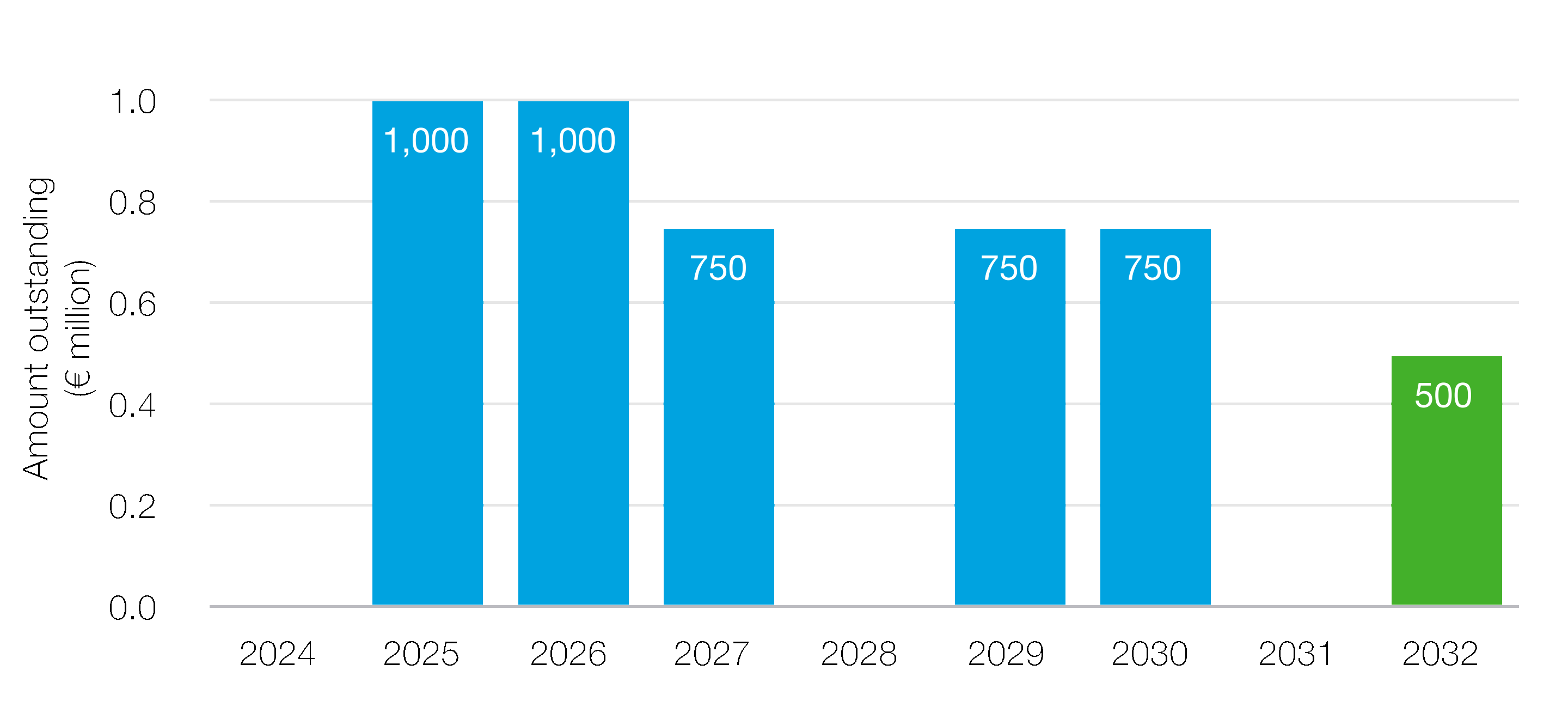
ASML ANNUAL REPORT 2023 | OTHER APPENDICES CONTINUED | STRATEGIC REPORT | CORPORATE GOVERNANCE | FINANCIALS | 335 | |
Appendix - Financing policy | ||||||
Cash return policy
ASML aims to distribute a dividend that will be growing over time, paid quarterly. On an annual basis, the Board of
Management, upon prior approval from the Supervisory Board, submits a proposal to the AGM with respect to the
amount of dividend to be declared with respect to the prior year, taking into account any interim dividend
distributions. The dividend proposal in any given year will be subject to availability of distributable profits, retained
earnings and cash, and may be affected by, among other things, our view of potential future liquidity requirements
including for investments in production capacity, working capital requirements, the funding of our R&D programs
and acquisition opportunities that may arise from time to time and by future changes in applicable tax and
corporate laws (for example plans of Dutch government to tax share buybacks).
ASML intends to declare a total dividend in respect of 2023 of €6.10 per ordinary share. Recognizing the interim
dividends of €1.45 per ordinary share paid in August 2023, November 2023 and February 2024, this leads to a
final dividend proposal to the General Meeting of €1.75 per ordinary share. The total 2023 dividend is a 5.2%
increase compared to the 2022 total dividend of €5.80 per ordinary share.
In addition to dividend payments, we intend to return cash to our shareholders on a regular basis through share
buybacks or capital repayment, subject to our actual and anticipated level of liquidity requirements and other
relevant factors.
On November 10, 2022, we announced a new share buyback program to be executed by December 31, 2025.
As part of this program, ASML intends to repurchase shares up to an amount of €12 billion, of which we expect a
total of up to 2 million shares will be used to cover employee share plans. ASML intends to cancel the remainder
of the shares repurchased. The new program has replaced the previous €9 billion share buyback program
2021-2023 which was completed on October 18, 2022. The share buyback program may be suspended,
modified or discontinued at any time.
In 2023, we repurchased 1,620,128 shares (2022: 8,538,787 shares) for a total consideration of 1,000.0 million
(2022: 4,639.7 million), all of which were purchased under the new program. In 2023, we canceled 3,553,815
shares (2022: 3,337,825 shares canceled), all of which were purchased under the 2021-2023 program.
Dividend per share history
(Dividend for a year is paid in the subsequent year, except interim)
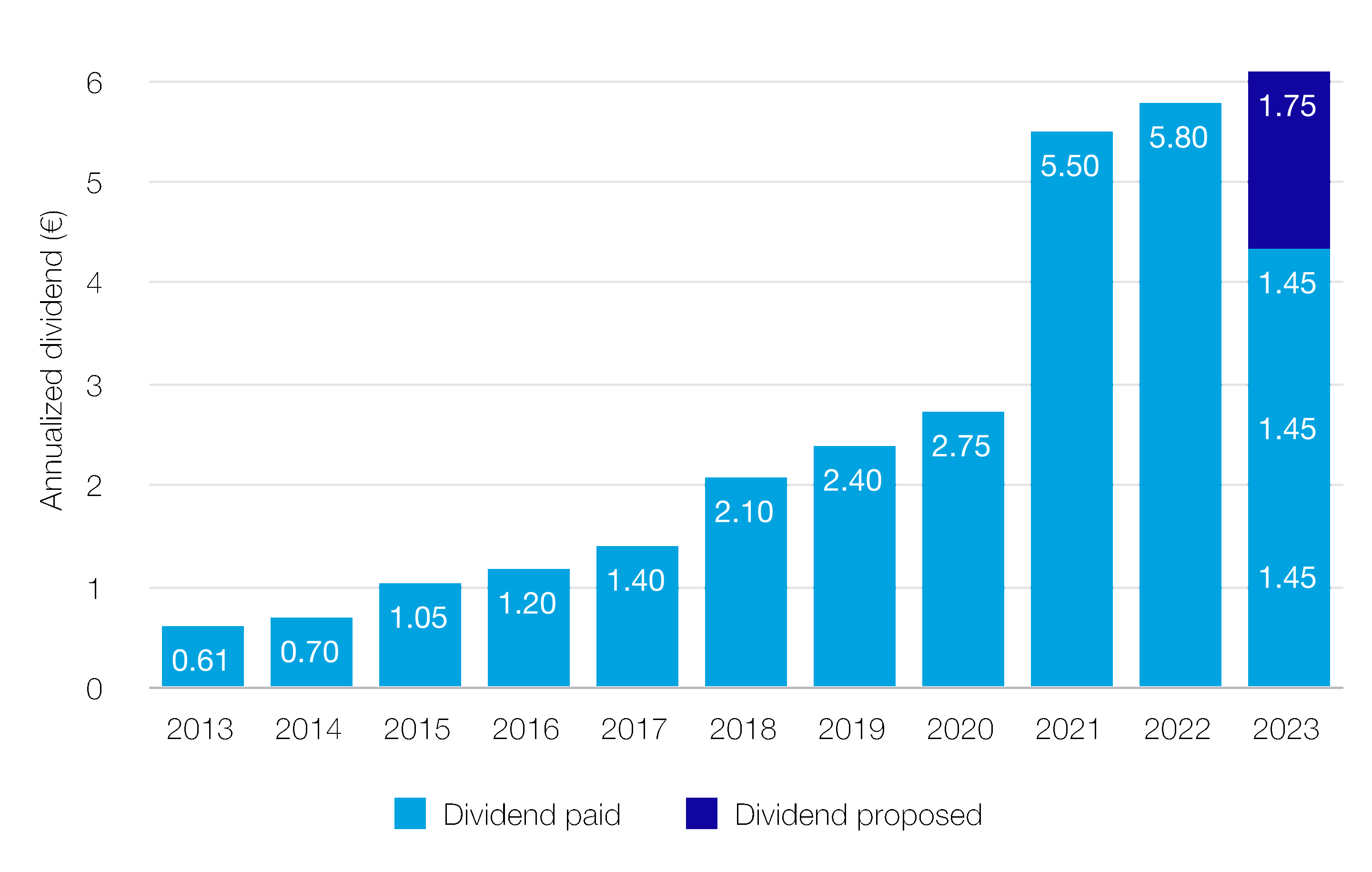
Cumulative cash returns (Cash return is cumulative share buyback + dividend) |
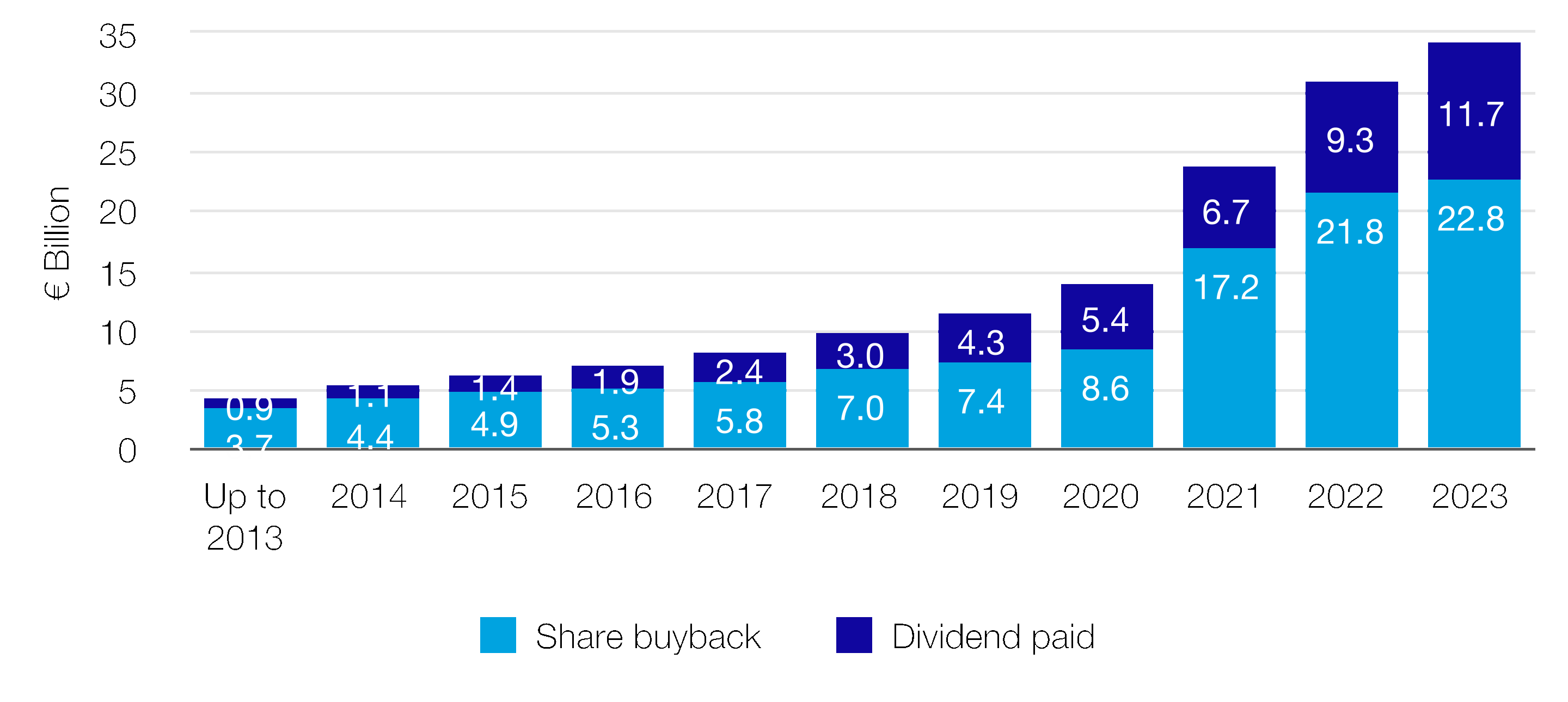
ASML ANNUAL REPORT 2023 | OTHER APPENDICES CONTINUED | STRATEGIC REPORT | CORPORATE GOVERNANCE | FINANCIALS | 336 | |
Appendix - Financing policy (continued) | ||||||
Our business is subject to direct and indirect regulations in each of the countries in which our customers or we do
business, and changes in various types of regulations can affect our business adversely. As our business has
expanded, we have become subject to increasing and increasingly complex regulation. Such regulations include
environmental regulation, workplace safety regulation, regulation under securities laws and stock exchange rules,
anti-corruption regulation, anti-trust regulation, national security regulations, trade restrictions, export controls
including licensing or authorization requirements, requirements to obtain authorizations for use of US technology and
for employees producing and developing such technology. The implementation of new, and changes in enforcement
of, safety, environmental or other legal requirements, including export controls and required permits and licenses or
changes in interpretation, implementation or enforcement of such regulations and requirements, could impact our
products, our manufacturing or distribution processes or location of sales and where we can deliver our products and
services, and could affect the timing of product introductions, the cost of our production, and products as well as
their commercial success in each market in which we operate. The impact of these regulations and enforcement
thereof could adversely affect our business, financial condition and our results of operations even where the specific
regulations do not directly apply to us or to our products.
ASML ANNUAL REPORT 2023 | OTHER APPENDICES CONTINUED | STRATEGIC REPORT | CORPORATE GOVERNANCE | FINANCIALS | 337 | |
Appendix - Government regulation | ||||||
Our ordinary shares are listed for trading in the form of registered ASML Nasdaq shares and in the form of registered
ASML Euronext Amsterdam shares. The principal trading market of our ordinary shares is Euronext Amsterdam
(trading symbol: ASML). Our ordinary shares also trade on Nasdaq (trading symbol: ASML).
Our shares listed on Nasdaq are registered with JPMorgan Chase Bank N.A., our New York Transfer Agent, pursuant
to the terms of the Transfer Agent Agreement between ASML and JPMorgan Chase Bank N.A. Our shares listed on
Euronext Amsterdam are held in dematerialized form through the facilities of Euroclear Nederland, the Dutch
centralized securities custody and administration system. The New York Transfer Agent charges shareholders a fee
of up to USD 5.00 per 100 shares for the exchange of our shares listed at Nasdaq for our shares listed at Euronext
Amsterdam and vice versa.
Dividends payable on our shares listed at Nasdaq are declared in euro and converted to US dollars at the rate of
exchange at the close of business on the date determined by the Board of Management. The resulting amounts are
distributed through the New York Transfer Agent and no charge is payable by holders of our shares listed at Nasdaq
in connection with this conversion or distribution.
Pursuant to the terms of the Transfer Agent Agreement, we have agreed to reimburse the New York Transfer Agent
for certain out of pocket expenses, including in connection with any mailing of notices, reports or other
communications made generally available by ASML to holders of ordinary shares. The New York Transfer Agent has
waived its fees associated with routine services to ASML associated with our shares listed at Nasdaq. In addition, the
New York Transfer Agent in consideration of its acting as Transfer Agent has agreed to make a contribution towards
covering certain expenses incurred by ASML in connection with the issuance and transfer of our shares listed on
Nasdaq. In the year ended December 31, 2023, the Transfer Agent contributed USD 0.6 million towards coverage of
expenses incurred by ASML (which mainly comprised of audit, advisory, legal and listing fees incurred due to the
existence of our share listing on Nasdaq).
ASML ANNUAL REPORT 2023 | OTHER APPENDICES CONTINUED | STRATEGIC REPORT | CORPORATE GOVERNANCE | FINANCIALS | 338 | |
Appendix - Offer and listing details | ||||||
Cash distributions, if any, payable in euros on our shares listed at Euronext Amsterdam may be officially transferred
by a bank from the Netherlands and converted into any other currency without being subject to any Dutch legal
restrictions. However, for statistical purposes, such payments and transactions must be reported by ASML to the
Dutch Central Bank. Furthermore, no payments, including dividend payments, may be made to jurisdictions subject
to certain sanctions, adopted by the government of the Netherlands, implementing resolutions of the Security Council
of the United Nations. Cash distributions, if any, on our shares listed at Nasdaq shall be declared in euros but paid in
US dollars, converted at the rate of exchange at the close of business on the date fixed for that purpose by the Board
of Management in accordance with the Articles of Association.
ASML ANNUAL REPORT 2023 | OTHER APPENDICES CONTINUED | STRATEGIC REPORT | CORPORATE GOVERNANCE | FINANCIALS | 339 | |
Appendix - Exchange controls | ||||||
We are subject to certain reporting requirements of the Exchange Act. As a “foreign private issuer”, we are exempt
from the rules under the Exchange Act prescribing certain disclosure and procedural requirements for proxy
solicitations, and our officers, directors and principal shareholders are exempt from the reporting and “short-swing”
profit recovery provisions contained in Section 16 of the Exchange Act, with respect to their purchases and sales of
shares. In addition, we are not required to file reports and financial statements with the SEC as frequently or as
promptly as companies whose securities are registered under the Exchange Act that are not foreign private issuers.
However, we are required to file with the SEC, within four months after the end of each fiscal year, an Annual Report
on Form 20-F containing financial statements audited by an independent accounting firm and interactive data
comprising financial statements in extensible business reporting language. We publish unaudited interim financial
information in accordance with US GAAP after the end of each quarter. We furnish this quarterly financial information
to the SEC under cover of a Form 6-K.
Documents we file with the SEC are publicly available on the SEC’s website, which contains reports and other
information regarding registrants that are required to file electronically with the SEC. The address of this website is
http://www.sec.gov.
ASML ANNUAL REPORT 2023 | OTHER APPENDICES CONTINUED | STRATEGIC REPORT | CORPORATE GOVERNANCE | FINANCIALS | 340 | |
Appendix - Documents on display | ||||||
Disclosure controls and procedures
As of December 31, 2023, ASML’s senior management conducted an evaluation, under the supervision and with the
participation of ASML’s CEO and CFO, of the effectiveness of the design and operation of ASML’s disclosure
controls and procedures (as defined in Rule 13a-15(e) under the Exchange Act). Based on such evaluation, ASML’s
CEO and CFO have concluded that, as of December 31, 2023, ASML’s disclosure controls and procedures are
effective in recording, processing, summarizing and reporting, on a timely basis, information required to be disclosed
by ASML in the reports that it files or submits under the Exchange Act and are effective in ensuring that information
required to be disclosed by ASML is accumulated and communicated to ASML’s management, including ASML’s
CEO and CFO, as appropriate to allow timely decisions regarding required disclosure.
Management’s report on internal control over financial reporting
ASML’s management is responsible for establishing and maintaining adequate internal control over financial
reporting, as defined in Rule 13a-15(f) under the Exchange Act. Under the supervision and with the participation of
ASML’s CEO and CFO, ASML’s management conducted an evaluation of the effectiveness of ASML’s internal
control over financial reporting as of December 31, 2023, based upon the framework in “Internal Control – Integrated
Framework” (2013) issued by the Committee of Sponsoring Organizations of the Treadway Commission. Based on
that evaluation, management has concluded that ASML’s internal control over financial reporting was effective as of
December 31, 2023, at providing reasonable assurance regarding the reliability of financial reporting and the
preparation of the Financial Statements for external purposes in conformity with US GAAP.
KPMG Accountants NV, an independent registered public accounting firm, have audited the Financial Statements as
included in this Annual Report and, have also audited and issued a report, included herein, on the effectiveness of
ASML’s internal control over financial reporting.
Changes in internal control over financial reporting
During the year ended December 31, 2023, there have been no changes in our internal control over financial
reporting that have materially affected, or are reasonably likely to materially affect, our internal control over financial
reporting.
Inherent limitations of disclosure controls and procedures in internal control over
financial reporting
It should be noted that any system of controls, however well-designed and operated, can provide only reasonable,
and not absolute, assurance that the objectives of the system will be met. In addition, the design of any control
system is based in part upon certain assumptions about the likelihood of future events.
ASML ANNUAL REPORT 2023 | OTHER APPENDICES CONTINUED | STRATEGIC REPORT | CORPORATE GOVERNANCE | FINANCIALS | 341 | |
Appendix - Controls and procedures | ||||||
Financial Calendar
April 17, 2024
Announcement of First Quarter results for 2024
April 24, 2024
Annual General Meeting
July 17, 2024
Announcement of Second Quarter results for 2024
October 16, 2024
Announcement of Third Quarter results for 2024
Fiscal Year
ASML’s fiscal year ends on December 31, 2024
Investor Relations
ASML Investor Relations supplies information regarding the company and its business opportunities to investors and
financial analysts. Our annual reports, quarterly releases and other information are also available on our website.
ASML ANNUAL REPORT 2023 | OTHER APPENDICES CONTINUED | STRATEGIC REPORT | CORPORATE GOVERNANCE | FINANCIALS | 342 | |
Appendix - Financial calendar and investor relations | ||||||
Corporate Headquarters
De Run 6501
5504 DR Veldhoven
The Netherlands
Mailing Address
P.O. Box 324
5500 AH Veldhoven
The Netherlands
Investor Relations
phone: +31 40 268 3938
email: investor.relations@asml.com
For additional contact information please visit asml.com
ASML ANNUAL REPORT 2023 | OTHER APPENDICES CONTINUED | STRATEGIC REPORT | CORPORATE GOVERNANCE | FINANCIALS | 343 | |
Appendix - ASML contact information | ||||||
Item | Form 20-F Caption | Location in this document | Page |
Part I | |||
1 | Identity of Directors, Senior Management and Advisors | Not applicable | |
2 | Offer Statistics and Expected Timetable | Not applicable | |
3 | Key Information | ||
B. Capitalization and Indebtedness | Not applicable | ||
C. Reasons for the Offer and Use of Proceeds | Not applicable | ||
D. Risk Factors | Risk - Risk factors | ||
4 | Information on the Company | ||
A. History and Development of the Company | Cover Page | ||
At a glance | |||
Appendix - Property, plant and equipment | |||
Appendix - Documents on display | |||
Appendix - ASML contact information | |||
B. Business Overview | At a glance | ||
Marketplace | |||
Note 2 Revenue from contracts with customers | |||
Note 3 Segment disclosure | |||
Appendix - Government regulation | |||
C. Organizational Structure | Corporate Governance - Compliance with Corporate Governance requirements - Corporate Information | ||
D. Property, Plant and Equipment | Note 13 Property, plant and equipment, net | ||
Appendix - Property, plant and equipment | |||
4A | Unresolved Staff Comments | Not applicable | |
5 | Operating and Financial Review and Prospects | ||
A. Operating Results | Financial performance - Performance KPIs | ||
B. Liquidity and Capital Resources | Financial performance - Performance KPIs | ||
Financing policy | |||
Consolidated Statements of Cash Flows | |||
Note 4 Cash and cash equivalents and short-term investments | |||
Note 16 Long-term debt and interest and other costs | |||
Item | Form 20-F Caption | Location in this document | Page |
Note 17 Commitments and contingencies | |||
Note 25 Financial risk management | |||
C. Research and Development, Patents and Licenses, etc. | Q&A with the CTO | ||
How we innovate | |||
Financial performance - Research and development costs | |||
Innovation ecosystem | |||
Information Security - Intellectual Property protection | |||
D. Trend Information | Long-term growth opportunities | ||
Risk - Risk factors | |||
E. Critical Accounting Estimates | Consolidated Financial Statements - Notes to the Consolidated Financial Statements - Note 1 General information / summary of general accounting policies | ||
6 | Directors, Senior Management and Employees | ||
A. Directors and Senior Management | Corporate Governance | ||
B. Compensation | Remuneration Report | ||
C. Board Practices | Corporate Governance | ||
Corporate Governance – Supervisory Board Report – Supervisory Board committees | |||
D. Employees | Social - Attractive workplace for all | ||
E. Share Ownership | Corporate Governance - AGM and share capital - Major shareholders | ||
Remuneration Report - Board of Management remuneration | |||
Note 20 Share-based compensation | |||
F. Disclosure of a Registrant’s Action to Recover Erroneously Awarded Compensation | Not applicable | ||
7 | Major Shareholders and Related Party Transactions | ||
A. Major Shareholders | Corporate Governance - AGM and share capital - Major shareholders | ||
B. Related Party Transactions | Note 26 Related parties and variable interest entities | ||
C. Interests of Experts & Counsel | Not applicable | ||
ASML ANNUAL REPORT 2023 | OTHER APPENDICES CONTINUED | STRATEGIC REPORT | CORPORATE GOVERNANCE | FINANCIALS | 344 | |
Appendix - Reference table 20-F | ||||||
Item | Form 20-F Caption | Location in this document | Page |
8 | Financial Information | ||
A. Consolidated Statements and Other Financial Information | Consolidated Financial Statements | ||
B. Significant Changes | Long-term growth opportunities | ||
Notes to the Consolidated Financial Statements | |||
9 | The Offer and Listing | ||
A. Offer and Listing Details | Appendix - Offer and listing details | ||
B. Plan of Distribution | Not applicable | ||
C. Markets | Appendix - Offer and listing details | ||
D. Selling Shareholders | Not applicable | ||
E. Dilution | Not applicable | ||
F. Expenses of the Issue | Not applicable | ||
10 | Additional Information | ||
A. Share Capital | Not applicable | ||
B. Memorandum and Articles of Association | Corporate Governance | ||
C. Material Contracts | None | ||
D. Exchange Controls | Appendix - Exchange controls | ||
E. Taxation | Appendix - Dutch and US taxation | ||
F. Dividends and Paying Agents | Not applicable | ||
G. Statement by Experts | Not applicable | ||
H. Documents on Display | Appendix - Documents on display | ||
I. Subsidiary Information | Not applicable | ||
J. Annual Report to Security Holders | Not applicable | ||
11 | Quantitative and Qualitative Disclosures About Market Risk | Note 16 Long-term debt and interest and other costs | |
Note 25 Financial risk management | |||
12 | Description of Securities Other Than Equity Securities | Appendix - Offer and listing details | |
Part II | |||
13 | Defaults, Dividend Arrearages and Delinquencies | None | |
14 | Material Modifications to the Rights of Security Holders and Use of Proceeds | None | |
15 | Controls and Procedures | Appendix - Controls and procedures |
Item | Form 20-F Caption | Location in this document | Page |
16A | Audit Committee Financial Expert | Supervisory Board Report - Supervisory Board committees - Audit Committee | |
16B | Code of Ethics | Governance - ESG integrated governance - Business ethics and Code of Conduct | |
16C | Principal Accountant Fees and Services | Appendix - Principal accountant fees and services | |
16D | Exemptions from the Listing Standards for Audit Committees | Not applicable | |
16E | Purchases of Equity Securities by the Issuer and Affiliated Purchasers | Note 22 Shareholders’ equity | |
16F | Change in Registrant’s Certifying Accountant | None | |
16G | Corporate Governance | Corporate Governance – Compliance with Corporate Governance requirements – US listing requirements | |
16H | Mine Safety Disclosure | Not applicable | |
16I | Disclosure Regarding Foreign Jurisdictions that Prevent Inspections | Not applicable | |
16J | Insider Trading Policies | Not applicable | |
16K | Cybersecurity | Risk - Risk factors | |
Governance - ESG integrated governance - Information security | |||
Part III | |||
17 | Financial Statements | Not applicable | |
18 | Financial Statements | Consolidated Financial Statements | |
19 | Exhibits | Exhibit index |
This document contains information required for the Annual Report on Form 20-F for the year ended December 31, 2023, of
ASML Holding NV. Reference is made to the Form 20-F cross reference table above. Only the information in this document
that is referenced in the Form 20-F cross reference table and this paragraph, this cross-reference table itself, the section
entitled Special note regarding forward looking statements and the Exhibits themselves shall be deemed to be filed with the
Securities and Exchange Commission for any purpose. Any additional information in this document which is not referenced
in the Form 20-F cross reference table, this paragraph, the section entitled Special note regarding forward looking
statements or the Exhibits themselves shall not be deemed to be incorporated by reference, shall not be part of the 2023
Annual Report on Form 20-F and is furnished to the Securities and Exchange Commission for information only.
This document also includes references to certain information contained on ASML's website: the information
contained on ASML's website is not incorporated by reference and does not form part of this document.
ASML ANNUAL REPORT 2023 | OTHER APPENDICES CONTINUED | STRATEGIC REPORT | CORPORATE GOVERNANCE | FINANCIALS | 345 | |
Appendix - Reference table 20-F (continued) | ||||||
This Annual Report contains statements
relating to our approach to and interim
progress on achieving certain energy
efficiency and greenhouse gas emissions
reduction targets, including our ambition to
achieve net zero emissions. References to
“net zero emissions” throughout this Annual
Report means reducing scope 1, 2 and 3
emissions to zero or to a residual level that is
consistent with reaching net zero emissions
at the global or sector level in eligible 1.5° C
scenarios or sector pathways and
neutralizing (or offsetting including through
carbon offsets) any residual emissions at the
net zero target date.
Unless otherwise indicated, information
contained in this Annual Report concerning
net zero emissions is based on our internal
Environmental Management System (EMS)
implemented to monitor energy use and
emissions, as well as publicly available
information, including the guidance from the
Greenhouse Gas Protocol for the calculation
of the emissions scope, the assessment
guidelines of the Task Force on Climate-
related Financial Disclosures (TCFD) and
certain market-based conversion factors.
Given such non-financial data is derived from
various sources and the way data is
processed differs across our operating
subsidiaries and departments, there is an
inherent degree of uncertainty in the
estimations of such data. You are cautioned
not to give undue weight to such data.
We appointed KPMG to provide limited
assurance over selected sustainability
metrics included in this Annual Report,
including our data and claims related to
carbon emissions, greenhouse gas
emissions reduction targets and energy
efficiency to the extent discussed in the
Assurance Report of the Independent
Auditor. Forward-looking information
concerning greenhouse gas emissions and
net zero emissions is subject to qualifications
and the uncertainties as set forth under –
Special note regarding forward looking
statements in this Annual Report.
ASML ANNUAL REPORT 2023 | OTHER APPENDICES CONTINUED | STRATEGIC REPORT | CORPORATE GOVERNANCE | FINANCIALS | 346 | |
Appendix - Special note regarding emission targets | ||||||
Name | Description | |
0-9 | ||
3TG | Tin, tantalum, tungsten and gold | |
3D NAND | A type of non-volatile flash memory in which the memory cells are stacked vertically in multiple layers. | |
A | ||
A&M | Access & Mobility | |
ABC compliance review | Anti-bribery and corruption compliance review | |
ADAS | Advanced driver-assistance systems | |
ADI | After development inspection | |
AFM | The Dutch Authority for the Financial Markets (Autoriteit Financiële Markten) | |
AGM | Annual General Meeting | |
AI | Artificial intelligence | |
AIoT | Artificial intelligence of things | |
Applied Materials Inc. | Semiconductor equipment company | |
ARCNL | Advanced Research Center for Nanolithography | |
ArF | Argon fluoride | |
ArFi | Argon fluoride immersion | |
ASC | Accounting Standards Codification | |
ASC 606 | Accounting Standards Codification revenue recognition | |
ASC 740 | Accounting Standards Codification provision for income taxes | |
ASML | ASML Holding NV and/or any of its subsidiaries and associates | |
ASML Foundation | An independent charity with strong ties to ASML that supports educational initiatives for disadvantaged 4- to 18-year-olds in regions where ASML operates. | |
ATP throughput | Throughput of the measured system (in wph) according to the acceptance test protocol | |
B | ||
BAPA | Bilateral advance pricing agreements | |
Big data | Extremely large data sets that may be analyzed computationally to reveal patterns, trends and associations. | |
Big Four accounting firms | Deloitte, Ernst & Young, KPMG and PricewaterhouseCoopers | |
BoM | Board of Management | |
BOM | Brabantse Ontwikkelings Maatschappij |
Name | Description | |
Bradley Curve | Illustrates the relationship between accidents and corporate culture | |
Brainport Eindhoven | A technology region in the south of the Netherlands comprising companies, educational institutions and governmental organizations. | |
BREEAM | Building Research Establishment Environmental Assessment Method | |
Brion | Brion Technologies, Inc. | |
C | ||
CAGR | Compound annual growth rate | |
Canon | Canon Kabushiki Kaisha | |
CAPEX | Capital expenditures, defined as additions in property, plant and equipment plus additions in intangible assets plus additions in right-of-use assets (operating and finance). | |
Capital resources | Financial, manufactured, intellectual, human, social and relationship, and natural elements employed to produce goods and services. | |
Carl Zeiss SMT | Carl Zeiss SMT GmbH | |
Cash conversion rate | An economic statistic in controlling that represents the relationship between cash flow and net profit. | |
CBO | Chief Business Officer | |
CCIP | Customer Co-investment Program | |
CCPA | California Consumer Privacy Act (US) | |
CCR % | Cash conversion rate percentage | |
CD | Critical dimension | |
CDP | The Carbon Disclosure Project | |
CEO | Chief Executive Officer | |
CERN | The European Organization for Nuclear Research | |
CFO | Chief Financial Officer | |
CGU | Cash-generating unit | |
CGU ASML | ASML excluding CGU Cymer Light Sources | |
CHIPS and Science Act | The Creating Helpful Incentives to Produce Semiconductors and Science Act of 2022 (CHIPS Act), signed into law in August 2022, designed to boost US competitiveness, innovation and national security. | |
CISO | Chief Information Security Officer | |
CIT | Corporate income tax | |
CLA | Collective labor agreement | |
Cleanroom | The central part of a wafer fab where wafers are processed and the environment is carefully controlled to eliminate dust and other contaminants. |
ASML ANNUAL REPORT 2023 | DEFINITIONS | STRATEGIC REPORT | CORPORATE GOVERNANCE | FINANCIALS | 347 | |
Definitions | ||||||
Name | Description | |
CMD | Capital Markets Day | |
CMO | Chief Marketing Officer | |
CMOS | Complementary metal–oxide semiconductor | |
CO2(e) | Carbon dioxide (equivalent) | |
Code | The Dutch Corporate Governance Code | |
Code of Conduct | Code of ethics and conduct | |
Company | ASML Holding NV | |
Computational lithography | The use of powerful algorithms and computer modeling of the manufacturing process to optimize reticle patterns by intentionally deforming them to compensate for physical and chemical effects that occur during lithography and patterning. | |
COO | Chief Operations Officer | |
COSO | Committee of Sponsoring Organizations of the Treadway Commission | |
COVID-19 | Coronavirus disease 2019 | |
CRC | ASML’s corporate risk committee | |
CRE | Corporate Real Estate department of ASML | |
CRMC | Capital Research & Management Company | |
CSPO | Chief Strategic Sourcing & Procurement Officer | |
CSRD | Corporate Sustainability Reporting Directive | |
CTO | Chief Technology Officer | |
Cyber Weerbaarheidscentrum Brainport | Foundation in the Brainport Eindhoven region that offers companies in the high-tech and manufacturing industry the opportunity to enhance their protection against cybercrime. | |
Cymer | Cymer Inc., Cymer LLC and its subsidiaries | |
D | ||
D&E | Development and engineering | |
DEFRA | Department for Environment, Food & Rural Affairs | |
Deloitte | Deloitte Accountants BV | |
D&I | Diversity and inclusion | |
DJSI | Dow Jones Sustainability Index | |
DRAM | Dynamic random-access memory | |
DUV | Deep ultraviolet |
Name | Description | |
DUV immersion fast shipment | A process that reduces some of the testing in our factory. Customer acceptance after the reduced factory acceptance test (FAT) is considered to be proven for established technologies with a history of successful customer acceptances after the site acceptance test (SAT). Transfer of control for these systems and recognition of revenue related to these systems has occurred upon delivery of the systems. | |
E | ||
EAC | Energy attribute certificates | |
EBIT | Earnings before interest and taxes | |
EHS | Environment, health and safety | |
EHS Competence Center | A group within ASML that defines EHS standards, gathers best practices and helps managers implement them. | |
EIM | External interface module | |
EMEA | Europe, the Middle East and Africa | |
EMS | Environmental management system | |
EPE | Edge placement error | |
EPS | Earnings per share | |
ERM | Enterprise risk management | |
ERP | Enterprise resource planning system | |
ESA | European Space Agency | |
eScan | ASML’s e-beam wafer inspection system family for targeted in-line defect detection. | |
ESG | Environmental, social and governance | |
ESG score | An integrated scoring system for environmental, social and governance (ESG) factors used in credit rating decisions. | |
ETR | Effective tax rate | |
EU | European Union | |
EU-IFRS | International Financial Reporting Standards as adopted by the European Union | |
EXE - EUV 0.55 NA | High numerical aperture, specifically a next-generation EUV lithography platform, also referred to as EUV 0.55 NA. | |
Euribor | Euro Interbank Offered Rate | |
Eurobond | A bond denominated in euros | |
Euroclear Nederland | The Dutch Central Securities Depository (Nederlands Centraal Instituut voor Giraal Effectenverkeer BV) | |
Euronext Amsterdam | Euronext Amsterdam NV |
ASML ANNUAL REPORT 2023 | DEFINITIONS CONTINUED | STRATEGIC REPORT | CORPORATE GOVERNANCE | FINANCIALS | 348 | |
Definitions (continued) | ||||||
Name | Description | |
EUV | A lithography technology that uses extreme ultraviolet (EUV) light with a wavelength of 13.5 nm – this is currently the cutting edge of lithography, enabling technology nodes of 16 nm and beyond. | |
EVP | Executive Vice President | |
EVP HR&O | Executive Vice President Human Resources & Organization | |
Exchange Act | US Securities Exchange Act of 1934 | |
F | ||
Fab | Semiconductor fabrication plant | |
FAQ | Frequently asked questions | |
Farmout suppliers | Our suppliers that we work with as co-investors | |
Fast shipment | A fast shipment process skips some of the testing in our factory and provides our customers with earlier access to wafer output capacity. When customer acceptance at FAT is not proven, this leads to a deferral of revenue recognition until SAT | |
FAT | Factory acceptance test | |
FDII | Foreign-derived intangible income | |
Feature | The elements that make up the pattern for a given layer of a microchip. | |
FFHA | Foundation for Hospital Art | |
Fitch | A leading provider of credit ratings, commentary and research for global capital markets. | |
Flash | A type of non-volatile memory used for storing and transferring information | |
Foundry | A contract manufacturer of logic chips | |
Fraunhofer | Applied research organization in Germany | |
FTEs | Full-time equivalents | |
FTSE4Good | Series of ethical investment stock market indices launched in 2001 by the FTSE Group. | |
G | ||
G-SEED | Green Standard for Energy and Environmental Design | |
GAAP | Generally accepted accounting principles | |
GDP | Gross domestic product | |
GDPR | General data protection regulation | |
Gemba Walk | The Gemba Walk is an opportunity for staff to stand back from their day-to-day tasks to walk the floor of their workplace to identify wasteful activities. | |
GeSI | Global e-Sustainability Initiative | |
GHG | Greenhouse gas | |
GPU | Graphics processing unit |
Name | Description | |
GQLTCS | General, quality, logistics, technology, cost and sustainability | |
GRI | Global Reporting Initiative | |
GRI standards | GRI sustainability reporting standards | |
H | ||
H2 | Molecular hydrogen | |
HDD | Hard disk drive | |
HMI | The brand name for ASML’s range of electron beam (e-beam) wafer inspection and metrology systems | |
Holistic lithography | Our approach to optimizing the entire microchip printing process and enabling affordable scaling in chip technology by integrating lithography systems with computational modeling and wafer metrology and inspection solutions to analyze and control the manufacturing process in real time | |
Horizon Europe Program | A public-private partnership that facilitates collaboration and strengthens the impact of research and innovation in developing, supporting and implementing EU policies while tackling global challenges | |
HR&O | Human Resources & Organization | |
HTSC | High Tech Systems Center | |
Huisman | Huisman Equipment BV | |
HVAC | Heating, ventilation and air conditioning | |
I | ||
IAS | International accounting standards | |
IBM | Installed base management | |
IC | Integrated circuit | |
ICT | Information and communication technology | |
ID2PPAC | Integration of processes and modules for the 2 nm node meeting Power Performance Area and Cost requirements | |
IDM | Integrated device manufacturer | |
IEA | International Energy Agency | |
IFRS | International financial reporting standards | |
IIRC | International Integrated Reporting Council | |
i-line | Light with a wavelength of 365 nm, generated by mercury vapor lamps and used in some lithography systems. | |
ILO | International Labor Organization | |
Imaging | The transfer of a pattern onto the photoresist on a wafer using light. | |
imec | Interuniversitair Micro-Elektronica Centrum |
ASML ANNUAL REPORT 2023 | DEFINITIONS CONTINUED | STRATEGIC REPORT | CORPORATE GOVERNANCE | FINANCIALS | 349 | |
Definitions (continued) | ||||||
Name | Description | |
Immersion lithography | A lithography technique that uses a pool of ultrapure water between the lens and the wafer to increase the lenses numerical aperture (ability to collect and focus light). This improves both the resolution and depth of focus for the lithography system. | |
Inclusion Index | The overall score related to the questions included in the we@ASML survey that specifically relate to ‘inclusion'. | |
Industrial site | Industrial buildings and offices combined at one location | |
Intel | Intel Corporation | |
Internal Control - Integrated Framework 2013 | Criteria issued by the Committee of Sponsoring Organizations of the Treadway Commission. | |
Internet of Things (IoT) | A network of physical objects embedded with sensors, actuators, electronics and software that allow the objects to collect and exchange data. | |
IP | Intellectual property | |
IPR | Intellectual property rights | |
IRA | Inflation Reduction Act of 2022 | |
I-REC | International renewable energy certificate | |
IRS | Internal Revenue Service of the United States | |
ISO | International Organization for Standardization | |
IT2 | IC Technology for the 2 nm Node (EU project) | |
J | ||
JG13+ | Job grade 13 and higher | |
JP Morgan Chase | US-based holder of our New York share register | |
K | ||
KLA-Tencor | KLA-Tencor Corporation | |
KPI | Key performance indicator | |
KPMG | KPMG Accountants NV | |
K-Reach | Act on the Registration and Evaluation of Chemicals in South Korea | |
KrF | Krypton fluoride | |
kt | Kilotonne or 1,000 tonnes (1 tonne = unit of mass equal to 1,000 kilograms) | |
kWh | Kilowatt-hour | |
L | ||
LED | Light-emitting diode |
Name | Description | |
LEED | Leadership in Energy and Environmental Design | |
LGBTQIA+ | Lesbian, gay, bisexual, transgender, queer, intersex, asexual and other identities | |
LIBOR | London Interbank Offered Rate | |
Lithography | Lithography, or photolithography, is the process in microchip manufacturing that uses light to pattern parts on a silicon wafer. | |
Logic | Integrated devices such as microprocessors, microcontrollers and GPUs. Also refers to companies that manufacture such devices. | |
LTI | Long-term incentive | |
LXP | Learning eXperience Platform | |
M | ||
MBA | Master of Business Administration | |
Memory | Microchips, such as NAND Flash and DRAM, that store information. Also refers to companies that manufacture such chips. | |
Metalektro | Multi-employer union plan is managed by PME (Stichting Pensioenfonds van de Metalektro). | |
Metrology | The science of weights and measures or of measurement. | |
mm | Millimeter (one thousandth of a meter) | |
MNP | Make Next Platform | |
Moody's | An American credit rating agency that provides corporate ratings. | |
MPS | Mature Products and Services | |
MSCI | Morgan Stanley Capital International | |
Mt | Megatonne, a metric unit equivalent to 1 million (106) tonnes, or 1 billion (109) kilograms | |
MW | Megawatt, a metric unit equivalent to one million (106) watt | |
N | ||
NA | Numerical aperture | |
NAND | A binary logical operator that gives an output when it receives one or no input; a composite of ‘NOT AND’. | |
Nanoscale | The nanoscopic scale (or nanoscale) usually refers to structures with a length scale applicable to nanotechnology, usually cited as 1–100 nanometers. | |
Nasdaq | Nasdaq Stock Market LLC | |
Net bookings | Net bookings include all system sales orders and inflation related adjustments, for which written authorizations have been accepted. | |
Net zero emissions | Reaching a state of net zero emissions involves: (a) reducing scope 1, 2 and 3 emissions to zero or to a residual level that is consistent with reaching net-zero emissions at the global or sector level in eligible 1.5°C scenarios or sector pathways and; (b) neutralizing any residual emissions at the net zero target date and any GHG emissions released into the atmosphere thereafter. |
ASML ANNUAL REPORT 2023 | DEFINITIONS CONTINUED | STRATEGIC REPORT | CORPORATE GOVERNANCE | FINANCIALS | 350 | |
Definitions (continued) | ||||||
Name | Description | |
NGO | Nongovernmental organization | |
NIIT | Net investment income tax | |
Nikon | Nikon Corporation | |
NL | The Netherlands | |
nm | Nanometer (one billionth of a meter) | |
Node | A stepping stone in the chipmaking industry’s roadmap for smaller features and more advanced microchips, describes and differentiates generations of semiconductor manufacturing technologies and the chips made with them. Nodes with 'smaller sizes' refer to more advanced technologies. | |
Non-GAAP | A measure of a company’s historical or future financial performance, financial position or cash flows that are not calculated or presented in accordance with the GAAP. | |
NPR | Non-product-related | |
NRE | Non-recurring engineering | |
NV | Naamloze vennootschap, referred to as NV | |
NXE - EUV 0.33 NA | A dual-stage stepper based on the NXT platform powered by an extreme UV-based light source at 13.5 nm wavelength to enable resolution of 13 nm half pitch and beyond, also referred to as EUV 0.33 NA. | |
NXE fast shipment | A process that reduces some of the testing in our factory. Final testing and formal acceptance then takes place at the customer site. This leads to a deferral of revenue recognition for those shipments until formal customer acceptance, but does provide our customers with earlier access to wafer output capacity. | |
NXT | An enhanced version of the original TWINSCAN system platform offering significantly improved overlay and productivity. | |
O | ||
OCI | Other comprehensive income | |
ODM | Original design manufacturer | |
OECD | Organization for Economic Co-operation and Development | |
OEM | Original equipment manufacturer | |
ONE | ASML’s Our New Enterprise program, which aims to improve our business processes and IT enterprise management system. | |
Operations employees | Customer support and Manufacturing and Supply Chain Management employees | |
Overlay | The layer-to-layer alignment of chip structures | |
P | ||
P&L | Statement of profit and loss | |
PAS | Philips Automatic Stepper |
Name | Description | |
Pattern fidelity | A holistic measure of how well the desired pattern is reproduced on the wafer. | |
Pattern fidelity control | A holistic approach to controlling the whole process of manufacturing advanced microchips in high volumes that aims to improve overall yields. It draws data from production equipment and computational lithography tools, analyzing it with techniques such as machine learning to provide real-time feedback. | |
Patterning | The process of creating a pattern in a surface to build microchips. | |
PCAOB | Public Company Accounting Oversight Board | |
PFAS | Perfluoroalkyl chemicals | |
PGP | Product generation process | |
Philips | Health technology company, headquartered in the Netherlands | |
PHLX Index | Semiconductor sector index | |
PIN3S | Pilot Integration of 3 nm Semiconductor Technology | |
PIs | Performance indicators | |
PME | Bedrijfstakpensioenfonds Metalektro | |
Preference shares foundation | Stichting Preferente Aandelen ASML | |
Preference share option | An option to acquire cumulative preference shares in our capital. | |
Q | ||
Q&As | Questions and answers | |
R | ||
R&D | Research and development | |
RBA | Responsible Business Alliance | |
RC | ASML’s Remuneration Committee | |
REACH | Registration, evaluation, authorization and restriction of chemicals | |
Recoverable amount | The greater out of an asset’s fair value less costs to sell and its value in use. | |
REMA | EUV reticle masking module | |
Remuneration Policy | The remuneration policy applicable to the Board of Management of ASML Holding NV | |
Reticle | A plate containing the pattern of features to be transferred to the wafer for each exposure. | |
ROAIC | Return on average invested capital | |
RoHS | Restriction of hazardous substances | |
S |
ASML ANNUAL REPORT 2023 | DEFINITIONS CONTINUED | STRATEGIC REPORT | CORPORATE GOVERNANCE | FINANCIALS | 351 | |
Definitions (continued) | ||||||
Name | Description | |
Standard & Poor's | A stock index of the United States that, due to its broad composition, gives a reliable picture of developments in the American stock market. | |
Samsung | Samsung Electronics Corporation | |
SAQ | Self-assessment questionnaire | |
Sarbanes-Oxley Act | The Sarbanes-Oxley Act of 2002 | |
SAT | Site acceptance test | |
SB | ASML’s Supervisory Board | |
SBTi | Science-Based Targets initiative | |
Scope 1 CO2e emissions | Direct carbon dioxide emissions from resources an organization owns or controls | |
Scope 2 CO2e emissions | Indirect carbon dioxide emissions due to the energy an organization consumes | |
Scope 3 CO2e emissions | All other indirect carbon dioxide emissions that occur in an organization’s value chain | |
Scope 3 CO2e emissions intensity | All other indirect carbon dioxide emissions that occur in an organization’s value chain expressed as a percentage of revenue or gross profit. | |
SDGs | United Nations' Sustainable Development Goals | |
SEC | The United States Securities and Exchange Commission | |
SEMI | Semiconductor Equipment and Materials International | |
SEMI S2 | SEMI S2 – Safety Guideline, Environmental, Health and Safety Guideline for Semiconductor Manufacturing Equipment, a set of performance-based EHS considerations for semiconductor manufacturing equipment. | |
SEMI S23 | SEMI S23 – Guide for Conservation of Energy, Utilities and Materials Used by Semiconductor Manufacturing Equipment, guidelines for collecting, analyzing, and reporting energy-consuming semiconductor manufacturing equipment utility data. | |
SG&A | Selling, general and administrative expenses | |
Shrink | The process of developing smaller transistors for more advanced chips. | |
SMART Photonics | Foundry for integrated photonic circuits | |
SoC | System on a chip | |
SPE Shareholders | A syndicate of three banks for the purpose of leasing ASML’s headquarters in Veldhoven. | |
SPIE | International society for optics and photonics | |
S&P | Sourcing and procurement | |
SSD | Solid-state drive | |
Springplank 040 | Social care organization in Eindhoven offering support and guidance to homeless people. | |
SSRA | Safety risk assessment |
Name | Description | |
Star level | Startups accelerated by Eindhoven Startup alliance / HighTechXL that show a multiple of investment of above 10 times. | |
STEM | Science, technology, engineering and mathematics | |
STI | Short-term incentive | |
STR | Stichting Technology Rating, a non-profit organization | |
Sub fab | Located under the cleanroom floor, the sub fab contains auxiliary equipment such as the drive laser. | |
SWOT | Strengths, weaknesses, opportunities and threats | |
T | ||
TAPES3 | Technology Advances for Pilot line of Enhanced Semiconductors for 3 nm | |
TC | ASML’s Technology Committee | |
TCC | Total Cash Compensation | |
TCFD | Task Force on Climate-related Financial Disclosures | |
TCJA | Tax Cuts and Jobs Act | |
Technical competence | The capabilities and spread of technical expertise among our people, and the extent to which they are embedded in our processes and operations. | |
Thales NL | Dutch branch of the international Thales Group | |
Throughput | The number of wafers a system can process per hour | |
Tier 1 (2, 3) supplier | Tier 1 suppliers are direct suppliers, whereas Tier 2, 3 and beyond refer to suppliers of our suppliers. | |
TJ | Terajoule (one trillion joules) | |
TNO | Nederlandse Organisatie voor Toegepast Natuurwetenschappelijk Onderzoek (Netherlands Organisation for Applied Scientific Research) | |
Transistor | A semiconductor device that is the fundamental building block of microchips | |
TSCA | Toxic Substances Control Act | |
TSMC | Taiwan Semiconductor Manufacturing Company Ltd. | |
TSR | Total shareholder return | |
TWINSCAN | ASML’s unique lithography system platform, with two complete wafer stages to allow one wafer to be mapped while another is being exposed, thereby enabling higher accuracy and throughput. | |
U | ||
UNGP | United Nations guiding principles | |
US | United States | |
US GAAP | Generally accepted accounting principles in the United States of America | |
US ITC | United States International Trade Commission |
ASML ANNUAL REPORT 2023 | DEFINITIONS CONTINUED | STRATEGIC REPORT | CORPORATE GOVERNANCE | FINANCIALS | 352 | |
Definitions (continued) | ||||||
Name | Description | |
V | ||
Vanderlande | A material handling and logistics automation company based in the Netherlands | |
VAT | Value-added tax | |
VIE | Variable interest entity | |
VLSI | VLSI Research Inc. | |
VNO-NCW | The Confederation of Netherlands Industry and Employers | |
VOC | Volatile organic compound | |
VP | Vice president | |
VPA | Volume purchase agreement | |
VPC | Volume parts contract | |
VR | Virtual reality | |
W | ||
WACC | Weighted average cost of capital | |
Wafer inspection | The process of locating and analyzing individual chip defects on a wafer | |
Wafer metrology | The process of measuring the quality of patterns on a wafer | |
Waste intensity | The total waste in millions of kilograms (excluding construction waste) divided by revenue (in millions of euros). | |
Wavelength | The distance between two peaks of a wave such as light. The shorter the wavelength of light used in a lithography system, the smaller the features the system can resolve. | |
Website | www.asml.com | |
WHT | Withholding tax | |
Works Council | Works Council of ASML Netherlands BV | |
wph | Wafers per hour | |
X | ||
XTAL | XTAL, Inc. | |
Y | ||
YieldStar | ASML’s diffraction-based wafer metrology platform | |
Z | ||
ZEISS | Carl Zeiss AG |
ASML ANNUAL REPORT 2023 | DEFINITIONS CONTINUED | STRATEGIC REPORT | CORPORATE GOVERNANCE | FINANCIALS | 353 | |
Definitions (continued) | ||||||
ASML Holding NV hereby certifies that it meets all of the requirements for filing on Form 20-F and that it has duly
caused and authorized the undersigned to sign this Annual Report on Form 20-F on its behalf.
ASML Holding NV (Registrant)
/s/ Peter T.F.M. Wennink
Name: Peter T.F.M. Wennink
Title: President, CEO and member of the Board of Management
Dated: February 14, 2024
/s/ Roger J.M. Dassen
Name: Roger J.M. Dassen
Title: Executive Vice President, CFO and member of the Board of Management
Dated: February 14, 2024
ASML ANNUAL REPORT 2023 | SIGNATURES | STRATEGIC REPORT | CORPORATE GOVERNANCE | FINANCIALS | 354 | |
Signatures | ||||||
Exhibit No. | Description | |
1.1 | ||
2.1 | ||
4.1 | ||
4.2 | ||
4.3 | ||
4.4 | ||
4.5 | ||
4.6 | ||
4.7 | ||
4.8 | ||
4.9 | ||
4.10 | 10.14 and 10.15, Carl Zeiss AG (Incorporated by reference to the Registrant’s Annual Report on Form 20-F for the fiscal year ended December 31, 2019)3 | |
4.11 |
Exhibit No. | Description | |
8.1 | ||
12.1 | ||
13.1 | ||
15.1 | ||
19.1 | ||
97.1 | ||
101.INS | XBRL Instance Document2 | |
101.SCH | XBRL Taxonomy Extension Schema Document2 | |
101.CAL | XBRL Taxonomy Extension Calculation Linkbase Document2 | |
101.DEF | XBRL Taxonomy Extension Definition Linkbase Document2 | |
101.LAB | XBRL Taxonomy Extension Label Linkbase Document2 | |
101.PRE | XBRL Taxonomy Extension Presentation Linkbase Document2 | |
104 | Cover Page Interactive Data File (formatted as inline XBRL and contained in Exhibit 101)2 |
1.Certain information omitted pursuant to a request for confidential treatment filed separately with the SEC.
2.Filed at the SEC herewith.
3.Portions of this exhibit have been omitted because (i) they are not material and (ii) the registrant customarily and actually treats the information as
private or confidential.
As of December 31, 2023, ASML is party to six outstanding debt instruments (senior notes) under which the total
amount of securities under each individual debt instrument does not exceed 10% of the total assets of ASML and its
subsidiaries on a consolidated basis. Pursuant to paragraph 2(b) (i) of the instructions to the exhibits to Form 20-F,
ASML agrees to furnish a copy of such instruments to the SEC upon request. ASML's senior notes are:
•3.500% ASML Holding NV Fixed Rate Senior Notes due 2025 (XS2631416950);
•1.375% ASML Holding NV Fixed Rate Senior Notes due 2026 (XS1405780963);
•1.625% ASML Holding NV Fixed Rate Senior Notes due 2027 (XS1527556192);
•0.625% ASML Holding NV Fixed Rate Senior Notes due 2029 (XS2166219720);
•0.250% ASML Holding NV Fixed Rate Senior Notes due 2030 (XS2010032378); and
•2.250% ASML Holding NV Fixed Rate Senior Notes due 2032 (XS2473687106).
ASML ANNUAL REPORT 2023 | EXHIBIT INDEX | STRATEGIC REPORT | CORPORATE GOVERNANCE | FINANCIALS | 355 | |
Exhibit index | ||||||










